
- About
- Library
-
Essays
Eric Dinerstein William C. Young
- Plants
- Birds
FIELD NOTES FOR ANTARCTICA, SOUTH GEORGIA, THE FALKLAND ISLANDS, AND USHUAIA AND BUENOS AIRES, ARGENTINA
January 6 to 27, 2016
William Young
INTRODUCTION
ITINERARY
BIRD FAMILIES
BIRD FAMILIES SEEN ONLY IN BUENOS AIRES
MAMMALS
OTHER FLORA AND FAUNA
GENERAL COMMENTS
SIGHTINGS LIST - ANTARCTICA-SOUTH GEORGIA-FALKLANDS-USHUAIA
BIRD SIGHTING LIST - BUENOS AIRES
INTRODUCTION
In late 2014, I heard about a 2016 trip to Antarctica, South Georgia, and the Falklands being run by Victor Emanuel Nature Tours (VENT). The leader would be Michael O'Brien, who is the son of my first cousin Barbara. I go to the O'Brien's each year for Christmas brunch, and I spoke with Michael and his father Paul about the possibility of going. Michael's brother John, who lives in Houston, also thought of going. I had to make the decision by early April, and I put down a deposit. Paul did also, and we planned to room together. Later, John decided to go, so the trip would involve four members of our family.
Michael, John, and Paul are all extraordinarily skilled birders. Michael is a tour leader for VENT, and the VENT contingent of about 10 people would be on the boat the Sea Adventurer with about a hundred other passengers. The trip was run by the tour company Zegrahm. The name comes from the letters of the names of the founders, one of whom was Peter Harrison, the author of the pioneering bird reference book Seabirds. The company has been in business since 1990. I found out during the trip that Peter Harrison is revising his Seabirds guide, in part because of the substantial number of taxonomic changes to seabird species since the original guide was published in 1983.
At Christmas brunch in 2015, I talked with Paul and Michael about our trip, which would start in less than two weeks. John was not at the brunch, but he would join Paul and me in Buenos Aires where we would be spending a couple of days before flying south to Ushuaia on the southern tip of South America. Michael would not be on the Buenos Aires trip and was flying directly to Ushuaia.
On January 5, I left home in Arlington, Virginia, and flew to Atlanta, where I met up with Paul, who had flown there from Baltimore. We took an overnight flight to Buenos Aires. A lot of other people on our flight were heading to Antarctica. We were met at the Buenos Aires airport by Hernan Gõni from VENT, who would be one of our guides in Buenos Aires. The other guide was Emiliano Garcia Loyola, and both were very knowledgeable birders and naturalists (and nice people). Hernan took us to the Hotel Lafayette in downtown Buenos Aires. After we got settled and had lunch, we got into a bus and went to the Reserva Costnera Sur (South Beach Reserve) from 2 to 7 p.m. The South Beach Reserve was 2.5 miles from our hotel and remarkably birdy. We probably walked less than a half a mile, because we were constantly stopping to look at birds. This public park had a lot of joggers and people with baby carriages. The following day, we drove 45 minutes to the Otamendi Nature Reserve where we stayed from 7:45 a.m. to 5 p.m., with a stop in the middle to drive to a facility where we had lunch. Otamendi has dusty dirt roads, which was unpleasant when cars drove by and stirred up the dust. It has a combination of forests and wetlands, and as on the previous day, we saw an excellent array of species.
The temperatures in Buenos Aires were in the mid-80s, which must have been unusually hot, because a lot of news programs had stories about what people were doing to cope with the heat. The morning of the 8th was cooler and drizzly as we boarded a bus to go to the airport to catch our flight to Ushuaia. We arrived in Ushuaia in the early afternoon and were met with sunny weather that was intensely windy. We got on another bus and drove the short distance from the airport through town to Arakur Resort, which was on a hill that overlooked Ushuaia. The backdrop with the mountains and glaciers was beautiful. We met up with Michael, had a late lunch, and then took the bus to town for a quick walk. We did not have much time, because we needed to be back for a welcoming reception and dinner sponsored by Zegrahm. We spent about an hour walking along the water before heading back.
The following day, we took a bus to Tierra del Fuego National Park. While there, I went to a small post office where I bought some bird stamps for my collection. We were running late on our trip to Tierra del Fuego, because we were told we needed to be back at the ship by 4 p.m. in order to take off on our expedition at 6 p.m. The park was about 45 minutes from the ship, and we were still there at 4. It turned out that there was no need to rush, because the winds were blowing at 60 knots, with gusts above 80. We could not leave the port, both for fear of what could happen to the ship, but more for what could happen to the port facilities if the ship were being blown around. We were not on one of the large cruise ships that could hold more than 600 passengers. Our ship held about 110, and it also had 75-80 staff on board. We ended up being anchored in the port for an unscheduled 27 additional hours, during which time we went for a walk in the wind in Ushuaia, going in a big loop around the water. To use the words of the captain, we finally "escaped" the harbor at 9 p.m.
The next day featured a spectacular array of seabirds, with thousands of albatrosses and shearwaters. There were also a lot of prions, petrels, storm-petrels, and other species. Before the trip, I bought a guide to Antarctic wildlife that talks about typical trips from Ushuaia to Antarctica. The book divides the trip into three sections. The water immediately south of Ushuaia is called the Beagle Channel, named after Darwin's ship. The channel stretches for about 150 miles. South of that is the Drake Passage, which runs all the way to the South Shetland Islands of Antarctica. We did not take this route on the way down. Instead we veered northeast and headed toward the Falkland Islands, which are about 420 miles away. Because of the delay in leaving port and the strong headwinds we encountered, we were behind schedule. We also were slowed because one of the motors on the ship had developed problems a few weeks before our expedition and was running at only about 90 percent of capacity. Had we tried to go fast to make up time, we would have run the risk of blowing that engine entirely. So we ended up making only one zodiac landing in the Falklands on Saunders Island. Zodiacs are large rubber rafts with an outboard motor. Each one can accommodate about eight to ten people, plus the driver who stands in the back. In calm water, they are capable of speeds of up to 20 knots. (One knot = 1.15 mph.) We could not go nearly that fast in the zodiac around the Falklands, where the water was choppy. It was not uncommon for the zodiac to bounce and send a wall of water on some or all of its passengers. The wind at Saunders Island was fierce, and while we were on the beach, we got sandblasted. The wind was not as intense when we got off the beach and hiked up a grassy hill.
From the 13th through the 15th, we travelled southeast from the Falklands to South Georgia Island, a distance of close to 1,000 miles. In the early evening of the 15th, we reached Shag Rocks, which are six small islands 150 miles west of the main island of South Georgia. True to their name, they were covered with thousands of South Georgia Shags. We also started to see our first icebergs, including one really large one that was right behind Shag Rocks. At this point, I began to feel as if I were in the Antarctic region.
On the 16th, we made our first landings on South Georgia. In the morning, our ship passed both Bird Island and Willis Islands, which have many glaciers. In the late afternoon, we went to Salisbury Plain, which is an extraordinary wildlife area. It has hundreds of thousands of King Penguins and enormous numbers of Antarctic Fur Seals. The weather was overcast with snow flurries. Michael brought the VENT group up a treacherous grassy hill to a lookout over a lake. Paul fell on the way up, so I decided I did not want to go and instead stayed on level ground with the penguins. We returned to the ship, and after dinner, we got back into the zodiacs and went to Prion Island. The weather was still overcast with light snow. We ascended a long boardwalk to visit an area where Wandering Albatrosses and other seabirds nest.
The next day was sunny, and we went by zodiac to Grytviken. A lot of the places have Norwegian names because of the prominence of Norwegians in whaling during the early 20th century. Grytviken has a small number of buildings, including a museum, a church, and a post office. It also has a small graveyard that contains the grave of the explorer Ernest Shackleton as well as the ashes of his comrade Frank Wild. I went to the post office and bought more than $50 worth of cards and bird stamps. I was there before other people from our group came, so I was able to spend 20 minutes alone with the man in the post office to see everything he had for sale.
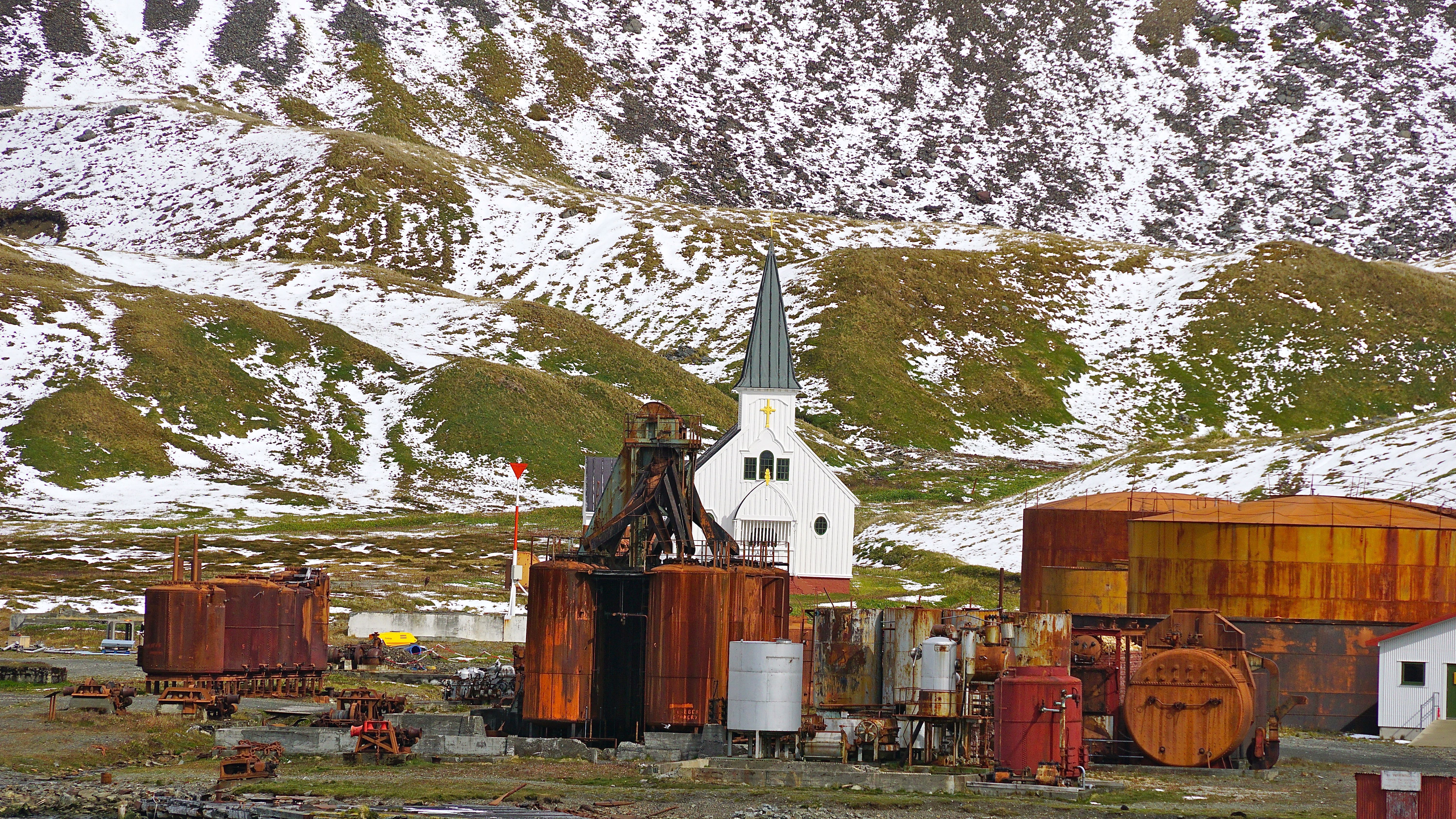 Grytviken - Photo by William Young
Grytviken - Photo by William Young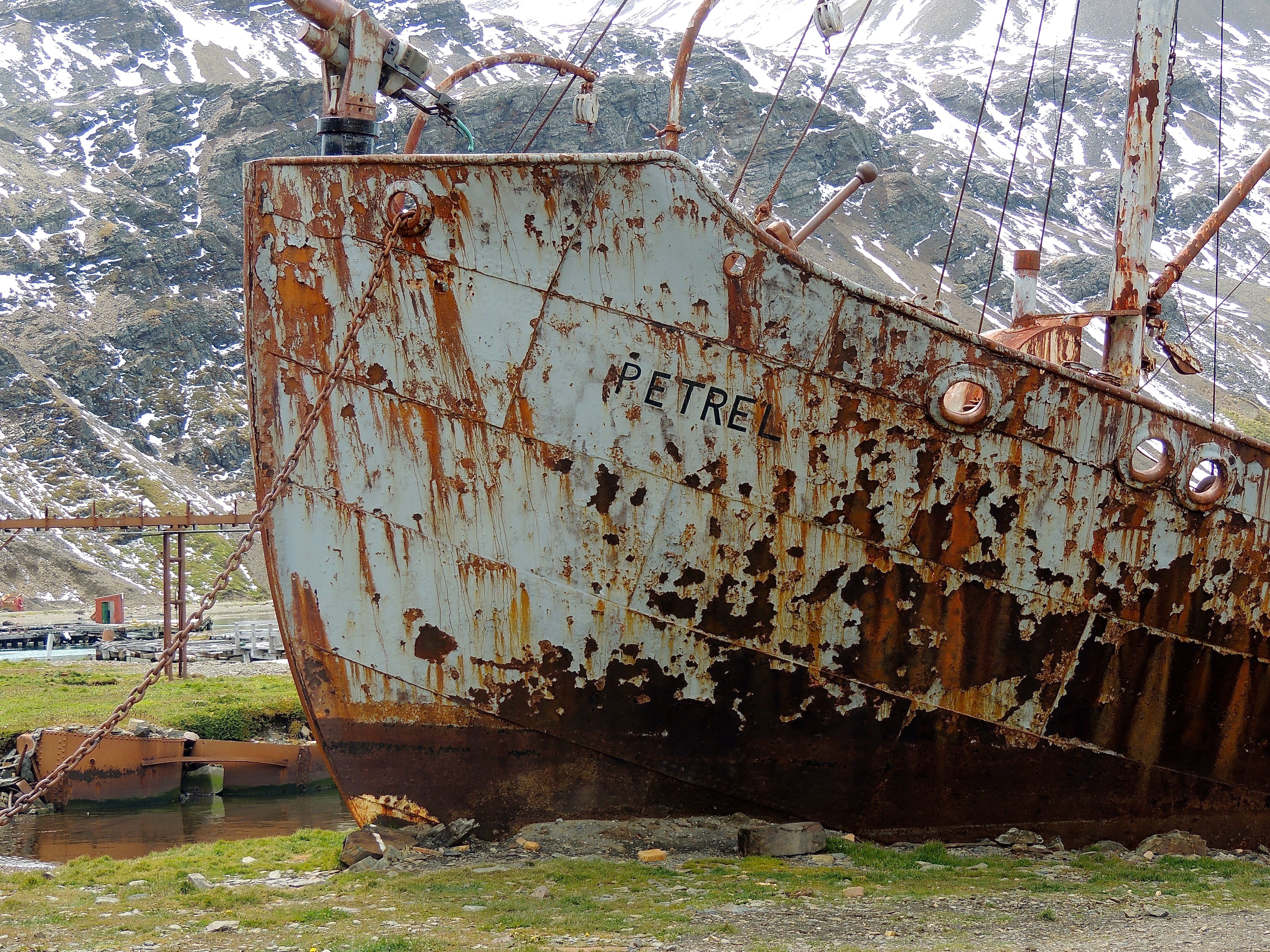 Grytviken - Photo by William Young
Grytviken - Photo by William YoungAfter lunch, the ship went to a small settlement called Stromness where people could hike a mile to a waterfall. Upon reaching the waterfall, people could either return to the zodiac or continue along a much longer route that is the same one Shackleton took when he was on South Georgia. I decided to forego both the waterfall and the Shackleton hike, and instead, stay on the boat and try to absorb the incredible scenery. This also gave me a chance to recharge my batteries a bit before the following day when we would be visiting a King Penguin colony. Once the waterfall people returned, the ship repositioned itself a few miles away to pick up the people who were doing the long hike. Apparently, these hikers arrived at their destination about an hour ahead of schedule, and the ship had not yet arrived. Before it did, some of the hikers wondered whether they might have a Shackleton experience that was much more realistic than they anticipated.
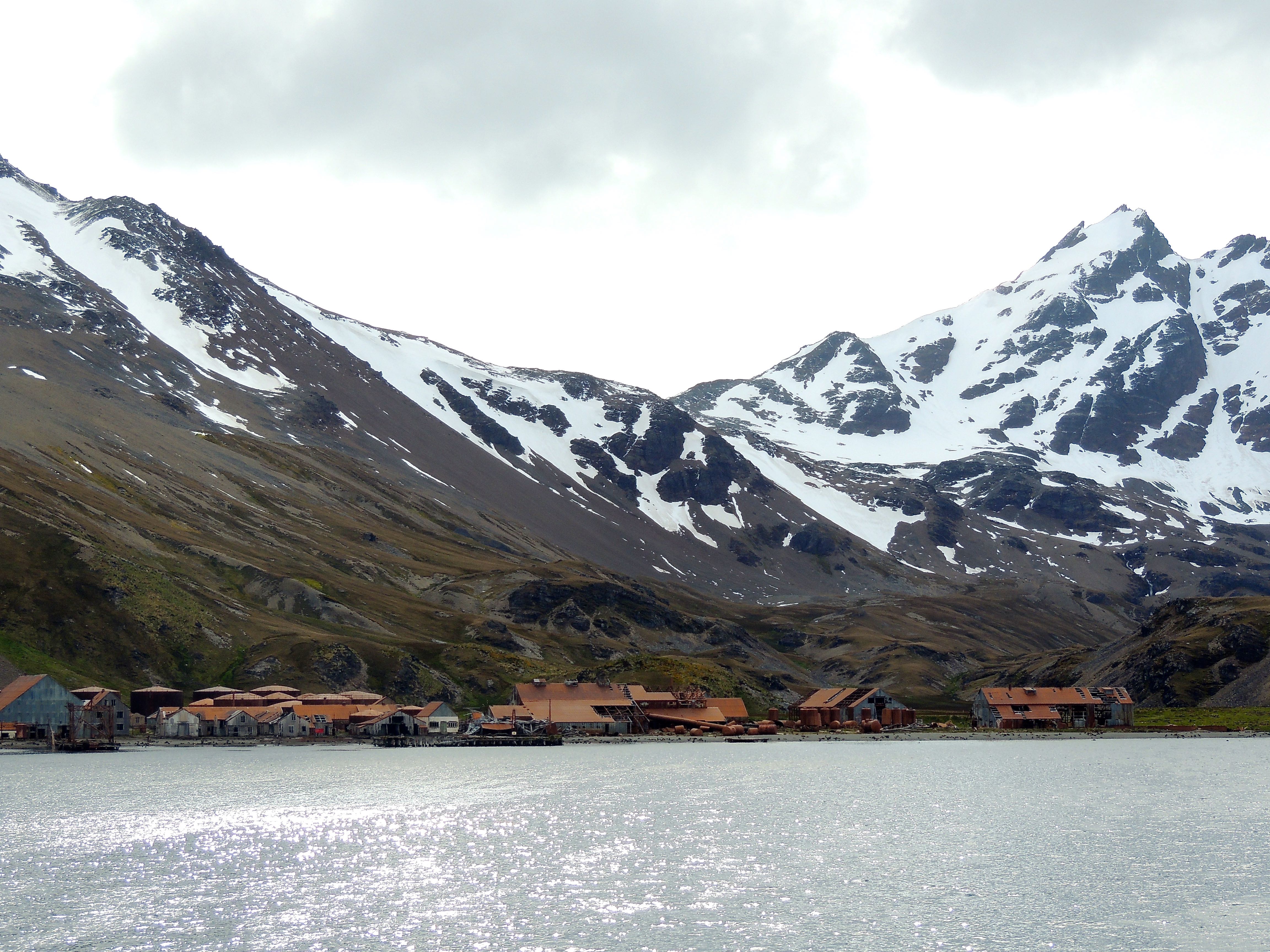 Stromness - Photo by William Young
Stromness - Photo by William YoungThe 18th was a magical day. We started by taking a zodiac to Saint Andrews Bay, which has 400,000 to 500,000 King Penguins. There is all sorts of other wildlife there, and when you add in the mountains and glaciers in the background, it is one of the most extraordinary wildlife experiences I have ever had. In the afternoon, we made our final landing in South Georgia at Gold Harbour, which has King Penguins, Elephant Seals, and lots of other wildlife on the beach.
From the 19th to the 21st, we travelled through the Scotia Sea from South Georgia to the Antarctic Peninsula, a journey of about 375 miles. In the open ocean far from land, the number of seabirds diminished. On the evening of the 21st, we approached Elephant Island, which is about 150 miles north of the Antarctic Peninsula. The geologist on board said that one does not have to be on the peninsula to be in Antarctica — Japan is not on the Asian mainland, but people in Japan are considered to be in Asia. We were near a place called Point Wild, where a bust of a Chilean military figure has been erected. It looks very out of place. Michael and Paul decided they did not want to take a zodiac ride to get closer to Point Wild, but John and I went. Because it was getting dark, I decided that there was no point in bringing my camera. John brought his, but because the seas were so rough, we got splashed with a lot of salt water. Some water got onto his camera and fried the motor. Fortunately, he was able to borrow another camera body for the remainder of the trip from Michael. My glasses got covered with salt water, and the light was too dim to see much. I had to crouch in the zodiac which was bouncing in the rough seas, and the zodiac driver did not maneuver the craft around so that everyone on both sides could see Point Wild. When in the zodiacs, we were, as always, wearing waterproof trousers, boots, and coats, but that did not make getting soaked any more pleasant.
On the 22nd, we finally walked on Antarctica. That evening, we landed at Brown Bluff. I have friends in Maryland who had given me a small plastic penguin as a bon voyage gift. I brought it with me to Brown Bluff, placed it on a rock, and took some photos of it with Adelies in the background. This was our first colony of Adelie Penguins. We were lucky the following day, because the weather was sunny, and the water was dead calm for one of the few times on the expedition. We started by going to Paulet Island, which is within a few miles of the Antarctic Peninsula. It has a large Adelie Penguin colony as well as many other nesting seabirds. This was by far my favorite destination in Antarctica. That afternoon, we took advantage of the calm waters to take a zodiac ride around the Weddell Sea, where we saw whales, seals, and other wildlife at close range.
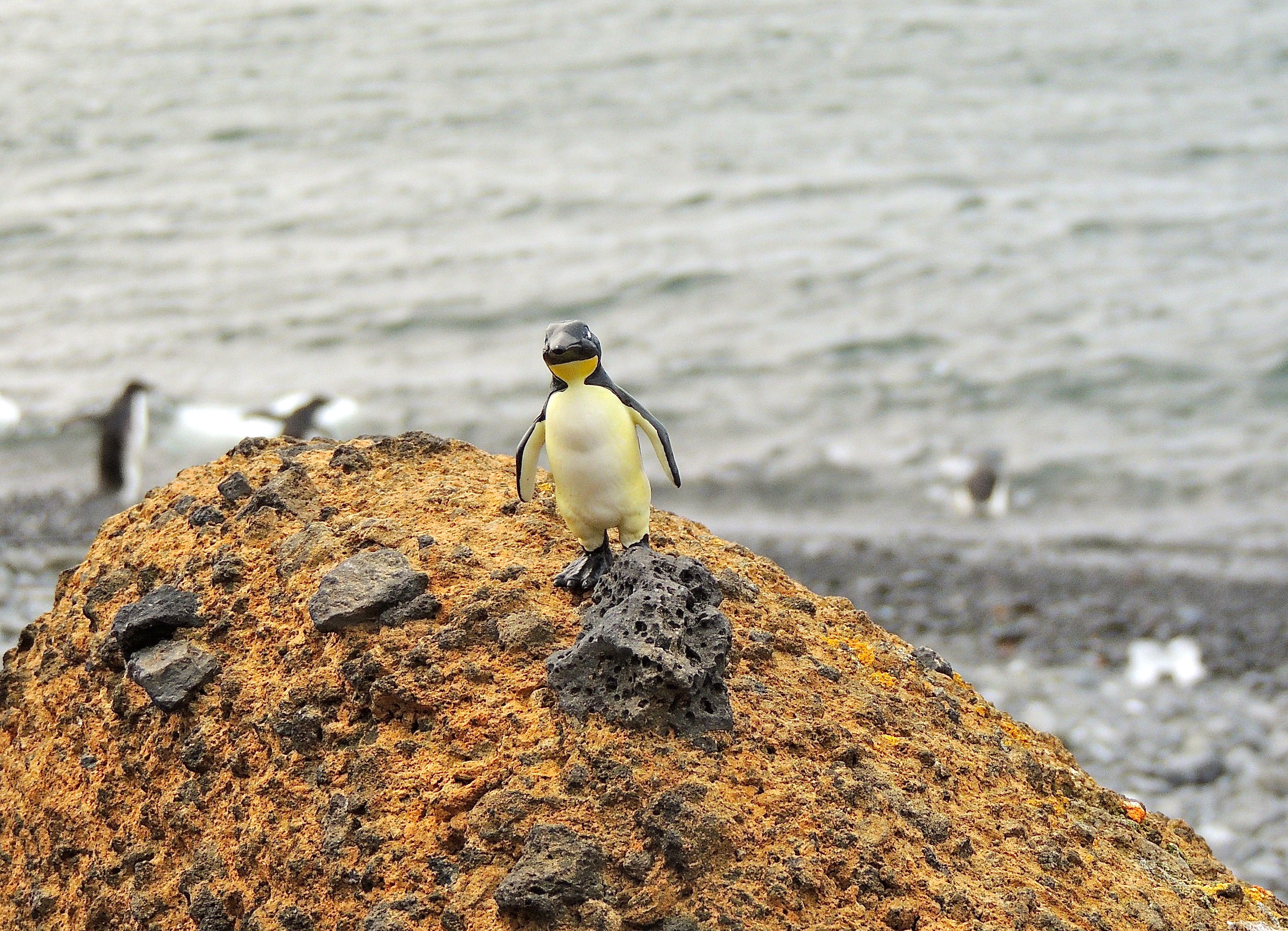 Penguin Toy in Antarctica - Photo by William Young
Penguin Toy in Antarctica - Photo by William Young Paulet Island - Photo by William Young
Paulet Island - Photo by William YoungThe calm seas did not last. The next day, the people on the ship were supposed to be split into two groups, with one group going to Hardy Cove and the other going to Fort Point. Both of these destinations are in the South Shetland Islands. I wanted to go to Fort Point to see the Chinstrap Penguin colony, but I was assigned to the group scheduled to go to Hardy Cove. Zodiacs were supposed to shuttle people between the two locations so that everyone could see both. I was on the first zodiac that landed at Hardy. The seas were rough, and I did not want to stay there. When the second zodiac arrived, I got on and went to Fort Point. The seas soon became so rough that all further zodiac trips between the islands were cancelled. John was in the second zodiac, so he never got to Fort Point. The water had become choppy, and it was the choppiest next to our ship where we needed to get off. Our zodiac driver was knocked down as she reached for the dock to secure us. This was our final zodiac ride of the expedition, and I was not sorry that we would not have any more.
We spent the remainder of the expedition heading back to Ushuaia. As we got through the Drake Passage and into the Beagle Channel, the water became calmer. Our final evening at sea was clear and pleasant. We could see Tierra del Fuego to our right and the mountains of Chile to our left. We arrived at the dock just before midnight on the evening of the 26th. My flight back to Buenos Aires was at 1:45 the next day. The people on the ship were given the option of going to a museum or hiking up a glacier. Because I had already packed my hiking boots and did not feel like being tired and sweaty before my long trip home, I decided to spend the final morning at the museum and walking around Ushuaia. The museum was in an old prison, and a lot of the artwork was displayed in tiny rooms that used to be the cells. Much of it had a penguin theme, ando I took a lot of photos. One can imagine how awful it must have been to be incarcerated in these tiny (8' x 8') cells 100 years ago with no heating in the winter. We then walked around the city for awhile, and I picked up a little metal charm with an albatross on it that was being given away by a local jewelry store. We then got in the bus and went to the airport.
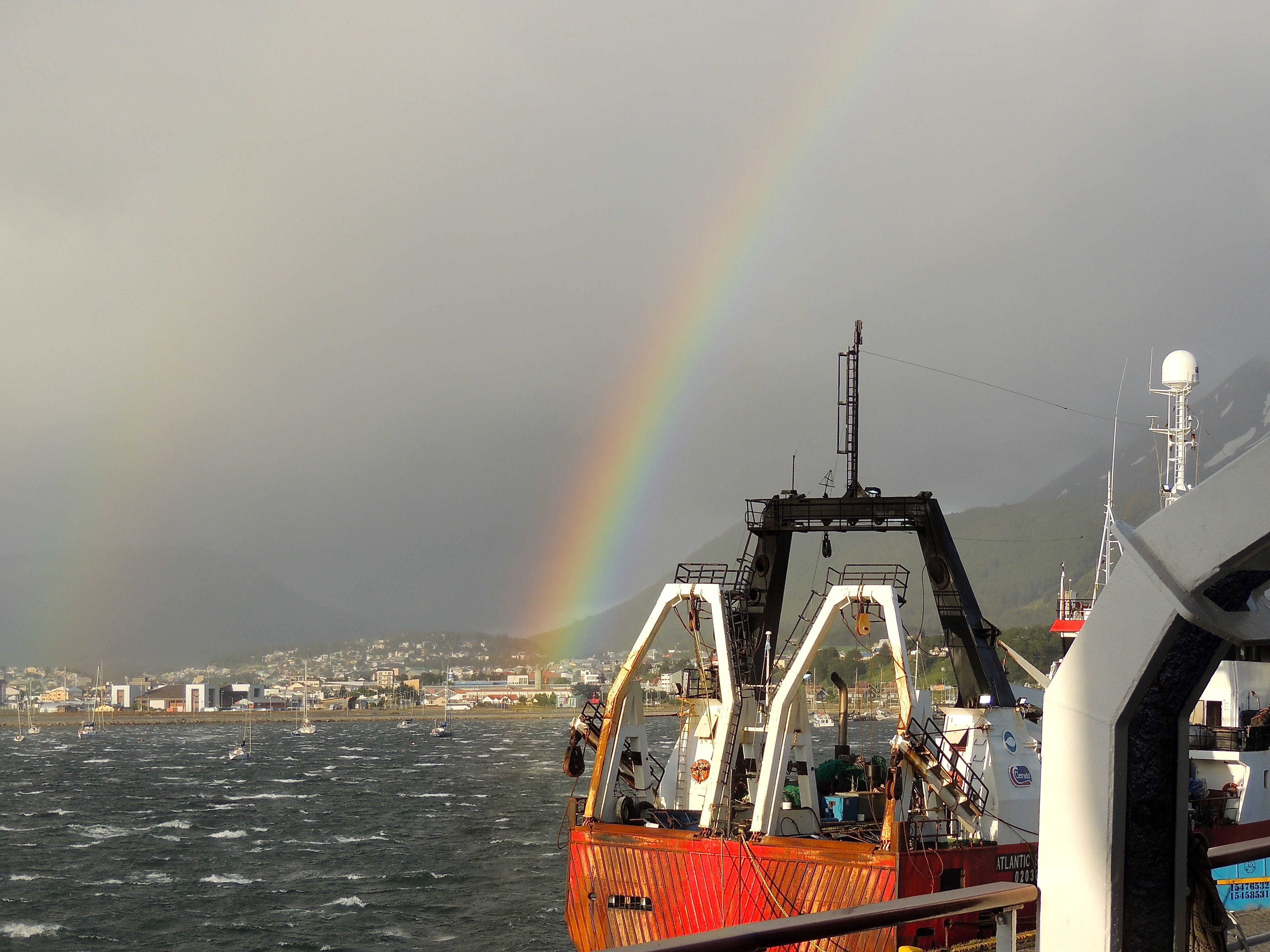 Ushuaia - Photo by William Young
Ushuaia - Photo by William Young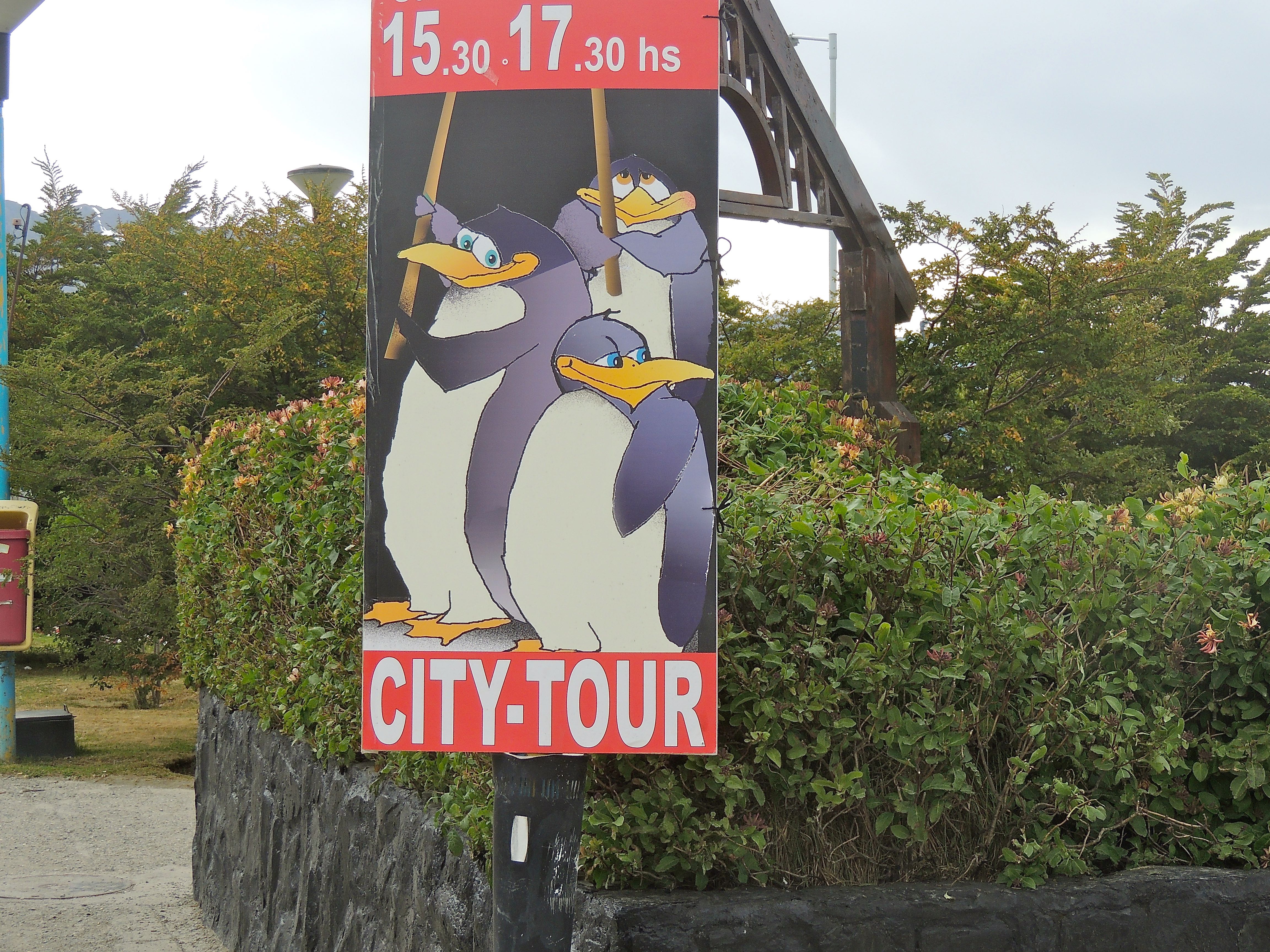 Ushuaia - Photo by William Young
Ushuaia - Photo by William Young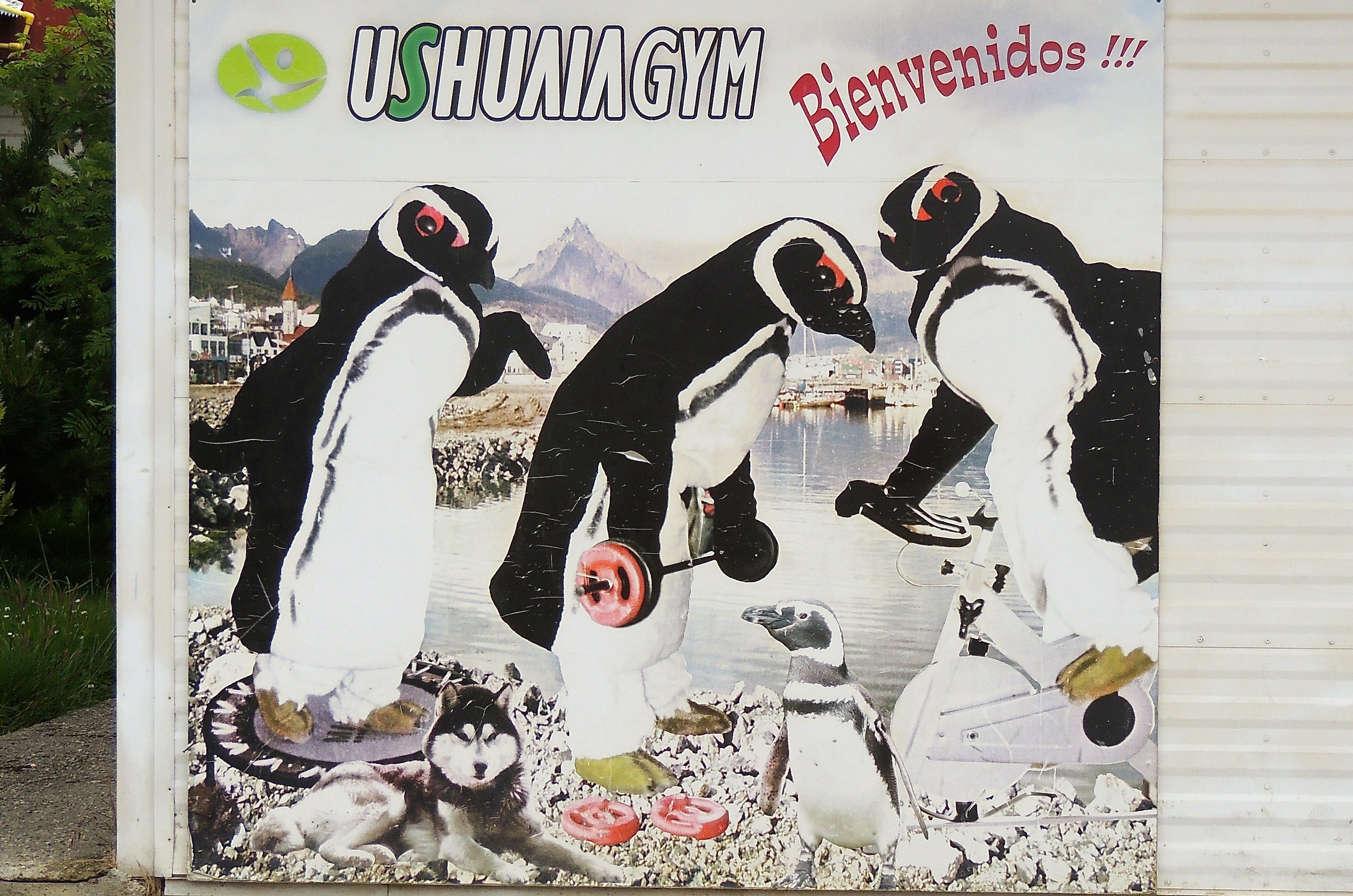 Ushuaia - Photo by William Young
Ushuaia - Photo by William Young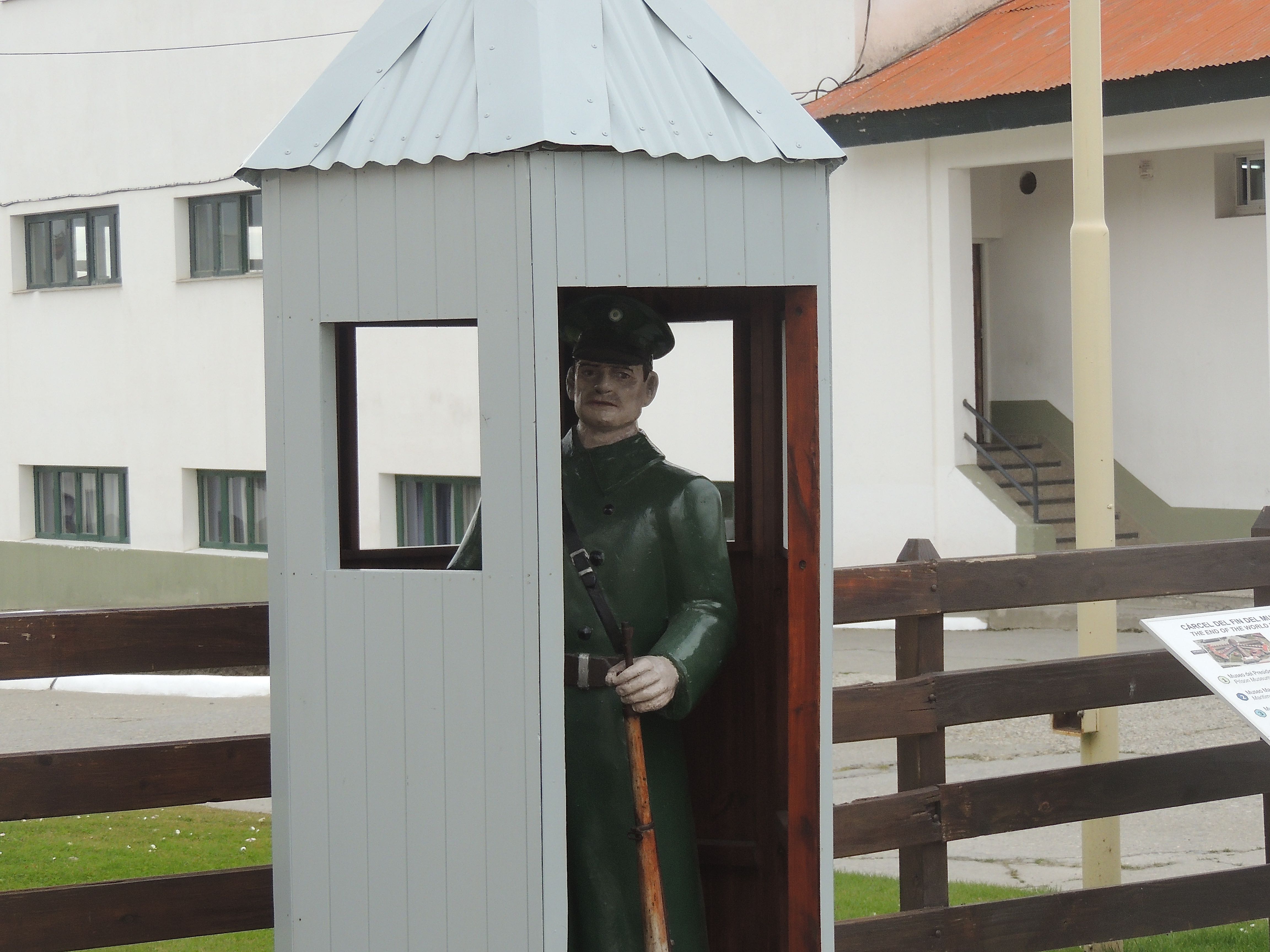 Prison Museum - Photo by William Young
Prison Museum - Photo by William Young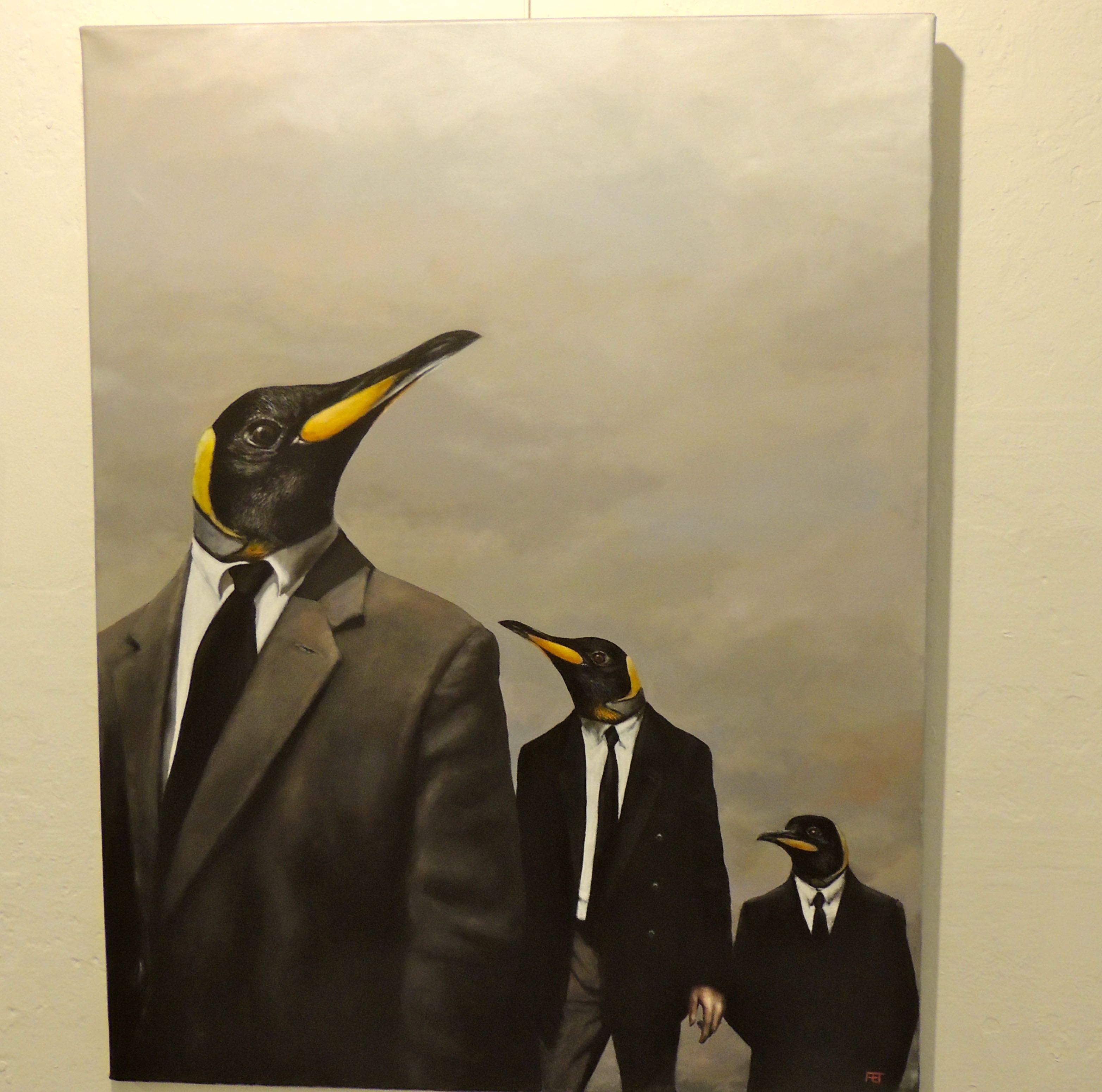 Penguin Art - Photo by William Young
Penguin Art - Photo by William Young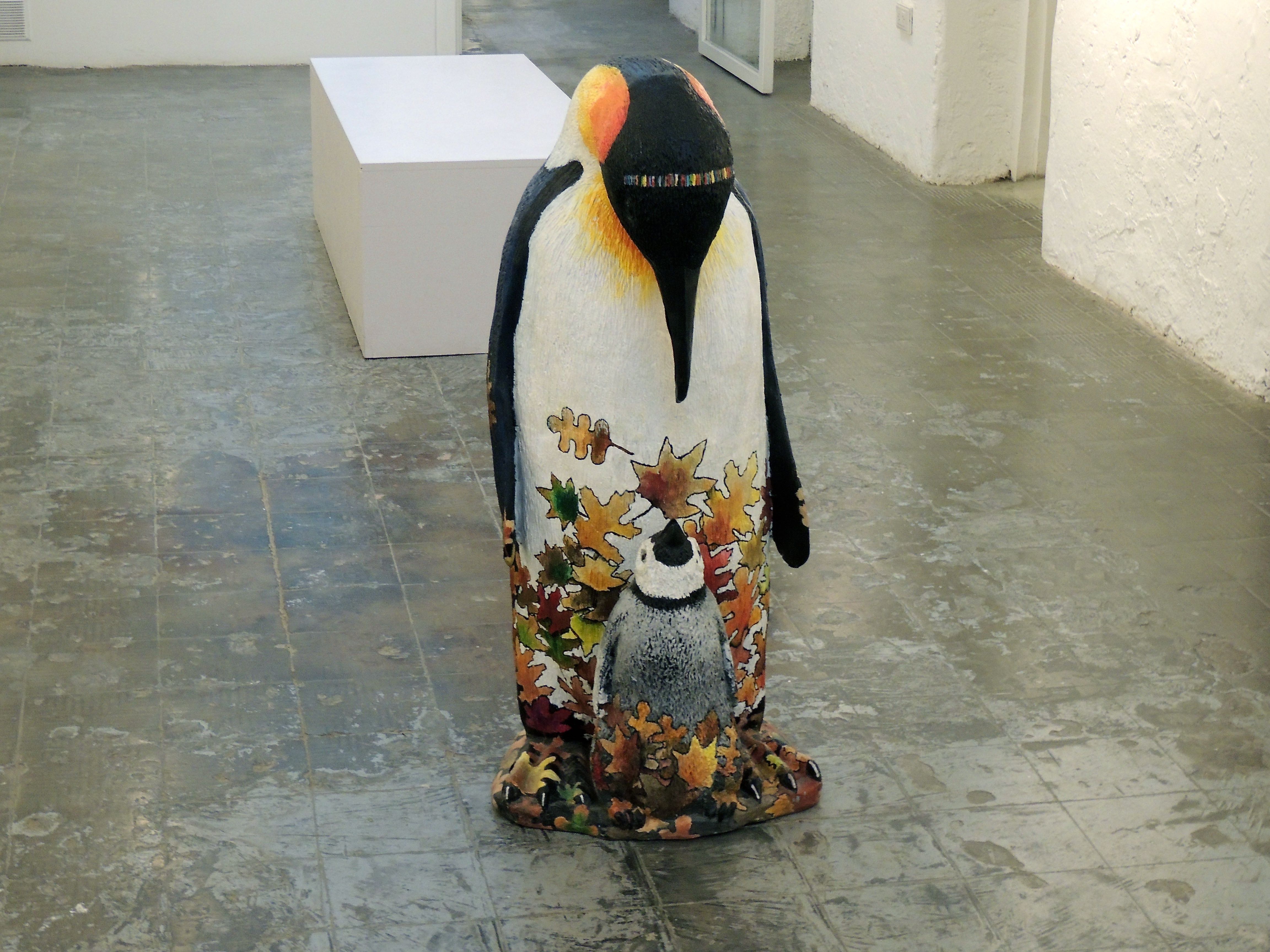 Penguin Art - Photo by William Young
Penguin Art - Photo by William Young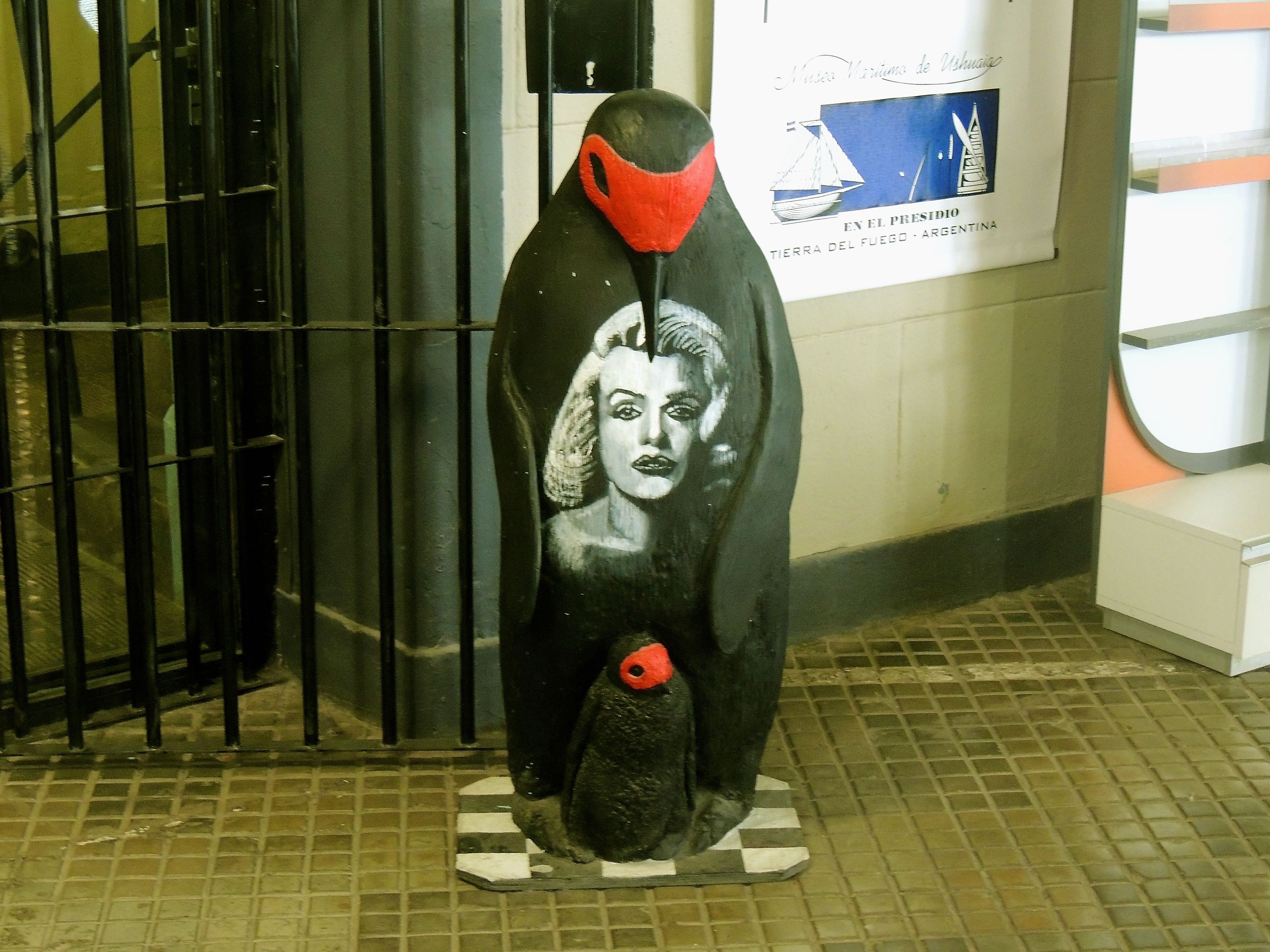 Penguin Art - Photo by William Young
Penguin Art - Photo by William Young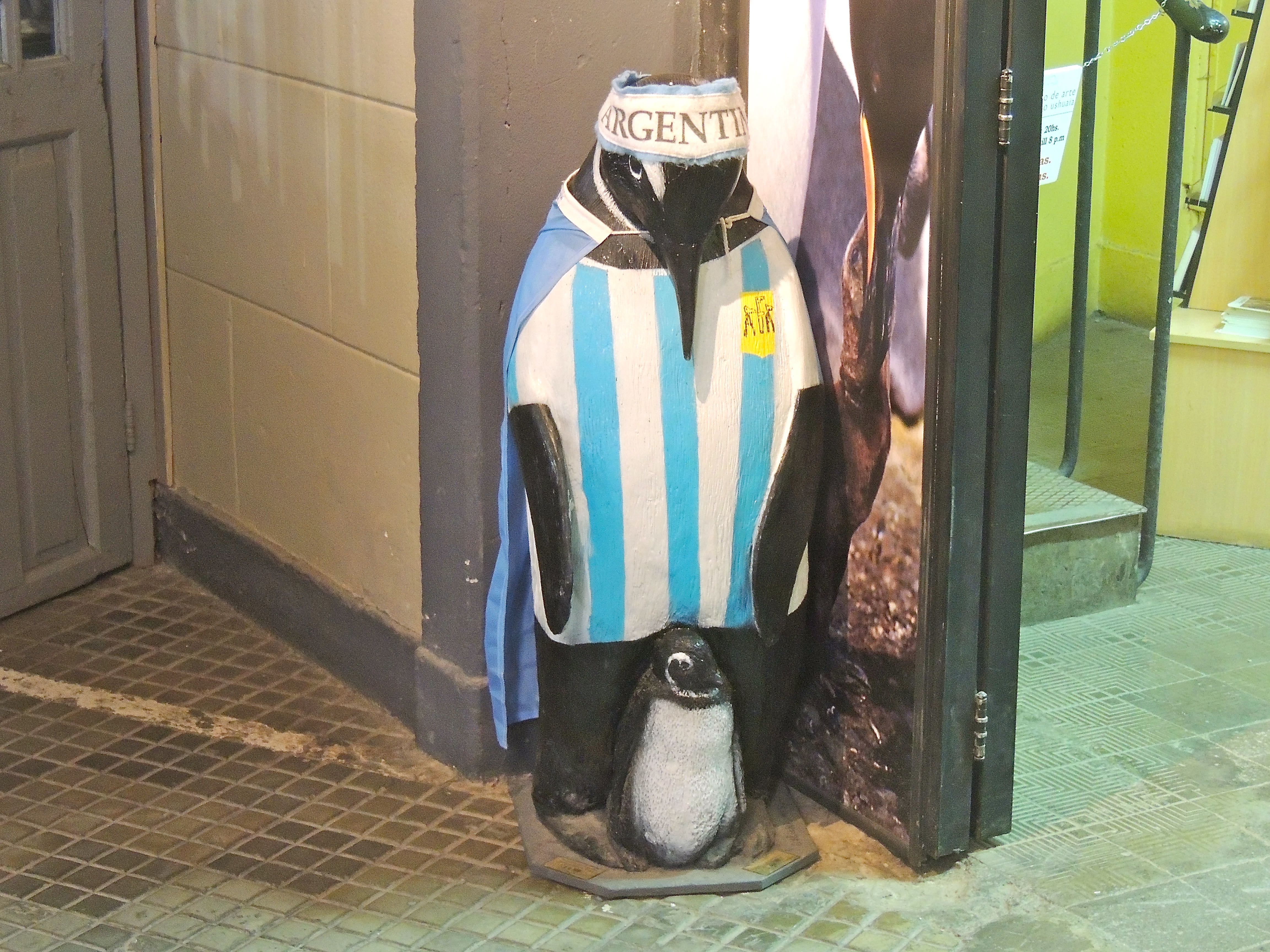 Penguin Art - Photo by William Young
Penguin Art - Photo by William Young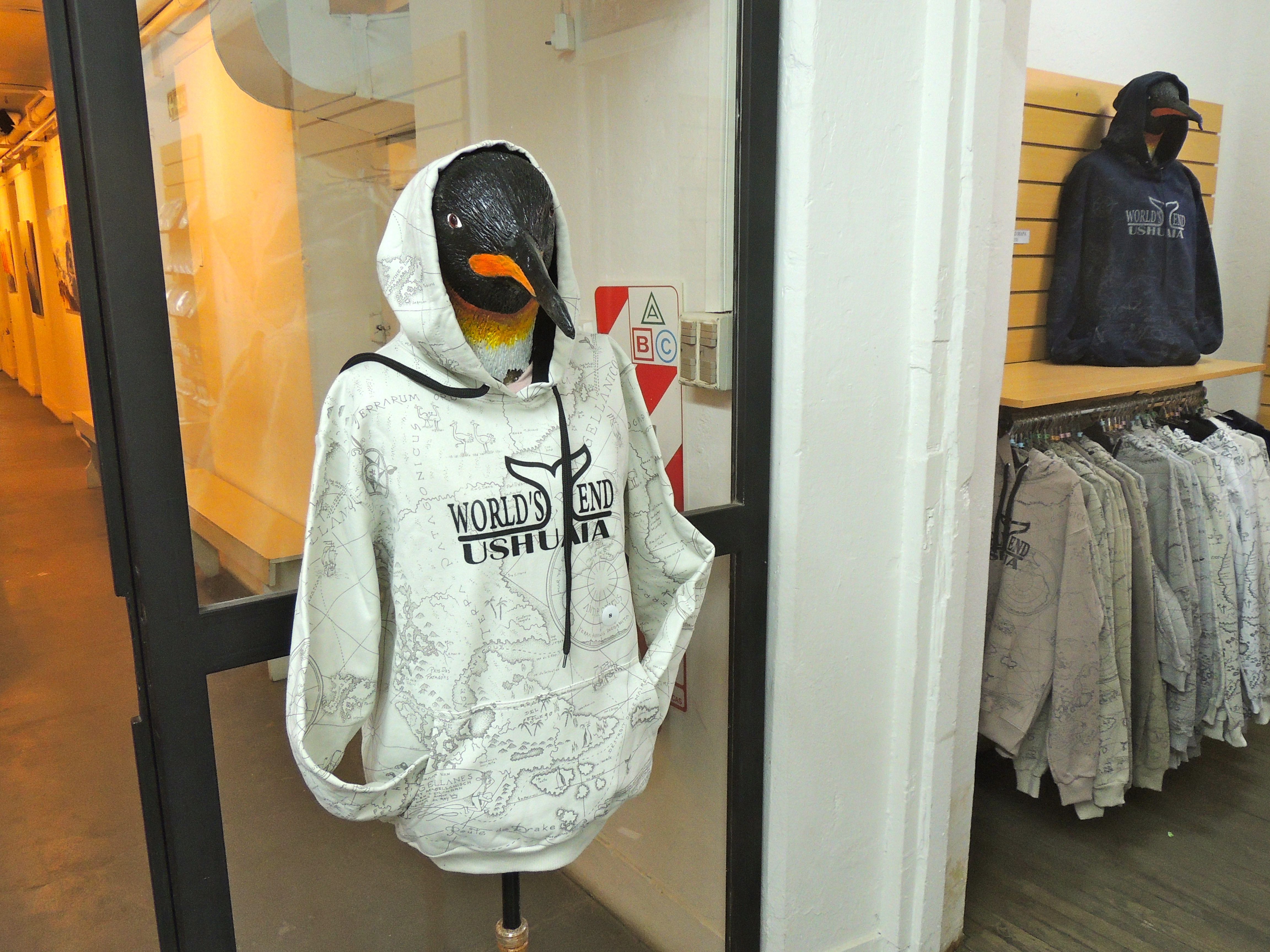 Penguin Clothes - Photo by William Young
Penguin Clothes - Photo by William YoungAfter we arrived at Buenos Aires, we had a bit of a layover, so Michael, Paul, and I had dinner in what might have been the only decent restaurant in the airport. John was taking a direct flight back to Houston, so he had to go to a different terminal. I walked the entire length of the terminal from where we were leaving, and there were far more places that offered high quality drinks than high quality food. On the plane back to Atlanta, the woman who was sitting next to me at the beginning of the flight talked to a flight attendant and managed to get her seat changed to one in the front so that she could be with her husband. I was then able to stretch out on her seat and mine, and I managed to sleep a bit before returning to the US. In Atlanta, I said good-bye to Michael and Paul, and we all headed our separate ways. I got back to Washington at about 9:15 a.m. and was home by 10.
ITINERARY
Jan 6 Reserva Costnera Sur (South Beach Reserve)
Jan 7 Otamendi Nature Reserve
Jan 8 Flew to Ushuaia, Ushuaia Harbor
Jan 9 Arakur Resort Trails, Tierra del Fuego National Park
Jan 10 Ushuaia Harbor Loop, Beagle Channel
Jan 11 Travel from Ushuaia to Falklands
Jan 12 Pelagic Birding on West Side of Falklands, North Side of Saunders Island
Jan 13-14 Travel toward South Georgia
Jan 15 Travel toward South Georgia, Passed Shag Rocks
Jan 16 Travel toward South Georgia, Bay of Isles, Salisbury Plain, Prion Island
Jan 17 Hercules Bay, Grytviken, Stromness
Jan 18 Saint Andrews Bay, Gold Harbour
Jan 19-20 Travel through Scotia Sea
Jan 21 Travel through Scotia Sea to Elephant Island, Point Wild
Jan 22 Travel through Drake Passage to Antarctic Sound, Brown Bluff
Jan 23 Paulet Island, Weddell Sea
Jan 24 South Shetland Islands, Half Moon Island, Fort Point, Hardy Cove
Jan 25 Travel through Drake Passage
Jan 26 Travel through Drake Passage, Beagle Channel
Jan 27 Ushuaia, Buenos Aires Airport
BIRD FAMILIES
WaterfowlWe saw very few ducks, geese, and swans after we left Argentina. At the South Beach Reserve in Buenos Aires, we saw two Coscoroba Swans swimming close to the shore. They have a shorter neck than most swans and a reddish-pink bill. They look gooselike. We also saw a pair swimming with three cygnets. At Tierra del Fuego, a pair of Black-necked Swans came relatively close to the shore. They look like a cross between a Mute Swan and a Black Swan, with the long curved black neck and a white body. From a distance, the bill looks red, but the red part is a bulb over the bill.
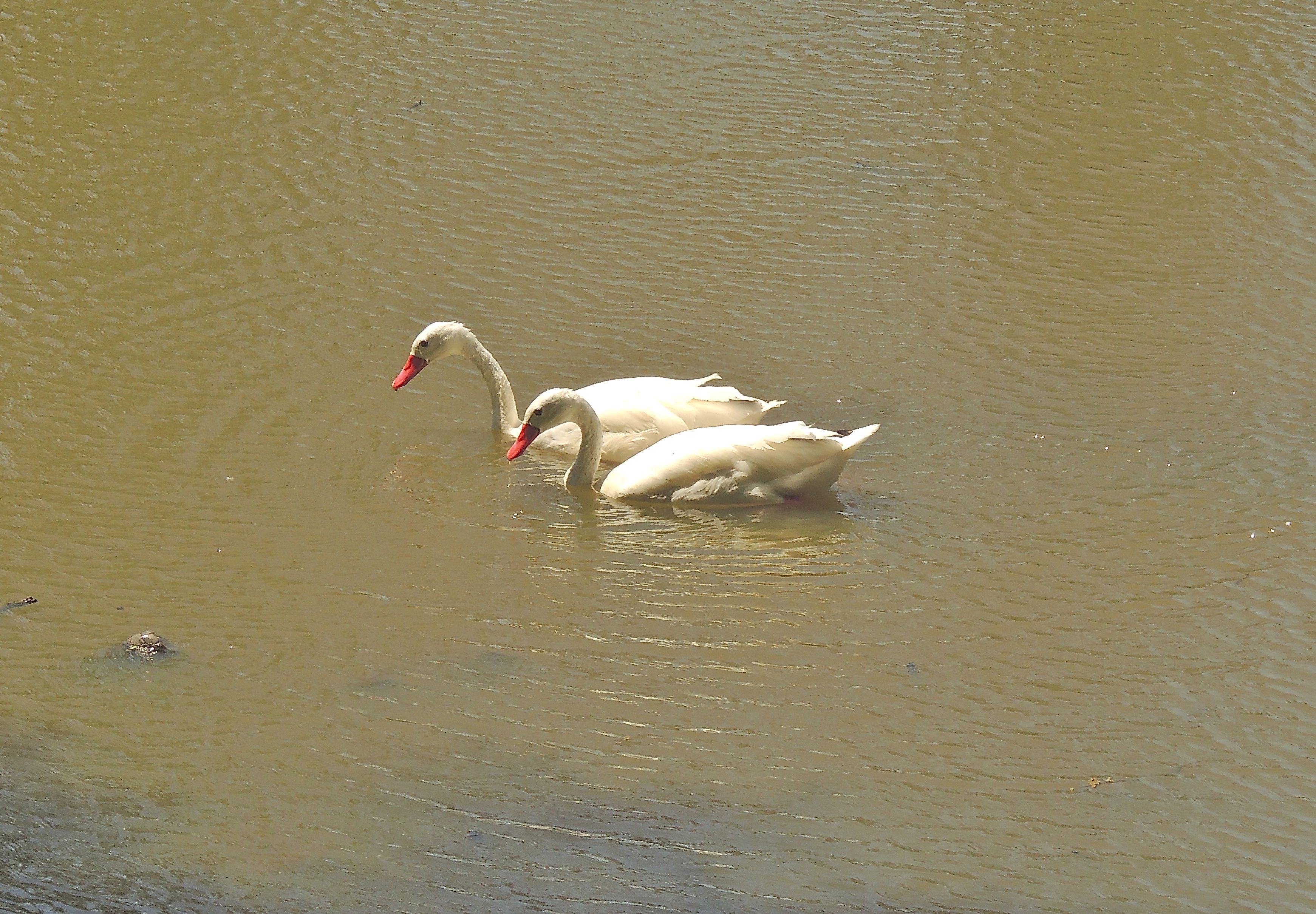 Coscoroba Swans - Photo by William Young
Coscoroba Swans - Photo by William Young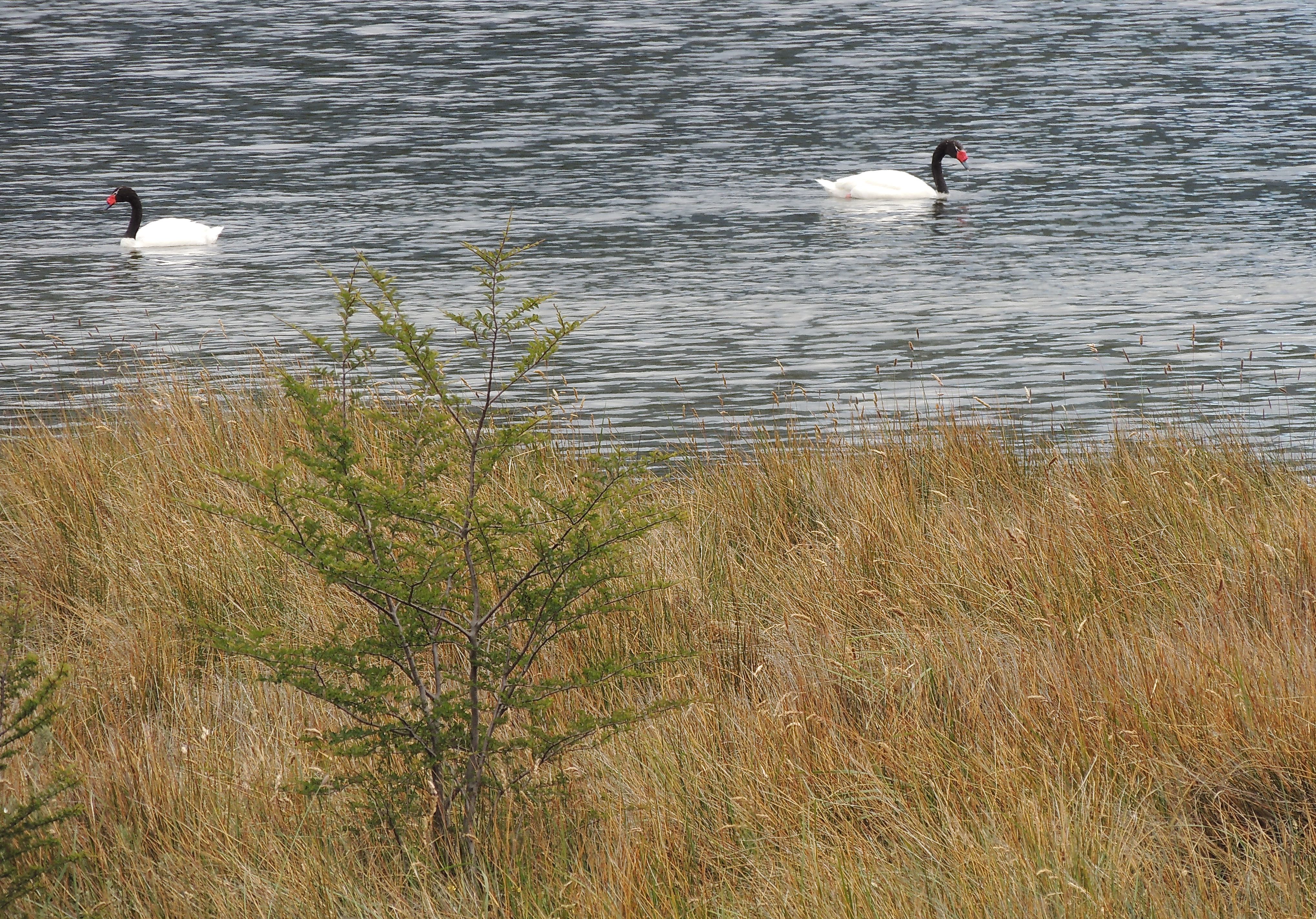 Black-necked Swans - Photo by William Young
Black-necked Swans - Photo by William YoungSome of the Argentine geese are very pretty. A pair of Kelp Geese was near the shore in Ushuaia. The male is snow white, with black eyes, a black bill, and bright yellow feet which I could see as he stood on rocks covered with vegetation. The female has dark chocolate upperparts and black underparts with white barring. She has both a white wing patch and a dark green speculum. Her tail is white, and her bill is pink. She also has a whitish eyering. Her feet are bright yellow, and I could see her black nails. The pair looked chunky and was eating vegetation on and near the rocks. At Tierra del Fuego, I saw a beautiful family of Ashy-headed Geese. The male and female look alike. They are grayish down to the breast, with the forehead lighter than the neck — the head appears to be illuminated. The breast is rufous with faint barring. The belly and flanks are white, but a broad area on the flanks has black barring. They were accompanied by two goslings who had brownish backs and appeared to have a brown Mohawk. At one point, the entire family walked onto the shore. The adults have orange feet, while the feet of the young are black. There is a post office near where the geese came onto the shore, and I bought an Ashy-headed Goose bookmark — apparently, these geese are a popular species in the park. We also saw Upland Geese in the park, but we subsequently had better looks at them on Saunders Island. I saw a male who had an all white head and breast like the male Kelp Goose. The back and flanks had black barring, the wings looked grayish brown, and the tail was white with a black tip. The bill, eyes, and feet were black. The bills on all of these goose species looked relatively small and delicate.
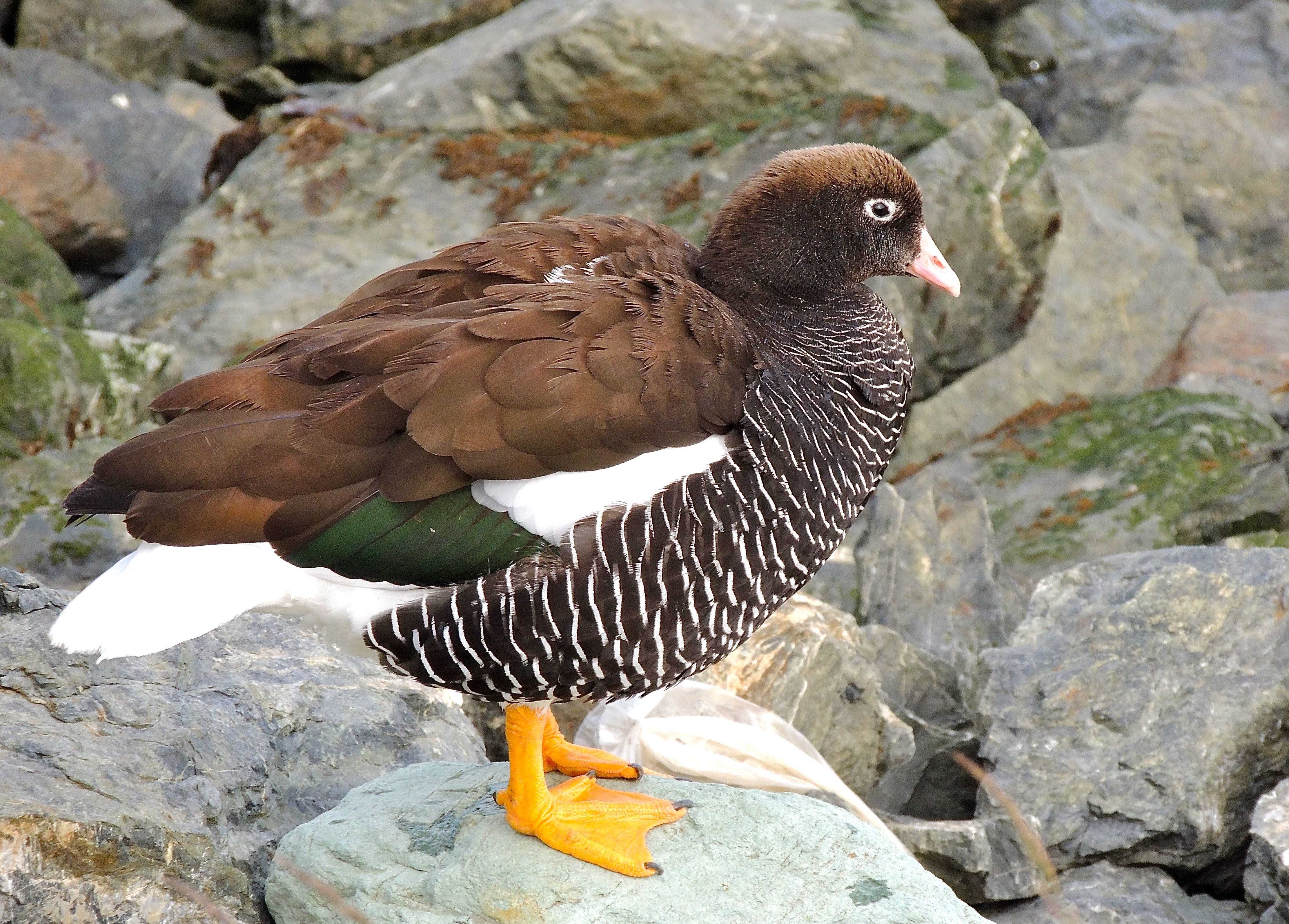 Female Kelp Goose - Photo by William Young
Female Kelp Goose - Photo by William Young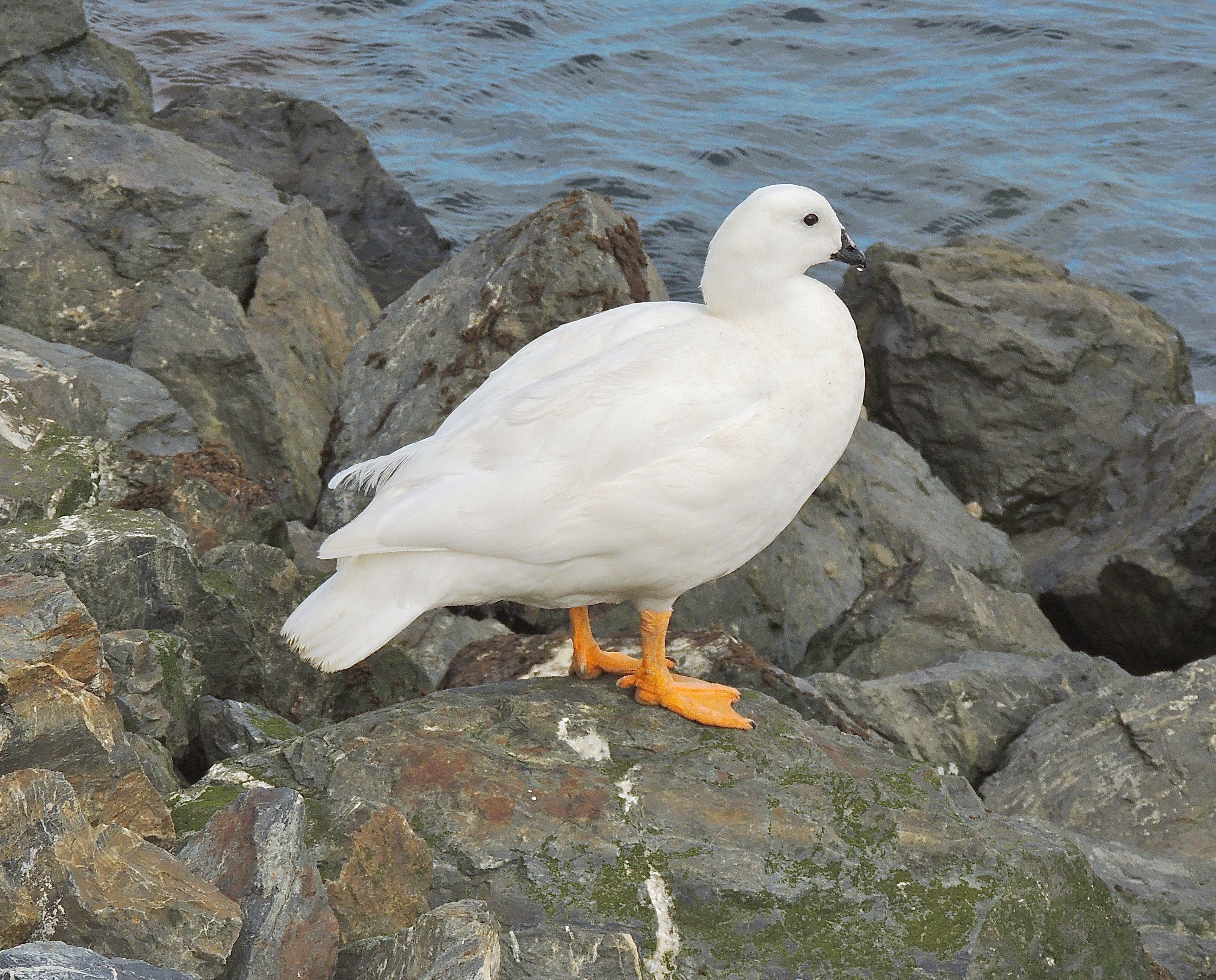 Male Kelp Goose - Photo by William Young
Male Kelp Goose - Photo by William Young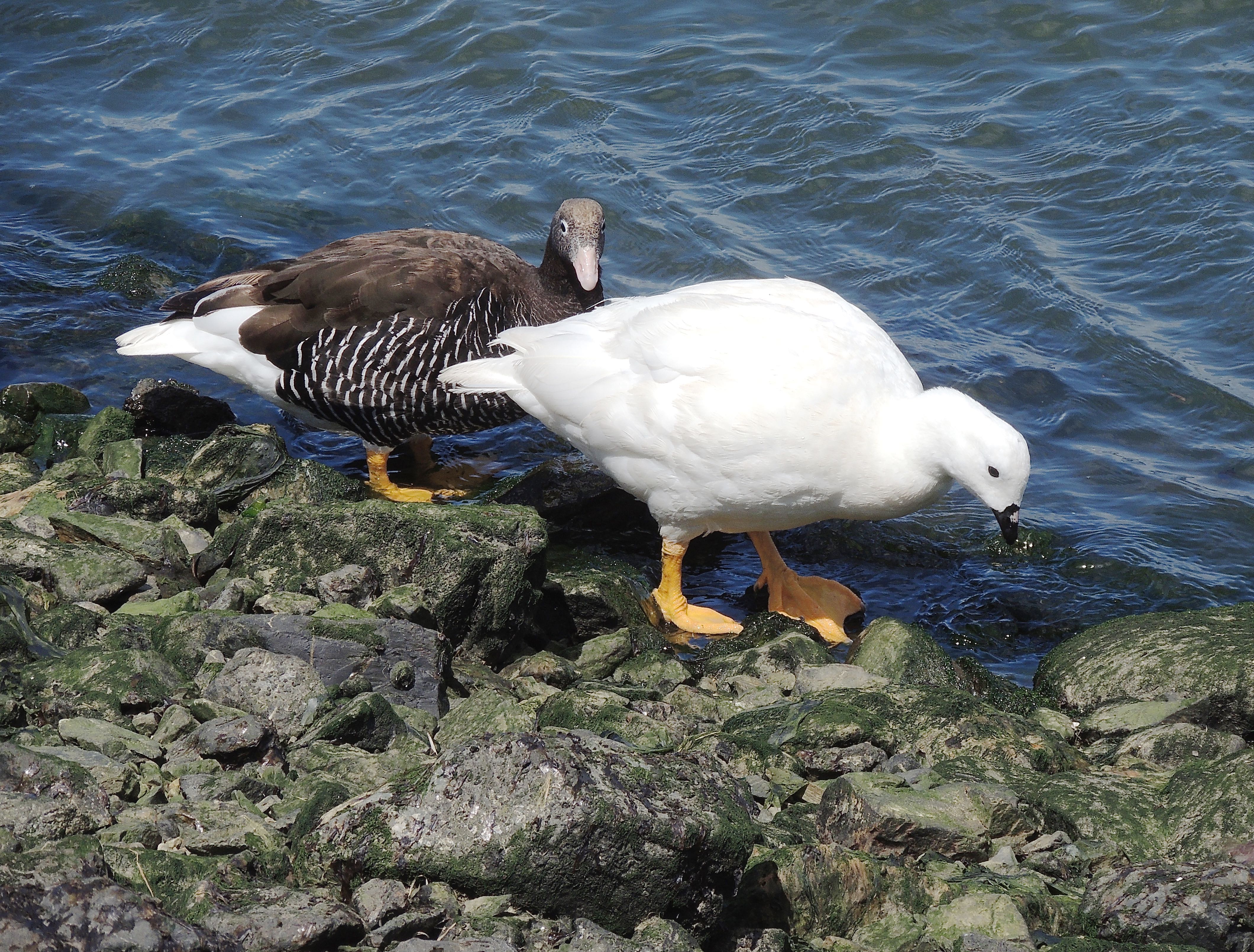 Female and Male Kelp Geese - Photo by William Young
Female and Male Kelp Geese - Photo by William Young Ashy-headed Geese - Photo by William Young
Ashy-headed Geese - Photo by William Young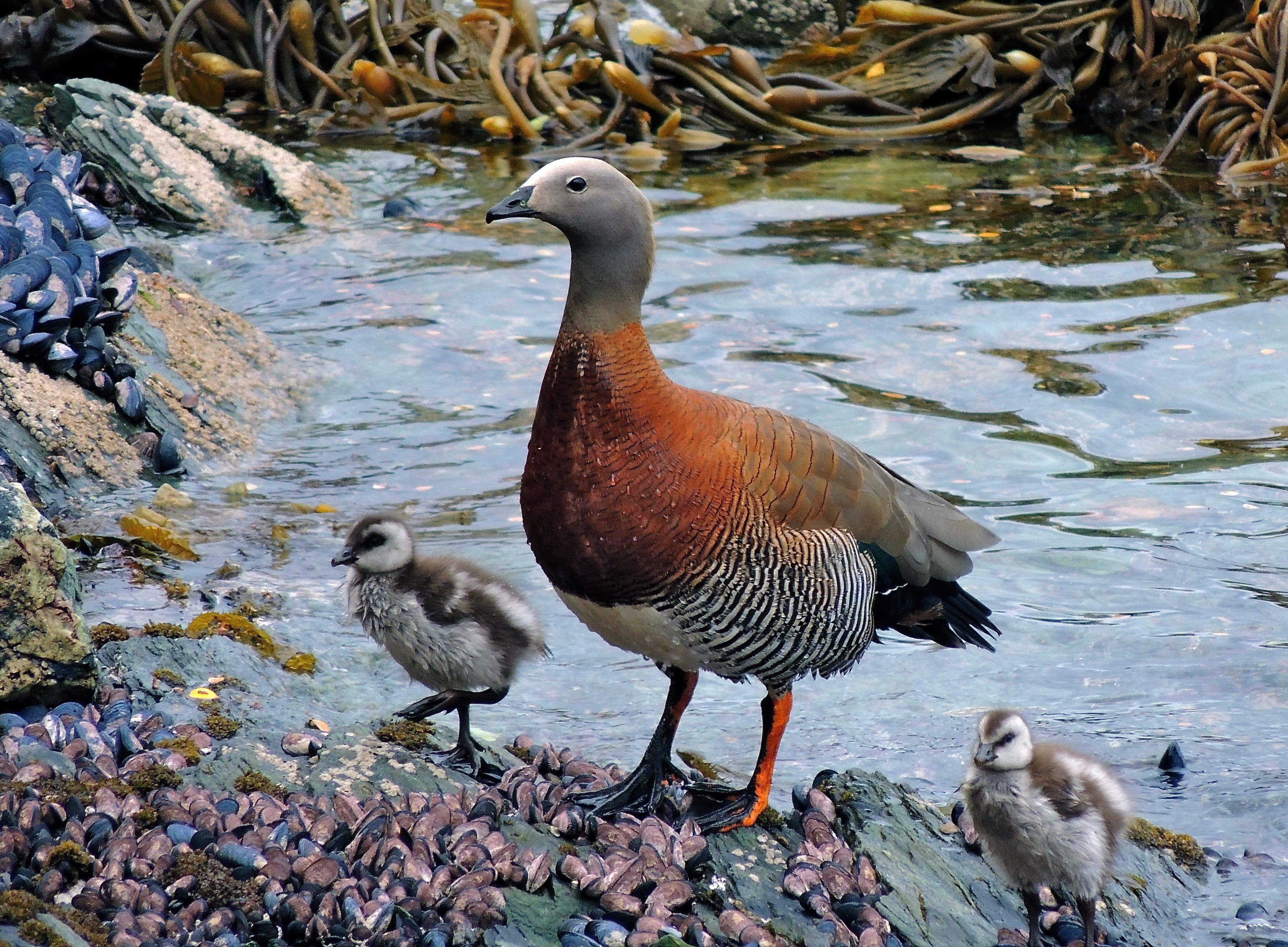 Ashy-headed Geese - Photo by William Young
Ashy-headed Geese - Photo by William Young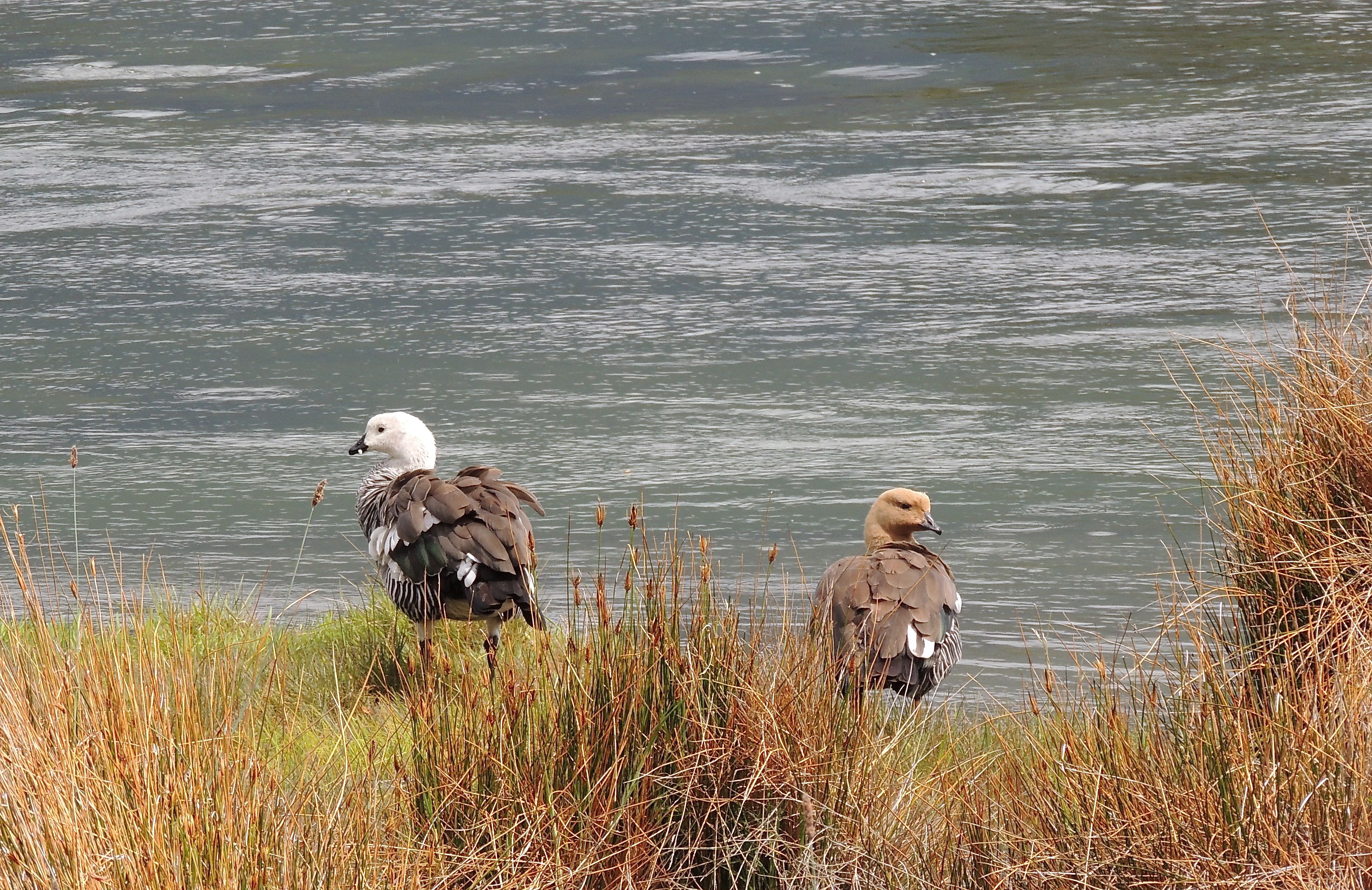 Male and Female Upland Geese - Photo by William Young
Male and Female Upland Geese - Photo by William Young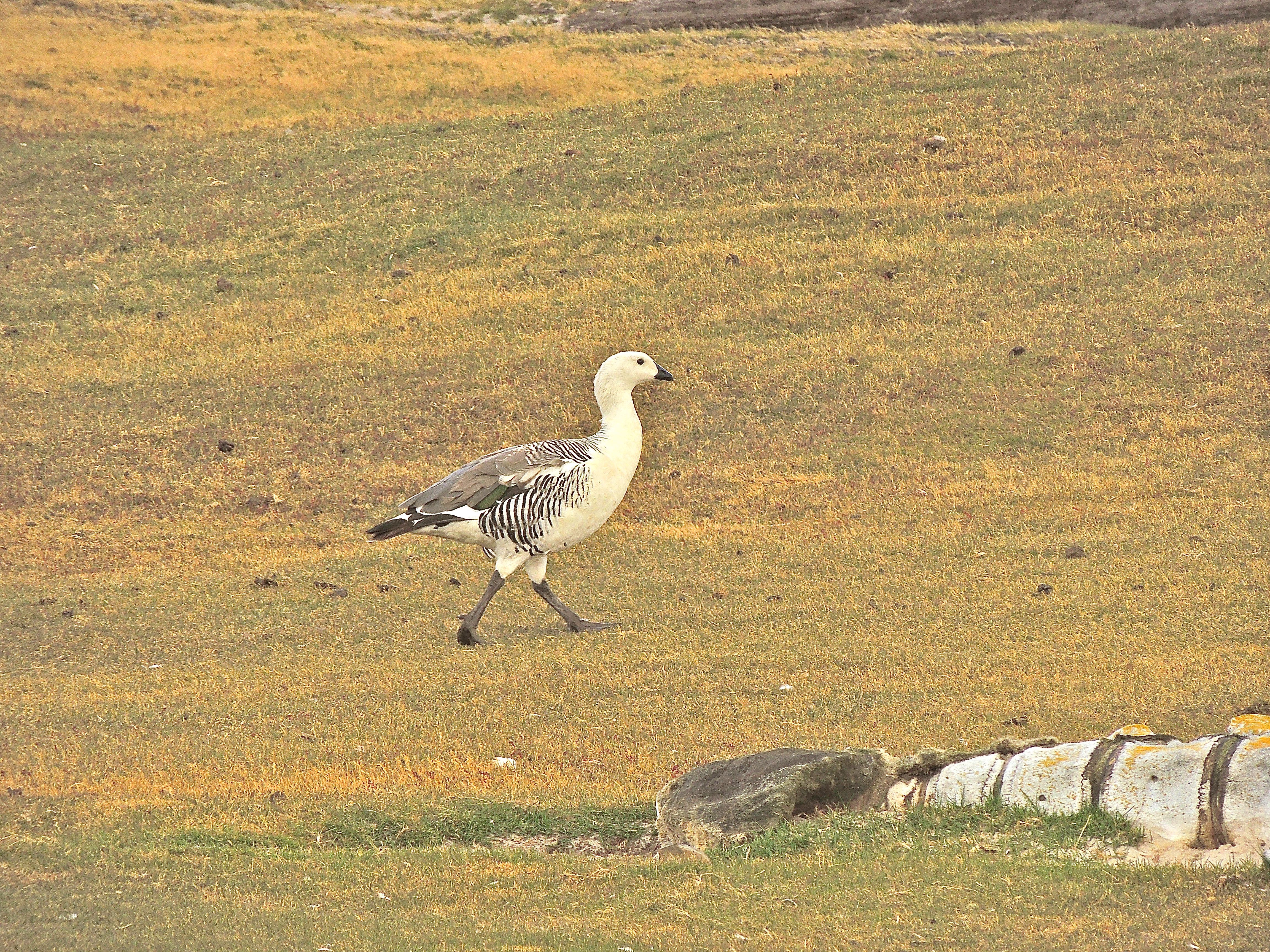 Male Upland Goose - Photo by William Young
Male Upland Goose - Photo by William YoungSteamer-ducks are difficult to identify to species. There are flightless ones and flying ones, and the differences are subtle. In addition, Jim Wilson said that some flightless ones can fly, which suggests interbreeding. I never saw any of them steaming through the water, which is the basis for their name. At Tierra del Fuego, we saw seven distant steamer-ducks on the water who were identified as Flying. We later saw a much closer group who were Flightless. Both species are large and round, with gray plumage. The female of the Flying has a yellow bill which contrasts with the bright orange bill of the male, while the bills of both the male and female Flightless are bright orange. The wings on the Flightless are shorter and stubbier, but that can be difficult to see in the field. The Flying is the only one found in freshwater. When we arrived at Saunders Island, I saw a pair of the endemic Falkland Streamer-Ducks, who are flightless. Our zodiac driver Nate took us into a cove near where we had disembarked, and a pair was swimming near the shore. A couple of other people who did not come up to see the Black-browed Albatross colony saw Falkland Steamer-Ducks on another part of Saunders Island, but the birders who were in other zodiacs did not see them.
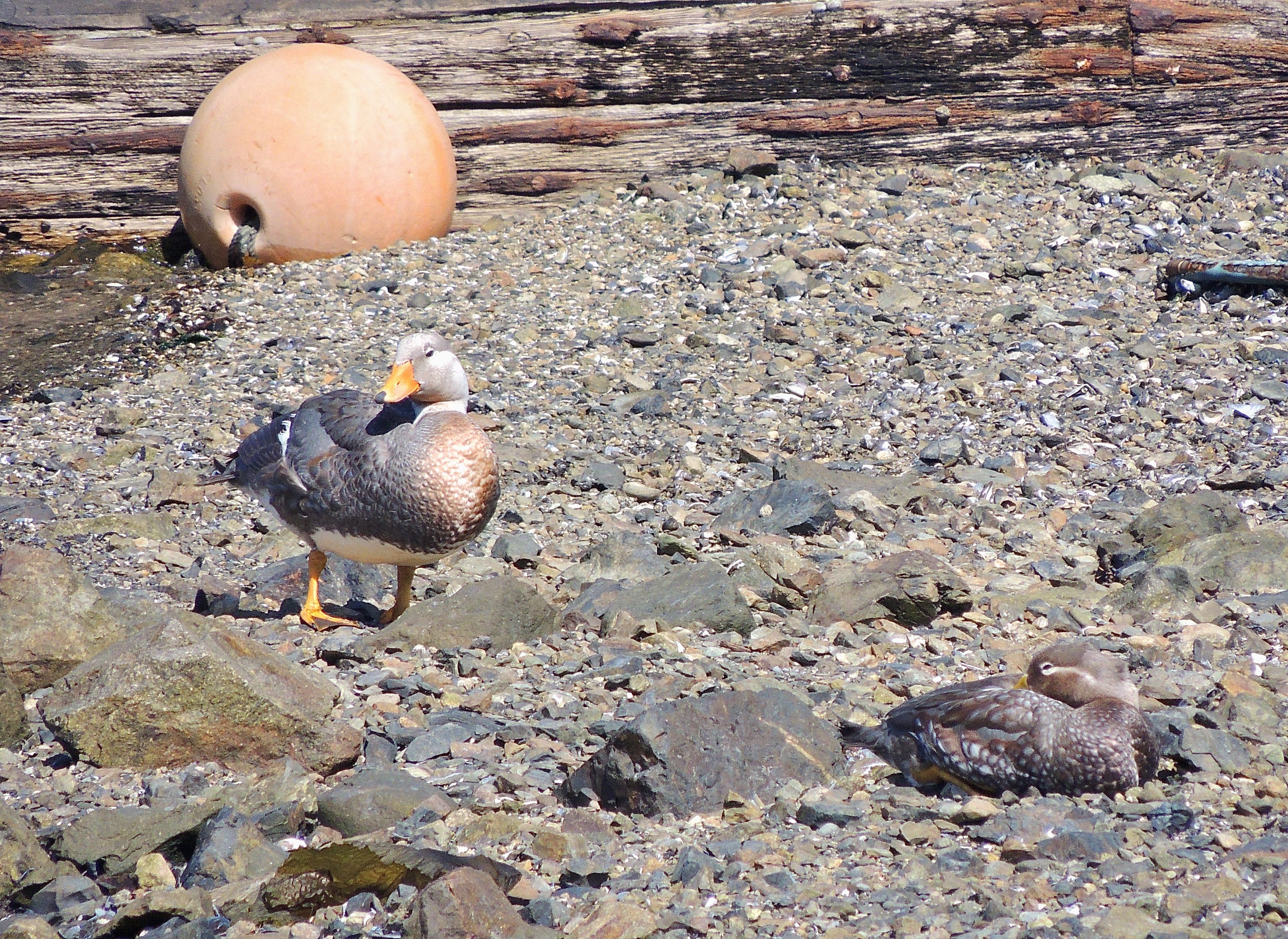 Flying Steamer-Ducks - Photo by William Young
Flying Steamer-Ducks - Photo by William Young Flightless Steamer-Ducks - Photo by William Young
Flightless Steamer-Ducks - Photo by William YoungOn the windy day that kept us stuck in Ushuaia, we walked around the waterfront and saw other species of ducks. Crested Ducks were fairly common. They are grayish brown with a red eye. One can see a crest that hangs on the back of the head. In flight, they show white in their wings. We saw Red Shovelers, who have a gray head, light eyes, and brown sides with black speckling. They show a lot of green in the speculum, and they have a large black shoveler bill. The Yellow-billed (or Speckled) Teal is noticeably smaller than the previous two species. They are all brown with a bright yellow bill. We saw three species of teals in Buenos Aires. Some Silver Teals were swimming close to the shore in water with thick vegetation. They are brownish with a black cap on a white head and neck. A pair of Ringed Teals was sitting on a tree branch that had fallen into the water. The male has a blue bill and a broad cinnamon stripe above his gray flank. The female is much plainer, being brown with a broad white eyestripe. At Otamendi, we saw two flying Brazilian Teals, whose large blue-green speculums glistened in the sun. The only waterfowl I saw after the Falklands were the endemic South Georgia Pintails, who are brown ducks with a bright yellow bill. The head looks delicate. I saw some near the shore at Grytviken and managed to take a photo that came out to be much more dramatic than it appeared when I shot it. A pintail was standing on some rocks, and the angle of the photo makes the duck stand out as if on a wild rocky shore instead of being in a little protected cove.
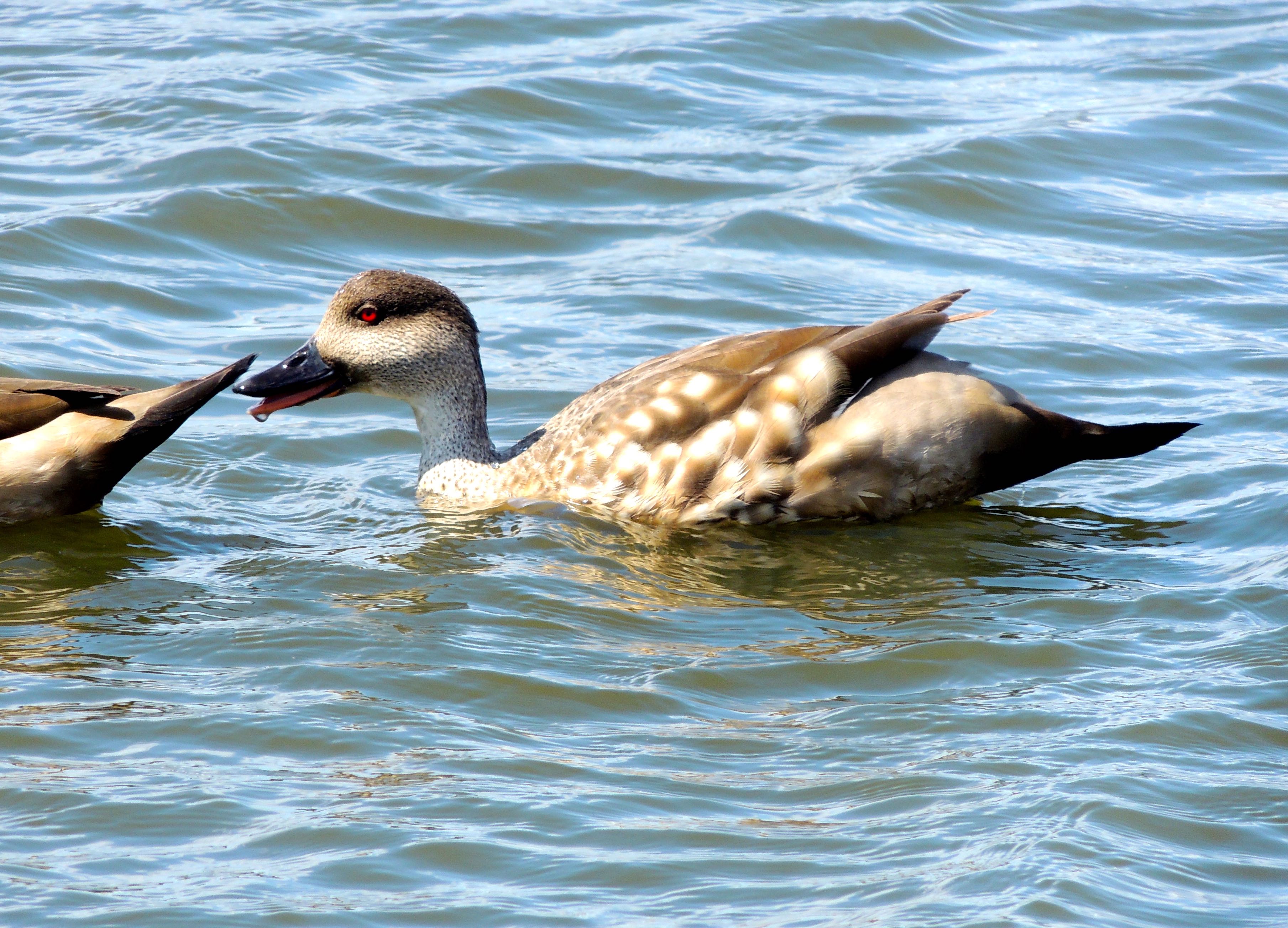 Crested Duck - Photo by William Young
Crested Duck - Photo by William Young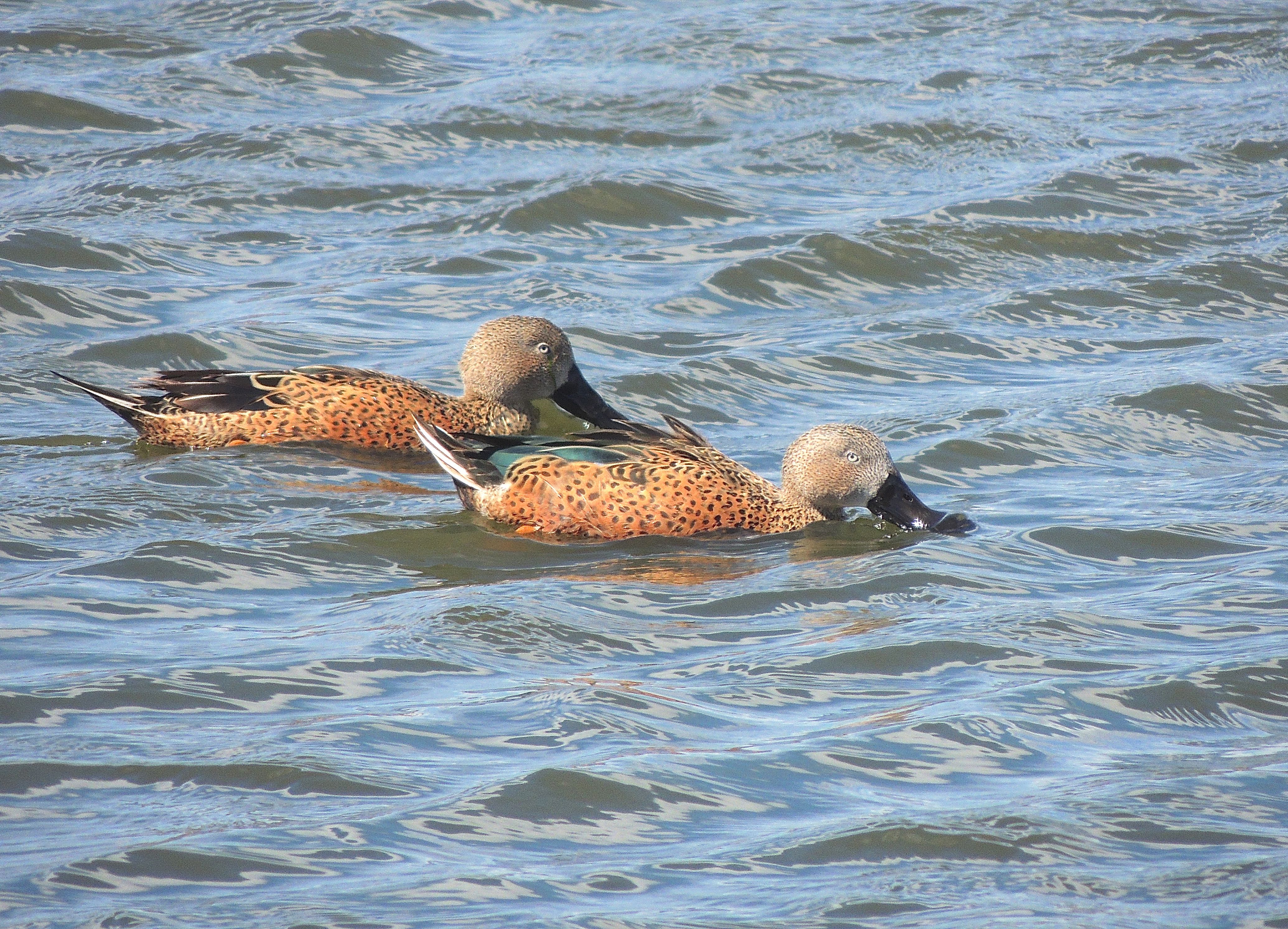 Red Shovelers - Photo by William Young
Red Shovelers - Photo by William Young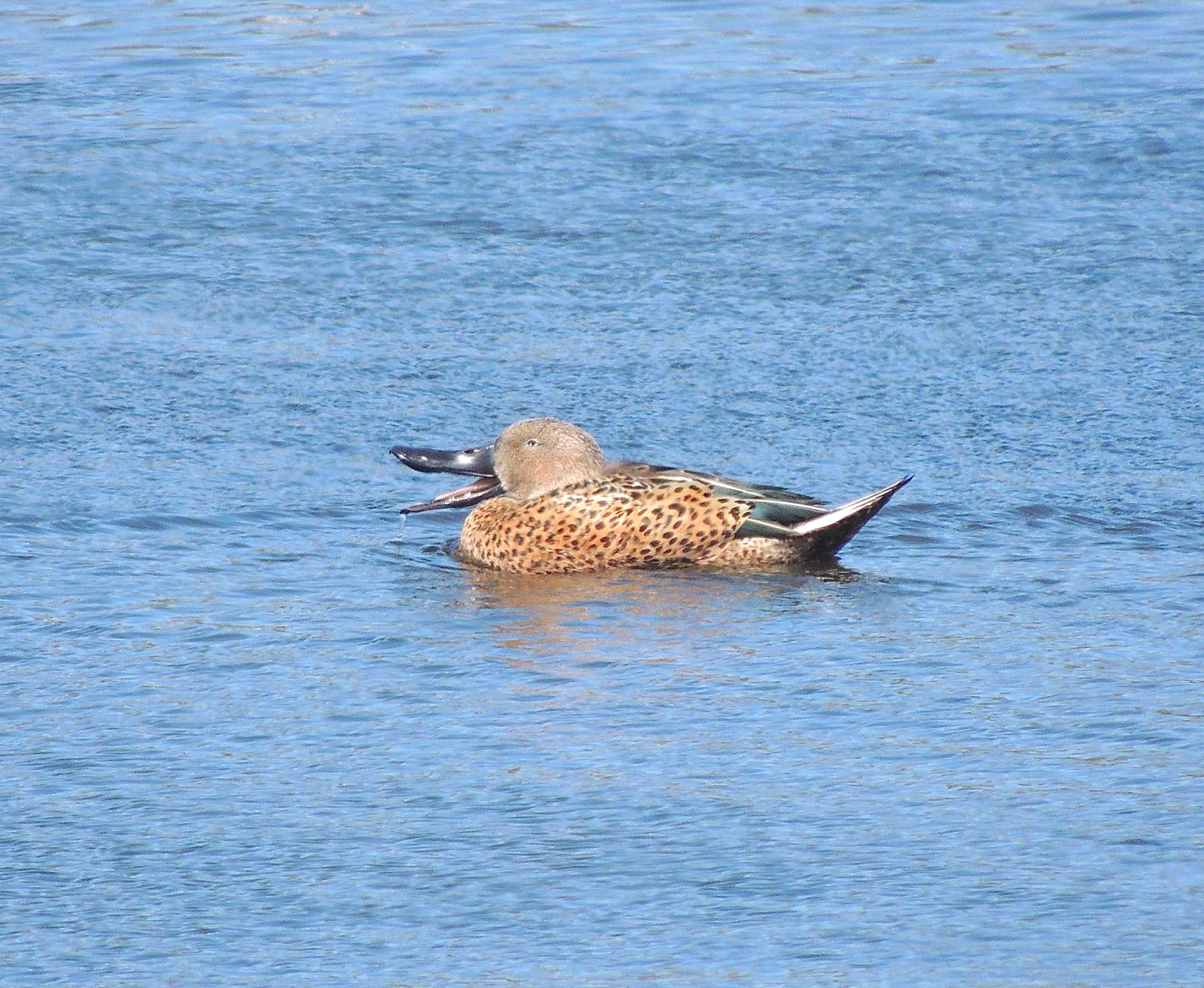 Red Shoveler - Photo by William Young
Red Shoveler - Photo by William Young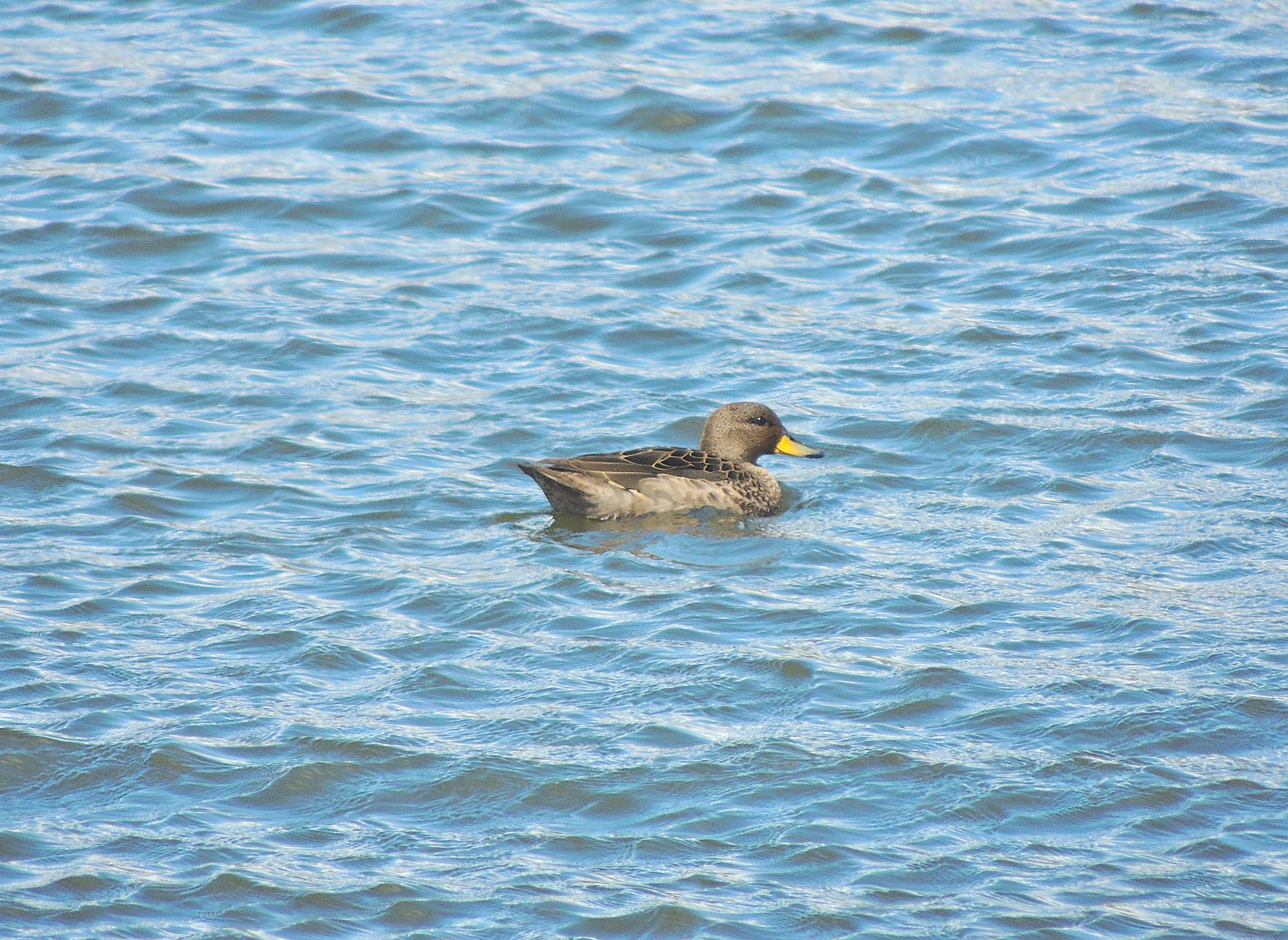 Yellow-billed Teal - Photo by William Young
Yellow-billed Teal - Photo by William Young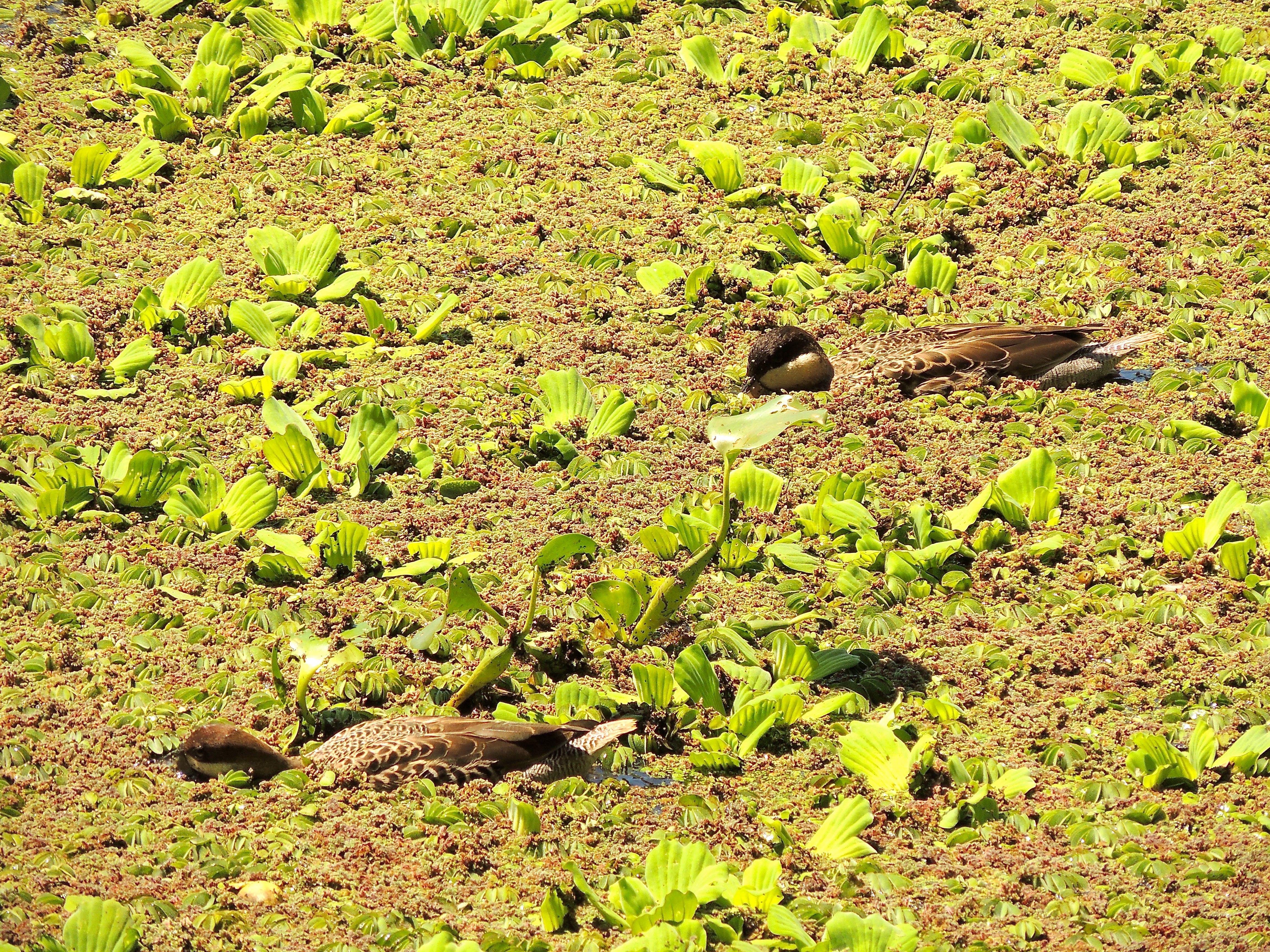 Silver Teals - Photo by William Young
Silver Teals - Photo by William Young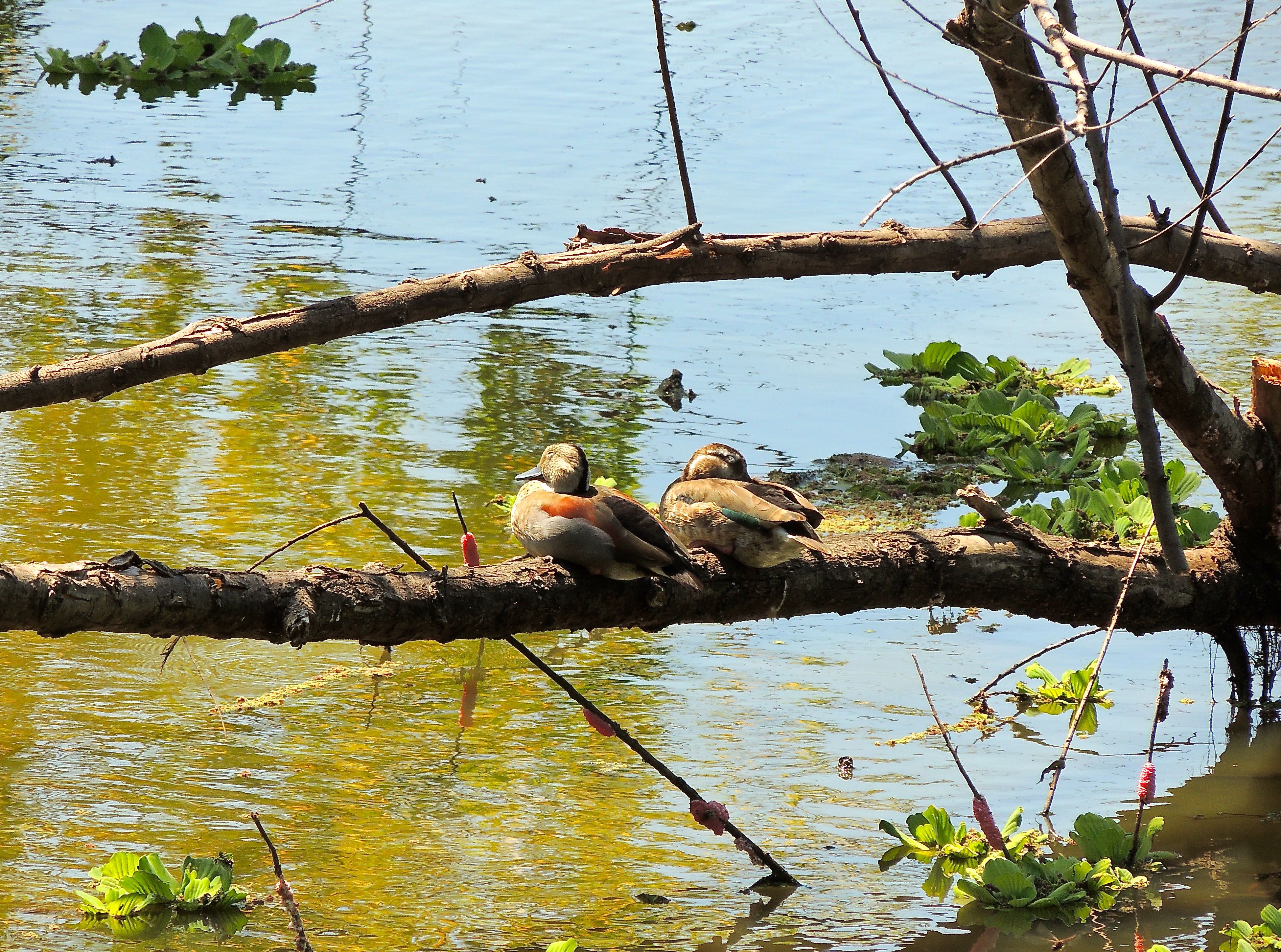 Ringed Teals - Photo by William Young
Ringed Teals - Photo by William Young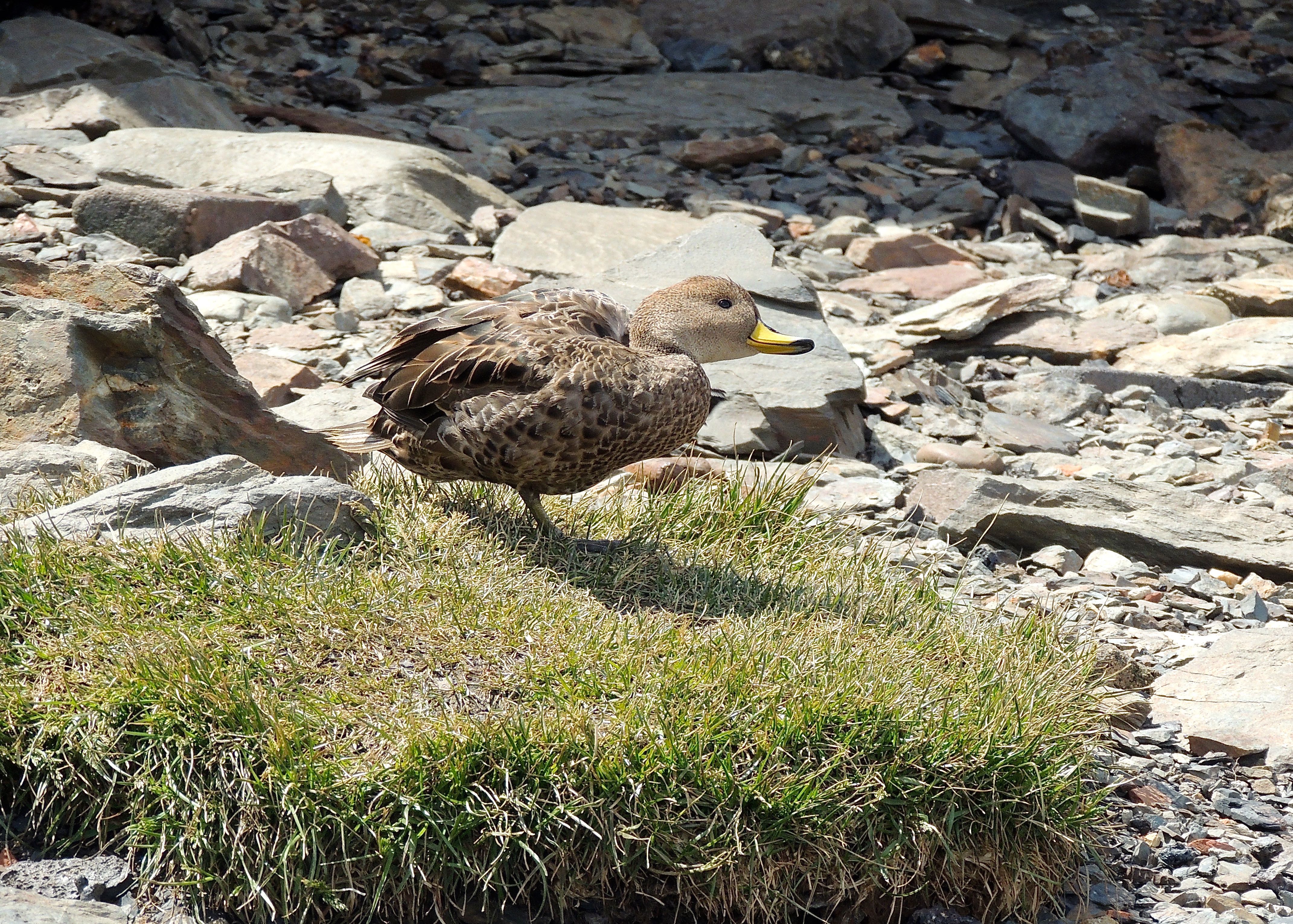 South Georgia Pintail - Photo by William Young
South Georgia Pintail - Photo by William Young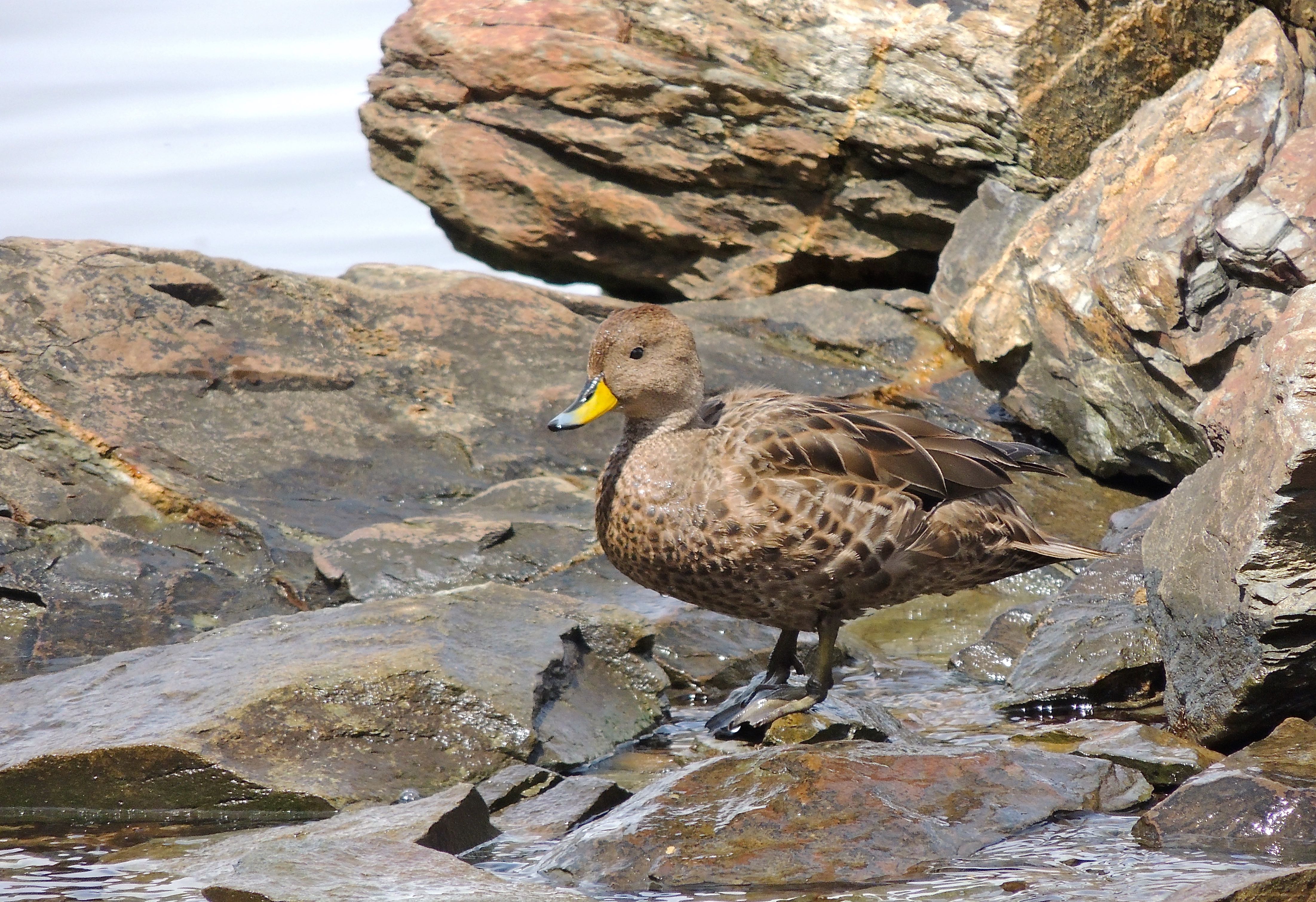 South Georgia Pintail - Photo by William Young
South Georgia Pintail - Photo by William Young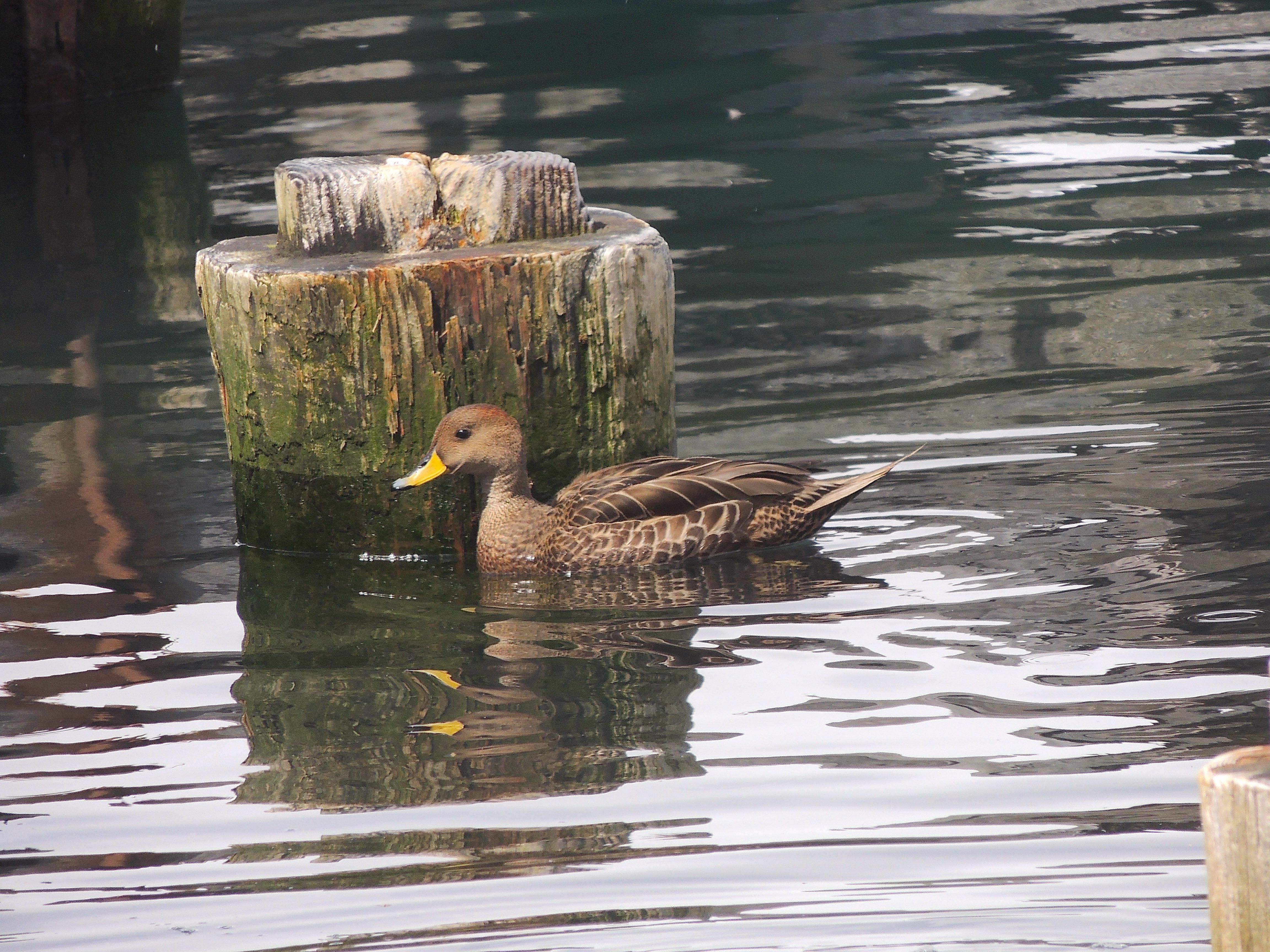 South Georgia Pintail - Photo by William Young
South Georgia Pintail - Photo by William Young
GrebesIn Buenos Aires, we saw a group of White-tufted Grebes. We were looking into the sun, but even in the glare, I could see they have brownish flanks and a large white ear patch. At the park in Tierra del Fuego, we saw Great Grebes. They are quite large with a long slender neck. A pair was courting, and one appeared to be passing a small fish to the other. They have a black body, a black head, and a rufous neck. The bill is long and pointed.
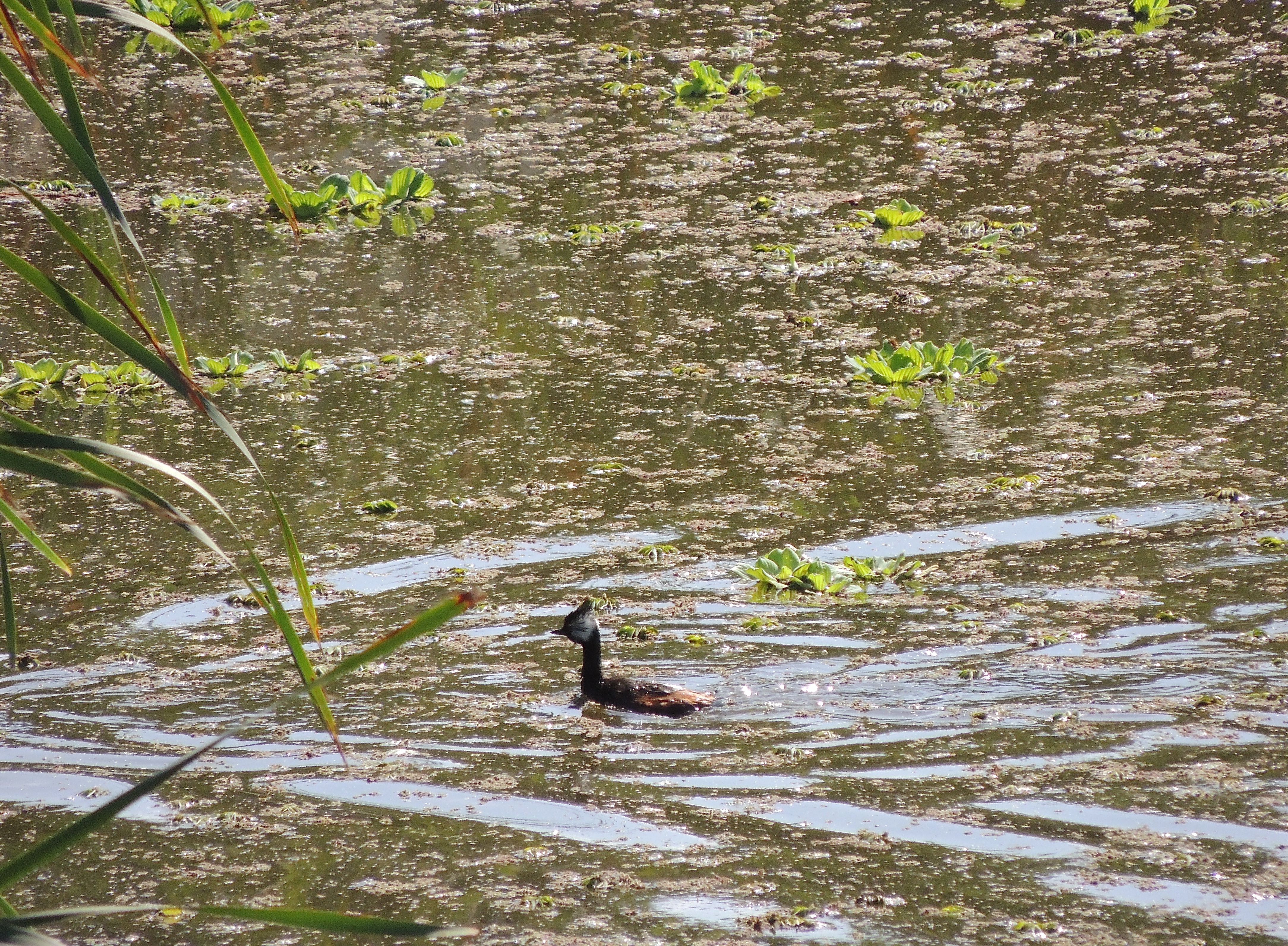 White-tufted Grebe - Photo by William Young
White-tufted Grebe - Photo by William Young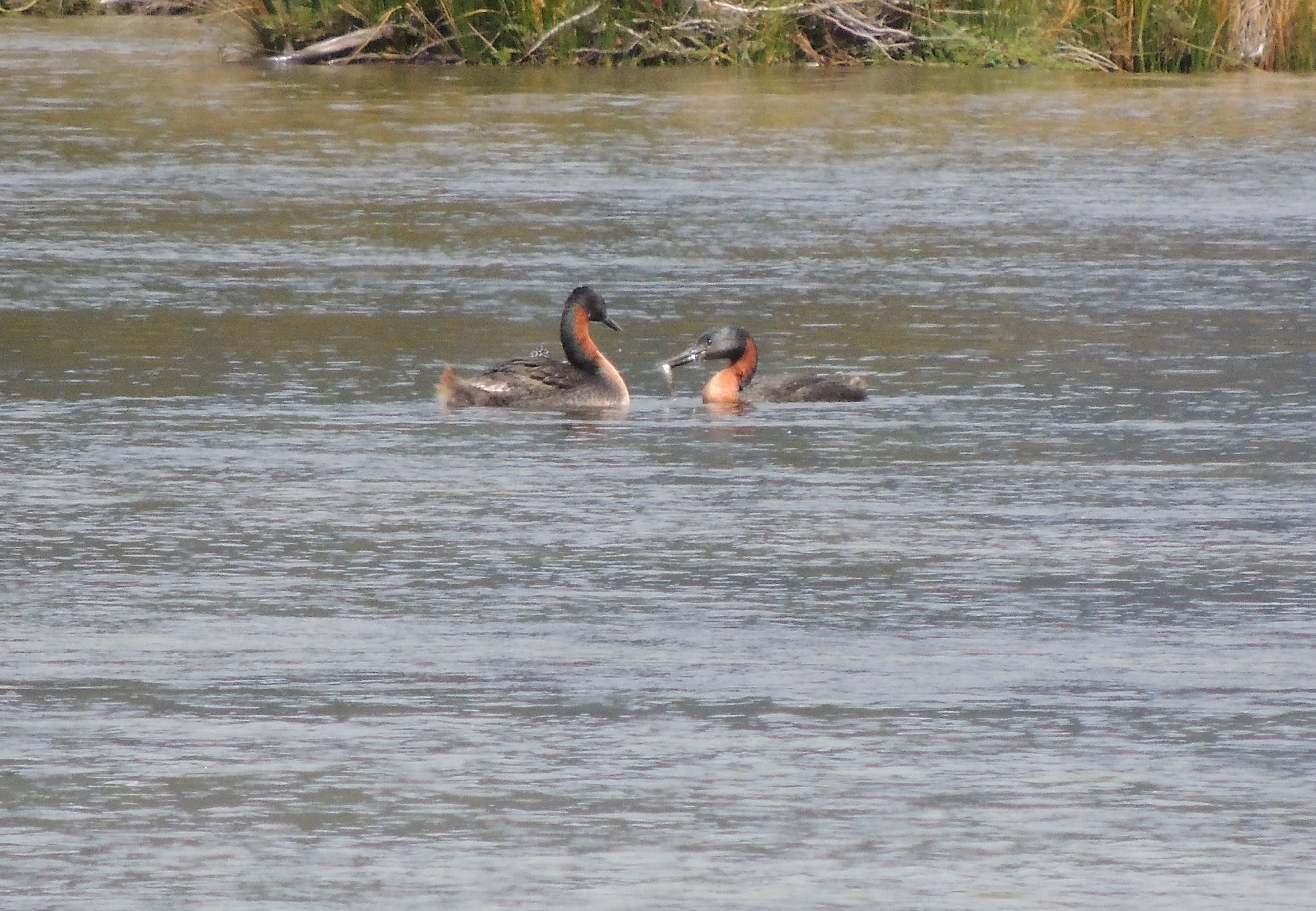 Great Grebes - Photo by William Young
Great Grebes - Photo by William Young
PenguinsI might have seen literally a million penguins on this trip. The numbers were so large and spread out that providing an exact count is impossible. Seeing penguins at sea can be difficult and tends not to be satsfying. They often are porpoising, which does not allow good views. Their dark backs blend in with the dark surface of the sea. They are more likely to be diving than sitting on the surface. To see penguins well, one must go to the colonies where they breed or congregate. We did not see any Emperor Penguins on the trip. They are found farther inland in Antarctica, and the only ones we had a chance to see were young birds who dispersed from their breeding area.
By far, we saw more King Penguins than any other bird species. They are the second largest penguin species in the world, behind the Emperor. They were on the Falklands and South Georgia, but not on the Antarctic Peninsula. Jim estimated that there were about 80,000 breeding pairs on Salisbury Plain in South Georgia and about a quarter of a million birds altogether. There were only 318 left at Salisbury early in the 20th century after the carnage committed by the whalers and others, but the numbers recovered. Saint Andrews Bay in South Georgia had an estimated 400,000 to 500,000 King Penguins. An adult King Penguin stands almost three feet tall and can weigh more than 30 pounds. The adult birds have a yellow-orange band that goes from the chin to the breast and a teardrop shaped yellow-orange mark around their ear. They also have a yellow stripe on their black bill. The males and females have similar plumage, but the males are larger. The young birds look like Sasquatch, being covered with what looks like brown hair. Some are fatter than the adults. The birds take two or three years to pass into full adult plumage, and the second year birds look like adults, but have lemon yellow areas instead of yellow-orange areas.
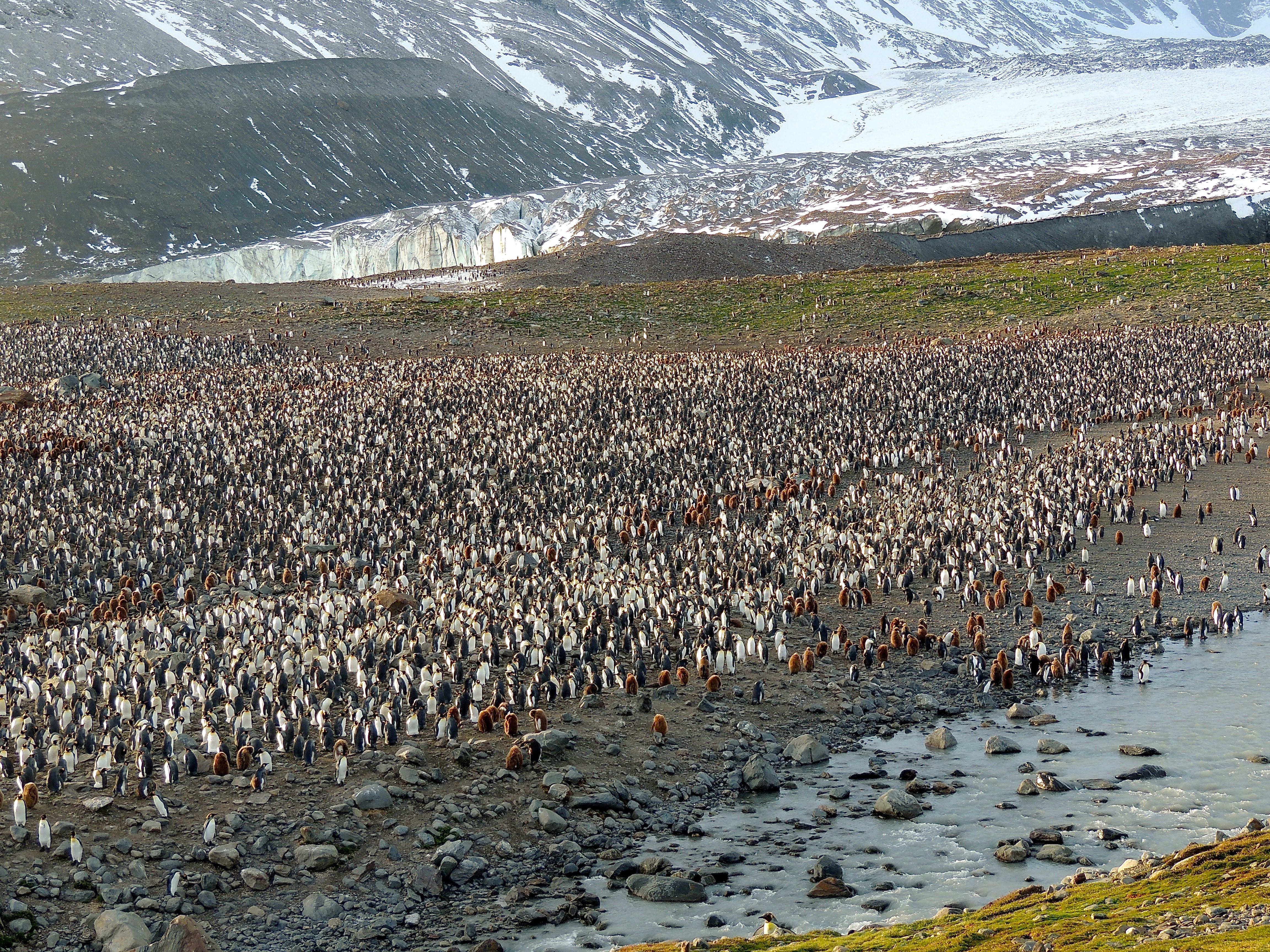 King Penguins - Photo by William Young
King Penguins - Photo by William Young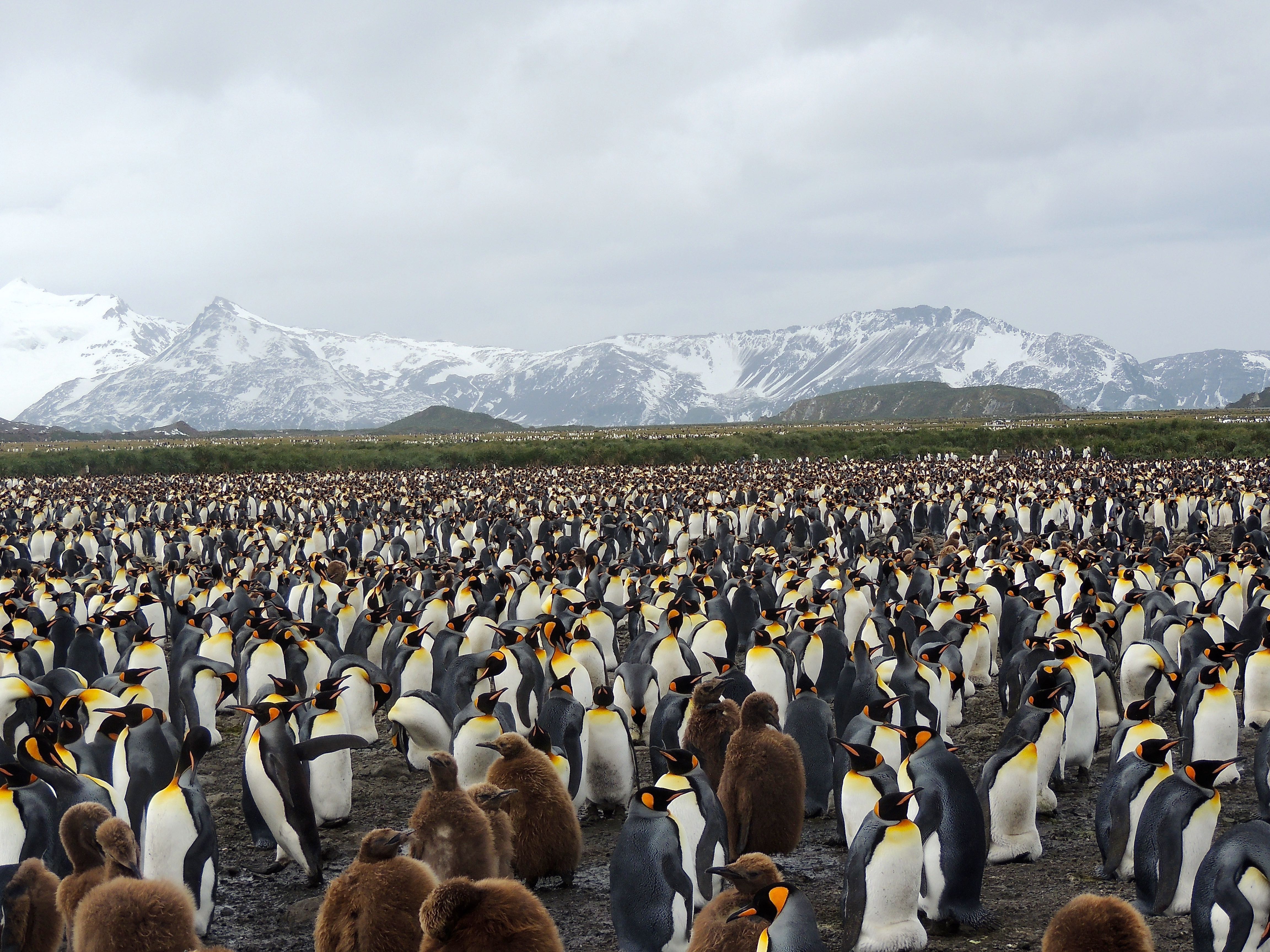 King Penguins - Photo by William Young
King Penguins - Photo by William Young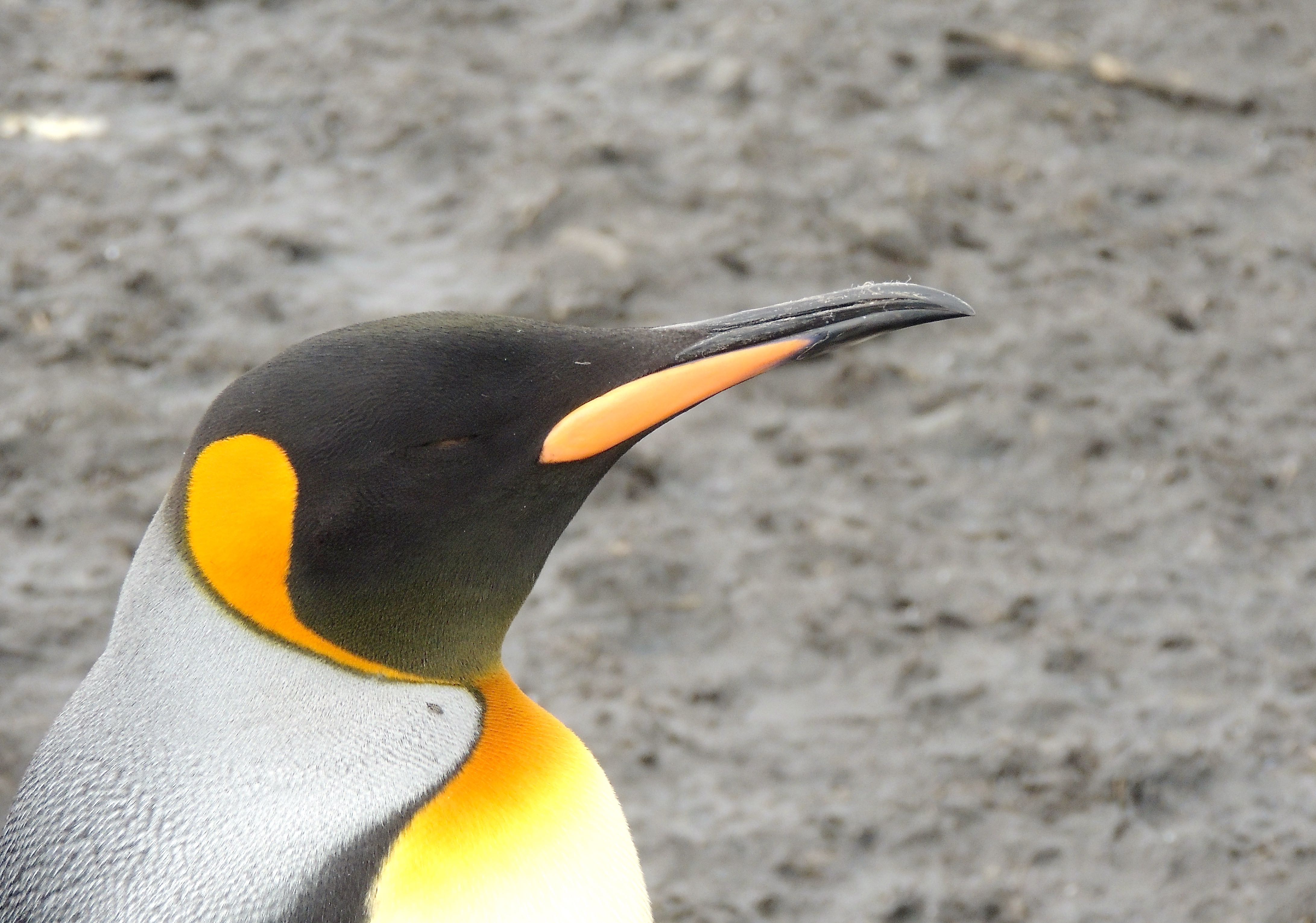 King Penguin - Photo by William Young
King Penguin - Photo by William Young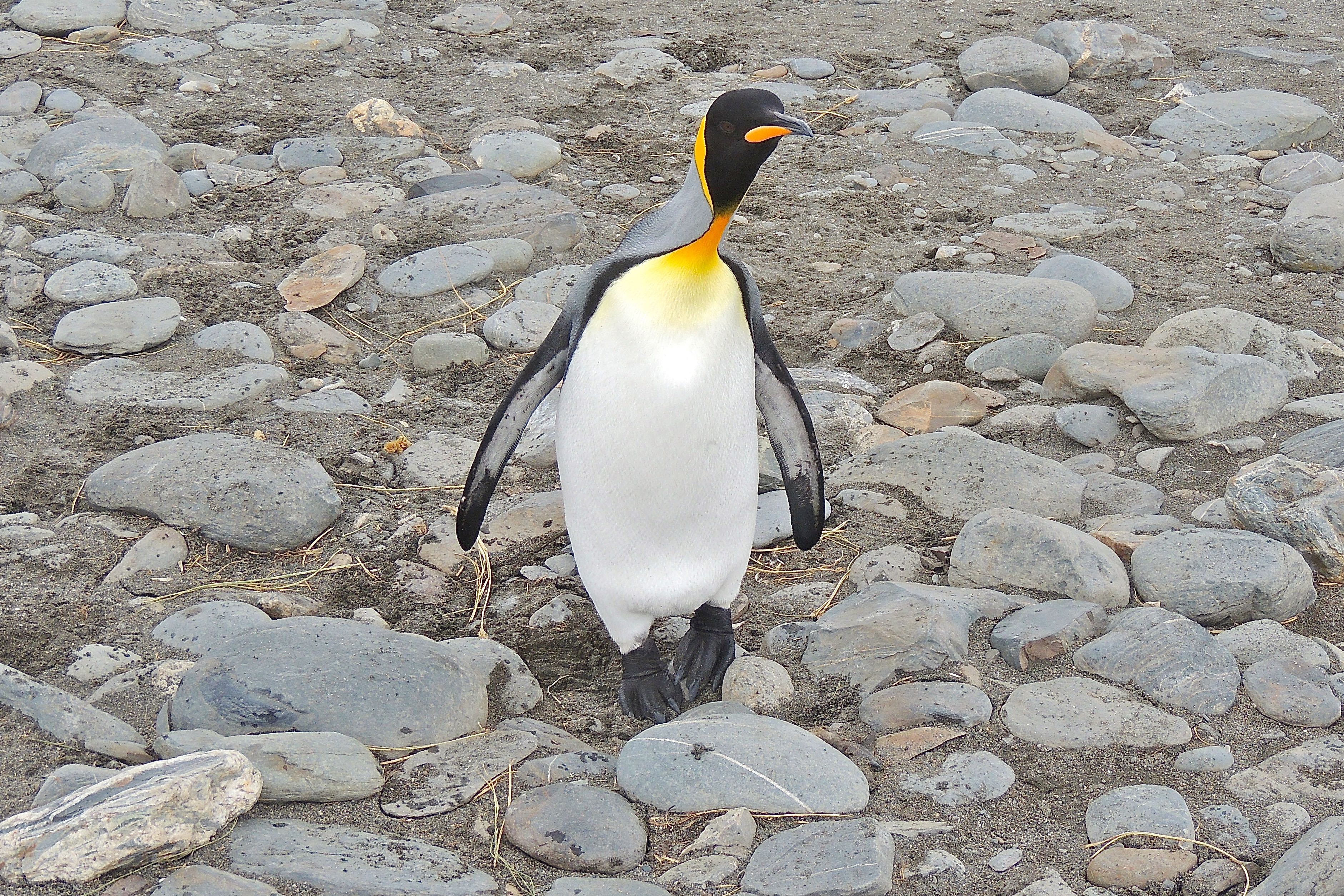 King Penguin - Photo by William Young
King Penguin - Photo by William Young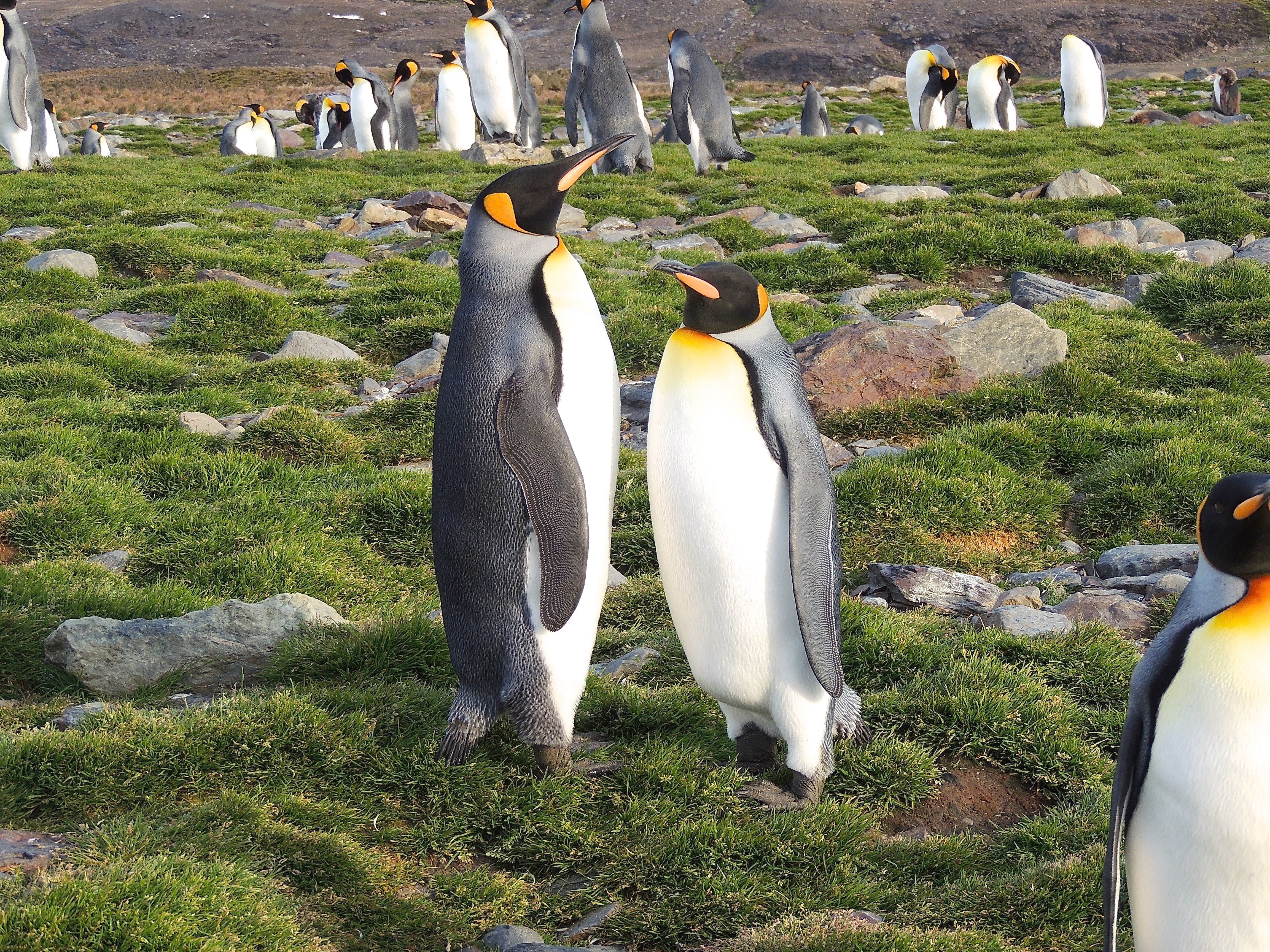 Male (left) and Female (right) King Penguins - Photo by William Young
Male (left) and Female (right) King Penguins - Photo by William Young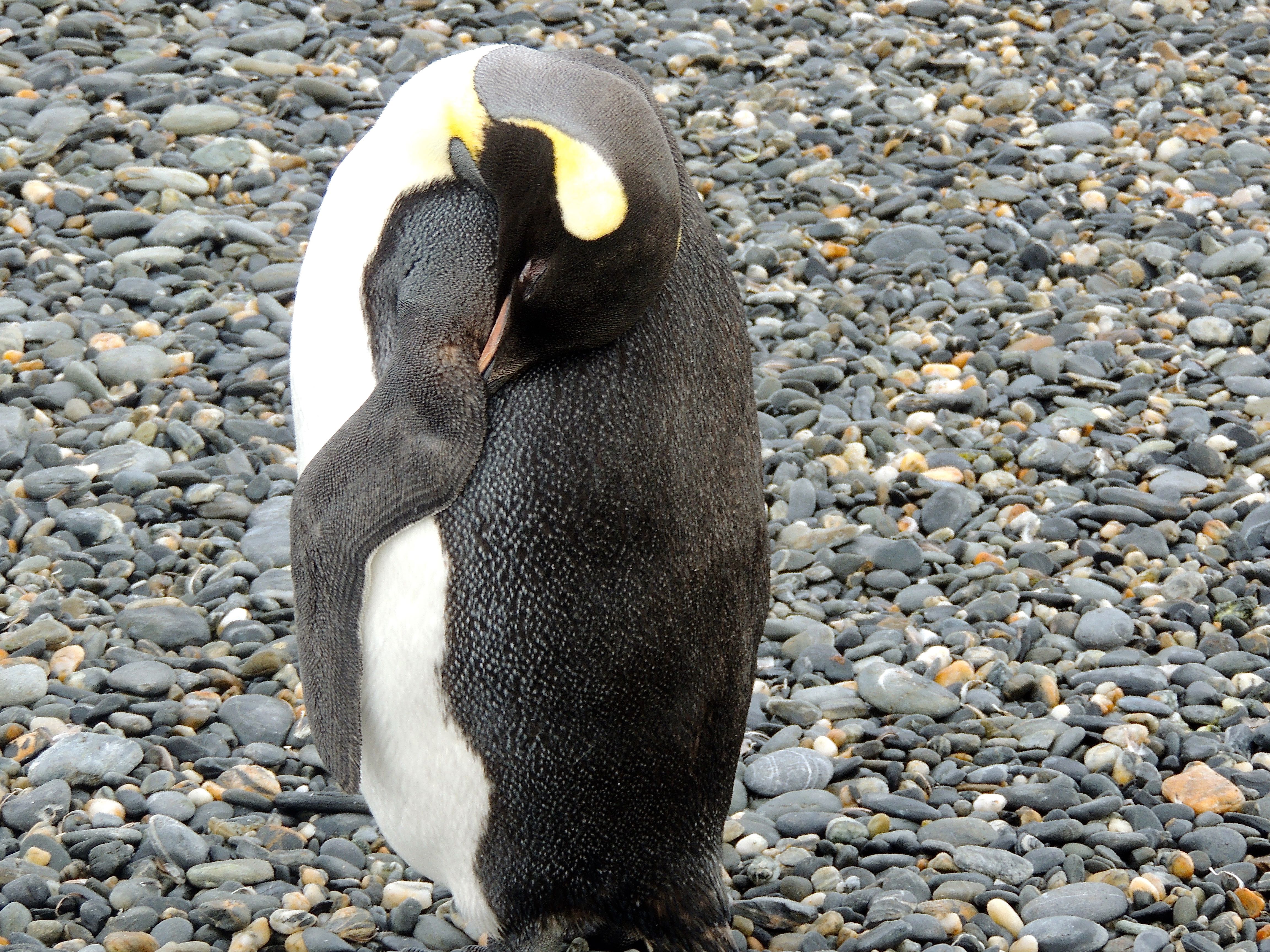 Second-year King Penguin Sleeping - Photo by William Young
Second-year King Penguin Sleeping - Photo by William YoungI saw King Penguins in countless plumages. Penguins engage in catastrophic molts, which means they grow all of their feathers at once. During this time, they cannot go into the water. Often the old feathers do not fall out until the new ones have grown in, which results in strange and hilarious looking intermediate molt patterns. Some King Penguins looked as if they were wearing a fur stole around their shoulders. One had a mane like a male lion. Some appeared to have long hair on their bellies. One had all brown fur-like feathers with a white throat that looked like a dickey. One appeared to be wearing white underpants. Some had fur-like feathers only on their head. Some appeared to be wearing yellow earmuffs. We saw a small group on Saunders Island who were mostly birds two years or older. One chick still had its brown plumage and was insistently begging for food. One adult was all alone, walking up a hill. During the trip, we tended to see large groups of penguins together, so seeing one walking up a hill by itself looked odd.
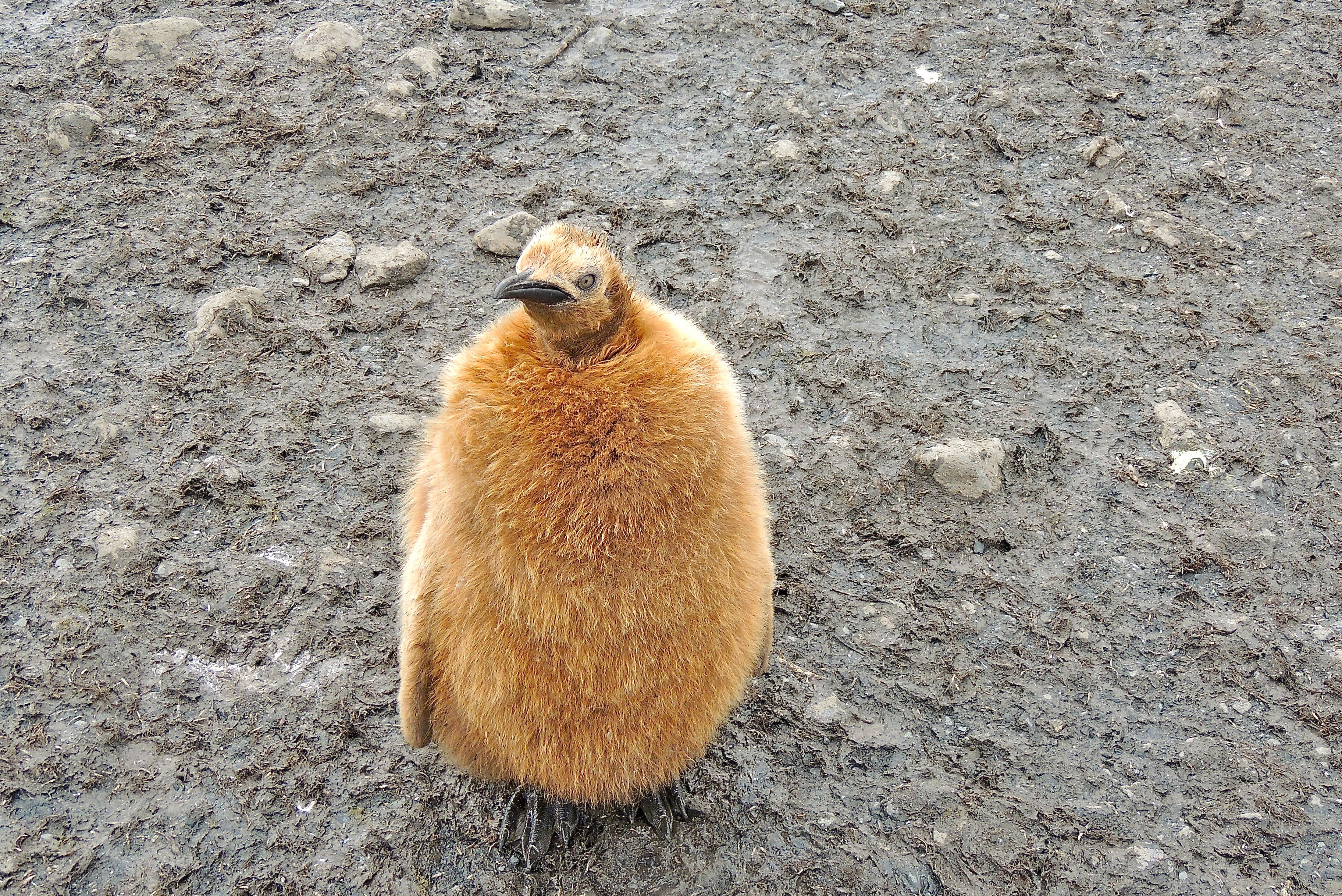 King Penguin Juvenile - Photo by William Young
King Penguin Juvenile - Photo by William Young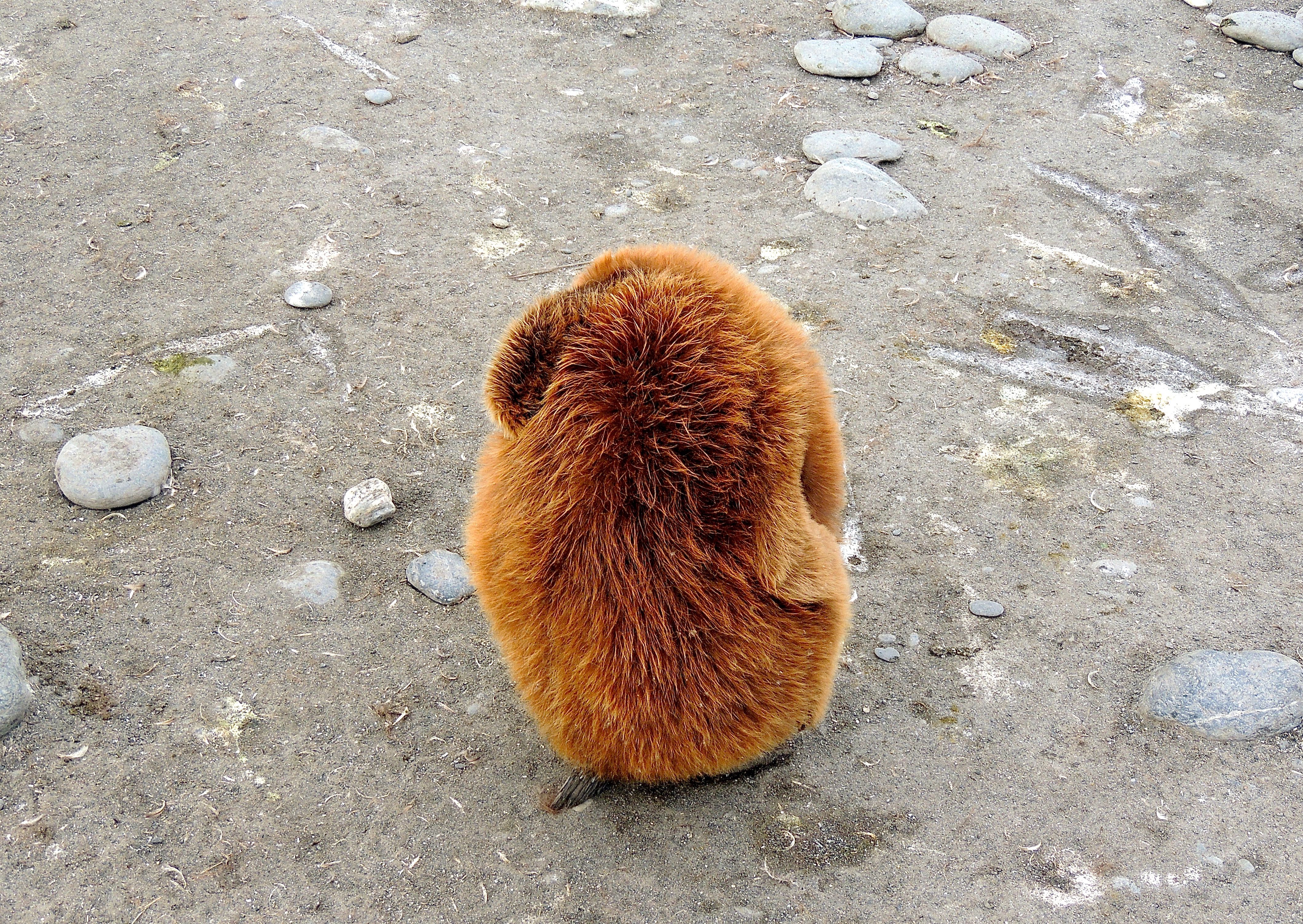 King Penguin Juvenile - Photo by William Young
King Penguin Juvenile - Photo by William Young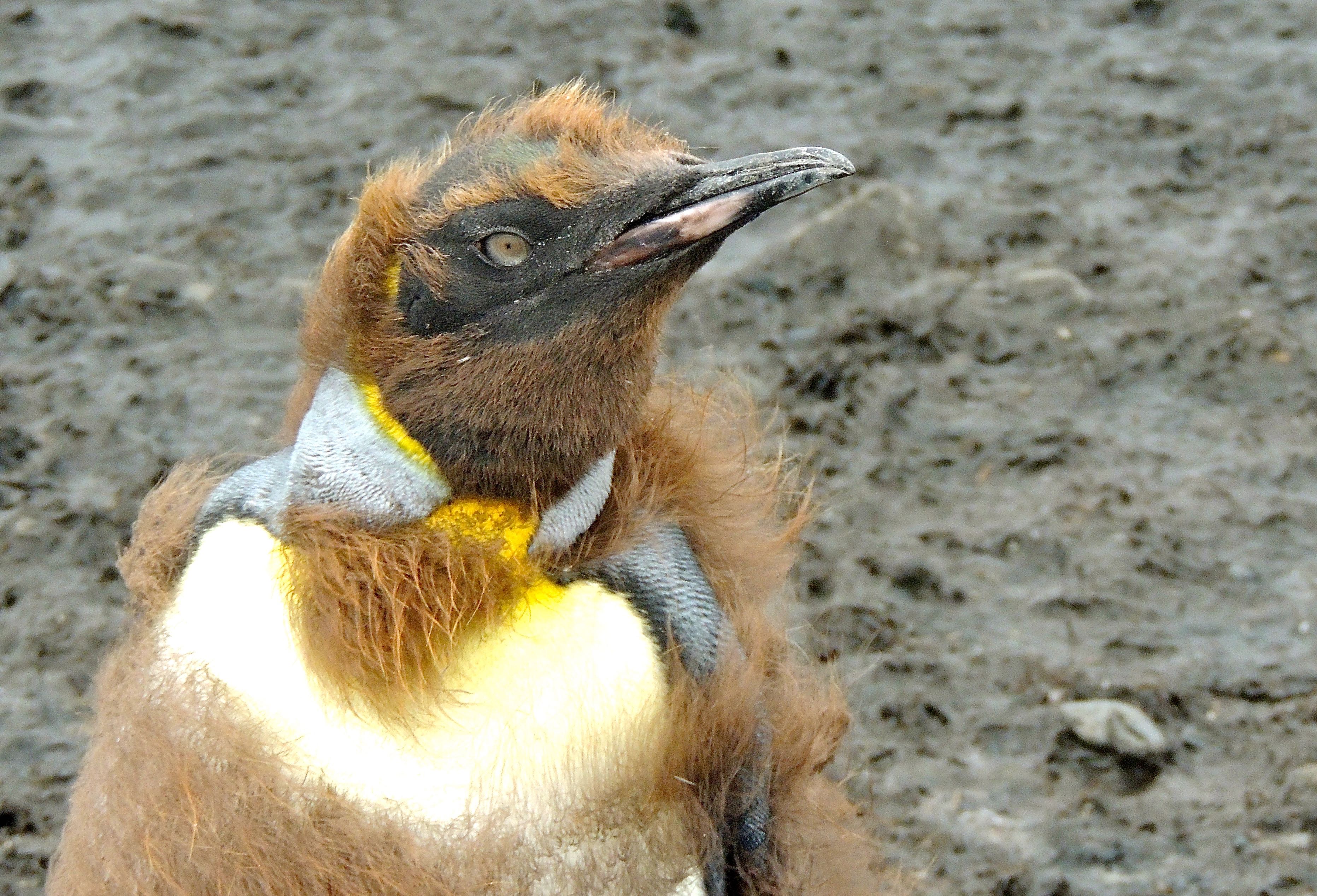 King Penguin Molting - Photo by William Young
King Penguin Molting - Photo by William Young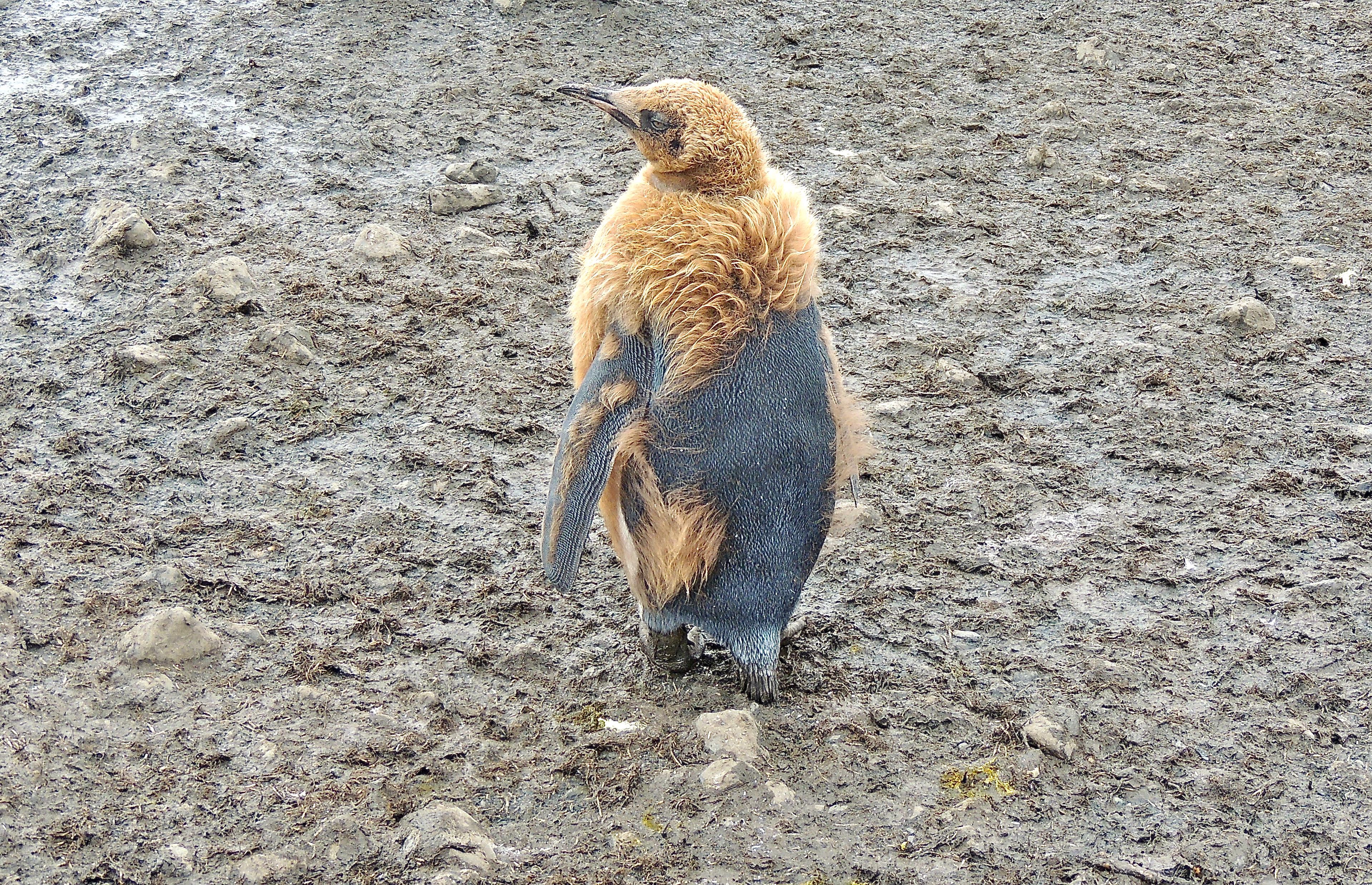 King Penguin Molting - Photo by William Young
King Penguin Molting - Photo by William Young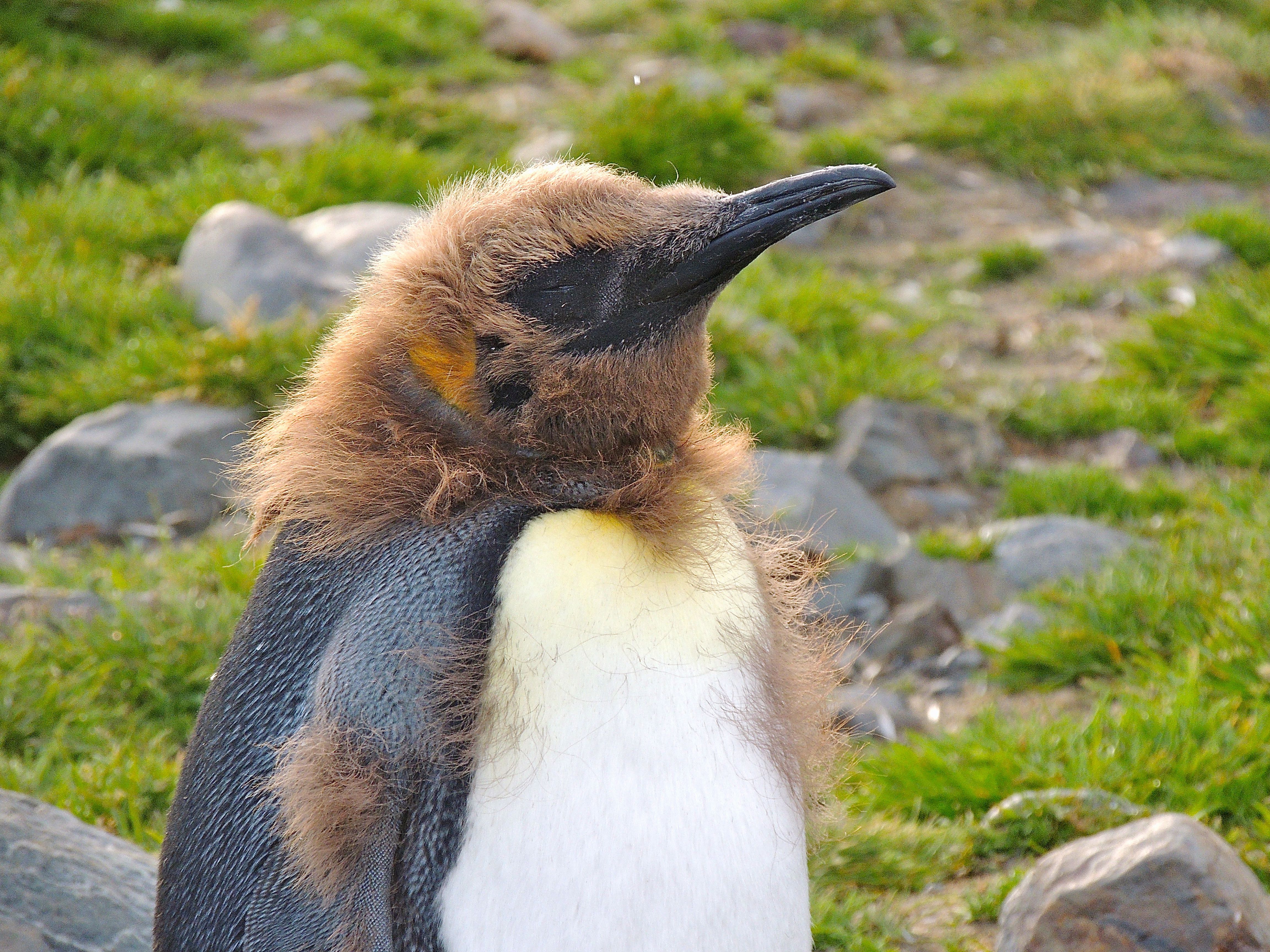 King Penguin Molting - Photo by William Young
King Penguin Molting - Photo by William Young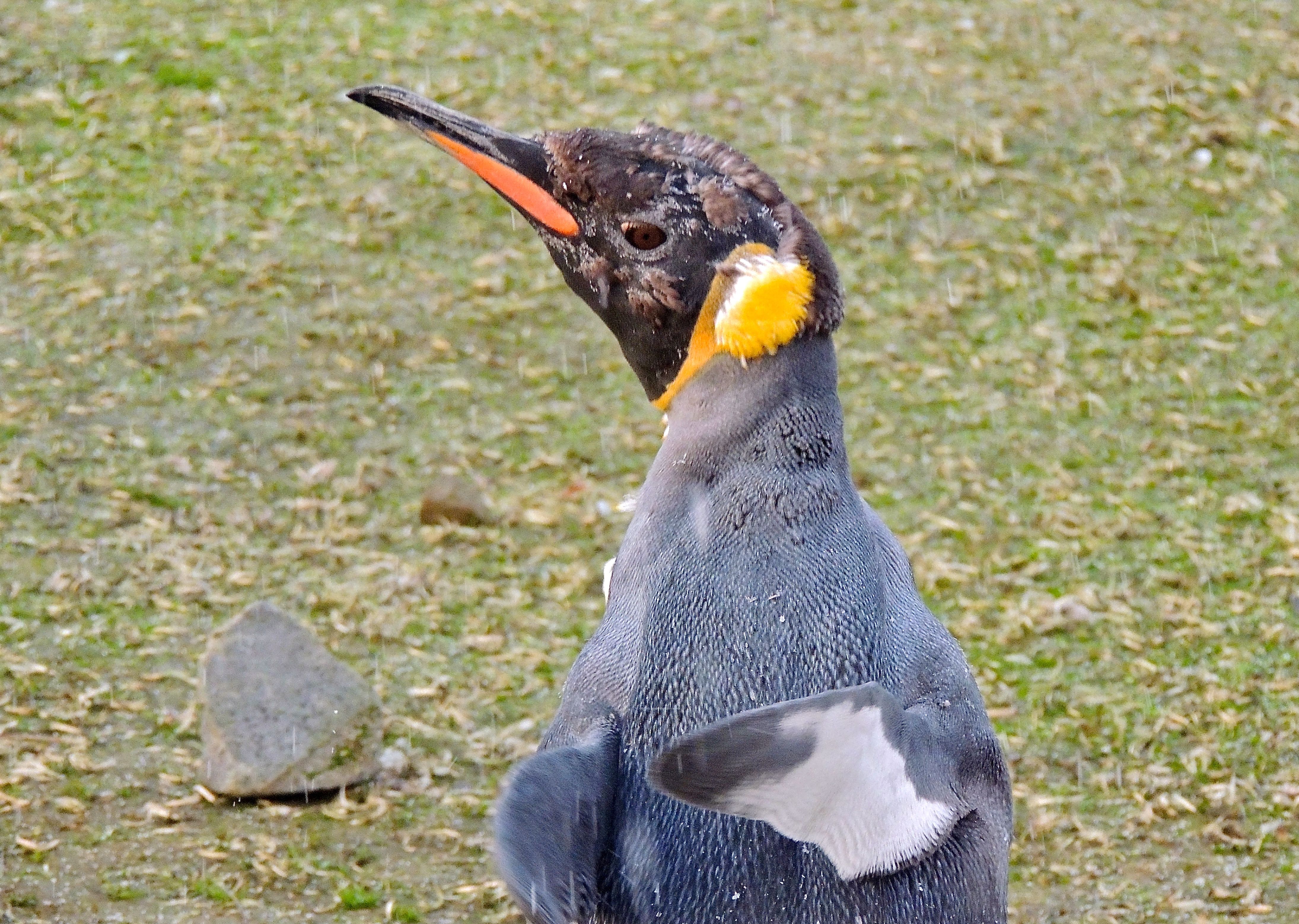 King Penguin Molting - Photo by William Young
King Penguin Molting - Photo by William Young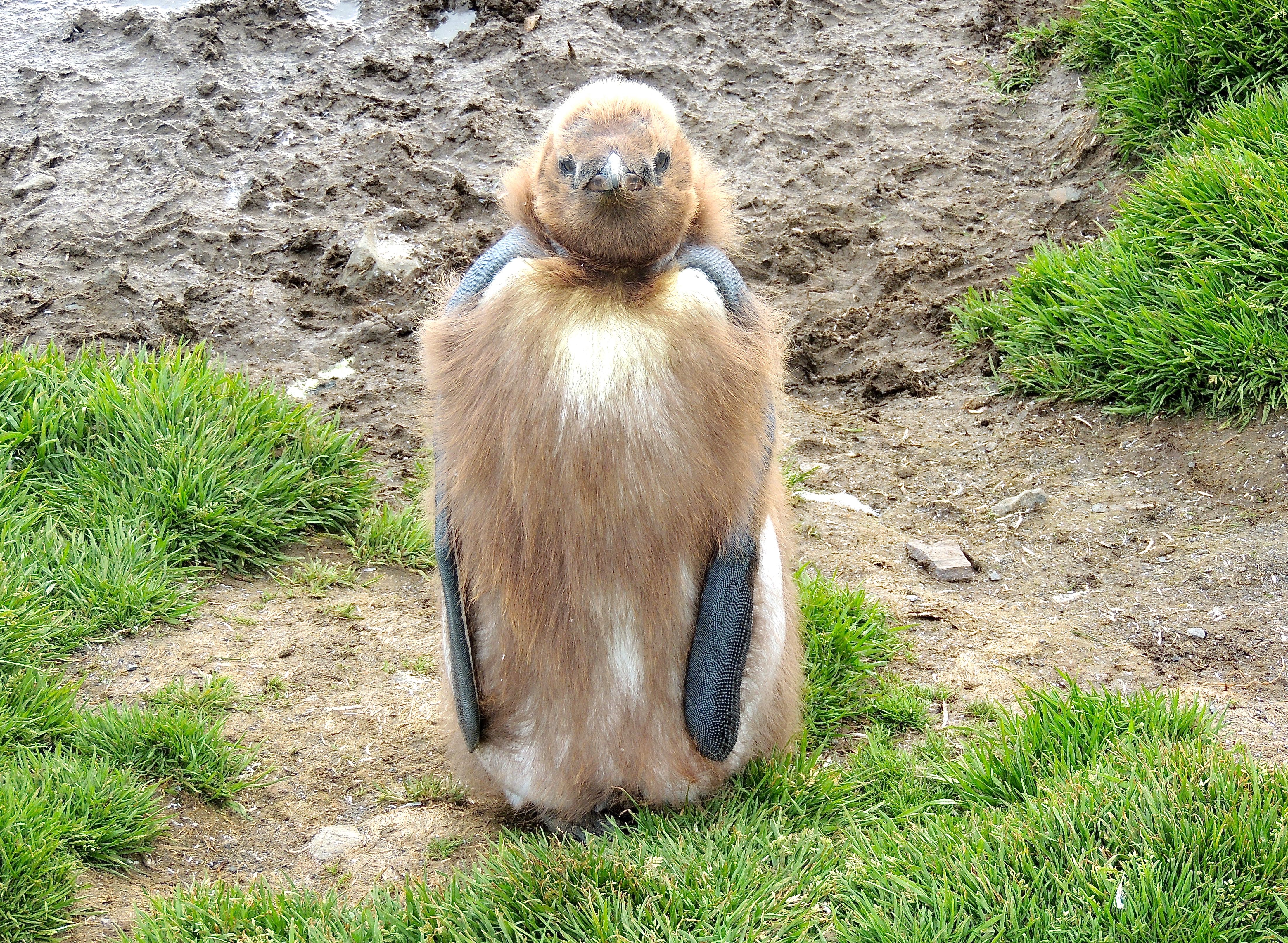 King Penguin Molting - Photo by William Young
King Penguin Molting - Photo by William Young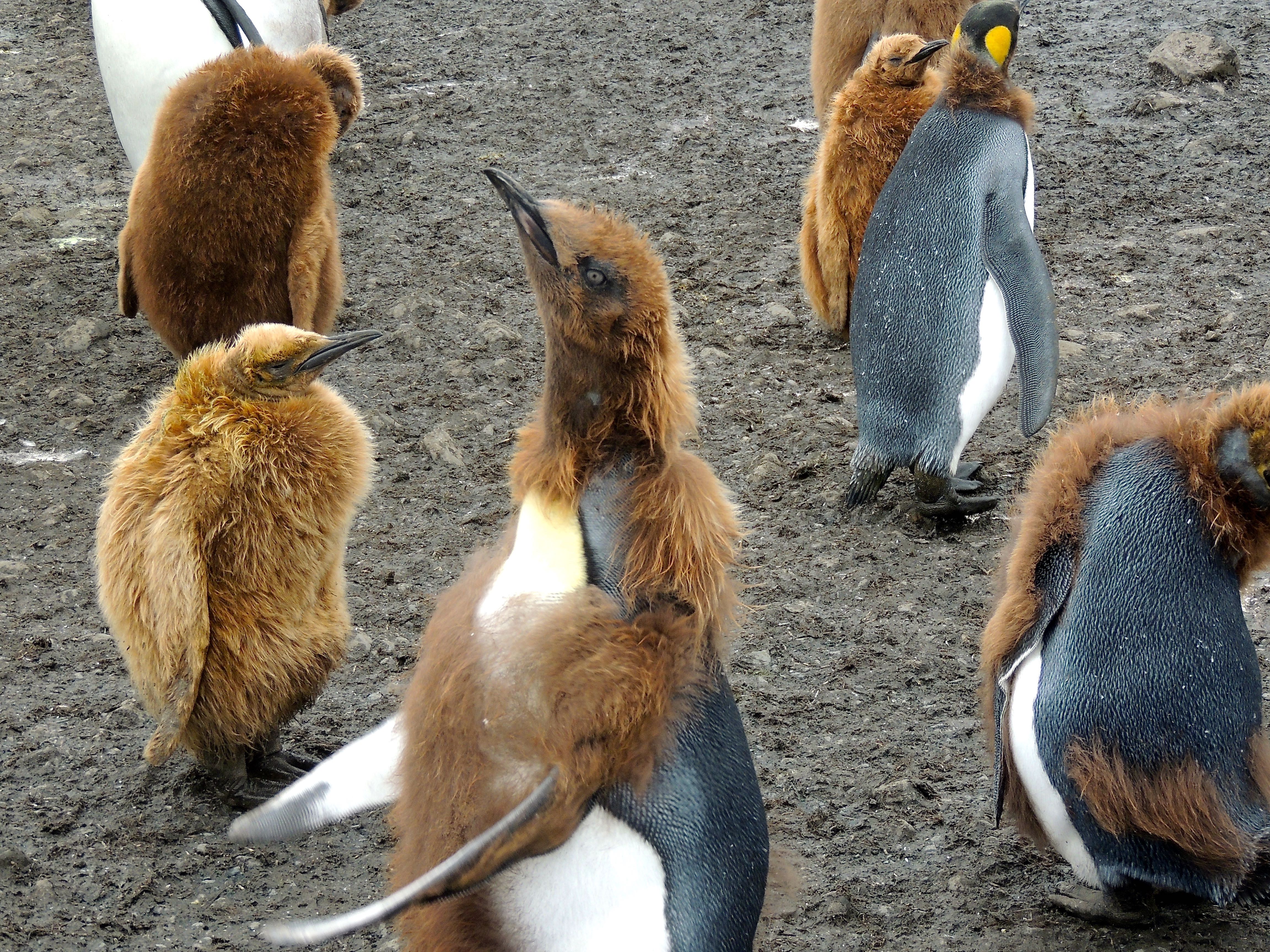 King Penguins Molting - Photo by William Young
King Penguins Molting - Photo by William Young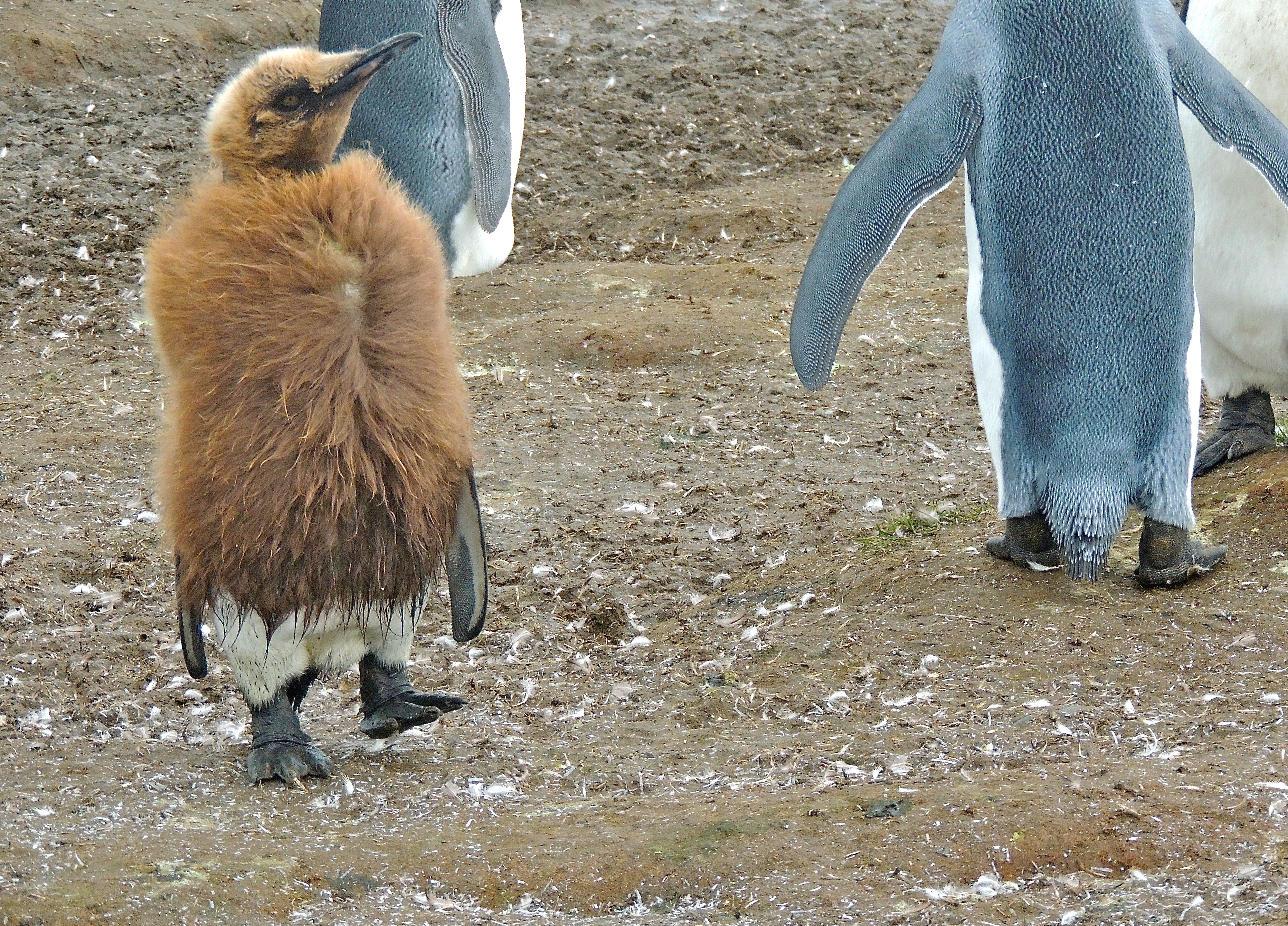 King Penguins - Photo by William Young
King Penguins - Photo by William Young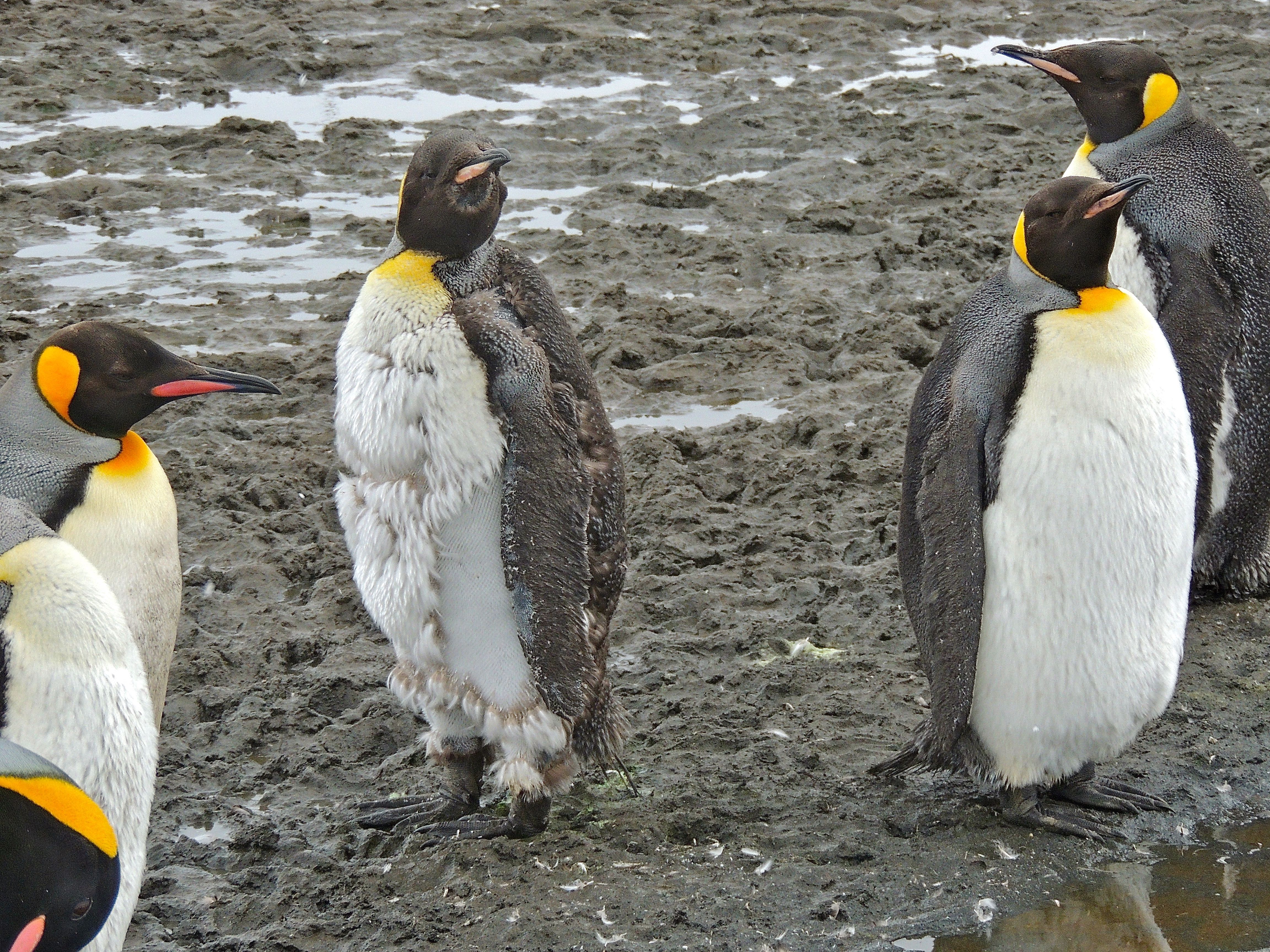 King Penguins - Photo by William Young
King Penguins - Photo by William YoungAt Saint Andrews, we walked through an area littered with white King Penguin feathers. The feathers were very small and looked matted. They did not look like feathers of the birds of North America. A King Penguin's back looks like a computer circuit board, with a lot of very small knobs packed tightly together. A penguin's plumage is the densest of any bird family. They have feathers all over their body, except their bill and feet. The silky outer surface helps to reduce friction. The outer feathers overlap tightly like fish scales, protecting a layer in which air is trapped for insulation. The insulation has evolved to keep penguins warm in both air and water. King Penguins and other penguin species are under serious threat because of climate change. In warm weather, they can easily overheat. Some penguins suffering from heat stress will eat snow to cool down, if available. Also, their ability to effectively forage for food can be affected by changes in ocean temperature of as little as several tenths of a degree Celsius, and the oceans are expected to warm by more than that.
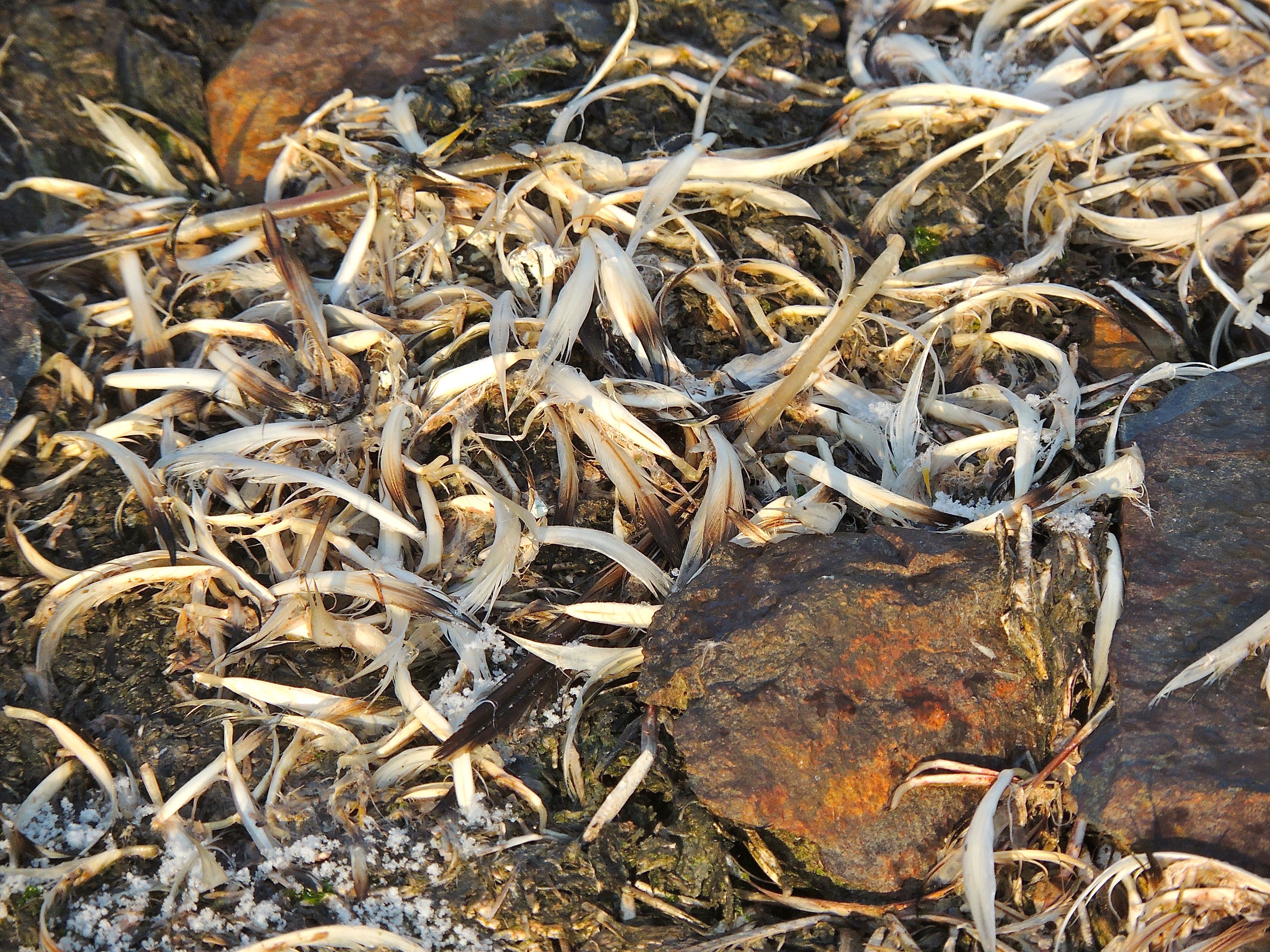 King Penguin Feathers - Photo by William Young
King Penguin Feathers - Photo by William Young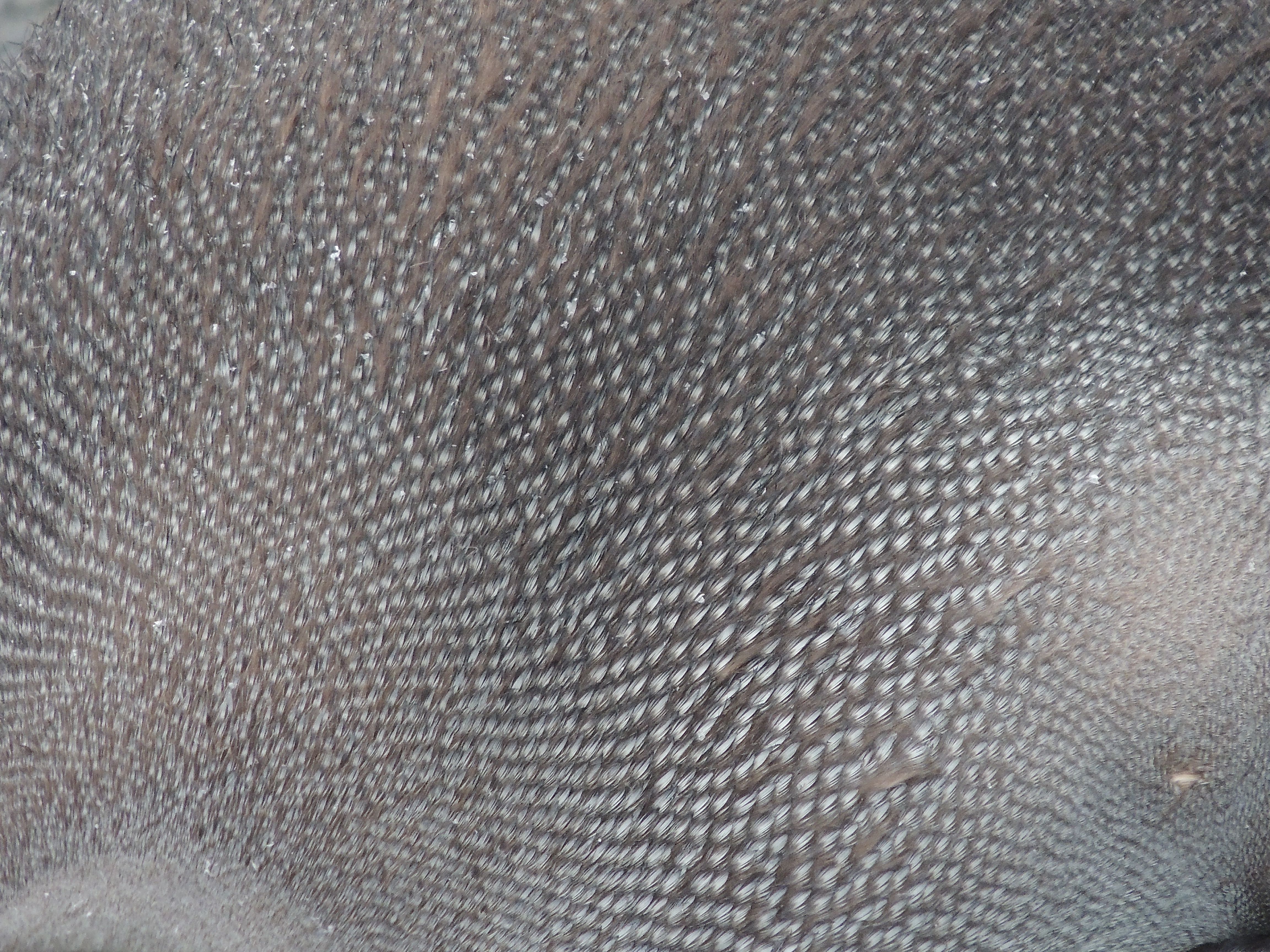 King Penguin's Back Feathers - Photo by William Young
King Penguin's Back Feathers - Photo by William Young
As with all other penguins, the King Penguin has a stiff tail. The tail contains a fusion of bones that taper to a point. Penguin tails help them to balance when standing upright. The stiff tail also helps them to steer when swimming. One of the penguins had a bloody breast, possibly from a scrape on a rock, a bite from a seal or other creature, or a fight with another penguin. The colonies typically had skuas, giant petrels, and sheathbills prowling around, hoping for a penguin meal. These species build their nests within the penguin colony, which saves them commuting time. We saw skuas eating dead penguins, and we saw the remains of penguins who had already been eaten. I saw the bottom of the feet of dead King Penguins. They are black and have a lot of little nipples close together for traction.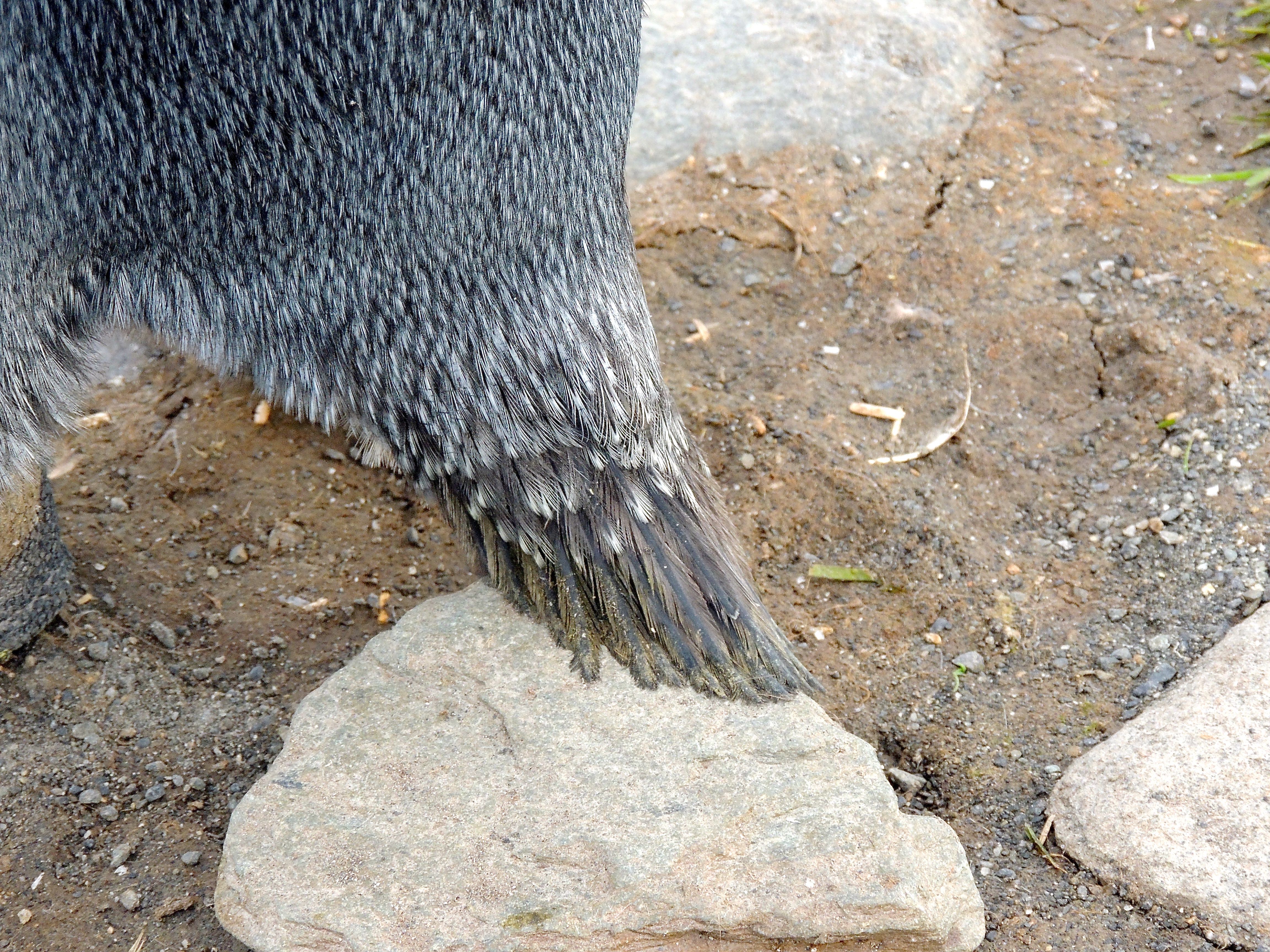 King Penguin Tail - Photo by William Young
King Penguin Tail - Photo by William Young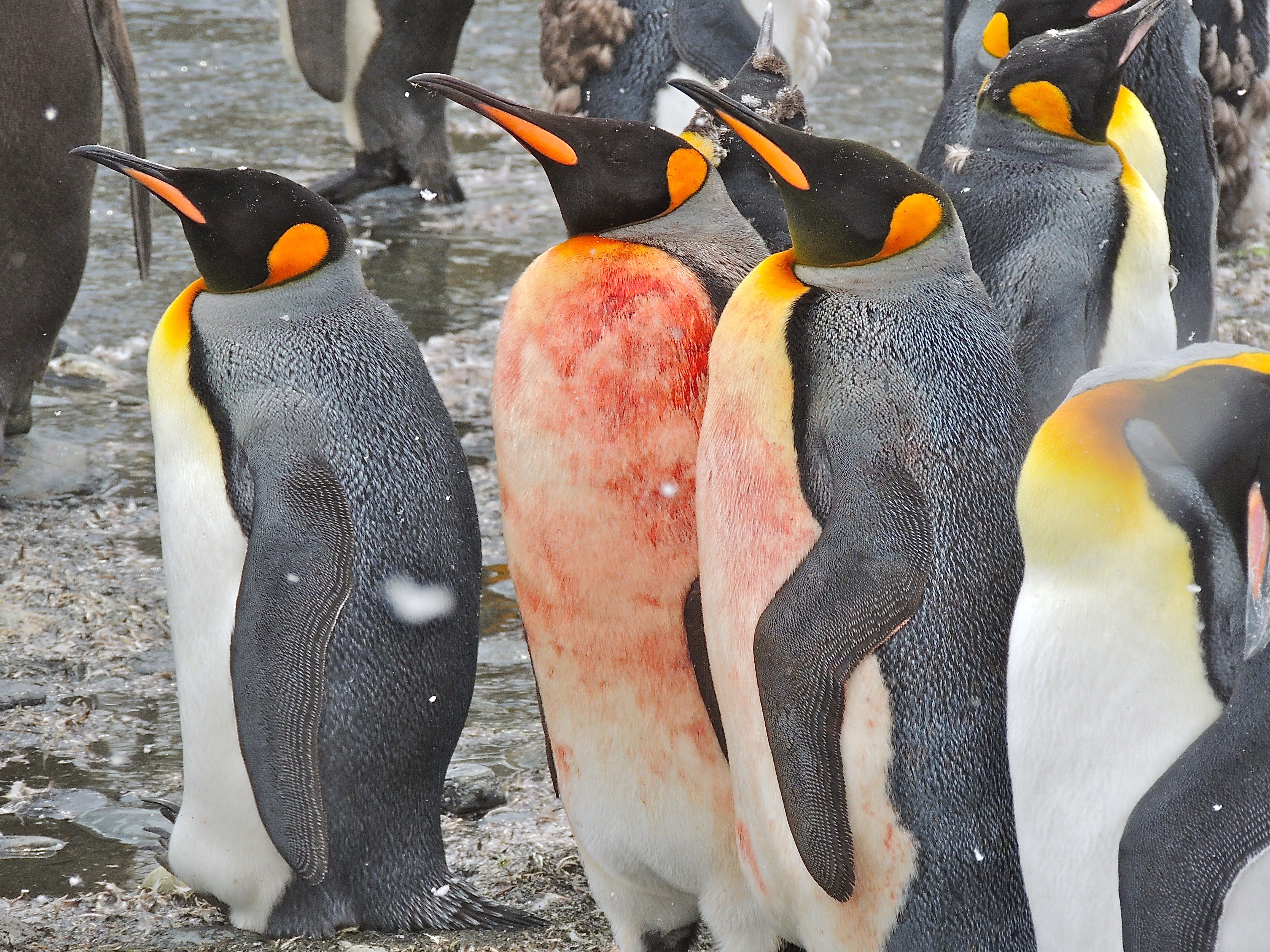 Bloodied King Penguin - Photo by William Young
Bloodied King Penguin - Photo by William Young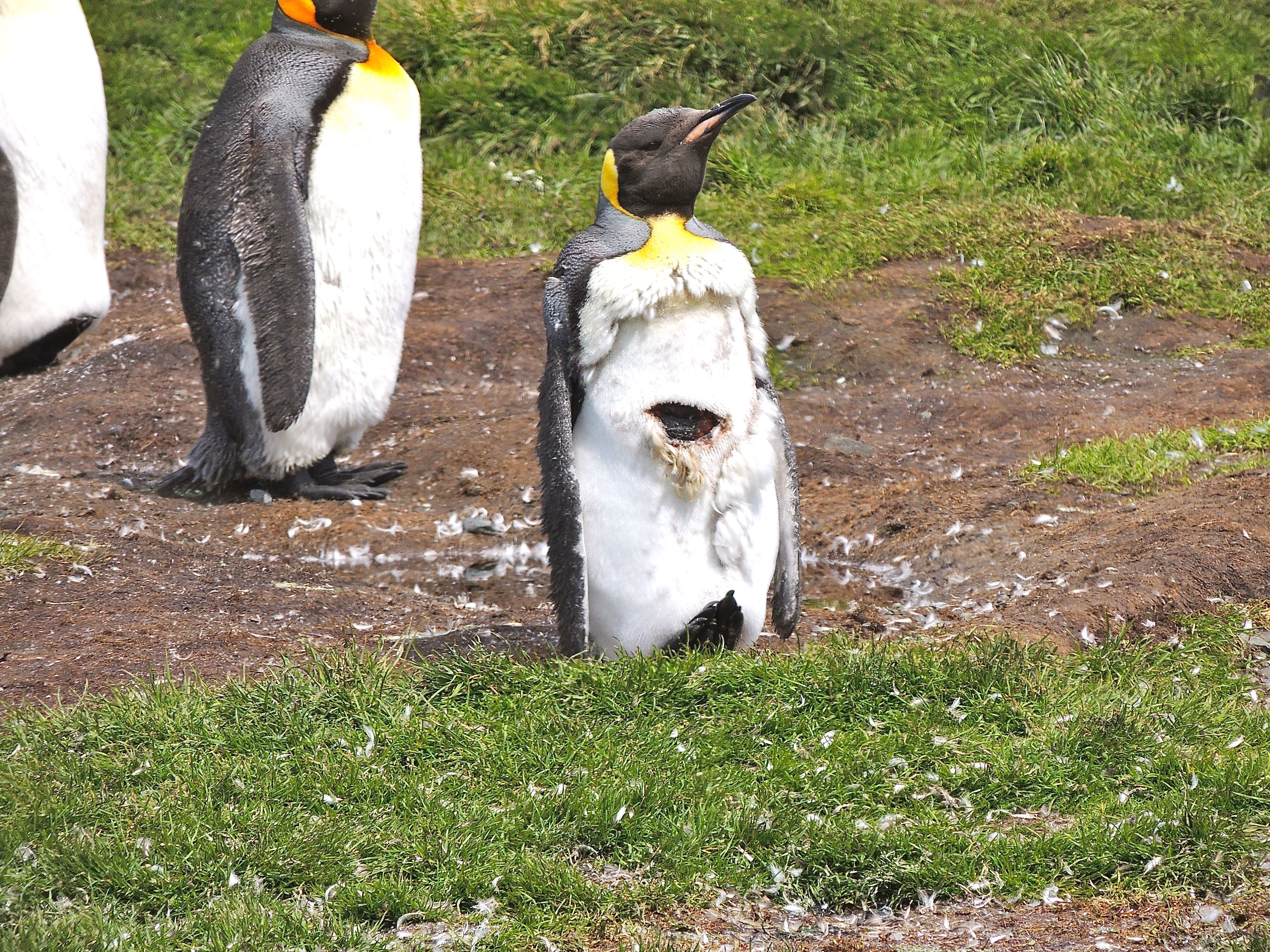 King Penguin Wound - Photo by William Young
King Penguin Wound - Photo by William Young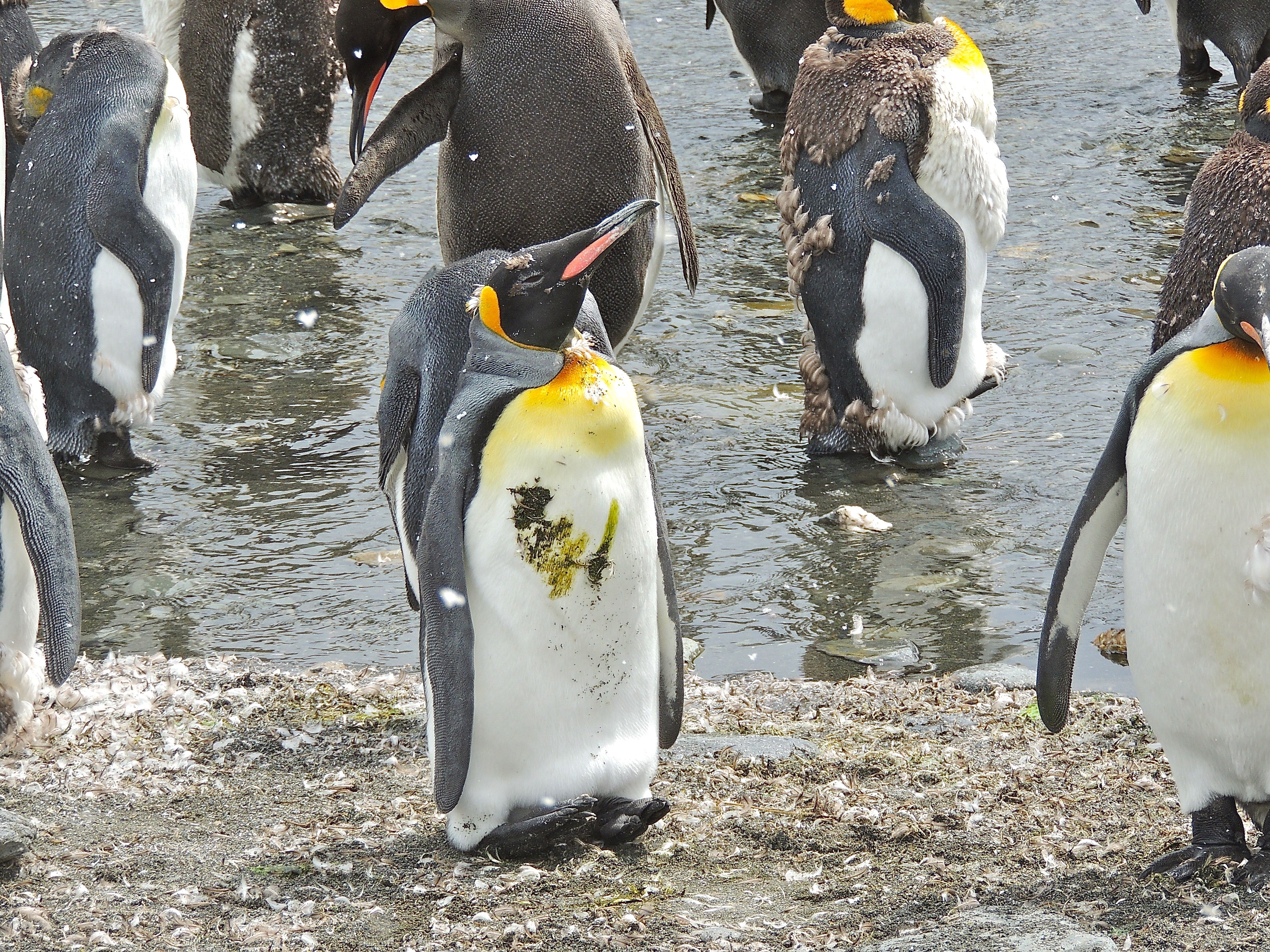 King Penguin with Stained Breast - Photo by William Young
King Penguin with Stained Breast - Photo by William Young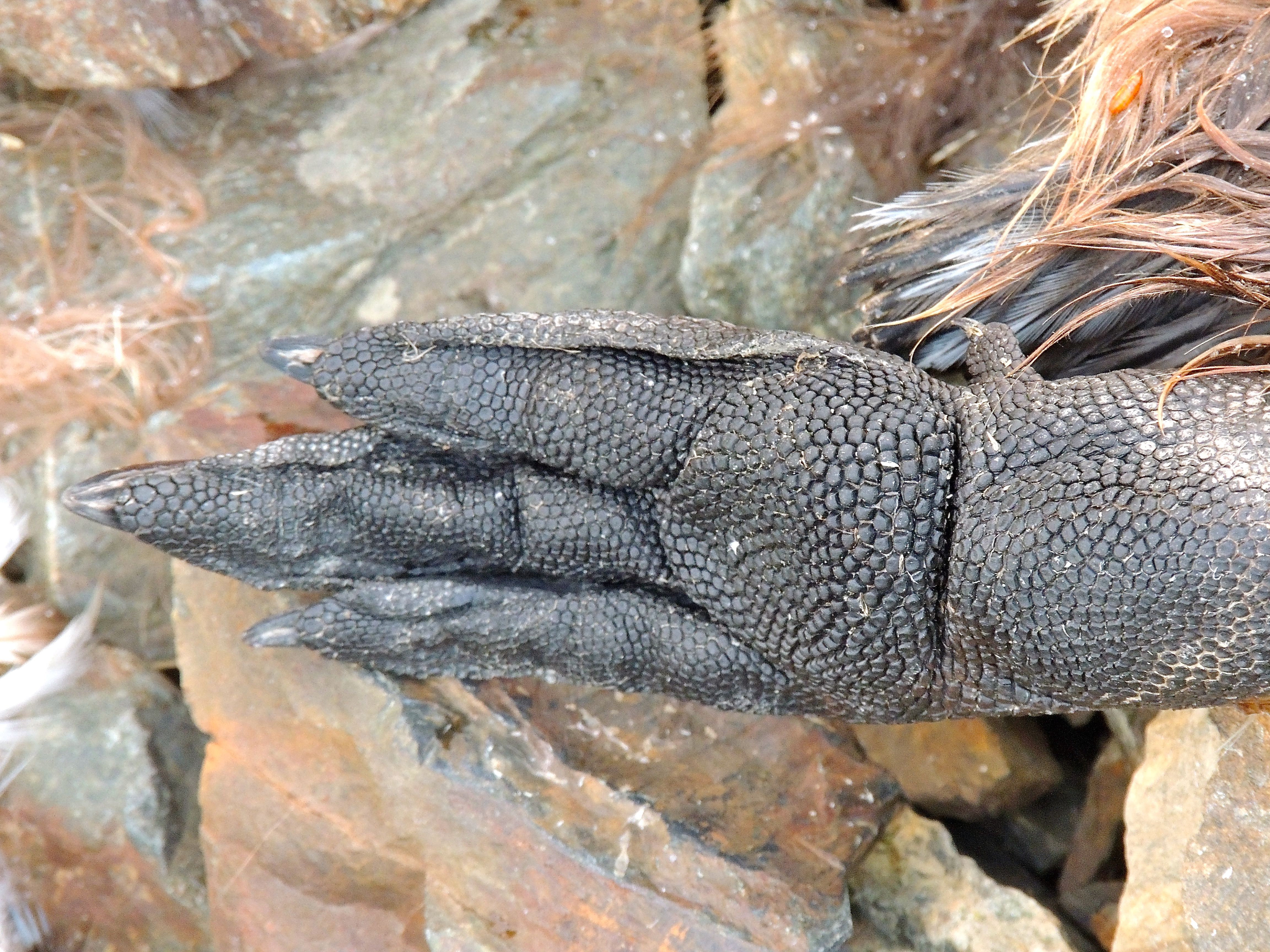 King Penguin Foot - Photo by William Young
King Penguin Foot - Photo by William Young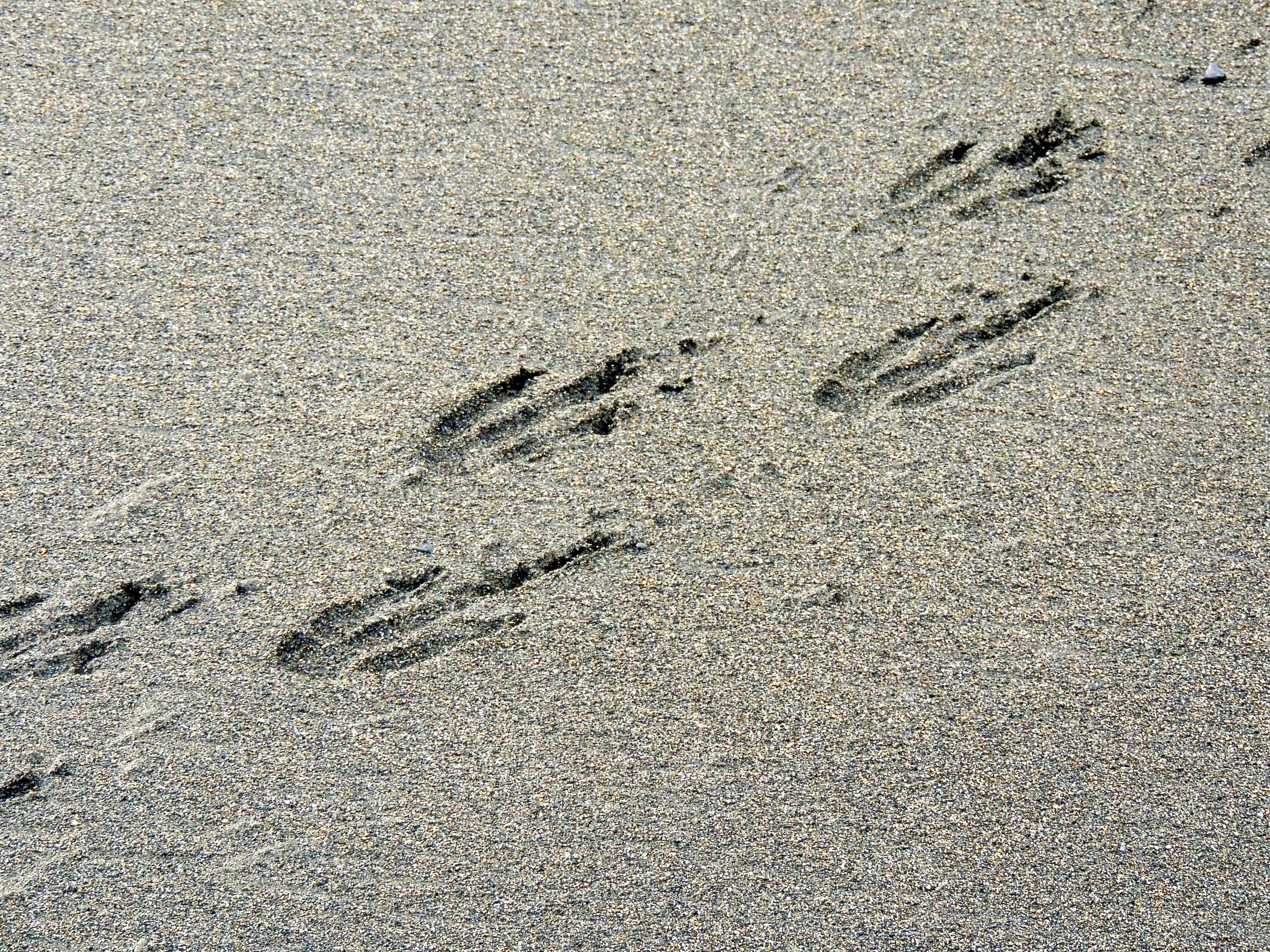 King Penguin Footprints - Photo by William Young
King Penguin Footprints - Photo by William Young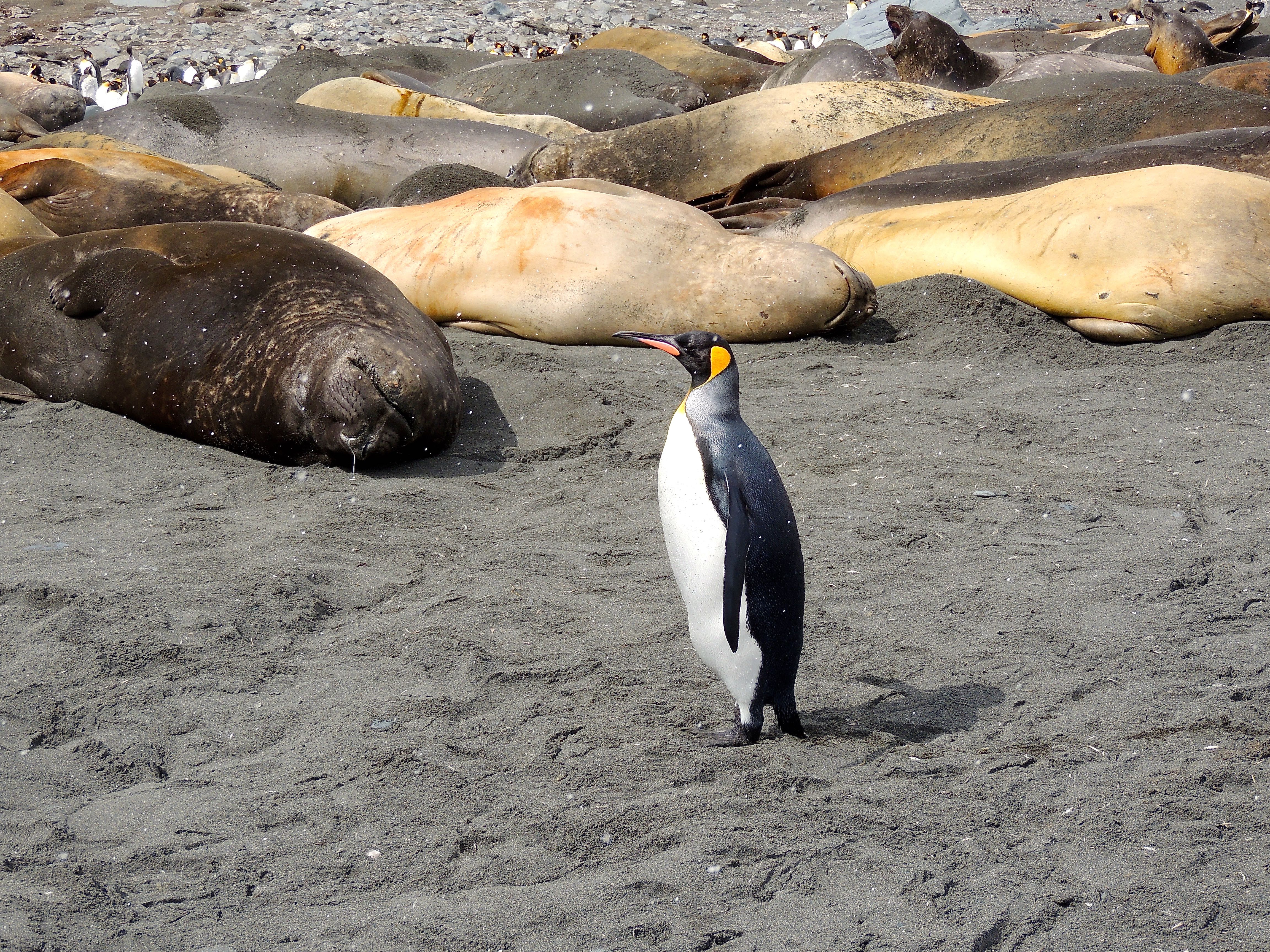 King Penguin and Southern Elephant Seals - Photo by William Young
King Penguin and Southern Elephant Seals - Photo by William YoungSome of the behavior of the King Penguins was amusing. There was a fast running stream at Saint Andrews, and I saw a King Penguin swimming down as if it were white water rafting, having to maneuver around rocks. A giant petrel also did this. Some of the King Penguins were at the beach and swam out a short distance before appearing to body surf in with the tide. As the water receded, they stood up and walked toward the sand, only to return to the water to try again. They did not appear to be looking for food when they did this, and I wondered if they were doing it to keep cool, to bathe their feathers, or simply because it was fun. One King Penguin was standing on a small mound and looked around from the slightly superior perch. The penguins sometimes lifted their heads and vocalized, and with some, I could see their breath condensing as they did this. Many of the penguins were lying on their stomach, possibly because of heat stress. They can stay cooler by exposing the bottom of their feet to the air. Some of the young ones were doing this, and even though they were probably only sleeping, they looked as if they could not get up. A lot of the young birds waved their flippers about as if trying to fly. They probably did this to strengthen the muscles they would need for swimming. Some people on our trip had cameras with tripods, and the penguins sometimes came close to examine them. The female King Penguins have a large flap of skin on their belly which can be used to cover an egg resting on their feet. I saw quite a few distended belly flaps. Some of the birds had eggs, and others had newborn chicks. Because the reproductive cycle of these penguins can last more than a year, one can see most phases of it when visiting a colony. I also saw a pair engaged in courtship, which involves the male and female getting close together and doing what looked like a slow contact improvisation dance, snaking their heads and bodies around one another. Seeing all of these King Penguins and their behaviors at Saint Andrews with mountains and glaciers in the background was one of the highlights of my trip.
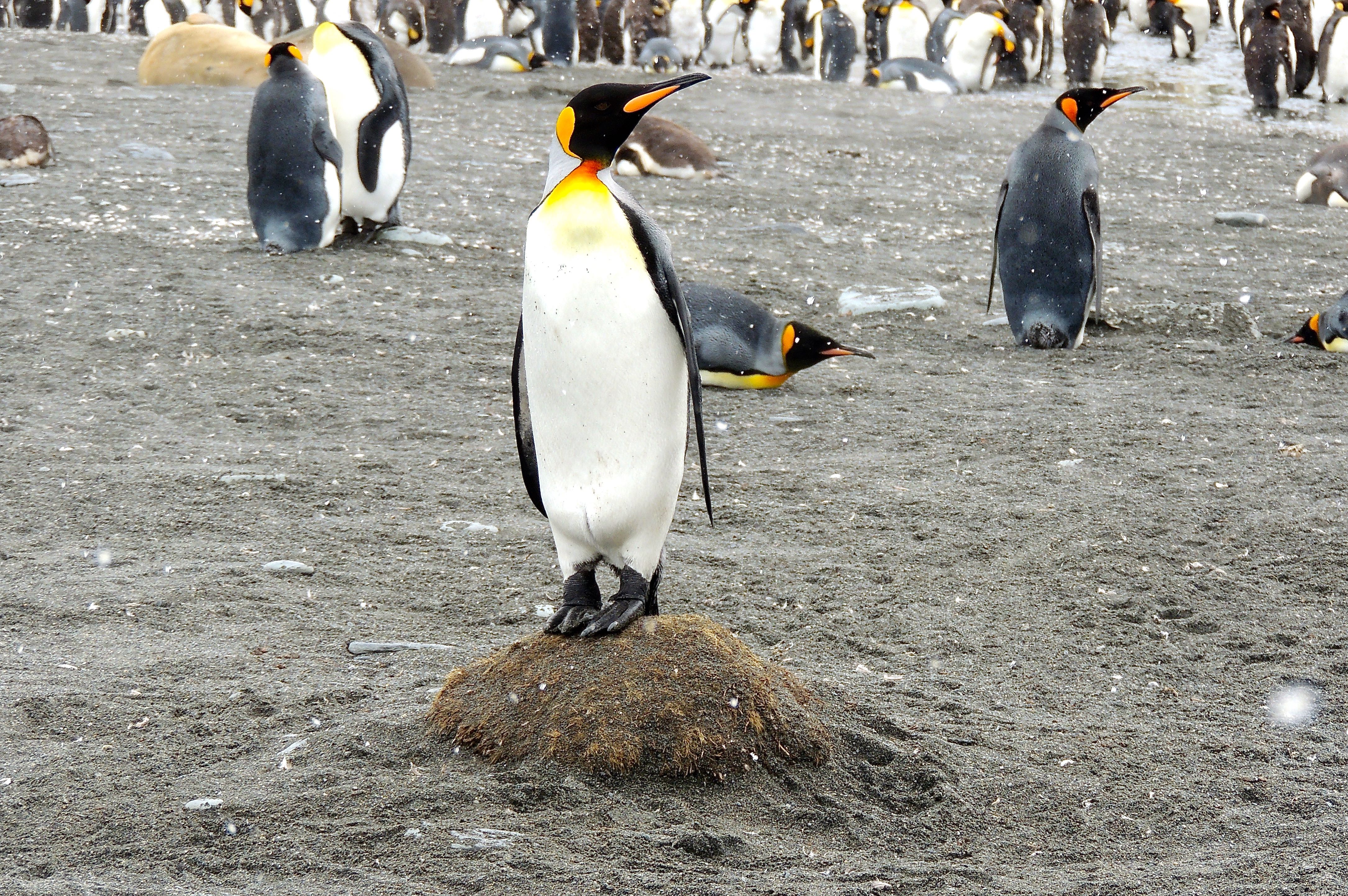 King Penguin Standing on Mound - Photo by William Young
King Penguin Standing on Mound - Photo by William Young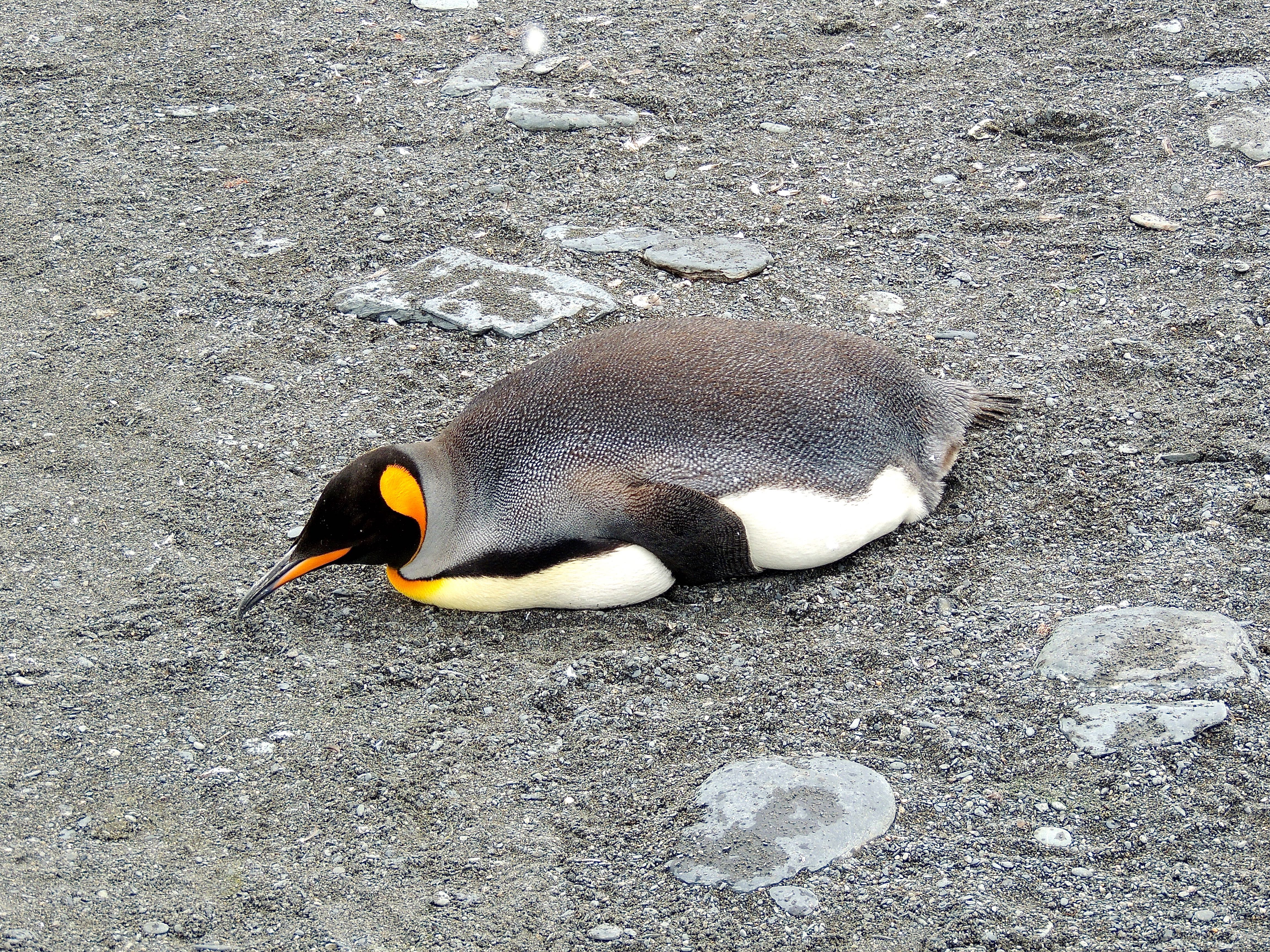 King Penguin - Photo by William Young
King Penguin - Photo by William Young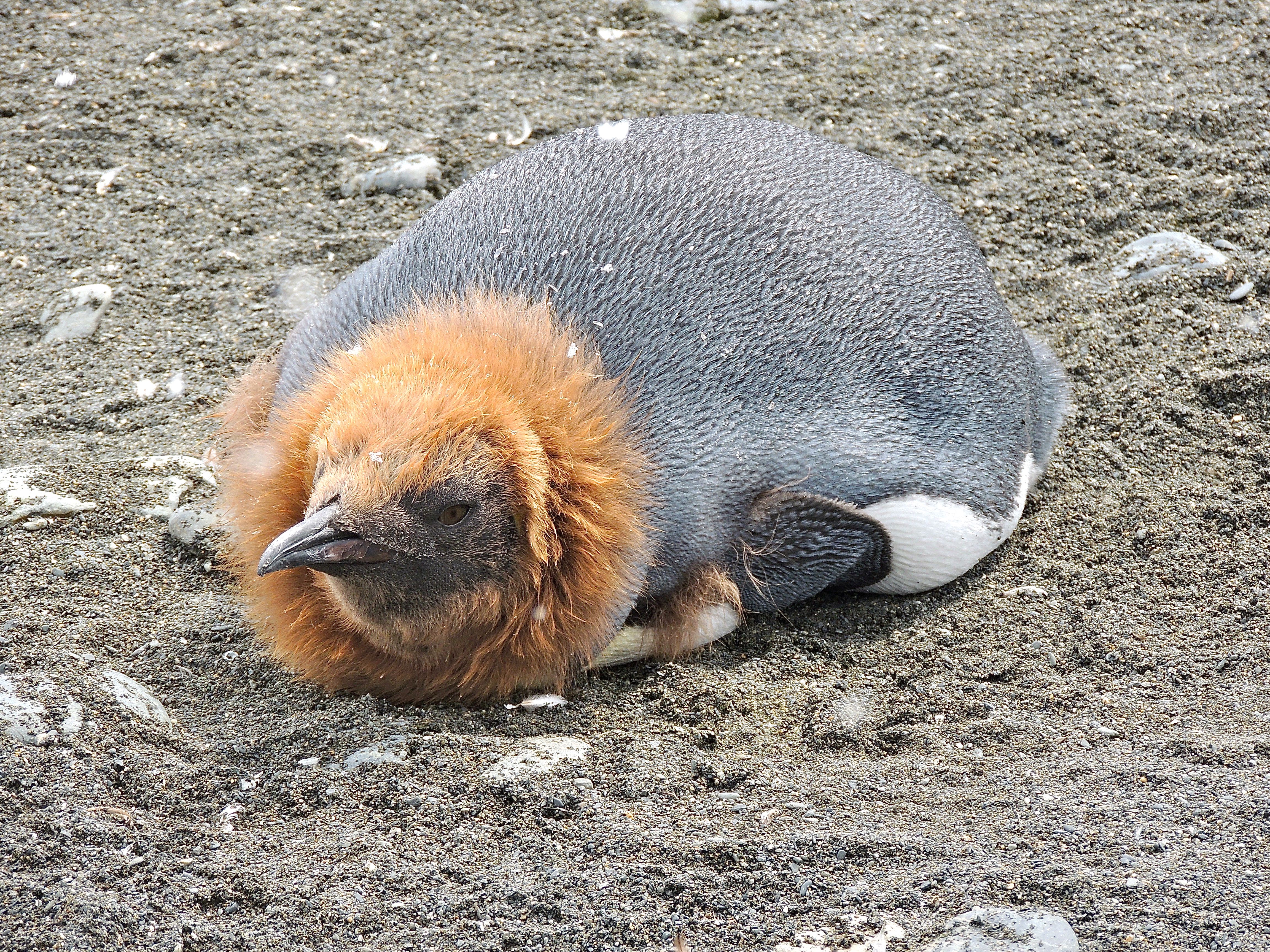 King Penguin - Photo by William Young
King Penguin - Photo by William Young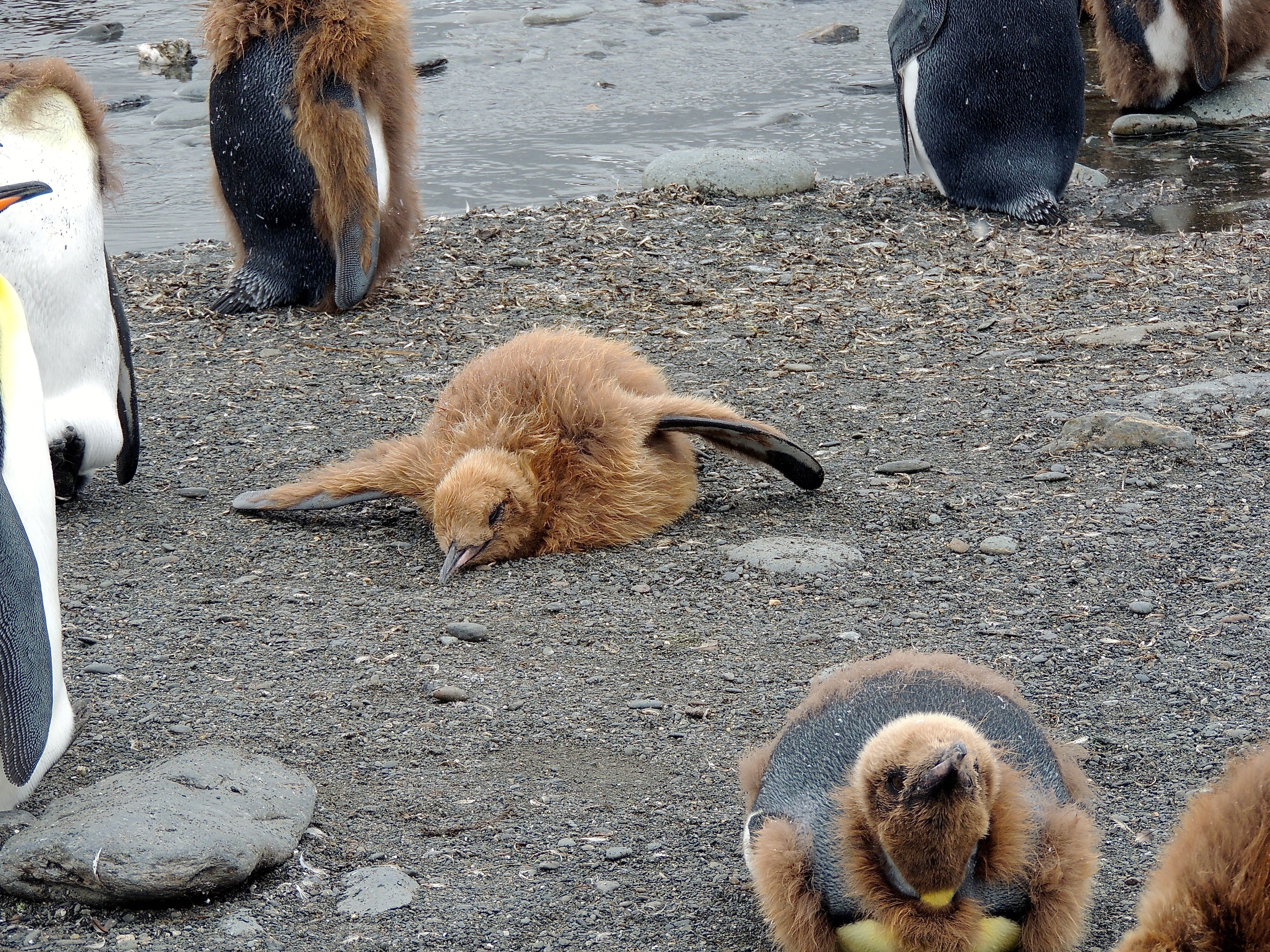 King Penguin - Photo by William Young
King Penguin - Photo by William Young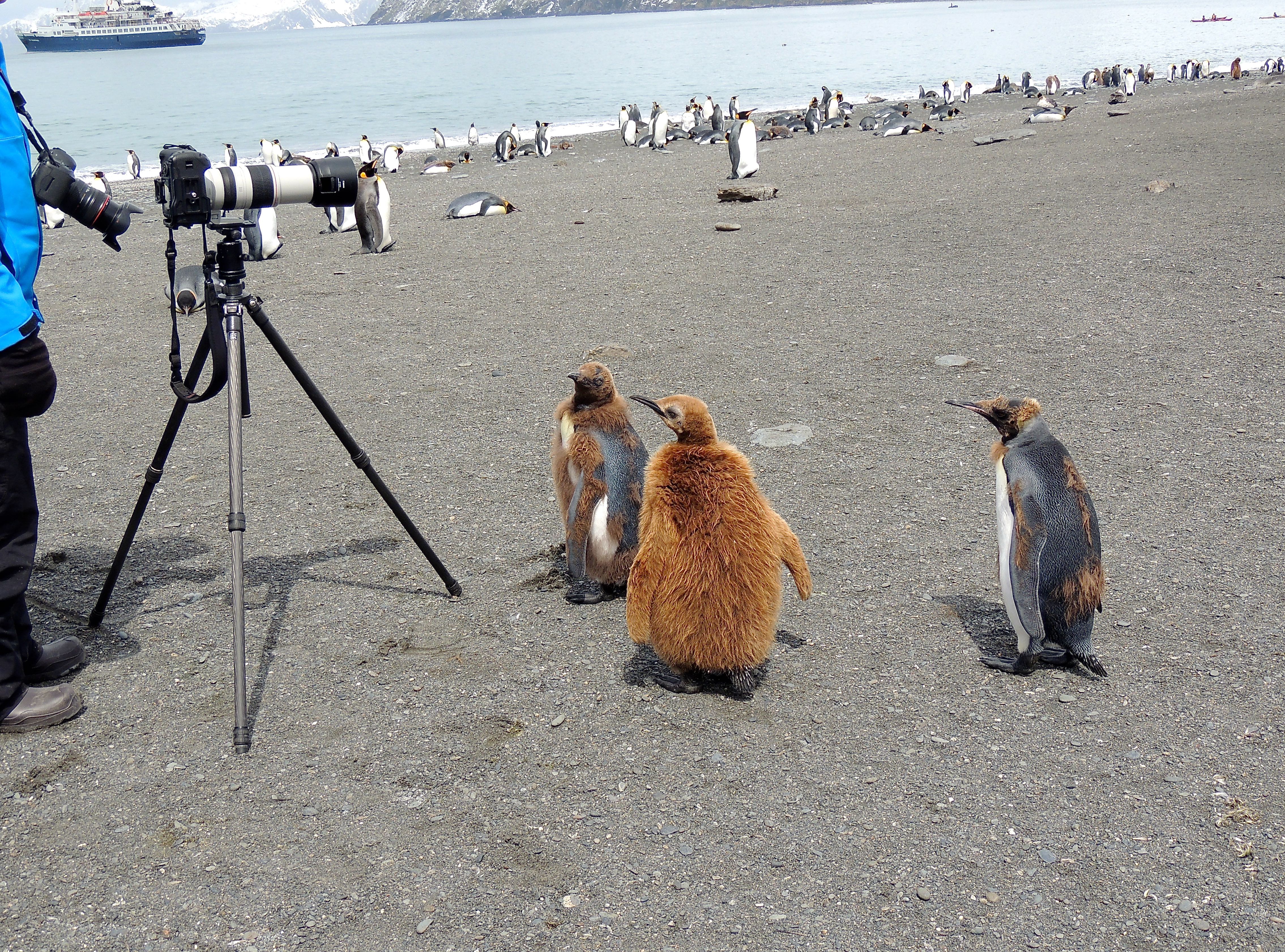 King Penguins - Photo by William Young
King Penguins - Photo by William YoungOn the beach at Saint Andrews, I photographed a King Penguin with the third and fourth largest penguin species in the world — the Gentoo and the Chinstrap. The Gentoos are the larger of the two. They have a white patch above each eye. The bill is red, and their feet are orange with black toenails. Unlike the King and the Adelie whose young look as if they have brown fur, the young Gentoos look like miniature gray versions of the adults. We saw a colony of probably a couple thousand on Saunders Island — the first large penguin colony of the trip. We also saw them in South Georgia and on the Antarctic Peninsula. The adults sometimes point their bills skyward and vocalize. Some had red marks on their underside that looked like blood. They sometimes get these marks when sliding on their bellies. At Brown Bluff, I saw a small Gentoo Penguin being nipped at and chased by an adult. It was scrawny and may have been looking for its mother, and it probably was not going to survive. One Gentoo chick was resting at an adult's feet, wrapped around an egg. One of the naturalists said that the second egg probably would not hatch. The eggs are laid and hatch at different intervals, so there still was hope. Gentoos make their nest out of pebbles, and we saw some doing nest maintenance by picking up small stones and repositioning them. Also at Brown Bluff, I saw an adult sleeping next to a rock with three young penguins sleeping with their heads resting on the rock. Gentoos are the fastest swimming birds in the world, with some reaching speeds of more than 20 miles per hour. Michael and I observed some swimming underwater at Fort Point, and they moved around like little torpedoes. When we were at sea, we sometimes would encounter them porpoising.
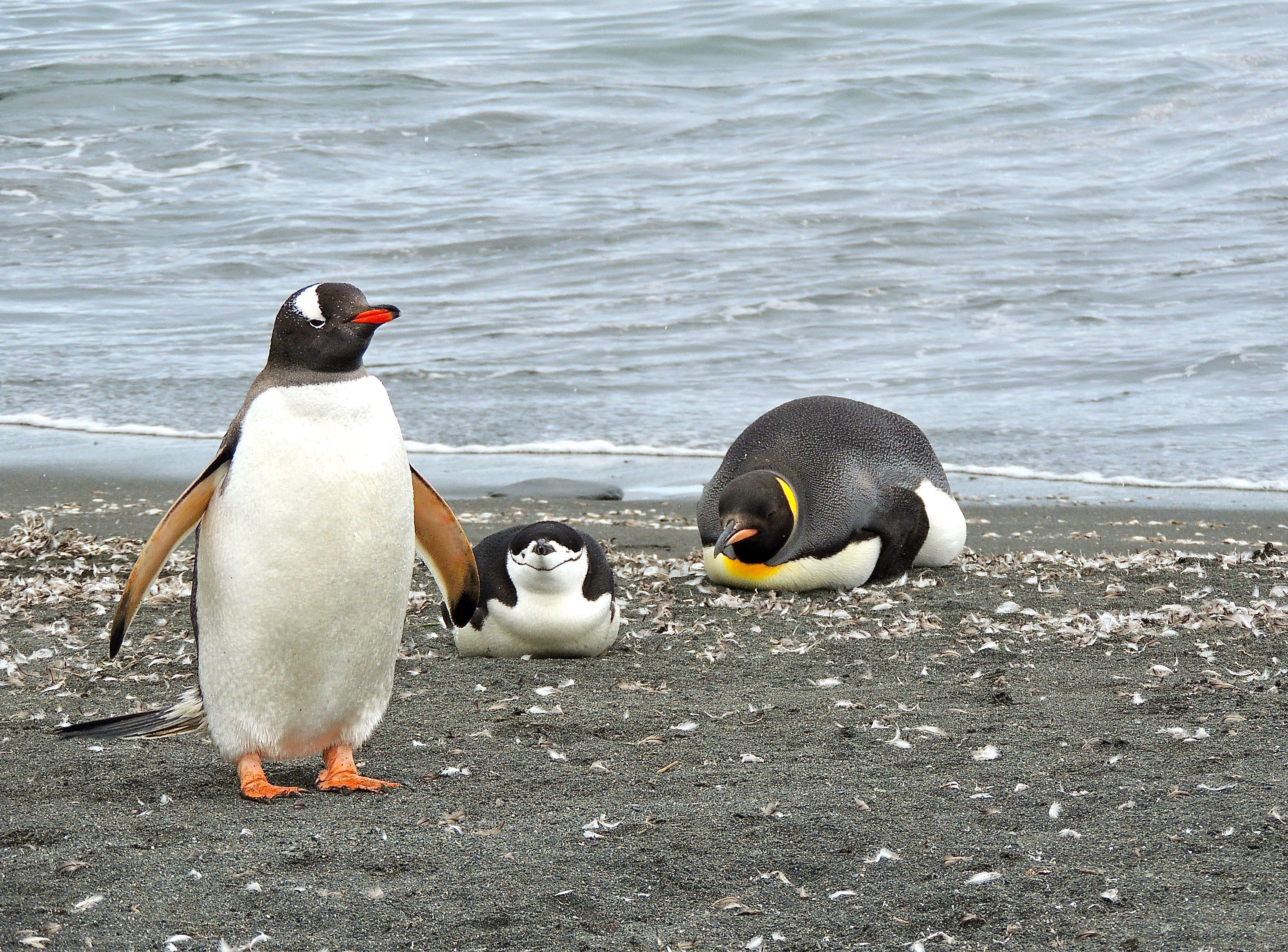 Gentoo, Chinstrap, and King Penguins - Photo by William Young
Gentoo, Chinstrap, and King Penguins - Photo by William Young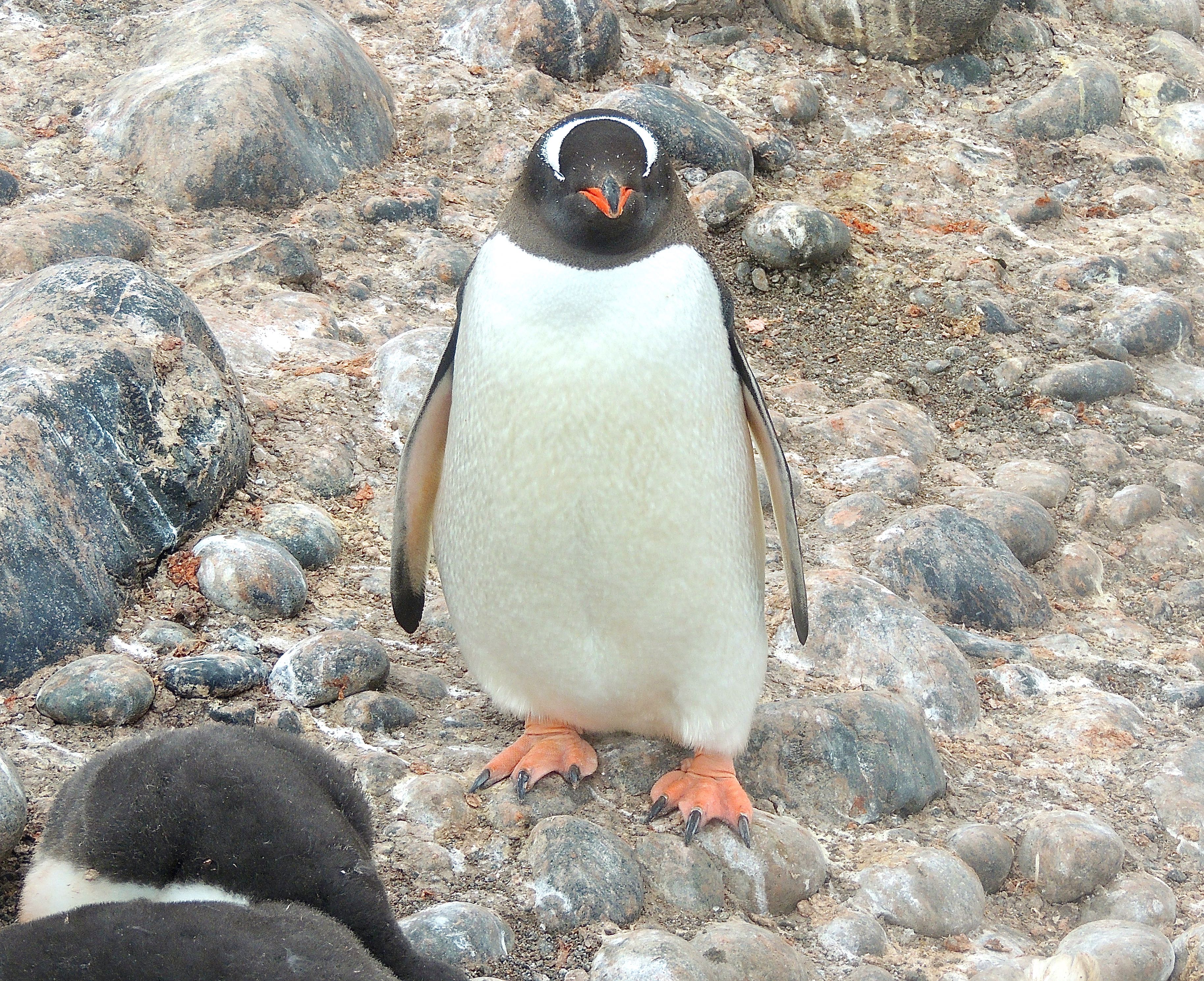 Gentoo Penguin - Photo by William Young
Gentoo Penguin - Photo by William Young Gentoo Penguin - Photo by William Young
Gentoo Penguin - Photo by William Young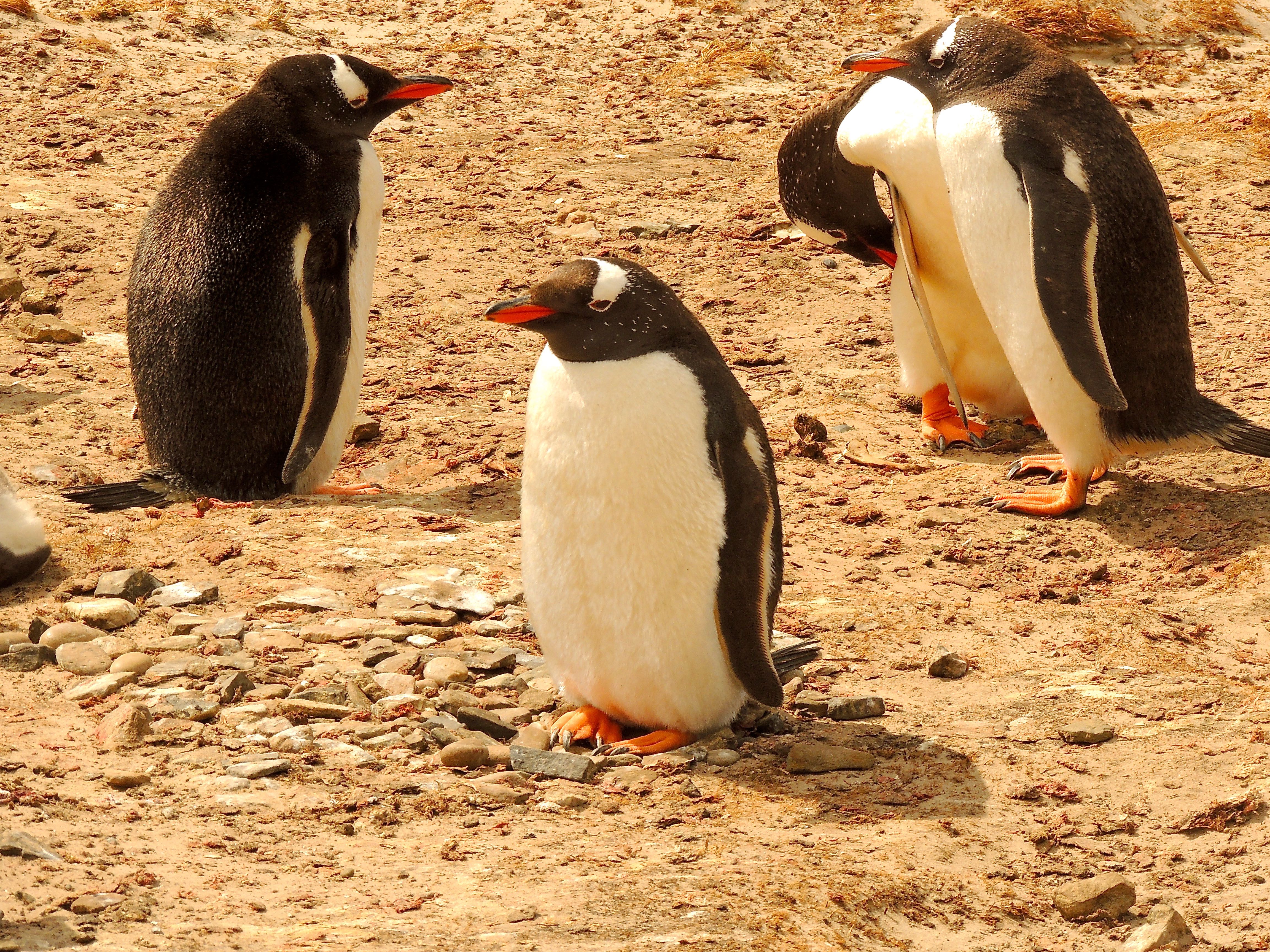 Gentoo Penguins - Photo by William Young
Gentoo Penguins - Photo by William Young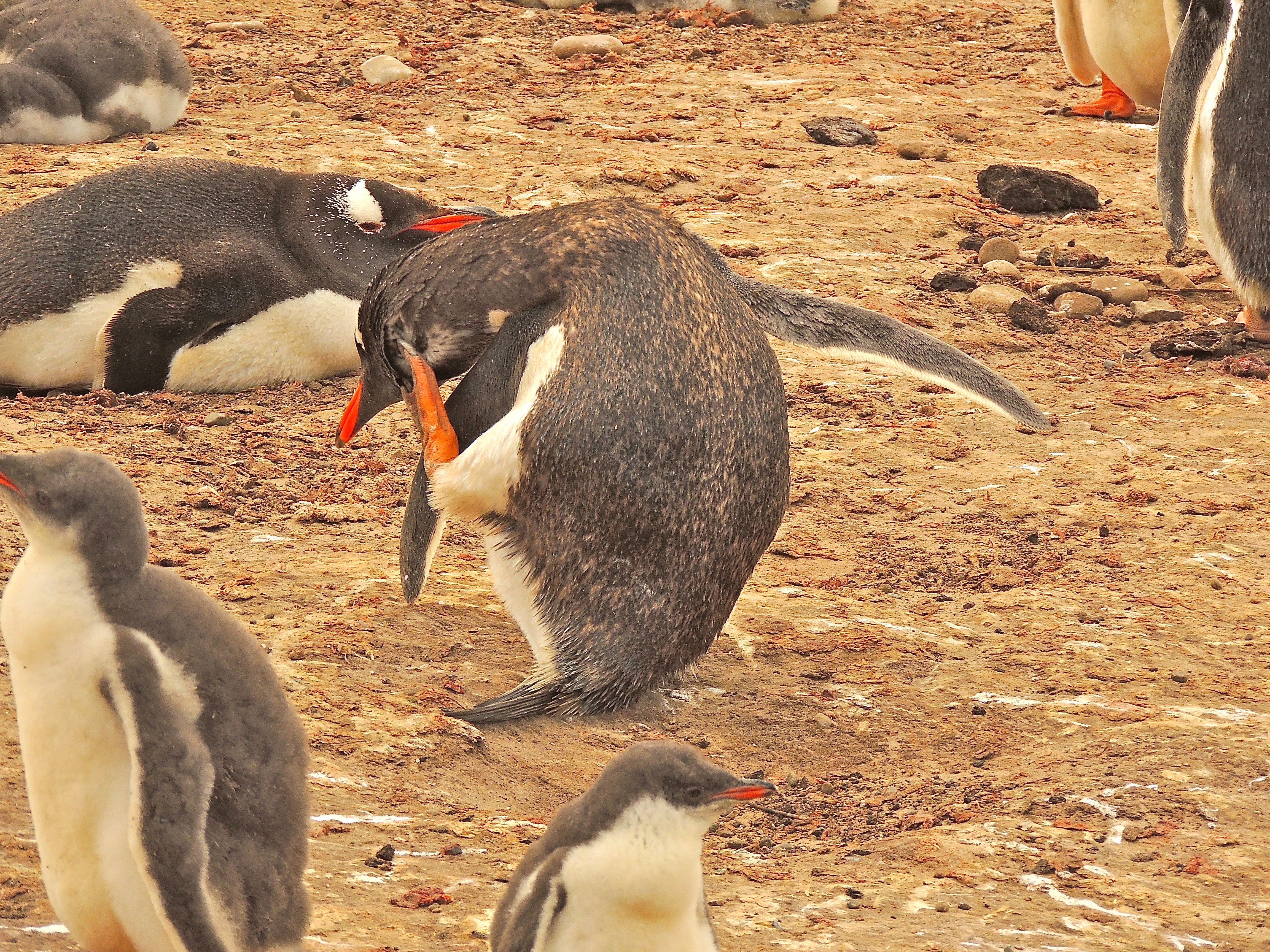 Gentoo Penguins - Photo by William Young
Gentoo Penguins - Photo by William Young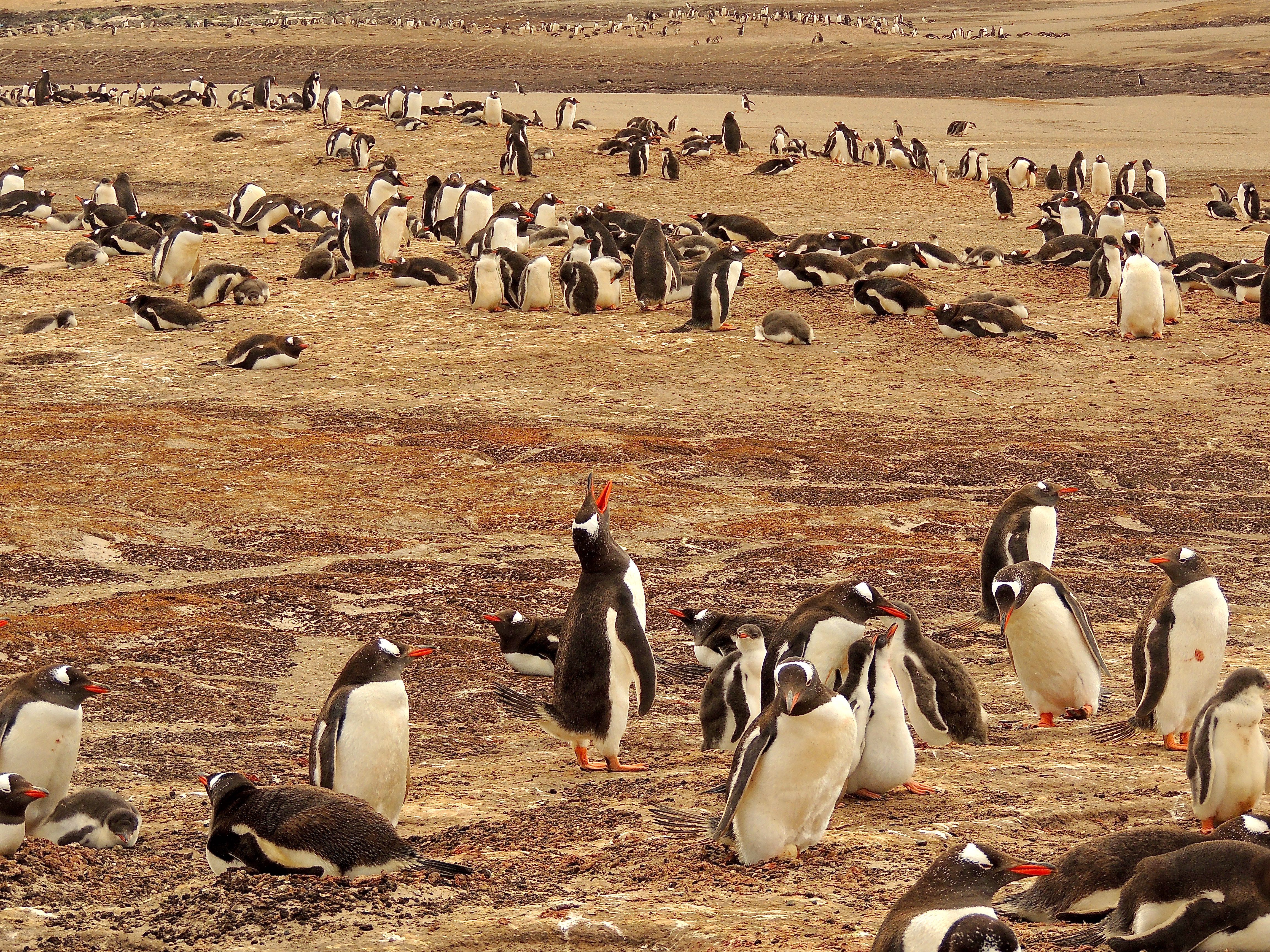 Gentoo Penguins - Photo by William Young
Gentoo Penguins - Photo by William Young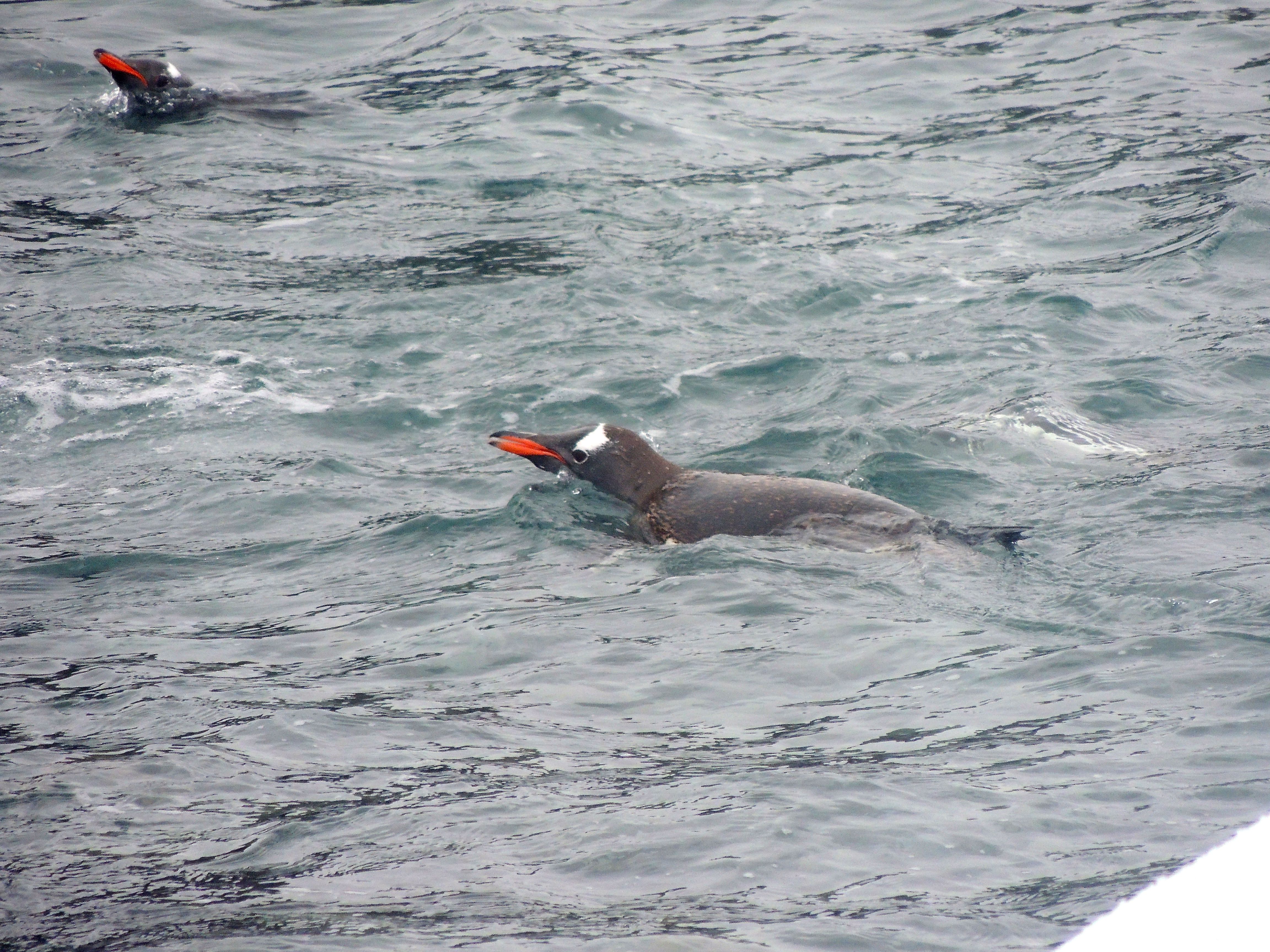 Gentoo Penguins Swimming - Photo by William Young
Gentoo Penguins Swimming - Photo by William Young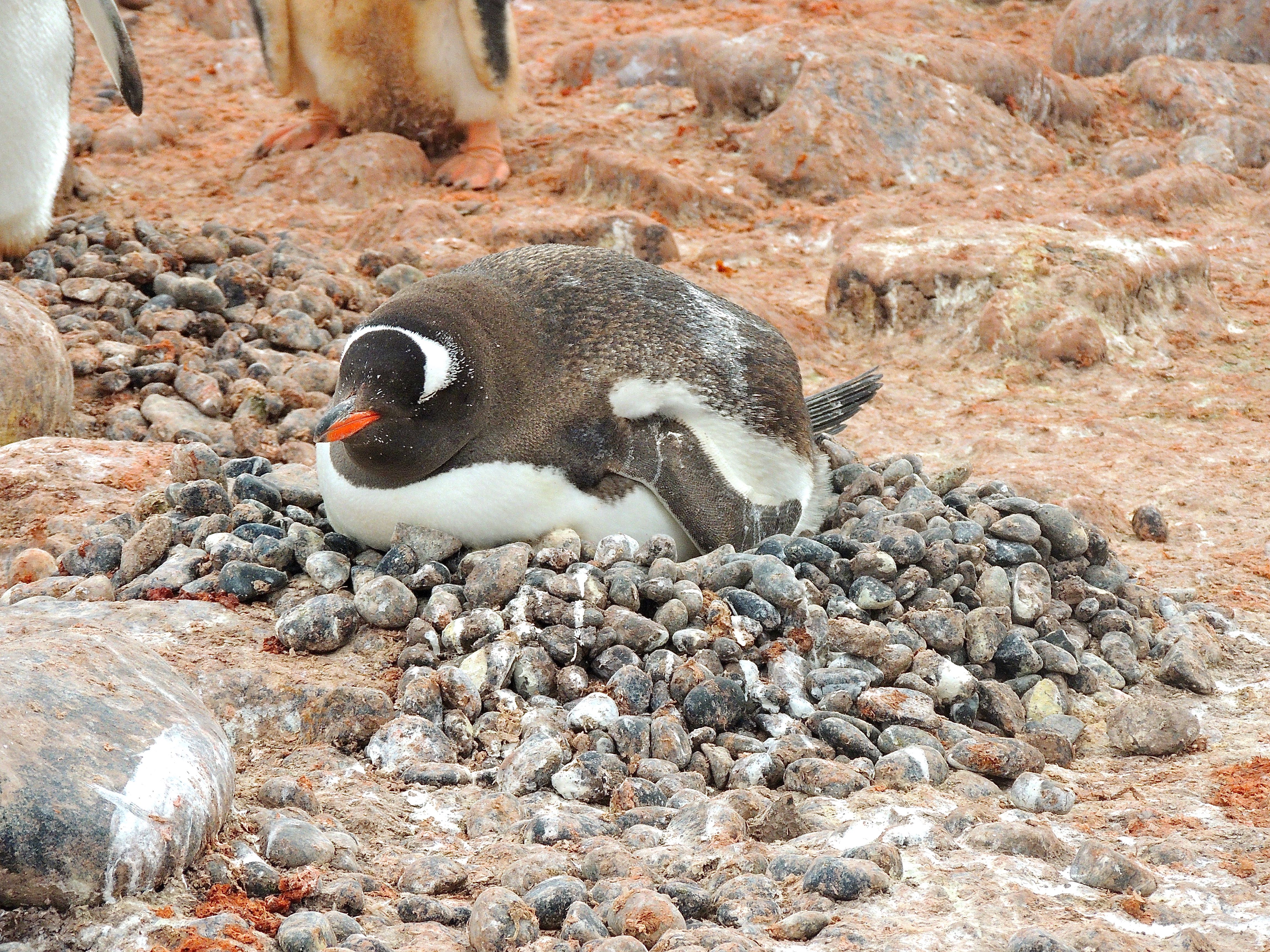 Gentoo Penguin on Nest - Photo by William Young
Gentoo Penguin on Nest - Photo by William Young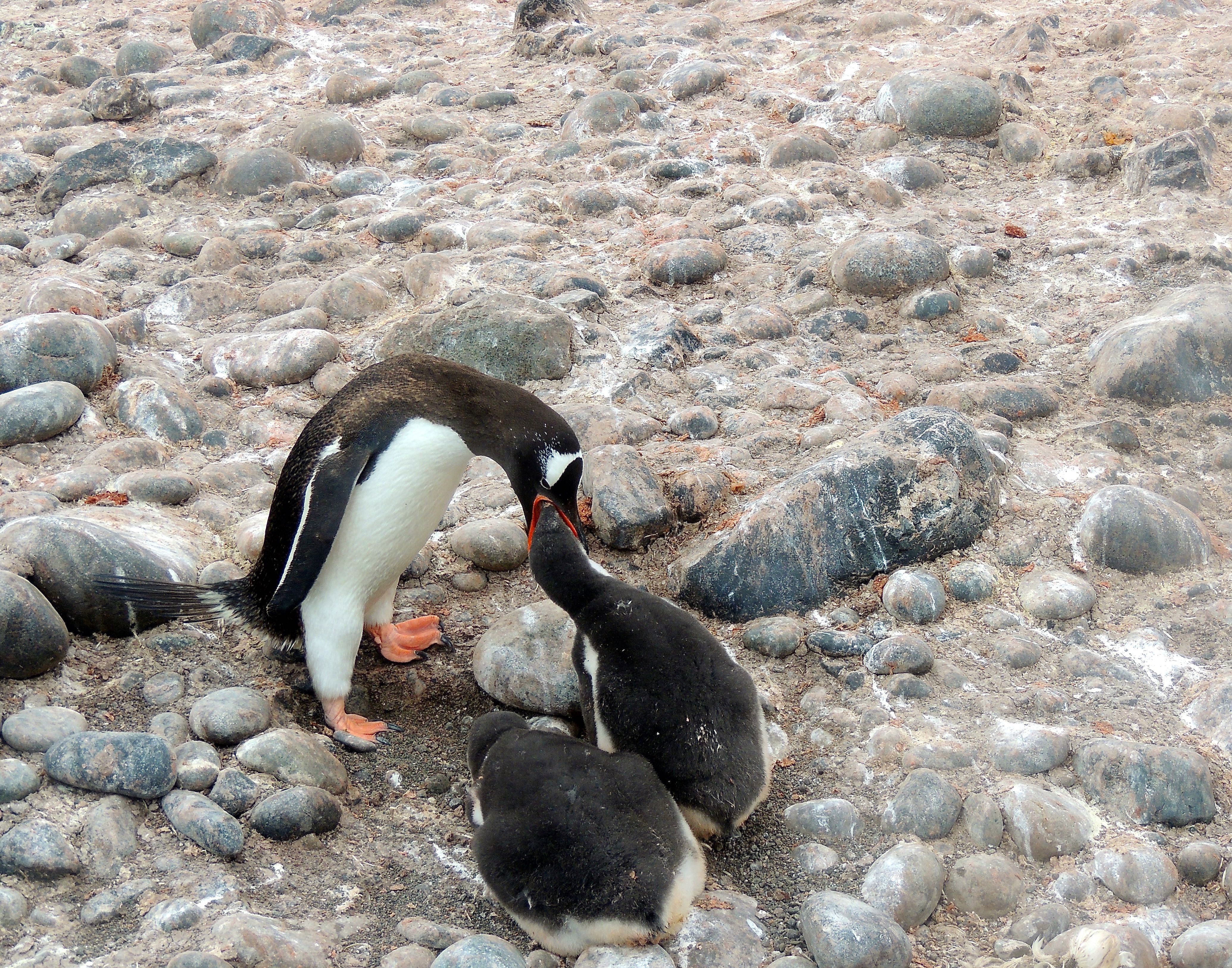 Gentoo Penguin Feeding Chick - Photo by William Young
Gentoo Penguin Feeding Chick - Photo by William Young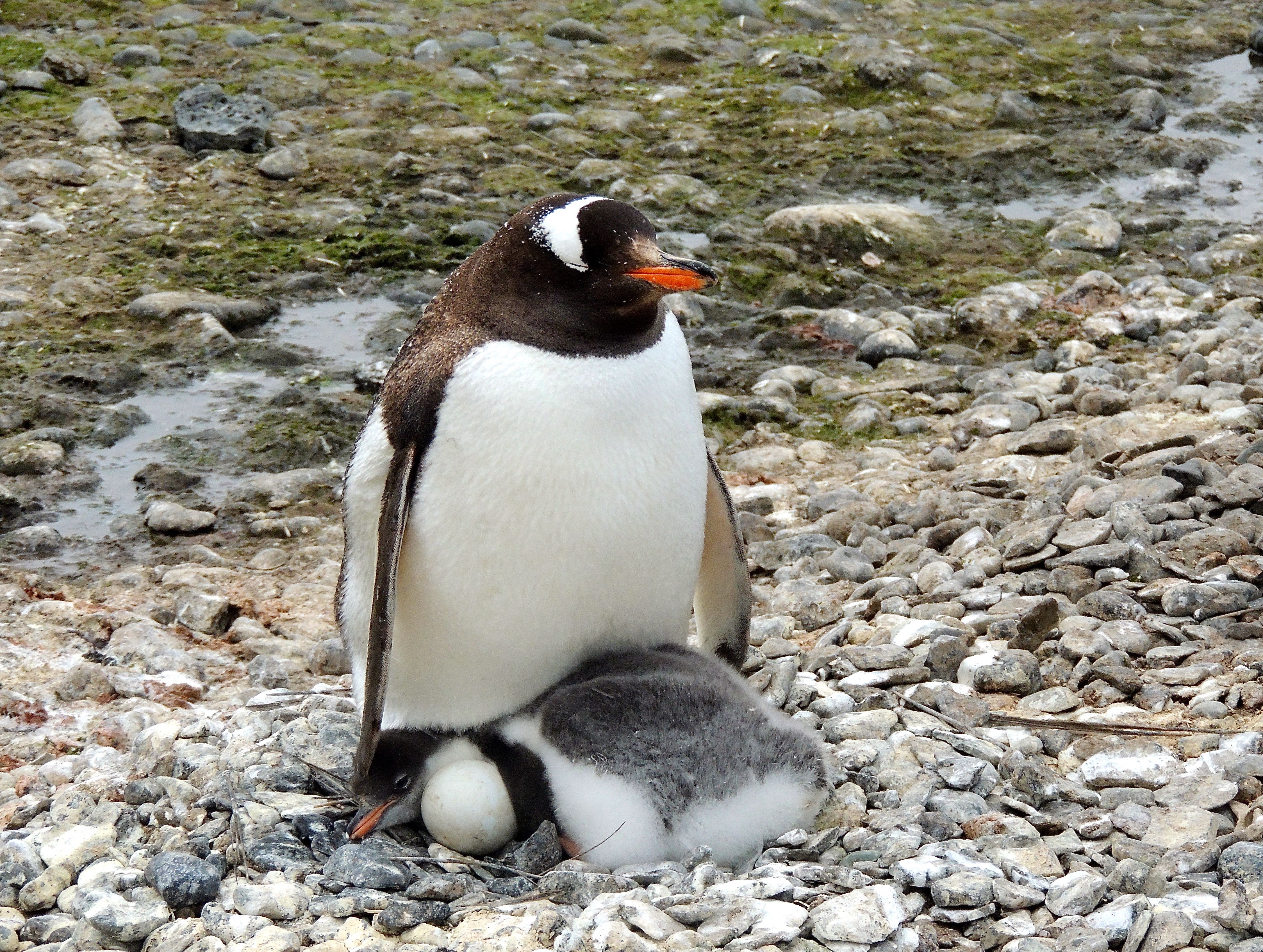 Gentoo Penguin with Chick and Egg - Photo by William Young
Gentoo Penguin with Chick and Egg - Photo by William Young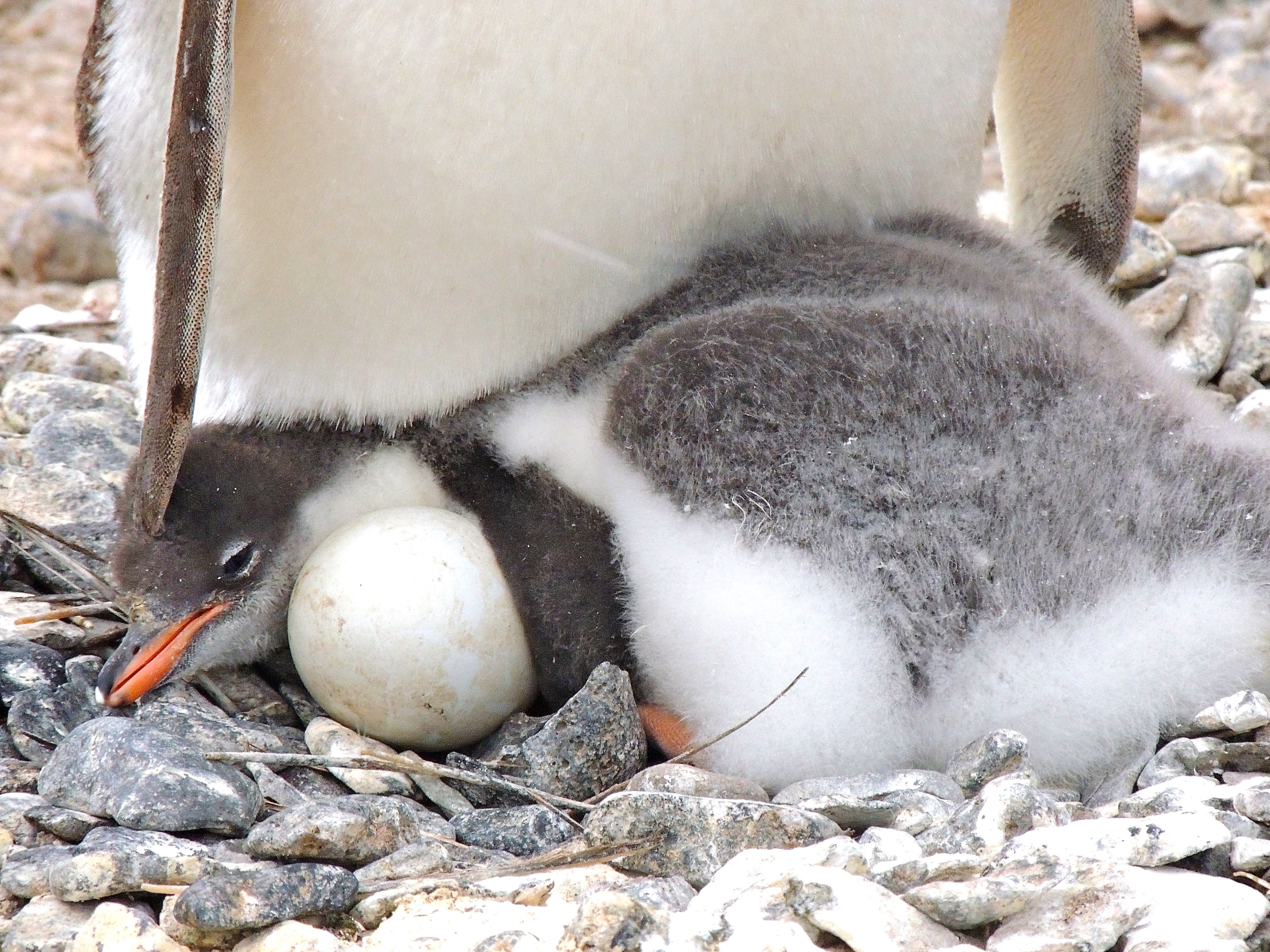 Gentoo Penguin with Chick and Egg - Photo by William Young
Gentoo Penguin with Chick and Egg - Photo by William Young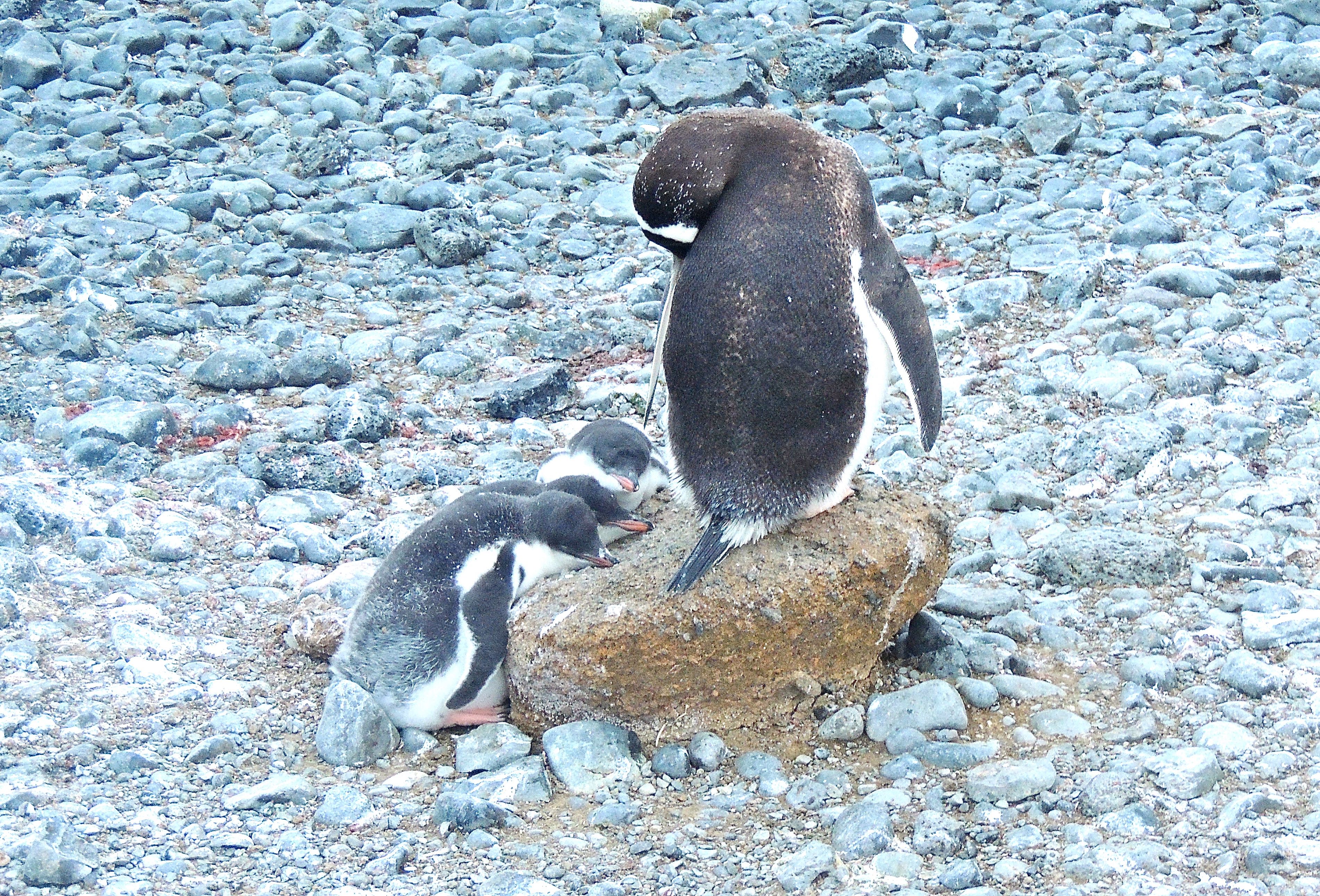 Gentoo Penguin with Three Sleeping Chicks - Photo by William Young
Gentoo Penguin with Three Sleeping Chicks - Photo by William YoungFort Point in the South Shetland Islands featured the funniest thing I saw during the trip. We saw only a few Chinstrap Penguins in South Georgia — mostly singles at a variety of areas. They are comical looking, resembling porky German soldiers during World War One wearing a helmet with a chinstrap. One on the beach at Saint Andrews was lying around and later got into a conflict with a King Penguin. We did not see any numbers of them until we arrived at the Antarctic Peninsula. There were some breeding at Fort Point, and some were interspersed in the large Gentoo Penguin colony. A short distance offshore, there was a small chunk of ice with an inclined surface. The Gentoos and the Chinstraps appeared to be playing a game of king of the hill. When penguins come out of the water, they look a bit like the Kramer character on Seinfeld coming into a room. They take a flying leap and land feet first. Both species of penguins did this. Sometimes, they would leap directly into another penguin, causing both to tumble down the slope and into the water. Others fell into the water without being hit by another penguin. At the moment when they are about to fall, they wave their flippers as if falling uncontrollably. The contest was not between the Chinstraps and the Gentoos, but rather a free-for-all, with every penguin for itself. No food was on the chunk of ice, so it is not clear that any of this was being done for any reason other than the sheer fun of it.
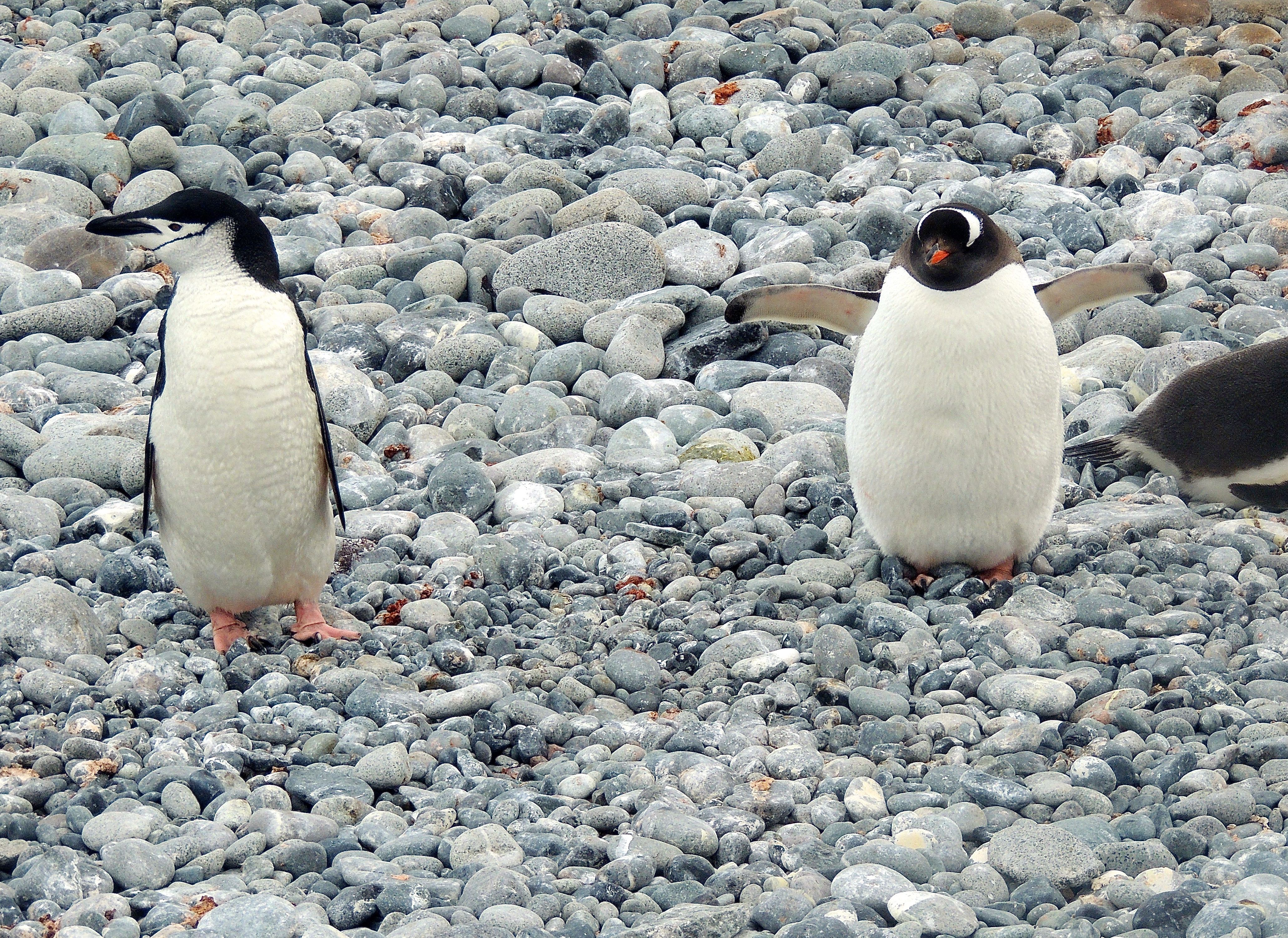 Chinstrap and Gentoo Penguins - Photo by William Young
Chinstrap and Gentoo Penguins - Photo by William Young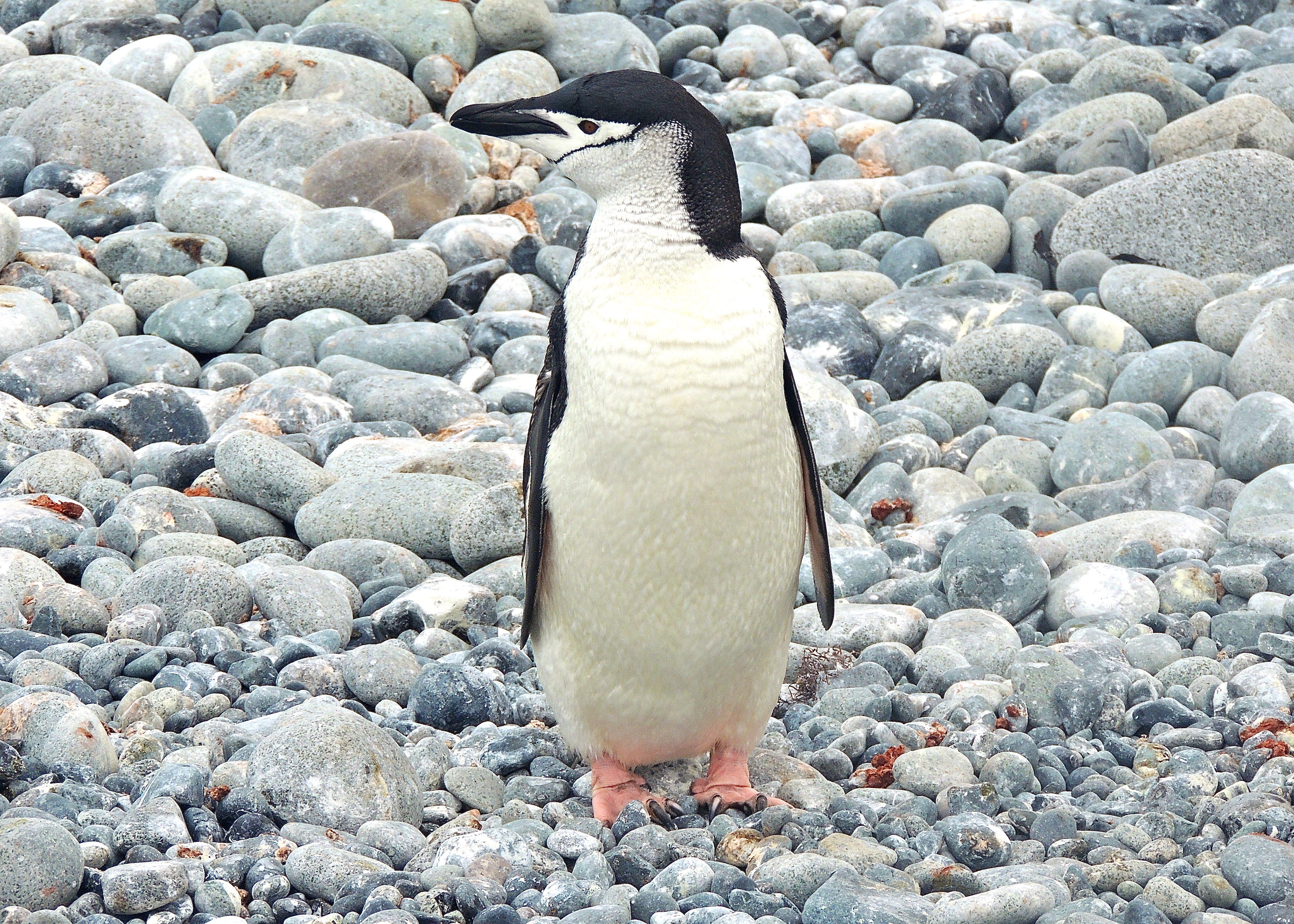 Chinstrap Penguin - Photo by William Young
Chinstrap Penguin - Photo by William Young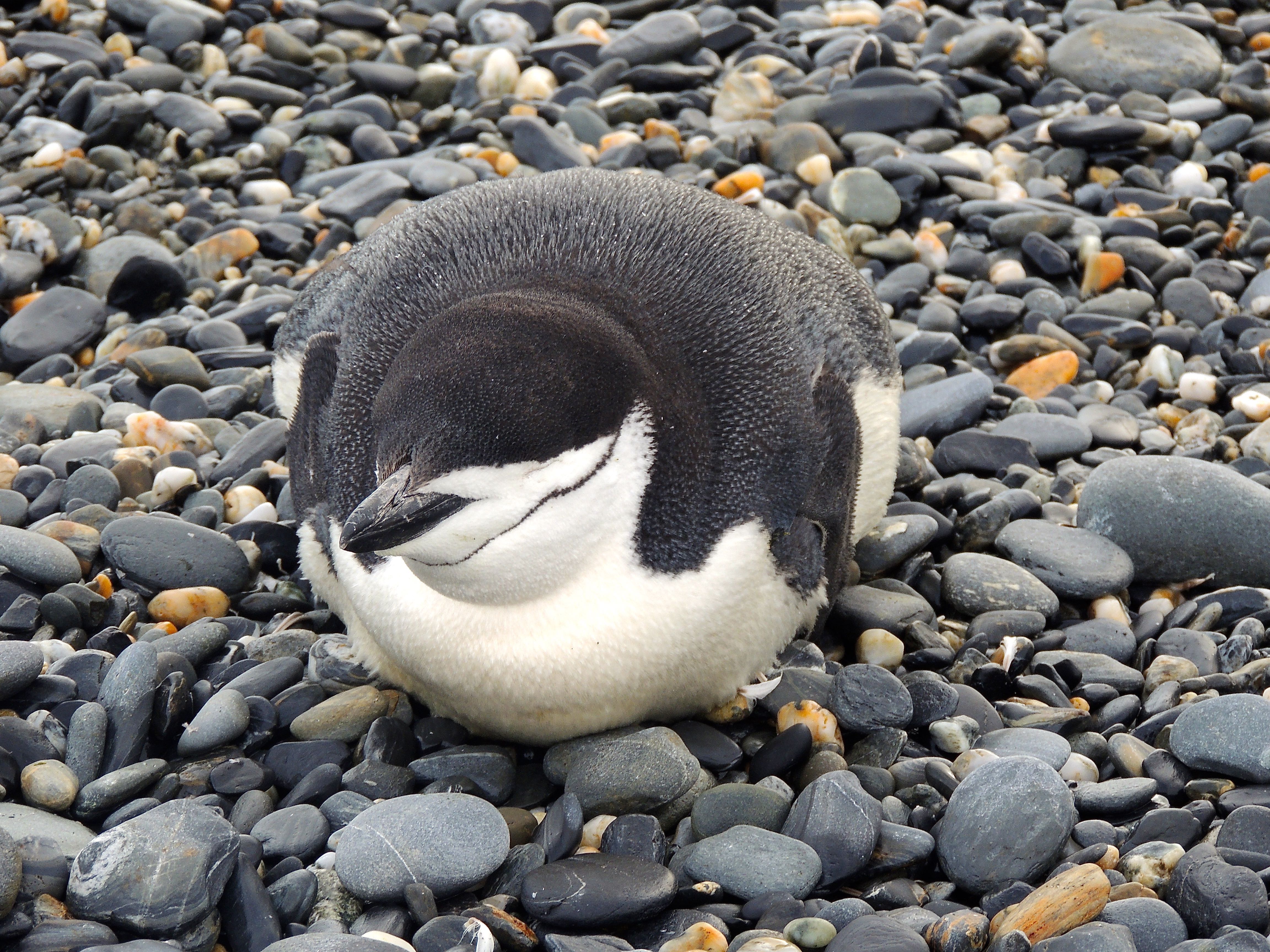 Chinstrap Penguin - Photo by William Young
Chinstrap Penguin - Photo by William Young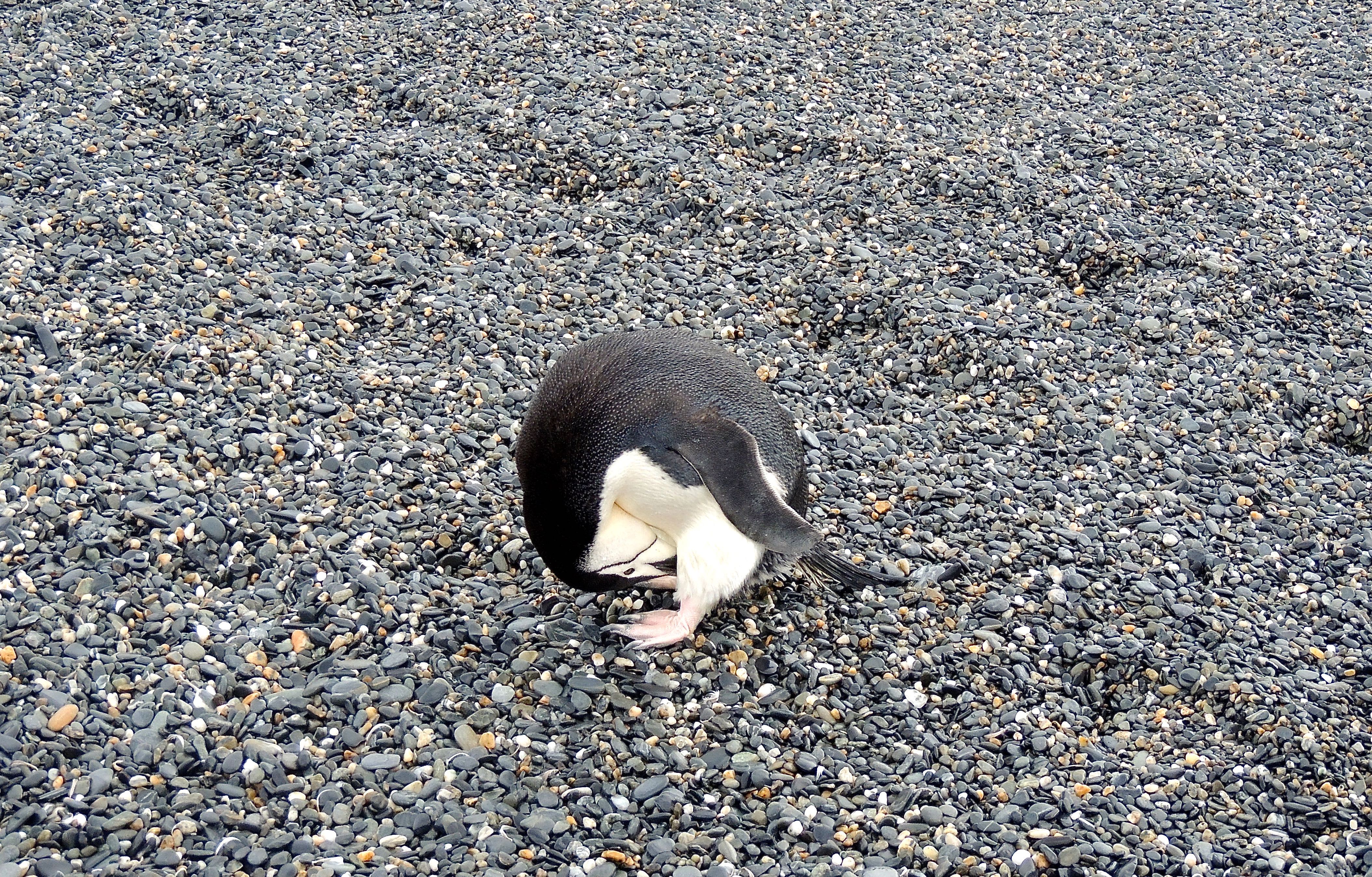 Chinstrap Penguin - Photo by William Young
Chinstrap Penguin - Photo by William Young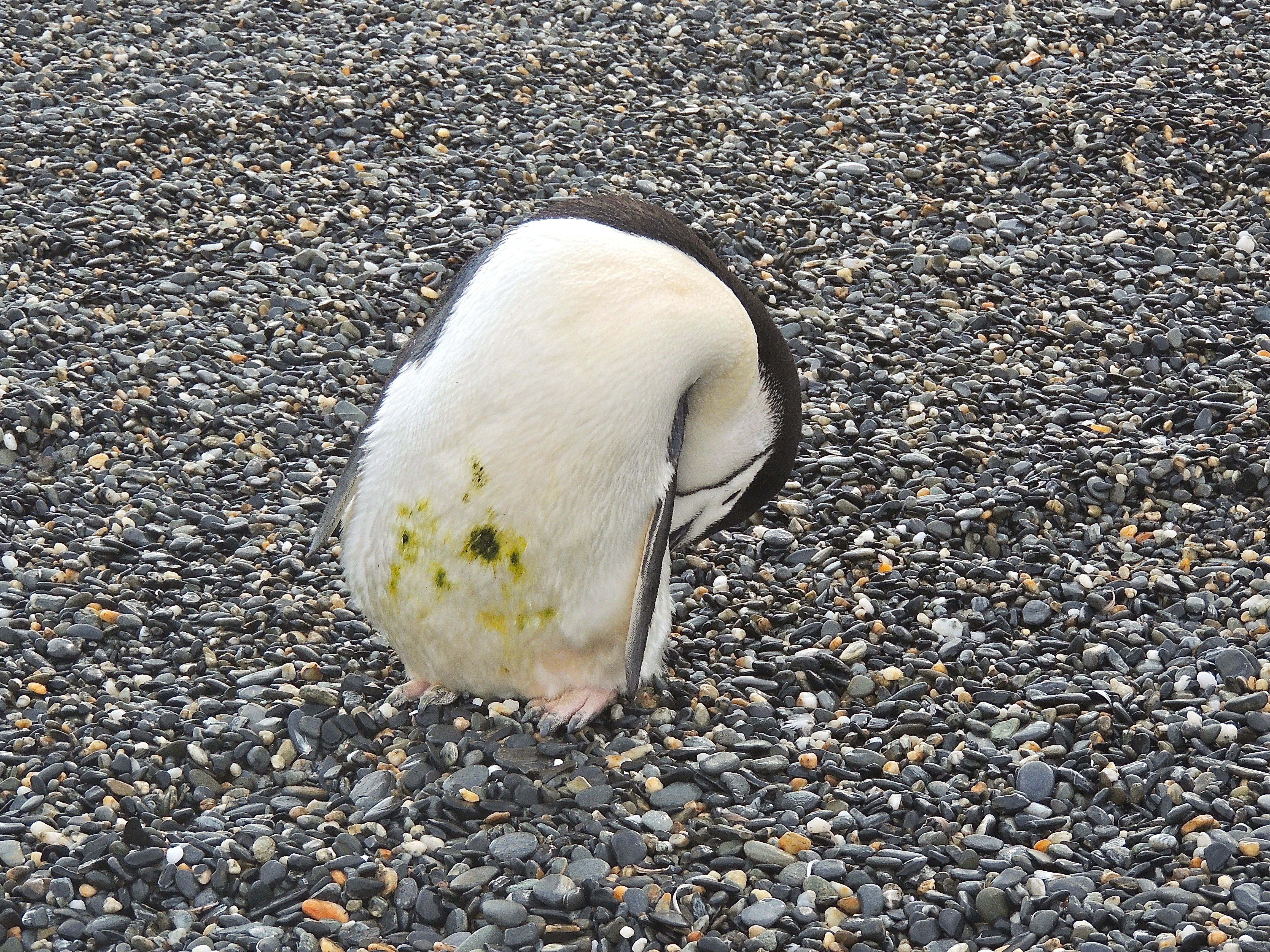 Chinstrap Penguin - Photo by William Young
Chinstrap Penguin - Photo by William Young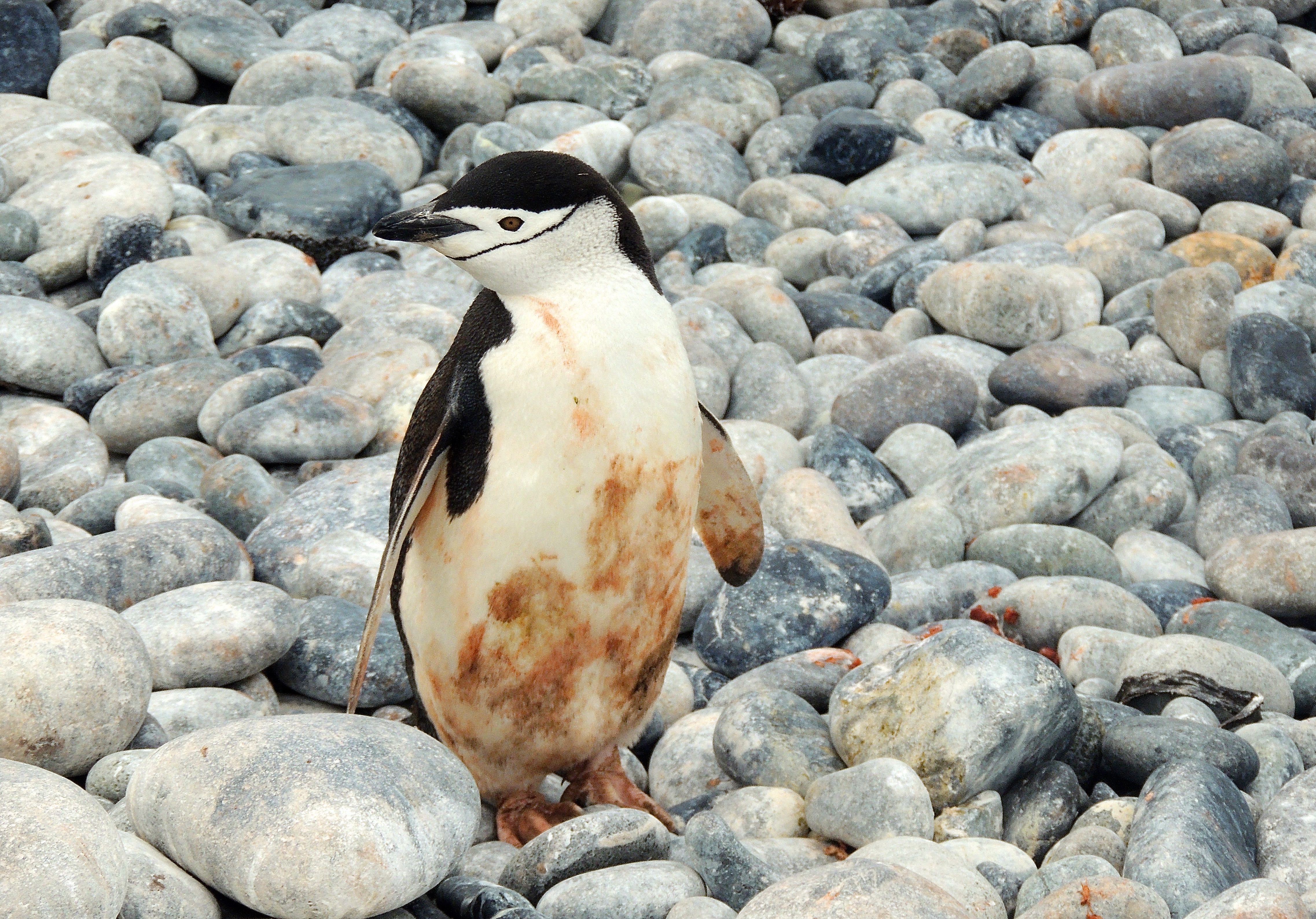 Chinstrap Penguin - Photo by William Young
Chinstrap Penguin - Photo by William YoungTwo species of penguins had a crest of yellow feathers over their eyes. The larger was the Macaroni, named after the same European characters who were mentioned in the Yankee Doodle song. They have a large heavy red bill and red feet. The only place where we saw a small colony was at Hercules Bay in South Georgia. We observed them from a zodiac. One Chinstrap was in the group. Slipping on the rocks and being out of control seemed like fairly normal behavior for them. We also saw some at sea.
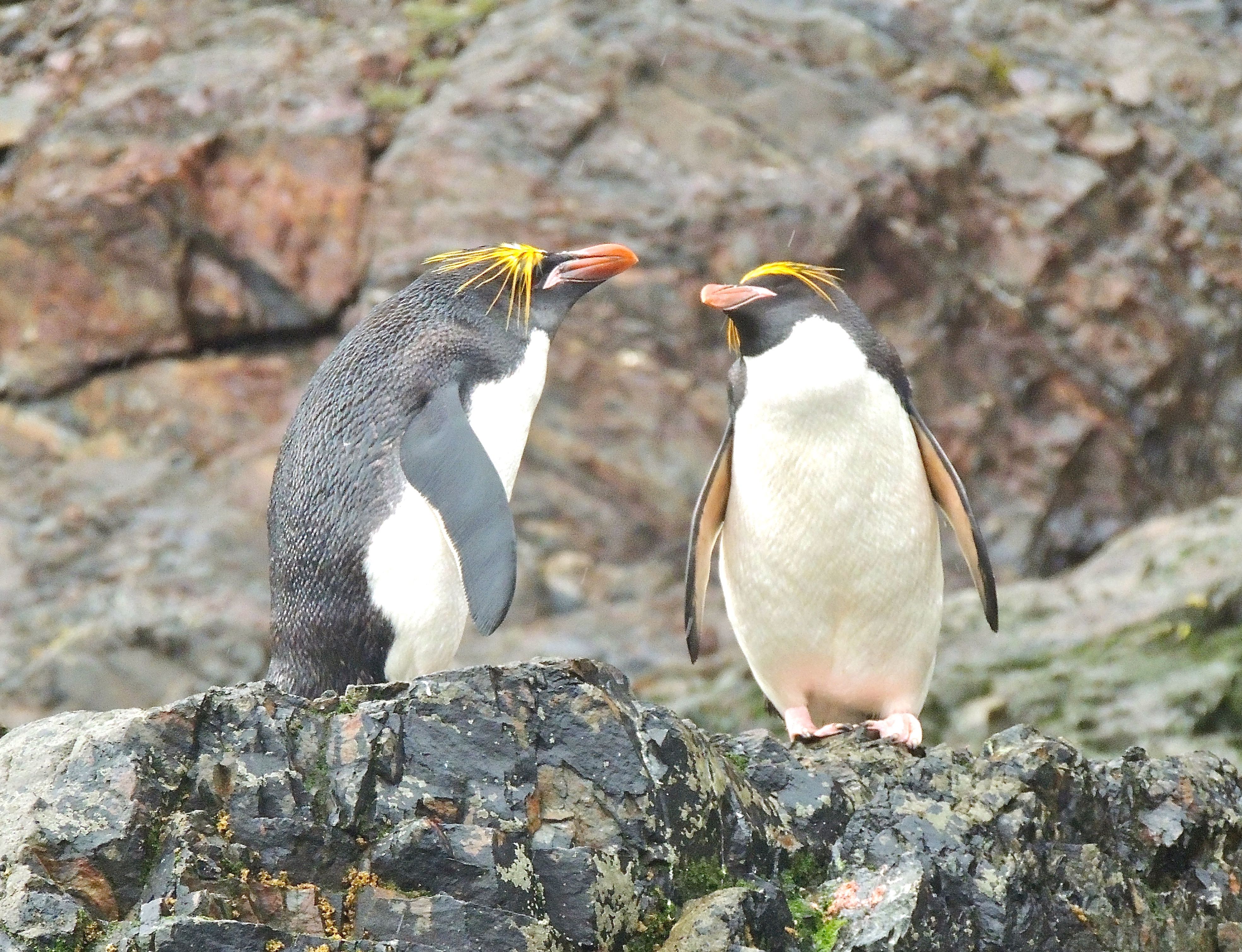 Macaroni Penguins - Photo by William Young
Macaroni Penguins - Photo by William Young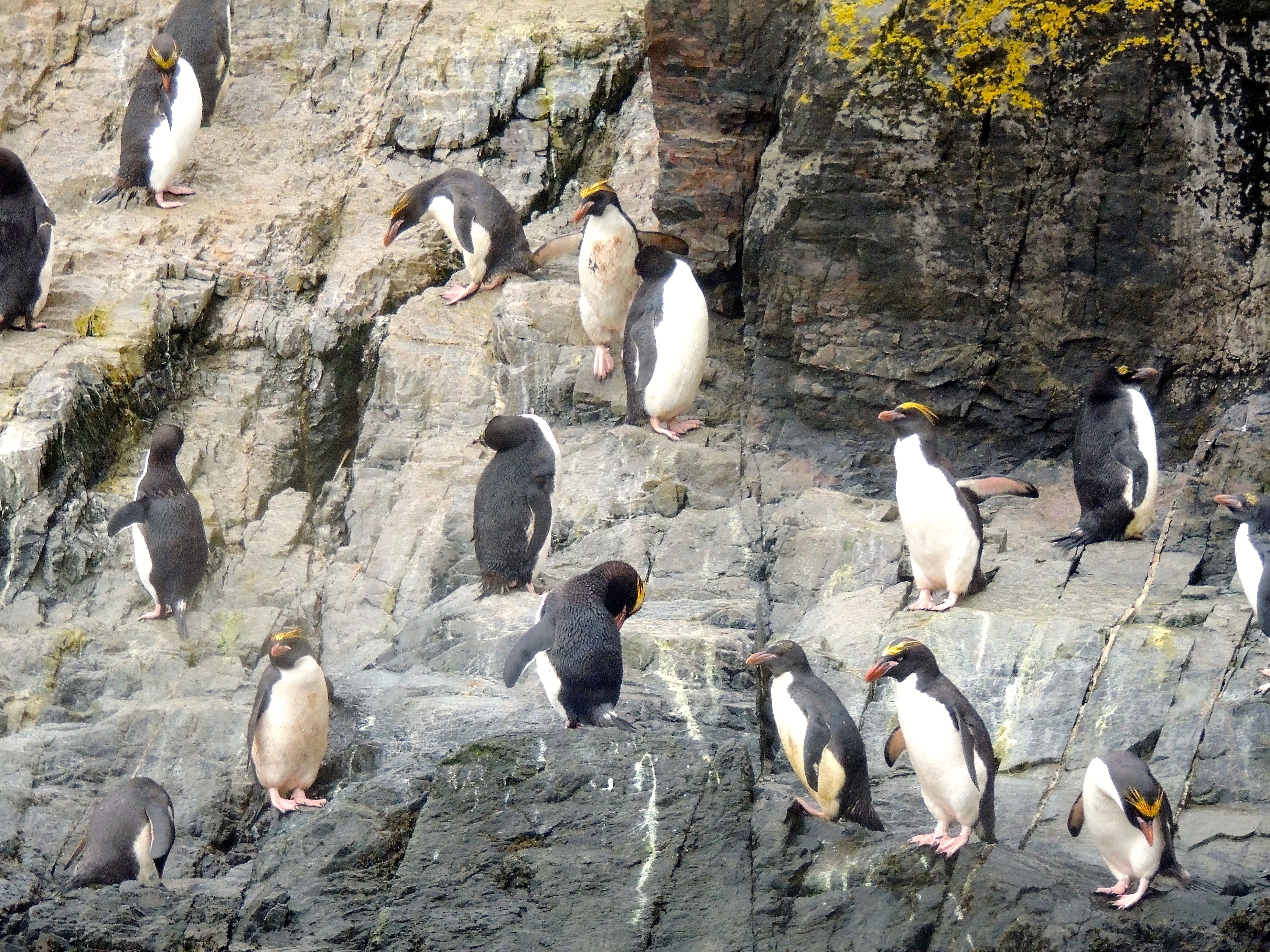 Macaroni Penguins - Photo by William Young
Macaroni Penguins - Photo by William Young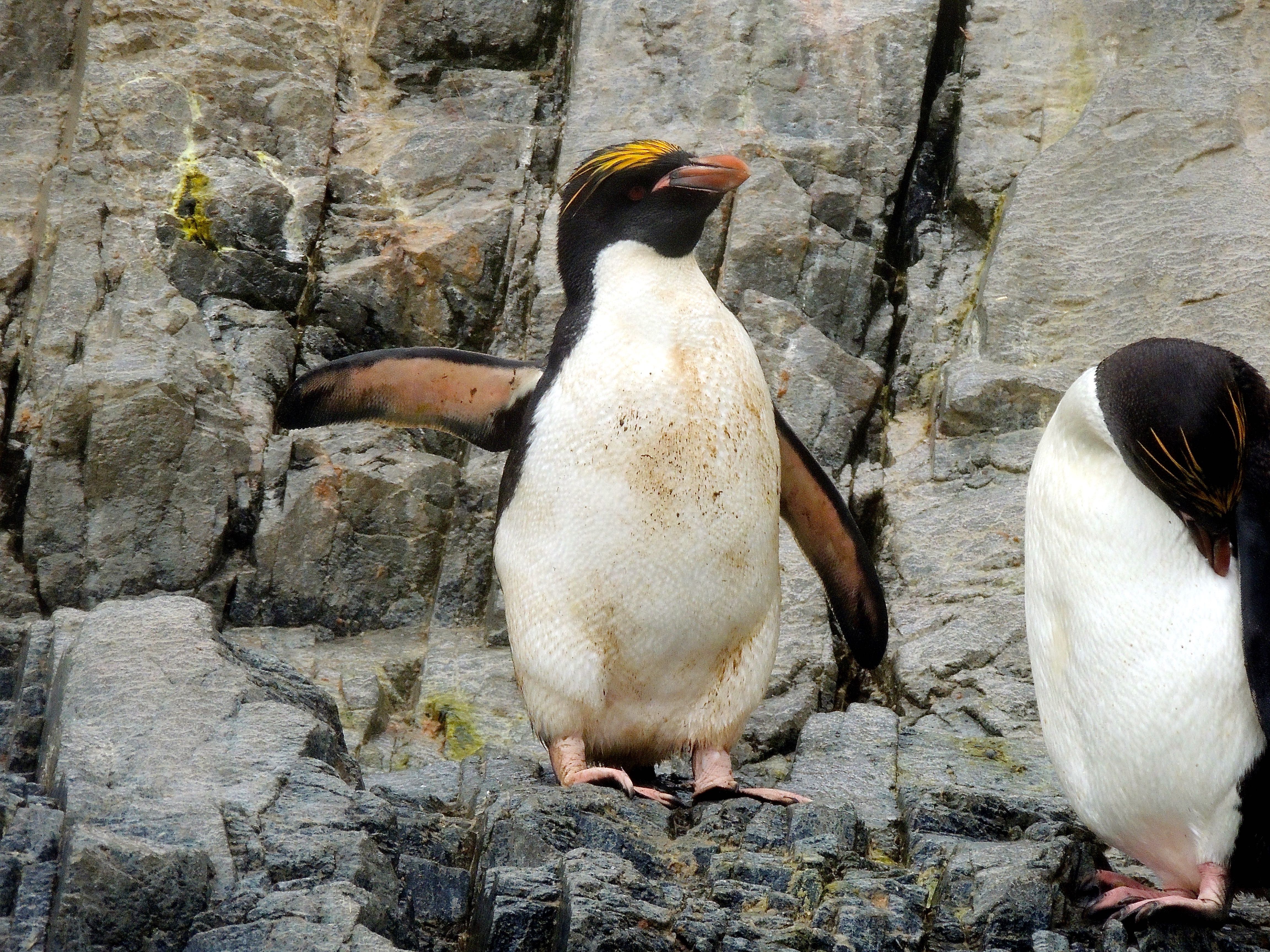 Macaroni Penguins - Photo by William Young
Macaroni Penguins - Photo by William YoungSouthern Rockhopper Penguins are the smallest penguin species we saw on the expedition. Their crest is not as pronounced as the Macaroni's. We saw a colony of about 2,000 on Saunders Island in the Falklands. As with many penguin species, they form crèches for their young. It is easier to protect the young from skuas and other predators if all of the young are in a group surrounded by adults. The young are furry brown with white underparts. The bill is red, and the feet are pink with black nails. They get their name from hopping on rocks. They seem to be more careful when doing this than the Macaronis. The major predator at the colony appeared to be Striated Caracaras, and I saw some eating the remains of a penguin chick. Jim said the Rockhopper colony we saw was significantly diminished from what it had been. There does not seem to be enough food, perhaps because of climate change and overfishing.
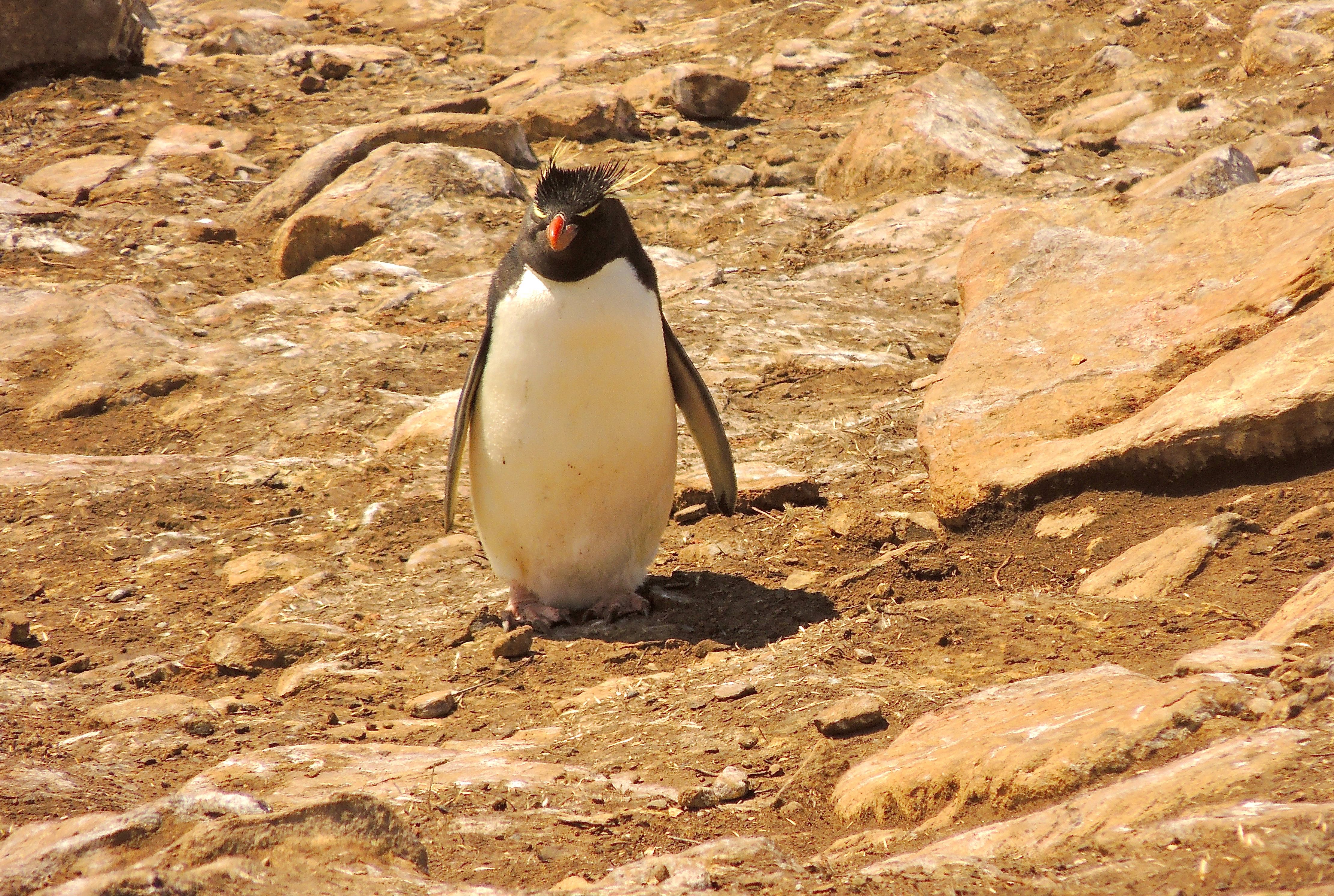 Southern Rockhopper Penguin - Photo by William Young
Southern Rockhopper Penguin - Photo by William Young Southern Rockhopper Penguins - Photo by William Young
Southern Rockhopper Penguins - Photo by William Young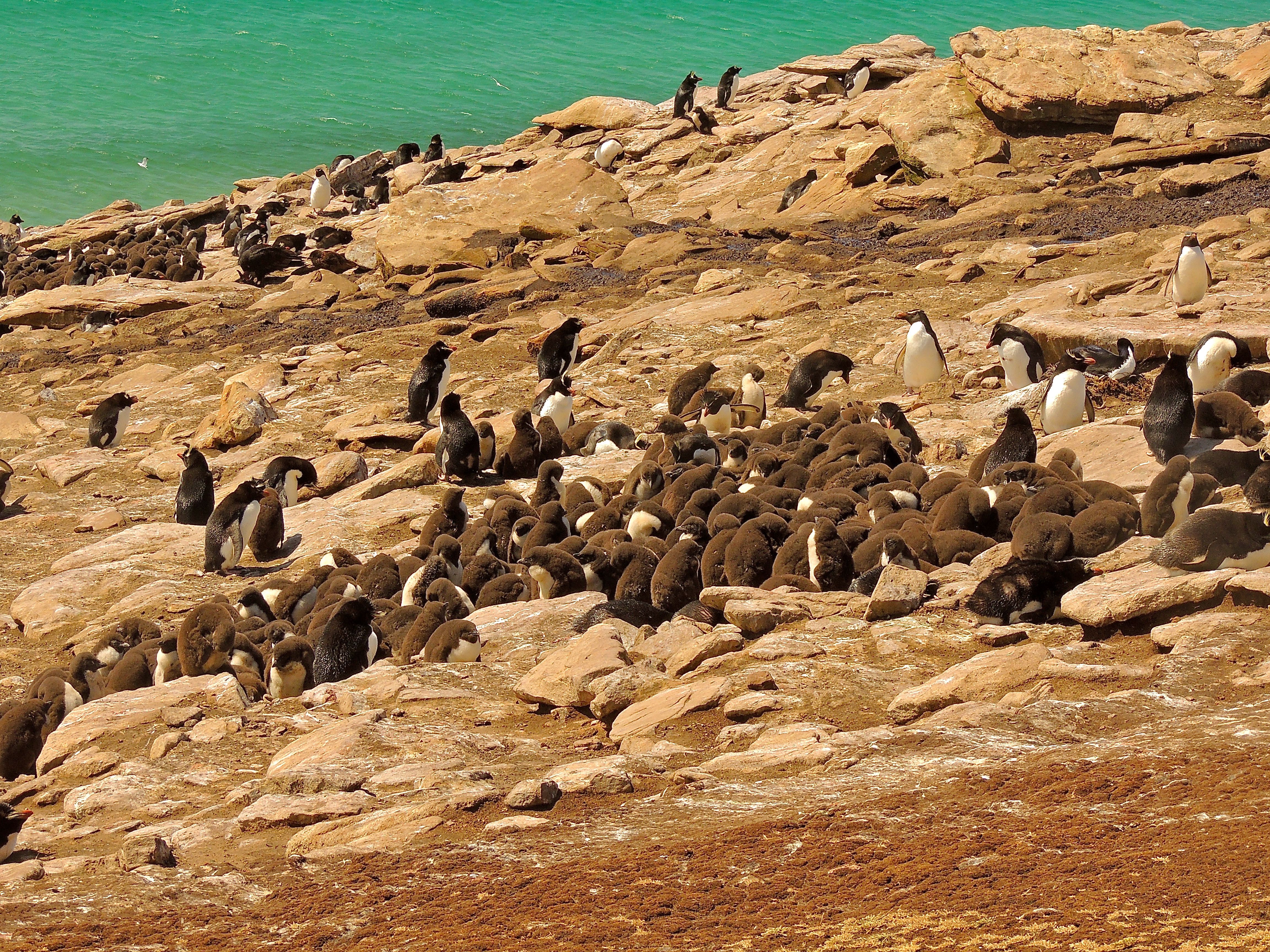 Southern Rockhopper Penguin Colony - Photo by William Young
Southern Rockhopper Penguin Colony - Photo by William Young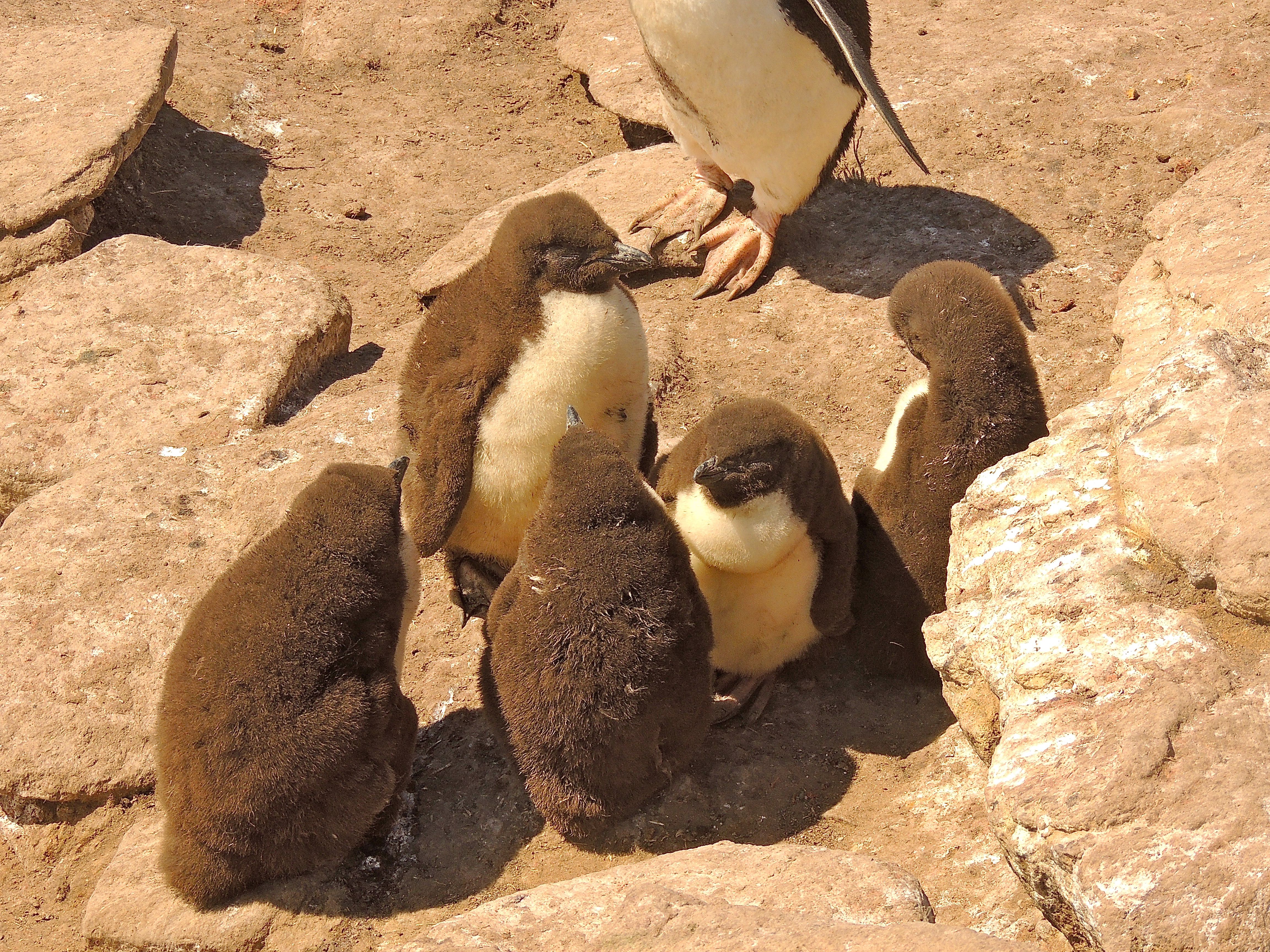 Southern Rockhopper Penguin Crèche - Photo by William Young
Southern Rockhopper Penguin Crèche - Photo by William YoungWe saw many Magellanic Penguin on our final day at sea. Because of the high winds, we were not able to go through the Beagle Channel during daylight hours when leaving Ushuaia. We returned during daylight hours, and Magellanic Penguins were common. Large flocks were swimming near our ship, including one leucistic one who was tan rather than black. Magellanic Penguins have a broad white crescent that stretches from above the eye to below the chin. They also have a broad white stripe going across their black breast. The bill and feet are black. We saw a small colony on Saunders Island in the Falklands. Some were resting on their bellies near the path. They have bare pink skin around their eyes and at the base of the bill.
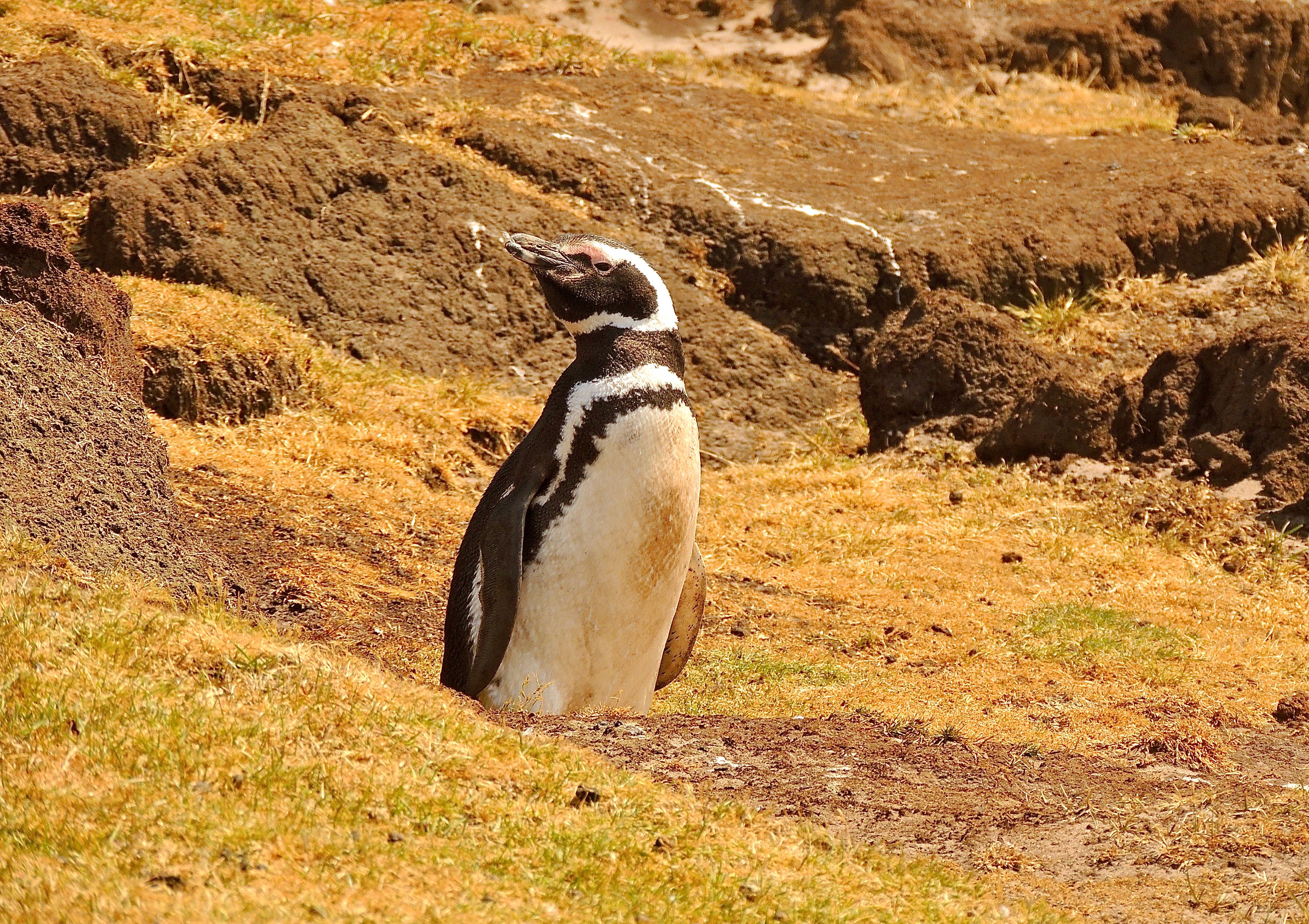 Magellanic Penguin - Photo by William Young
Magellanic Penguin - Photo by William Young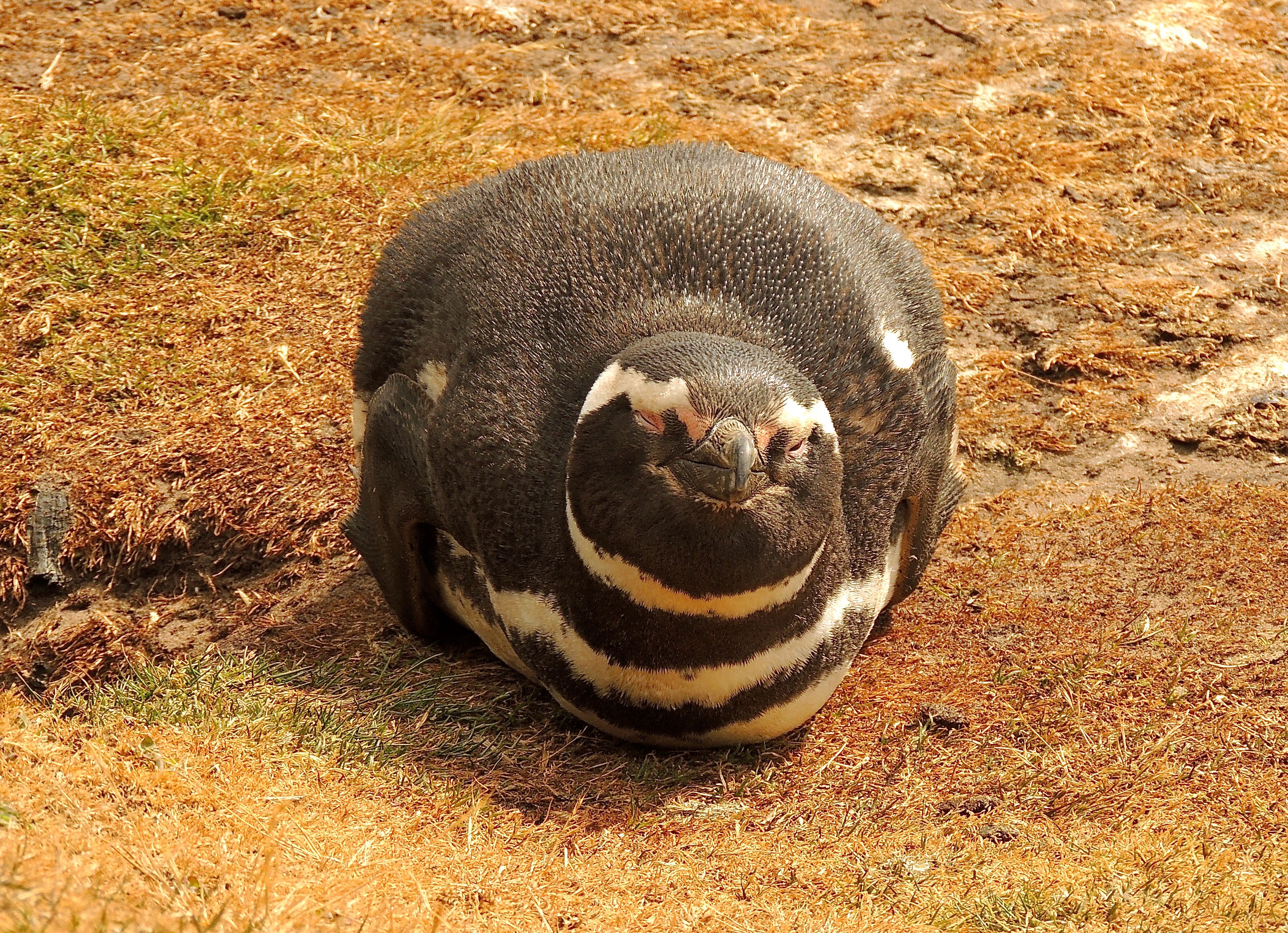 Magellanic Penguin - Photo by William Young
Magellanic Penguin - Photo by William Young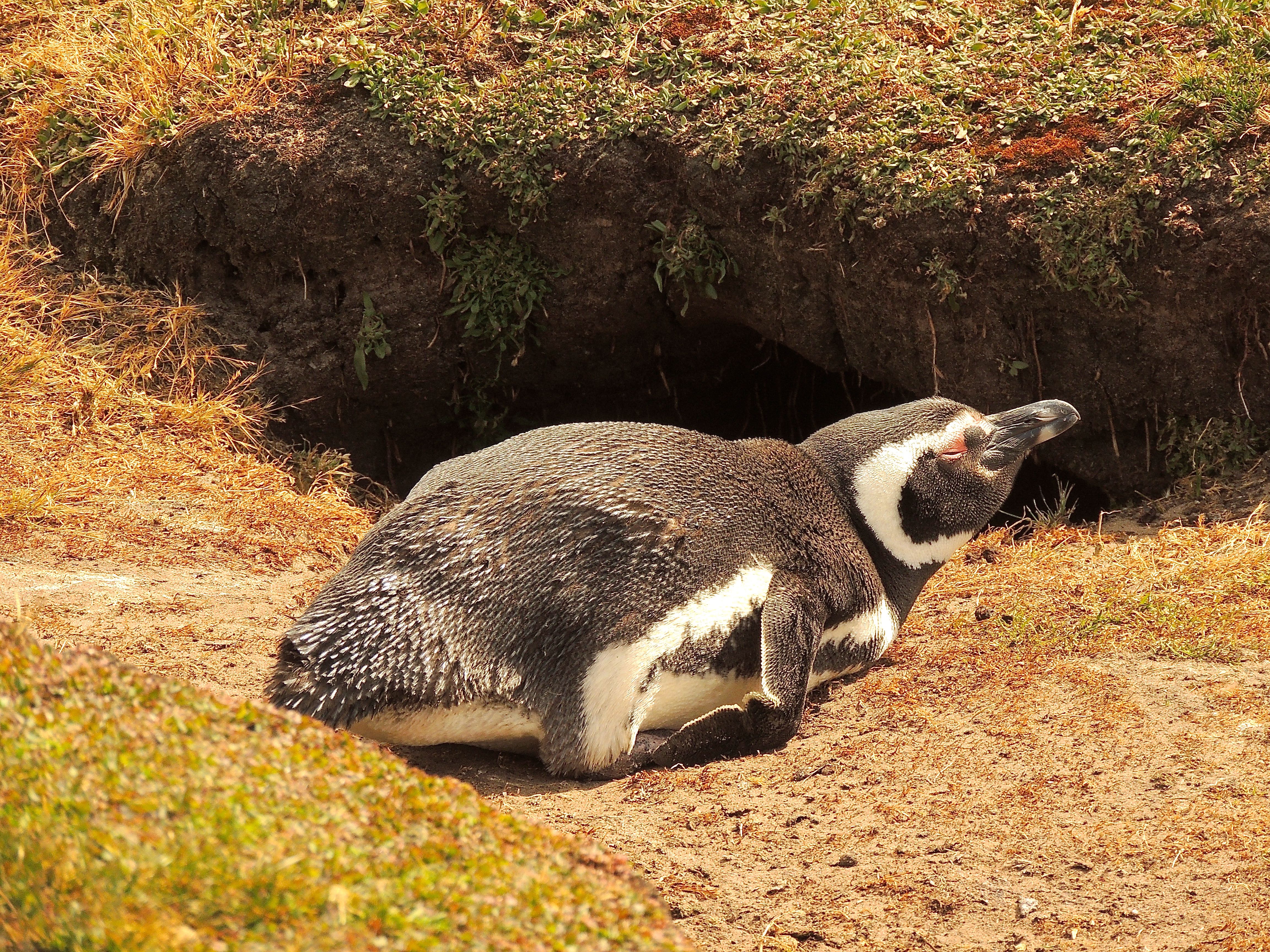 Magellanic Penguin - Photo by William Young
Magellanic Penguin - Photo by William YoungThe Adelies were the most entertaining penguin species. They were the third smallest, larger than the Magellanic and Southern Rockhopper. We did not see any Adelies until we reached the Antarctic Peninsula. They are in the same genus as the Chinstrap and Gentoo. The genus name is Pygocelis, which means "rump tailed." The tail of these penguins is longer and stiffer than in other penguin species. These three are the true Antarctic species, and each has partial feathering over its bill. Adelies are named after Adelie Land, an Antarctic territory named for the wife of a French explorer. They are basically a monochrome bird, with the only traces of color being their pinkish nostrils, pinkish feet (with black nails), and an eyering that can look either white, pale blue, or lavender depending upon the way the light hits it. The eyering gives them an appearance of constant astonishment. Only the adults have the eyering. The plumage of the sexes is the same, and Conrad Field, one of the ship naturalists, said that banders sex them by looking for footprints on the back. He also said to examine what Adelies eat, researchers get them to puke into a bucket. I asked him how one induces this, and he said you pour a half a cup of saltwater down the throat.
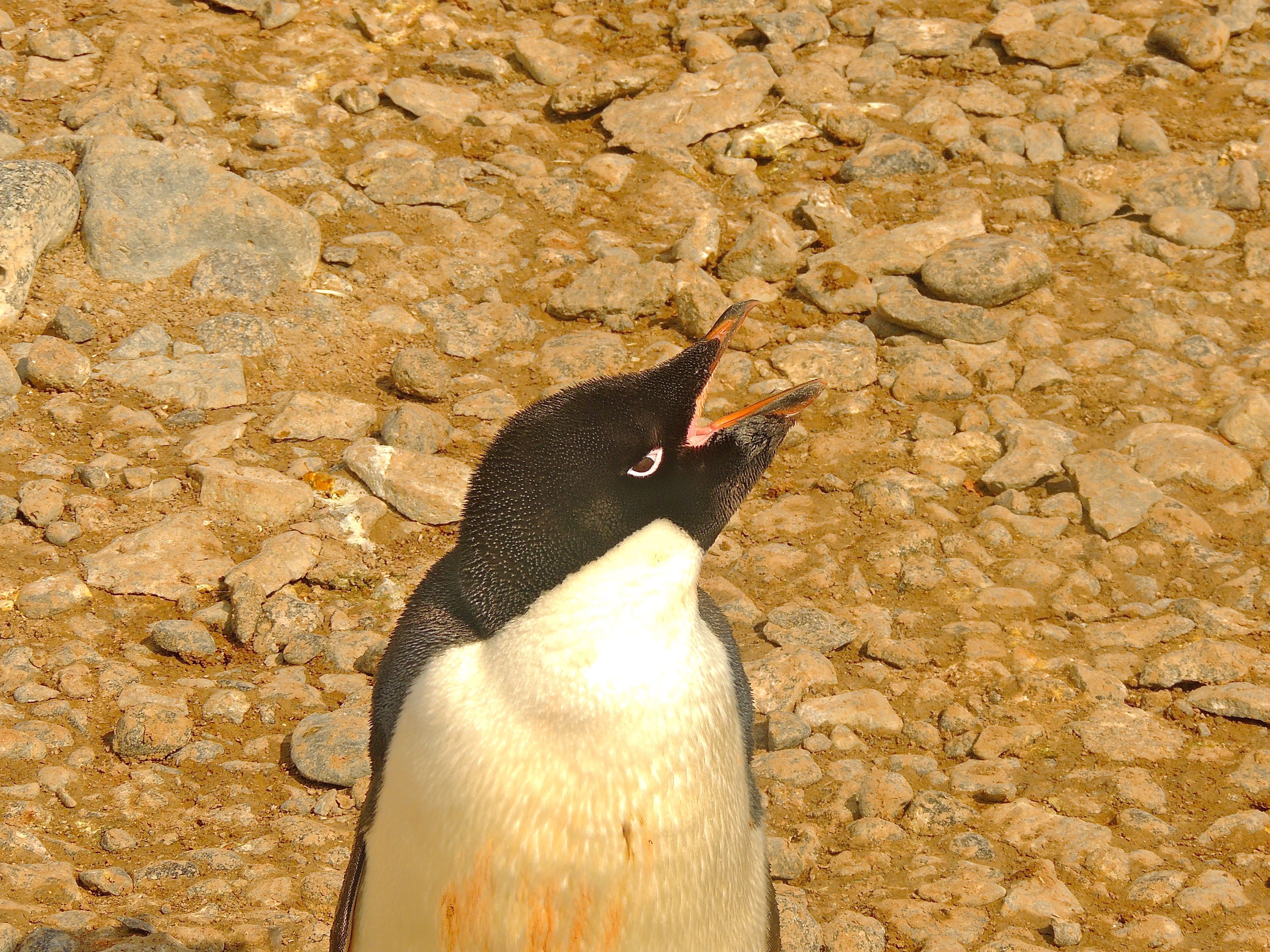 Adelie Penguin - Photo by William Young
Adelie Penguin - Photo by William Young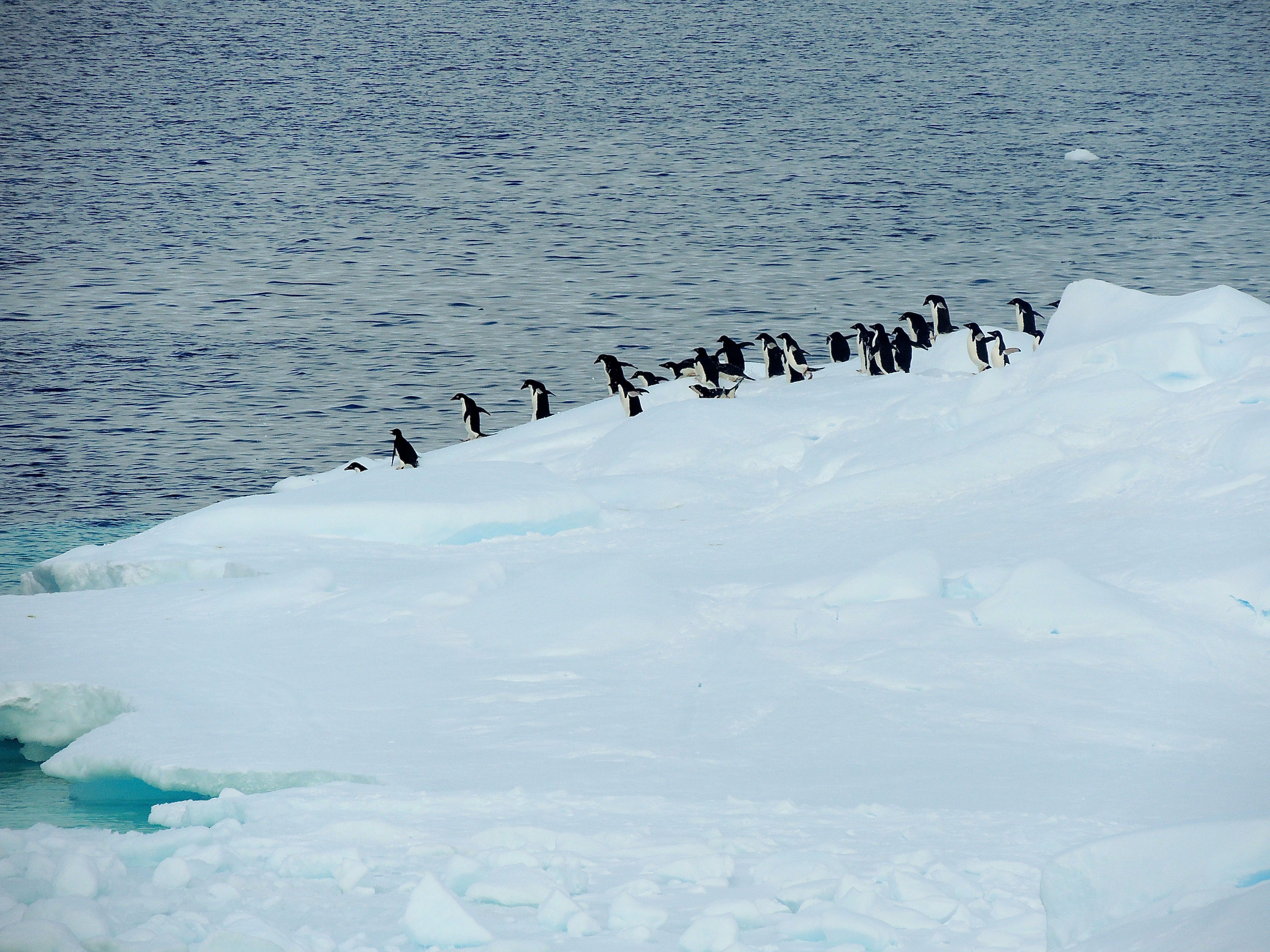 Adelie Penguins - Photo by William Young
Adelie Penguins - Photo by William Young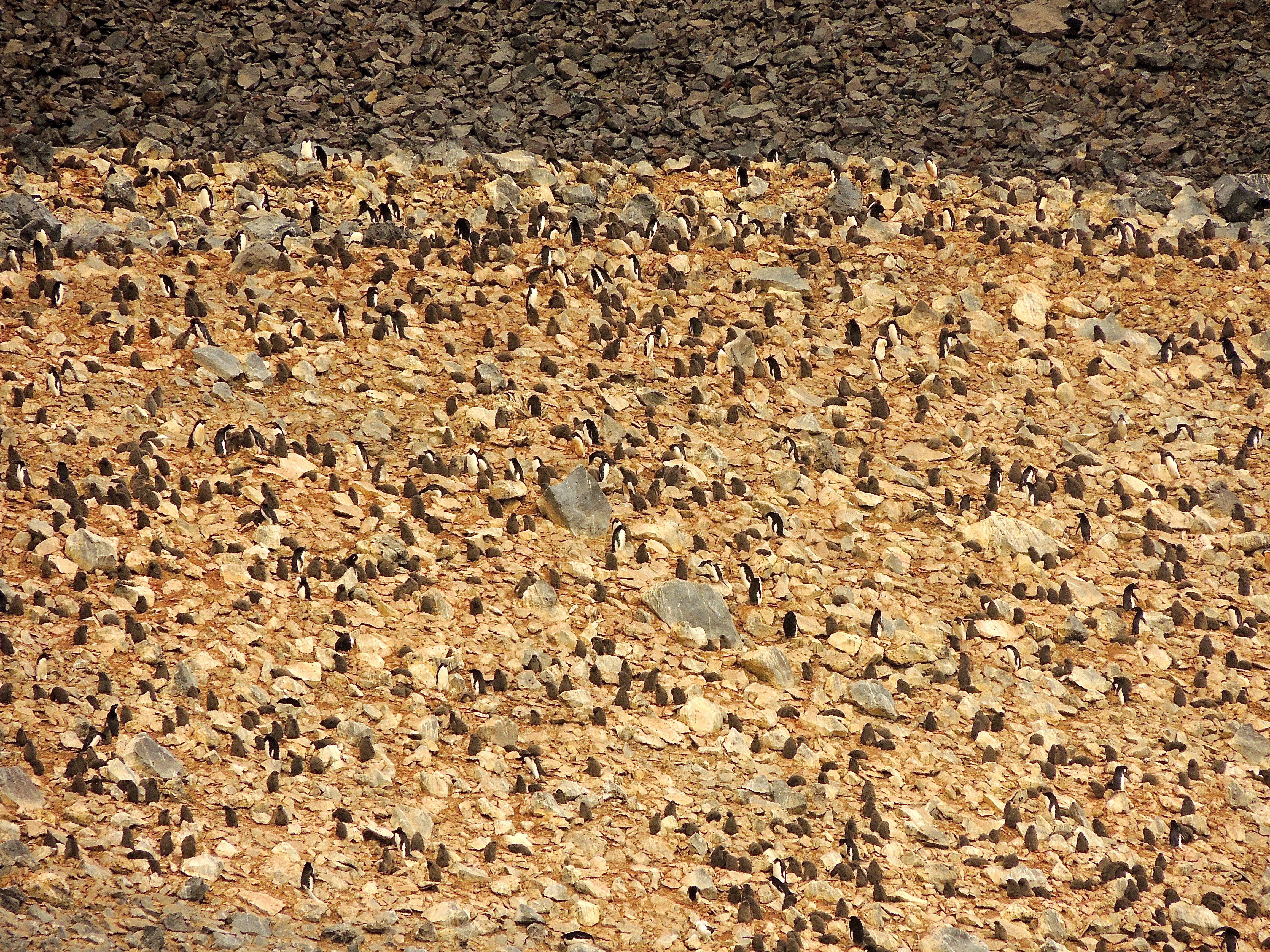 Adelie Penguins - Photo by William Young
Adelie Penguins - Photo by William Young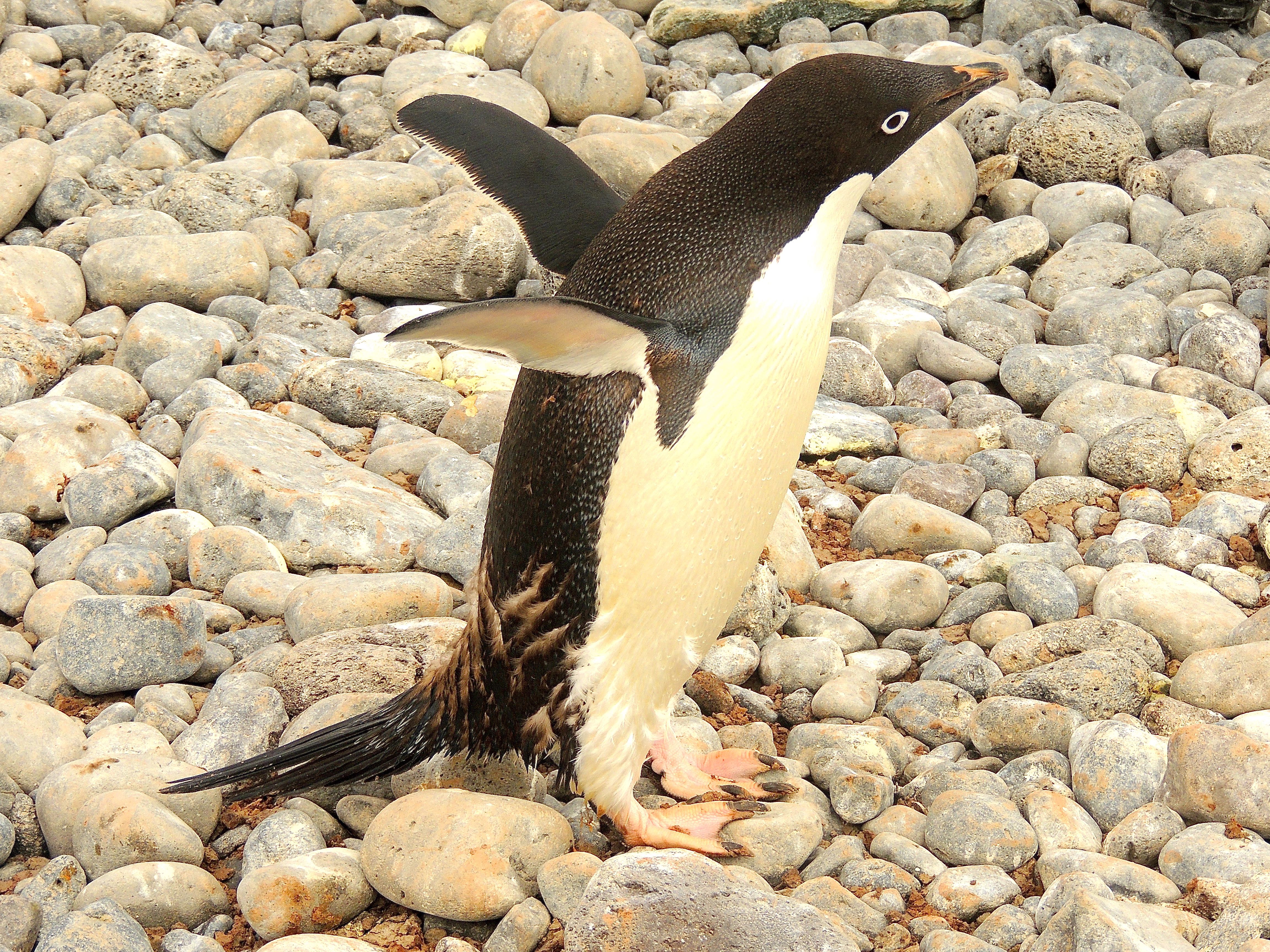 Adelie Penguin - Photo by William Young
Adelie Penguin - Photo by William Young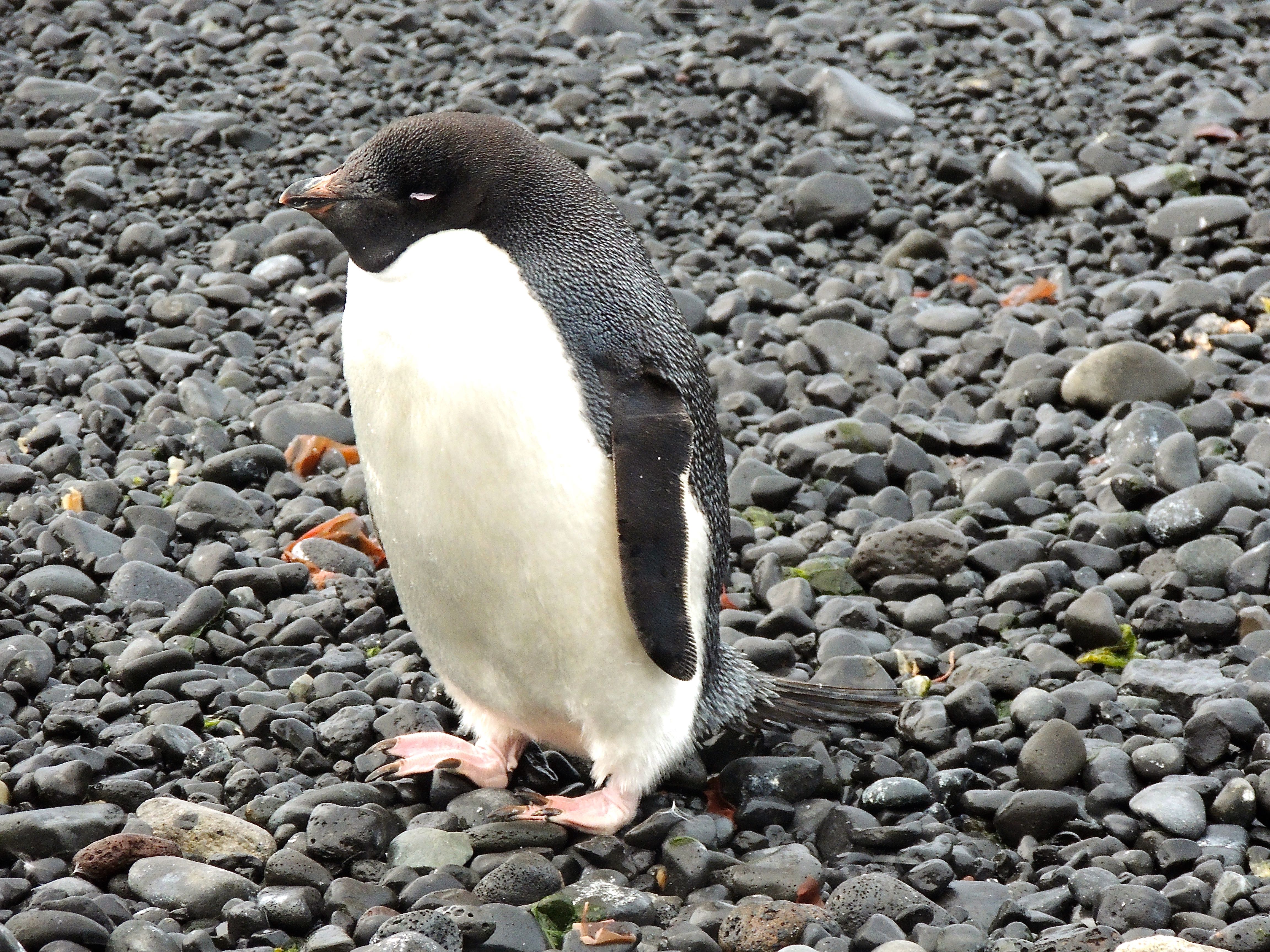 Adelie Penguin - Photo by William Young
Adelie Penguin - Photo by William Young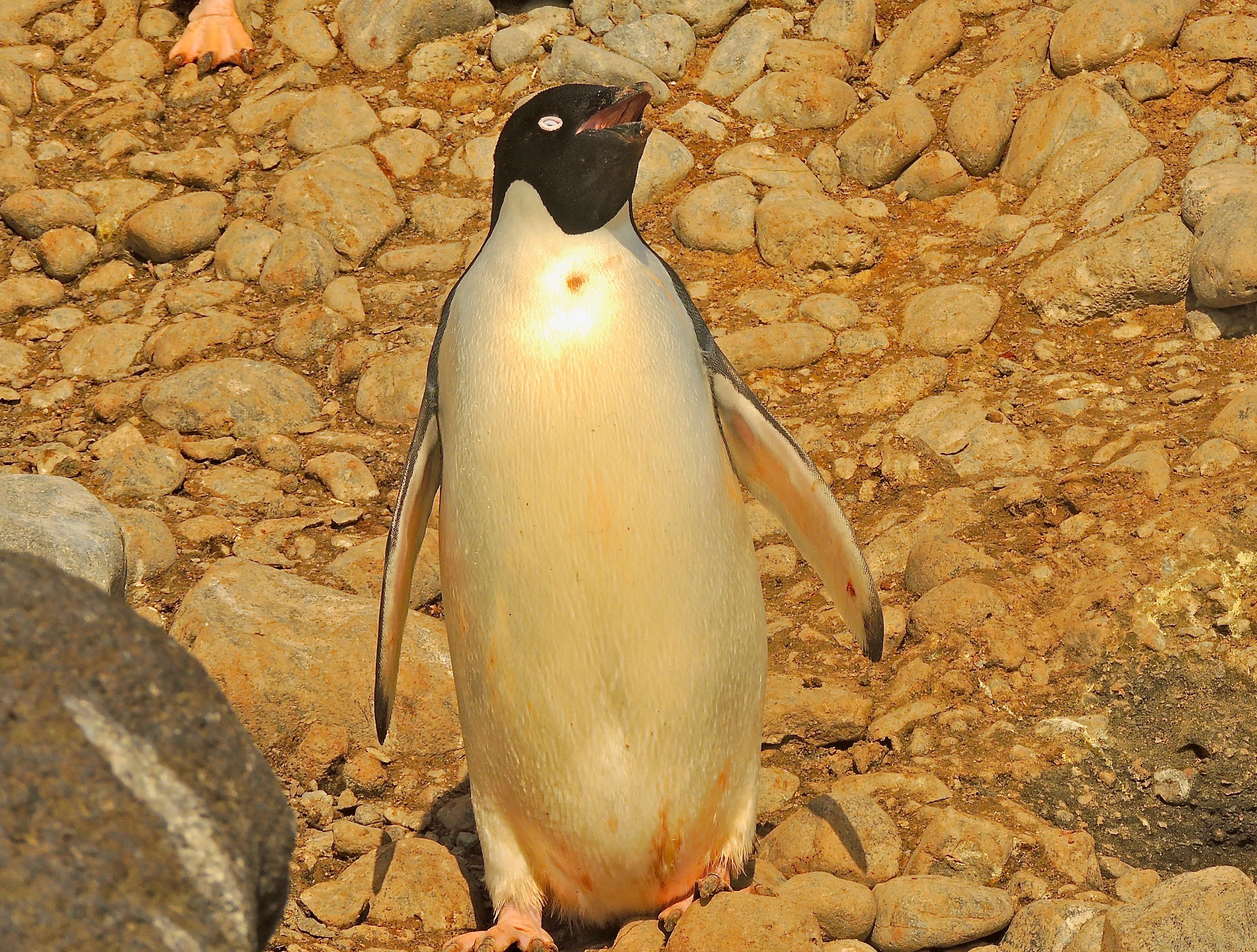 Adelie Penguin - Photo by William Young
Adelie Penguin - Photo by William Young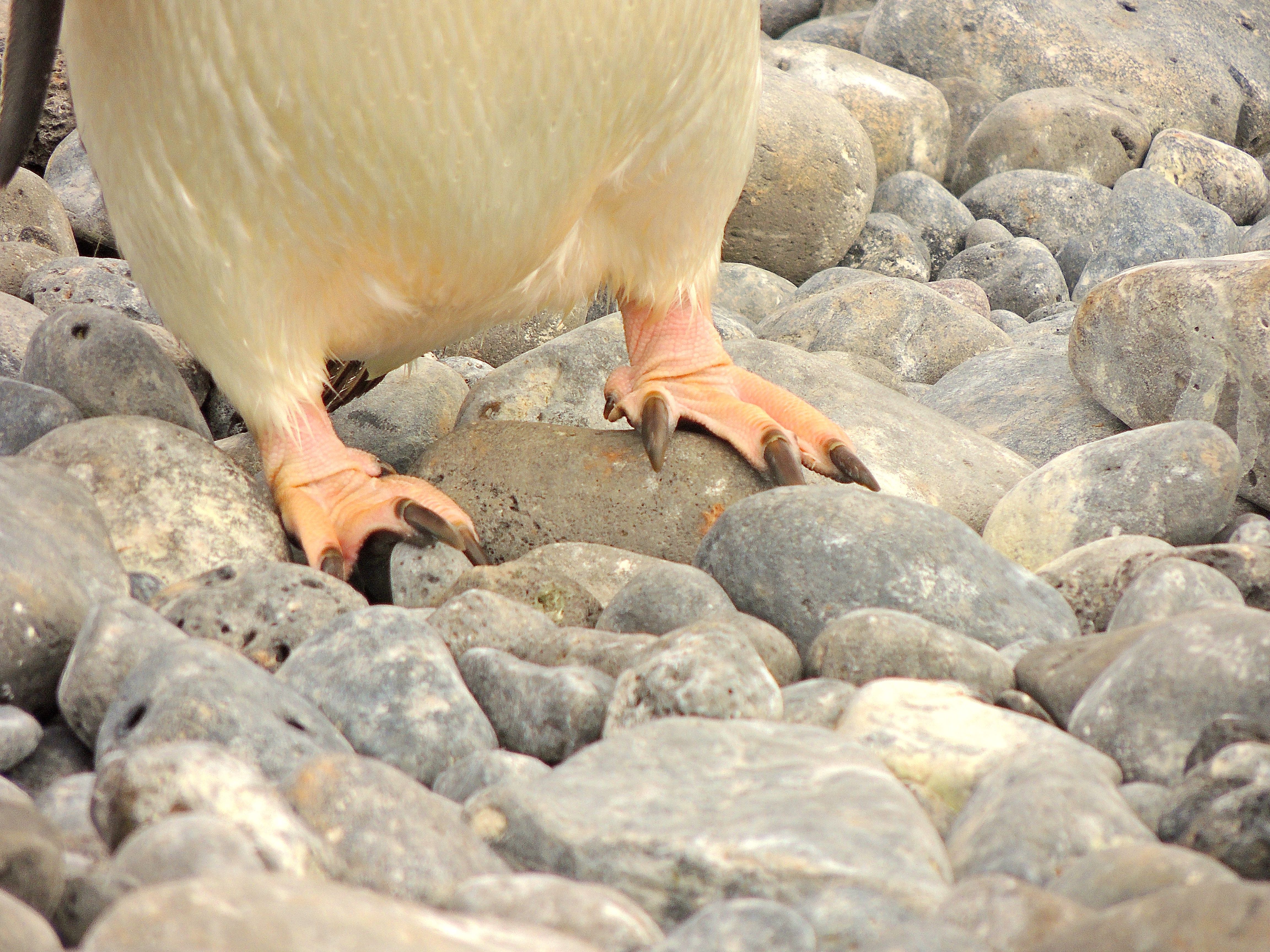 Adelie Penguin Feet - Photo by William Young
Adelie Penguin Feet - Photo by William Young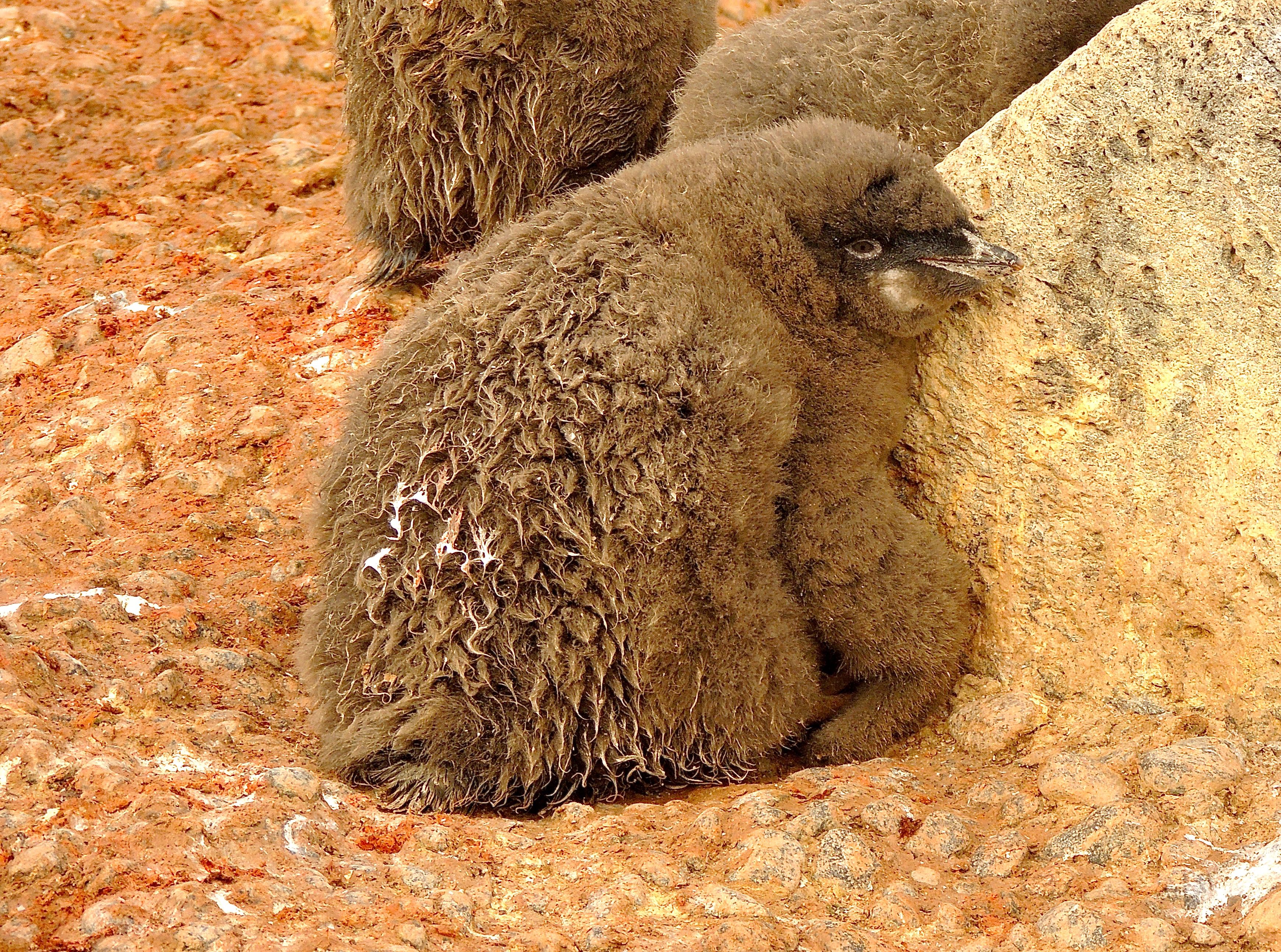 Adelie Penguin Chick - Photo by William Young
Adelie Penguin Chick - Photo by William Young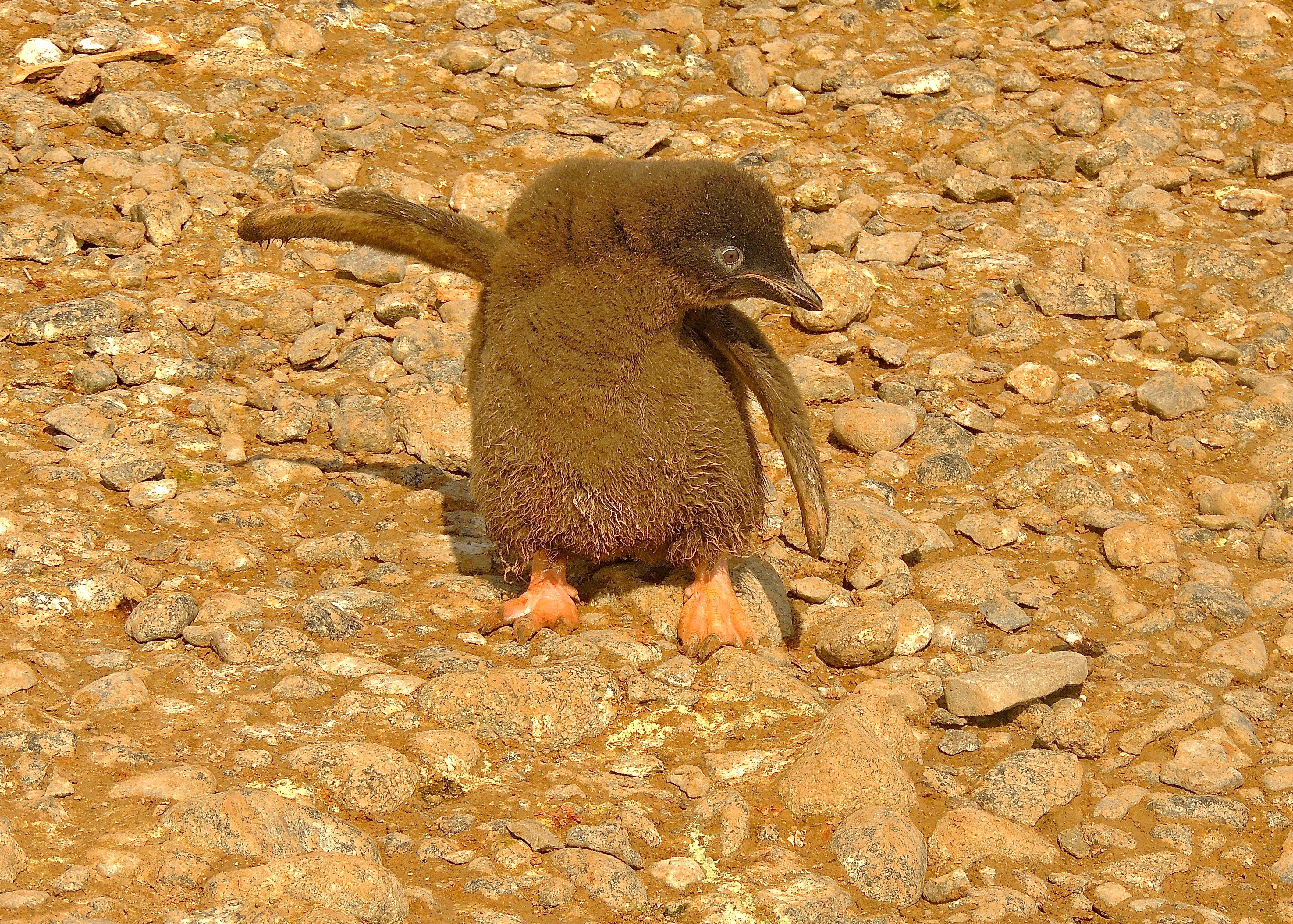 Adelie Penguin Chick - Photo by William Young
Adelie Penguin Chick - Photo by William Young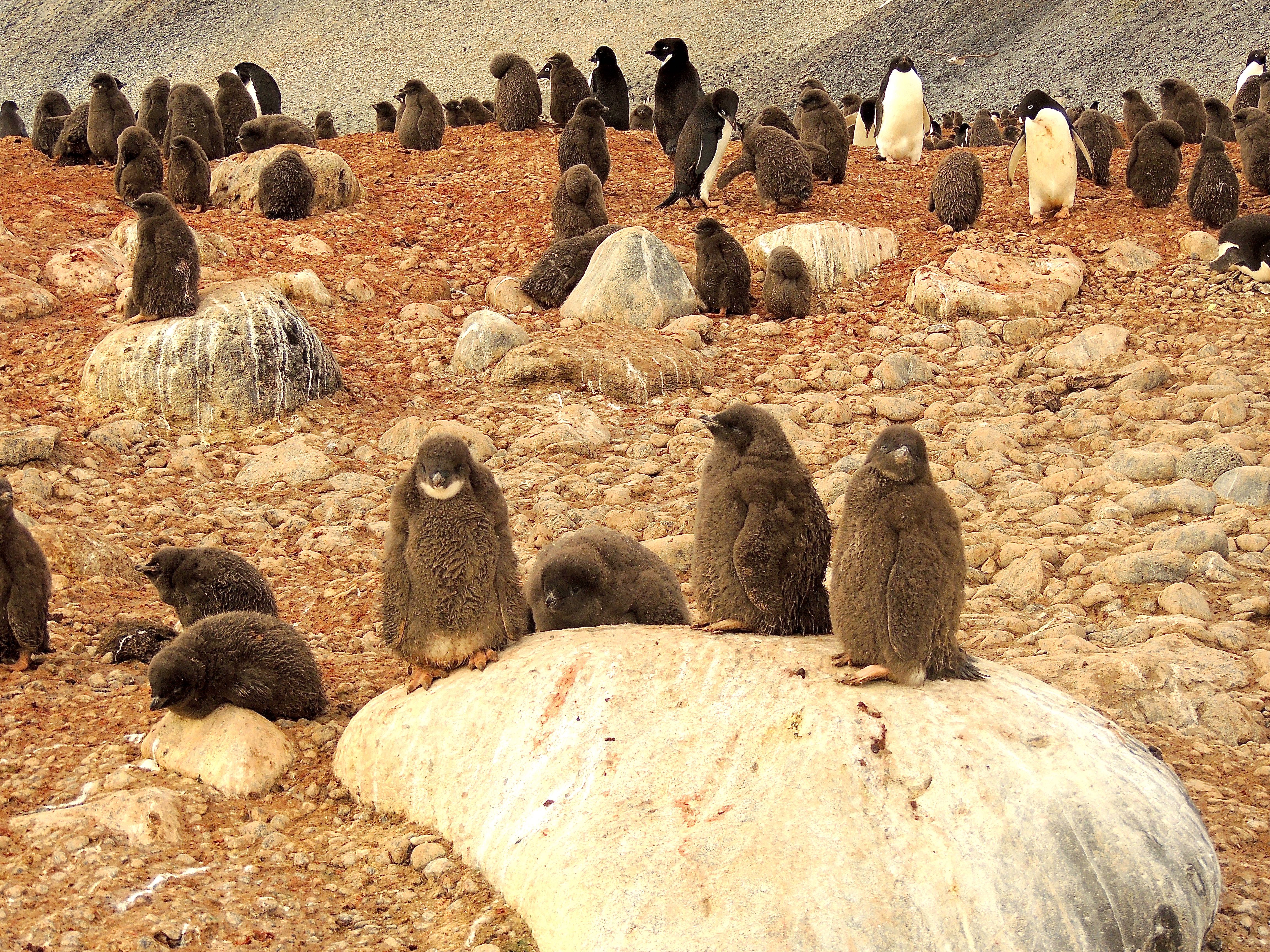 Adelie Penguin Crèche - Photo by William Young
Adelie Penguin Crèche - Photo by William Young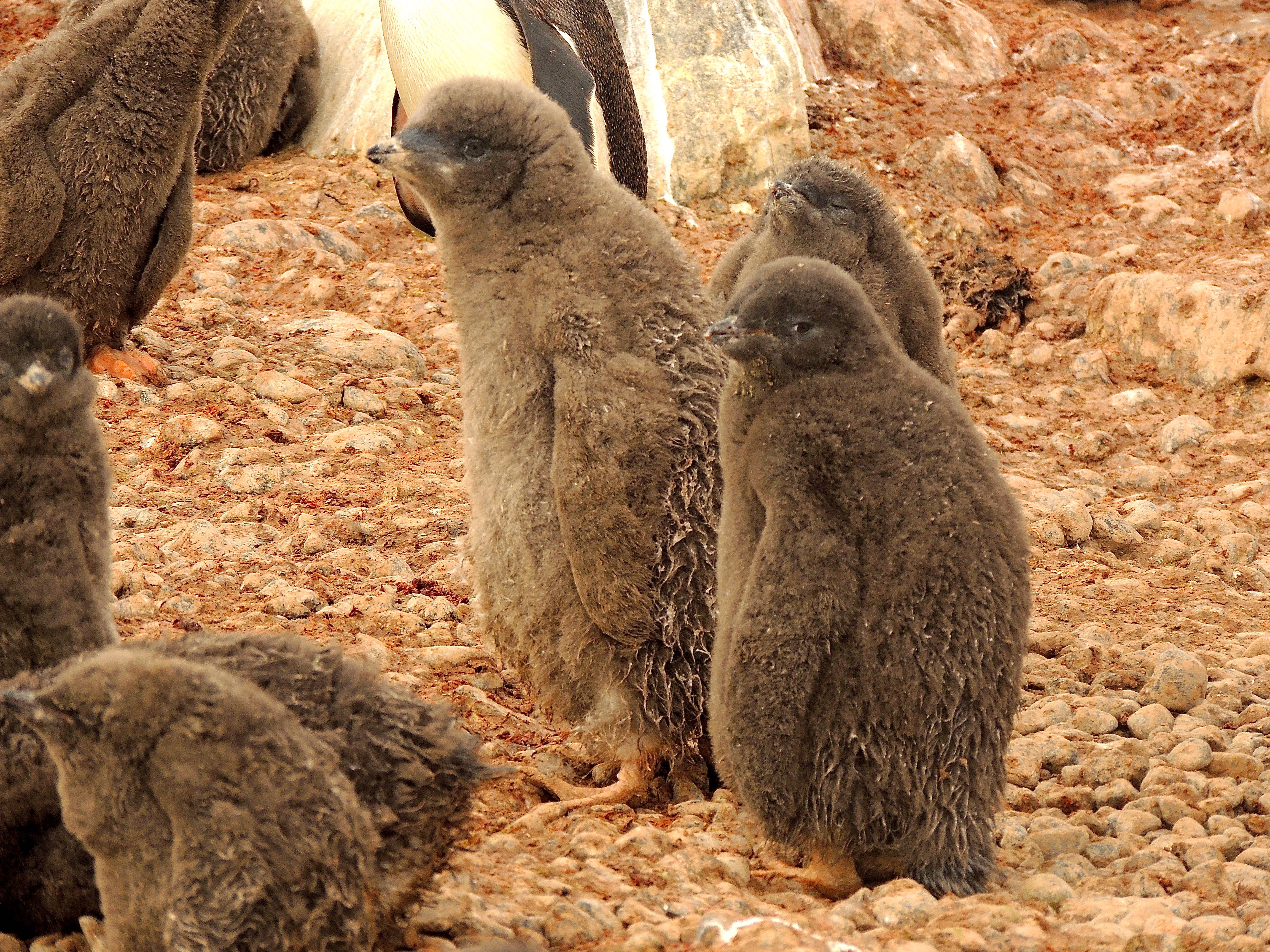 Adelie Penguin Crèche - Photo by William Young
Adelie Penguin Crèche - Photo by William Young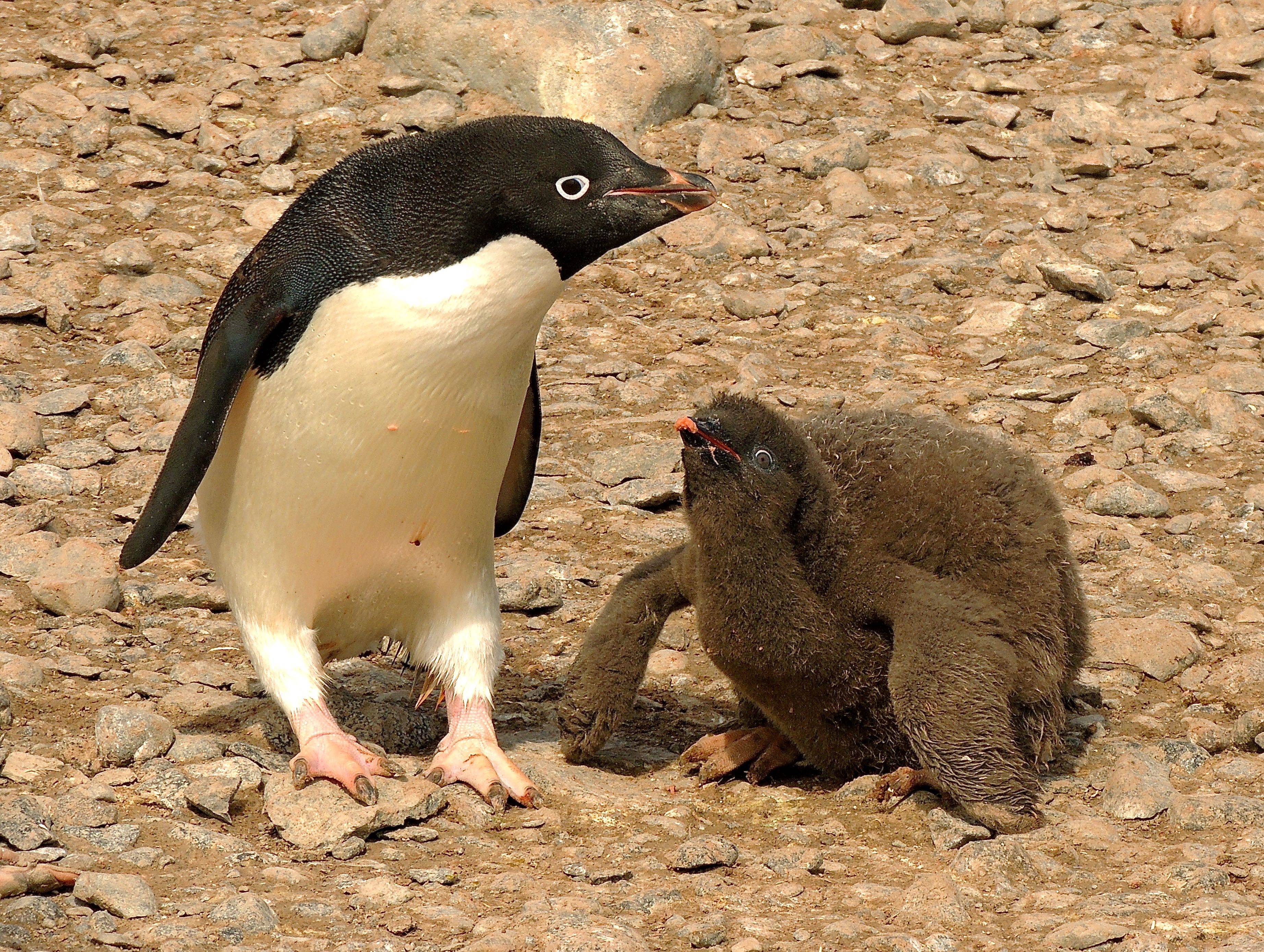 Adelie Penguin Adult with Chick - Photo by William Young
Adelie Penguin Adult with Chick - Photo by William Young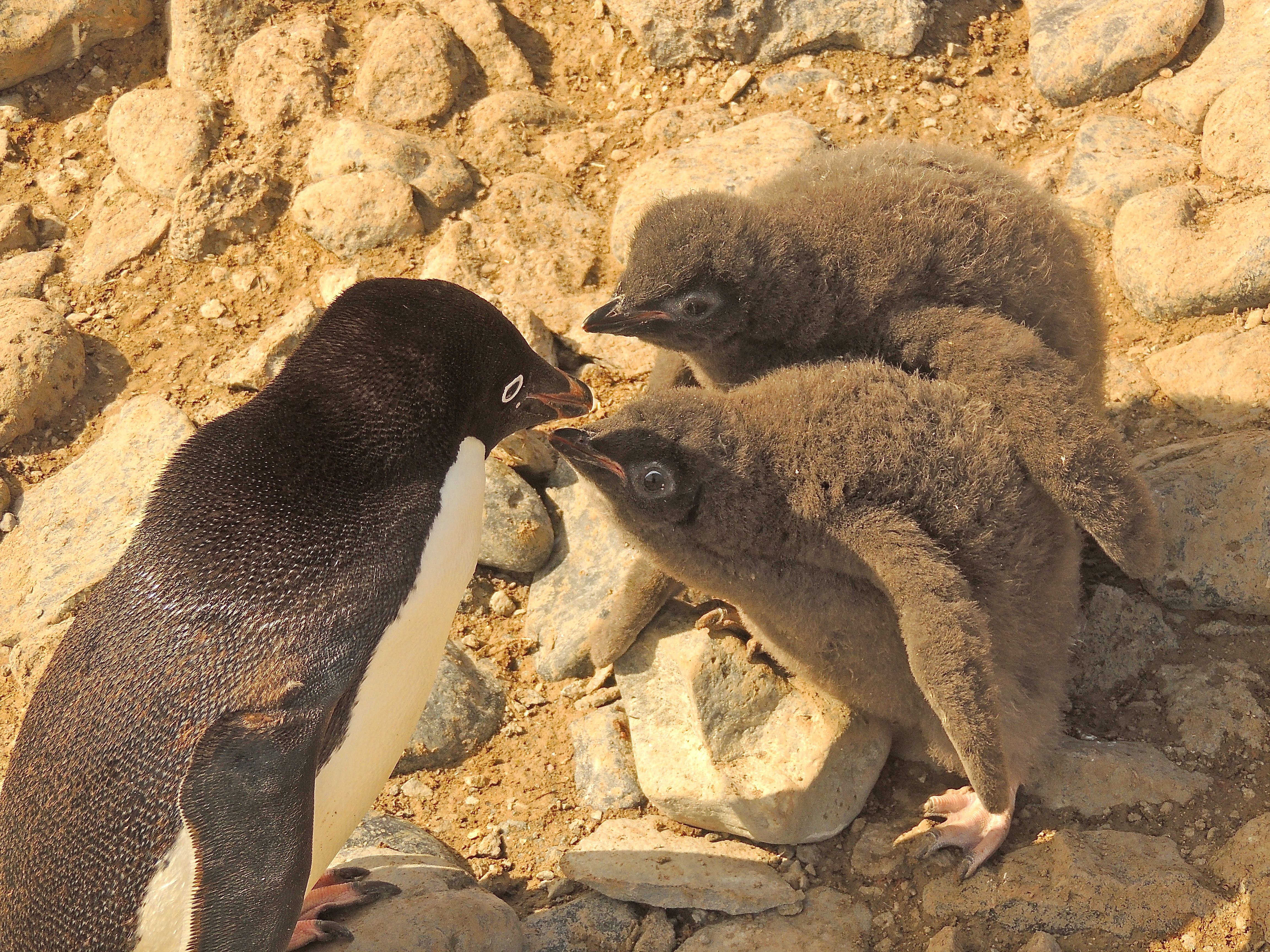 Adelie Penguin Adult Feeding Chicks - Photo by William Young
Adelie Penguin Adult Feeding Chicks - Photo by William Young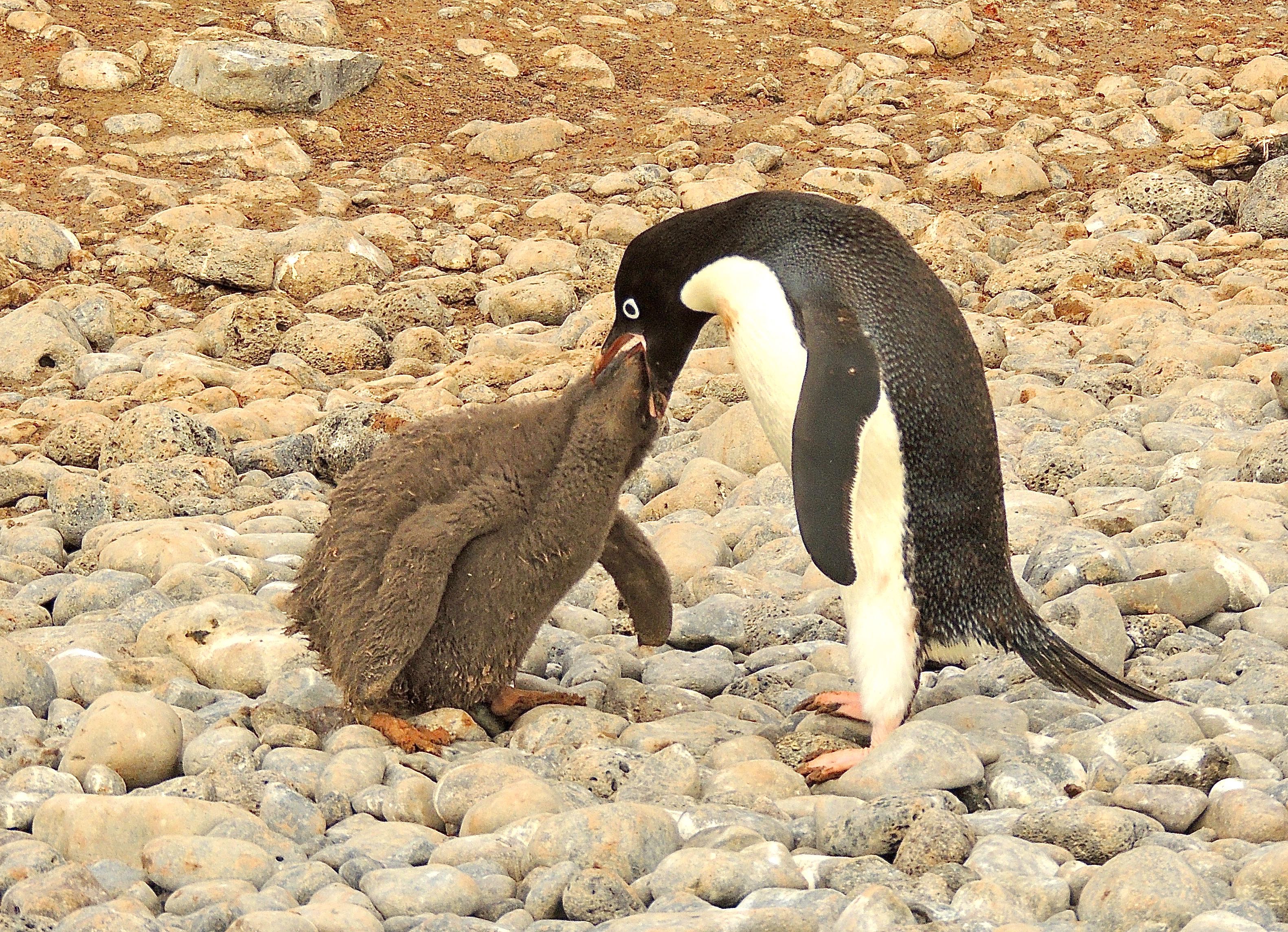 Adelie Penguin Adult Feeding Chick - Photo by William Young
Adelie Penguin Adult Feeding Chick - Photo by William Young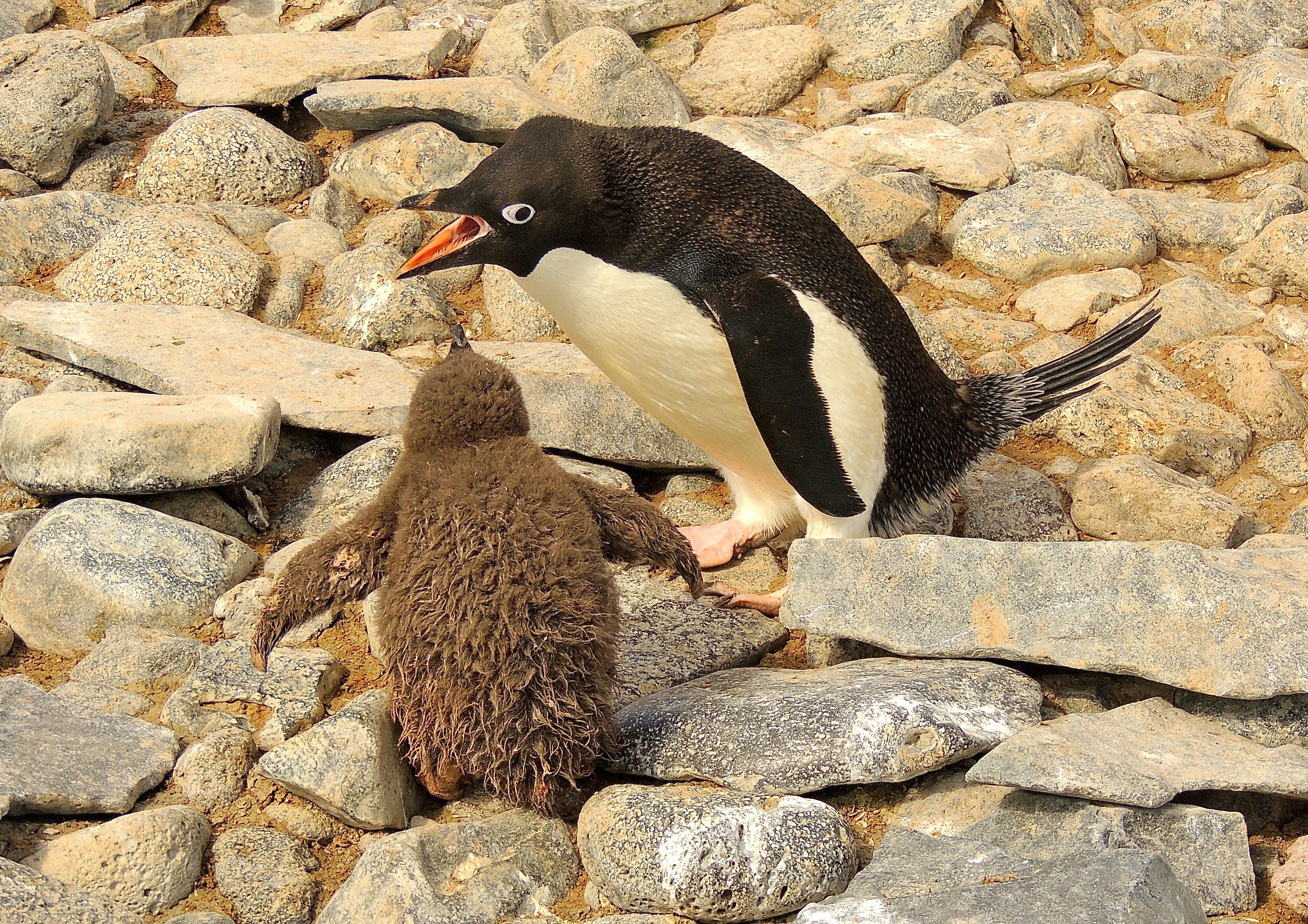 Adelie Penguin Adult Feeding Chick - Photo by William Young
Adelie Penguin Adult Feeding Chick - Photo by William Young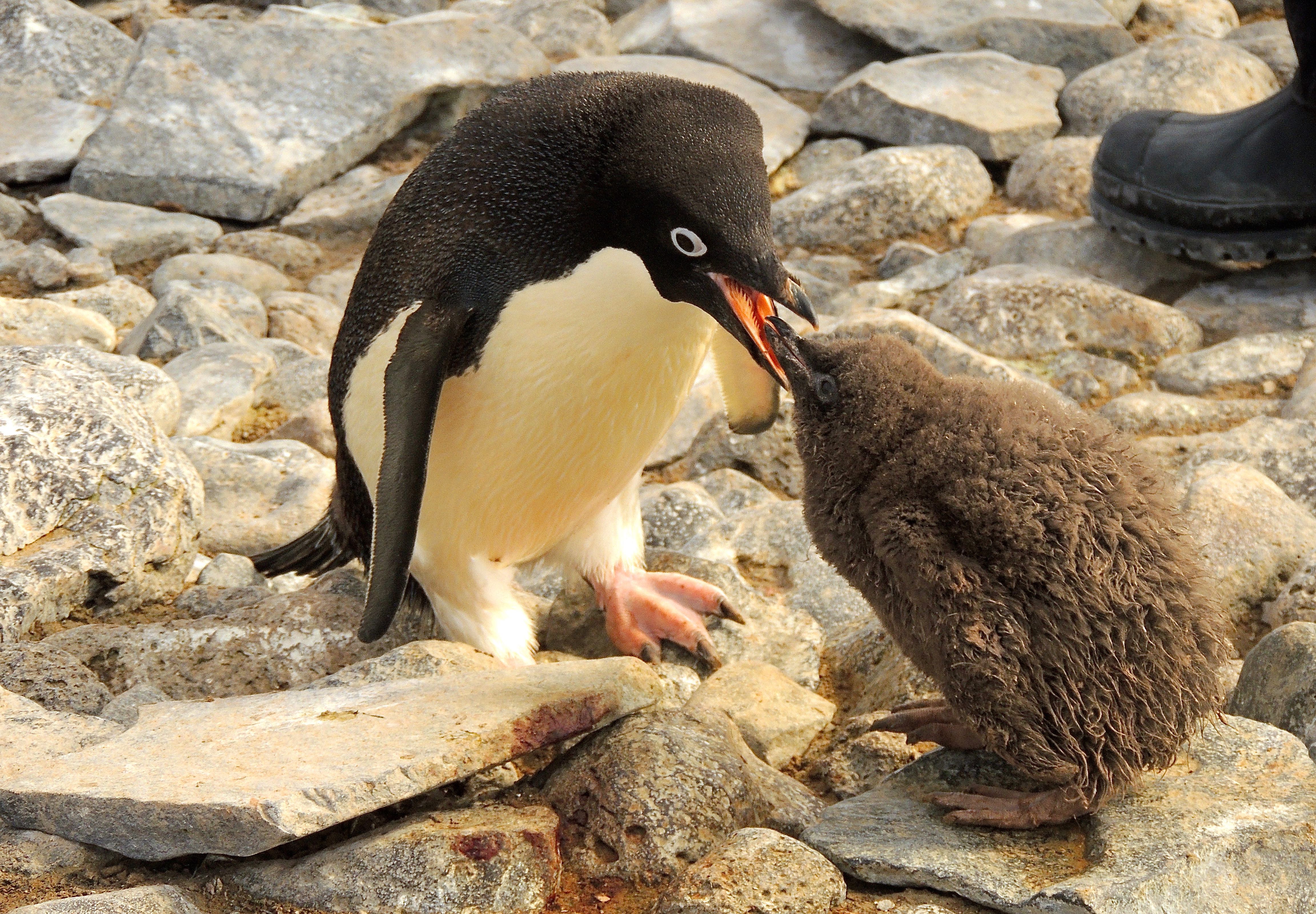 Adelie Penguin Adult Feeding Chick - Photo by William Young
Adelie Penguin Adult Feeding Chick - Photo by William Young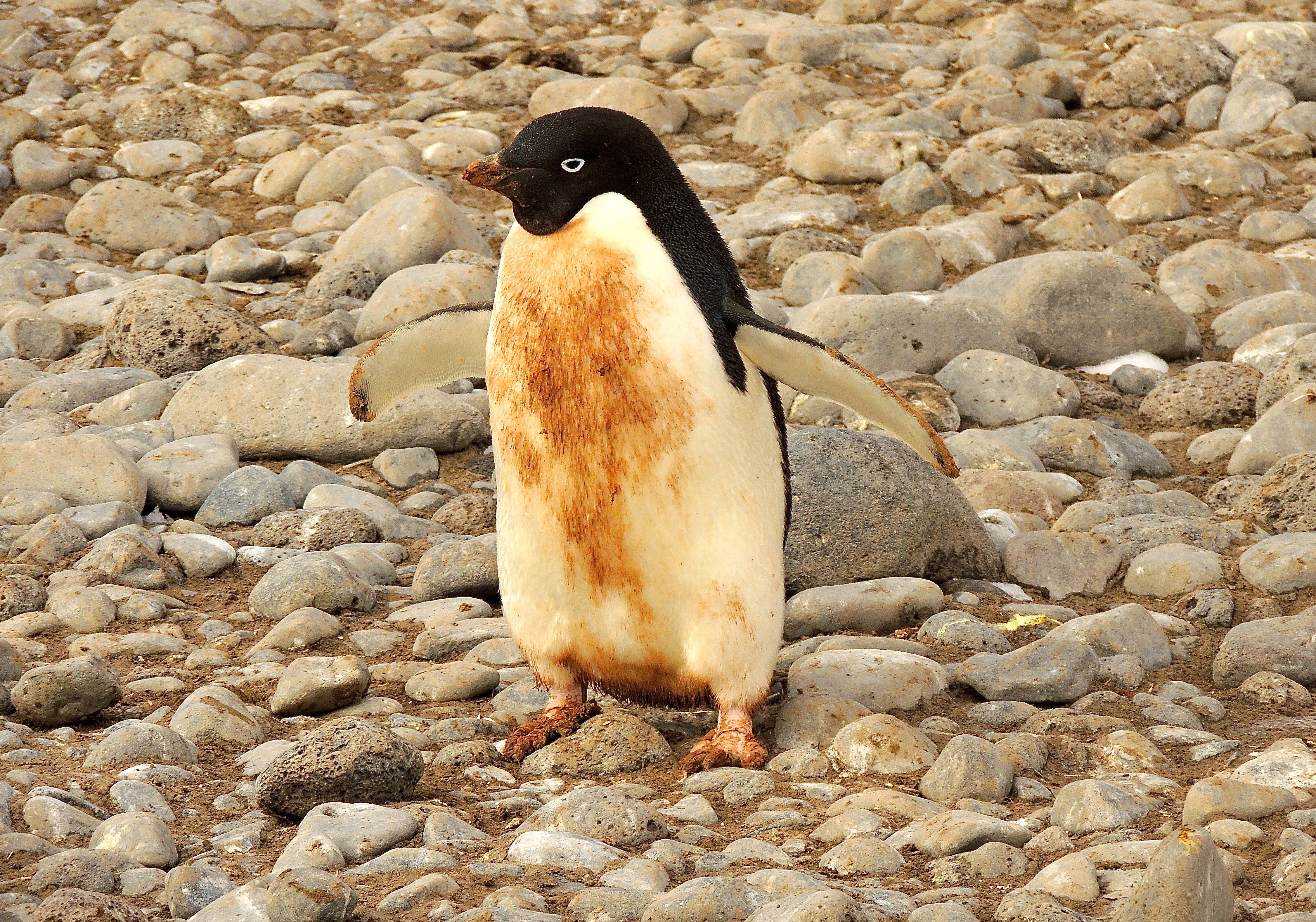 Adelie Penguin - Photo by William Young
Adelie Penguin - Photo by William YoungPaulet Island has an estimated 100,000 breeding pairs of Adelies. When an adult Adelie finishes feeding young, it runs away, and the young chase after it. Sometimes, both fall in the chase as they scramble over rocks. When they move forward on ice, they often mix waddling on their feet with tobogganing on their stomach. They sometimes travel considerable distances on their stomachs. Other penguin species toboggan as well. Skuas, sheathbills, Kelp Gulls, and giant petrels were in the Paulet Island colony. We saw a couple of skuas killing chicks, and there were quite a few dead chicks in the area. At one point near where the zodiacs departed, Michael and I were walking down a hill when an Adelie was feeding a youngster a few feet away. We both froze. I was so close I could see the barbs on its tongue when it opened its mouth. At one point, another inquisitive Adelie came by and wanted to peck at Michael's trousers.
AlbatrossesWe were at sea for about 16 days, and albatrosses were fairly common for most of the trip. The most widespread was the Black-browed, which is one of the smaller ones, or mollymawks. It is still a large bird, being a similar size to a giant petrel. The adult's head and underparts are white, and the tip of the tail is black. The upperwings are black from wingtip to wingtip. The underwings are white with a black leading edge and trailing edge. The edges do not continue across the breast, and the leading edge looks slightly broader than the trailing edge. The bill on the adult is pinkish-yellow, and if you look closely, it has a dark pinkish wash near the tip. Young birds have a dark bill, and their underwings look mostly dark. The adults have a dark eyebrow that makes their face look severe, as if they are permanently squinting.
On our first morning out of port, we saw thousands of Black-browed Albatrosses. Some followed our ship, hoping that the churning of the water would stir up food. As we entered the Beagle Channel at the end of the trip, the ocean was calm, and we saw large groups of them sitting on the water, along with a lot of Sooty Shearwaters and Magellanic Penguins. When they take off from the water, they run for about ten steps along the surface before becoming airborne. We visited one of their nesting colonies on Saunders Island. They nest on the ground, and the nests look like a small mud chimneys. One albatross picked up soil in its bill and threw it over its shoulder. It might have been a younger bird practicing nest building. The downy chicks are light gray with a black eye and black bill. They lack the eyebrow, but they have a thin black line running under the eye from the base of the bill. There was only one chick per nest. When leaving on the zodiac from Saunders Island, we were down at the level of the flying albatrosses who skimmed over the waves, and we were able to look up at them from underneath.
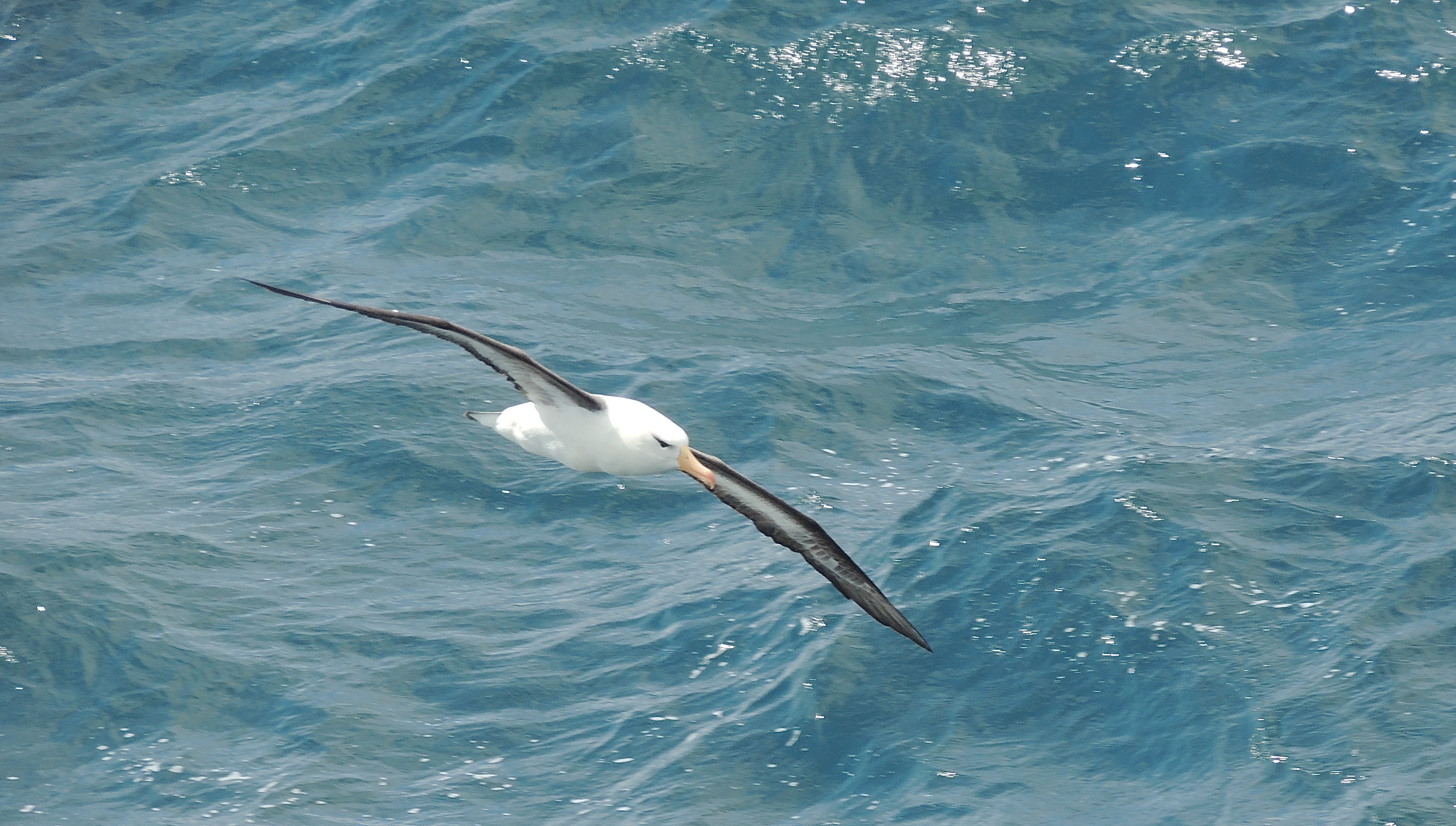 Black-browed Albatross - Photo by William Young
Black-browed Albatross - Photo by William Young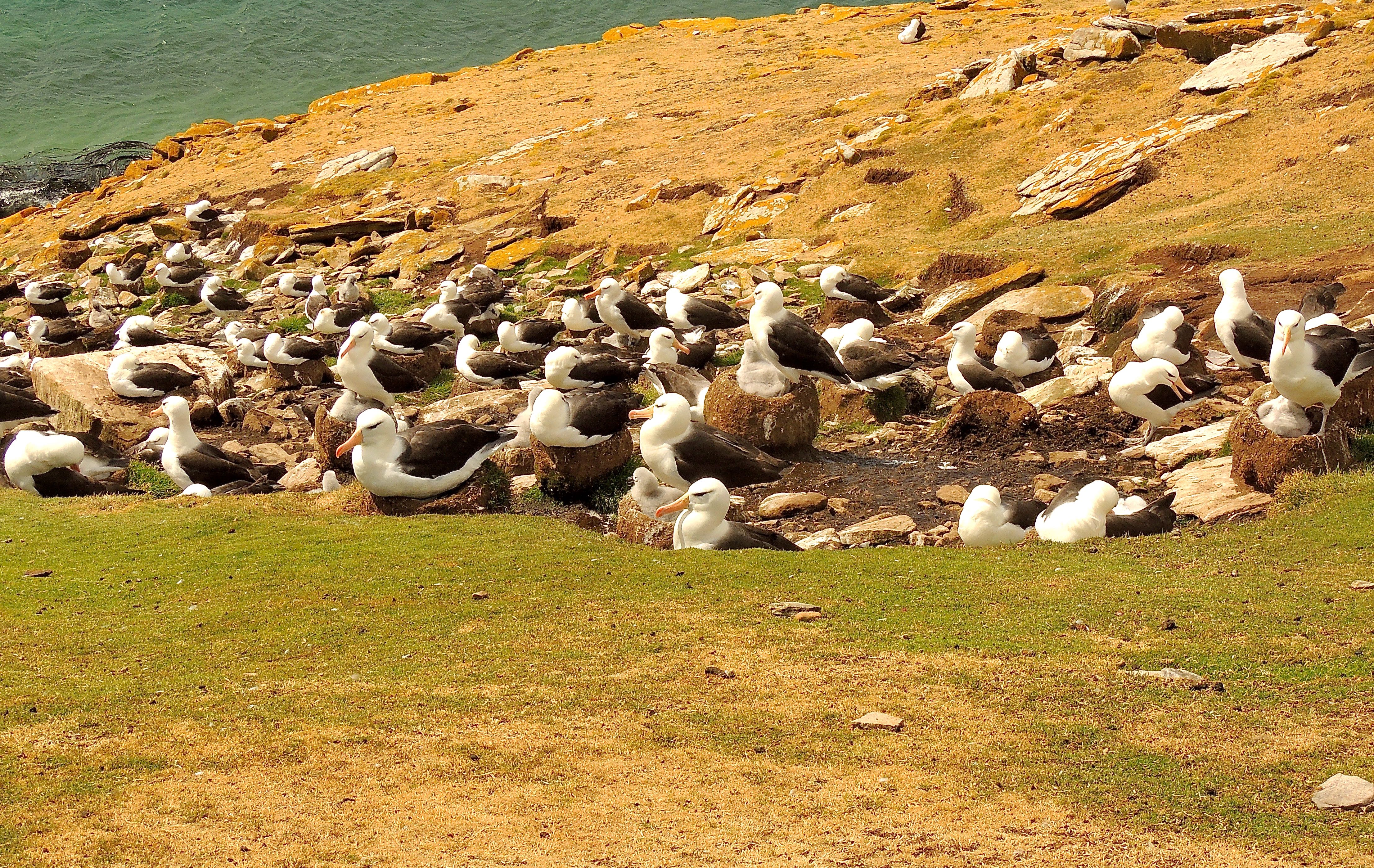 Black-browed Albatross Colony - Photo by William Young
Black-browed Albatross Colony - Photo by William Young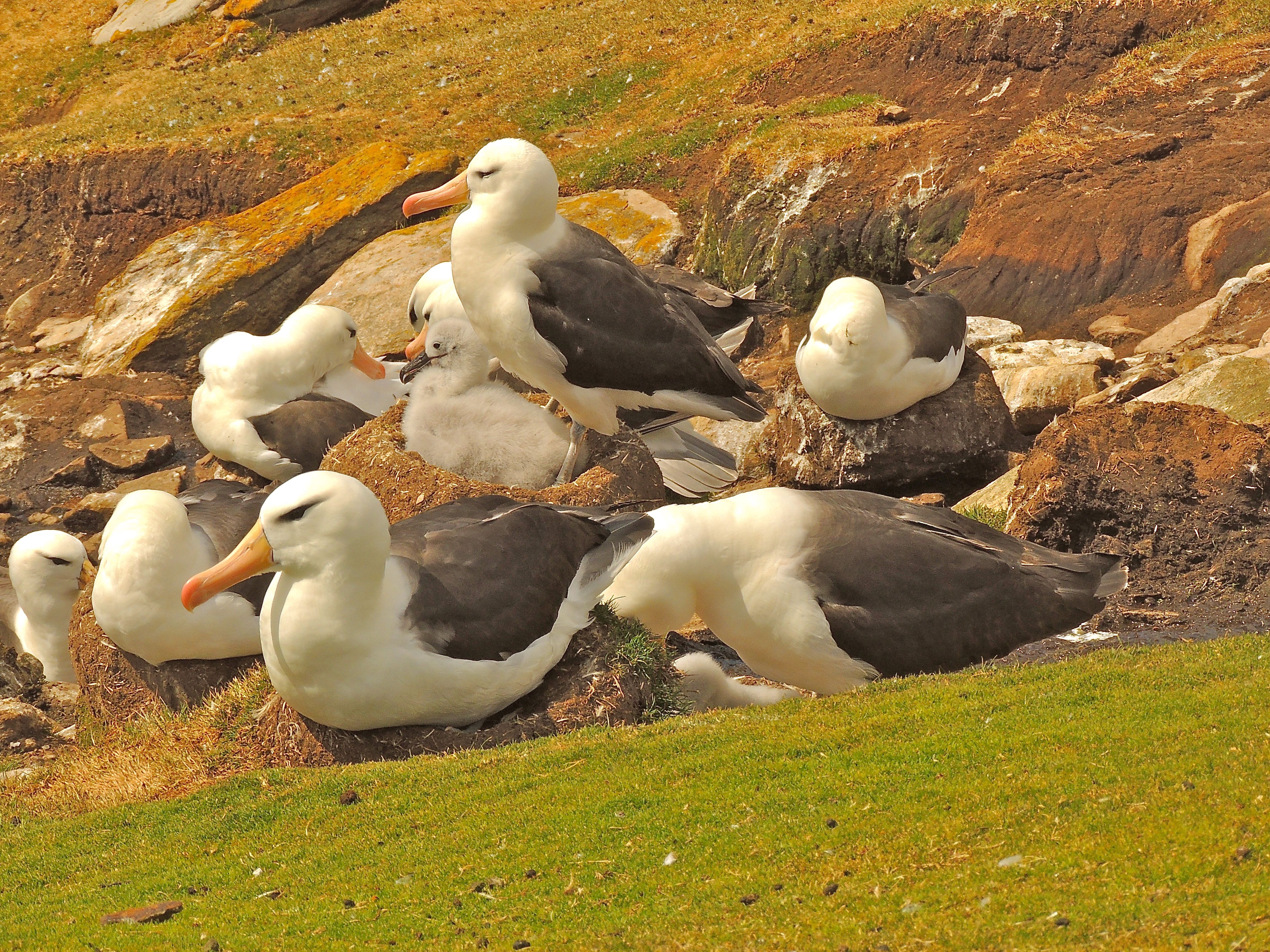 Black-browed Albatrosses - Photo by William Young
Black-browed Albatrosses - Photo by William YoungThe Gray-headed Albatross is a mollymawk who resembles the Black-browed. Its head is gray instead of white, and its bill is black with a yellow edge along the top and bottom. The underwing is slightly different. I saw probably about ten during the trip. They sometimes would come close to the boat, but most of the ones I saw were flying away from the boat. On our final day at sea, I saw what I thought was a Gray-headed who flew close to the back of the ship. Michael later looked at photos and determined that it was a Buller's Albatross, who is very similar.
The Light-mantled Albatross, who used to be called the Light-mantled Sooty Albatross, is a delicate looking bird with long thin wings. The back is a lighter brown than the wings. We saw some flying around the ship, and I also saw one sitting on the water. People who went on the Shackleton hike saw one on a nest. I saw a nest on a distant cliff face when we were at Prion Island. I also saw a couple flying around the cove at Hercules Bay, and I saw more when I was alone at the back of the boat near Stromness. They are lighter colored than both the White-chinned Petrels and the young giant petrels. They look grayish from a distance, and one needs to get a close look at them to appreciate the subtlety of their brown-and-tan plumage.
Wandering Albatrosses were fairly common in some places. One day, some were flying directly over our ship, relatively low. On a day in the Drake Passage, I watched five trailing in the wake. The Wandering goes through numerous plumages on the way to adulthood, and within this group of five, I saw four different plumages. There was a Black-browed Albatross flying with them, which showed how much larger the Wandering is — the wingspan of the Black-browed is 7 to 8 feet, compared to the Wandering whose wingspan is 10 to 12 feet. The adult Wandering has an all white body, and a way to separate them from the similar adult Royal Albatross is that the Wandering always has some black on the tail, even if it is only a few small feather tips. Most of the front of the upperwings is white, while the back of the wing to the tip is black. The underwings are mostly white, with black wingtips and a black trailing edge. The bill is pinkish. Albatrosses have a small tube on each side of their long bill for excreting salt, while storm-petrels and some of the other seabirds have one tube in the middle. If one gets a close look at the adult Wandering, there is a mustard yellow swatch behind the eye. Younger birds have more black on the wings, and some have all black upperwings. Birds who are in their second year still have some brown plumage on their body and head. Their face looks much more serene than the face of the Black-browed. We visited an area where they nest at Prion Island in South Georgia. The nest was on the ground and was made of mud and grass, woven together to form a small bowl. One of the albatrosses was doing nest maintenance. The nest was near the top of what looked like a ski slope going down toward the water. Giant petrels were nesting in the area also, and both of these large species use the ski slope to run down and become airborne. The large albatrosses such as the Wandering spend most of their time soaring in the wind, and they must make a considerable effort to get off the ground. A reason they are not found in more northerly latitudes is that they were not able to become airborne in the area of the ocean known as the doldrums, which had little wind.
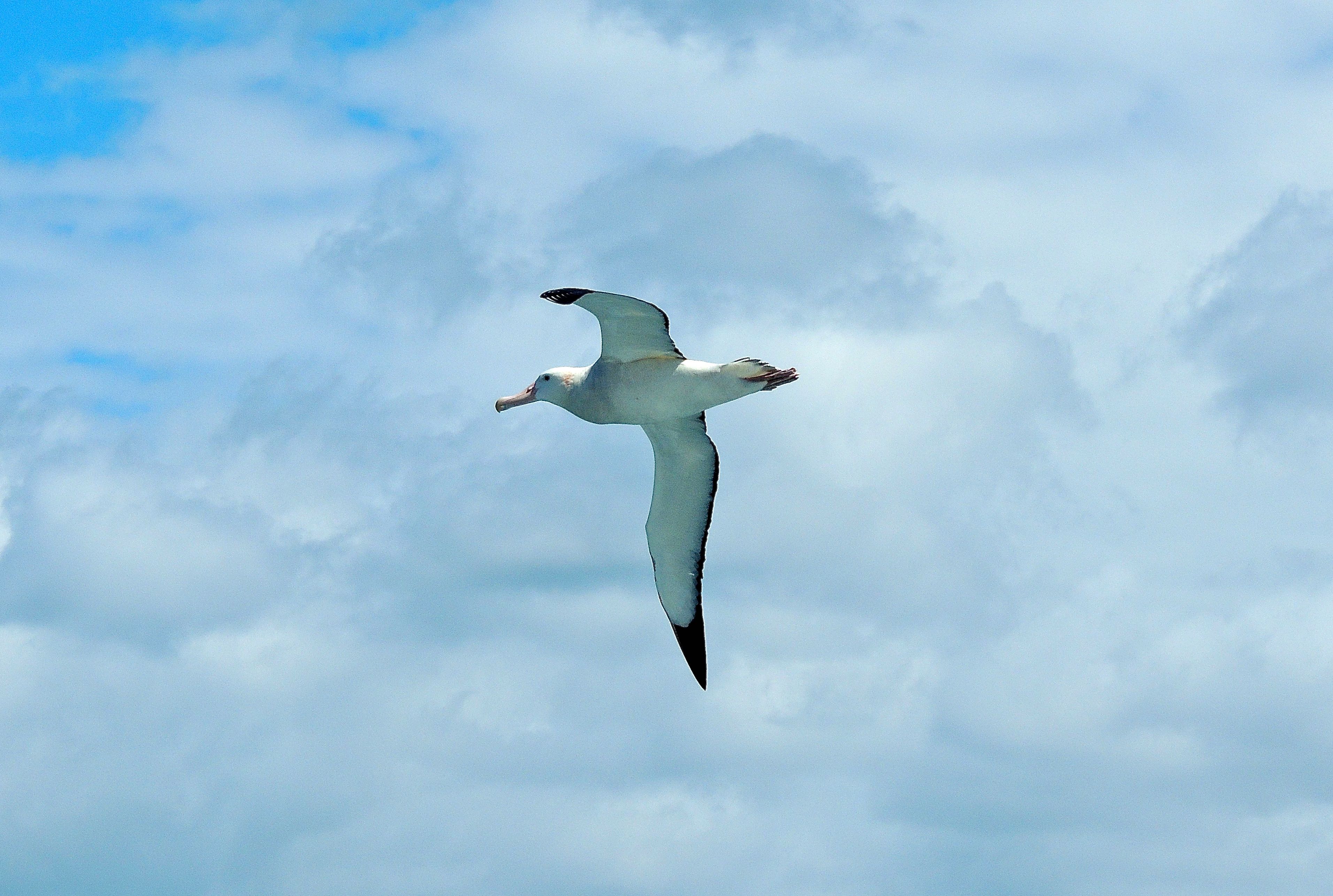 Wandering Albatross - Photo by William Young
Wandering Albatross - Photo by William Young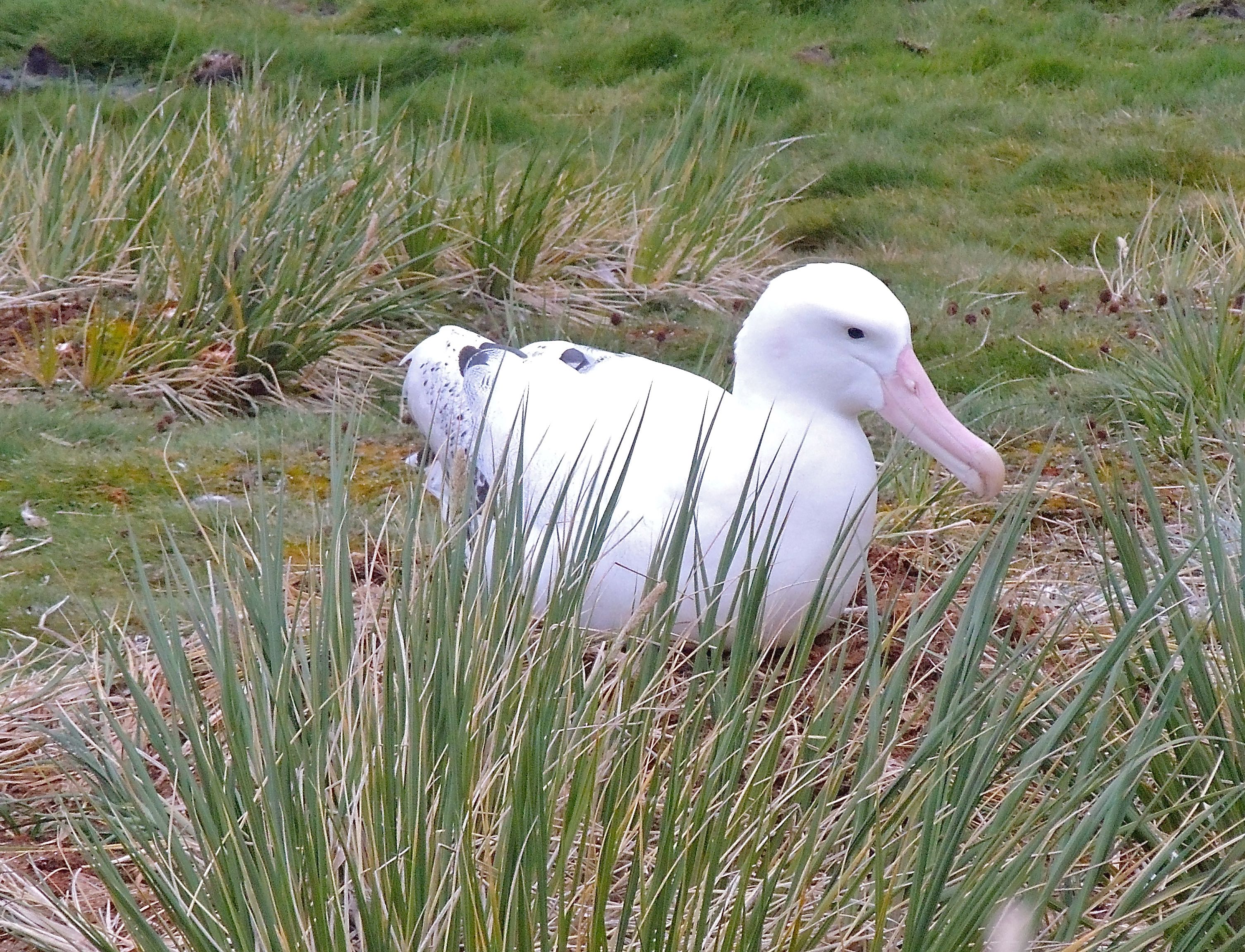 Wandering Albatross at Nest - Photo by William Young
Wandering Albatross at Nest - Photo by William YoungIt is sometimes not easy to separate a Royal Albatross from a Wandering. The Royal has a white body in all plumages. It lacks the yellow swatch behind the eye, and its pink bill has a thin black line separating the upper and lower mandibles. Its tail is always all white. The appearance is otherwise similar to a Wandering. Separating Northern and Southern Royal Albatrosses is quite difficult. We studied one large albatross who had a white leading edge to the wing. The upperwings were all dark with no white. We decided it was a Southern, because there was no black feathering in the carpal region. I watched a Royal Albatross one day with Jim whom he called a Northern, but I could not have identified it on my own.
On our first morning at sea, the sky was filled with seabirds, including huge numbers of albatrosses. After awhile, it required an effort not to become blasé about seeing them. I had to remind myself, "I'm looking at albatrosses" and I don't get to do this every day"
Petrels and relativesThe bulk of our birdwatching on the expedition was from the ship. The largest group of birds we observed were the petrels and their allies, which also included the prions, shearwaters, fulmars, and giant petrels. They ranged in size from birds who were the size of mollymawks to birds who were little larger than swallows.
The giant petrels are large and look a bit like dodos when they are on the ground or the ocean. There are considerable differences in plumage by age, with the young birds being dark brown and the older ones becoming lighter. They are scavengers, and someone giving a talk showed a photo of two of them with blood all over their heads after eating a dead seal. Unlike vultures who have lost their head feathers in an effort to stay clean, giant petrels can dip their bloody head into the water. Some of them nest in penguin colonies so that they can be close to their food source. When on the ground, they sometimes spread their wings and stomp around with their tail upraised in a threat posture to defend a carcass, almost like an enraged rooster. They had a crazed and diabolical look in their eyes — they also looked this way in the photo with the blood-soaked heads. The Northern and Southern Giant Petrel can be difficult to tell apart. The best fieldmark is that the Southern has a green tip to the bill, while the tip of the Northern's is reddish purple. I had trouble seeing this unless I saw a bird flying close to the ship in good light. The Southern has an all-white color morph known as a White Nelly. We moved close to one on our zodiac ride from Saint Andrews back to our ship. The bird was sitting placidly in the water. As the zodiac approached, it did not fly away, but it seemed to intentionally position itself so that its back was to us, as if it were trying to snub us. Giant petrels often followed our ship. I once saw a pair of Northern Giant Petrels engaged in courtship behavior, flying together and stretching their necks. Near the Falklands, I saw a Brown Skua and giant petrel going after each other. At Prion Island, I saw one use the same runway to the ocean that the Wandering Albatrosses used. And at Saint Andrews, we saw a giant petrel whitewater rafting like the King Penguins.
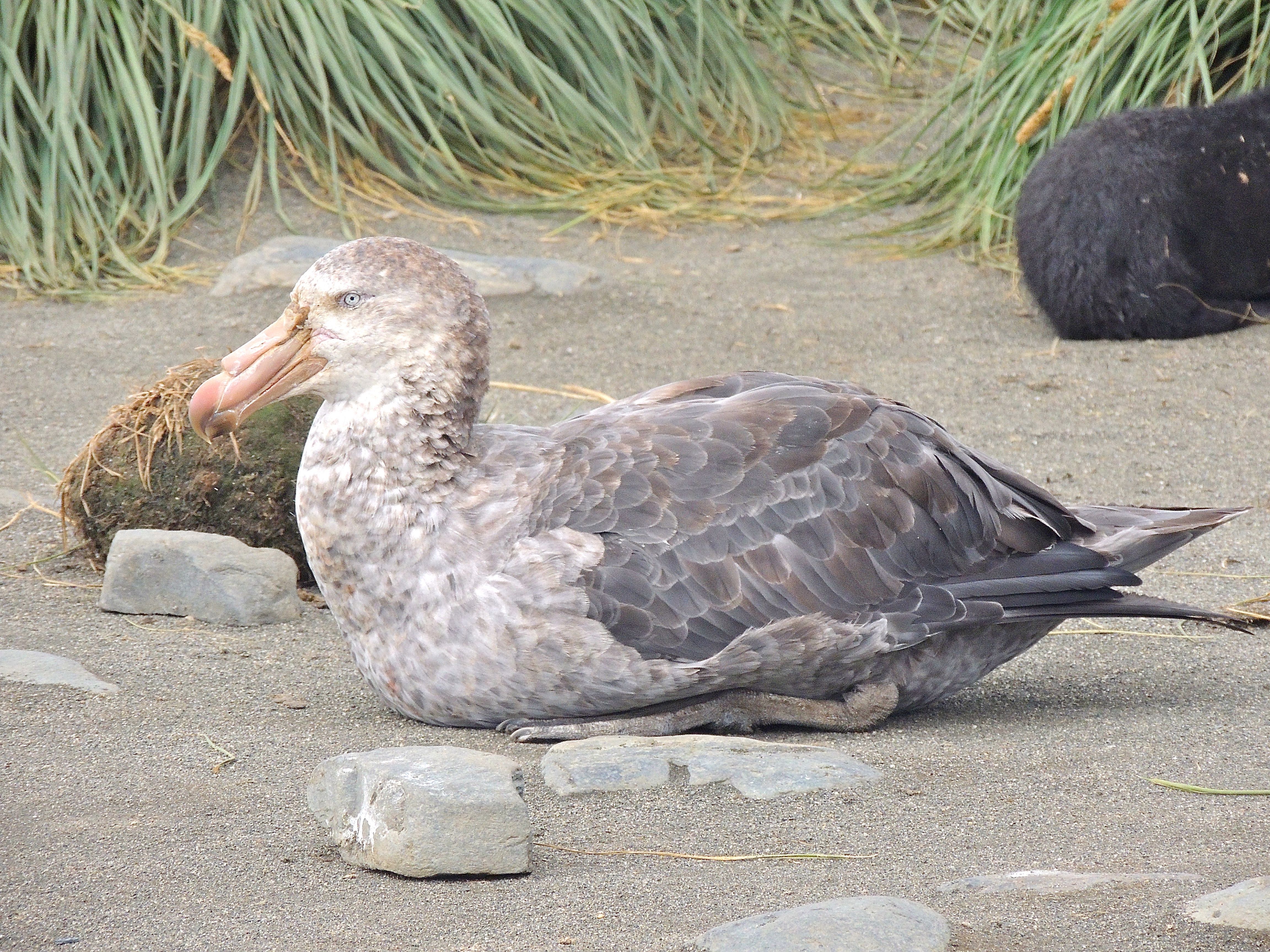 Northern Giant Petrel - Photo by William Young
Northern Giant Petrel - Photo by William Young Northern Giant Petrel - Photo by William Young
Northern Giant Petrel - Photo by William Young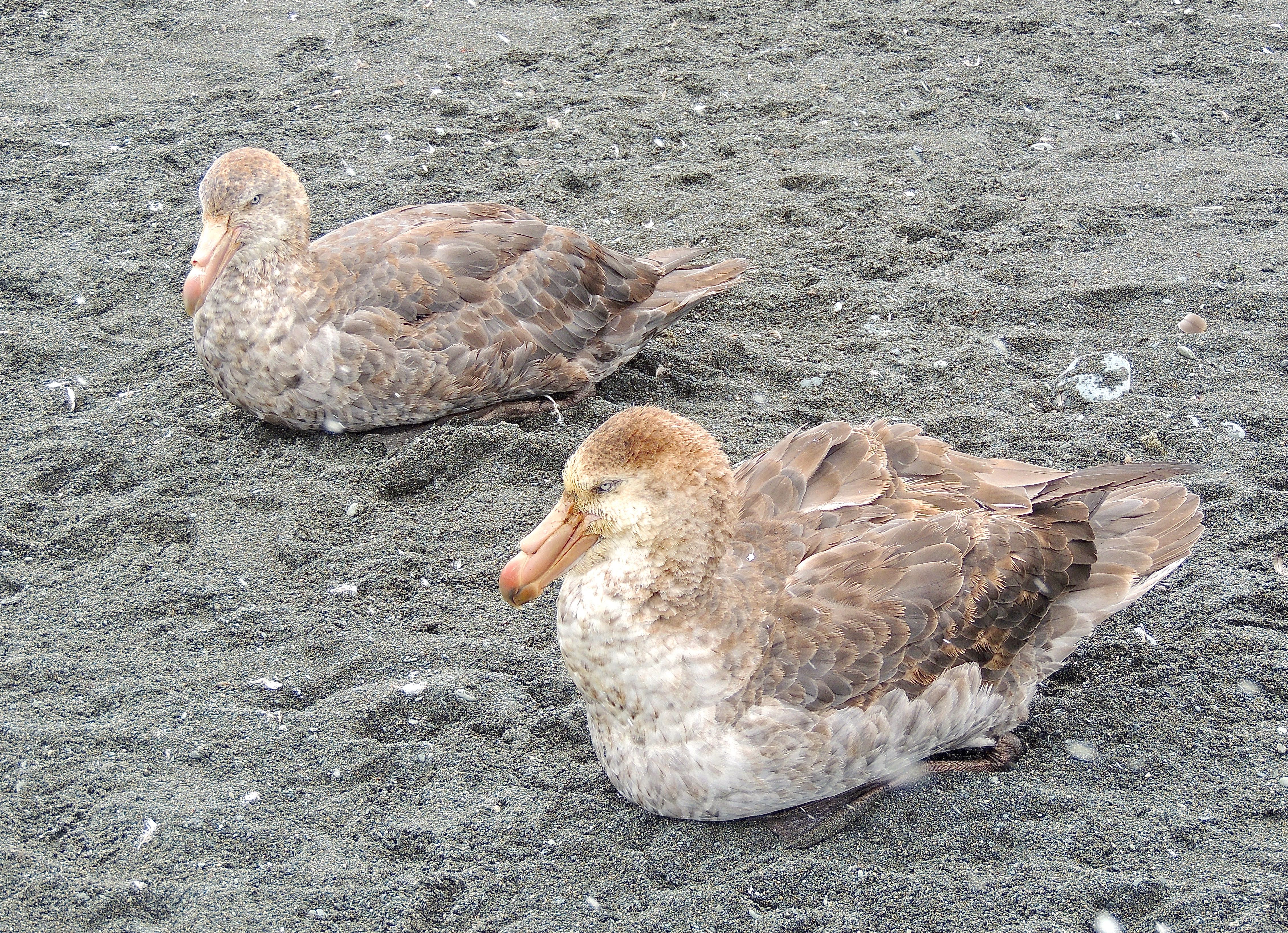 Northern Giant Petrels - Photo by William Young
Northern Giant Petrels - Photo by William Young Northern Giant Petrel Chick - Photo by William Young
Northern Giant Petrel Chick - Photo by William Young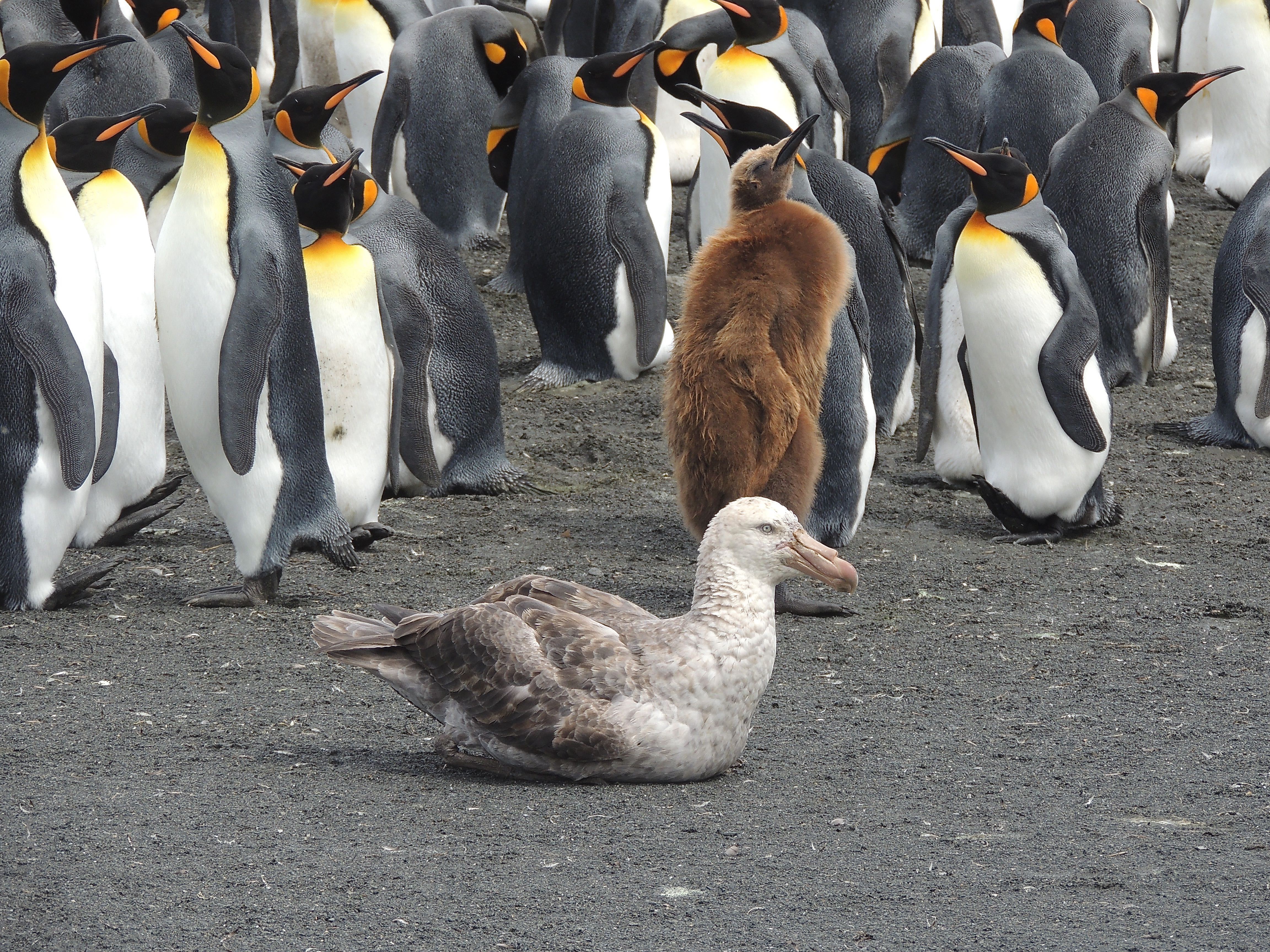 Northern Giant Petrel at King Penguin Colony - Photo by William Young
Northern Giant Petrel at King Penguin Colony - Photo by William Young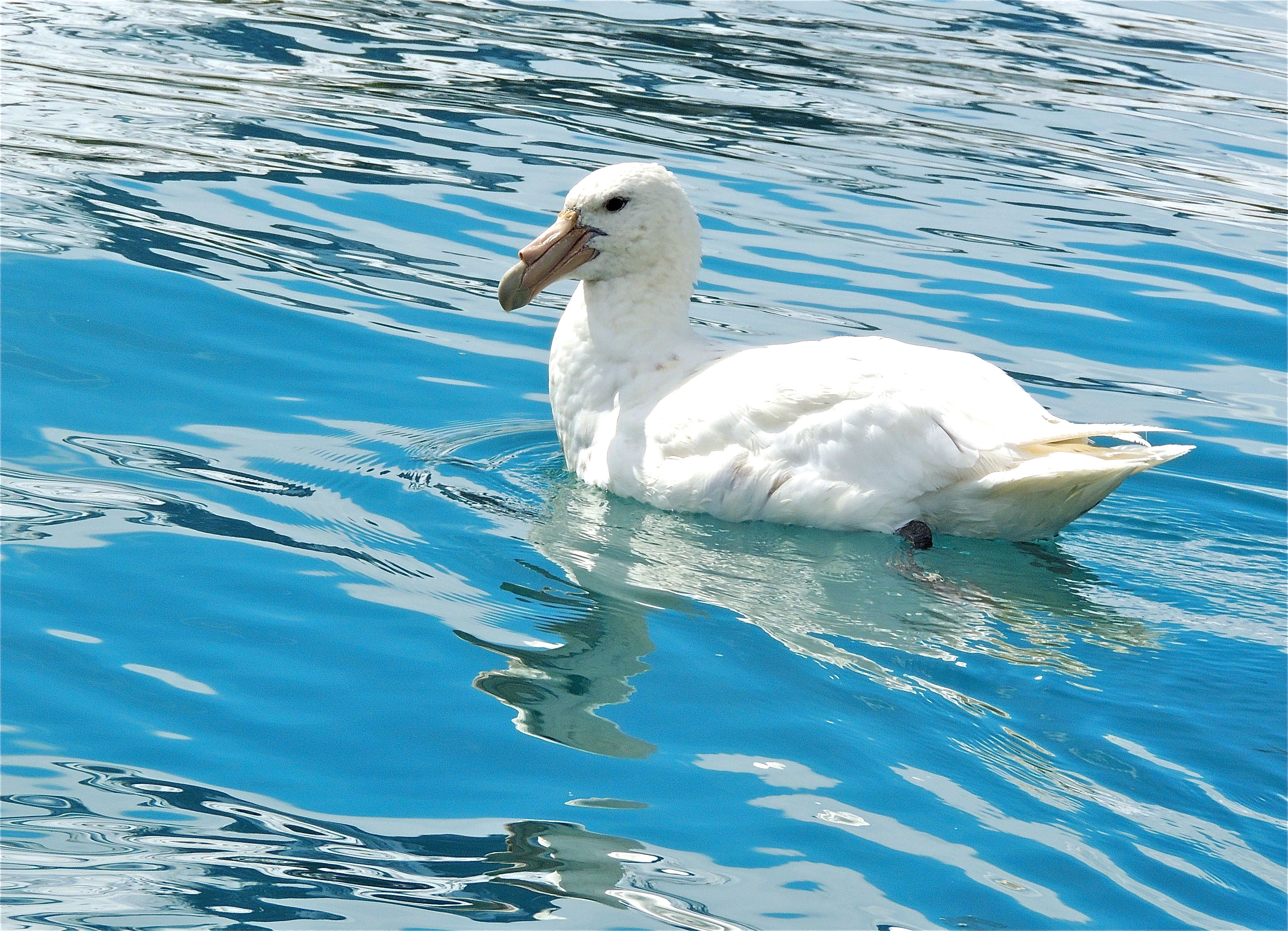 Southern Giant Petrel "White Nelly" - Photo by William Young
Southern Giant Petrel "White Nelly" - Photo by William YoungThe White-chinned Petrels were the next size down from the giant petrels. Their plumage is the color of dark chocolate, and they have a cream-colored bill. It is very difficult to see the white chin on the birds when they are flying. Some followed our ship and flew in long looping figure-8 circuits. We saw a White-chinned Petrel who appeared to have a dark bill. I asked Jim Wilson, the on-board ornithologist, if the young ones have dark bills, and he said no, but they sometimes have dark edges on their bill. I looked at photos of the bird with John, and it indeed had dark edges on a light bill.
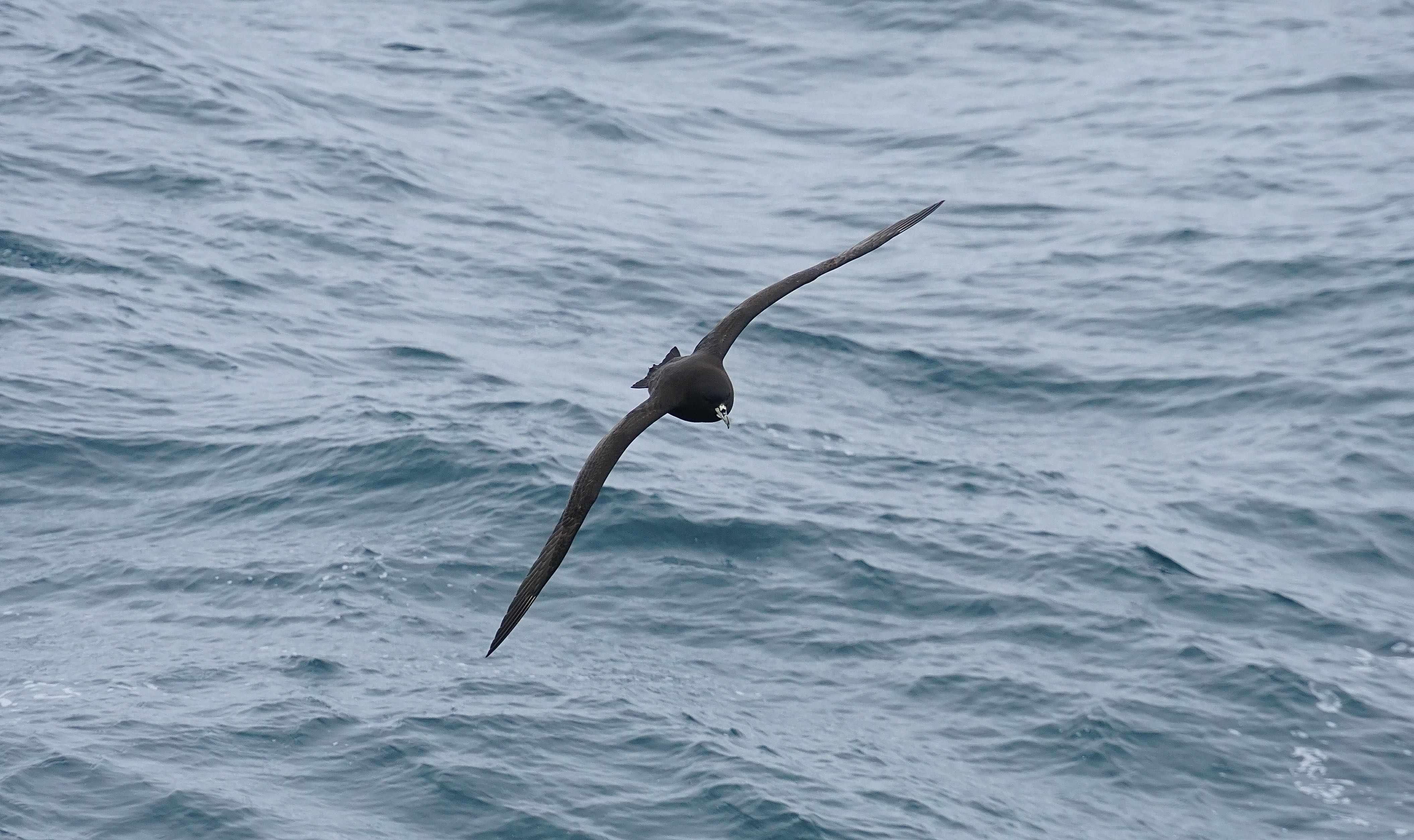 White-chinned Petrel - Photo by William Young
White-chinned Petrel - Photo by William YoungSooty Shearwaters are all dark and smaller than White-chinned Petrels. They are the color of milk chocolate, and they have light feathering on their underwings. Like the White-chinned Petrels, they soar in the wind, often dragging one wingtip near the edge of the water. On our last day at sea, we saw thousands of Sooty Shearwater while we were in the Beagle Channel. Many were sitting on the water, which was calm. As with the Black-browed Albatrosses, they need about ten steps of running along the water to become airborne. In the Drake Passage, some Short-tailed Shearwaters were mixed in with the Sooty Shearwaters, but they are extremely difficult to separate, even with a photograph. We saw quite a few Great Shearwaters in the Drake Passage. They are relatively easy to identify, because they have white underparts, a dark cap, and a white collar. They are larger than the Sooty.
The Kerguelen Petrel is another all dark seabird. It is named after the Kerguelen Islands in the southern Indian Ocean. Exactly one was seen on the trip, and its sighting was an example of Michael's incredible birding skills. We had just left South Georgia and had begun our trip to the Antarctic Peninsula. It was getting dark, light snow was falling, and fog was setting in. It was also cold and windy, so Michael, Paul, John, and I (the only people still on deck looking at birds) decided to call it a night. We stepped inside the door, and before we headed to our rooms, Michael and John wanted to do a list of sightings. As they were talking, Michael saw something out of the corner of his eye and said that it was a good bird. We all rushed outside, and he got all of us on the Kerguelen Petrel, who was a couple of hundred yards away. The bird was a little smaller than a Sooty Shearwater and appeared to have longer, narrower wings. Its flight also seemed more direct than the Sooty Shearwater and White-chinned Petrel. Considering the poor level of light and visibility, the distance of the bird, and the fact that we were inside doing something else, Michael's sighting was pretty amazing.
Three of my favorite seabirds of the trip were the Snow, Antarctic, and Cape Petrels. The Snow Petrel is an immaculate white bird (the "angel of the Antarctic") with a black bill and black eyes and feet. For a monochrome bird, it is stunning. A number of them flew close to our boat, and we began to see them as we approached South Georgia. I climbed a hill at Brown Bluff to see one on a nest in a cave. Antarctic Petrels were not seen often. The only ones I saw were a group of about 40 as we approached the Antarctic Peninsula. They were behind an iceberg, and they all of them suddenly flew right over our ship. Apparently, they kept flying when they reached the other side of the ship. The front half of their upperwing is dark, while the back half is white. From below, they look like a larger version of a Cape Petrel, with white underparts and a black hood and throat.
The Cape Petrel has black wings that look as if Jackson Pollock spattered them with white paint. This painted appearance is responsible for their other name of Pintado Petrel, which comes from the Spanish word for paint. Pinto horses are named from the same word, and it is why cowboys used to call some of their horses "old paint". I called the Cape Petrel the "anagram bird". The scientific name is Daption capense, with Daption being an anagram of pintado. One day as we were approaching the Antarctic Peninsula, there were about 5,000 Cape Petrels who flew by our cabin window at porthole level. I don't think they were circling the boat, and they appeared to be flying from the front to the rear. Sometimes, more than a dozen would be in view at once. From the early morning to the late afternoon, they streamed by. The numbers declined substantially the following day, but some were still around. When we were in a zodiac near Paulet Island, I saw three swimming placidly in the calm water. Paul said he had been in a zodiac when a Cape Petrel misjudged a landing and landed in the bottom of the zodiac. It was picked up and released.
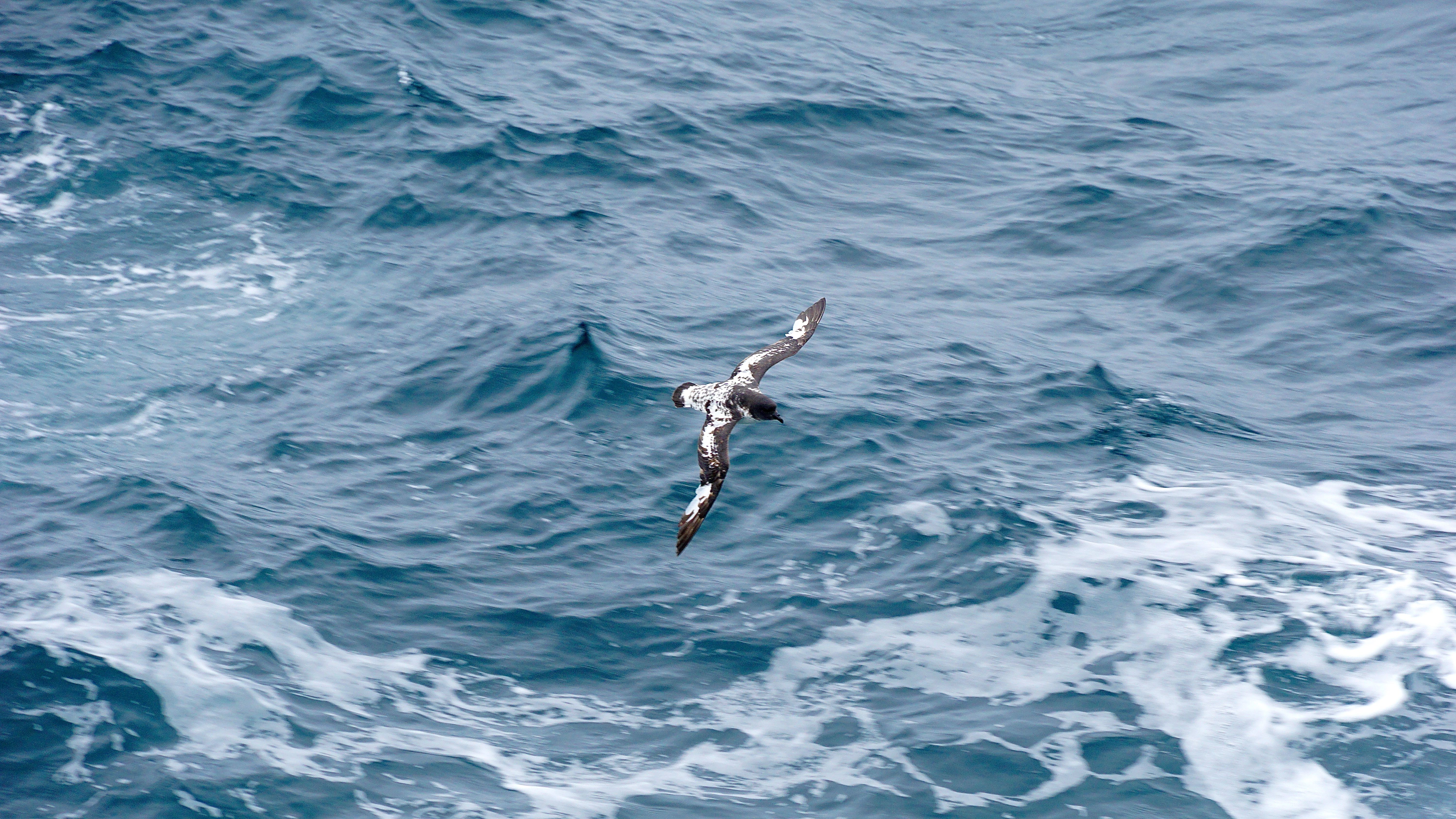 Cape Petrel - Photo by William Young
Cape Petrel - Photo by William Young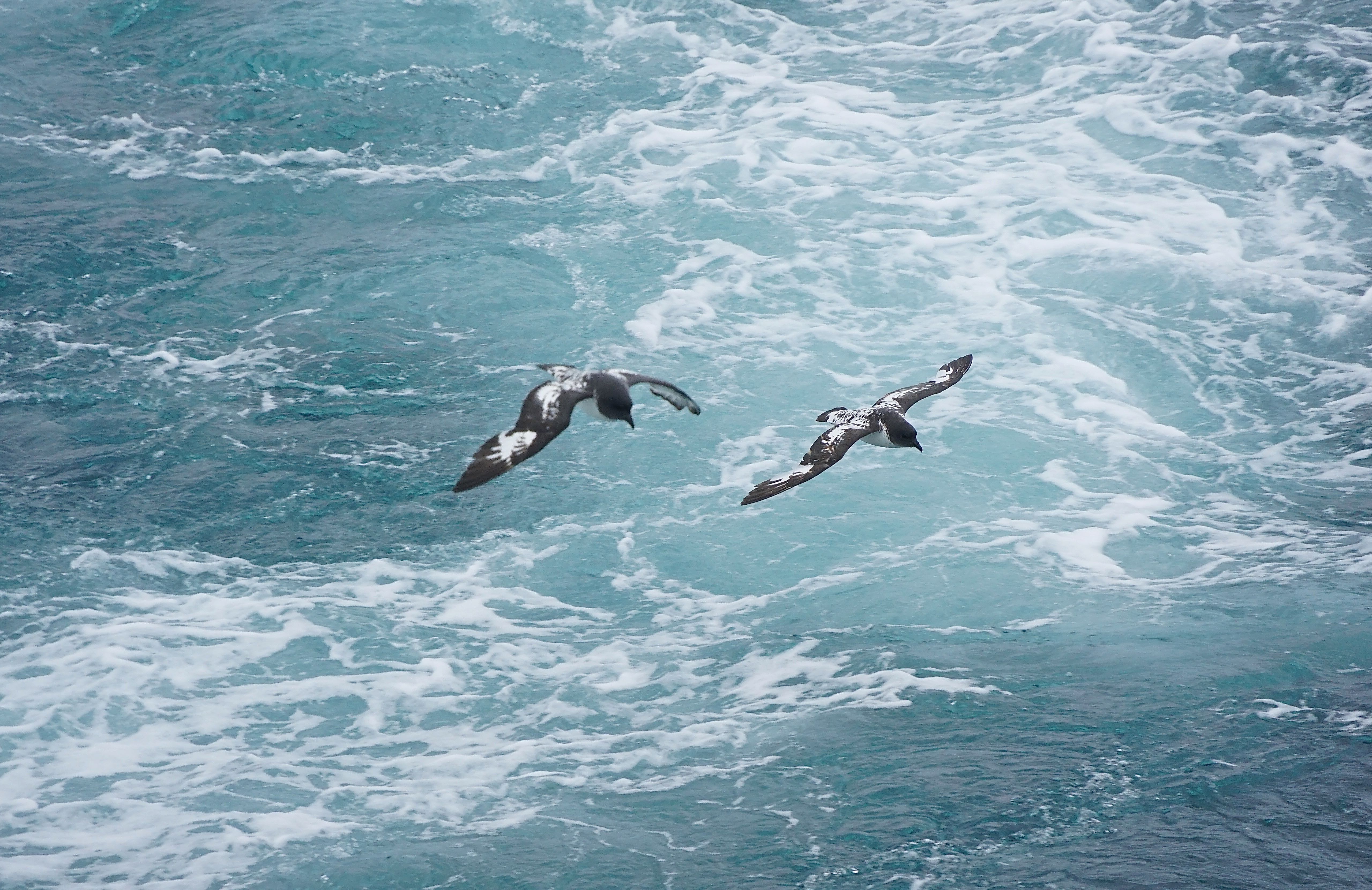 Cape Petrels - Photo by William Young
Cape Petrels - Photo by William Young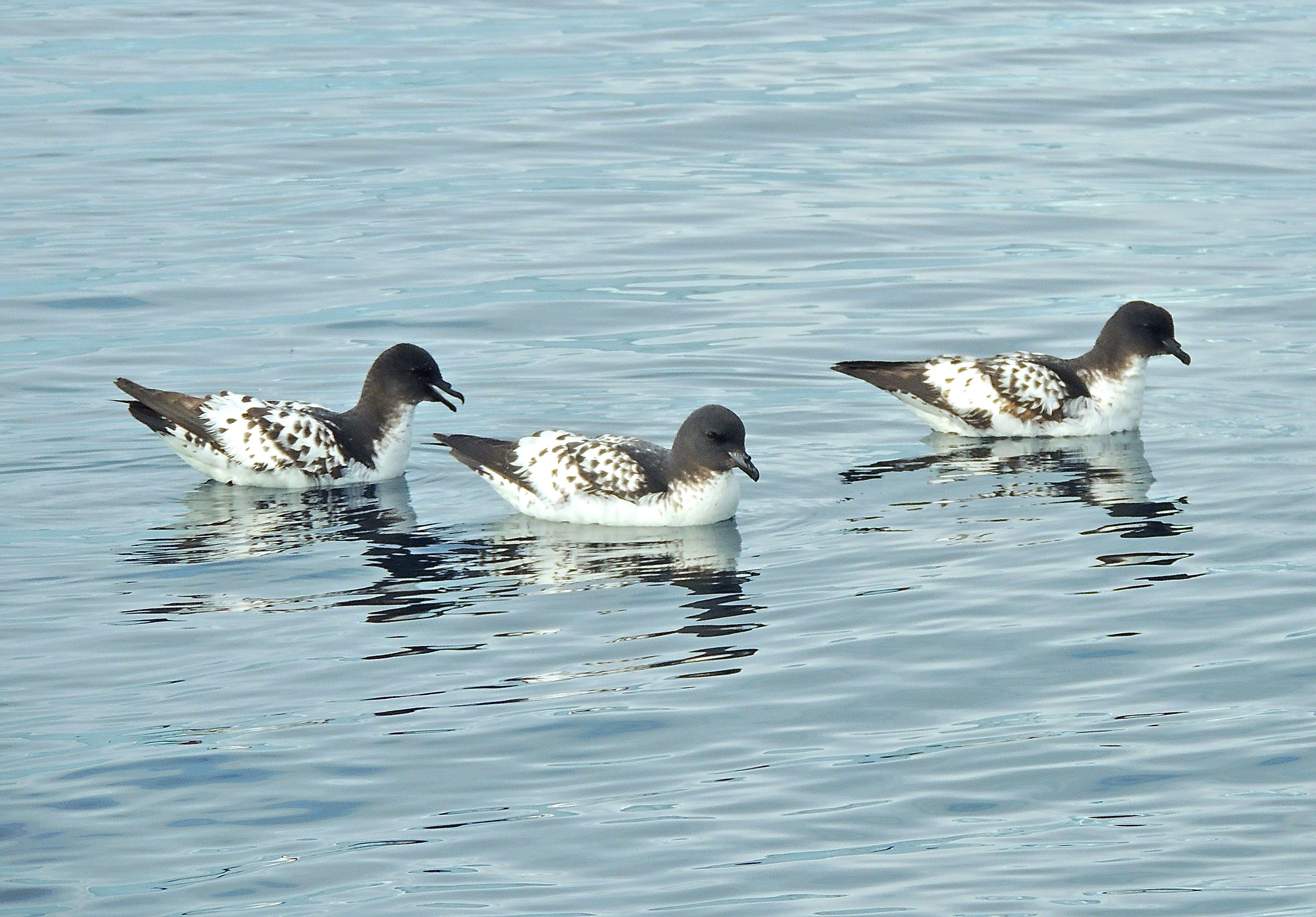 Cape Petrels - Photo by William Young
Cape Petrels - Photo by William Young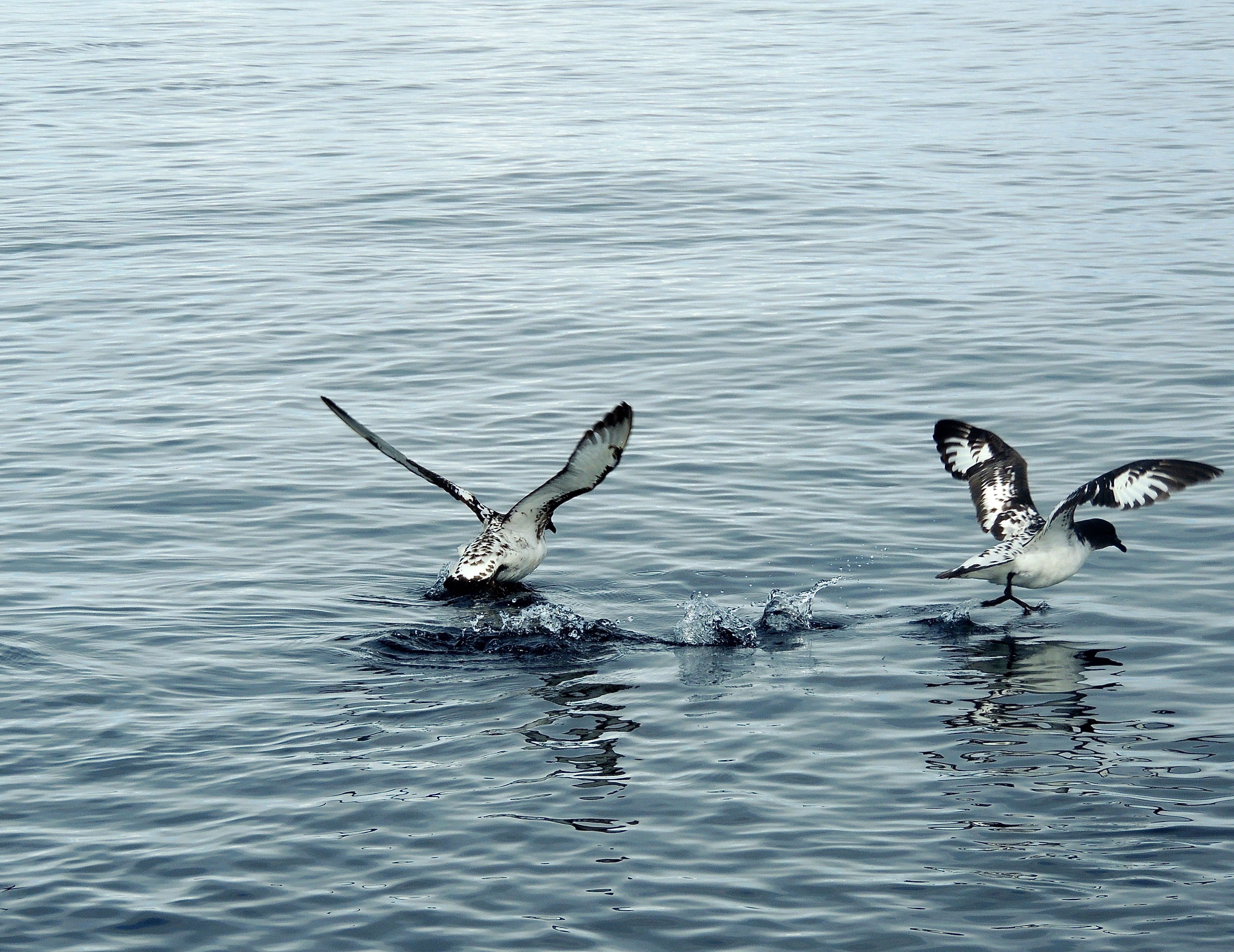 Cape Petrels - Photo by William Young
Cape Petrels - Photo by William YoungWe started to see Southern Fulmars as we approached the Antarctic Peninsula. The name "fulmar" means "foul gull", because if they are harassed in their breeding area, they will projectile vomit a foul substance. They look like a medium-sized gull whose outer wings are black with a large white patch. I remember seeing Northern Fulmars whose wings looked farther back on the body than the wings of a gull, but the Southern ones did not convey this appearance. They often flew close to the boat. I saw some adults, who are mostly white, and some younger birds who are darker.
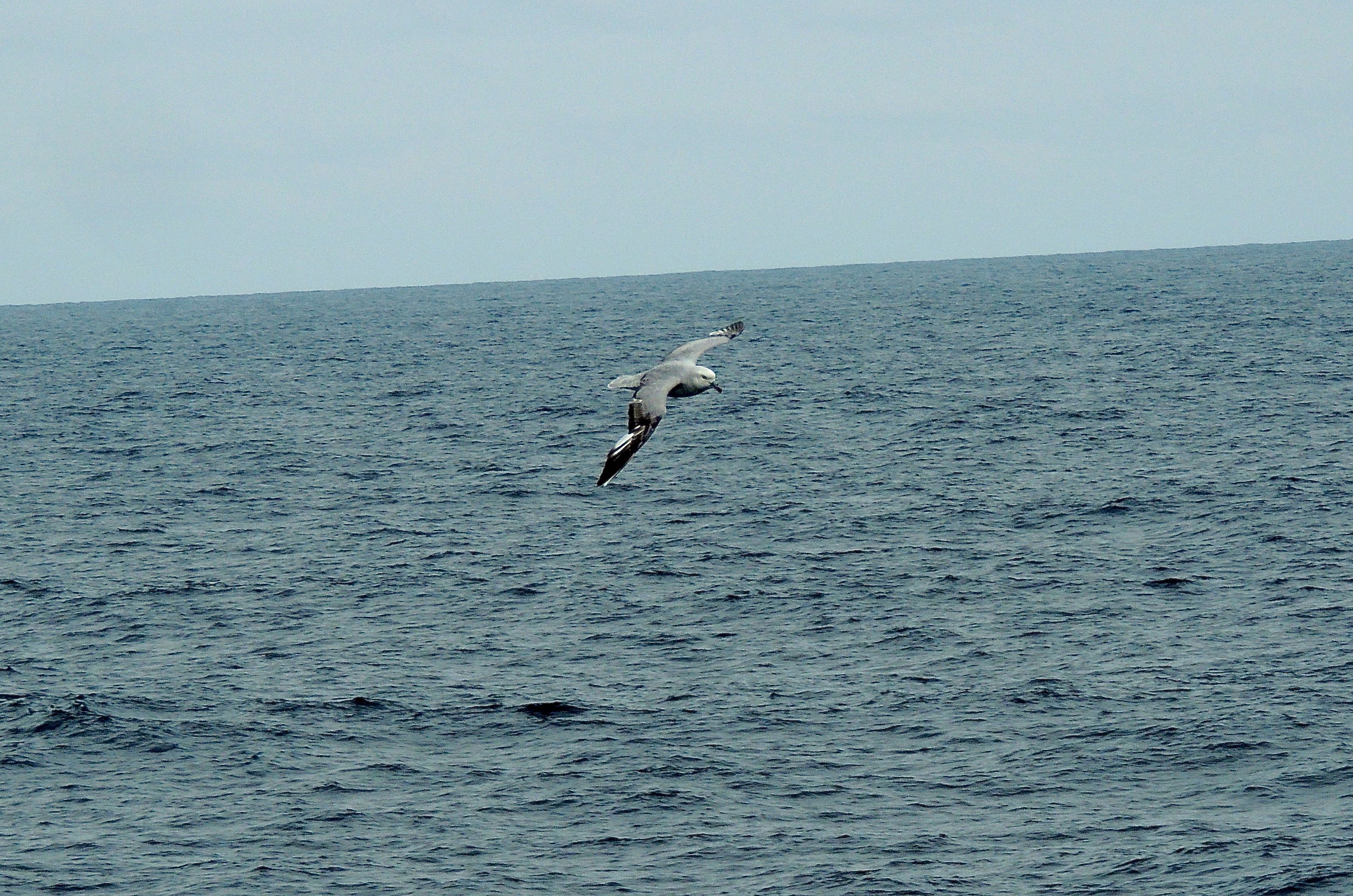 Southern Fulmar - Photo by William Young
Southern Fulmar - Photo by William YoungPrions are difficult to identify. They are small seabirds, about ten inches long, and their flight is rapid and twisting. To identify them, one needs to look closely at the face pattern, bill shape, and tail. Coming out of Ushuaia, most of the ones we saw were Slender-billed Prions. One day, we saw about 4,000 of them. Later in the trip, we saw mostly Antarctic Prions, who do not have as prominent an eye stripe and seem to have a larger smudge on their neck. Both of these species have a black M pattern on their dark gray back. The pattern is darker on the Antarctic, but this can be difficult to see in the field. Mixed in were a few Fairy Prions, who have a less distinct face pattern than the Antarctic, a smaller bill, and more black on the tail. We saw one of these sitting on the water like a phalarope. A bird who looks like a prion is the slightly larger Blue Petrel. It is fairly easy to identify, because the tip of its tail is white rather than black. We saw a lot of these in the seas near the Antarctic Peninsula. The head pattern also looks a lot darker than the prions. The only other bird I saw in this family was the Soft-plumaged Petrel, who is larger than the Blue Petrel. It is distinctive because of its white body and dark underwings. It had a strong, arcing flight.
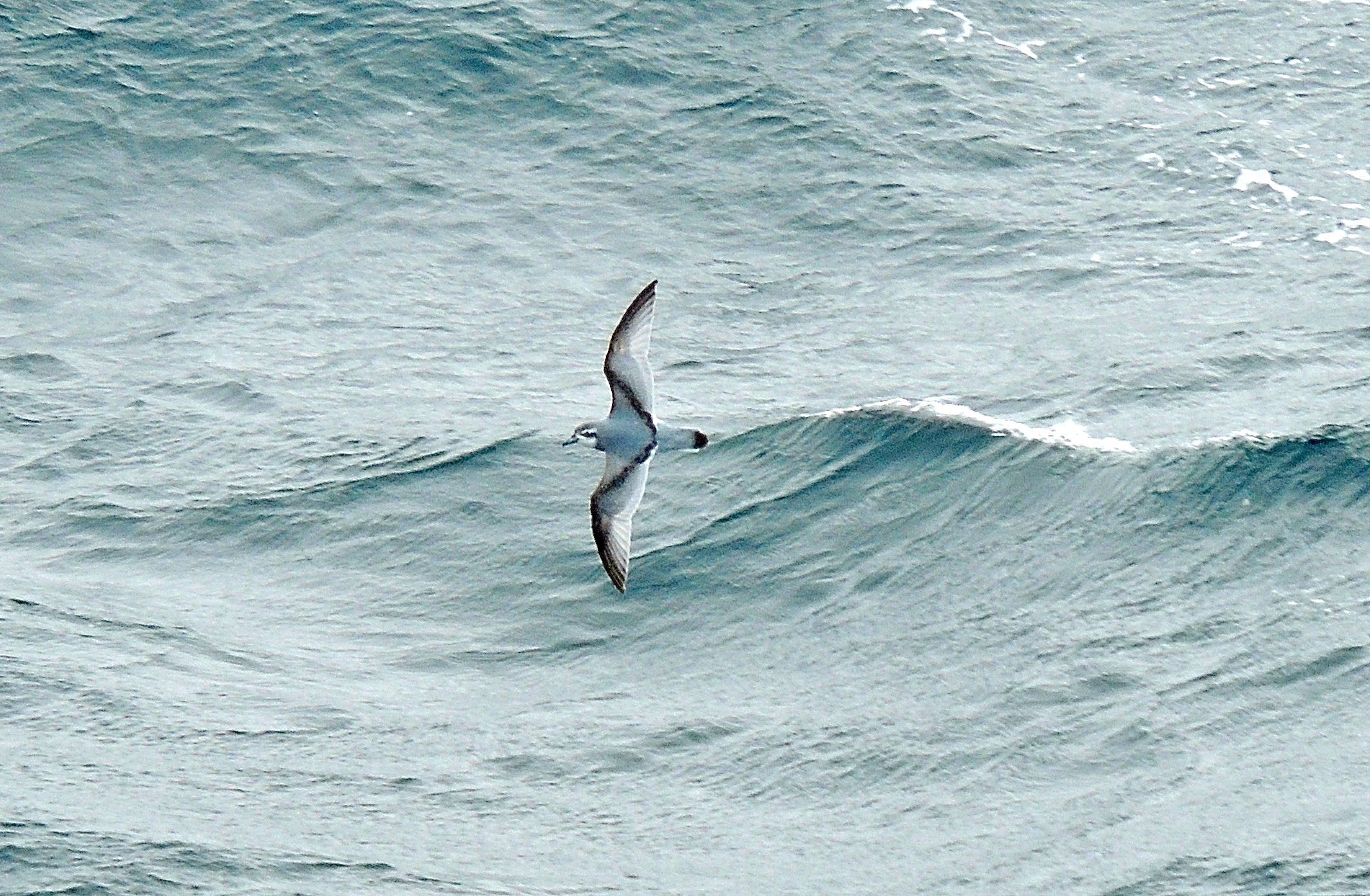 Antarctic Prion - Photo by William Young
Antarctic Prion - Photo by William Young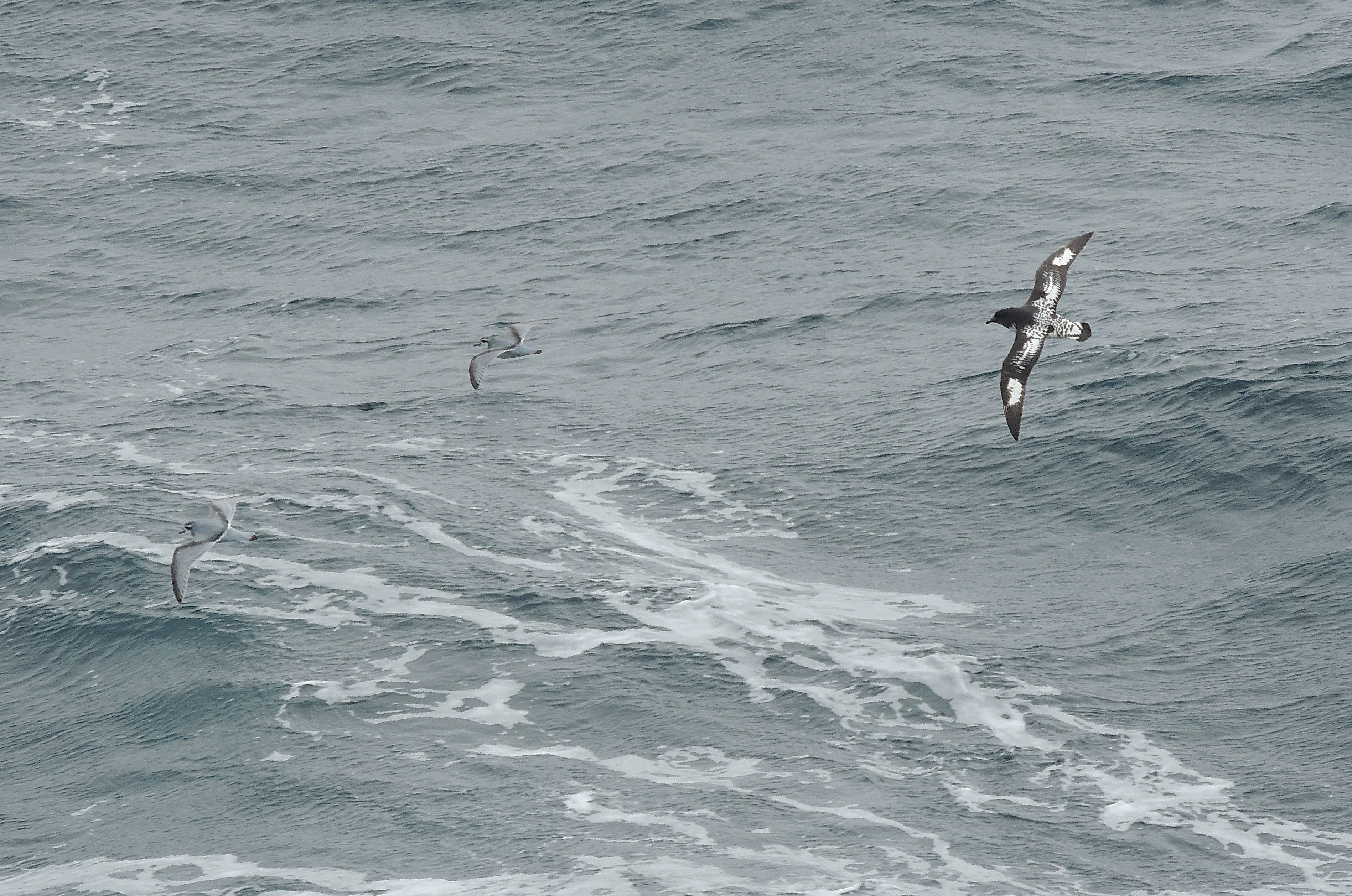 Antarctic Prions and Cape Petrel - Photo by William Young
Antarctic Prions and Cape Petrel - Photo by William Young
Diving PetrelsThere are three species of diving petrels in the areas we visited. I never got a close look at any of them. They are small seabirds resembling a Dovekie. The ones I saw were flying at a distance, fast and low to the water. At times, they appeared to disappear into the waves. I saw what was probably a Common Diving Petrel as we were nearing the Falkland Islands. The Common is very similar to the South Georgia Diving Petrel. Jim Wilson said the two species cannot be told apart unless in the hand — the South Georgia has a black line on the tarsus. When we were in the Beagle Channel, we saw one whom Michael identified as a Magellanic. It can be told from the other two by its white collar. I did not see that, but Michael was able to see it in a photo he shot of the bird, and this species was the only one of the three likely to occur in the area.
Storm-PetrelsMost of the storm-petrels I saw were Wilson's. They are all black above and below, with a white rump. On some days, there were a great many of them, and I saw quite a few pattering near the ship. Sometimes, they fly like bats. On Prion Island when we were looking at the nesting Wandering Albatrosses, a Wilson's Storm-Petrel was fluttering around our heads — it probably had a nest nearby. This species nests in rock crevices or in burrows. We also saw storm-petrels flying in front of rock faces, possibly because they nested there. Once we left the Falklands, we began to see Black-bellied Storm-Petrels, who are slightly larger and longer winged. They sometimes drag a foot or a wing in the water when they are near the surface. They have a white belly, and they are so named because there is a black line running down the middle of the belly, which can sometimes be seen when the bird banks in flight. From the back, they looks like Wilson's. Once, I saw the two species together, which provided a good size comparison. Someone found a Wilson's who had landed on the deck of our ship one night, and it was let go the next morning. We were told to keep our windows sealed to prevent storm-petrels and other birds from being confused by the lights of our ship as we passed. Diving-petrels were also found on the deck, and I'm sorry I did not have a chance to see one in the hand. I did not manage to see a Gray-backed Storm-Petrel. A few were mixed in with the Wilson's, usually on floating kelp beds, but I did not manage to get onto one. Also, in the Beagle Channel, there is a subspecies of the Wilson's called the Fuegean Storm-Petrel, which might at some point be split, but I am not sure if it is possible to positively identify them in the field.
CormorantsAt the South Beach Reserve in Buenos Aires, we saw four Neotropic Cormorants sunning themselves on an island in the water. The range of this widespread species reaches into the United States. At Ushuaia, we saw Magellanic (or Rock) Cormorants, who are dark with a white belly. A pair was nesting on the side of an abandoned ship, and the adults were feeding two chicks. Also in Ushuaia were Imperial Cormorants. They are part of a complex of species who have been split. The ones around Ushuaia are called Blue-eyed Cormorants (Shags). A lot of these were in the water as we went through the Beagle Channel the night we took off, as well as on our trip to Tierra del Fuego. When they flew, they had some white on the upperwings. Around the Falklands, the species is called the King Cormorant. There is a separate species called the South Georgia Shag, and we saw thousands of them perched on Shag Rocks. On Paulet Island, the species becomes the Antarctic Shag, which is endemic to the area. All of these species look pretty much the same but have a different pattern of black and white on the face. I had outstanding views of the Antarctic Shags on Paulet Island. Some were nesting on a rocky hillside, and like the Double-crested, they have blue eyes. They have a yellow knob above the bill. The young are brownish rather than black and white. When we got into the zodiac, we moved close to an iceberg that had both Antarctic Shags and Adelie Penguins. The light was magic, and all of the plumage coloring of both birds looked deeply saturated. The shags have a plumage pattern similar to the penguins, and our zodiac driver said that some visitors get confused when they see birds who look like penguins flying. Jim Wilson (who is from Ireland) told the story about giving a presentation at an Irish school where the children and, sadly, the teachers, thought penguins could fly, because they had seen a 2008 BBC April Fools spoof narrated by Terry Jones of Monty Python in which penguins take to the air and fly to the tropics. At Fort Point, one of the Antarctic Shags began walking quickly toward me. I'm not sure I had ever seen a cormorant walk any significant distance before. It had large dark pink feet that looked dirty.
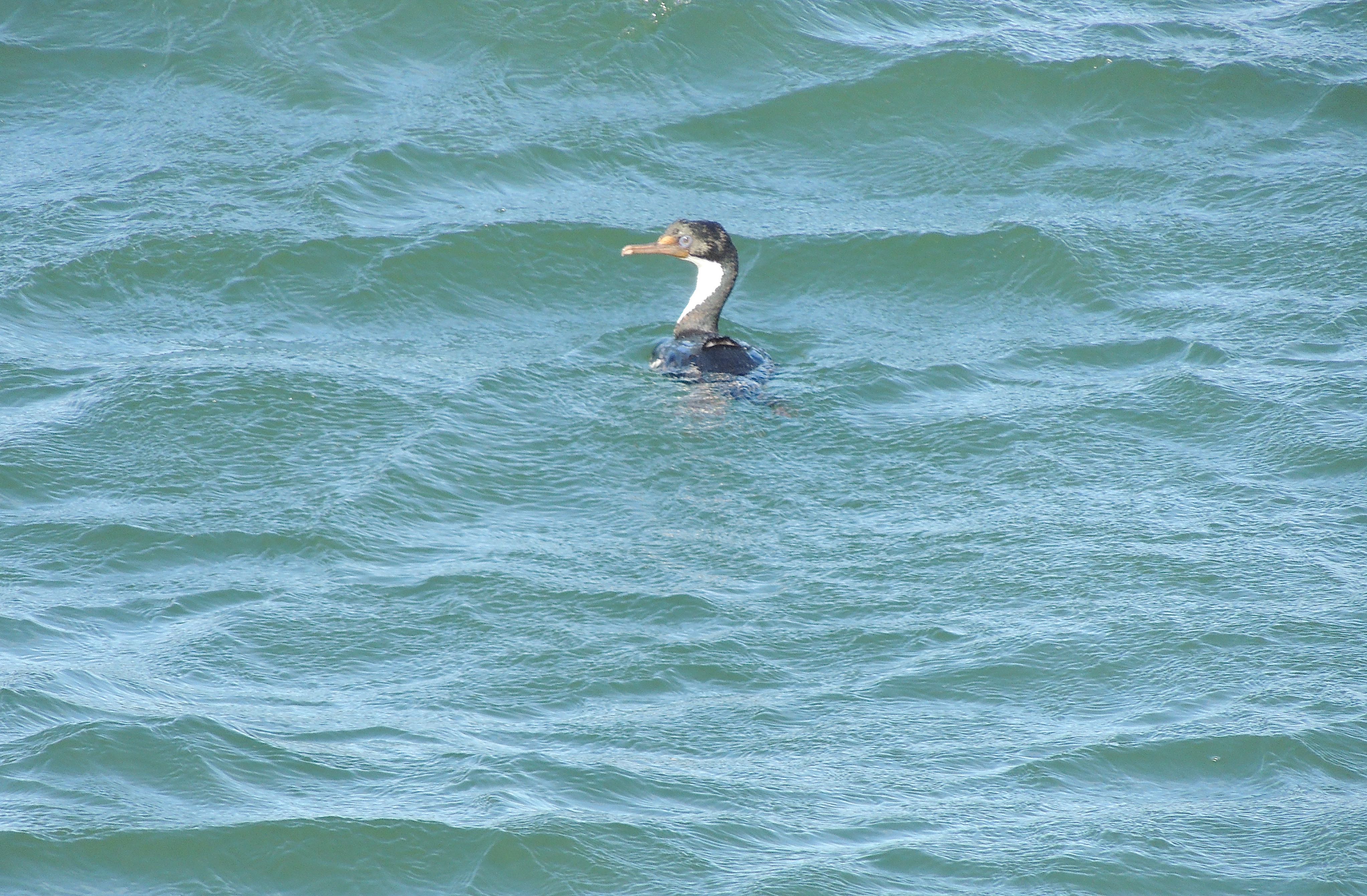 Imperial Cormorant - Photo by William Young
Imperial Cormorant - Photo by William Young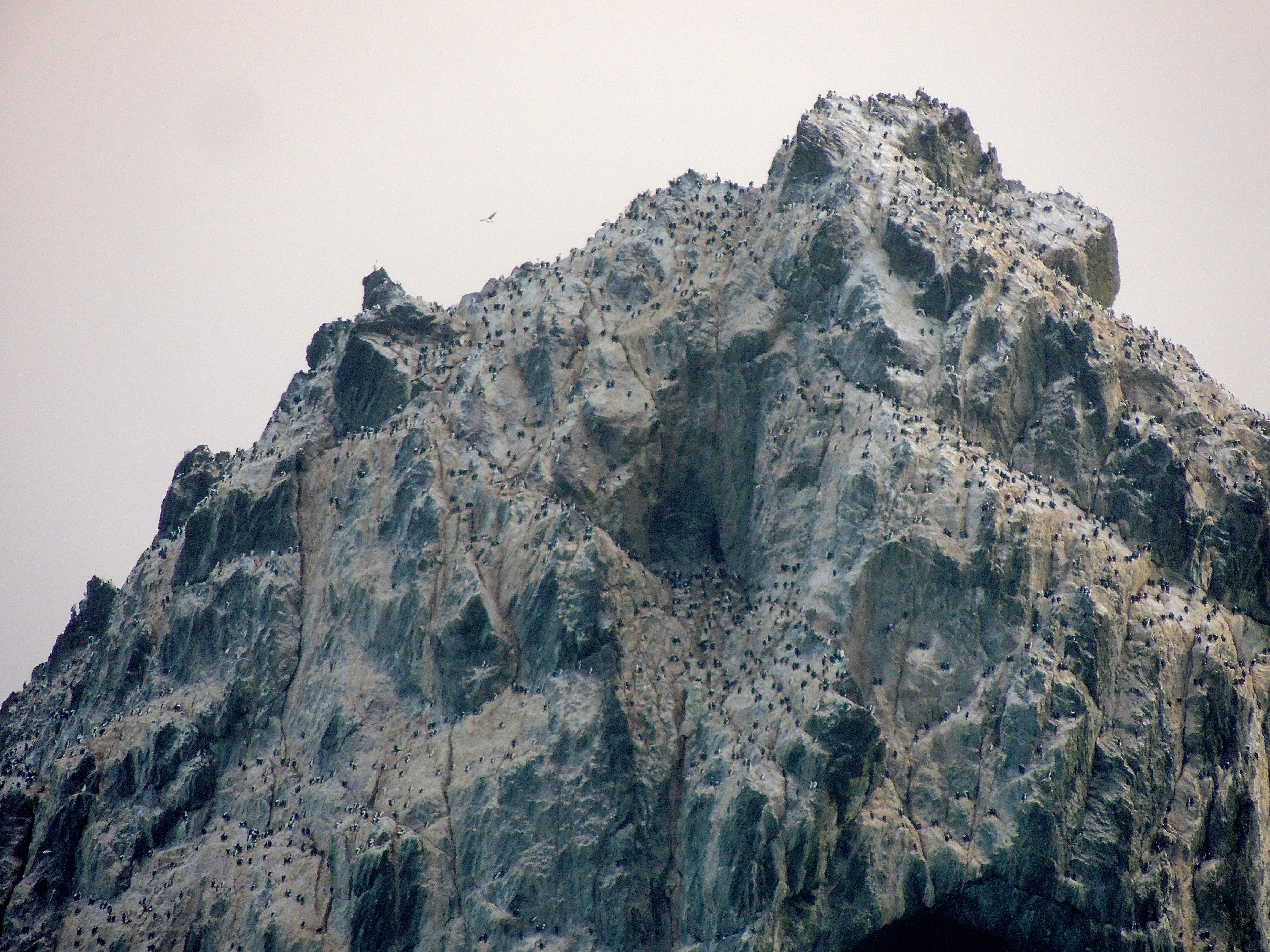 South Georgia Shags on Shag Rocks - Photo by William Young
South Georgia Shags on Shag Rocks - Photo by William Young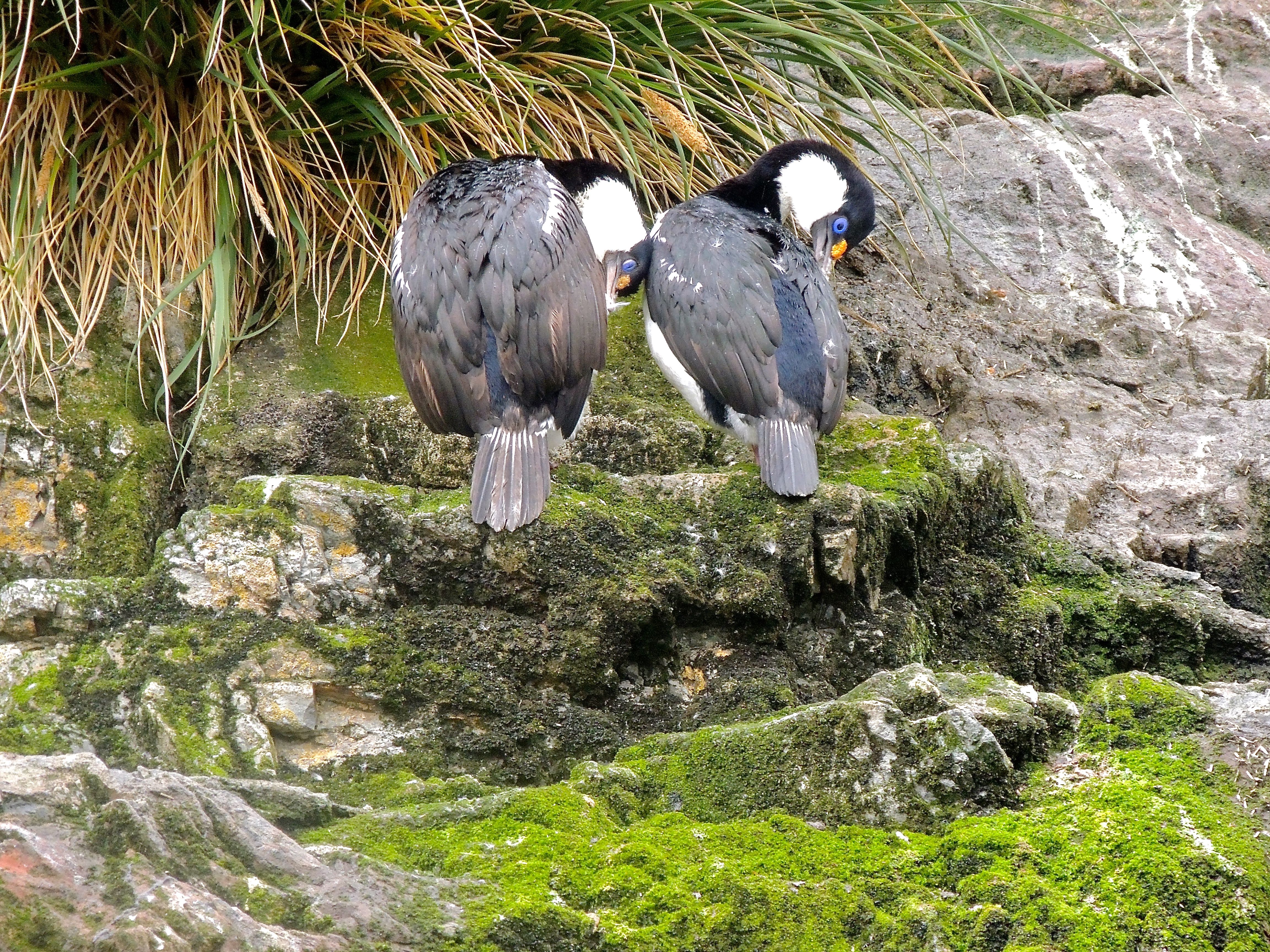 South Georgia Shags - Photo by William Young
South Georgia Shags - Photo by William Young Antarctic Shag - Photo by William Young
Antarctic Shag - Photo by William Young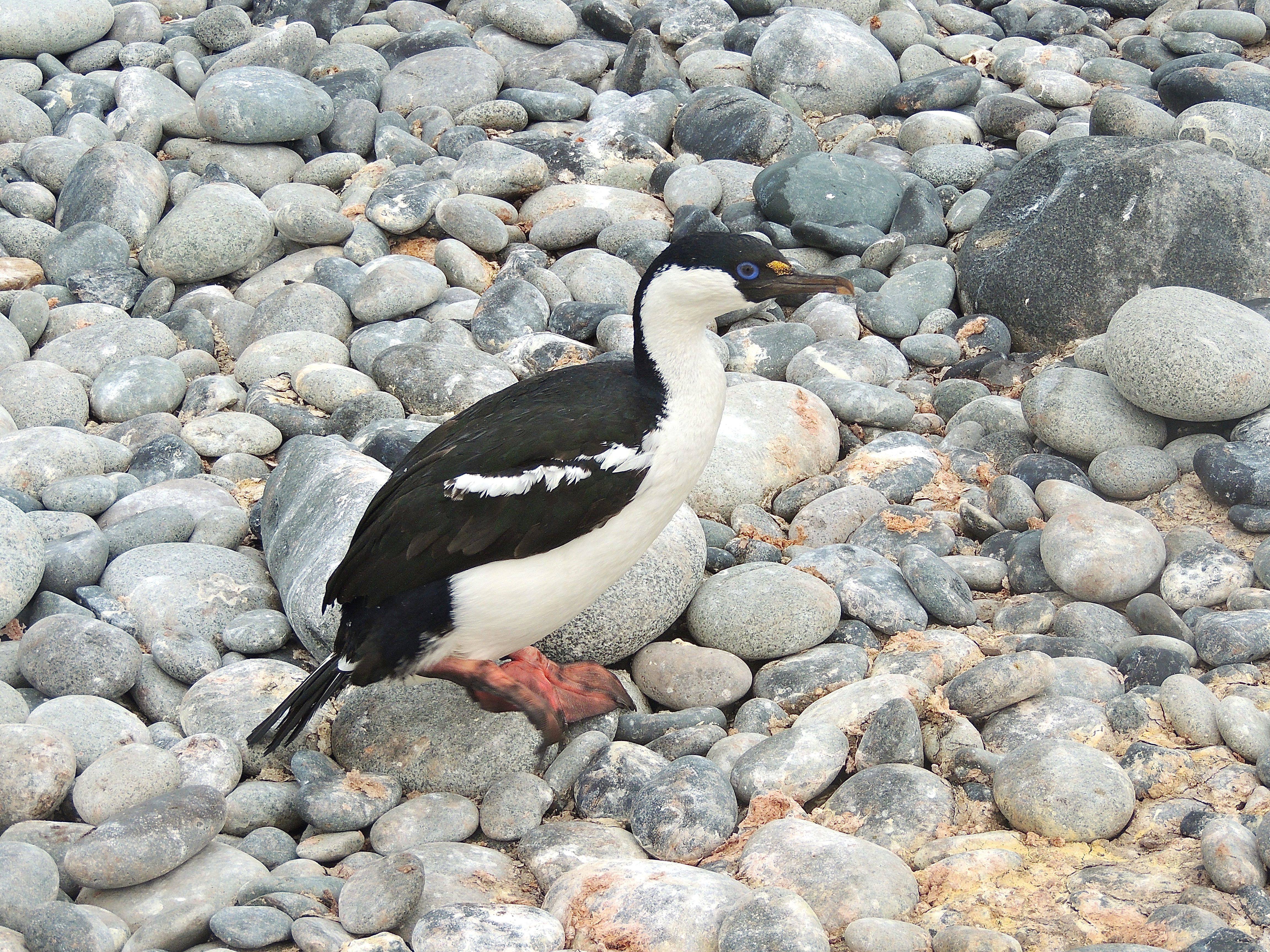 Antarctic Shag - Photo by William Young
Antarctic Shag - Photo by William Young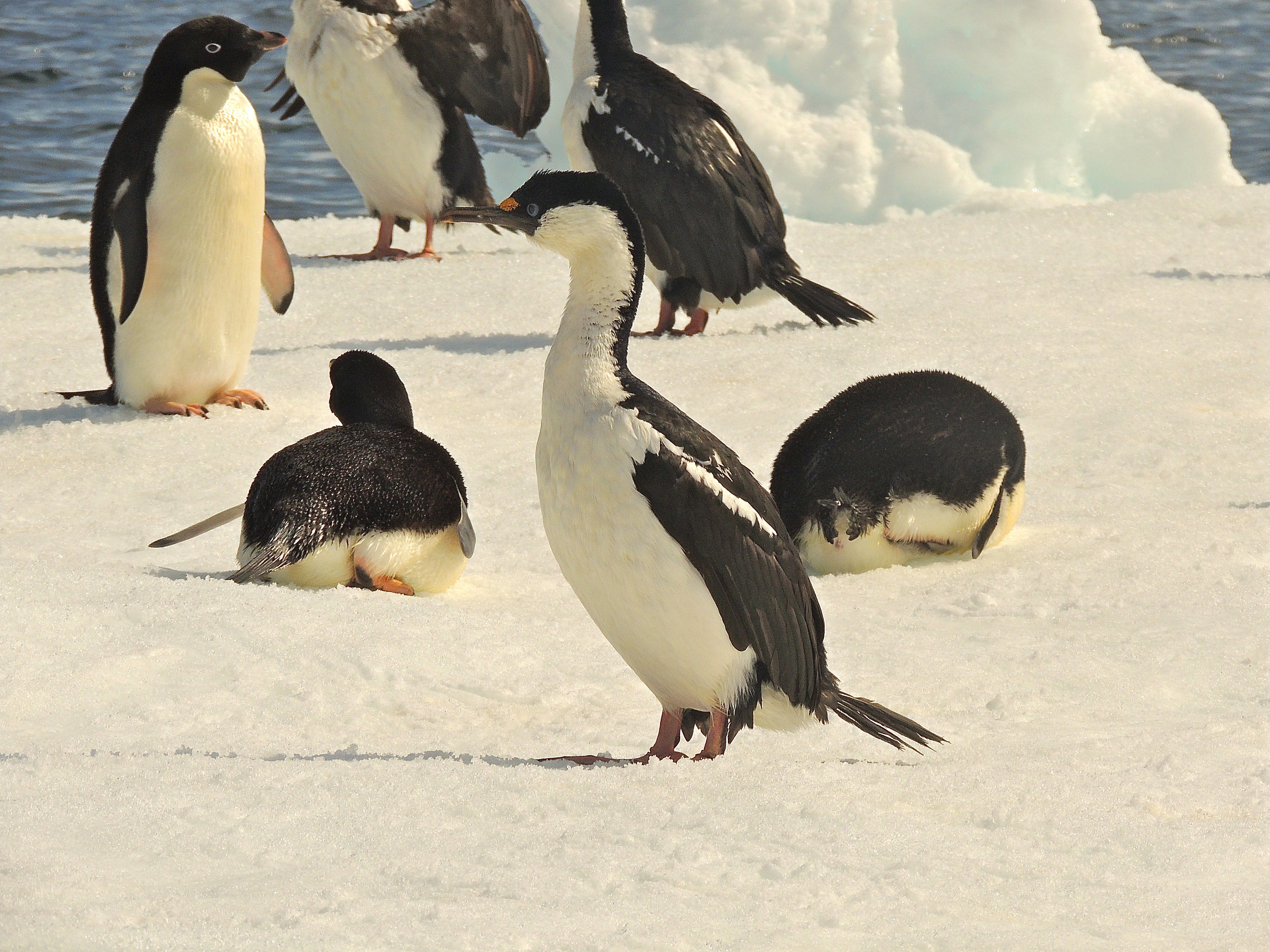 Antarctic Shag with Adelie Penguins - Photo by William Young
Antarctic Shag with Adelie Penguins - Photo by William Young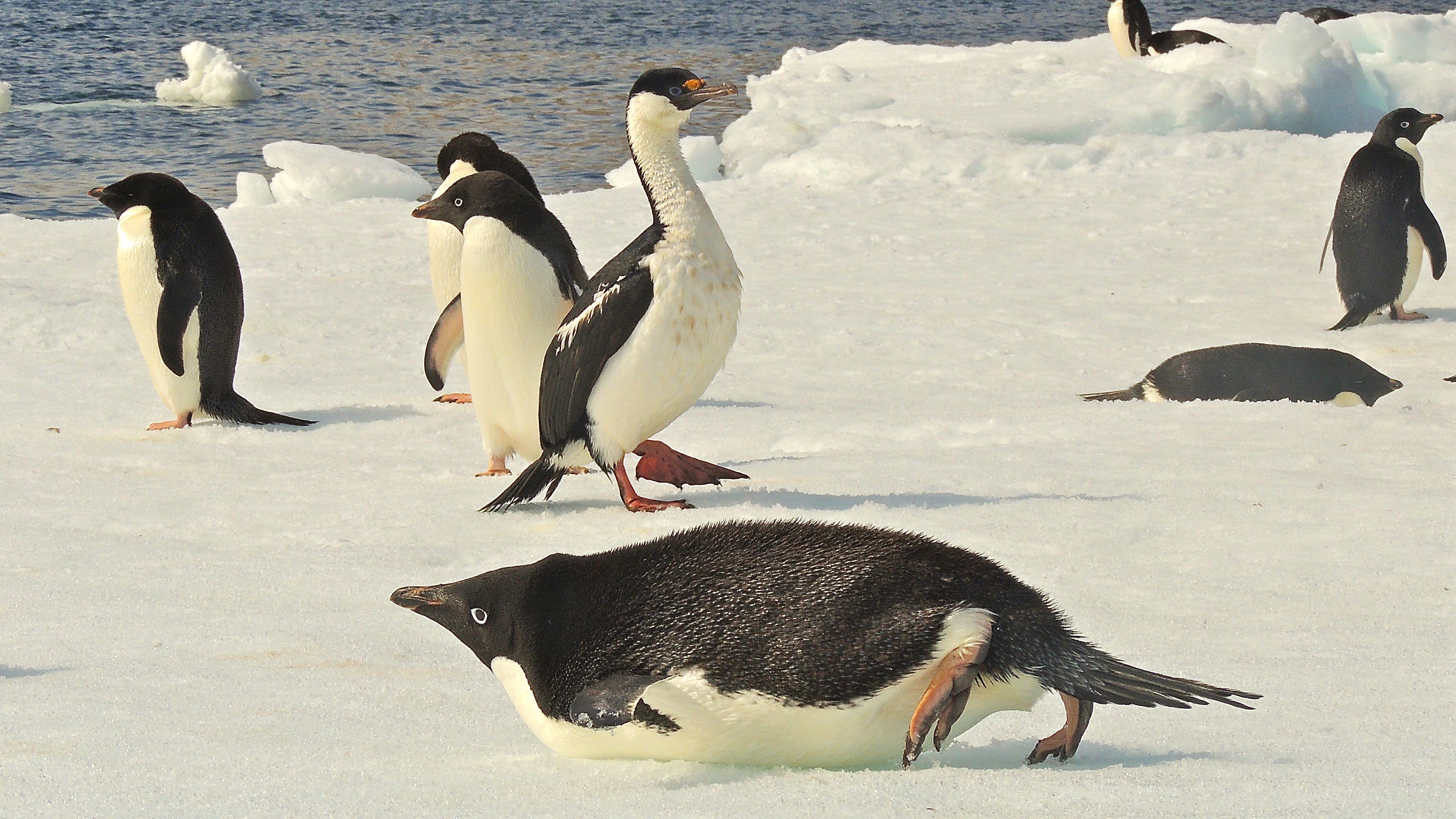 Antarctic Shag with Adelie Penguins - Photo by William Young
Antarctic Shag with Adelie Penguins - Photo by William Young
HeronsIn Buenos Aires, we saw a Whistling Heron in a wetland at Otamendi. It has a grayish body with a black-tipped red bill and a blue face. At the South Beach Reserve, we saw a Striated Heron, who is like a striped Green Heron, shortly before we boarded the bus to return to our hotel. It was standing in the water, and I took photos of it with its reflection in the late afternoon light. Earlier in the day, I had photographed a Rufescent Tiger-Heron who flew into a marsh and perched obligingly. There were Cocoi Herons, who look like Great Blues, as well as Great, Snowy, and Cattle Egrets. At Tierra del Fuego, we saw an immature Black-crowned Night-Heron. This species is very widespread. I saw a bunch of them in Tanzania.
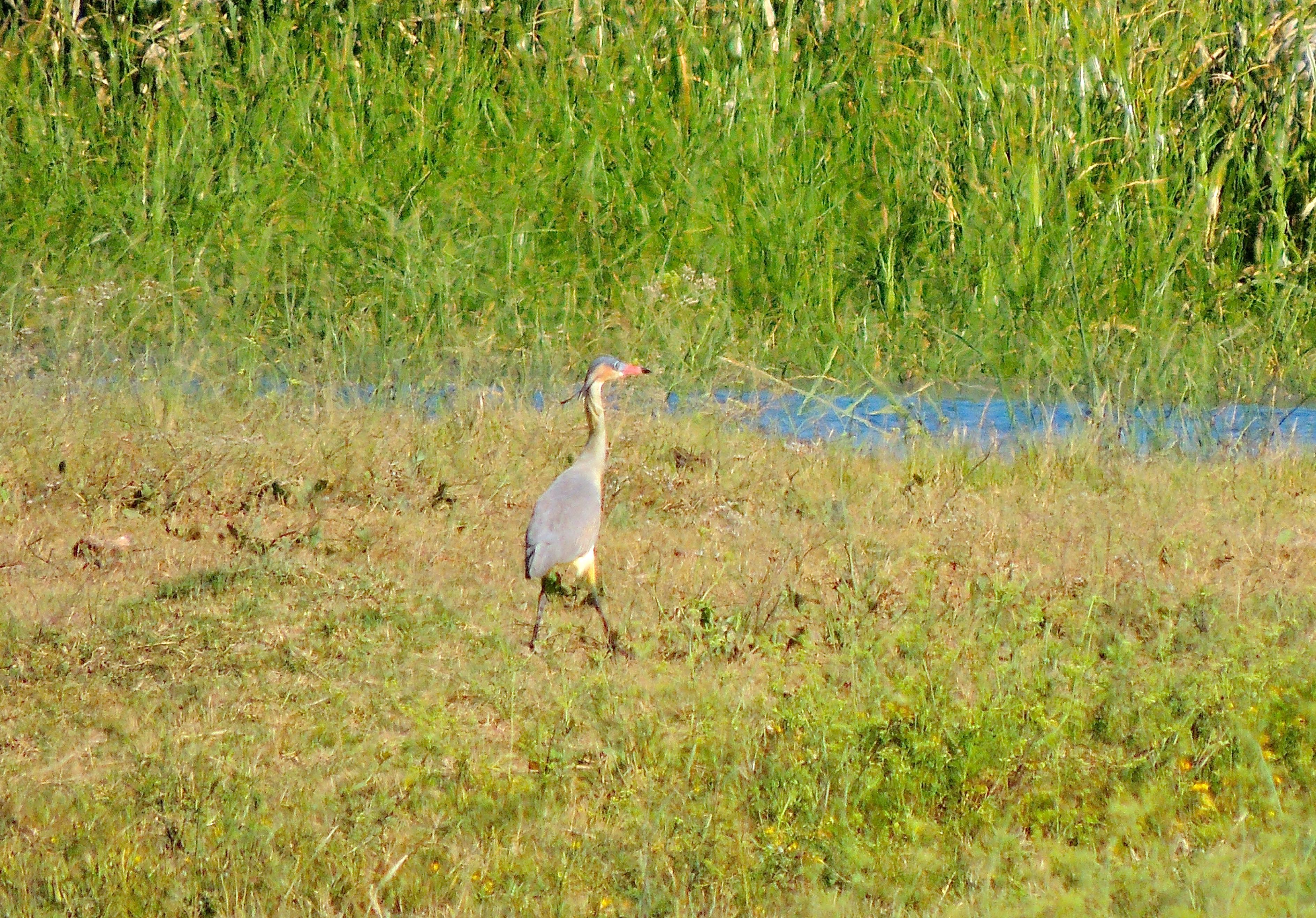 Whistling Heron - Photo by William Young
Whistling Heron - Photo by William Young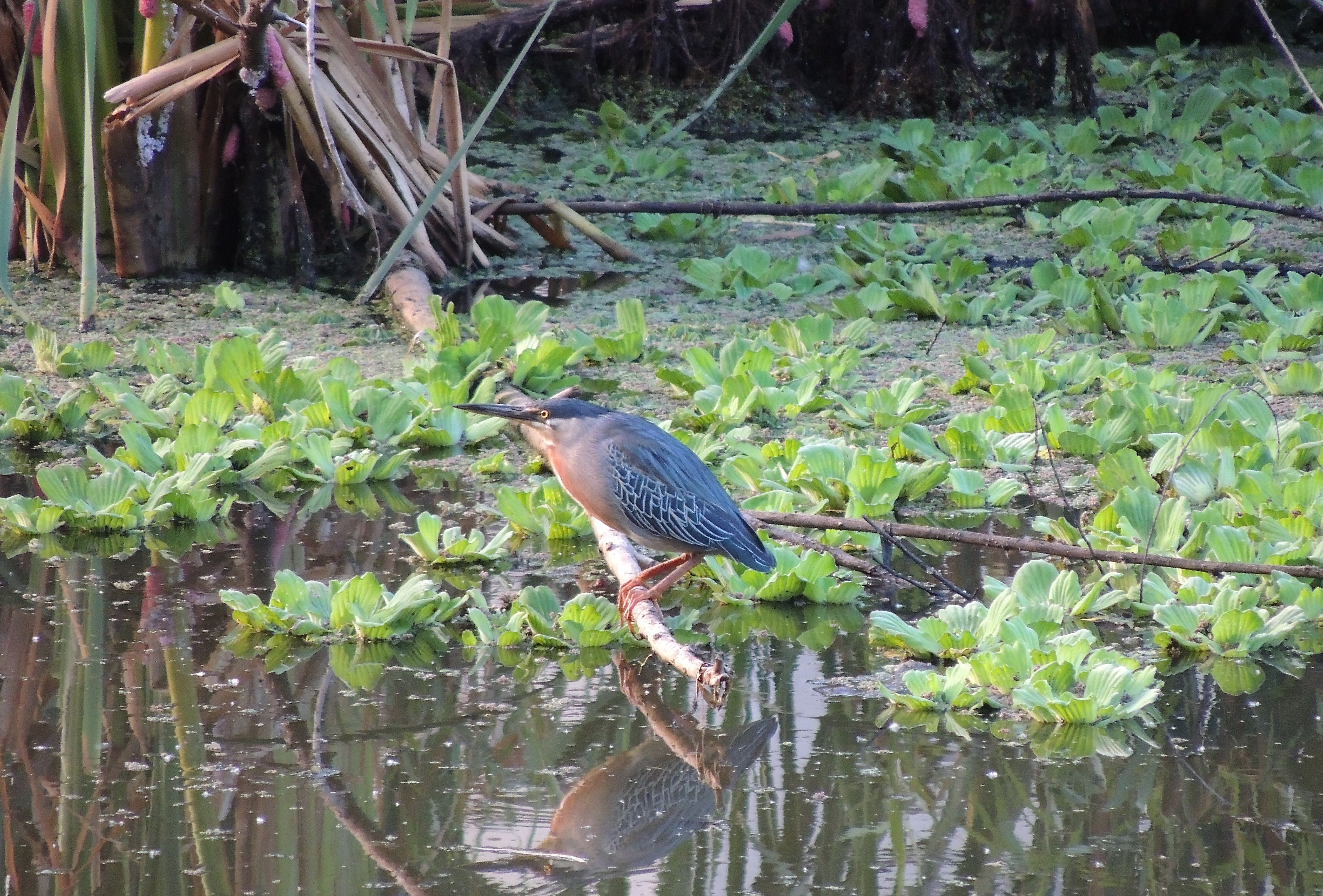 Striated Heron - Photo by William Young
Striated Heron - Photo by William Young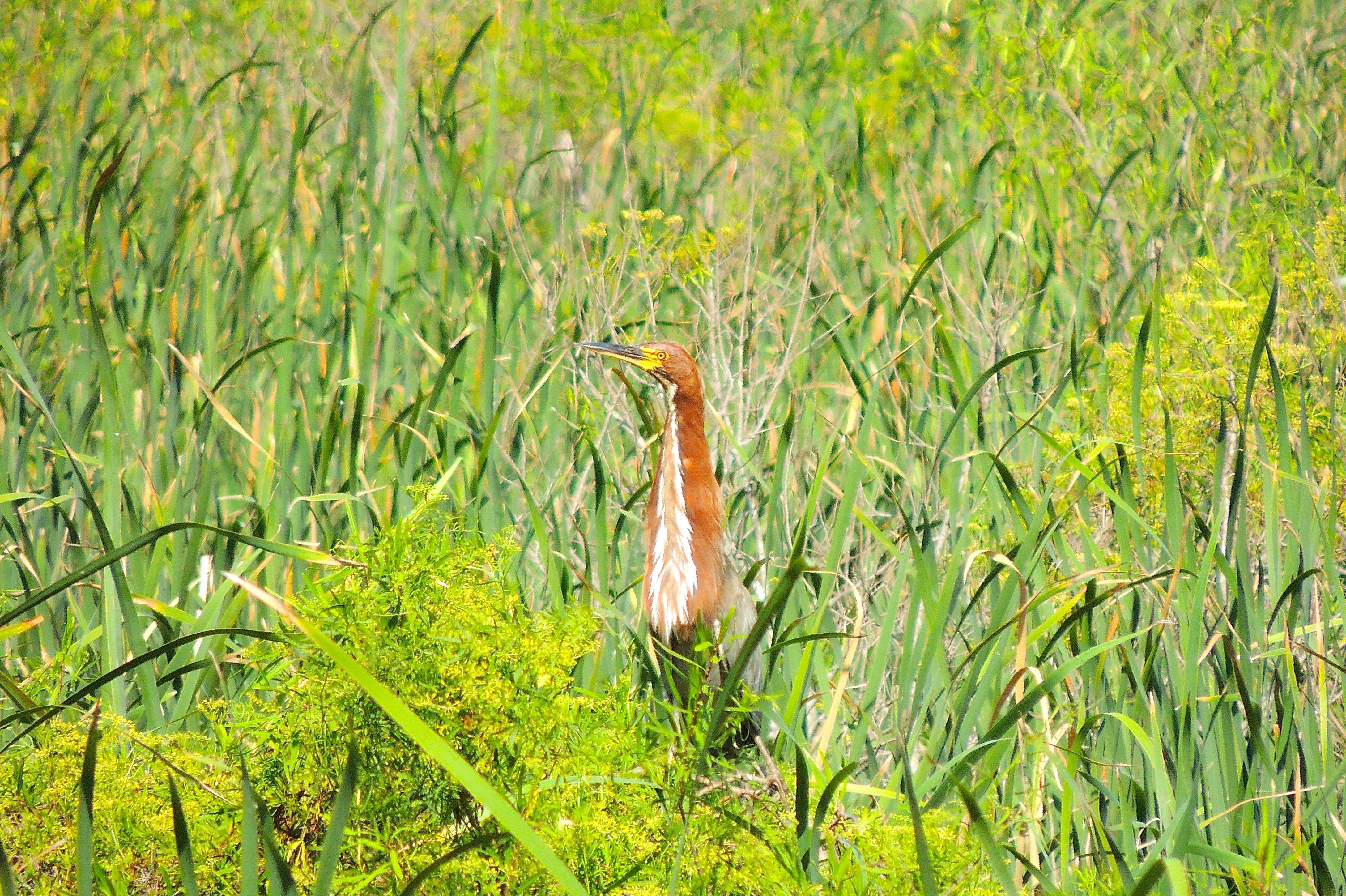 Rufescent Tiger-Heron - Photo by William Young
Rufescent Tiger-Heron - Photo by William Young
VulturesThere were a few Turkey Vultures soaring over Ushuaia. I was in a bus when we saw them, so I could not see if they were different from the ones in our area. At Tierra del Fuego, we saw two soaring Andean Condors. They were so high that it was difficult to see any detail on the plumage, but the shape was distinctive. Some people in Buenos Aires saw Black Vultures, but I did not.
Hawks and EaglesWe did not see many hawks and eagles on the trip. There were three species at Otamendi. We saw a soaring Snail Kite. I used to think these were rare birds because they are so uncommon in the US, but they are fairly common in Central and South America. We saw a perched Roadside Hawk, and I later saw one flying. And we saw both a light morph and dark morph Long-winged Harrier, who have long wings and a light rump. In Ushuaia, John spotted a pair of Black-chested Buzzard-Eagles while we were at a reception. They have a short tail, white shoulders, and broad wings. Even though I did not have my binocular, I managed to get good looks.
SheathbillThe Snowy Sheathbill looks like a white football. Unlike the Snow Petrel and the male Kelp Goose who are also all white, the Snowy Sheathbill looks more dirty white than clean white. It looks a bit like a pigeon when it flies. It has bare pink skin on its face and what looks like a scabby crust over its bill and on its feet. It can walk fairly quickly over rocks, and it always seems to be lurking for some opportunity to pick up something to eat. It is not as ominous as a skua or giant petrel, but it has similar aspirations. For the first part of the trip, I saw them from a zodiac and did not have a chance to photograph one. I also did not see one close up at the King Penguin colony at Saint Andrews. But I managed to get close to a few at Paulet Island. One of the zodiac drivers called them Snowy Shitbills, which seems appropriate.
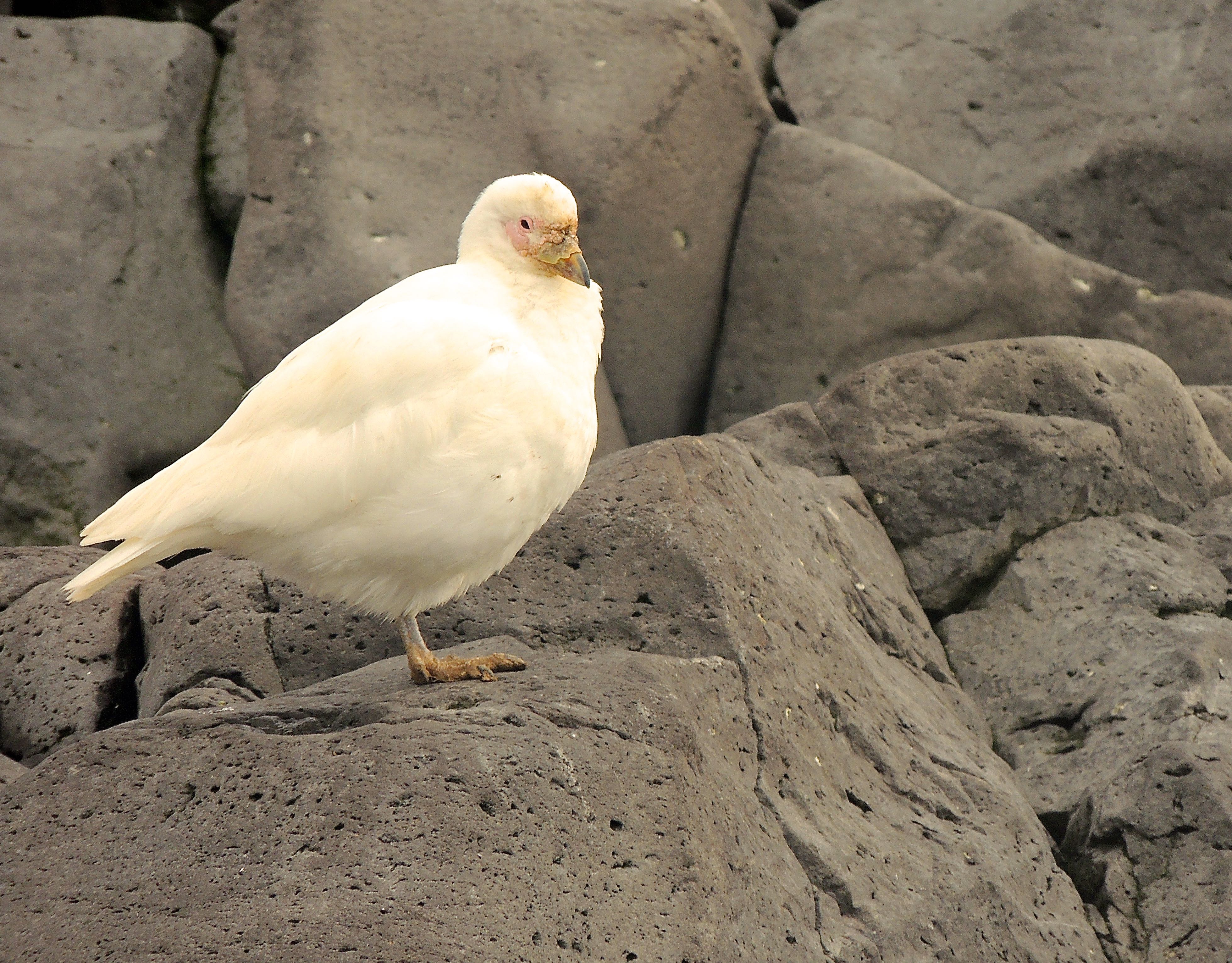 Snowy Sheathbill - Photo by William Young
Snowy Sheathbill - Photo by William Young Snowy Sheathbill - Photo by William Young
Snowy Sheathbill - Photo by William Young
OystercatchersA pair of Blackish Oystercatchers were at the park in Tierra del Fuego. They look like a standard black oystercatcher with a bright red bill. I saw a similar species in Australia, and we looked for them on black rocks by searching for the red line that was the bill. I am not sure why they are called "blackish" rather than "black". A pair of Magellanic Oystercatchers was on the beach at Saunders Island, and one appeared to be on a nest. It is a standard black-and-white oystercatcher. I would have tried to walk closer to it, but the wind was intense.
PloversThe only plovers we saw were Southern Lapwings. We saw a lot of them in the mowed grassy areas we drove past in Buenos Aires. There were also some by the water in Ushuaia. A couple of the Ushuaia birds seemed to have a nest near the water, because they became agitated as our group approached.
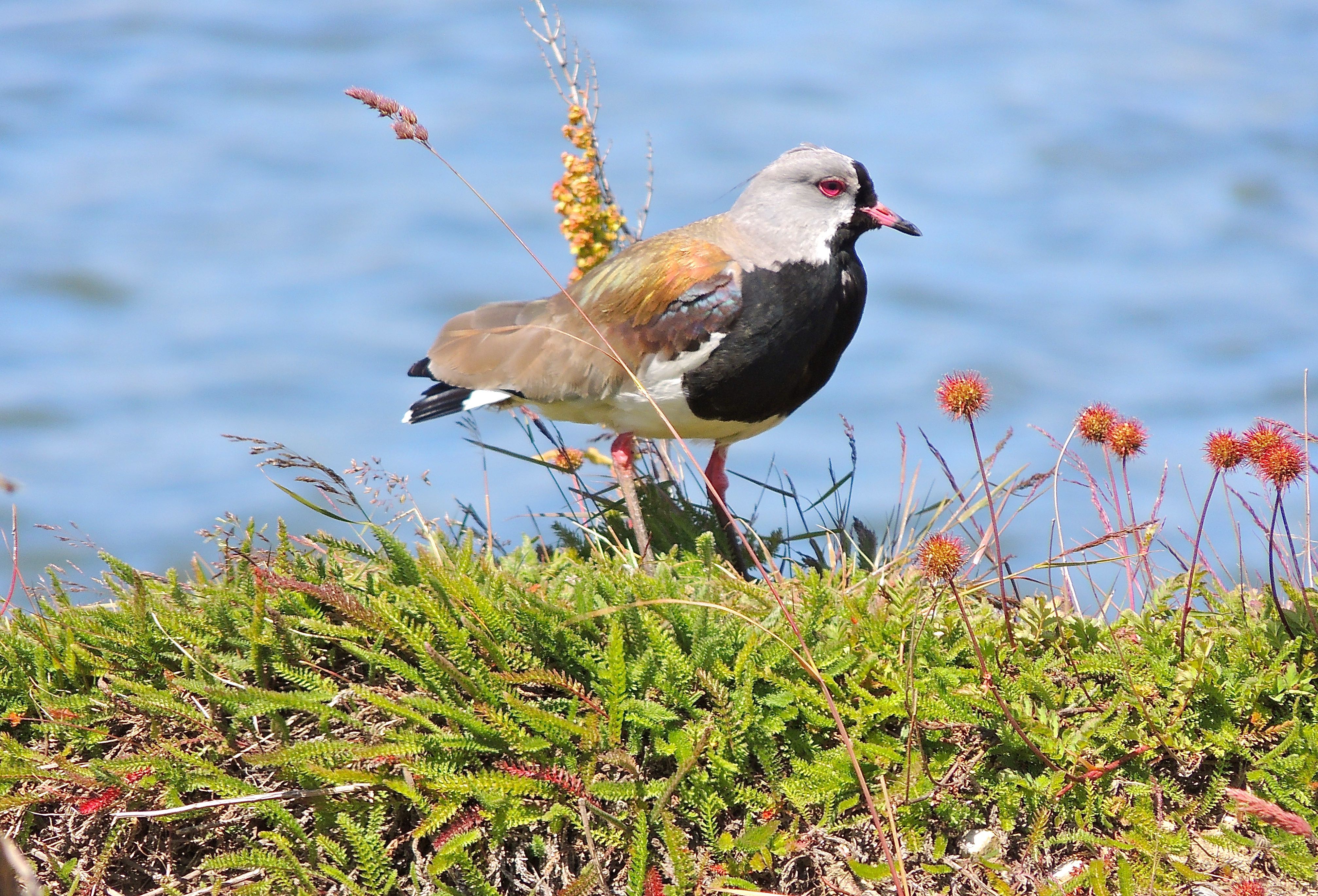 Southern Lapwing - Photo by William Young
Southern Lapwing - Photo by William Young
ShorebirdsOne of the only shorebirds I wanted to see was a Baird's Sandpiper. They occur on the bottom tip of South America. I was in the lounge with Michael on the morning our ship was stuck in the port at Ushuaia because of the high winds. I decided to go back to my room, and shortly after I left, Michael saw a Baird's Sandpiper trying to fly into the wind, so he got a good look. It is a jinx bird I have never seen, and no other ones were seen on the trip. At least I won't have to return to bottom of the world to see one like the people who missed the Falkland Steamer Duck.
SkuasThis trip provided my first experience of seeing a lot of skuas up close. Roger Tory Peterson talked about skuas in penguin colonies operating a protection racket: they eat their share of penguin chicks and eggs, but because they are territorial, they chase away other skuas and prevent the entire colony from being destroyed. The skuas on this trip all looked pretty much alike — stocky brown birds with white marks near the ends of their wings. There were differences in the shade of brown, the bulkiness of the bird, and whether there was a dark cap.
The Chilean Skuas in Ushuaia have a black cap and plumage that looks cinnamon colored in good light. Later in the trip, I saw Brown Skuas, who look darker, bulkier, and stronger than the Chilean. One who was near a penguin colony in the Falklands was standing close to an egg, and it was not making an effort to peck at the egg or eat it. At Saint Andrews, I saw an adult with two chicks who were begging for food. The nest was near the penguin colony. Michael thought that one of the skuas we saw at Saint Andrews might have been a hybrid, because it looked smaller and did not have as much mottling as some of the other Brown Skuas. At Gold Harbor, I watched as one took a bath in the water that was surrounded by King Penguins, Southern Elephant Seals, and Antarctic Fur Seals. At Hardy Cove in the South Shetland Islands, I saw four South Polar Skuas perched on rocks at the top of a hill. They are noticeably smaller than the Brown Skuas. One was a pale morph and looked blondish. The weather was overcast, so I could not see the color in good light. At Paulet Island, I saw a skua killing a live Adelie chick. I know it is part of the natural food chain, but it is still difficult to watch.
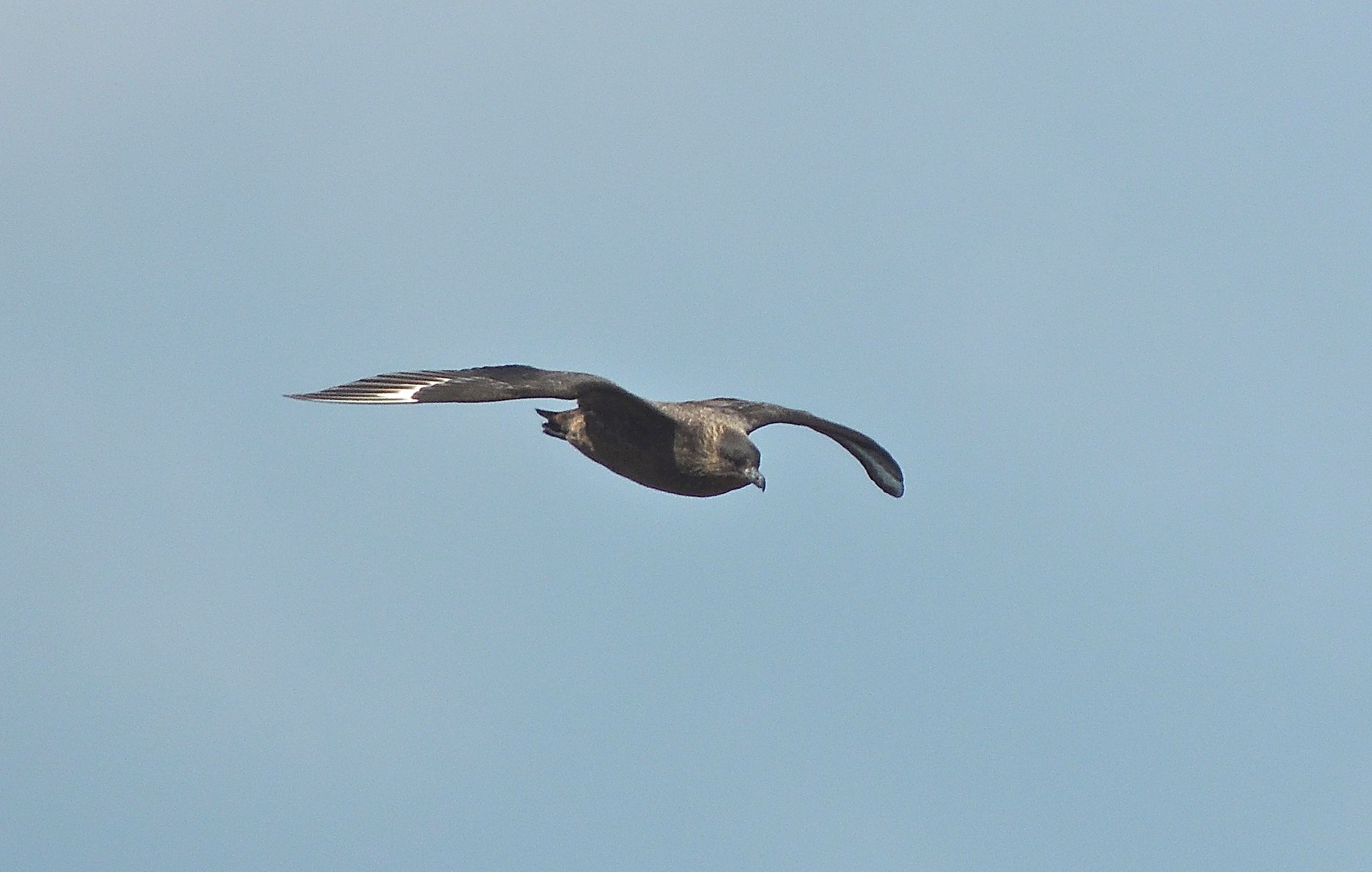 Chilean Skua - Photo by William Young
Chilean Skua - Photo by William Young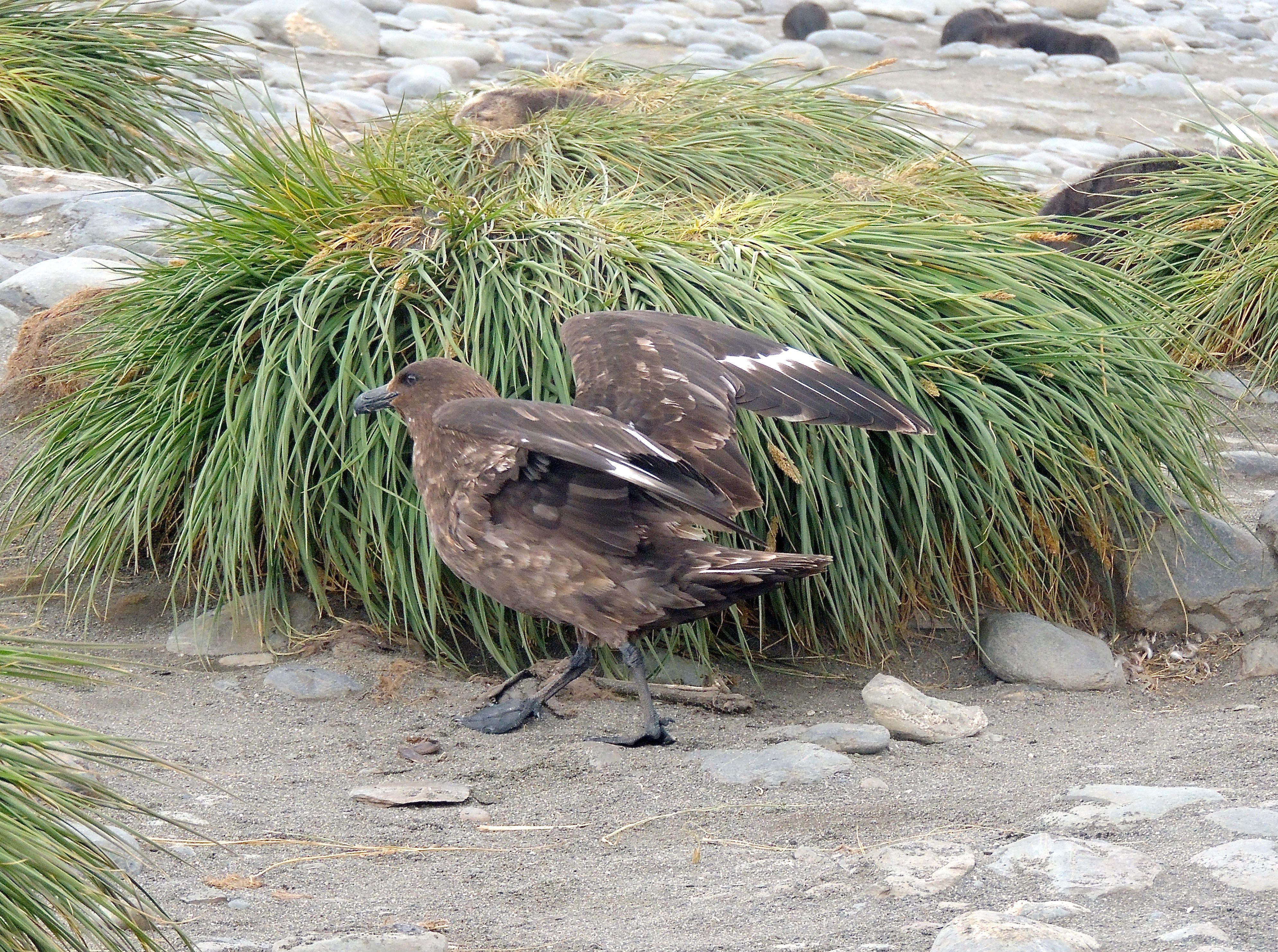 Brown Skua - Photo by William Young
Brown Skua - Photo by William Young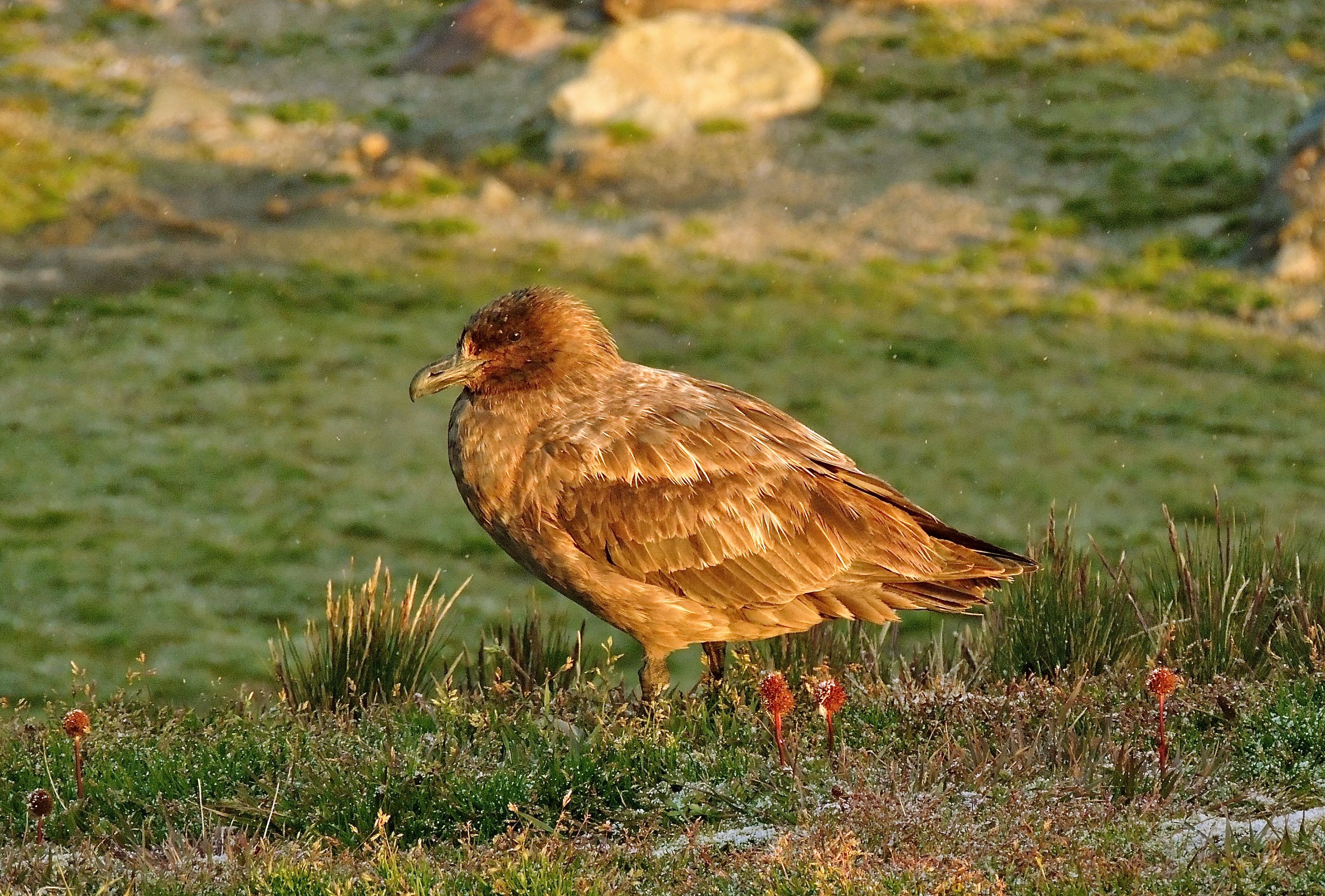 Brown Skua - Photo by William Young
Brown Skua - Photo by William Young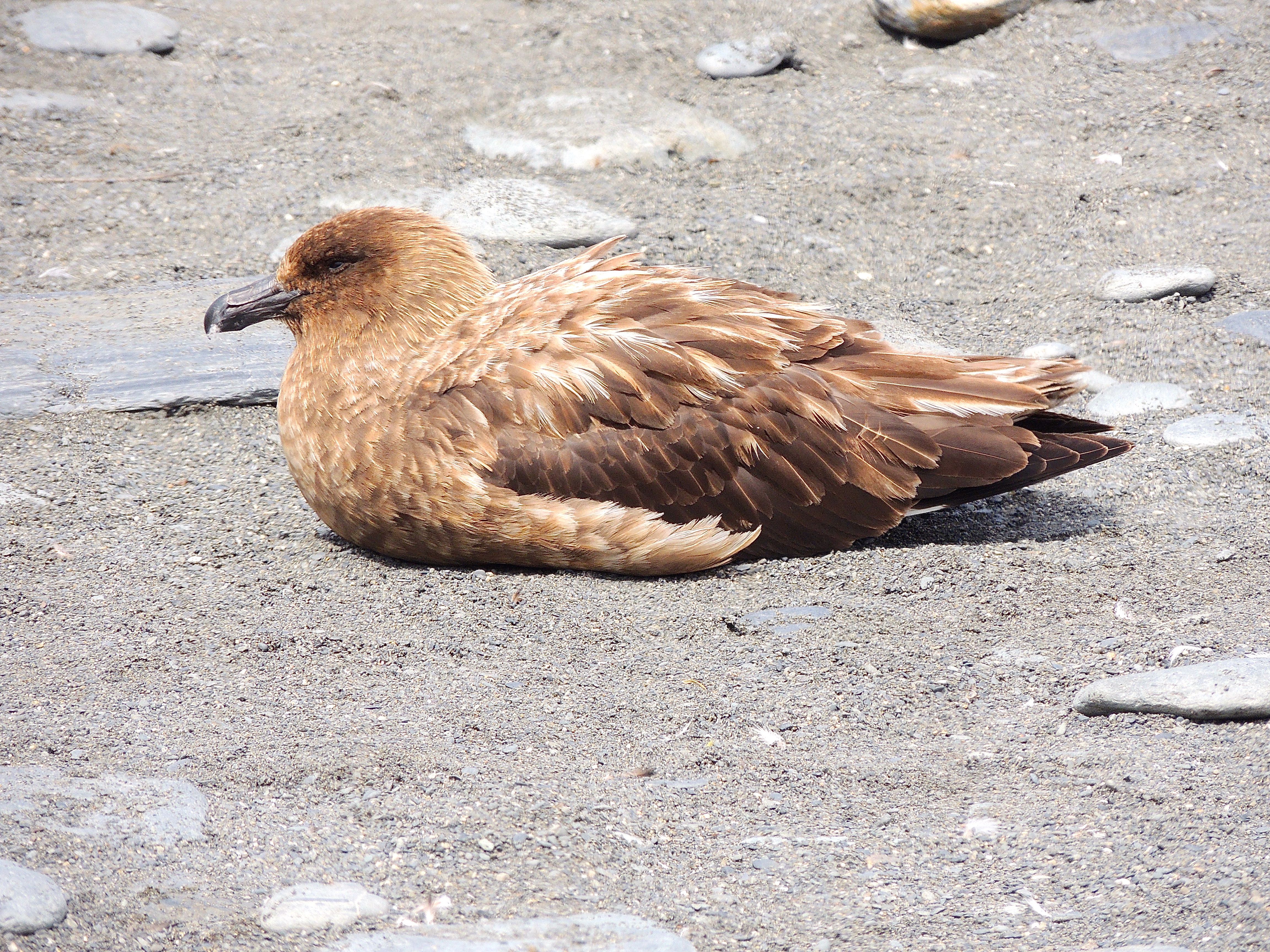 Brown Skua - Photo by William Young
Brown Skua - Photo by William Young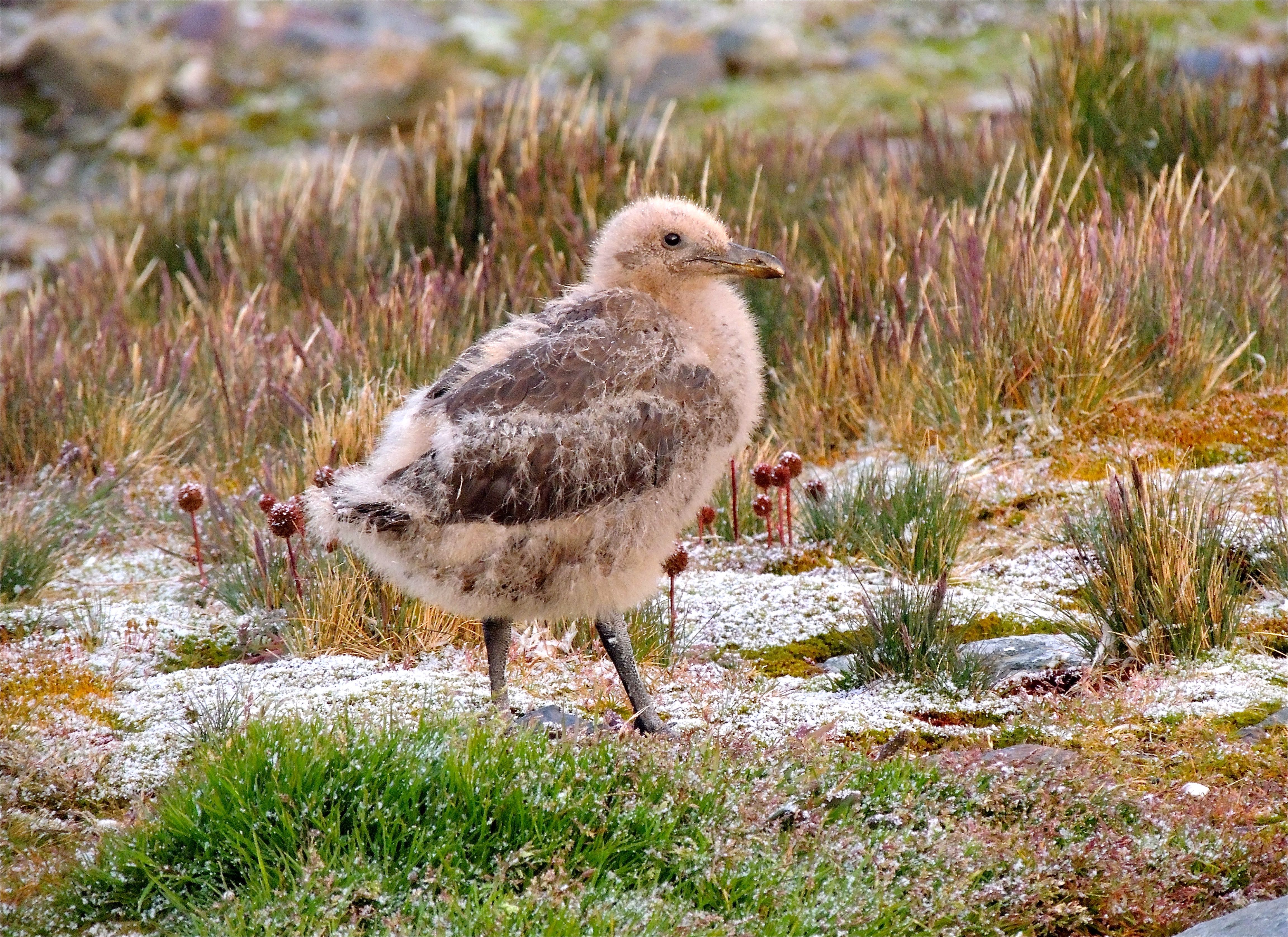 Brown Skua Chick - Photo by William Young
Brown Skua Chick - Photo by William Young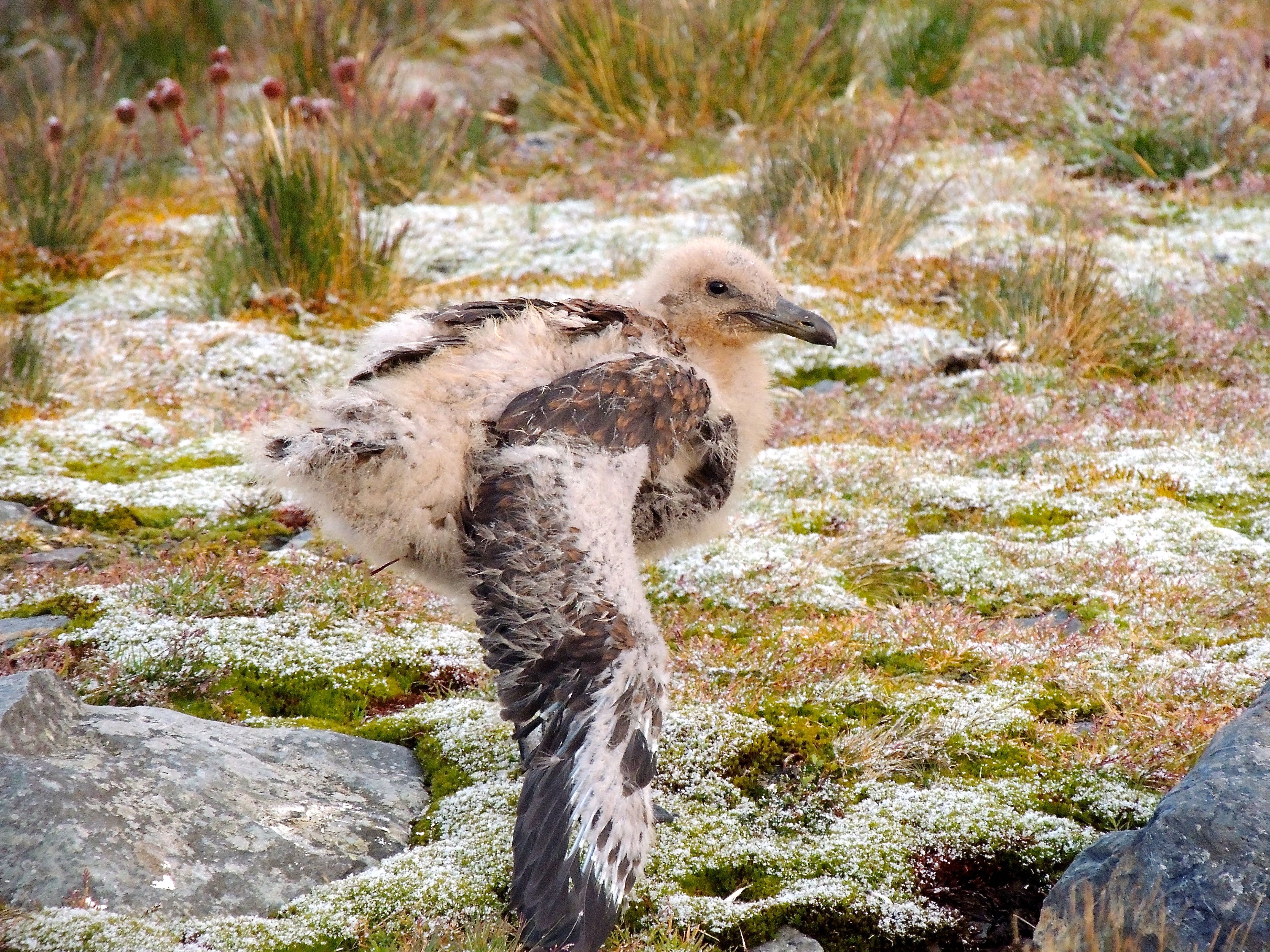 Brown Skua - Photo by William Young
Brown Skua - Photo by William Young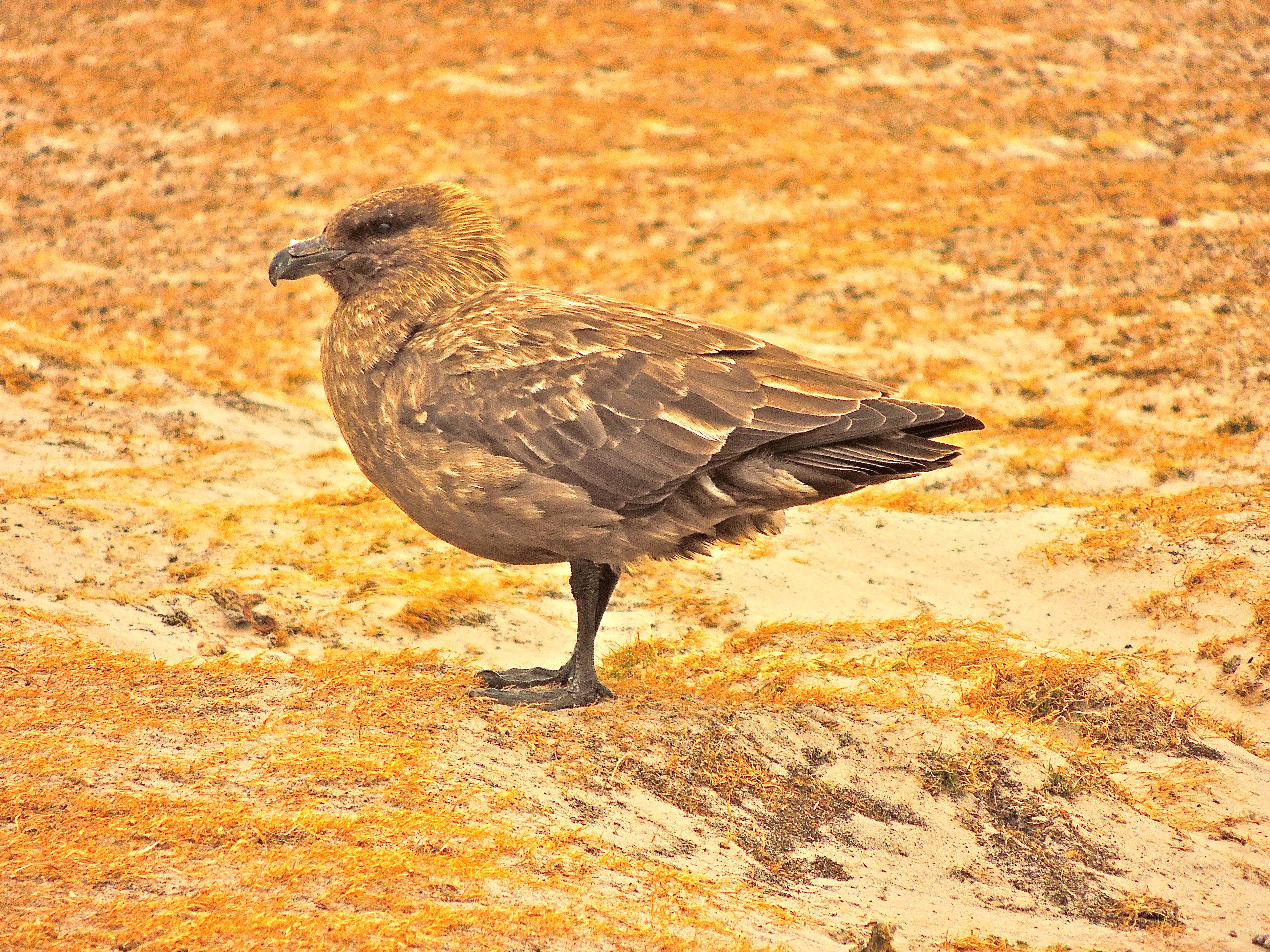 Falklands Brown Skua - Photo by William Young
Falklands Brown Skua - Photo by William Young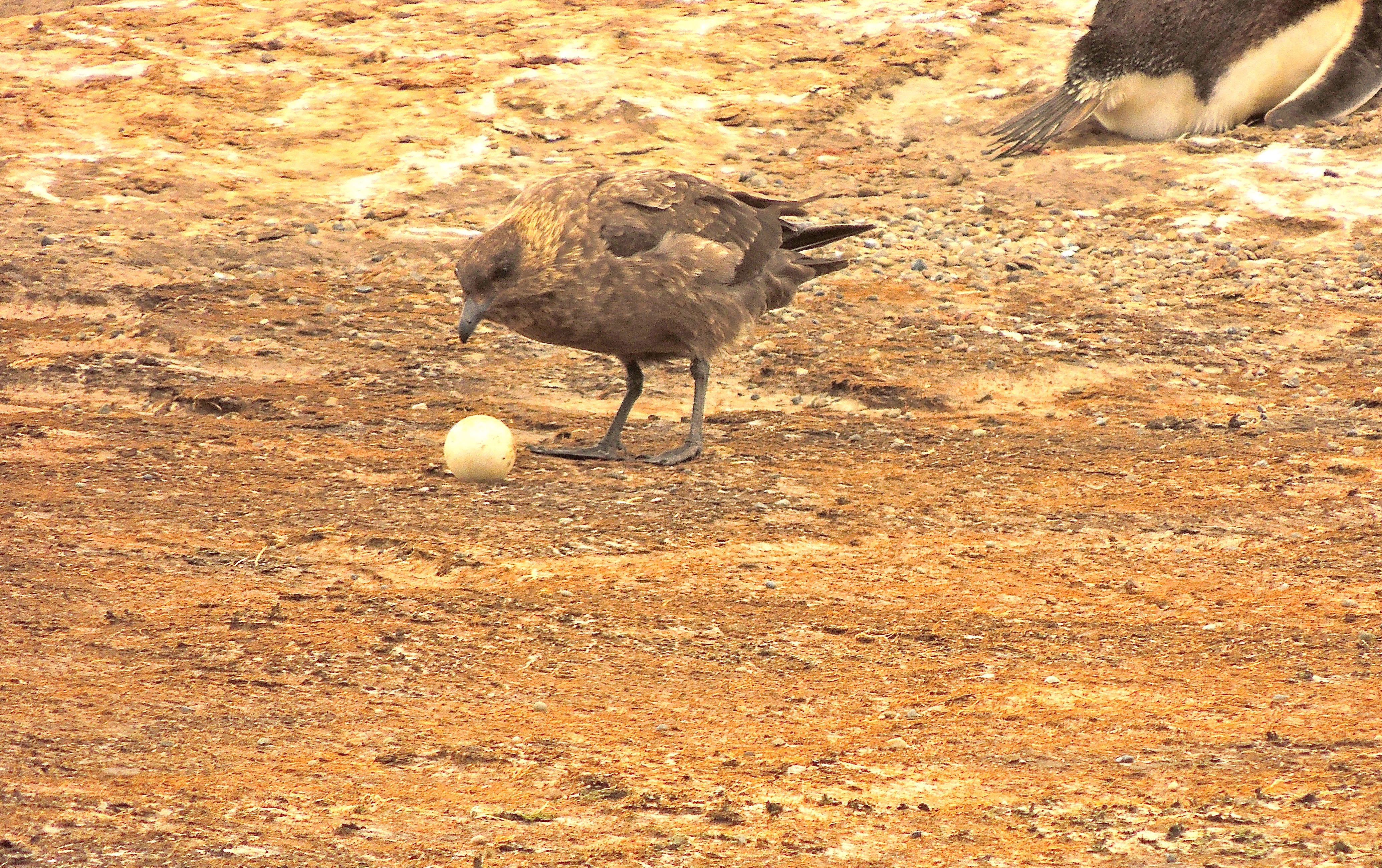 Falklands Brown Skua - Photo by William Young
Falklands Brown Skua - Photo by William Young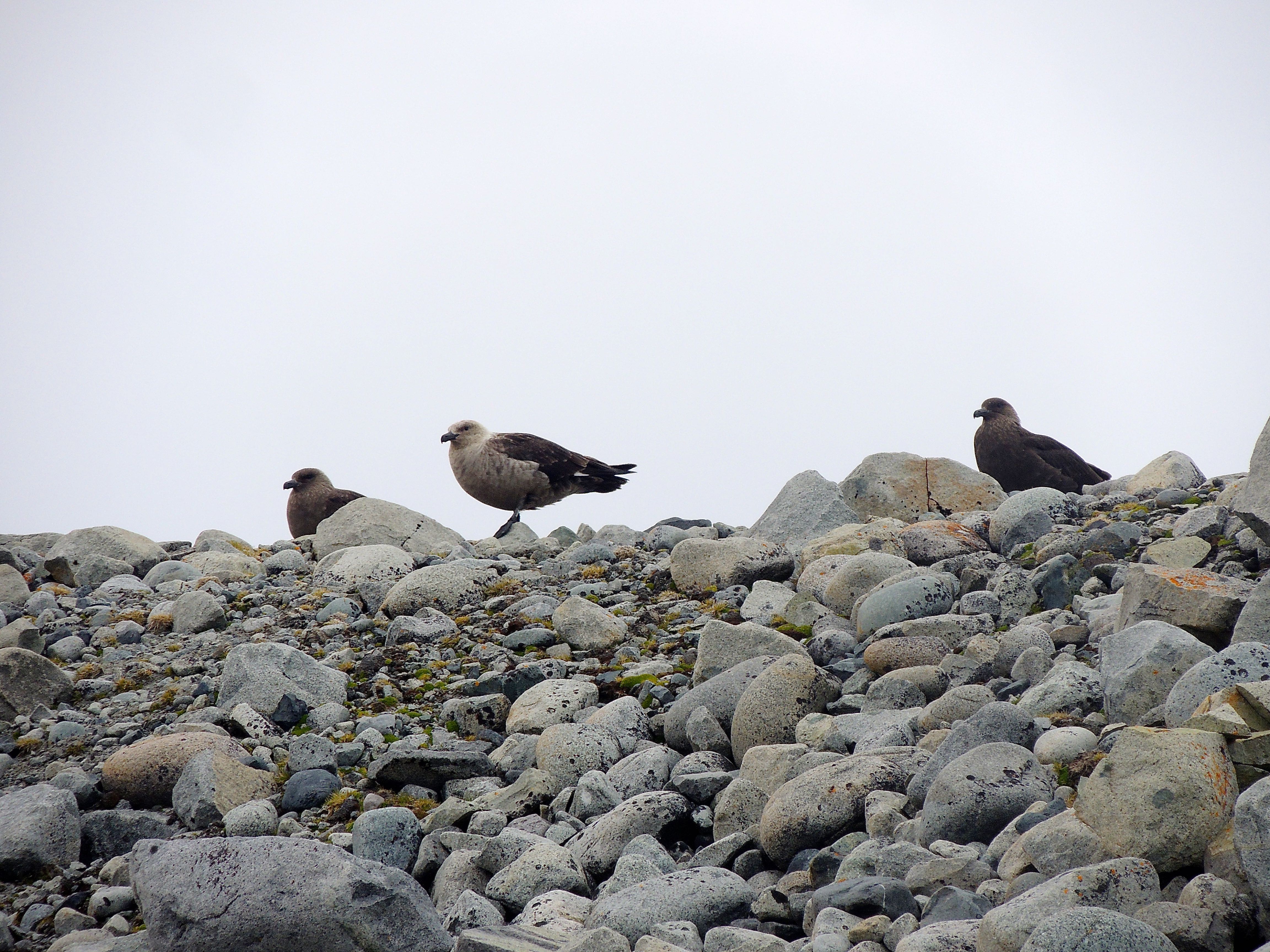 South Polar Skuas - Photo by William Young
South Polar Skuas - Photo by William Young South Polar Skua - Photo by William Young
South Polar Skua - Photo by William Young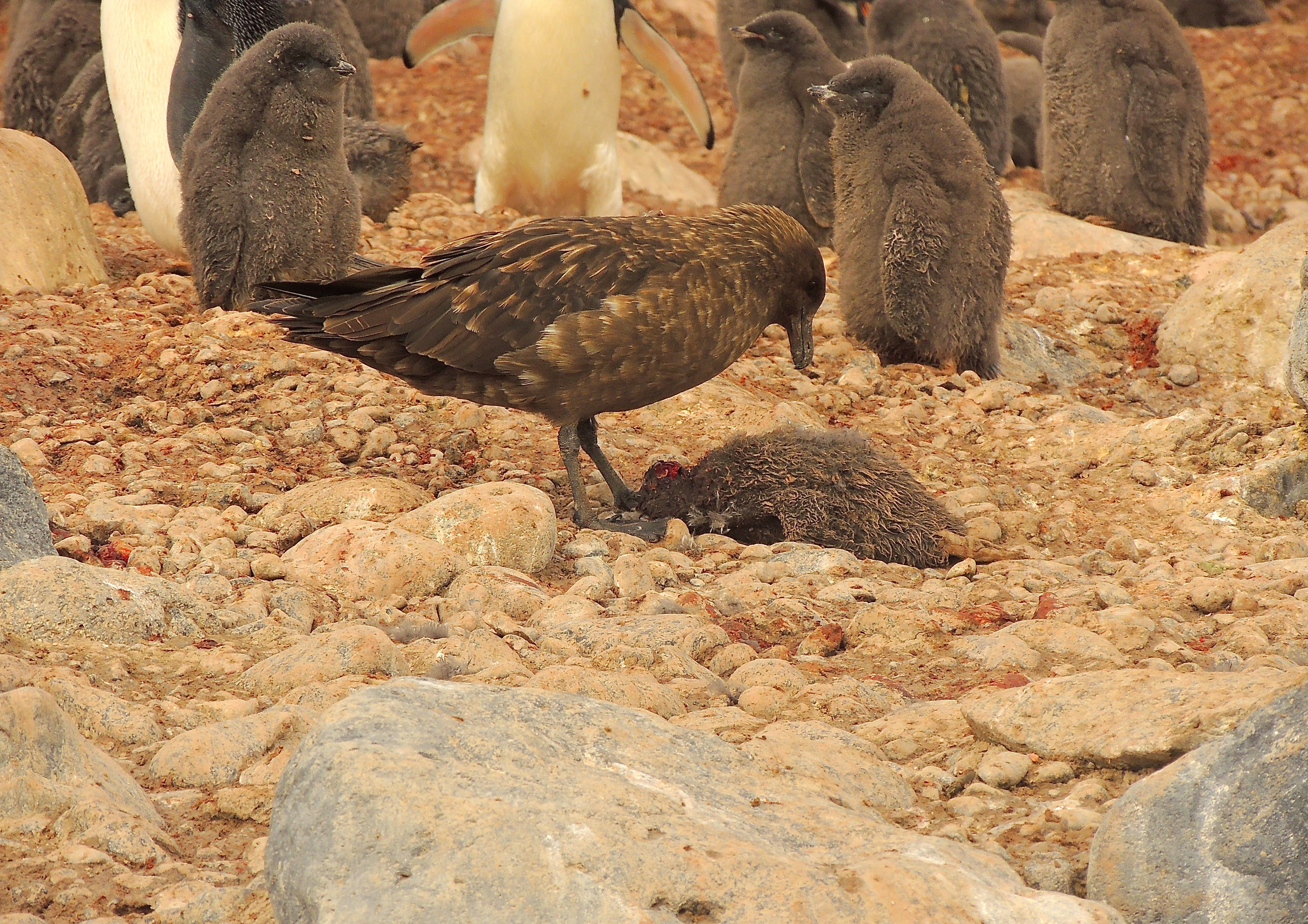 South Polar Skua Eating Adelie Penguin Chick - Photo by William Young
South Polar Skua Eating Adelie Penguin Chick - Photo by William Young
Gulls and TernsThere were three gull species in Ushuaia. The largest and most common was the Kelp Gull, who is a black-backed gull. It has black wingtips and a white trailing edge on the underwing. The upperwing is black with a white trailing edge. The tail is all white. There is a red spot on its yellow bill. Younger birds have brown rather than black wings. These gulls were very widespread. In Ushuaia, I watched as one dropped a mussel onto the pavement from a height, trying to break it open. We saw a young Kelp Gull in Hercules Bay in South Georgia, and there was a nest at Brown Bluff on the Antarctic Peninsula. Kelp Gulls are scavengers, and we saw them hanging around penguin colonies. The Dolphin Gull is gray, with black wings and a red bill. It has plumage similar to a Herrmann's Gull, but the bill is different, and the species is more closely related to Laughing and Franklin's Gulls. Even though Dolphin Gulls are considerably smaller than Kelp Gulls, at times they would try to steal food from the bigger birds. We did not see any when we headed south from the Falklands. The third gull we saw was the Brown-hooded. A relatively small number were on the Ushuaia waterfront. They are smaller than Dolphin Gulls. We saw all three species at the same time on the day we had to wait for the winds in Ushuaia to die down. I saw one in breeding plumage who had a fairly dark hood and another who looked like a nonbreeding adult with a washed out hood. It had a red bill, and its wings were light gray. It is about the size of a Franklin's Gull.
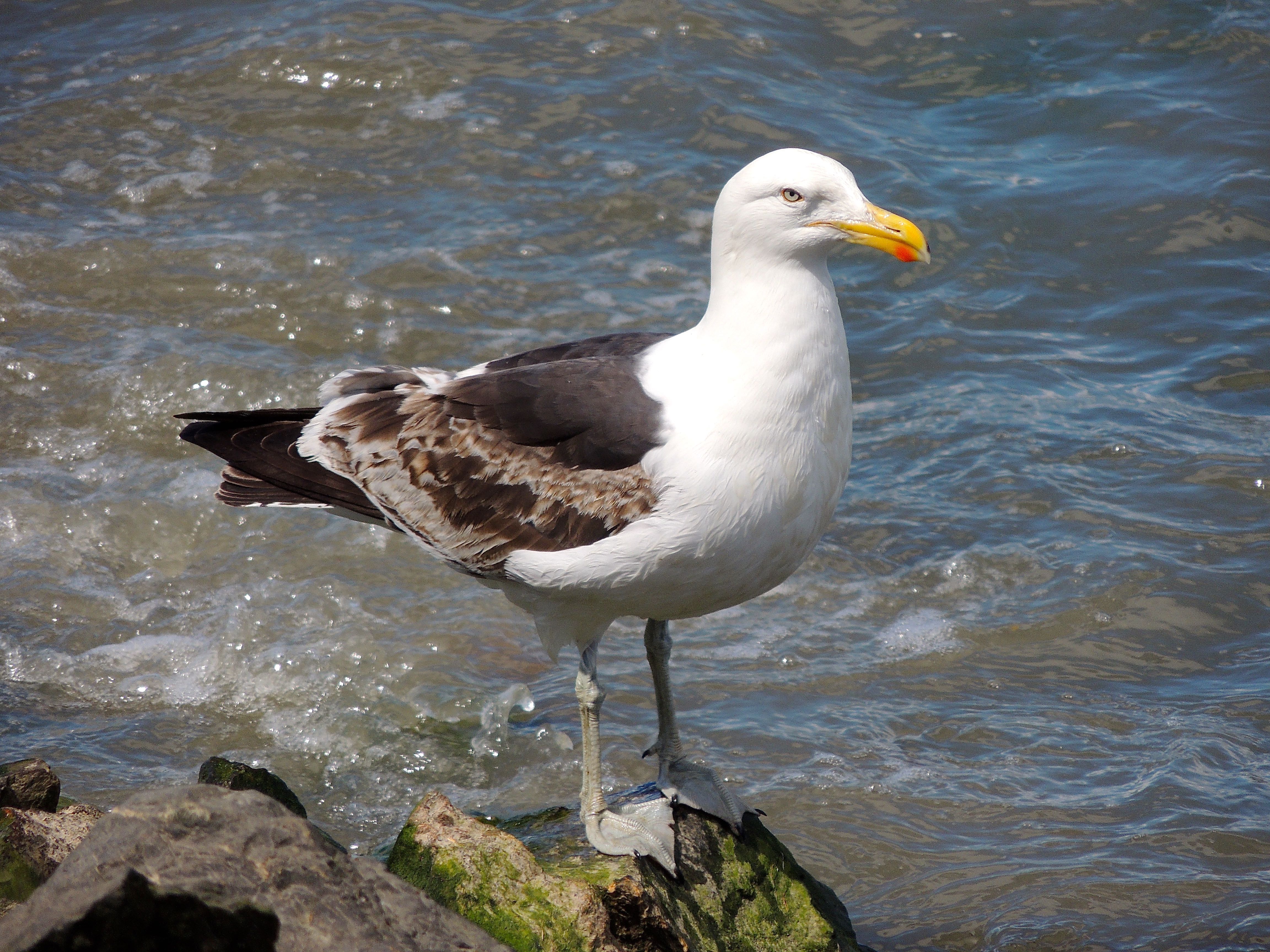 Kelp Gull - Photo by William Young
Kelp Gull - Photo by William Young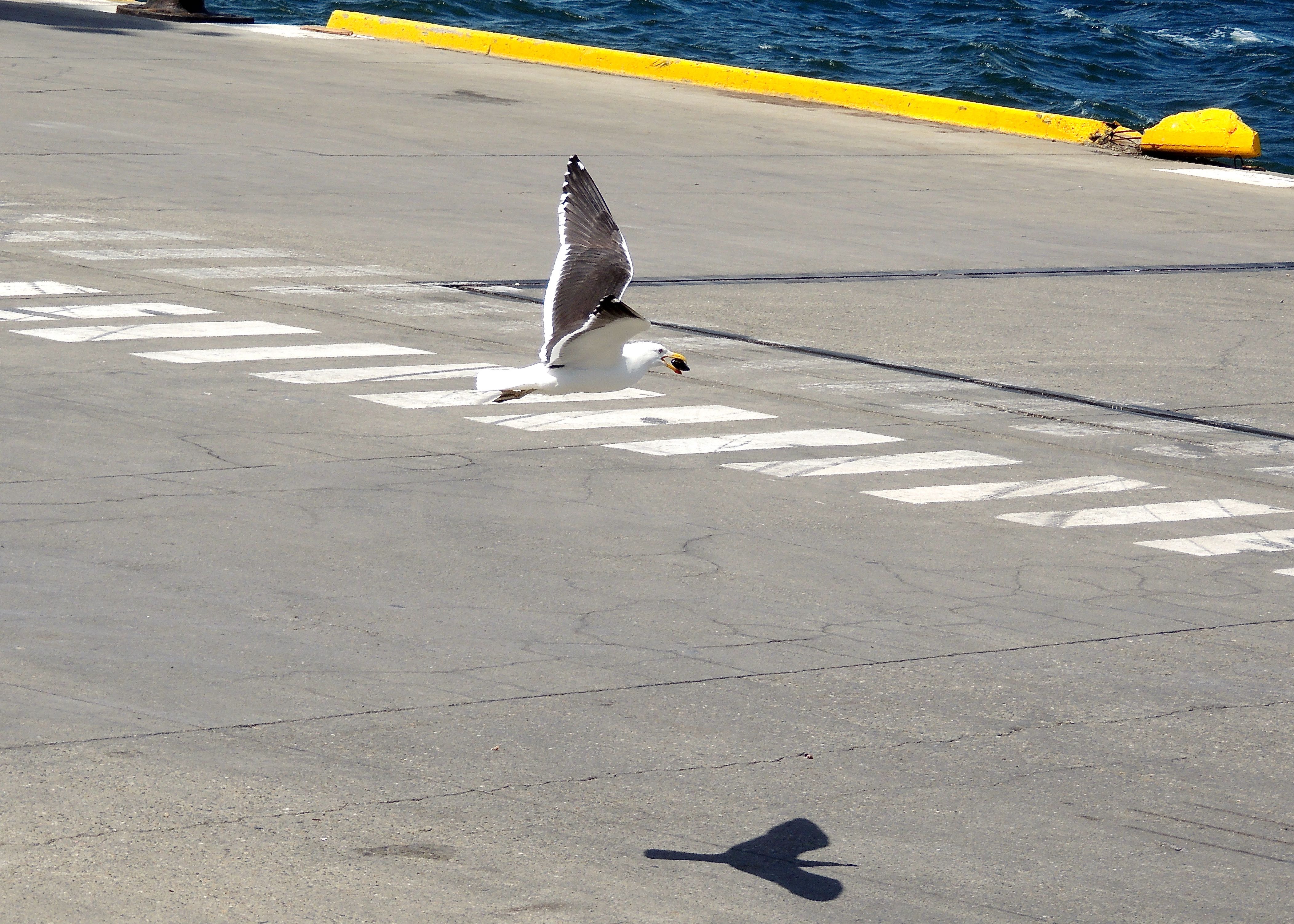 Kelp Gull - Photo by William Young
Kelp Gull - Photo by William Young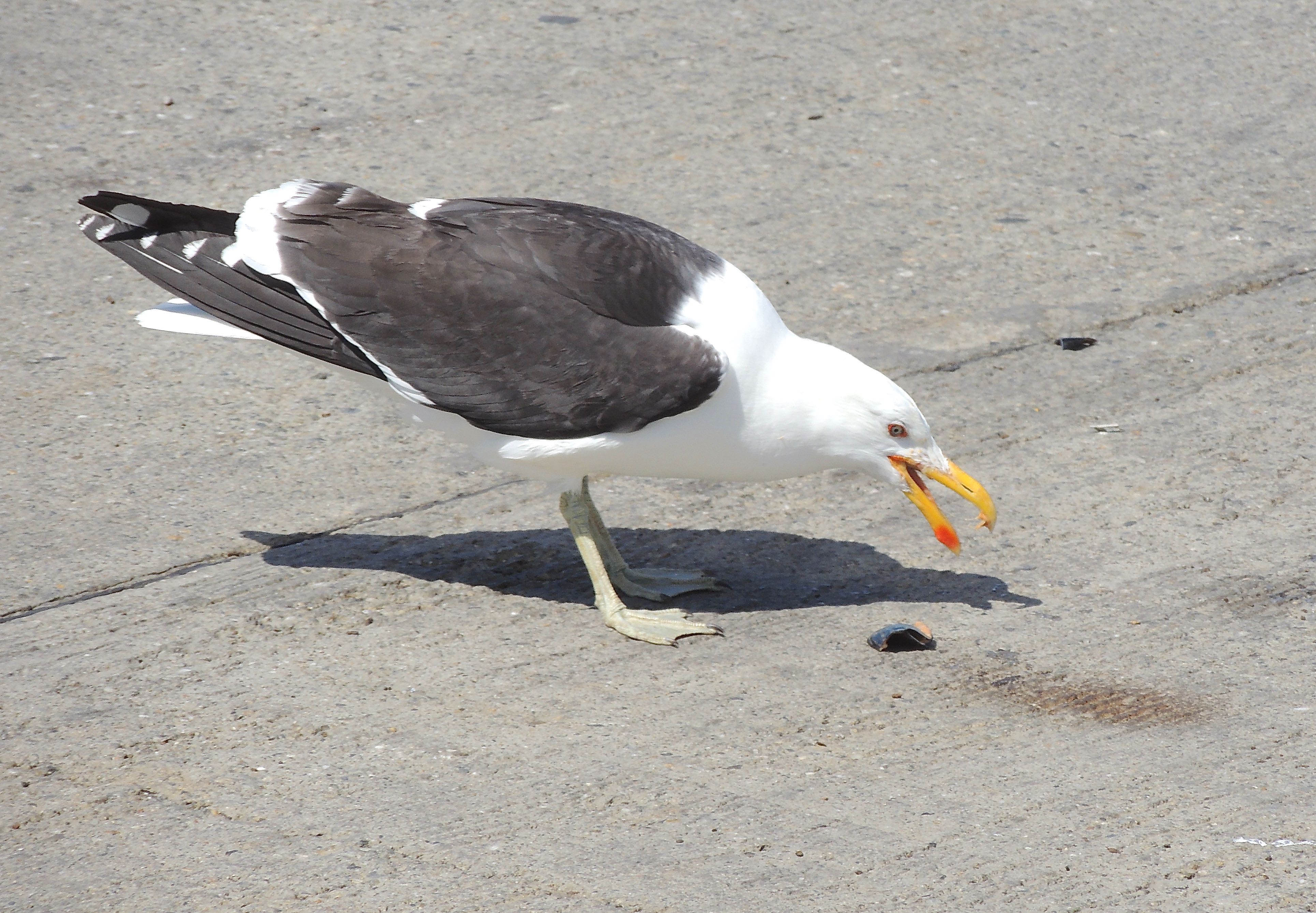 Kelp Gull - Photo by William Young
Kelp Gull - Photo by William Young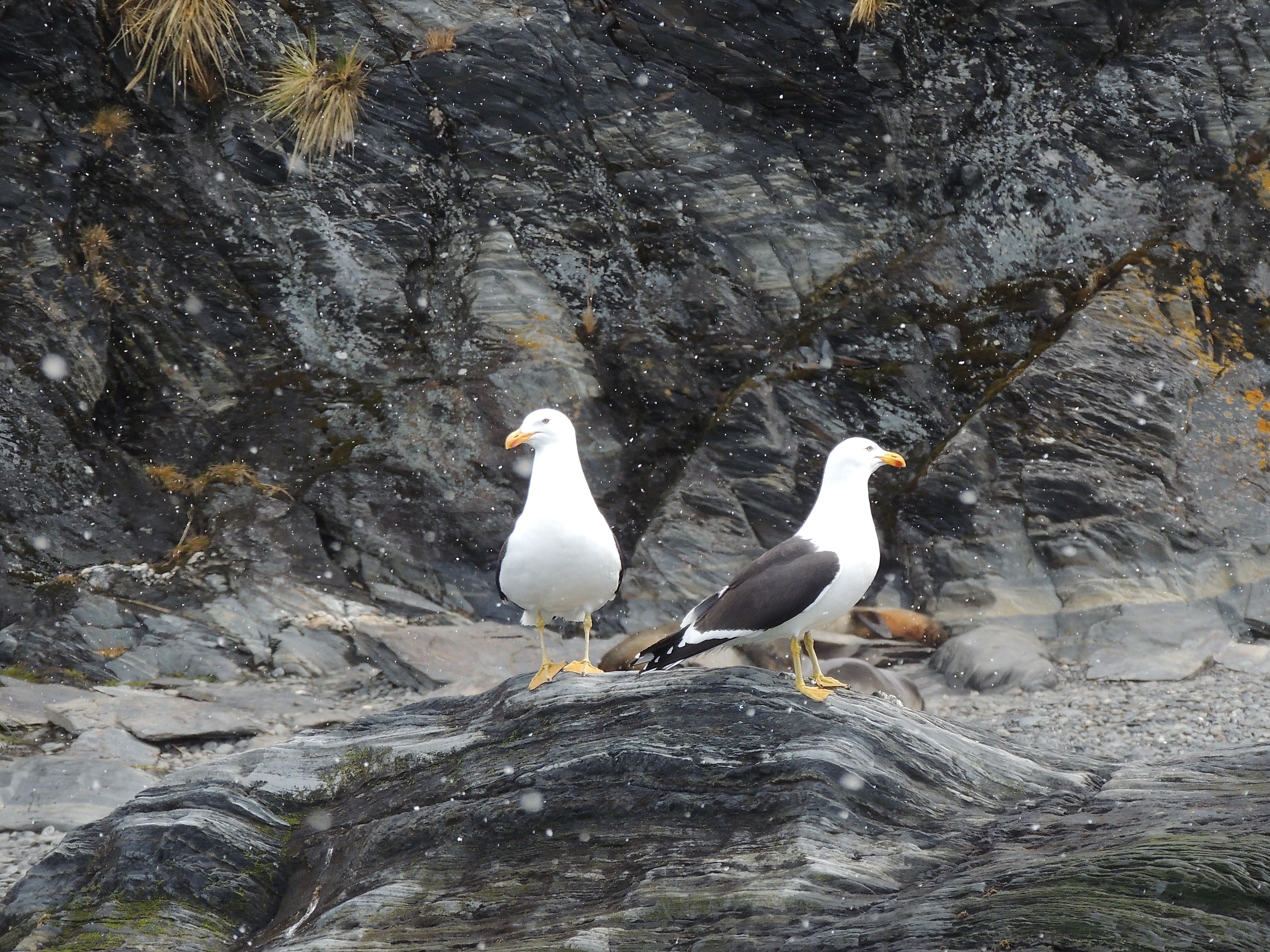 Kelp Gulls - Photo by William Young
Kelp Gulls - Photo by William Young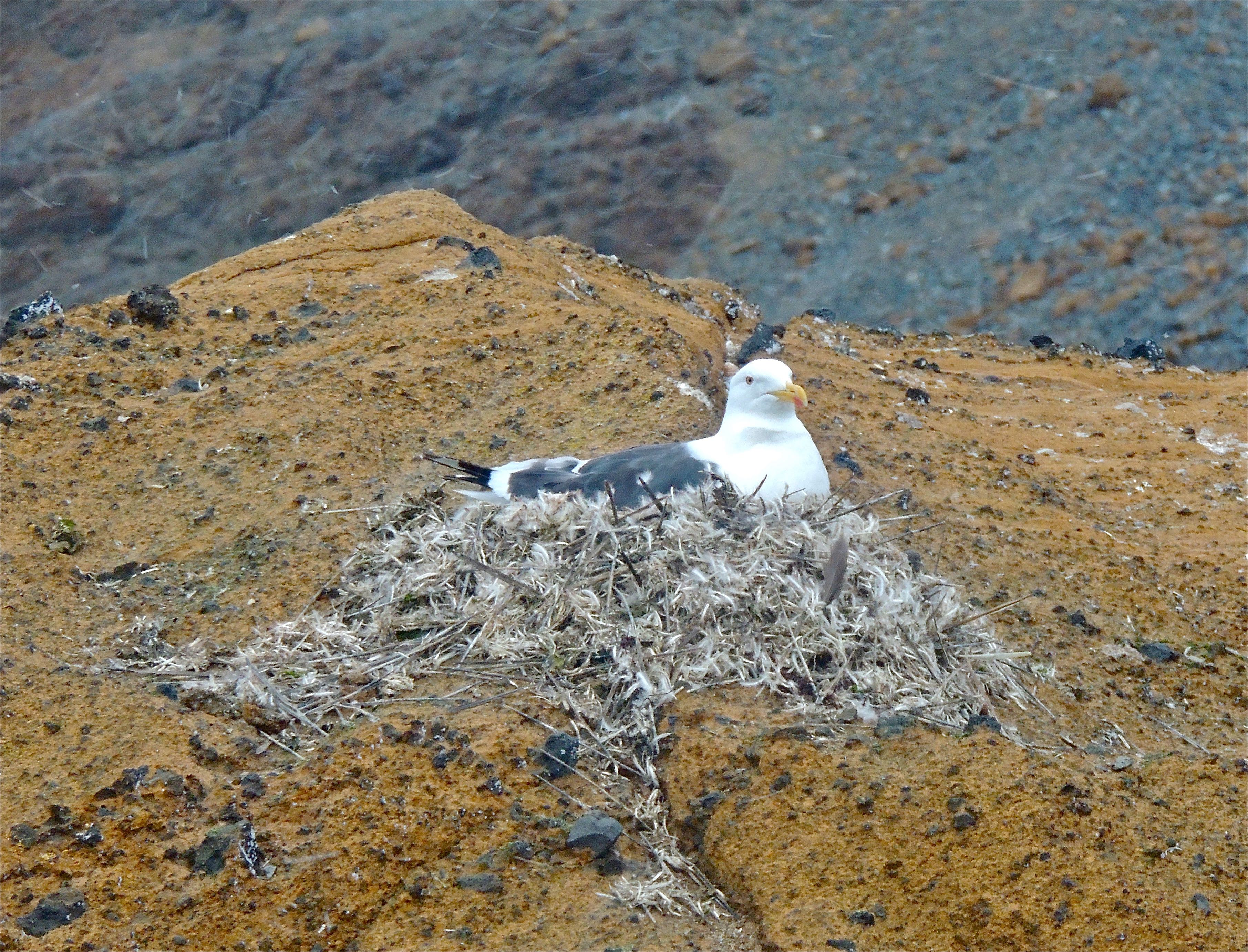 Kelp Gull on Nest - Photo by William Young
Kelp Gull on Nest - Photo by William Young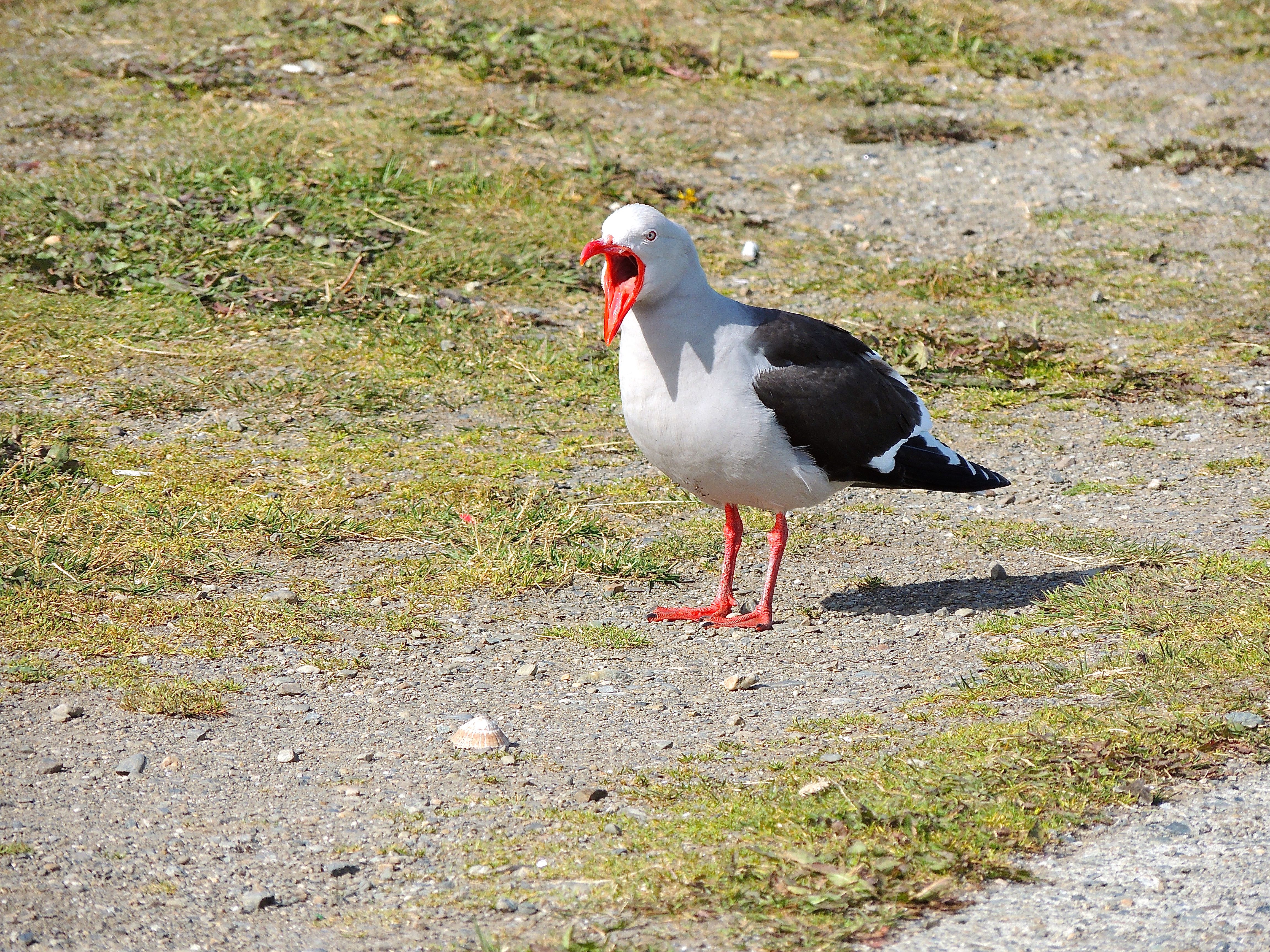 Dolphin Gull - Photo by William Young
Dolphin Gull - Photo by William Young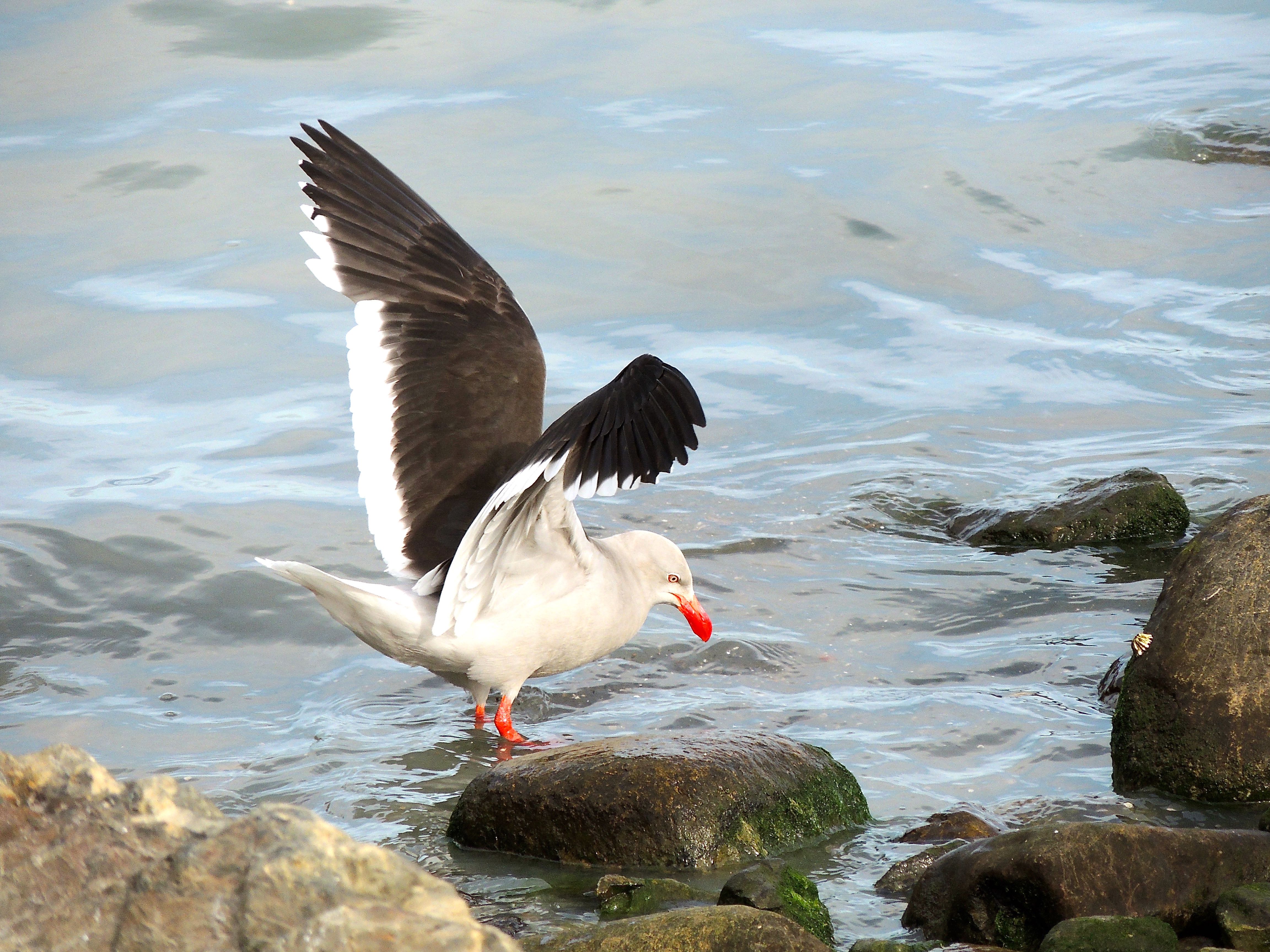 Dolphin Gull - Photo by William Young
Dolphin Gull - Photo by William Young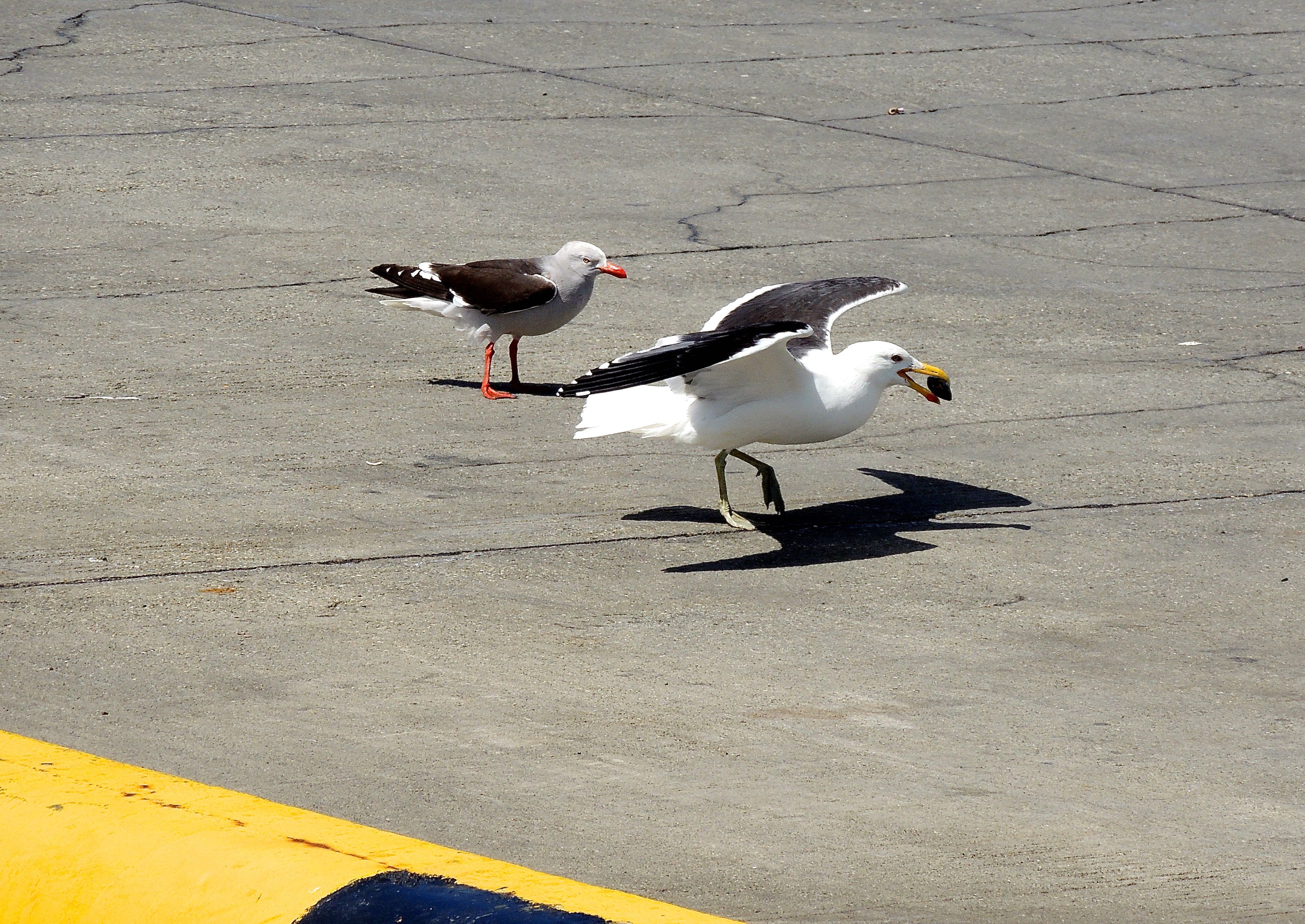 Dolphin and Kelp Gulls - Photo by William Young
Dolphin and Kelp Gulls - Photo by William Young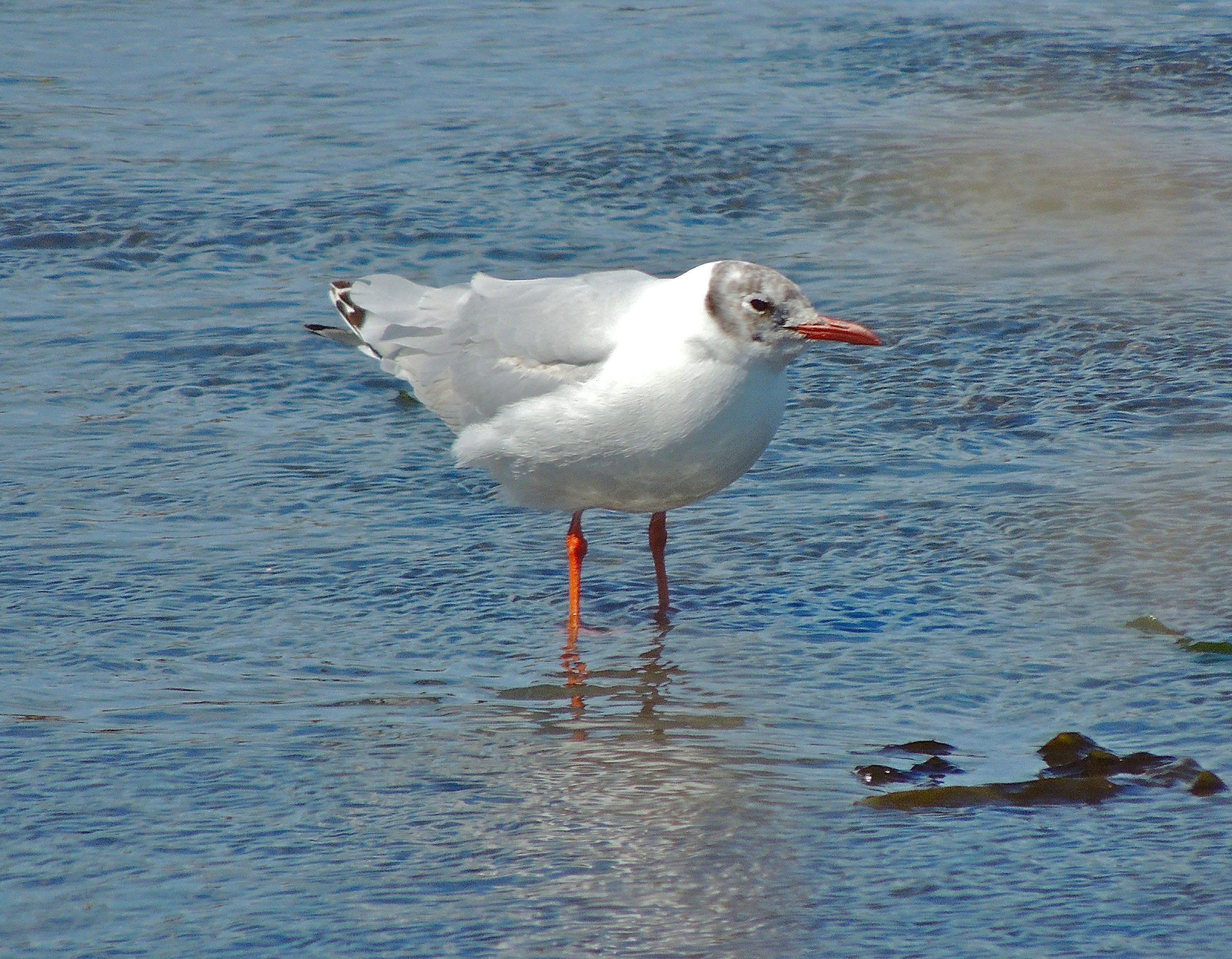 Brown-hooded Gull - Photo by William Young
Brown-hooded Gull - Photo by William YoungWe saw two species of terns. Going in and out of Ushuaia, we saw South American Terns, who are grayish and have a black cap and a red bill. In the middle of the trip, we saw a lot of Antarctic Terns. They also are grayish, but they did not look as bulky as the South American. The tail on the Antarctic is forked, but not as deeply forked as a breeding Arctic Tern. There were some days when they were quite common.
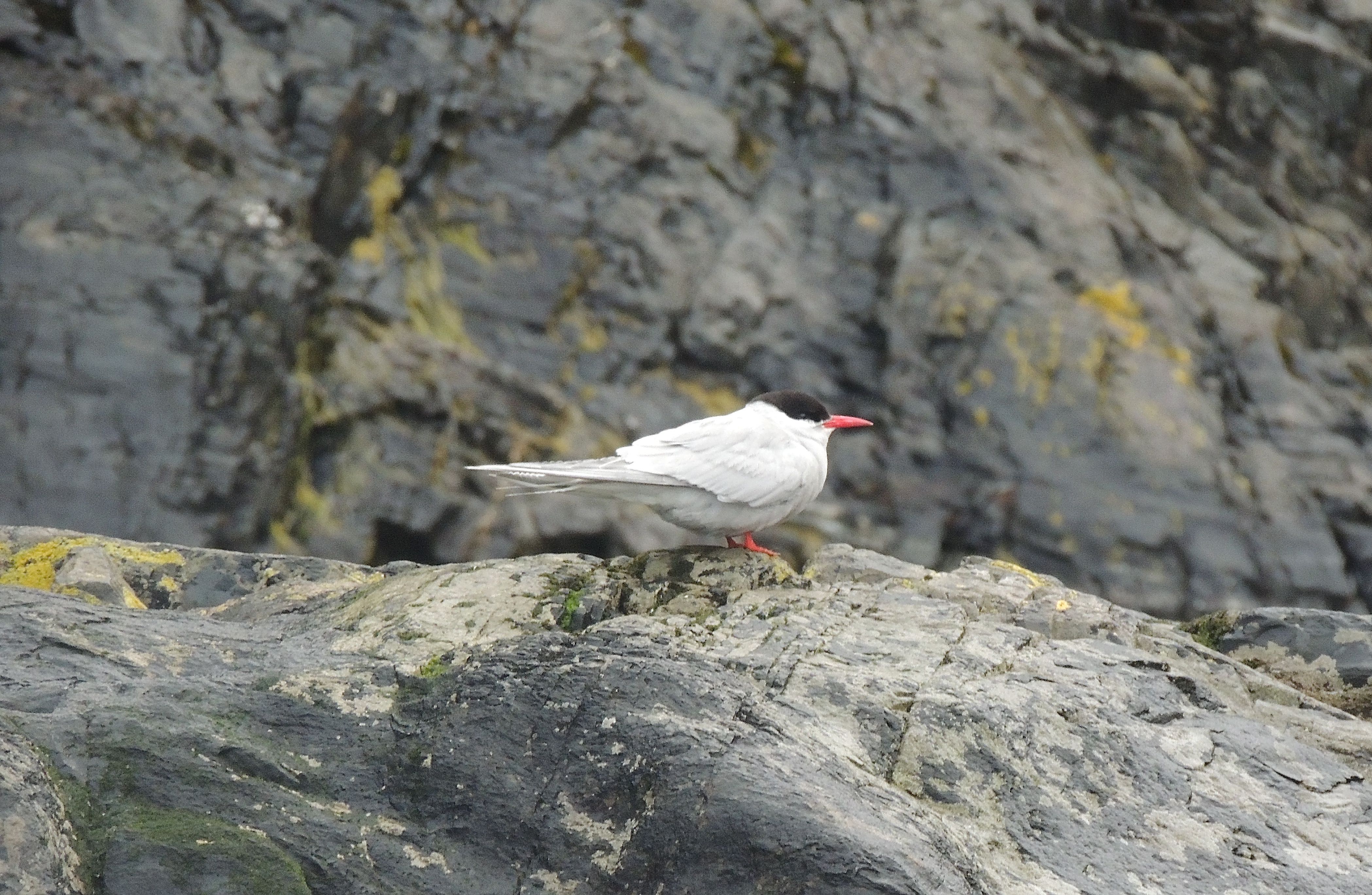 Antarctic Tern - Photo by William Young
Antarctic Tern - Photo by William Young
PigeonsRock Pigeons have been introduced to Argentina, so we saw a lot of them in both Buenos Aires and Ushuaia. The Eared Dove, who is closely related to the Mourning Dove and found throughout South America, was also common in both places. We did not see any doves between our two stops in Ushuaia. In Buenos Aires, we saw Picazuro Pigeons, who are large and reminded me of Wood Pigeons in Europe. They are the color of red wine, with a white flecked black patch on their neck. When I was having lunch on the day we went to Otamendi, I saw a Picui Ground Dove walking along a utility wire. It is small and light-colored.
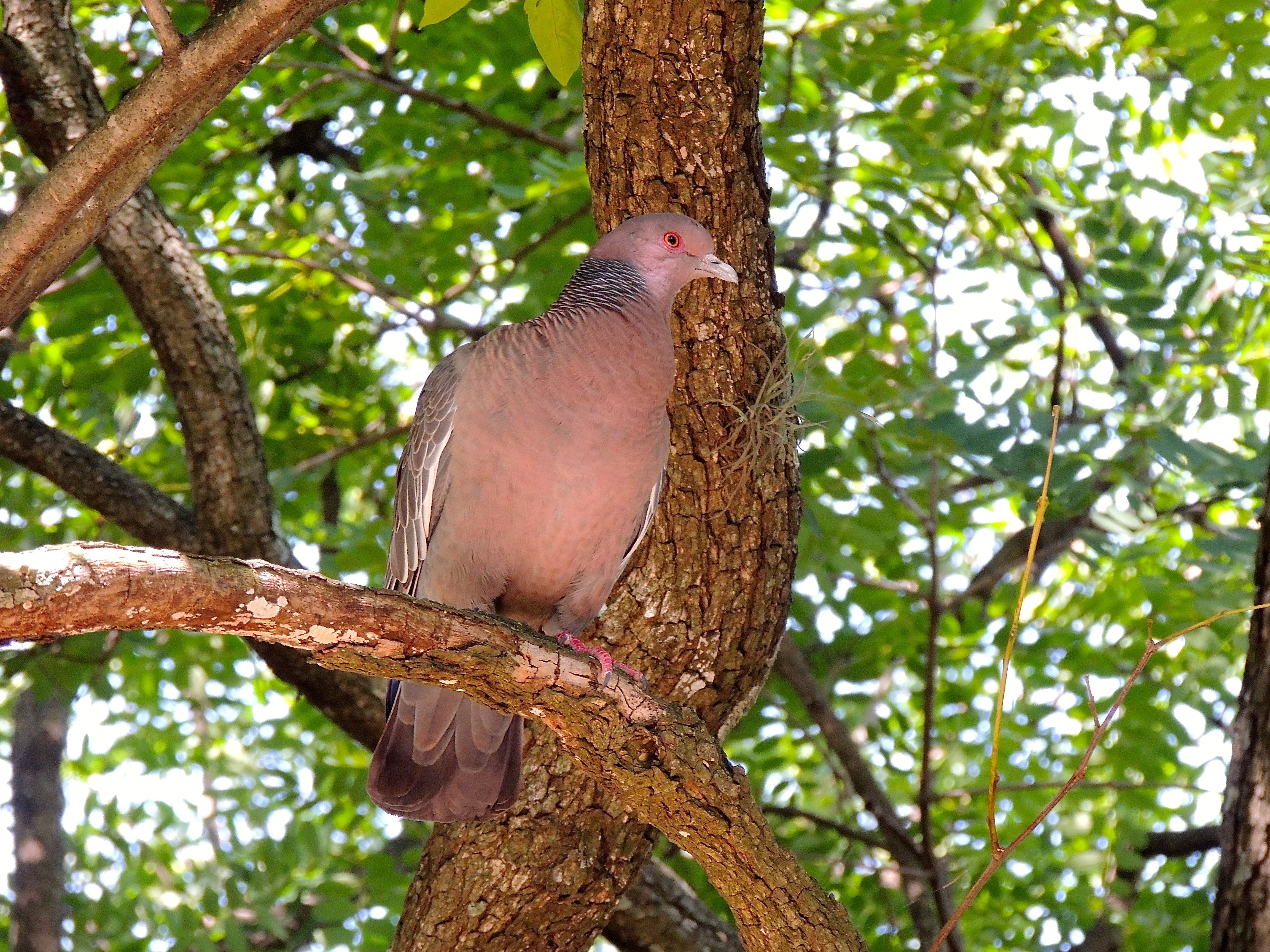 Picazuro Pigeon - Photo by William Young
Picazuro Pigeon - Photo by William Young
CaracarasI saw a lot of caracaras on this trip. I started to see them shortly after I arrived at the airport in Buenos Aires. At the time, I could not tell whether they were Chimango or Southern Caracaras. I subsequently learned that the Chimango is smaller and lighter underneath, while the Southern is large and black below. We saw a lot flying around both on the road to Otamendi and at the reserve. I was able to examine them much more closely at the park in Tierra del Fuego. Both species lurked in the picnic area, hoping to pick up scraps from people using the grills (or to steal something when the grill was unattended). The caracaras were on the ground only about ten feet from us, and sometimes we saw both species together. The Southern, who looks like the Crested we have in the north, appeared to be almost twice as large as the Chimango. The Chimango appears to be built for speed, and when it was flying low, it flew more like an accipiter than a falcon. Near our lodge in Ushuaia, John and some others saw a White-throated Caracara, but I did not. On Saunders Island in the Falklands, Striated Caracaras were both on the beach and perched on the grassy hills next to the beach. We also saw them in the Southern Rockhopper Penguin nesting area, and one appeared to be eating the remains of a penguin chick. The adults appeared to be a little smaller than a Southern. They were not bothered by a close approach by people. Nor were the Southerns or the Chimangos at the picnic area in Tierra del Fuego. The Striated is quite dark, with some white feathering on the breast. It has a light bill that appears to have some type of sheathing at the base, like the Snowy Sheathbill. There were also young birds whose bills appeared to be dark gray. The feet were washed-out yellow.
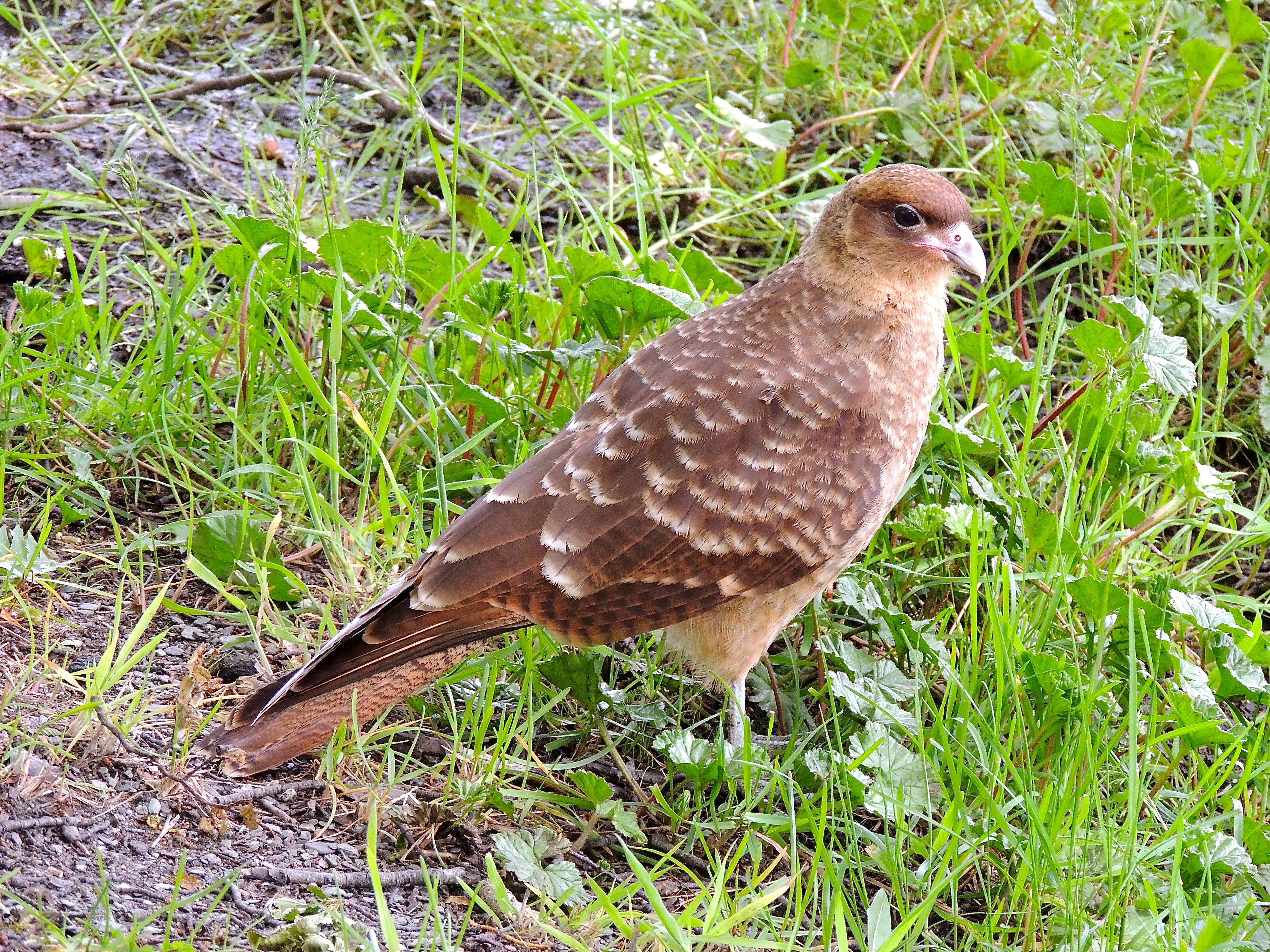 Chimango Caracara - Photo by William Young
Chimango Caracara - Photo by William Young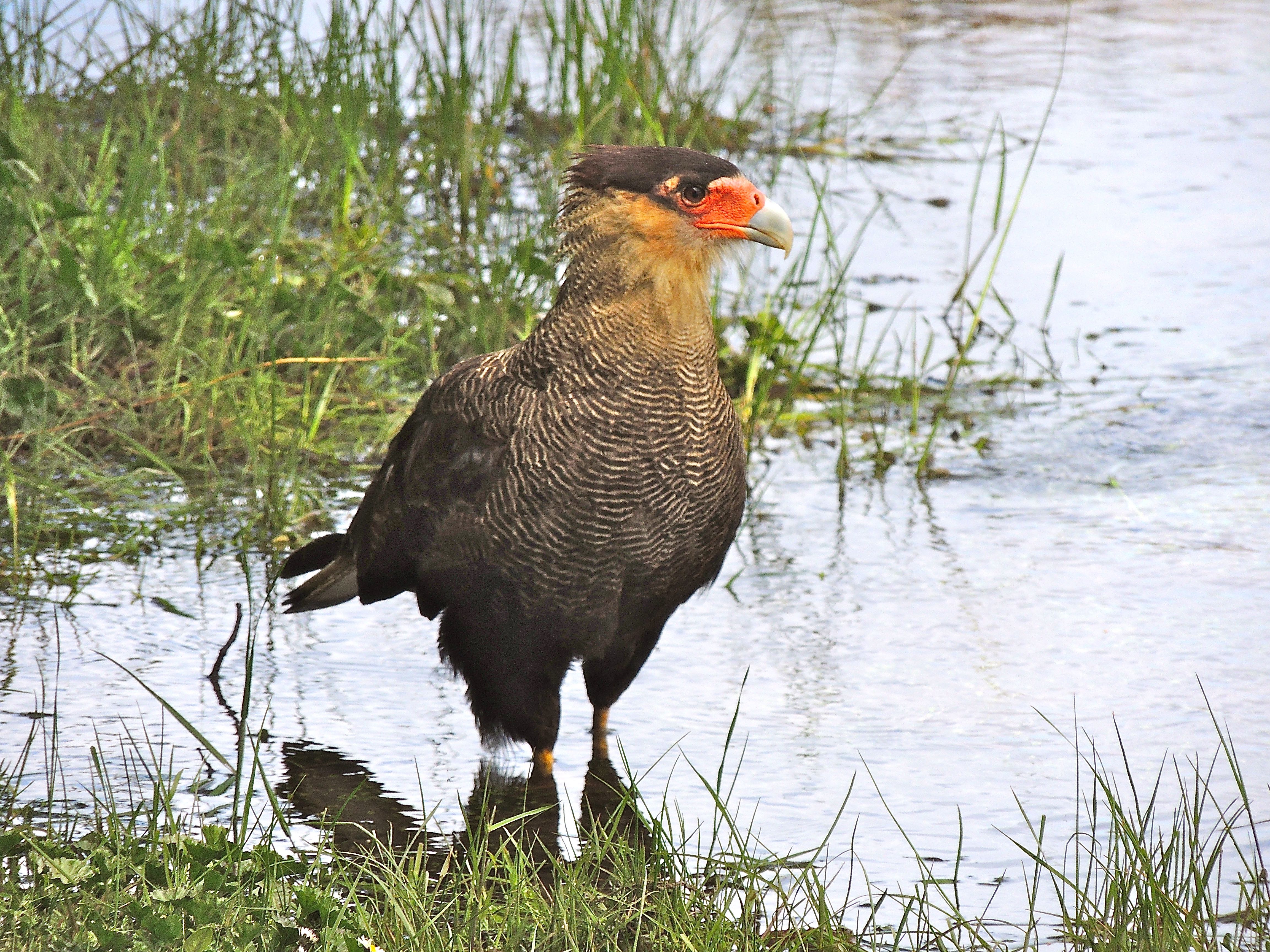 Southern Caracara - Photo by William Young
Southern Caracara - Photo by William Young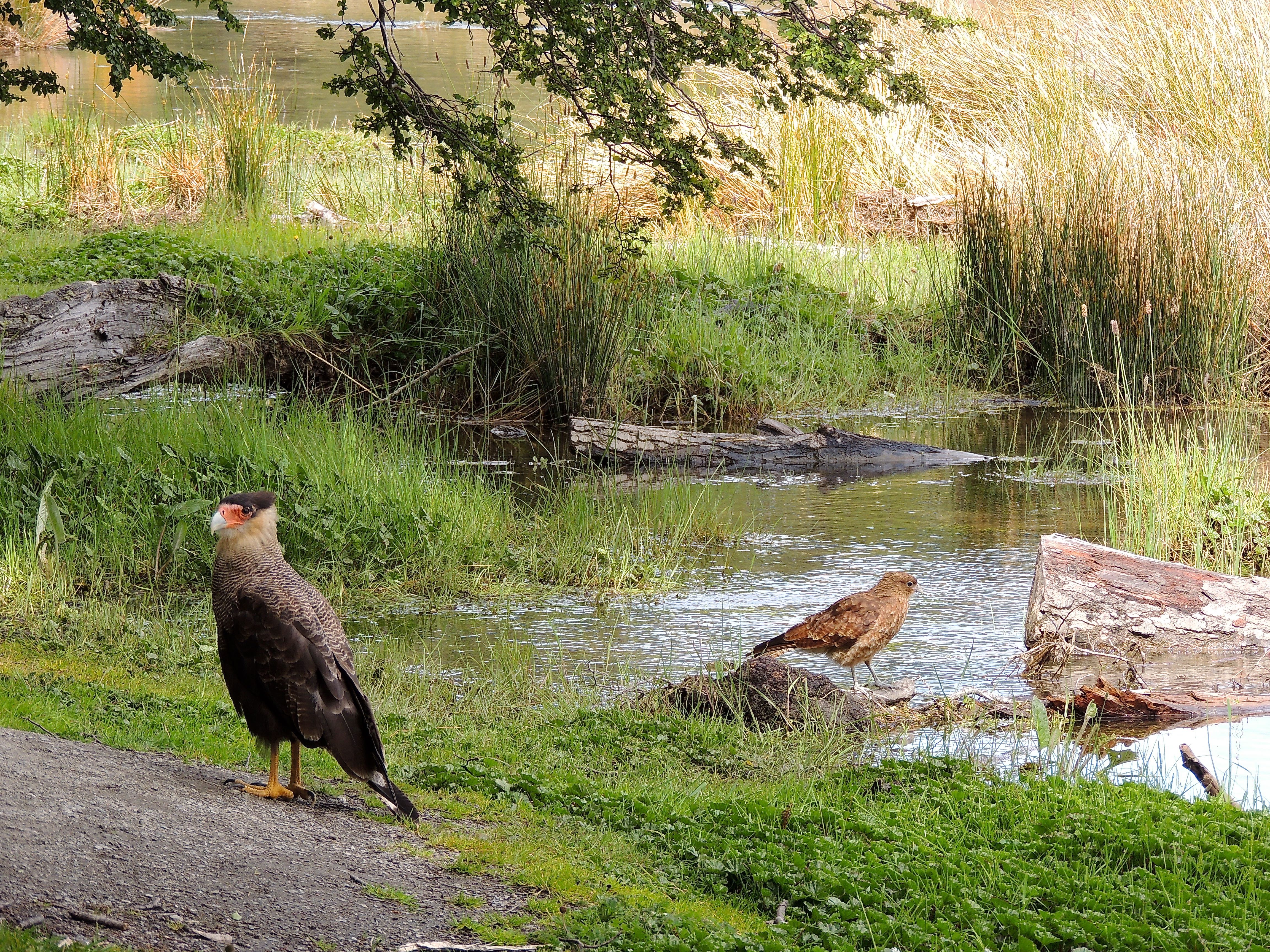 Southern and Chimango Caracaras - Photo by William Young
Southern and Chimango Caracaras - Photo by William Young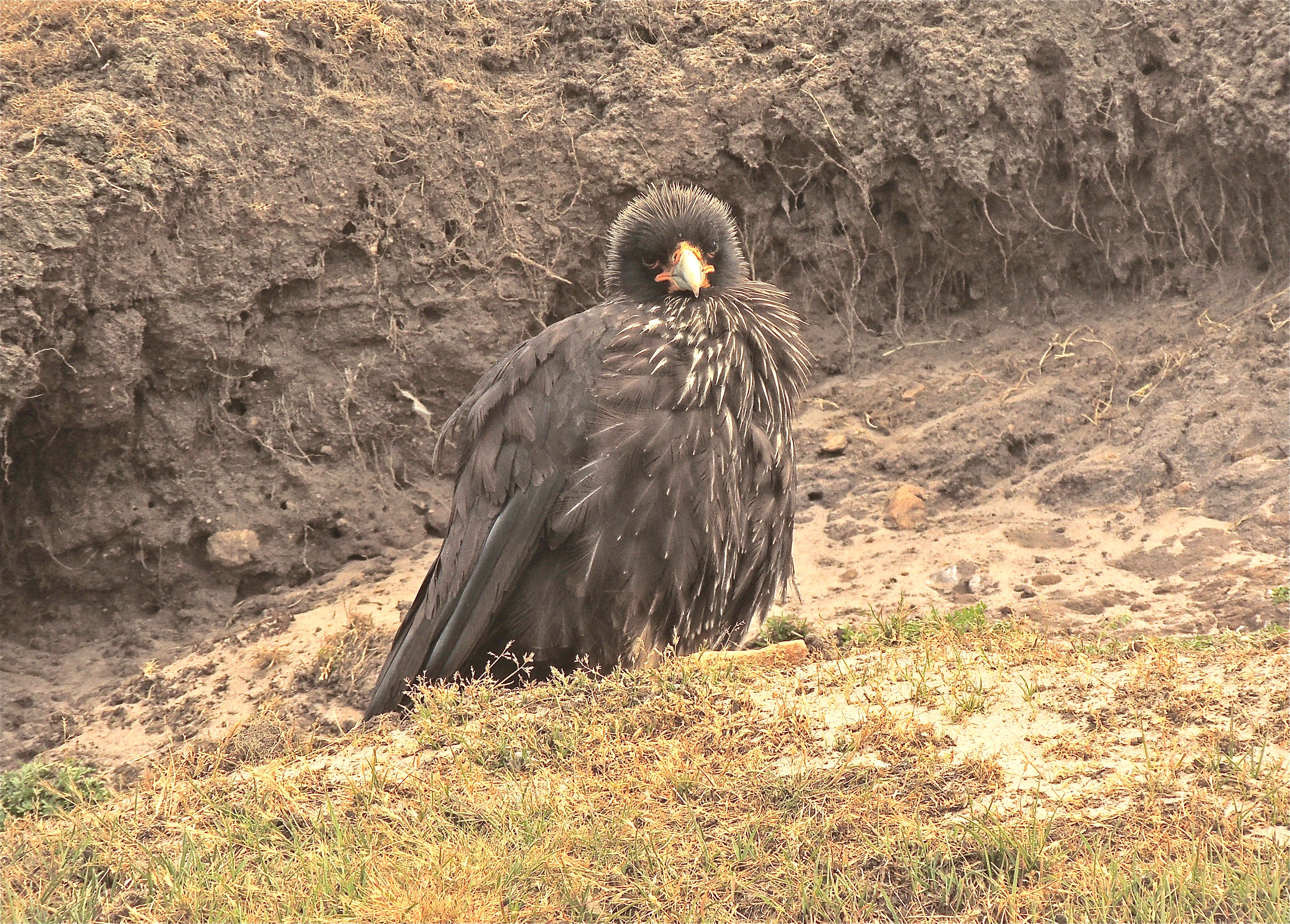 Striated Caracara - Photo by William Young
Striated Caracara - Photo by William Young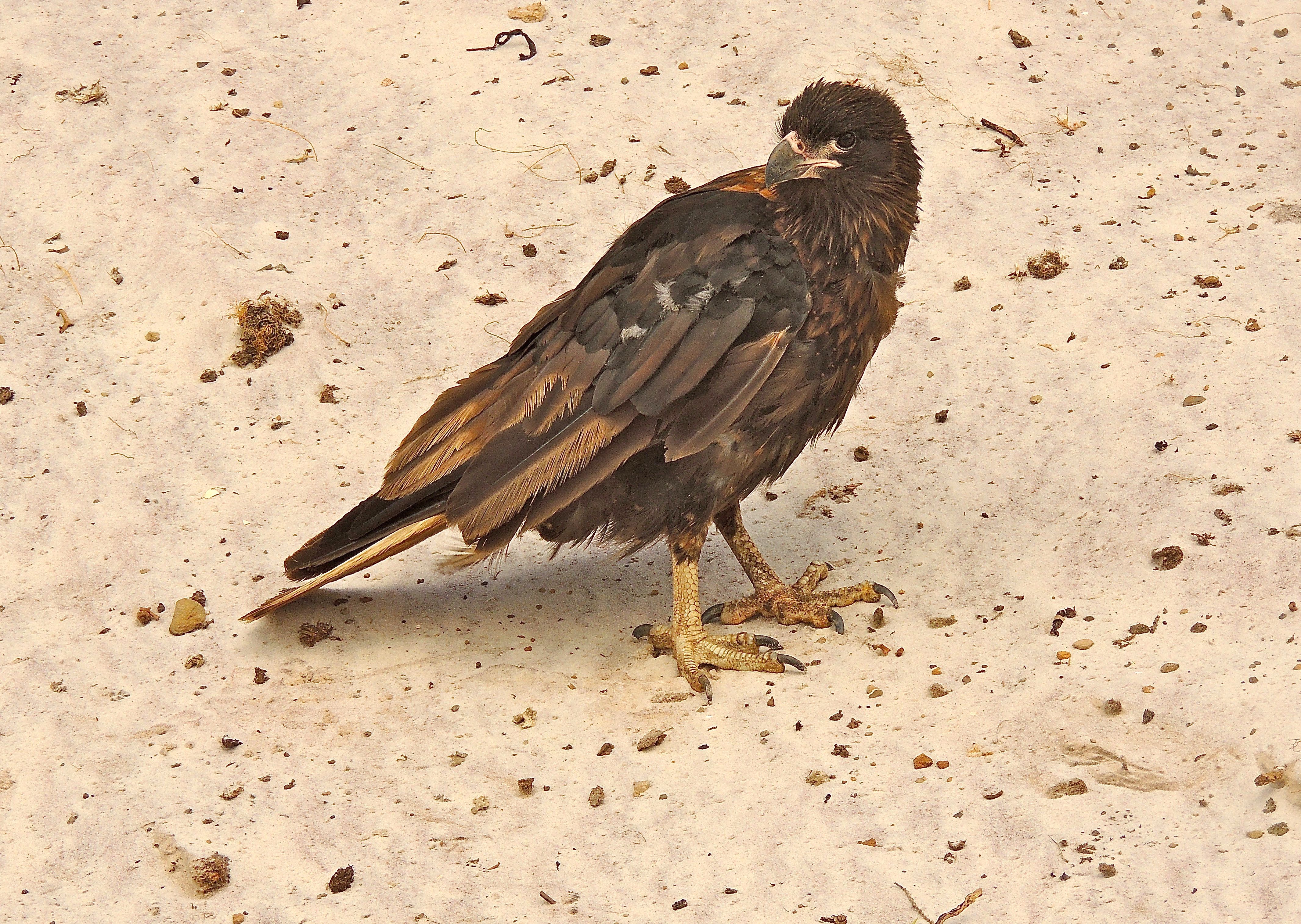 Striated Caracara - Photo by William Young
Striated Caracara - Photo by William Young
KingfishersI had nice looks at a Green Kingfisher at Otamendi. Some people in our group saw a Ringed Kingfisher at the waterfront in Ushuaia, but I did not.
ParrotsAt the park in Tierra del Fuego, we heard the shrieking of Austral Parakeets, but we never saw them. In Buenos Aires, there are a lot of Monk Parakeets, whom I had seen previously as an introduced species in North America, but never in their native habitat. We saw some trees that contained colonies with huge Monk Parakeet nests. The nests look almost as large as an eagle nest and seem to be made of dark brown vegetation. The birds have a grayish head and a green body. On the bus not far out of Buenos Aires, I saw a flock of Nanday Parakeets fly by. I identified them from their black faces. Emiliano said there are a lot in Buenos Aires, but none in the Otamendi Reserve where we were going.
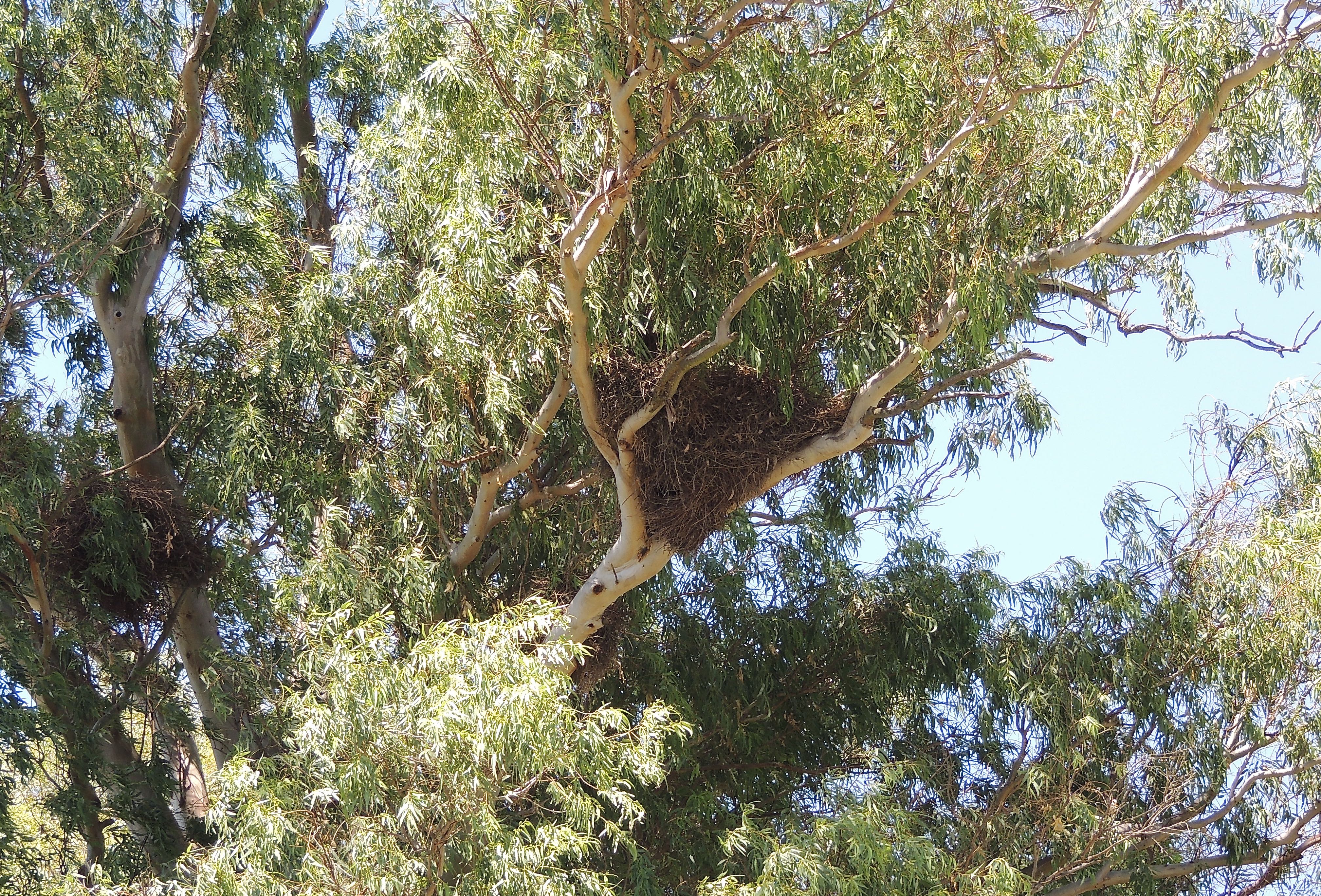 Monk Parakeet Nests - Photo by William Young
Monk Parakeet Nests - Photo by William Young
OvenbirdsRufous Horneros were common around Buenos Aires. They are rufous above and white below. I saw them hopping around on lawns. They seem to be busy birds and can be quite vocal. One sees their clay oven nests on top of many utility poles. They make a new nest every year, whether they need one or not. Sometimes, they will build a new nest on top of an old one. Other birds use the nests in subsequent years. At our Otamendi lunch site, we saw a hornero nest that had a young Screaming Cowbird at the entrance.
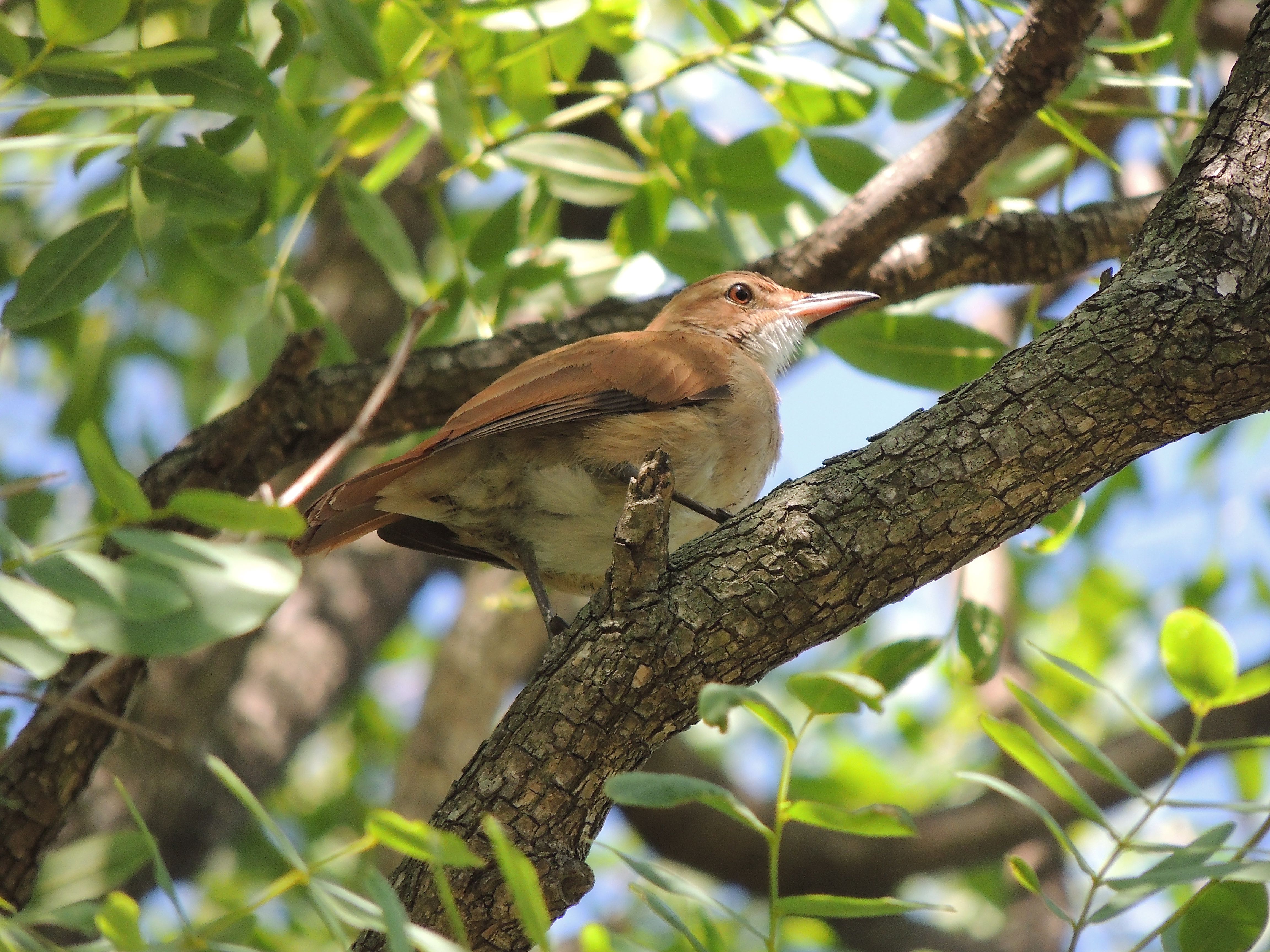 Rufous Hornero - Photo by William Young
Rufous Hornero - Photo by William Young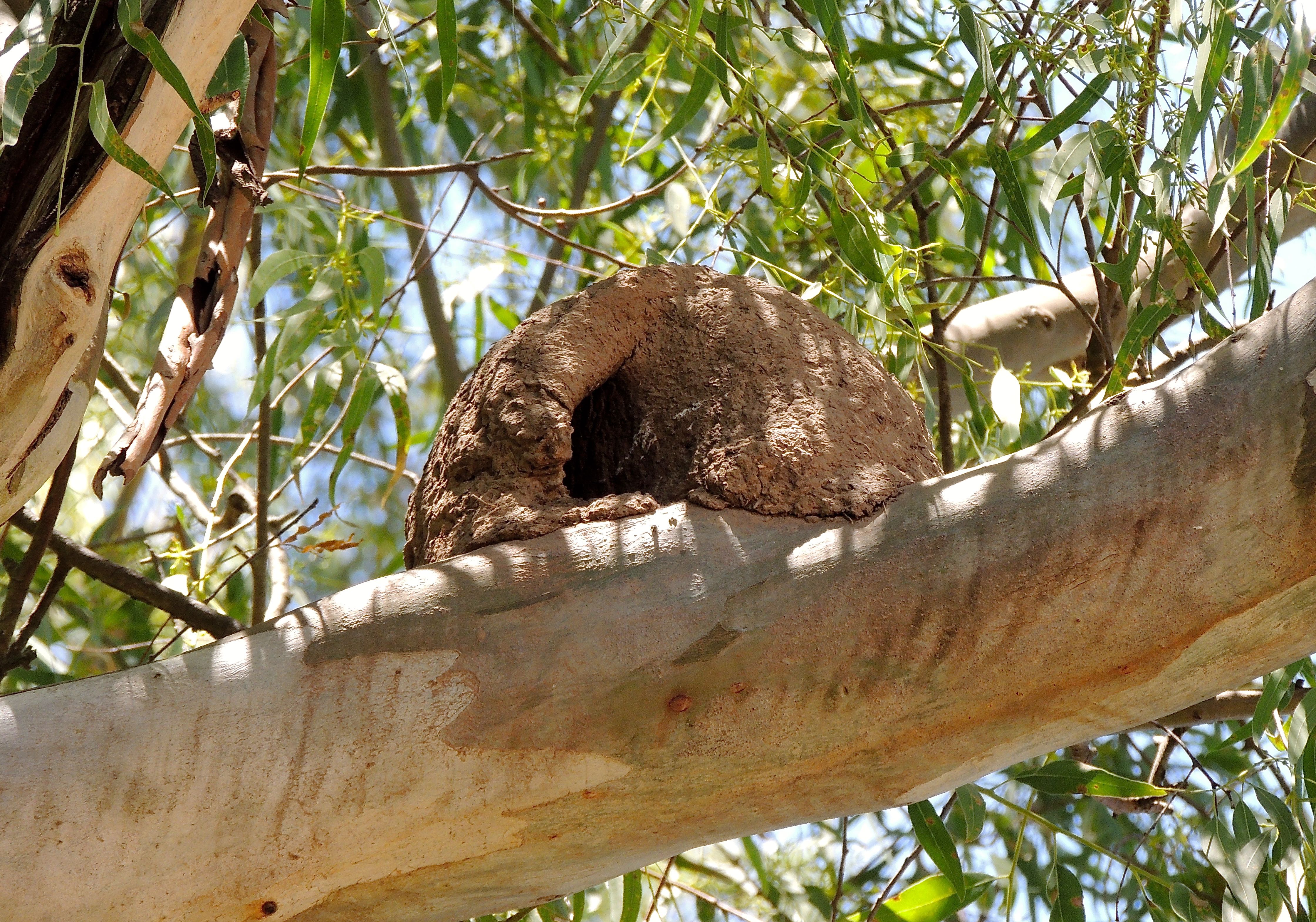 Rufous Hornero Nest- Photo by William Young
Rufous Hornero Nest- Photo by William YoungAt Otamendi, I had a nice look at a Freckle-breasted Thornbird sitting on a reed. It is a brownish bird with a white throat and a longish tail. In the same area, we saw a Curve-billed Reedhaunter. As with a lot of the ovenbirds, it is another small brown bird. Its bill is slightly curved. We heard a Straight-billed Reedhaunter, but I never saw it. We had close looks at a Sooty-fronted Spinetail, a very small bird with a rufous cap, black throat, and a long spiny tail which it sometimes cocked. The day before at South Beach, we had a close look at a Narrow-billed Woodcreeper. The bird was low on a tree no more than five feet from my face. It was very vocal and loud.
We saw more ovenbirds after flying to Ushuaia. Near the lodge, we saw a number of Thorn-tailed Rayaditos. They are tiny, with a wide black stripe above the eye, a black crown, and a broad rufous stripe in between. They also have two rufous patches on their black wings. They behave like Bushtits and often hang upside down. One was hopping in a tree not far from our heads, and I could see the long shafts that extended beyond the tail feathers. They use these to anchor themselves as they creep along branches. At the park in Tierra del Fuego, we saw a Dark-bellied Cinclodes actively feeding on the beach at very close range. We saw another one the following day at Ushuaia feeding on the rocks by the water. Around the bend from there, we saw a Gray-flanked Cinclodes, who was feeding on the shore of a narrow inlet on the other side of the path. It appeared to be not all that different in plumage from the Dark-bellied. At Tierra del Fuego, I saw a Blackish Cinclodes fly to an island where the Blackish Oystercatchers were. It looked like an all dark bird, and I did not see any striking fieldmarks.
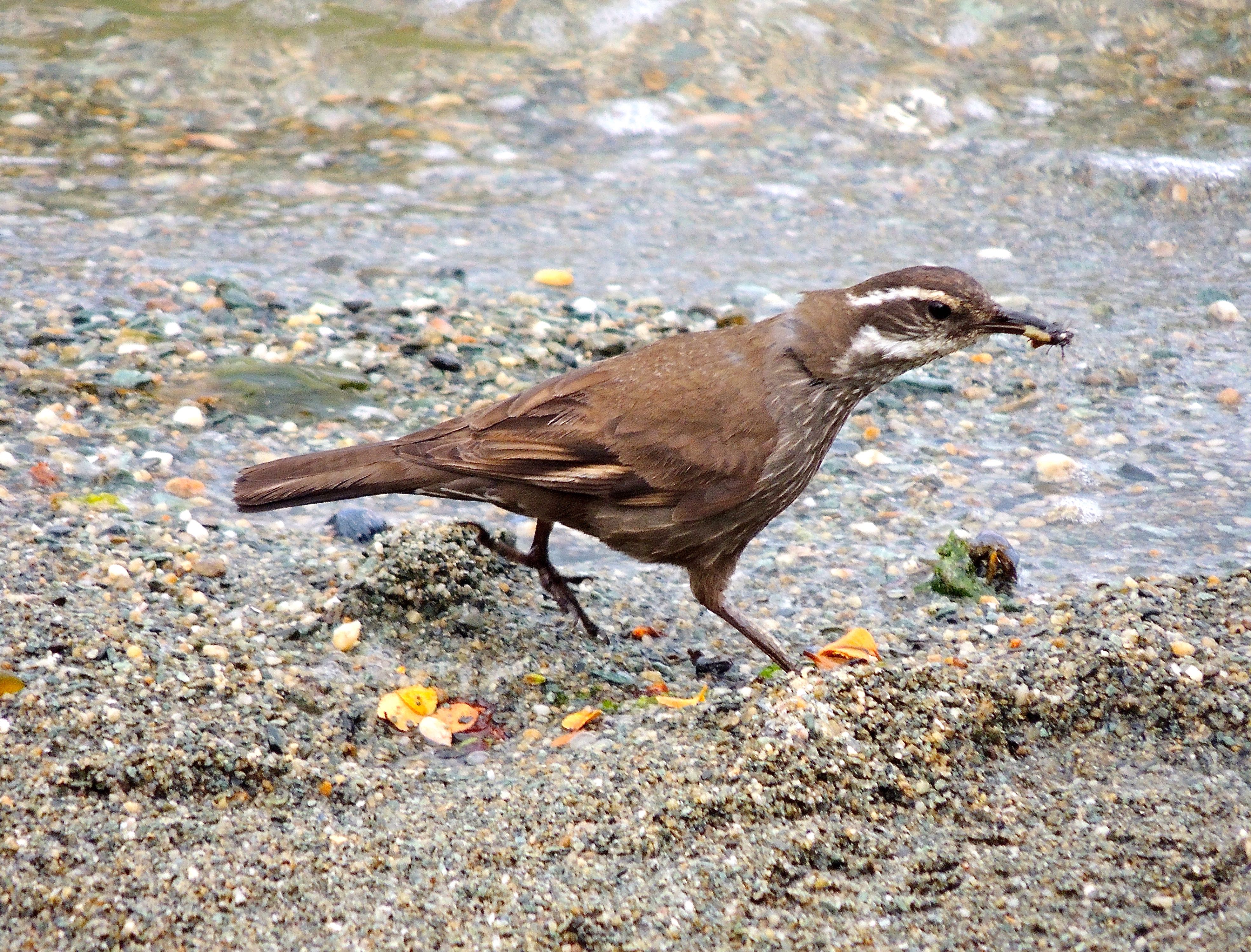 Dark-bellied Cinclodes - Photo by William Young
Dark-bellied Cinclodes - Photo by William Young
Tyrant FlycatchersA lot of Great Kiskadees were in the parks we visited in Buenos Aires. It was surprising to find a Lesser Kiskadee among them at South Beach. It was only the third record for this species at the park. At first, some people thought it might be a Social Flycatcher. Tropical Kingbirds were also fairly common. At Otamendi, we found a family of Fork-tailed Flycatchers with young. Michael and I also saw one flying under the eaves when we were in the Buenos Aires airport on the final day of the trip. For all of the other Buenos Aires flycatcher species, I saw either one or two. At South Beach, I saw a Bran-colored Flycatcher, who is small and has a brown cap and black wings with wingbars. We also saw a Streaked Flycatcher, who is much larger and heavily streaked below. In the same area as the Lesser Kiskadee was a Black-backed Water-Tyrant, who looks a bit like a Pied Water-Tyrant, the species from whom it was split.
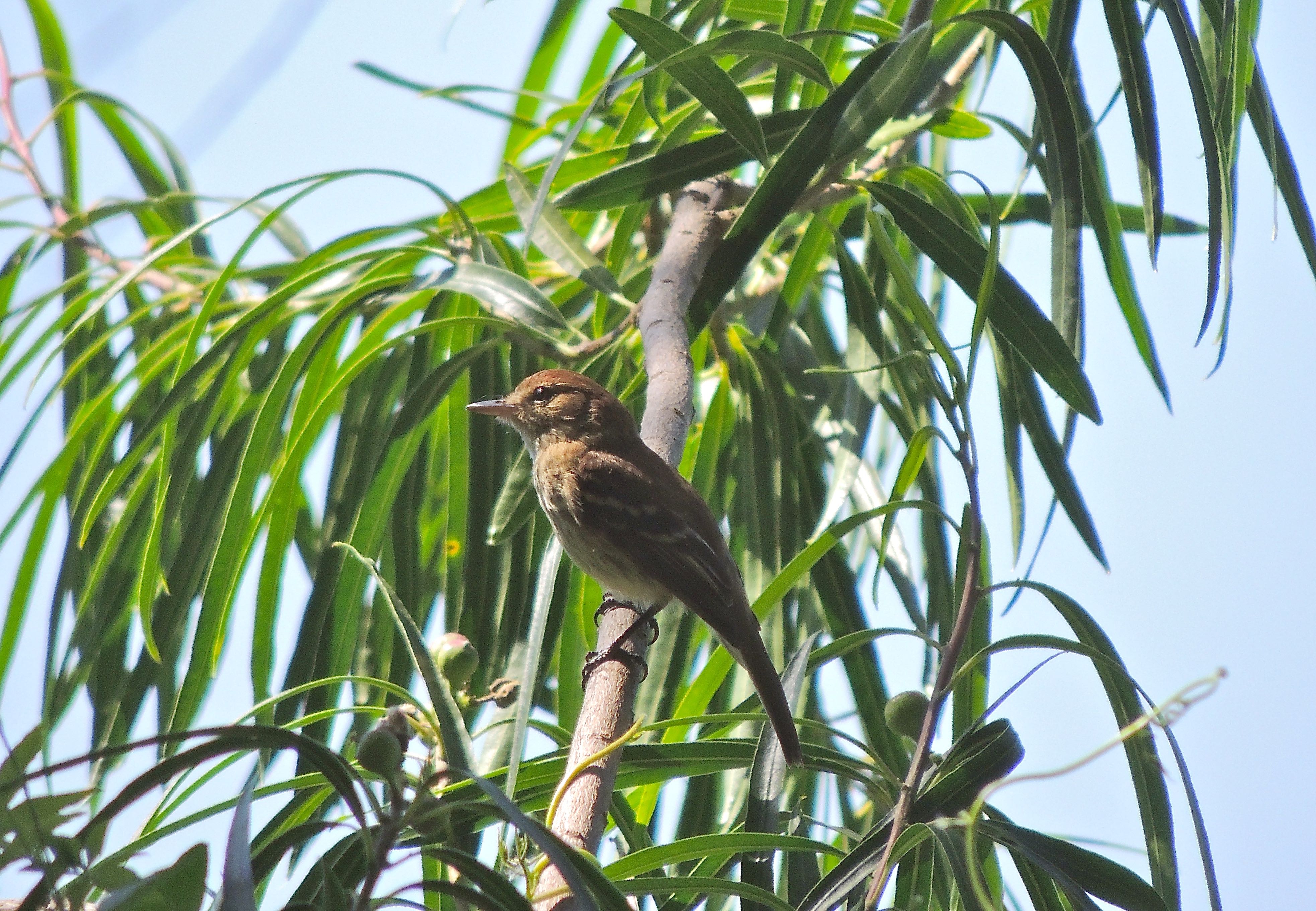 Bran-colored Flycatcher - Photo by William Young
Bran-colored Flycatcher - Photo by William YoungThe next day at Otamendi, we saw a Sooty Tyrannulet, who is a small gray bird with dark wings. Later in the day, we saw a White-crested Tyrannulet, who has wingbars. The slightly larger Small-billed Elaenia has yellow at the base of the bill. The Blue-billed Black Tyrant is an all dark bird with a light-colored bill — I had a brief look at one who flew into the top part of a tree. I had a longer look at a Spectacled Tyrant, an all dark bird with a large light eyering. Near where we ate lunch was a Cattle Tyrant, who somewhat resembles a slightly washed out Tropical Kingbird walking on the ground.
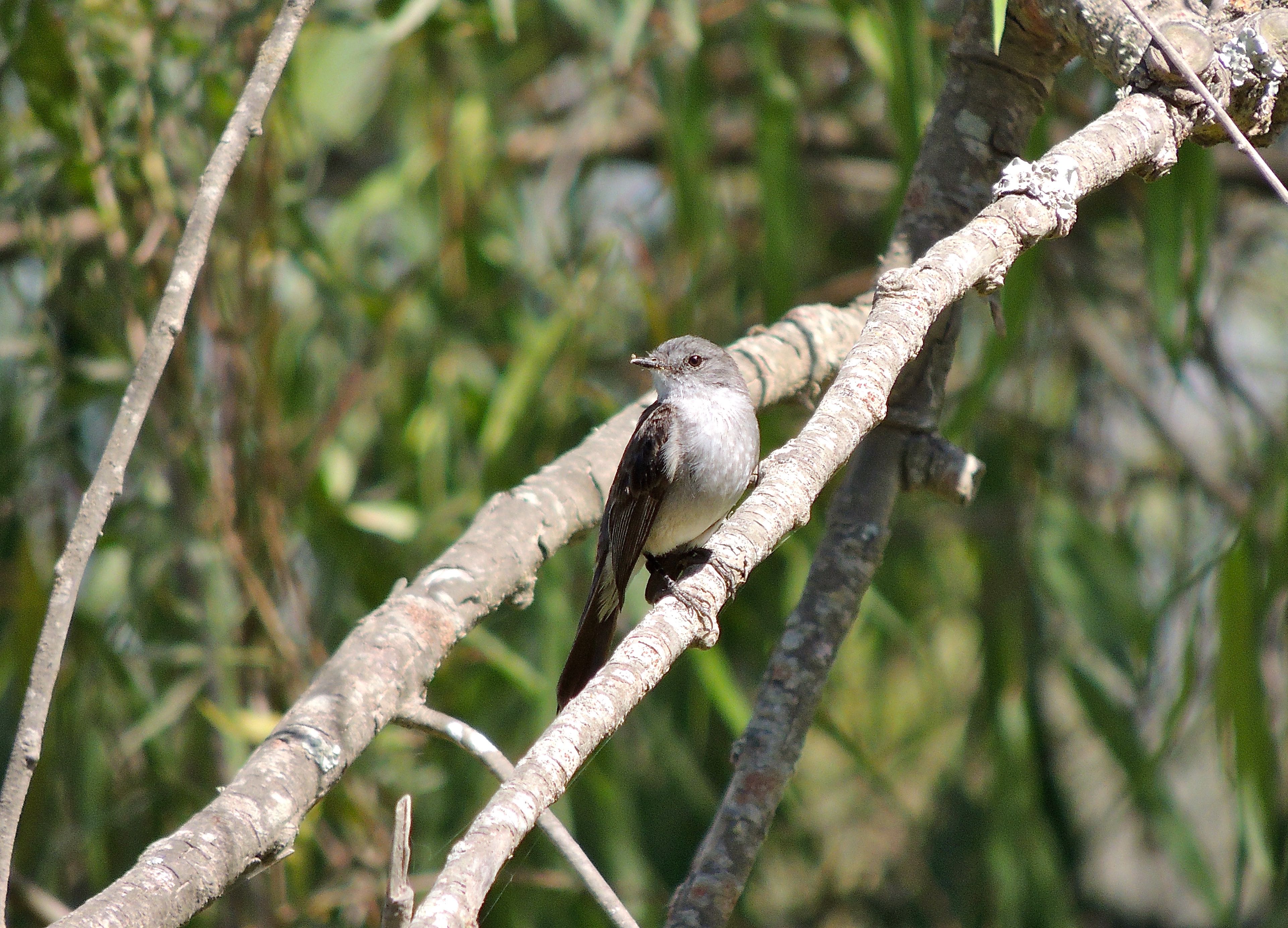 Sooty Tyrannulet - Photo by William Young
Sooty Tyrannulet - Photo by William YoungThere were not as many flycatchers around Ushuaia. The White-crested Elaenia was common on the grounds of our lodge. They were plentiful and vocal, and occasionally I saw the erected white crest when one sang. In the park at Tierra del Fuego, I spotted a male Austral Negrito, a small round black bird with chestnut wings. There was a female nearby whom I never saw, but I saw one at Ushuaia the following day. The female is a duller version of the male. From the bus, some of us saw a Fire-eyed Diucon perched on a bush. It is a mid-sized gray-and-white bird with a bright red eye. Michael took a walk into the woods from the area where we had lunch at Tierra del Fuego and found a group of Tufted Tit-Tyrants. He was not able to relocate them when he brought the entire group in, but we heard them. The only flycatchers we saw after leaving Ushuaia were two Dark-faced Ground-Tyrants on Saunders Island. They are sparrow-sized gray-and-white birds with slightly darkened faces.
SwallowsThe first and possibly last species I saw in Buenos Aires was the Gray-breasted Martin. They were flying around the area at the airport where people arrive and depart from planes. They are large and a bit dingy. When I saw them flying around on the night we were leaving, they were backlit and looked all dark. At Otamendi, we saw a lot of Brown-chested Martins. Rather than having a smudge across the breast, the mark is a little cleaner and more separated from the throat than on the Gray-breasted. A lot of times, this could be difficult to see on a flying bird. We saw Southern Martins at both South Beach and Otamendi, and their plumage is all dark. At South Beach, we saw both Blue-and-white Swallows and White-rumped Swallows, who look similar except that the Blue-and-white does not have a white rump. Both have blue backs. The Chilean Swallow was the only swallow we saw in Ushuaia. Near the lodge, we observed a pair flying back and forth to a nest hole. They have a white rump and look very much like a Chilean Swallow. Quite a few were flying around.
WrensThe only wren we saw was a race of the House Wren, the same species we have in North America. A lot of them were around our lodge in Ushuaia. We also encountered quite a few at South Beach.
ThrushesAustral Thrushes were near the lodge in Ushuaia. They are in the genus Turdus and look like washed-out American Robins. A young one had speckling on its breast. At both South Beach and Otamendi, we saw a lot of Rufous-bellied Thrushes, another Turdus thrush. It looks like a less washed-out American Robin, with the rufous beginning on the belly rather than the breast, which is gray. There were a few Creamy-bellied Thrushes at Otamendi. They were less confiding that the Rufous-bellied. They were in branches of low trees, and some vocalized. They are about the size of an American Robin, but are dull brown with a whitish belly.
PipitsThe South Georgia Pipit breeds farther south than any songbird in the world. We saw this endemic at Salisbury Plain, including one at close range in tussock grass. It has white outer tail coverts, but it is streaky, plump, and short-tailed. Ten years ago, finding one was difficult, but because of a concerted and expensive effort to eradicate rats, the pipit is doing better now.
Tanagers and relativesAt South Beach, we saw Red-crested Cardinals who are gray and white, with red on the breast like a Rose-breasted Grosbeak. The red head has a pronounced crest. The Yellow-billed Cardinal looks similar, except that it has a much yellower bill and no crest. That day, we saw a couple of Golden-billed Saltators, who are larger than the cardinals. To my eye, the bill looked more red than golden. The back is dark, and the bird has a big white crescent around its face. It has feathering on the back of the head that looks like the crest on a Crested Duck when not erected. Nearby, we saw some Double-collared Seedeaters. They are gray-and-white birds with a broad black breastband and a black chin separated by a thin white line. I had trouble seeing a second collar, unless the black under the chin counts as one. The large bill was yellowish. A Black-and-rufous Warbling-Finch sang in a wetland area while perched on a reed. It has a white eyeline and mustache stripe, a slate gray back, and rufous underparts.
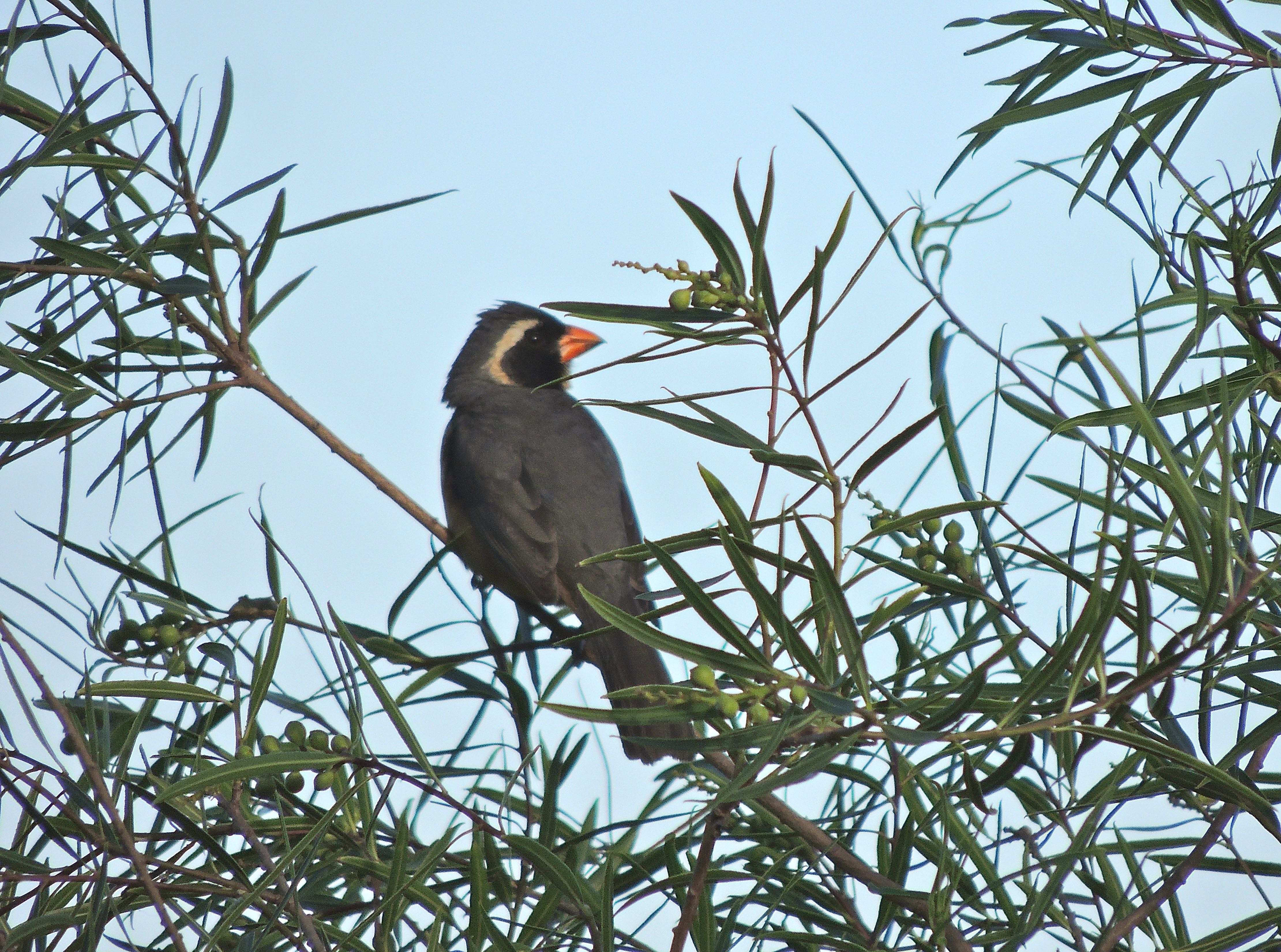 Golden-billed Saltator - Photo by William Young
Golden-billed Saltator - Photo by William Young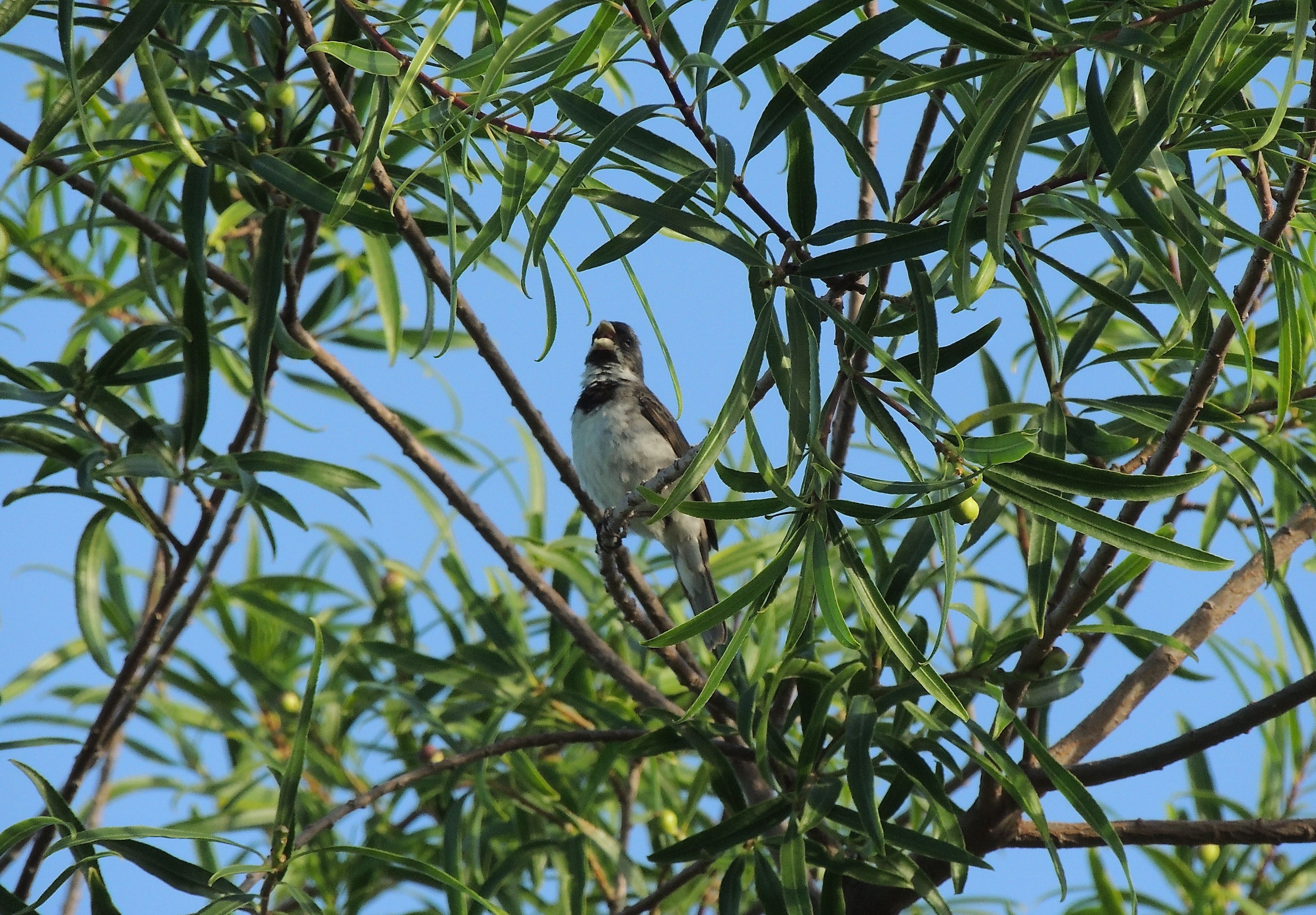 Double-collared Seedeater - Photo by William Young
Double-collared Seedeater - Photo by William Young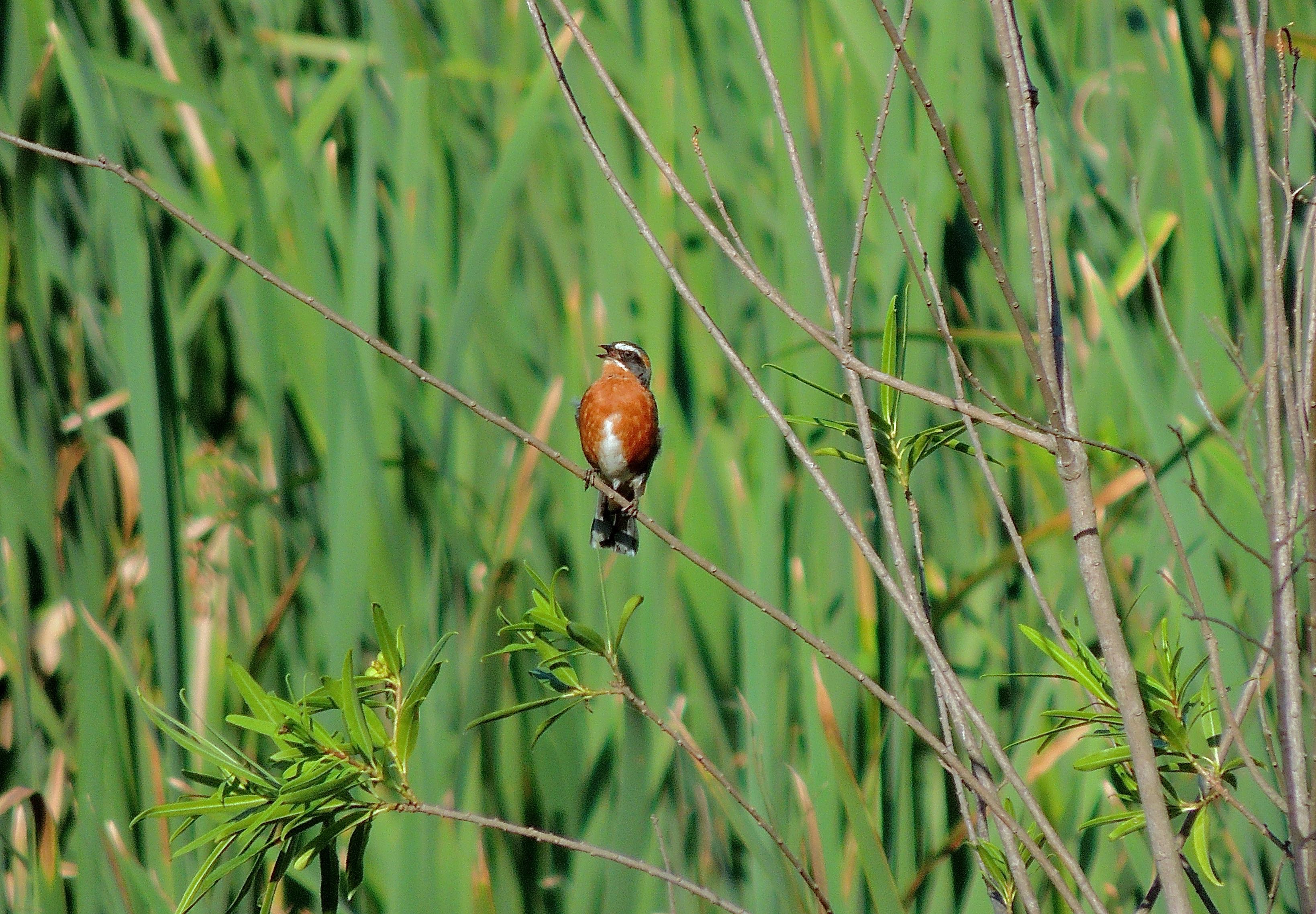 Black-and-rufous Warbling-Finch - Photo by William Young
Black-and-rufous Warbling-Finch - Photo by William YoungThe following day at Otamendi, we saw Long-tailed Reed Finches. They are brown birds with a gray cap and a white eyeline. They sat on swaying reeds and have a longish tail. We also saw Great Pampa-Finches, who have a gray head, an olive back, a black face, and an orange bill. At our lunch site, Saffron Finches were in the trees. They are all yellow, but I had trouble seeing red on the face of the males. In the morning, we found a tree with a number of tanagers. There was a pair of Sayaca Tanager, who look like Blue-gray Tanagers. Sayaca is a Tupi Indian word meaning "very lively". We also saw a Diademed Tanager, who looked dark. In Ushuaia, we saw a Patagonian Sierra-Finch. Quite a few were around the lodge. They are chunky yellow-and-gray birds, and they were singing and actively feeding.
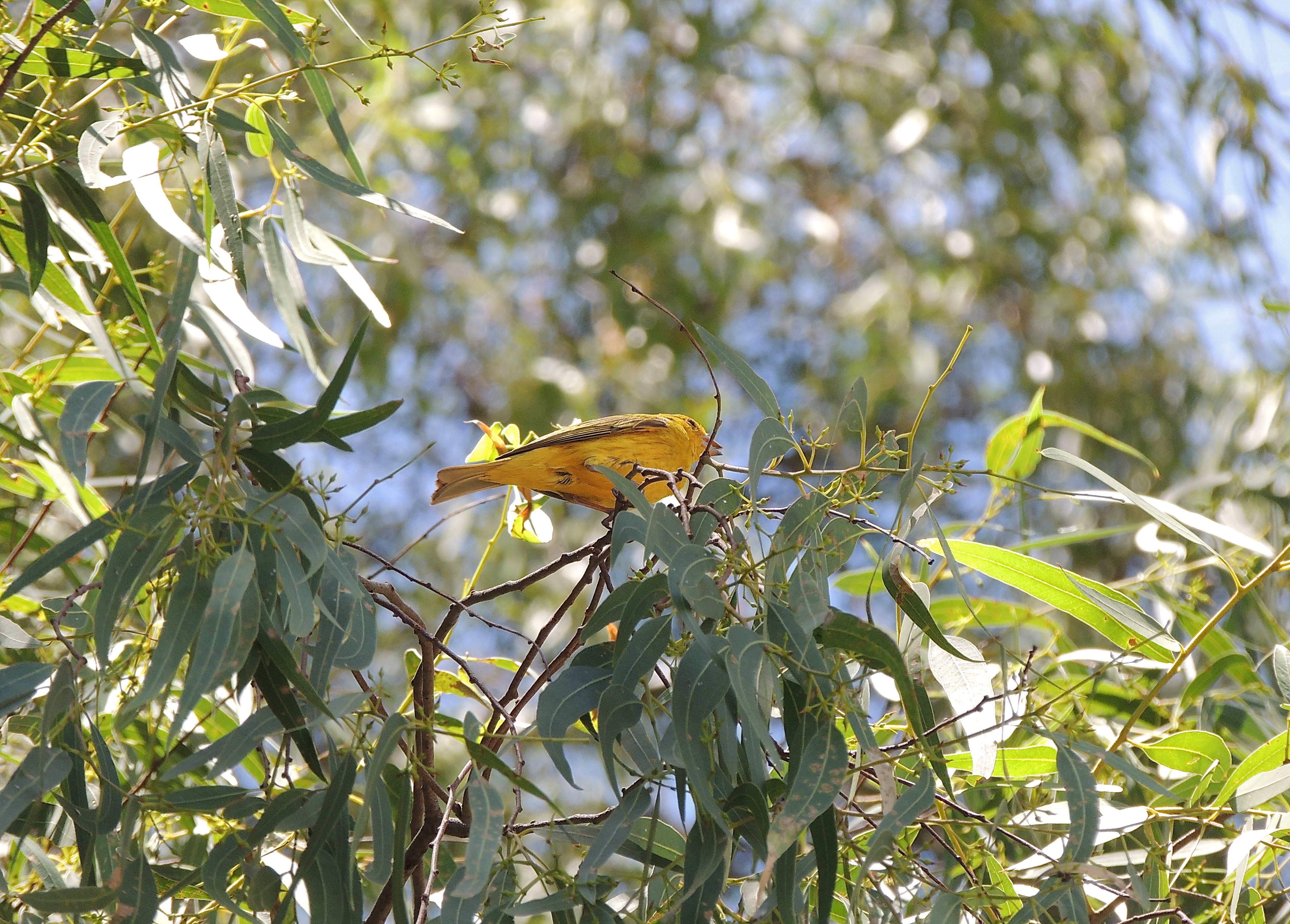 Saffron Finch - Photo by William Young
Saffron Finch - Photo by William Young
New World SparrowsThe only New World Sparrow we saw was the Rufous-collared, which is widespread throughout South America. There were so many that I filtered them out while looking for other species. Their drink your tea song was a soundtrack for our visit to Otamendi.
BlackbirdsNear the water in Ushuaia, we saw a pair of Long-tailed Meadowlarks. The female was sitting in some lupines. She is brown and streaky, with a white eyestripe and throat. She has mottling on her feathers and looks a bit like a female Red-winged Blackbird. The male, who was perched in some nearby flowers, has a red breast and white eyestripe. This was on the day we were stuck in port because of the high winds, so the male appeared to be trying to hang on.
We saw a lot of blackbird species in Buenos Aires. At Otamendi, we saw a Scarlet-headed Blackbird, a beautiful bird who looks a bit like a Yellow-headed Blackbird with a bright scarlet hood. We also saw some Yellow-winged Blackbirds, who look like a Red-winged Blackbird with yellow instead of red. There is a condition called xanthochroism in which birds have yellow feathers instead of their normal red plumage. I think this is caused by the diet of the birds, and the line of demarcation between red feathers and yellow ones does not seem to be very strong. We saw three species of cowbirds. The Shiny Cowbird appeared to be larger than the Brown-headed, and its plumage was entirely glossy purple like a Common Grackle. We saw some on each of our two days in Buenos Aires, and Michael and I saw one outside the window on the asphalt at the airport in Buenos Aires before our flights home. At the lunch site on our day at Otamendi, we saw a Screaming Cowbird, which was one of my favorite bird names of the trip. It is all dark, and it looked larger and less glossy than the Shiny Cowbirds with whom it was foraging. We saw a young Screaming Cowbird in front of a Rufous Hornero nest. The Grayish Baywing, which used to be called the Bay-winged Cowbird or simply the Baywing, is a grayish-brown bird with bay-colored wings. We saw a couple on each of our days in Buenos Aires. At Otamendi, we saw a Solitary Black Cacique. It is an all dark bird with a white bill. I listened to its wonderful vocalizations, which are a series of croaks, followed by a squeak at the end.
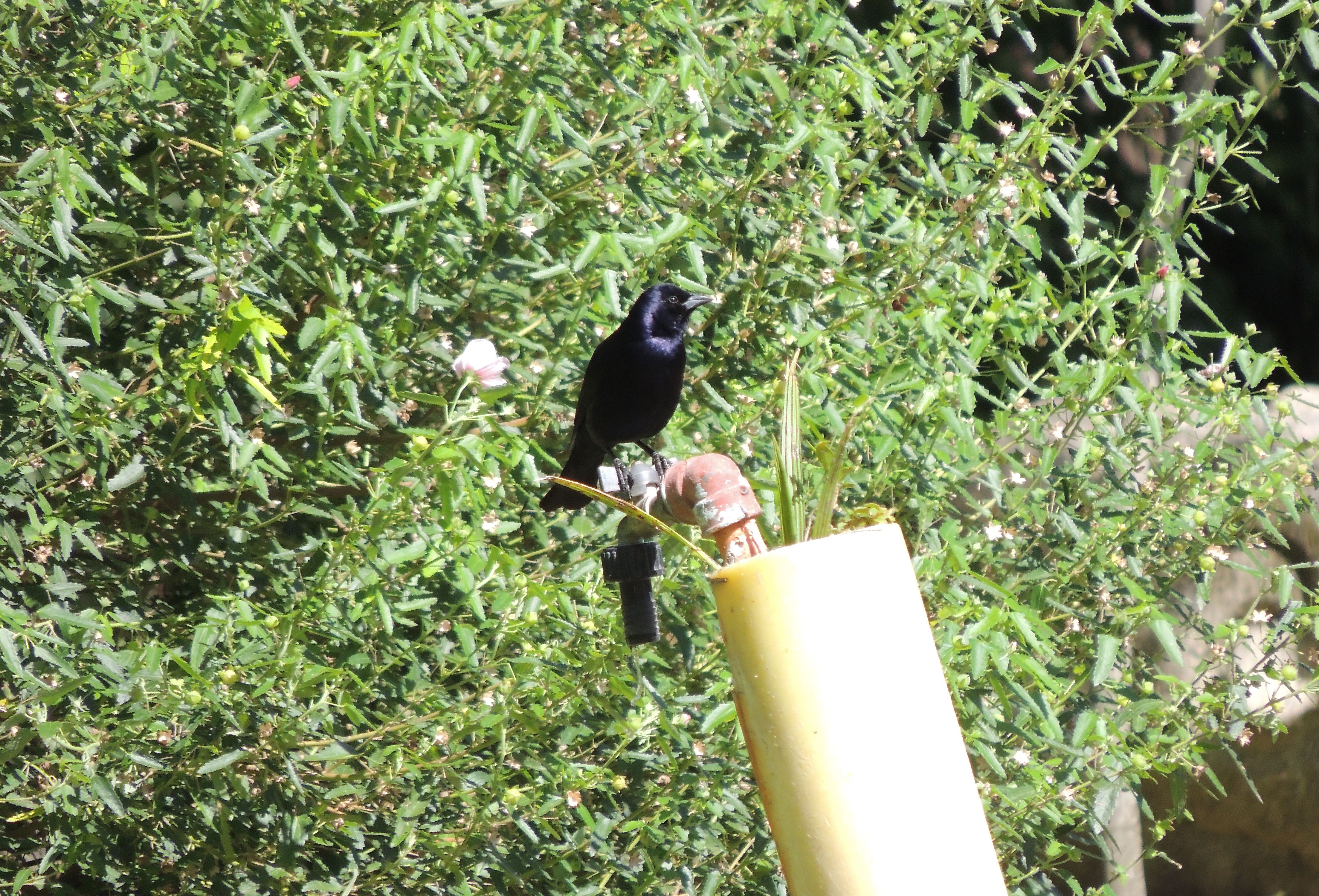 Shiny Cowbird - Photo by William Young
Shiny Cowbird - Photo by William Young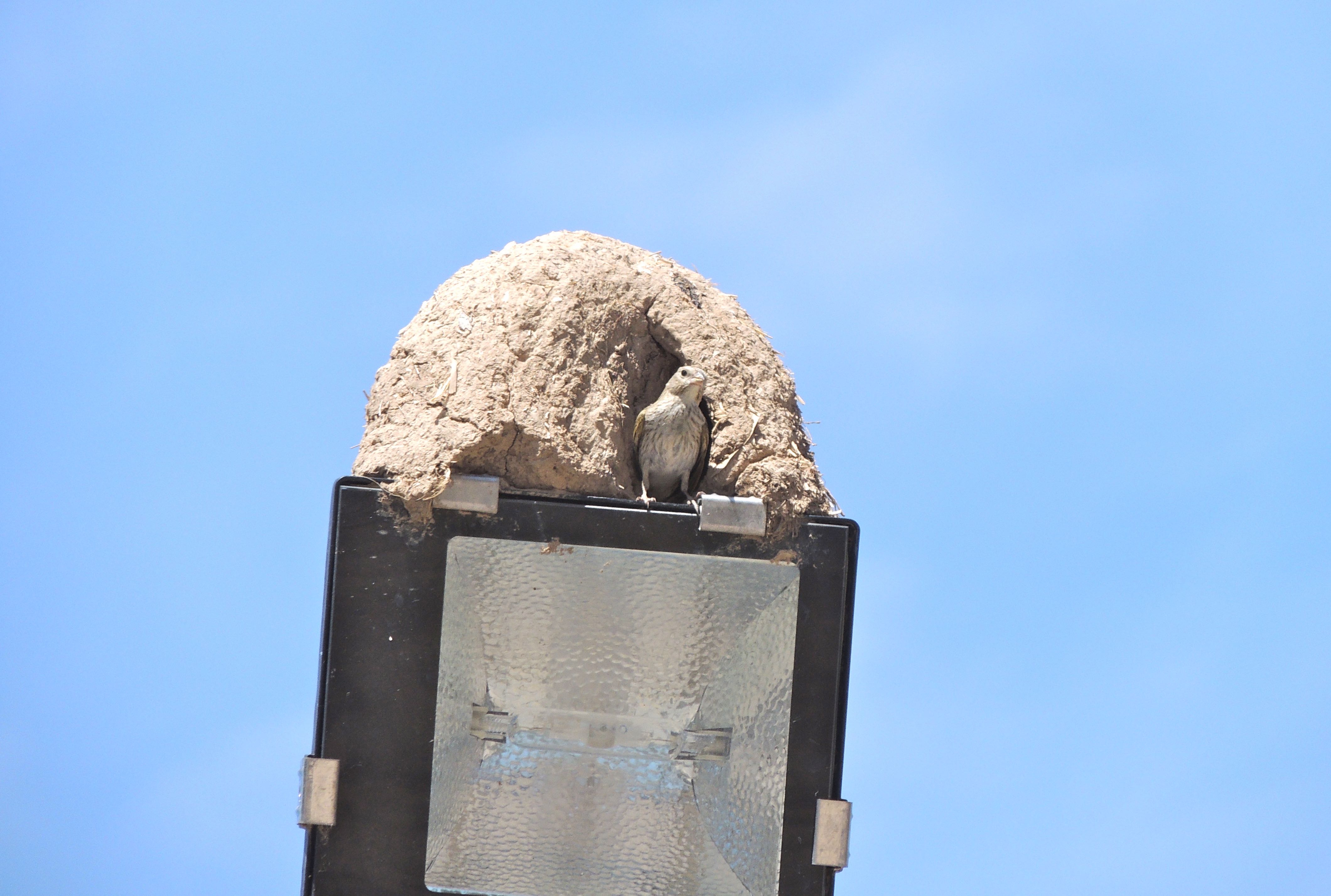 Screaming Cowbird Juvenile at Rufous Hornero Nest - Photo by William Young
Screaming Cowbird Juvenile at Rufous Hornero Nest - Photo by William Young
FinchesAt Otamendi, we saw a couple of Hooded Siskins perched in a tree. Neither was an adult male, so they had no hood. When they fly, they show a wing pattern like a Pine Siskin. We saw some perched Black-chinned Siskins, both in the morning near the lodge in Ushuaia and at the park in Tierra del Fuego. They are chunky birds who look a bit like a Hooded Siskin, but with only a black throat and cap rather than a full black hood.
Old World SparrowsHouse Sparrows were common in Buenos Aires and Ushuaia. They did not appear to be behaving any differently than the ones I saw when I returned home.
BIRD FAMILIES SEEN ONLY IN BUENOS AIRES
ScreamersAt Otamendi, John called out a pair of South American Screamers. They were soaring like vultures and had white on their dark wings. Their heads look like hoses that stretched forward and curved a bit downward. These were the first screamers I have ever seen and were among my favorite birds of the Buenos Aires trip.
StorksWhile we were at the lunch site near Otamendi, John saw some flying Maguari Storks. They have a similar wing pattern to a Wood Stork, but they are larger and have a white rather than a black head. We also saw Wood Storks flying at Otamendi.
IbisesWhite-faced Ibises were fairly common at Otamendi. Emiliano saw a Bare-faced Ibis, and some people saw a Roseate Spoonbill, but I did not see either.
RailsAt South Beach, we saw a few Red-gartered Coots by the water. It is one of my favorite bird names, and I'm glad I was able to see one, although I could not see the red garter — perhaps when we get to know each other better. One was preening on a bank, and I could see the yellow bill and the red mark at the bottom of its white facial shield. In the same area, a bunch of Common Gallinules were swimming. They looked smaller than the coot. As we were walking along a path near the water where all of this other activity occurred, John spotted a Gray-necked Wood Rail. It had a rufous belly and long bright red legs. The next day at Otamendi, we saw a Giant Wood Rail. It was standing in the road and appeared to be the size of a Limpkin. The colors of its plumage were not as vibrant as those of the Gray-necked.
LimpkinWe had nice looks at a Limpkin at relatively close range at the South Beach Reserve. It was vocalizing a lot. We also saw one in a wetland area at Otamendi.
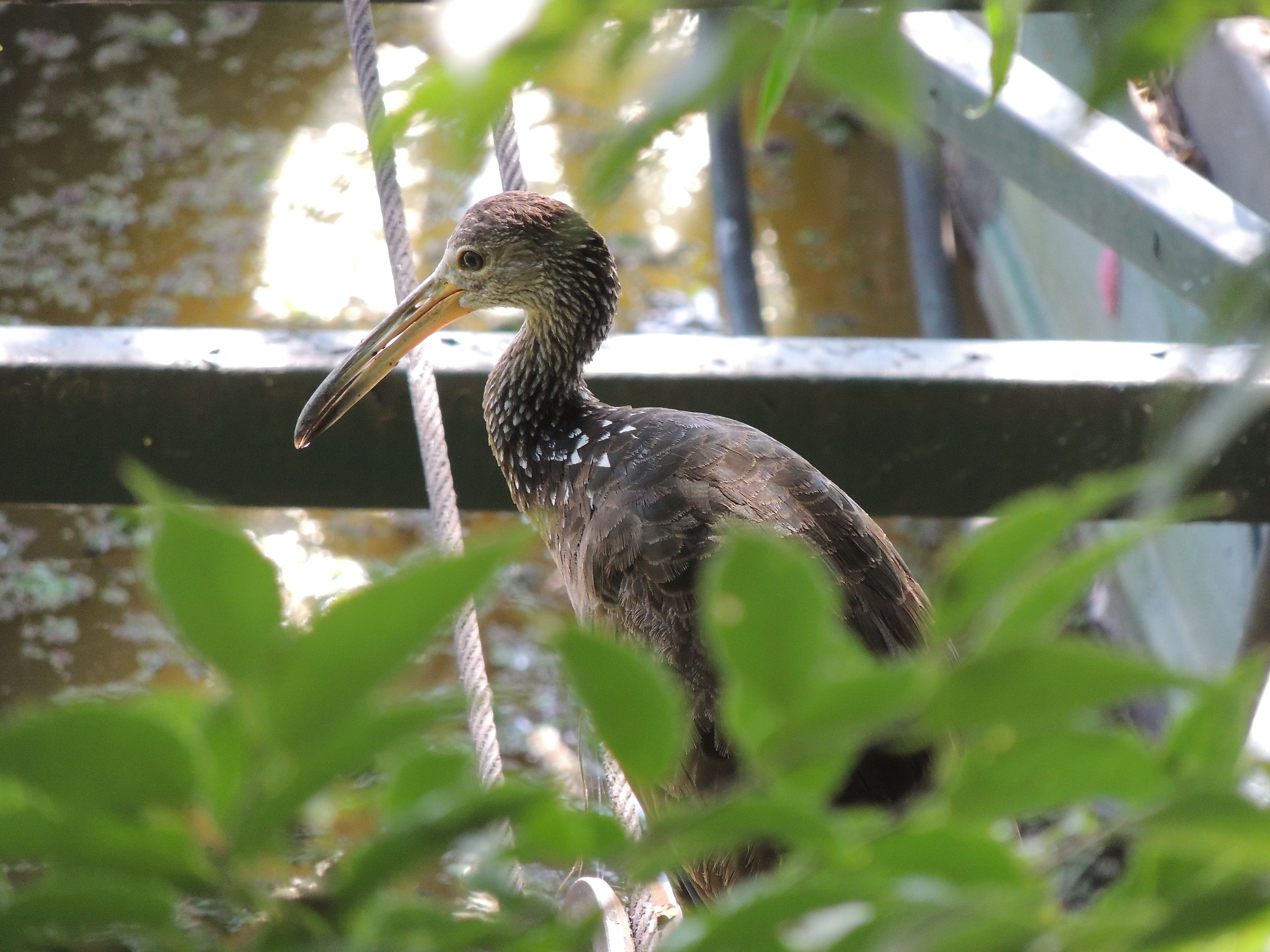 Limpkin - Photo by William Young
Limpkin - Photo by William Young
StiltsOne Black-necked Stilt was in a wetland area at Otamendi. It is the same species as in North America. It was hanging around in the same area with the Whistling Heron and the White-faced Ibises. I saw the bird flying with some of the ibises.
JacanasWhen we arrived at the South Beach Reserve, we almost immediately saw a group of about 20 Wattled Jacanas foraging in vegetation in the water where we also saw Silver and Ringed Teals. The jacanas were black with bright rufous wings and a red facial shield over their yellow bill.
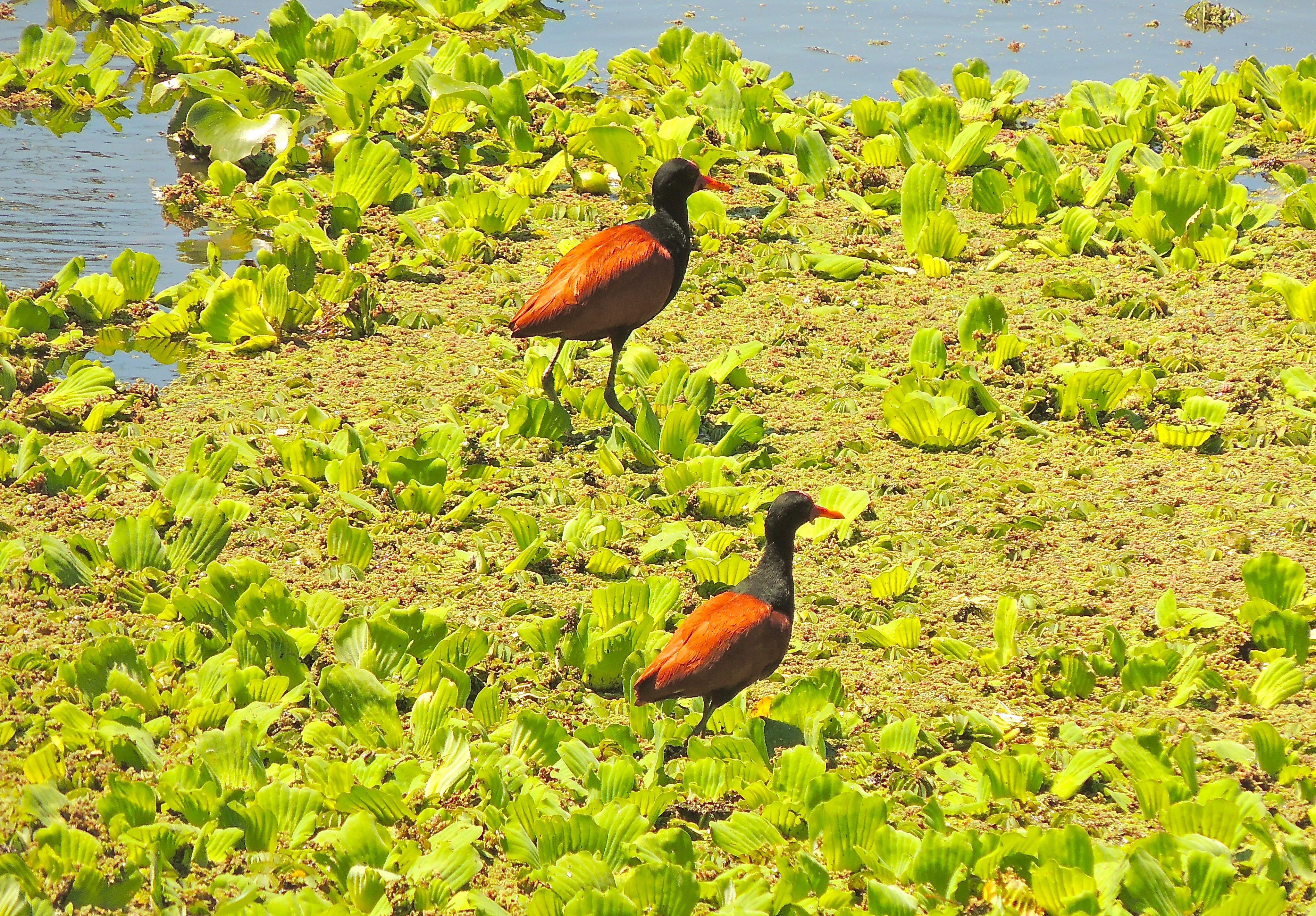 Wattled Jacanas - Photo by William Young
Wattled Jacanas - Photo by William Young
CuckoosAt South Beach, we saw a Guira Cuckoo perched by the water at relatively close range. It was brown and about a foot long, with a red bill. The wings were dark, and the entire body was streaked. It also had a light eye and a crest. Its appearance looked intentionally disheveled. This was another one of my favorite birds in Buenos Aires. I also saw one flying the following day but did not get a good look. At Otamendi, we saw a Dark-billed Cuckoo, which is like our North American cuckoos. It has a tan face with a black eyeline and a black bill. It has white spots on the tail that are larger than the marks on a Black-billed Cuckoo's tail but not as large as those on a Yellow-billed. It most closely resembles a Mangrove Cuckoo.
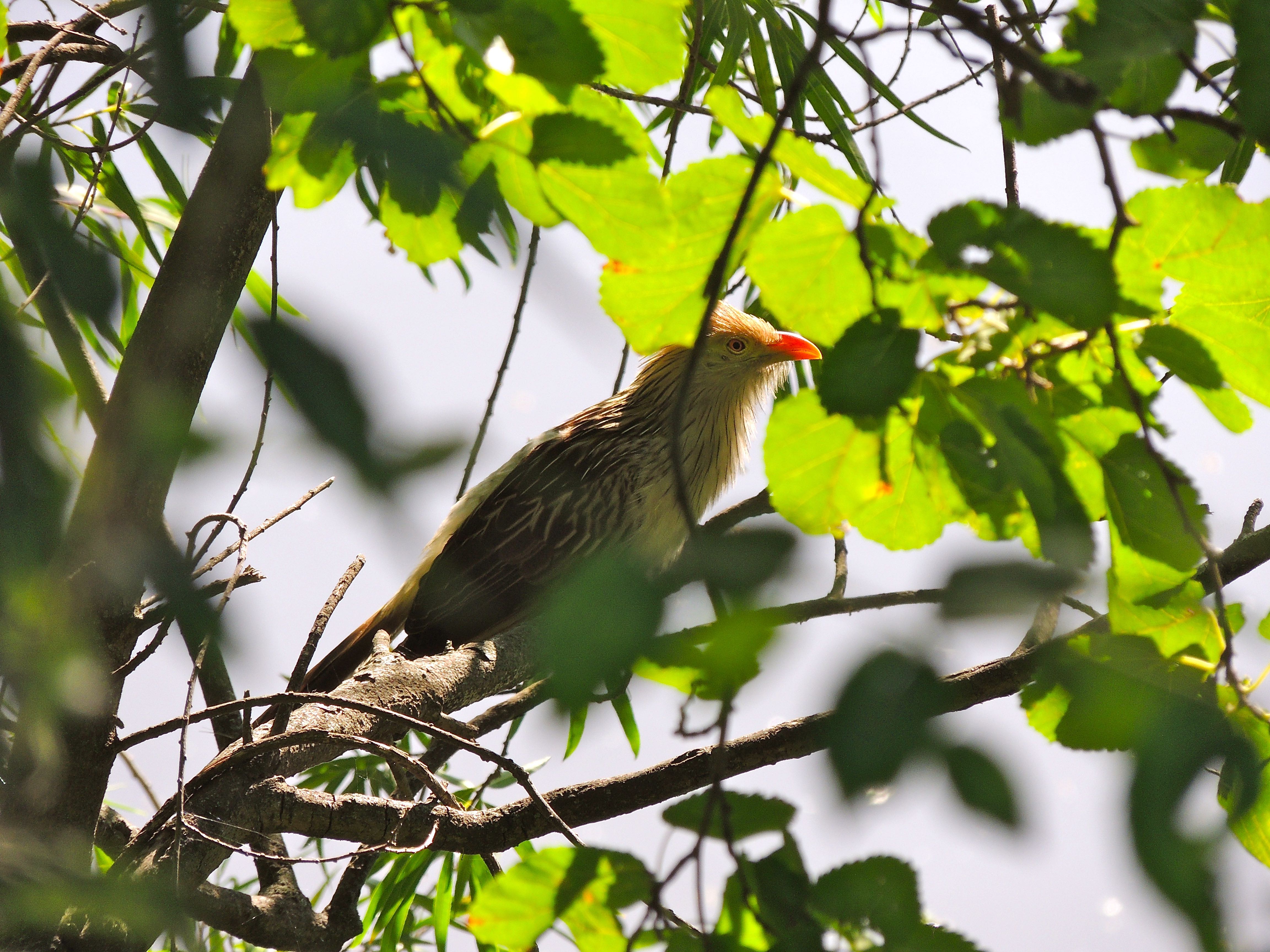 Guira Cuckoo - Photo by William Young
Guira Cuckoo - Photo by William Young
NightjarsJohn found a perched nightjar who was probably a Scissor-tailed. At first, people thought it might be a Little Nightjar or possibly a Band-winged. The bird was probably a female and had no white on the throat.
HummingbirdsWe saw two hummingbird species at Otamendi. The Glittering-bellied Emerald is bright green below with a long red bill. The Gilded Hummingbird has a thicker red bill and is golden brown below. The emerald seemed to be on territory, and we could hear it vocalizing.
WoodpeckersWe saw two woodpecker species at Otamendi. A Green-backed Woodpecker was on territory, and it continually landed in trees in what appeared to be a defined circuit. It is a mid-sized woodpecker with a white face, black eyes, black cap, red nape, and a black back with greenish-yellow barring. A black bar extended from the lower mandible, and the breast appeared to be white with black spots. Earlier in the day, John spotted a Checkered Woodpecker. It is smaller than the Green-backed and has white spots on its black back. The underparts are yellow with black streaks. In Tierra del Fuego, we saw tree damage that appeared to have been made by a Magellanic Woodpecker, who is the size of a Pileated. Our guide knew where one was, but because we were supposed to depart on the ship from Ushuaia at six and were already running late, we did not have time to go to the spot to look. As it turned out, our ship was delayed in port for another 27 hours, so we would have had time to look for the woodpecker had we known.
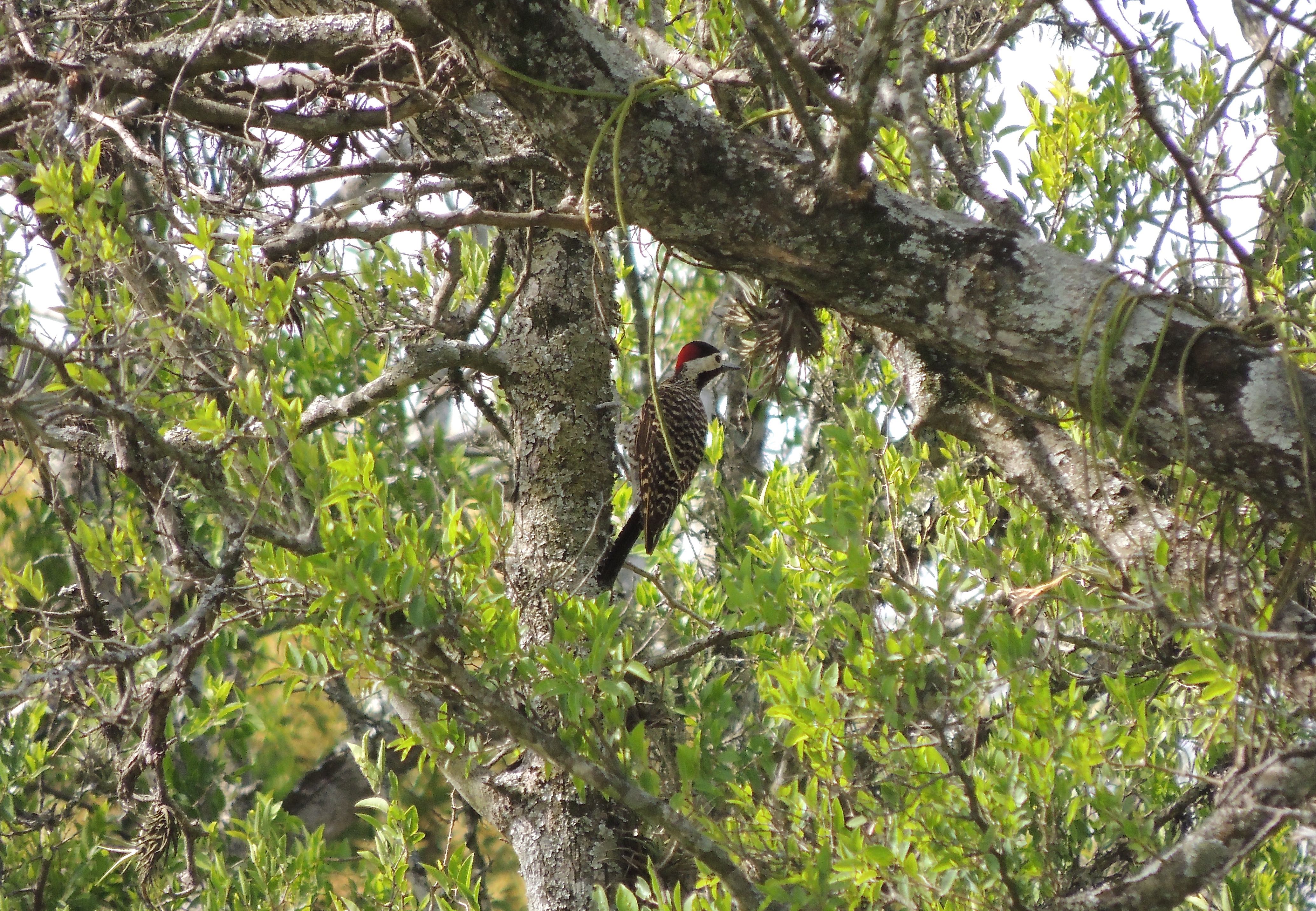 Green-backed Woodpecker - Photo by William Young
Green-backed Woodpecker - Photo by William Young
AntbirdsWe were surprised to find a Rufous-capped Antshrike perched in the branches of a fallen tree at roughly eye level. It was a young bird. It had rufous on the head, a hint of black barring on the breast, a gray belly, and white barring on its black tail. The bird did not move around much.
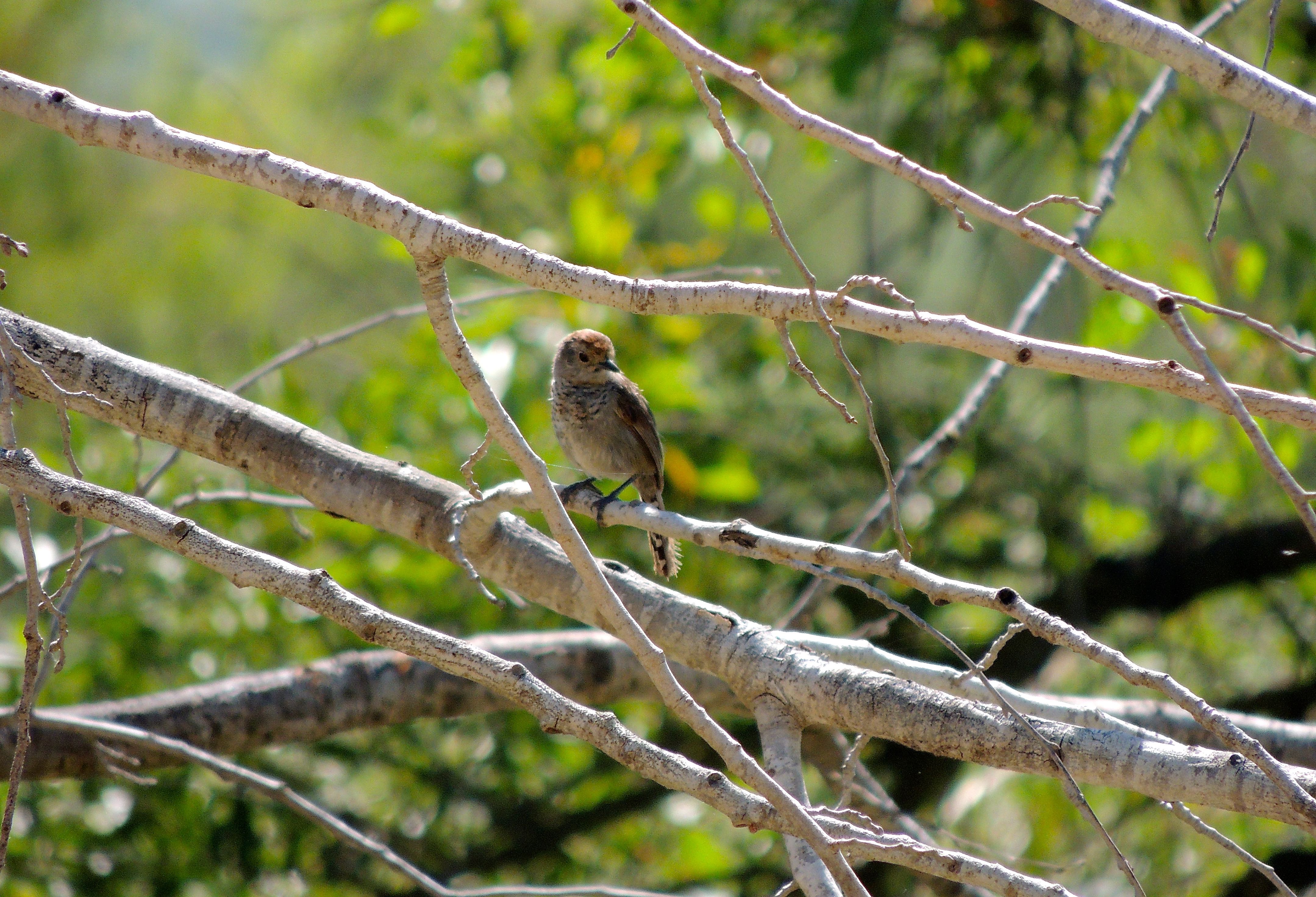 Rufous-capped Antshrike - Photo by William Young
Rufous-capped Antshrike - Photo by William Young
BecardsWe saw two species of becards at South Beach. Both were females, and each looked a bit misshapen. The White-winged Becard was perched on a branch. She appeared small and was yellow-olive below. I had a quick look at the Green-backed Becard, who appeared to be big headed. The head looked grayish, and the breast had a lemon-yellow wash. I was with Emiliano at the back of the group when the bird popped onto a branch. Before we could alert anyone, the bird flew.
VireosWe saw and heard a Red-eyed Vireo singing in a tree. It is sometimes nice to find a familiar bird in an area where almost everything else is new and different.
GnatcatchersAt South Beach, we saw four Masked Gnatcatchers, including a pair near a nest. They are like the Blue-gray, except that they have a black mask like a yellowthroat. The eyes on gnatcatchers give them an expression that makes them look constantly annoyed, and the mask accentuates this.
MockingbirdsThe Chalk-browed Mockingbird is fairly common around Buenos Aires. I saw a couple as we were driving out of the airport after we had arrived in the city. They sometimes forage on the ground, and they cock their tail a lot. They are the same shape as a Northern Mockingbird, but they are browner and have a whitish line over the eye. At our lunch site the day we went to Otamendi, I looked into one of their nests while the parents were away. It contained three small tan eggs with brown speckles. Right after I left, the birds came back, and they aggressively defended the nest, including against a watchman sitting nearby. On the day we left Buenos Aires to fly home, I saw a Chalk-browed Mockingbird outside one of the windows in the airport, and I later saw what was probably the same bird perched under the eaves next to a pigeon.
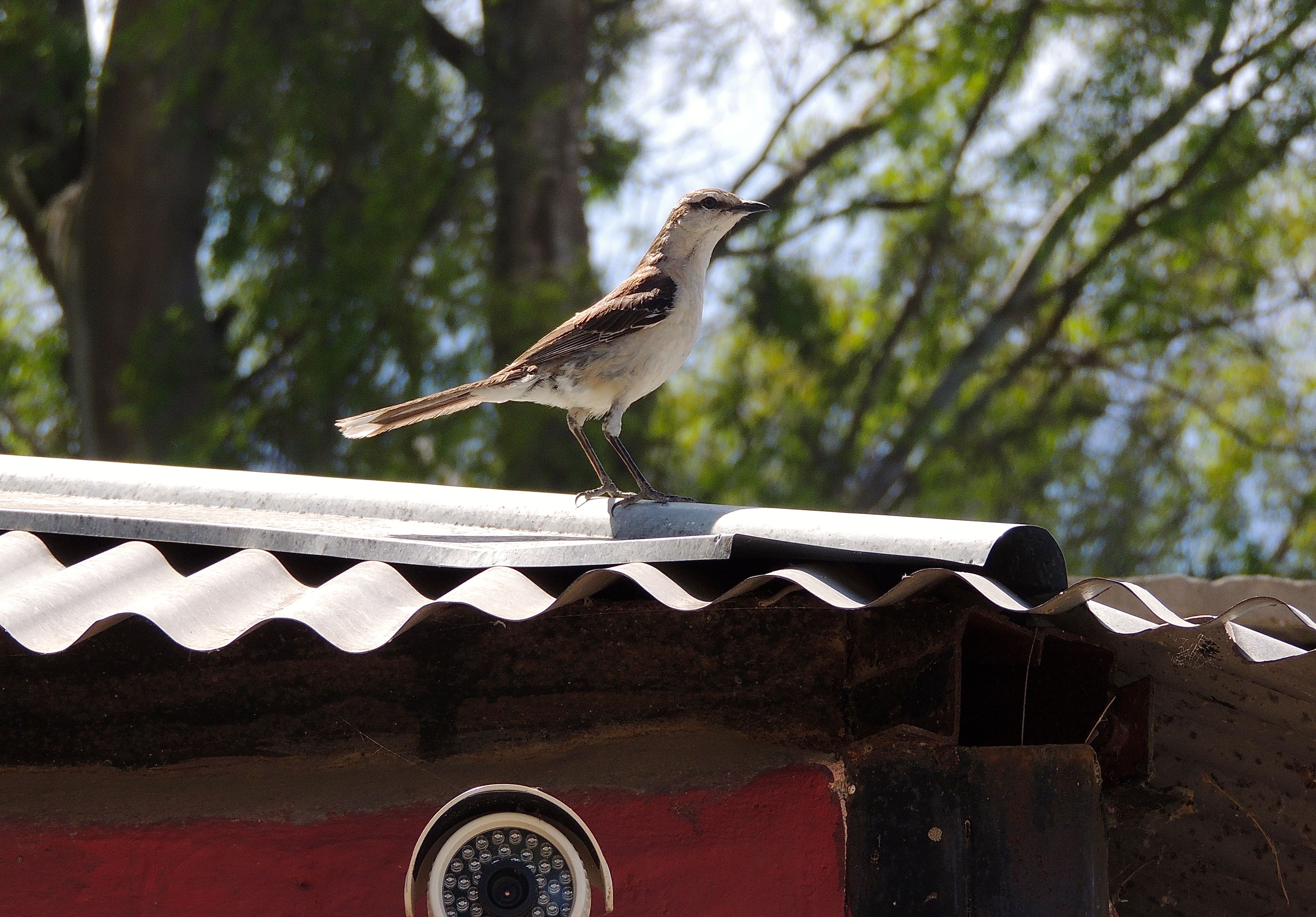 Chalk-browed Mockingbird - Photo by William Young
Chalk-browed Mockingbird - Photo by William Young
StarlingsA lot of European Starlings were around Buenos Aires. I don't remember seeing any in Ushuaia.
WarblersWe saw a Masked Yellowthroat at South Beach. It looks a bit like a Common Yellowthroat, but has gray over the mask and more yellow below.
CardinalsAt the lunch site near Otamendi, I saw a red bird fly who was probably a Hepatic Tanager. It was the right size and shape, and it is the only bird on the Buenos Aires list that comes close to looking like this.
MAMMALS
For many people on the expedition, the whales and seals were more exciting than the birds. Most mammals on the trip were in these two groups, with virtually no others after we left Argentina. On the road up the steep hill to our lodge in Ushuaia, we saw a South American Gray Fox, who is also known as a Patagonian Fox, a Gray Zorro, or a Chilla. "Zorro" is the Spanish word for fox, which is why the fictional character was so named. At Otamendi, some people saw Nutrias, but I did not. At the park in Tierra del Fuego, the guide on our bus talked about damage done to forests by beavers. They were introduced in 1946 to boost the fur business, but this was not successful. Beavers in the area have no predators, so they expanded greatly. It is legal to hunt them, but not many people do. The guide pointed out tree damage that she blamed on beavers, but I questioned whether it was might have been done by windstorms. The trees were broken off high on the trunks. This same guide talked about naked Indians who built fires in the area, which was why Magellan called the area Tierra del Fuego, or land of fire. While Magellan probably saw fires, I doubt that the native people were naked. I was there in the beginning of the summer, and the weather was very cold. I cannot imagine anyone surviving in the winter without clothing, even taking into account that people who live in cold climates are better able to withstand the cold than tenderfoots such as me.
Seals and Sea LionsThe most plentiful seal species on the trip was the Antarctic Fur Seal. We saw hundreds of thousands of them. We earlier saw swimming South American Fur Seals. Seeing a seal swimming, like seeing a penguin swimming, typically does not provide a satisfactory look. Both seals and penguins porpoise when swimming quickly. The fur seals have pointier noses than the South American Sea Lions. I saw a few sea lions on our return trip through the Beagle Channel. The two species of fur seals were the only species of eared seals we saw. The ear flaps are relatively small.
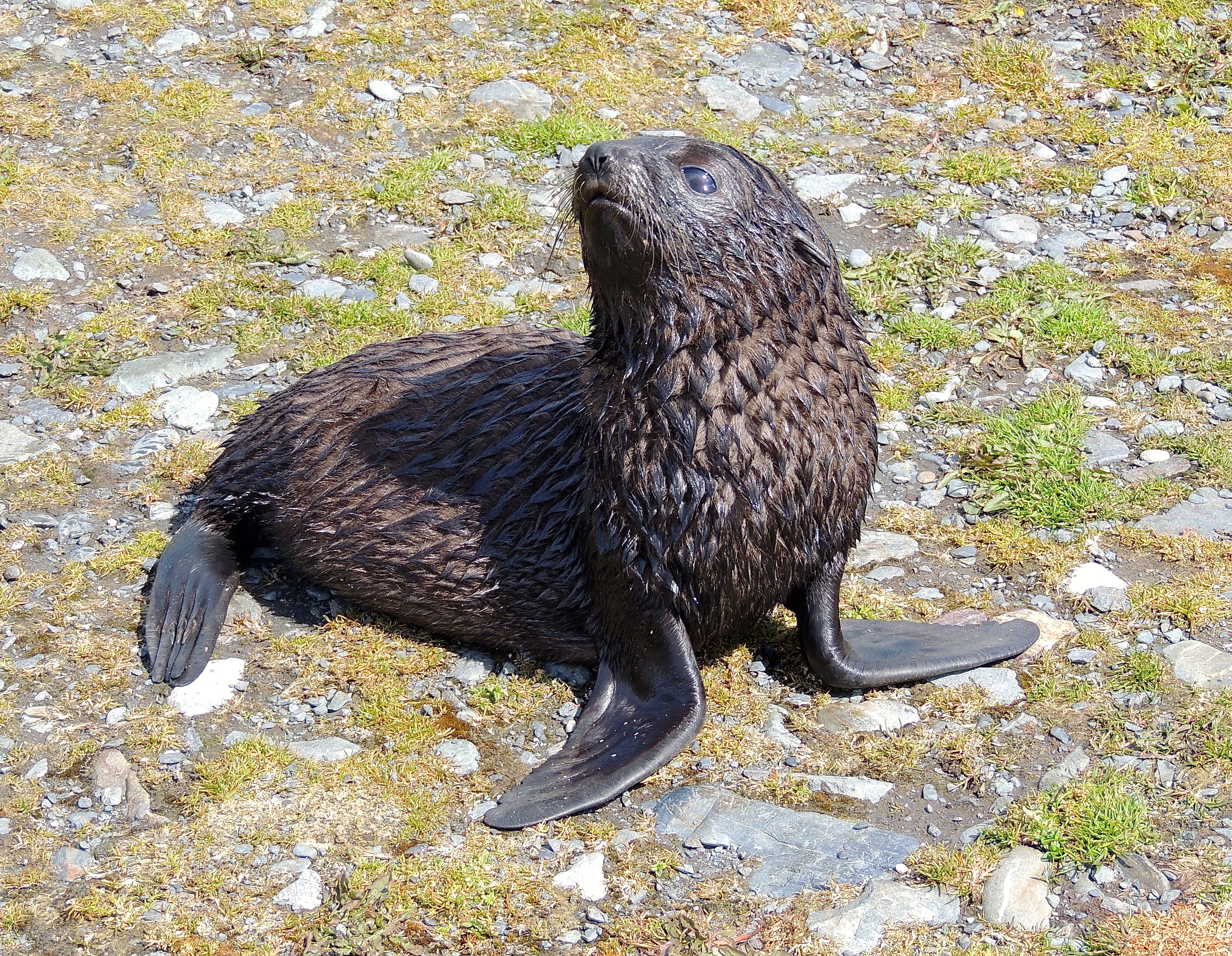 Antarctic Fur Seal - Photo by William Young
Antarctic Fur Seal - Photo by William Young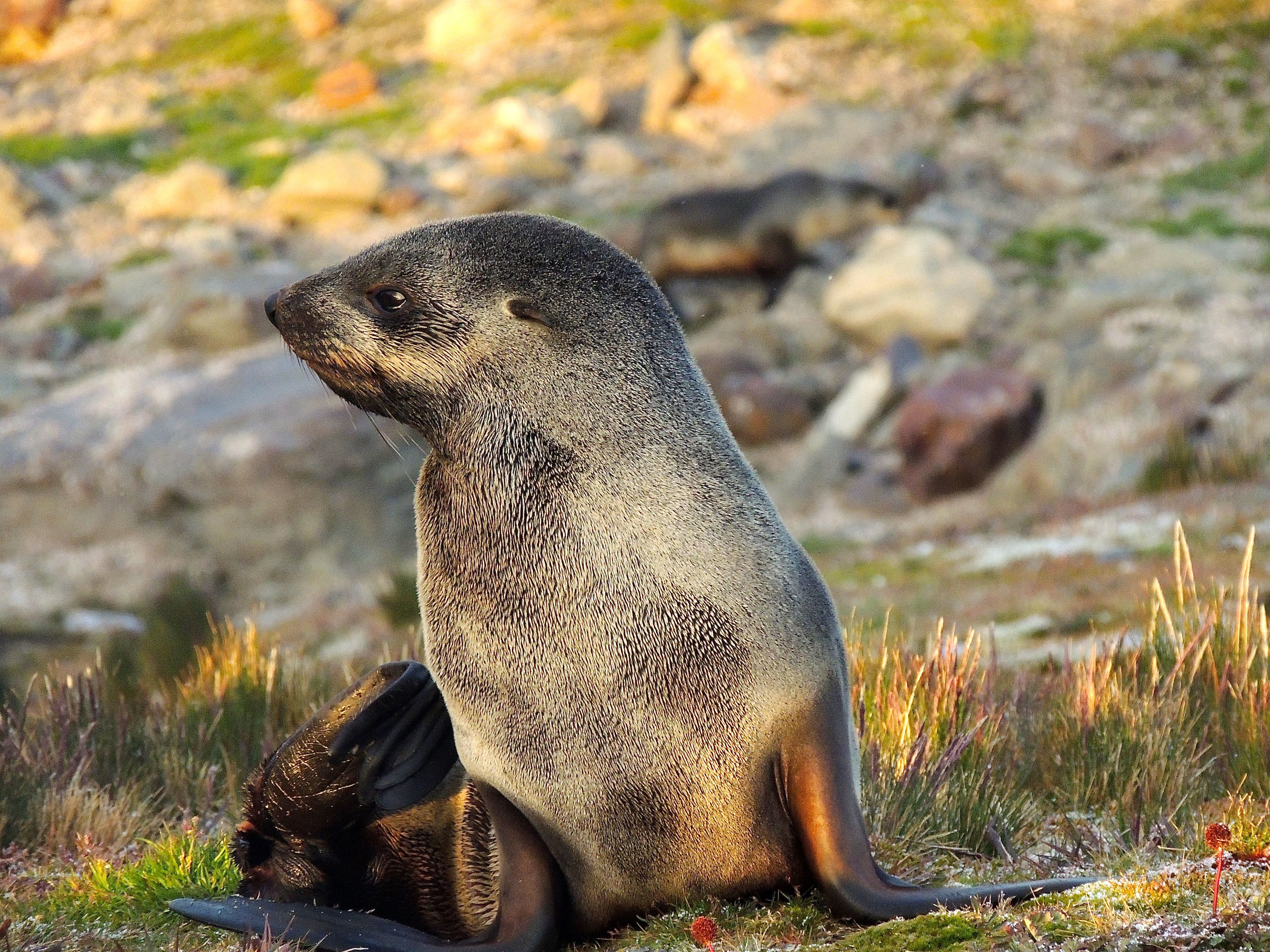 Antarctic Fur Seal - Photo by William Young
Antarctic Fur Seal - Photo by William Young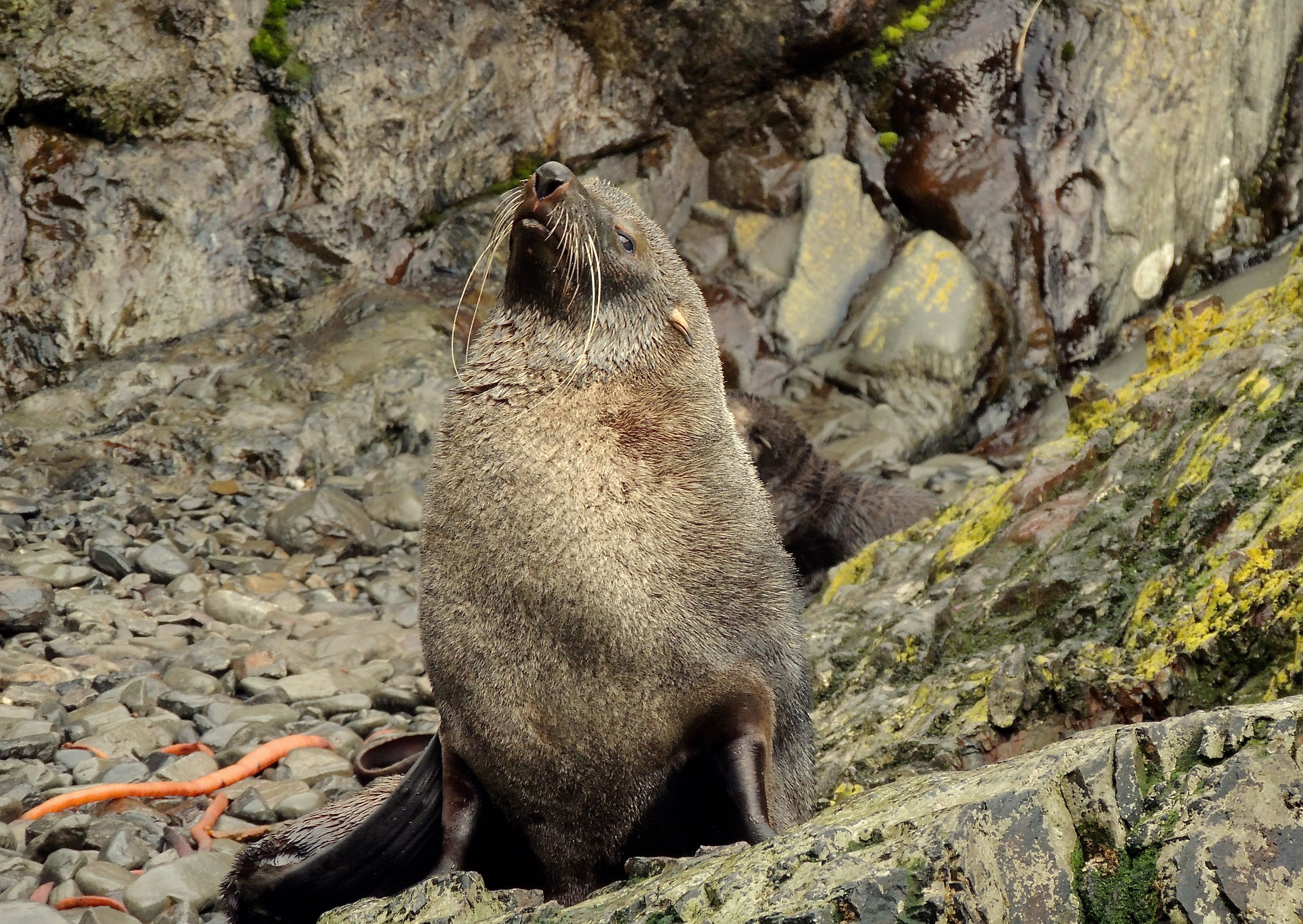 Antarctic Fur Seal - Photo by William Young
Antarctic Fur Seal - Photo by William Young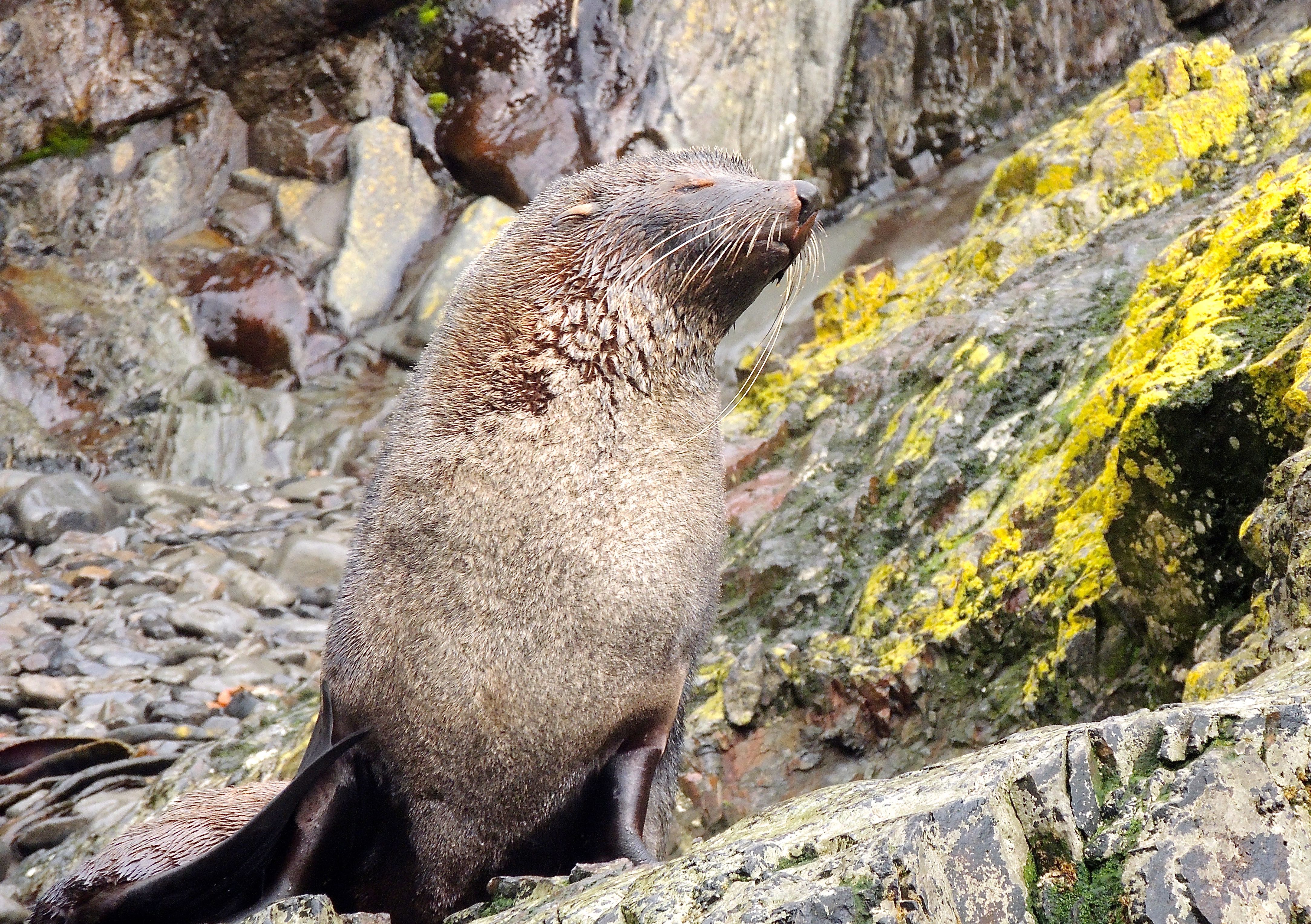 Antarctic Fur Seal - Photo by William Young
Antarctic Fur Seal - Photo by William YoungThe Antarctic Fur Seals were in all stages of development. Some of the pups were cute and curious and would waddle up to people. There was one leucistic pup, and I shot a lot of video footage of it. It interacted with dark pups as well as adults. The mother seal goes hunting for 5-7 days and then feeds the young for 2 days. The pups start at 11 pounds and are weaned at 30 pounds. We saw many weak fur seal pups when visiting the seal colonies. This year is a low krill year, so a lot of young ones probably will not survive. The female carries a fertilized egg, but it is not implanted until her body reaches a certain fat level. The large males are the beachmasters who just lie around at this time of year. The males who protect territory are the subordinates. The beachmasters are tired now, but when breeding season starts, they become much more animated. Their eyes are sensitive to light and often look bloodshot. At Fort Point, I saw a lot of young males on the beach who were neck wrestling. I also saw this behavior at Prion Island. While we were walking up the narrow boardwalk on Prion Island, Michael was almost continuously clapping his hands to get the seals to move out of the path. Antarctic Fur Seals were nearly wiped out on South Georgia early in the 20th century. A few populations survived, and now they number 4-5 million.
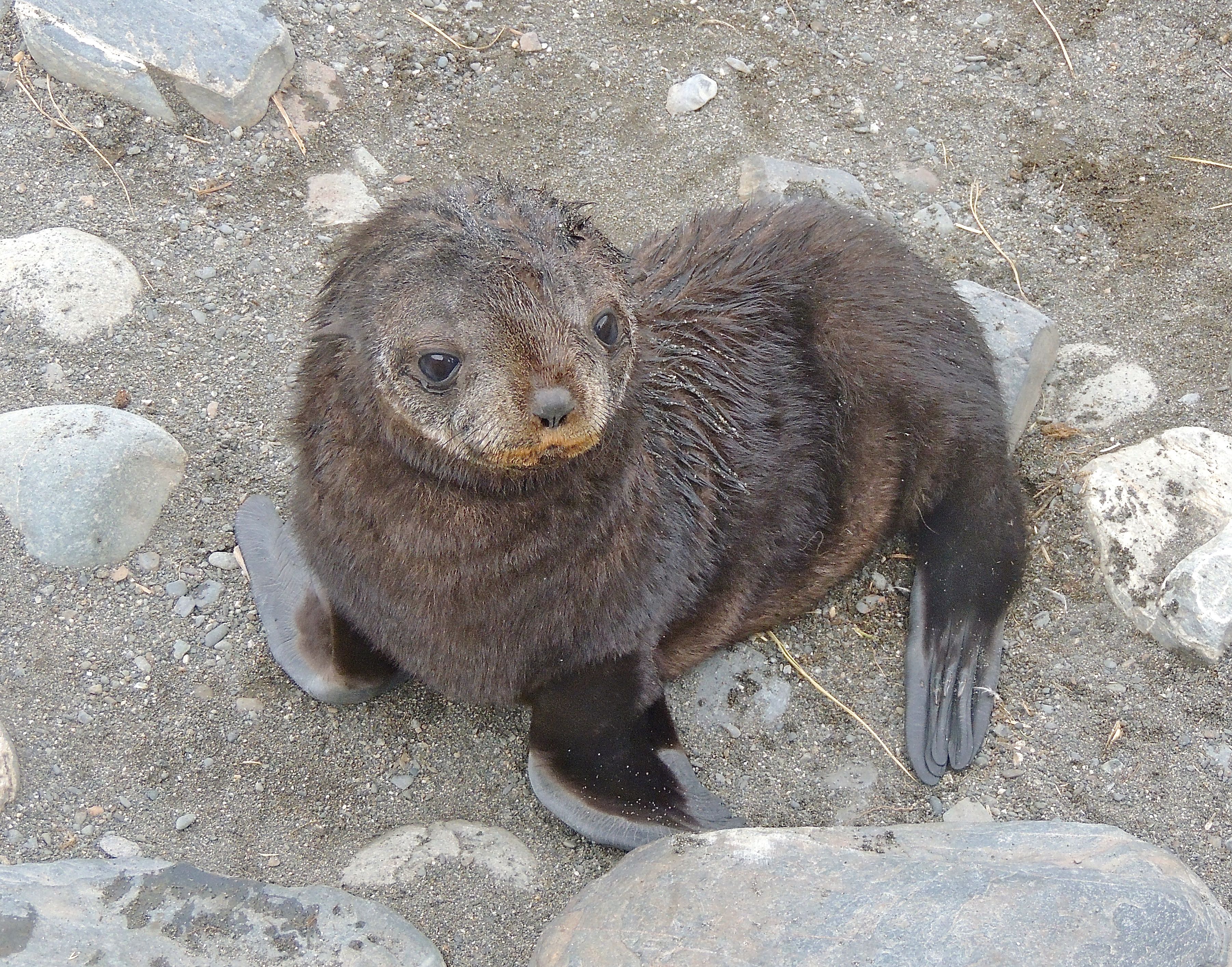 Antarctic Fur Seal Pup - Photo by William Young
Antarctic Fur Seal Pup - Photo by William Young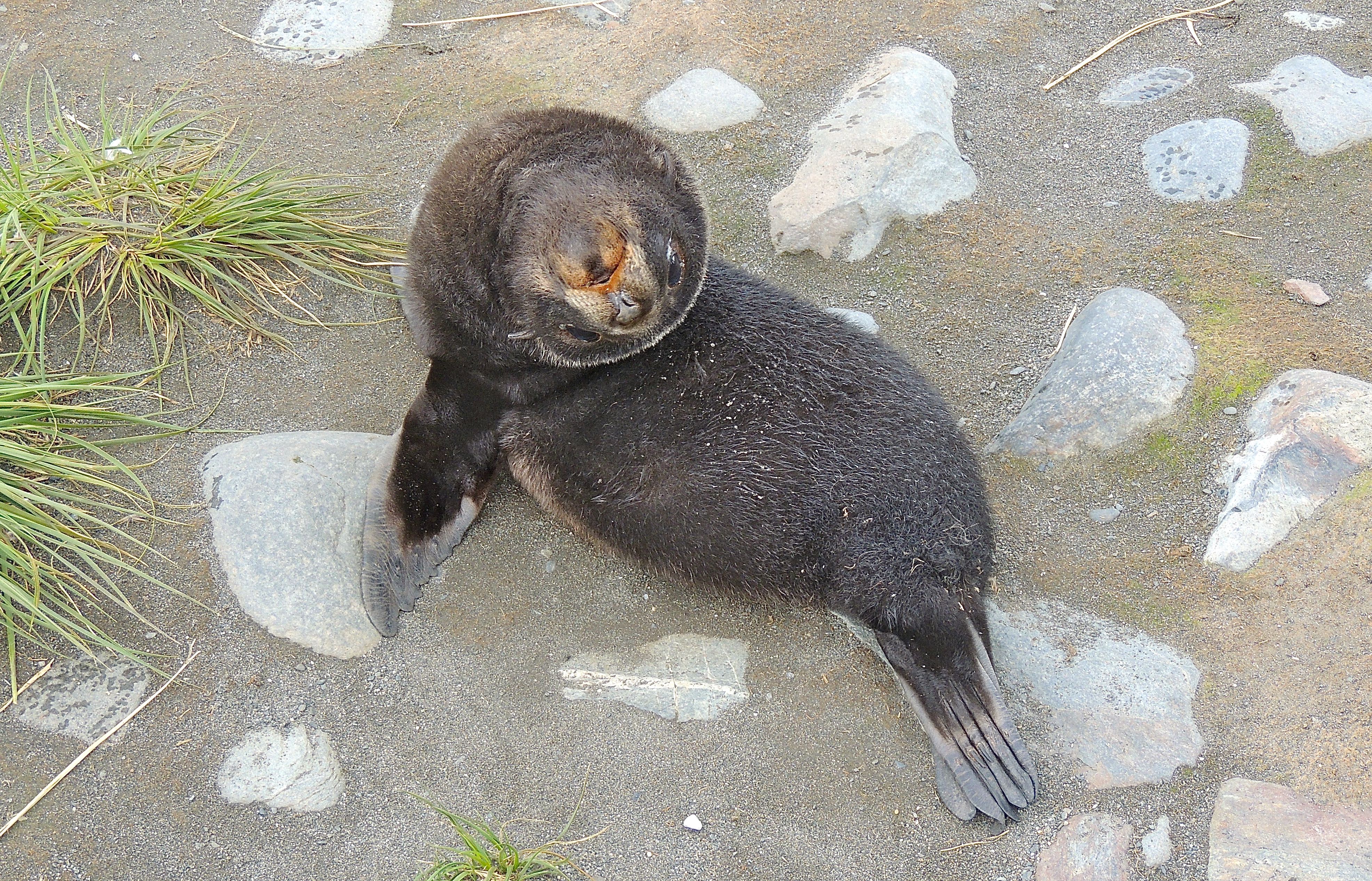 Antarctic Fur Seal Pup - Photo by William Young
Antarctic Fur Seal Pup - Photo by William Young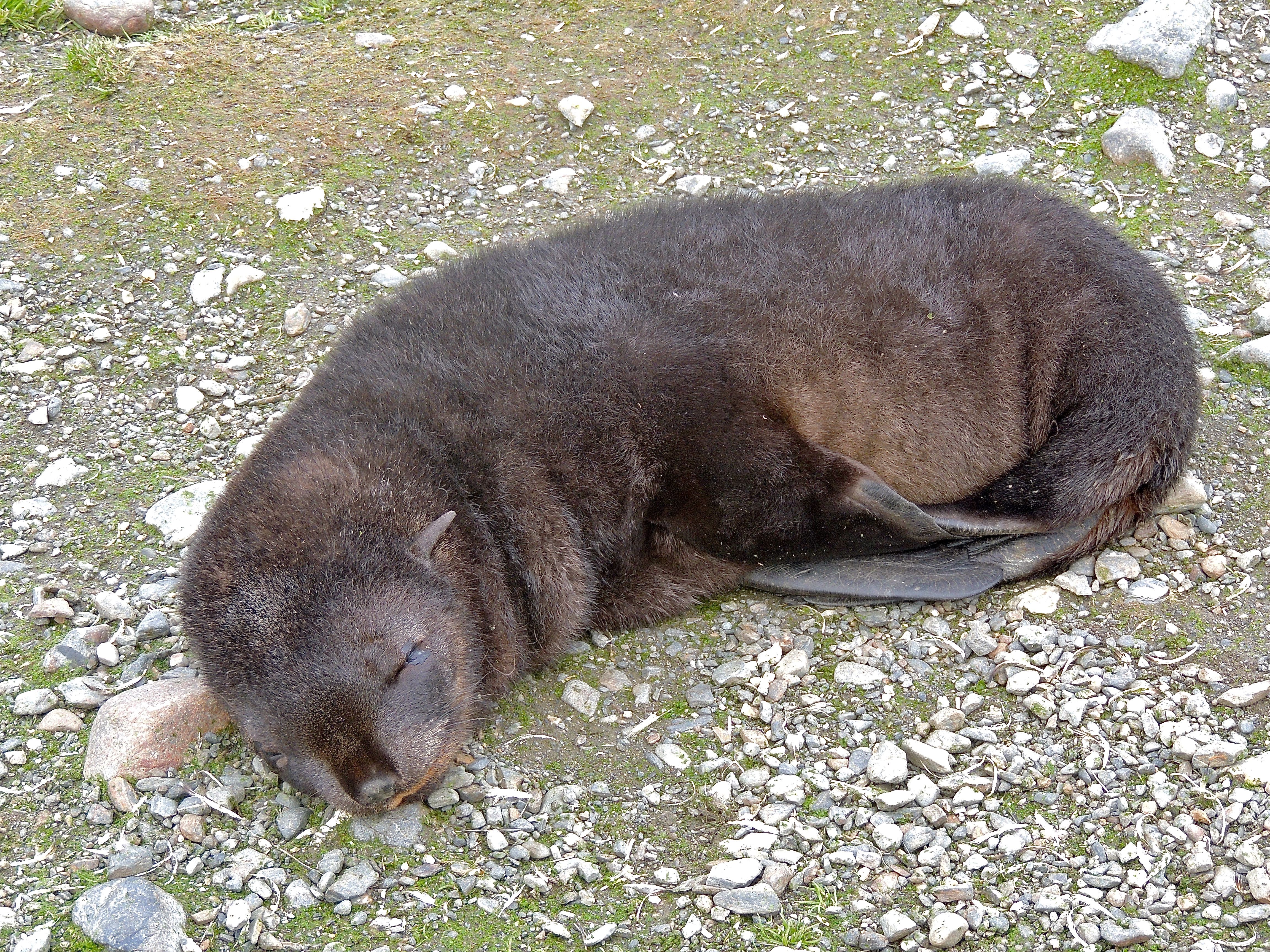 Antarctic Fur Seal Pup - Photo by William Young
Antarctic Fur Seal Pup - Photo by William Young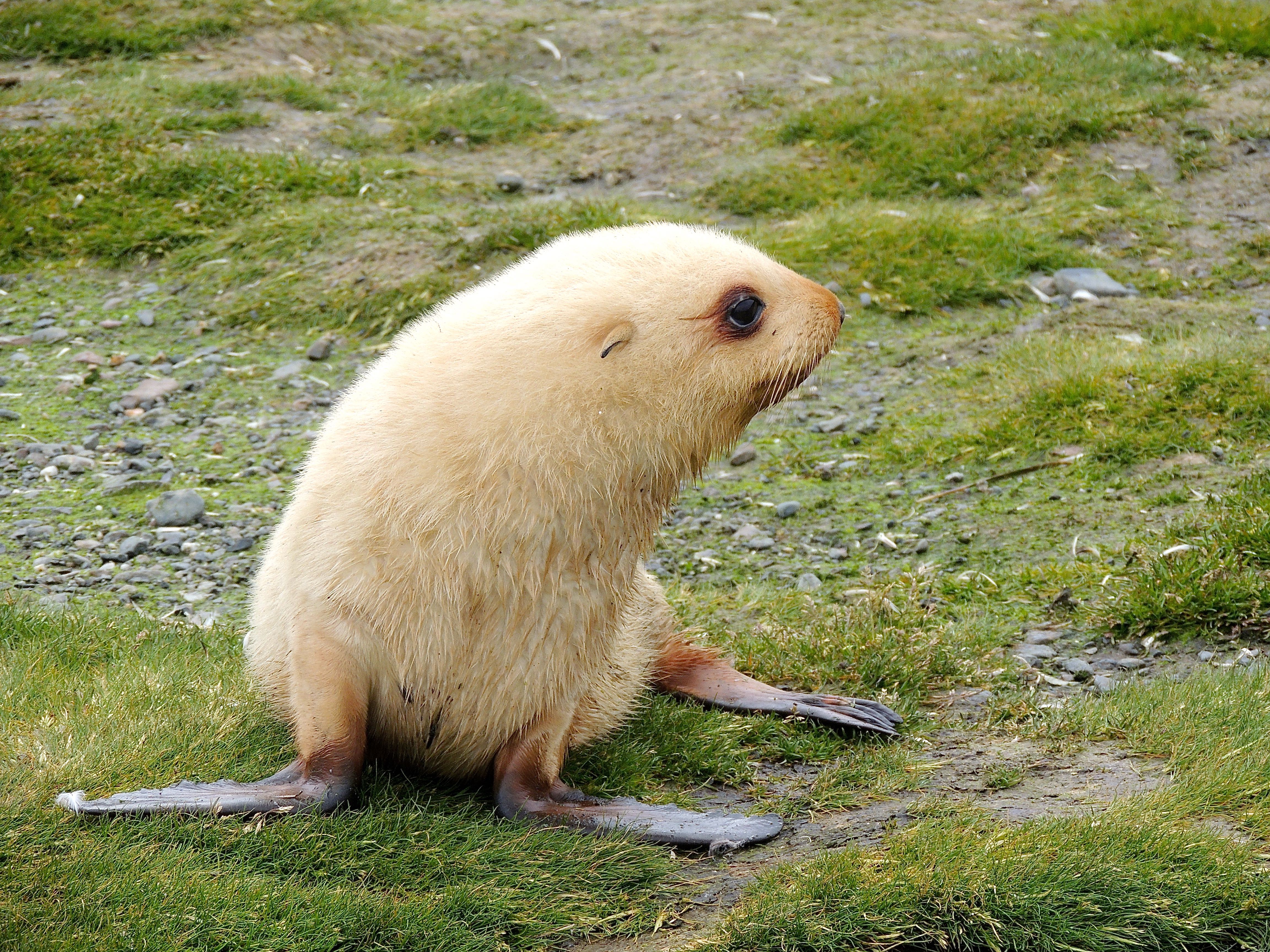 Antarctic Fur Seal Leucistic Pup - Photo by William Young
Antarctic Fur Seal Leucistic Pup - Photo by William Young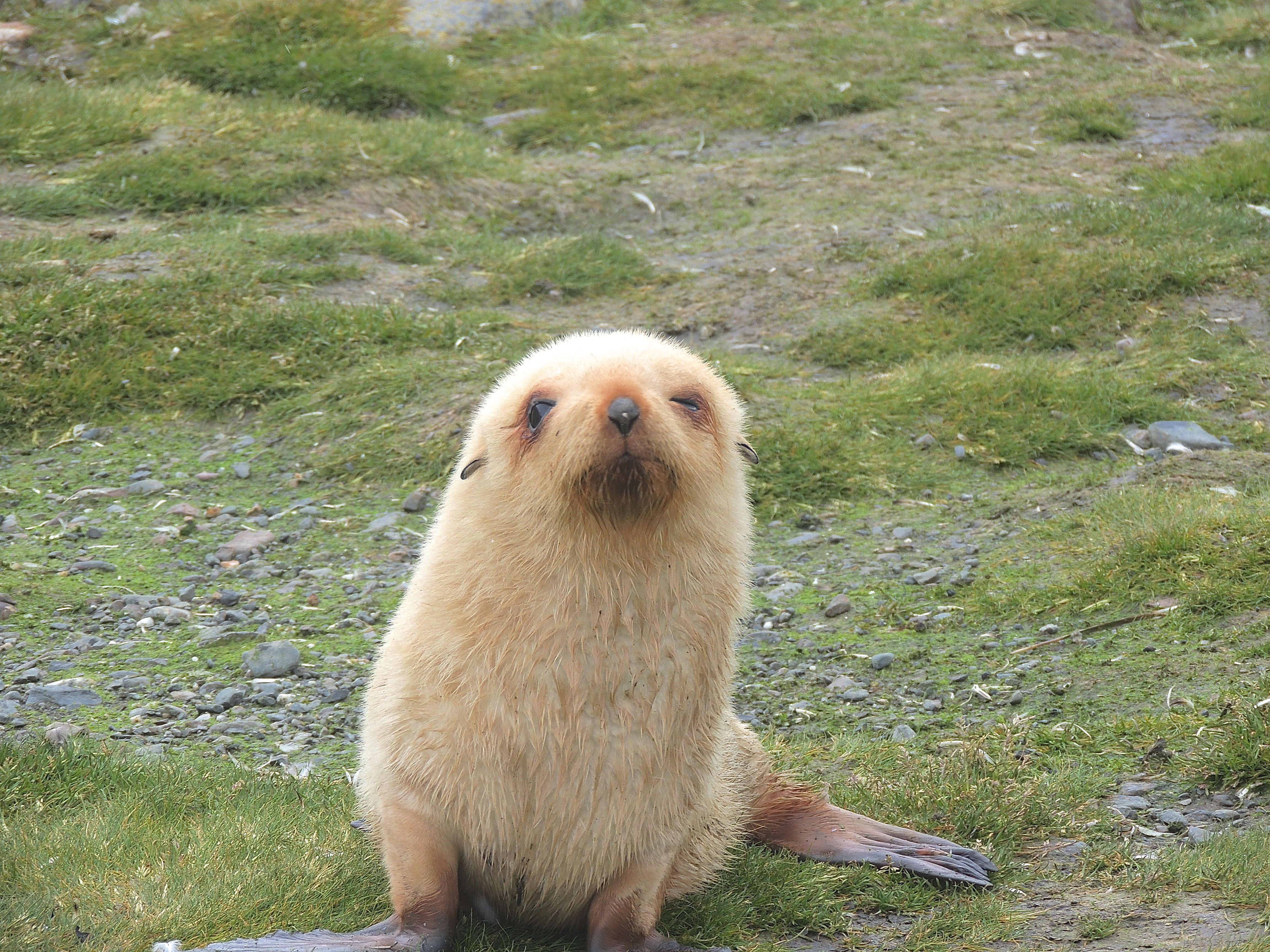 Antarctic Fur Seal Leucistic Pup - Photo by William Young
Antarctic Fur Seal Leucistic Pup - Photo by William YoungSouthern Elephant Seals are huge. Most of the adult males were at sea during our visit, so the elephant seals we saw were mostly young males. At Gold Harbour, a group of them lounged on the beach. When I walked past one, he opened his mouth as if to roar at me, but no sound came out. Most appeared to be sleeping. Occasionally, one would appear to be reacting to a bad dream and start turning over. Because the seals were close together, that invariably meant hitting the adjacent seal. There would be a lot of snorting and grumbling before everyone settled down, and peaceful slumber was restored. The seals have nose mites, which is why they constantly snort and have snot dripping from their nose. The five nails on each flipper appear to be beautifully manicured. Sometimes, elephant seals will throw sand upon their back in an attempt to cool off. They do this while lying down, moving only their flippers. I watched them do this in an area that also had a lot of King Penguins, many of whom were lying on their stomachs in an attempt to cool off. Seals and penguins need a thick layer of fat to insulate themselves from the frigid temperatures of the Antarctic water and air. If the temperature gets warm, there is no way for these animals to strip off a layer of clothing as I could. One wonders what will happen to them when temperatures rise.
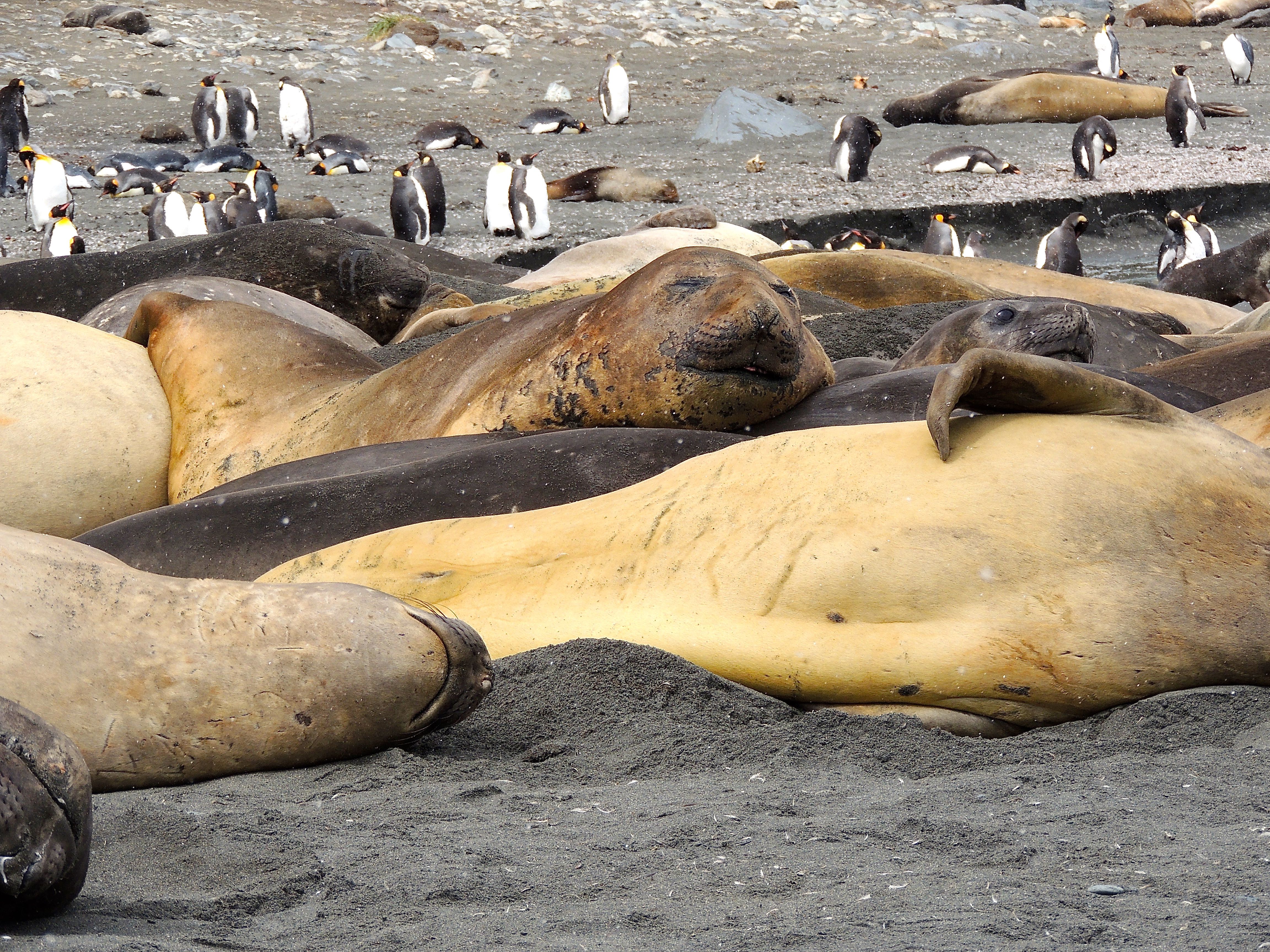 Southern Elephant Seals - Photo by William Young
Southern Elephant Seals - Photo by William Young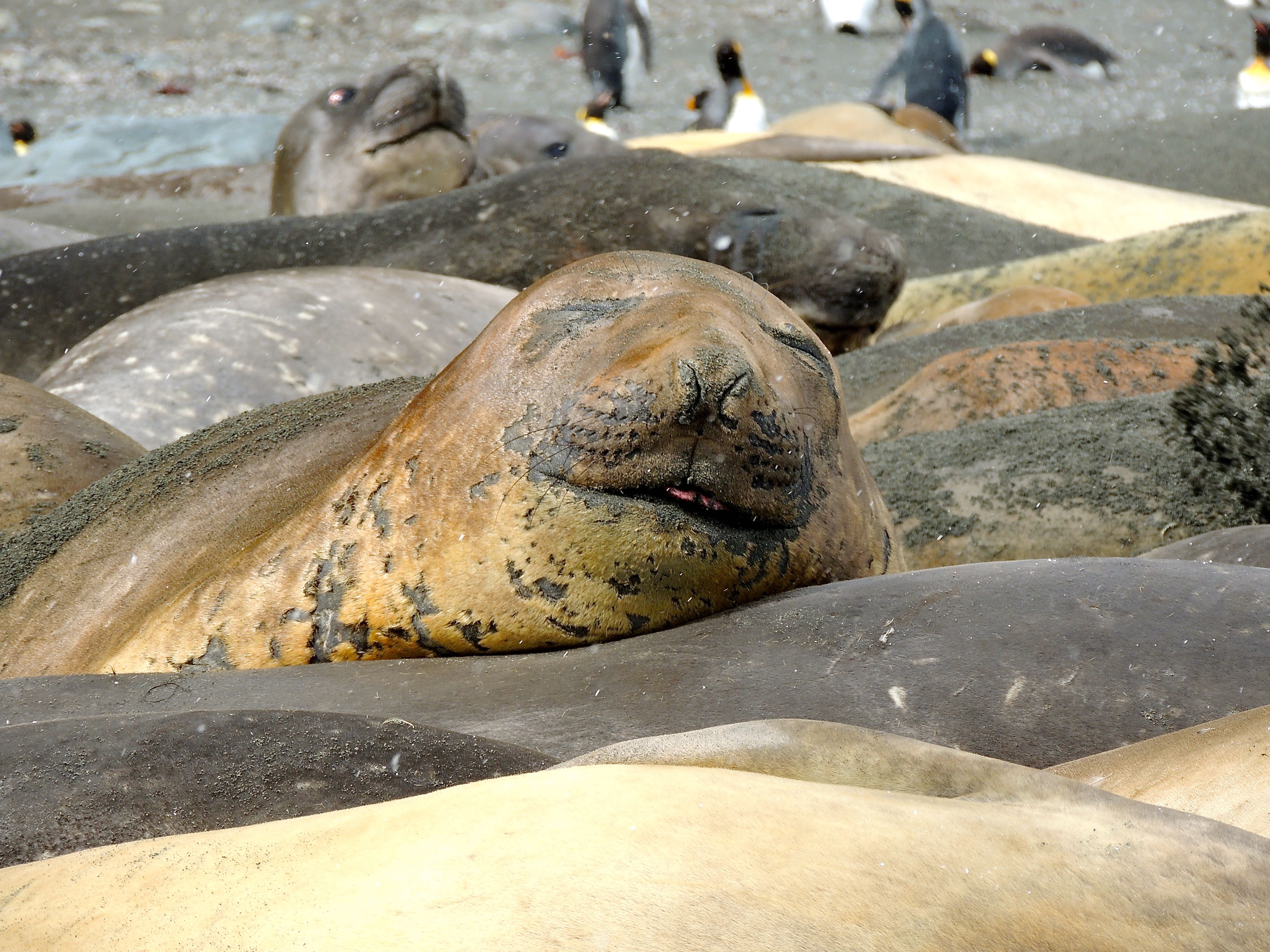 Southern Elephant Seals - Photo by William Young
Southern Elephant Seals - Photo by William Young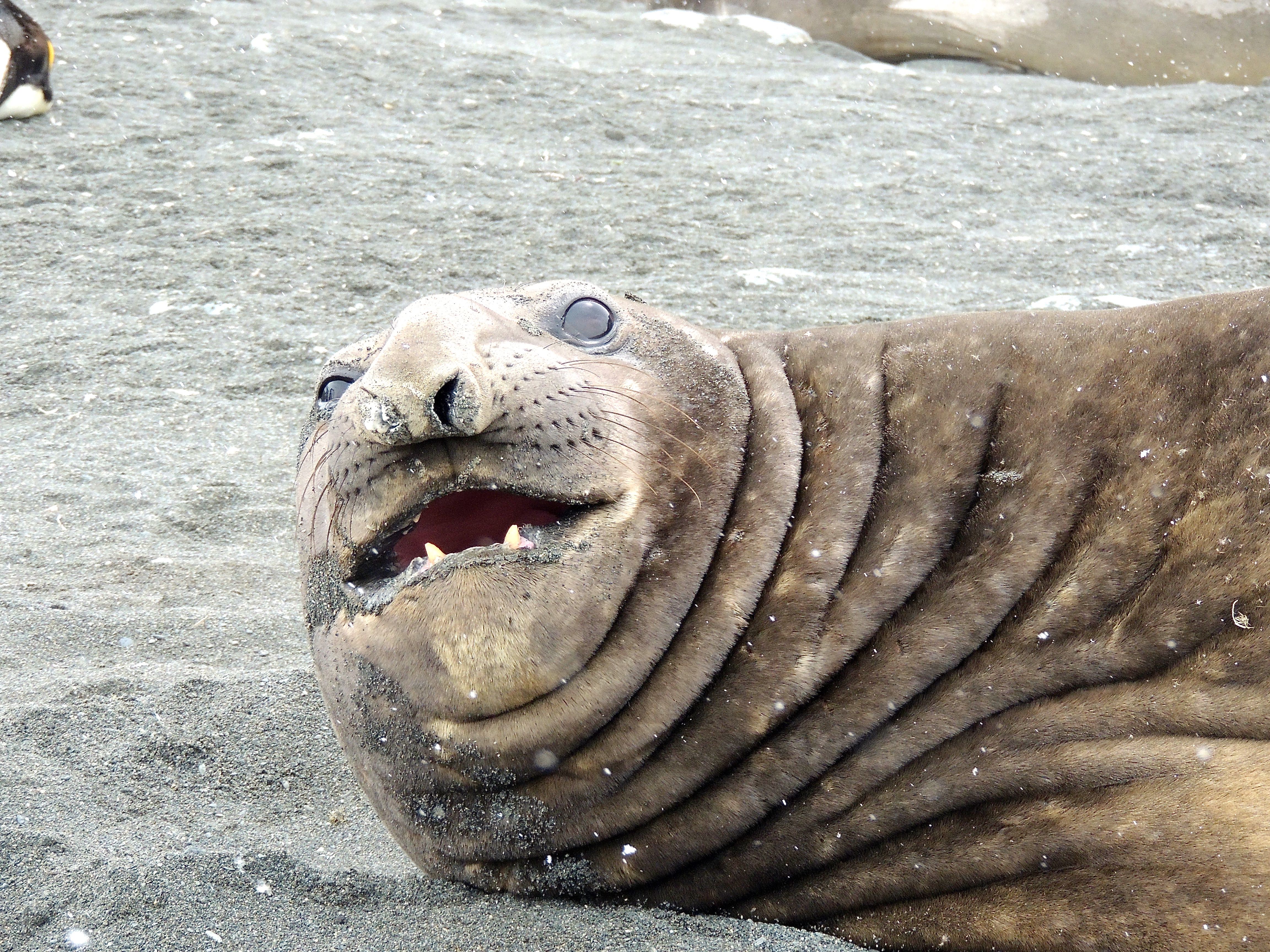 Southern Elephant Seal - Photo by William Young
Southern Elephant Seal - Photo by William Young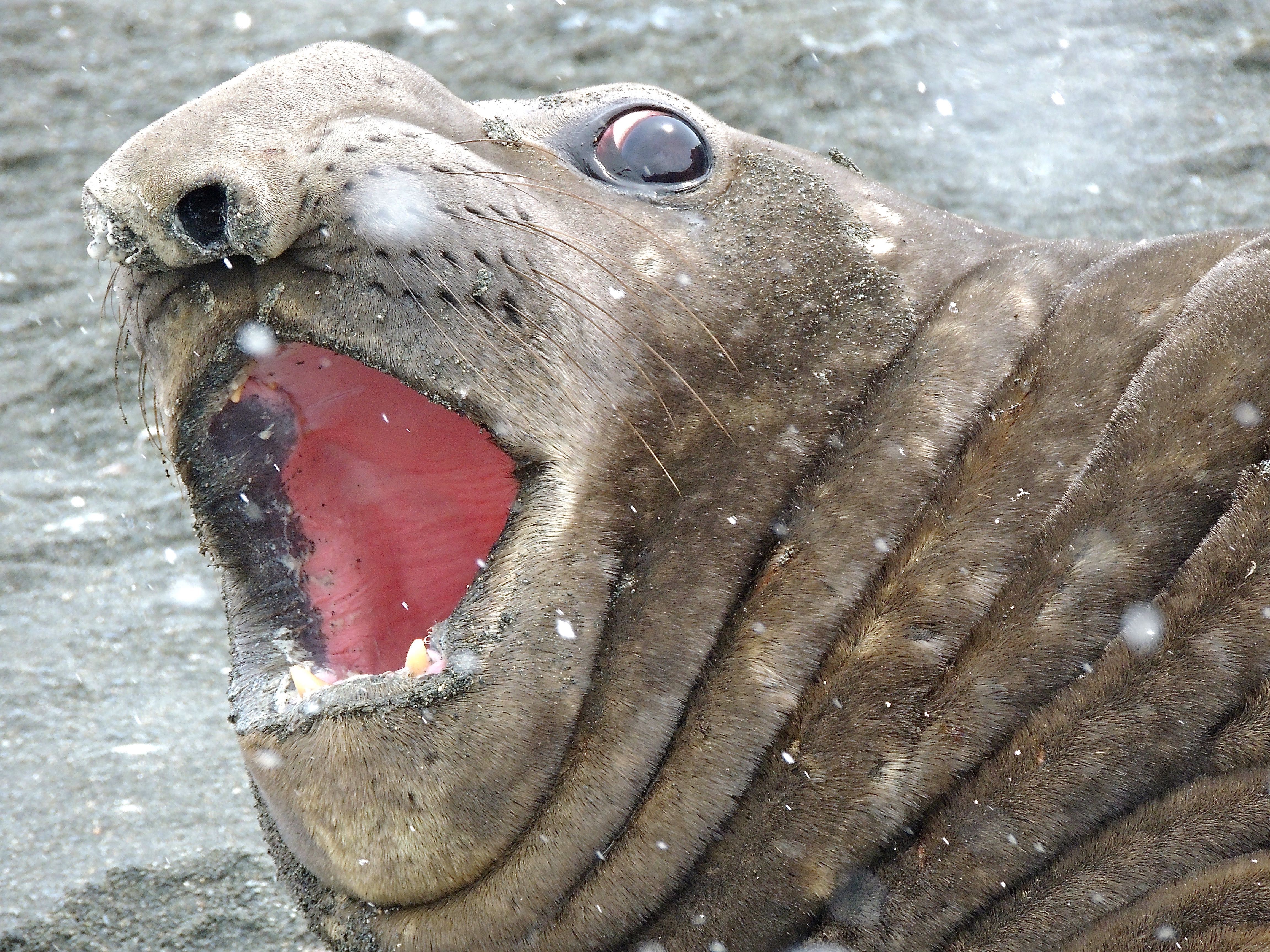 Southern Elephant Seal - Photo by William Young
Southern Elephant Seal - Photo by William Young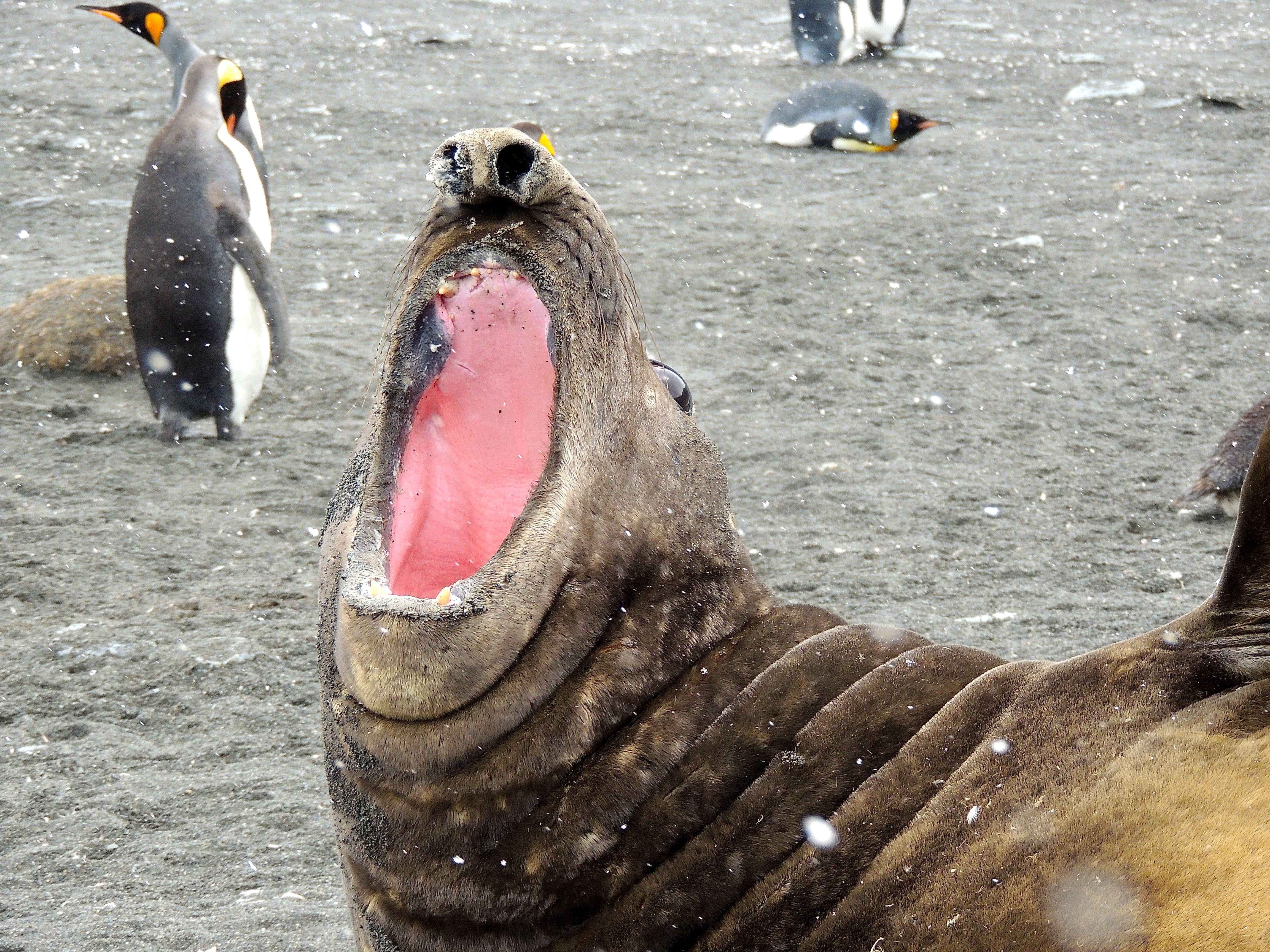 Southern Elephant Seal - Photo by William Young
Southern Elephant Seal - Photo by William Young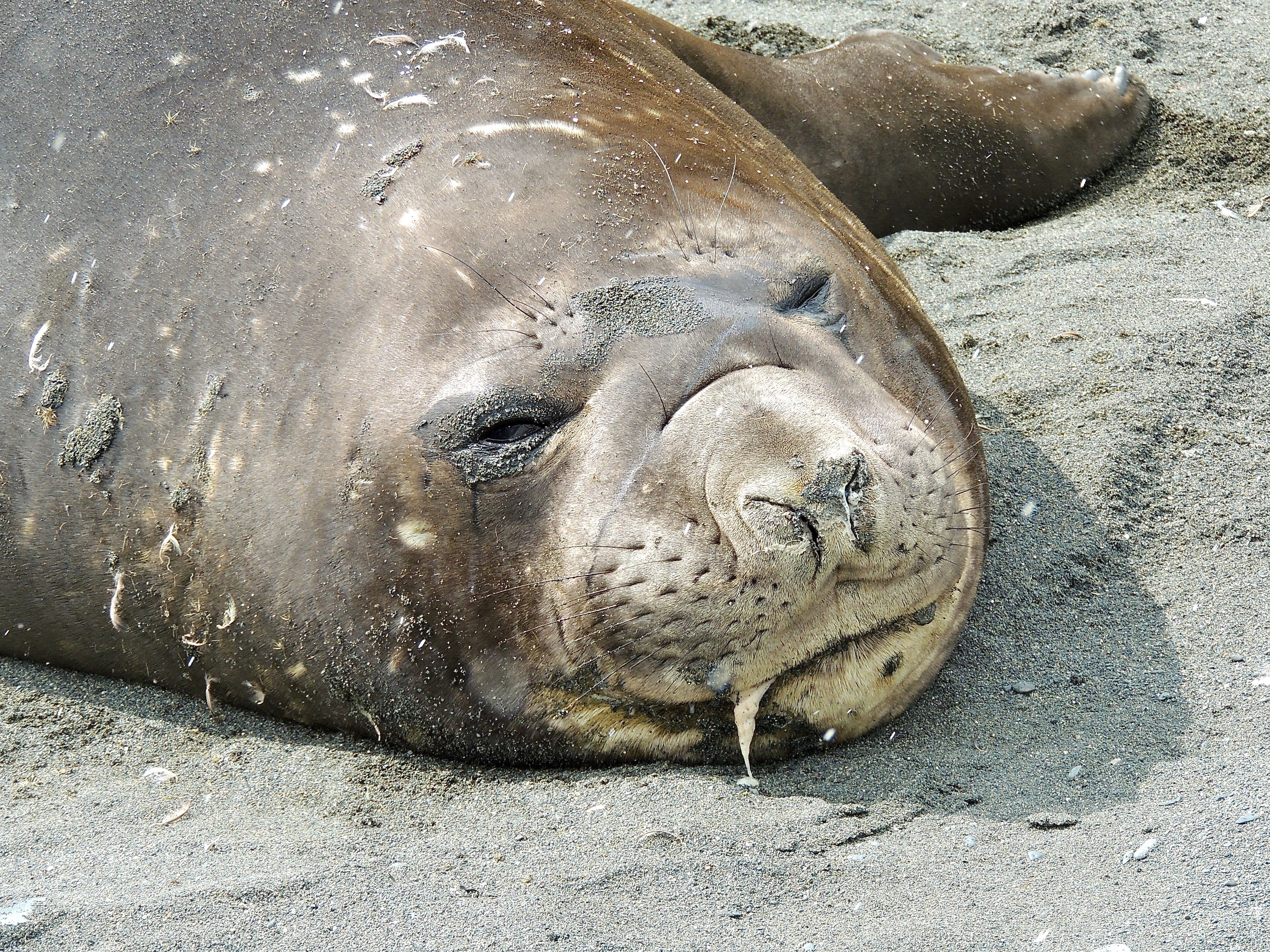 Southern Elephant Seal - Photo by William Young
Southern Elephant Seal - Photo by William Young Southern Elephant Nails - Photo by William Young
Southern Elephant Nails - Photo by William YoungWhen young elephant seals are weaned, they are known as "weaners". This is a play on words, because they lie on the beach like huge sausages who weigh hundreds of pounds. Some seals are called "blubberslugs" (which was my favorite word of the trip), because they have a thick layer of blubber and lie on the beach like slugs. Conrad gave a talk about seals and called the weaners a "mouth attached to an anus". He also said that elephant seals can dive deeper than any animal. A female dove 5,000 feet, taking 17 minutes to go down and 17 minutes to resurface — they do it slowly, which helps to prevent them from getting the bends. They mostly hunt big fish. When the female resurfaced, she stayed for only 30 seconds to 3 minutes before diving again. She did this for 15 consecutive days.
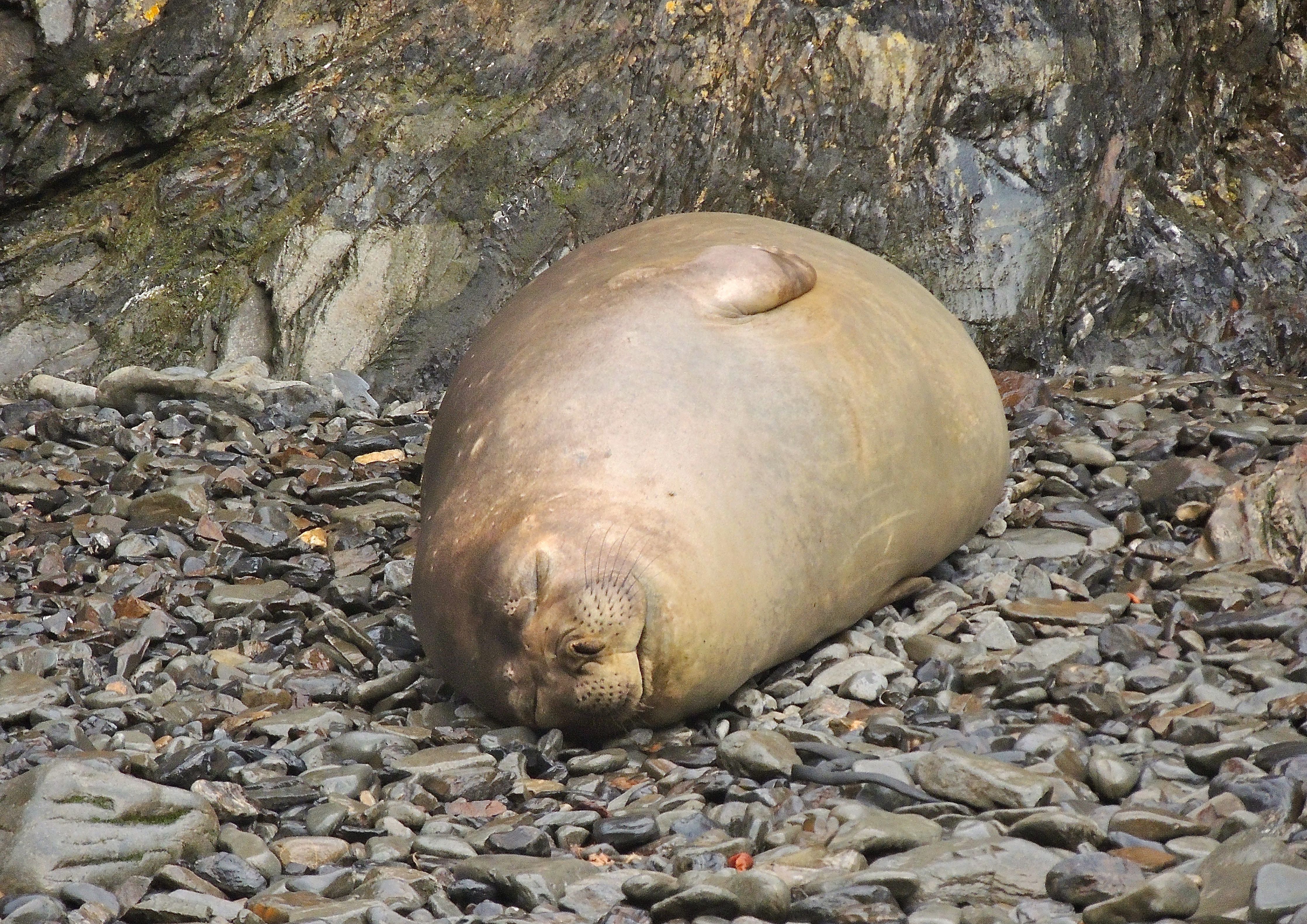 Southern Elephant Seal "Blubberslug" - Photo by William Young
Southern Elephant Seal "Blubberslug" - Photo by William YoungOn the day that we took the zodiac ride around the Weddell Sea, we saw all four species of earless seals. There was a young Southern Elephant Seal, which was very surprising — not many are found in this area. We saw a Leopard Seal, whose head is more pointed than the other seals. A Crabeater Seal looked like who was an olive-green blob lying on the ice. It looked smaller than some of the other seals, and it had a few indented lines on its flanks. At the museum at Grytviken, we saw a display of seal teeth. They do not look like human teeth. Each tooth has multiple lobes which are used for filtering krill — the Crabeater does not eat crabs. Krill comes from a Norwegian word, as do many whaling and sea terms in the Antarctic, and it simply means whale food. Plankton is a broader term and means any food that floats, regardless of who in the food chain consumes it.
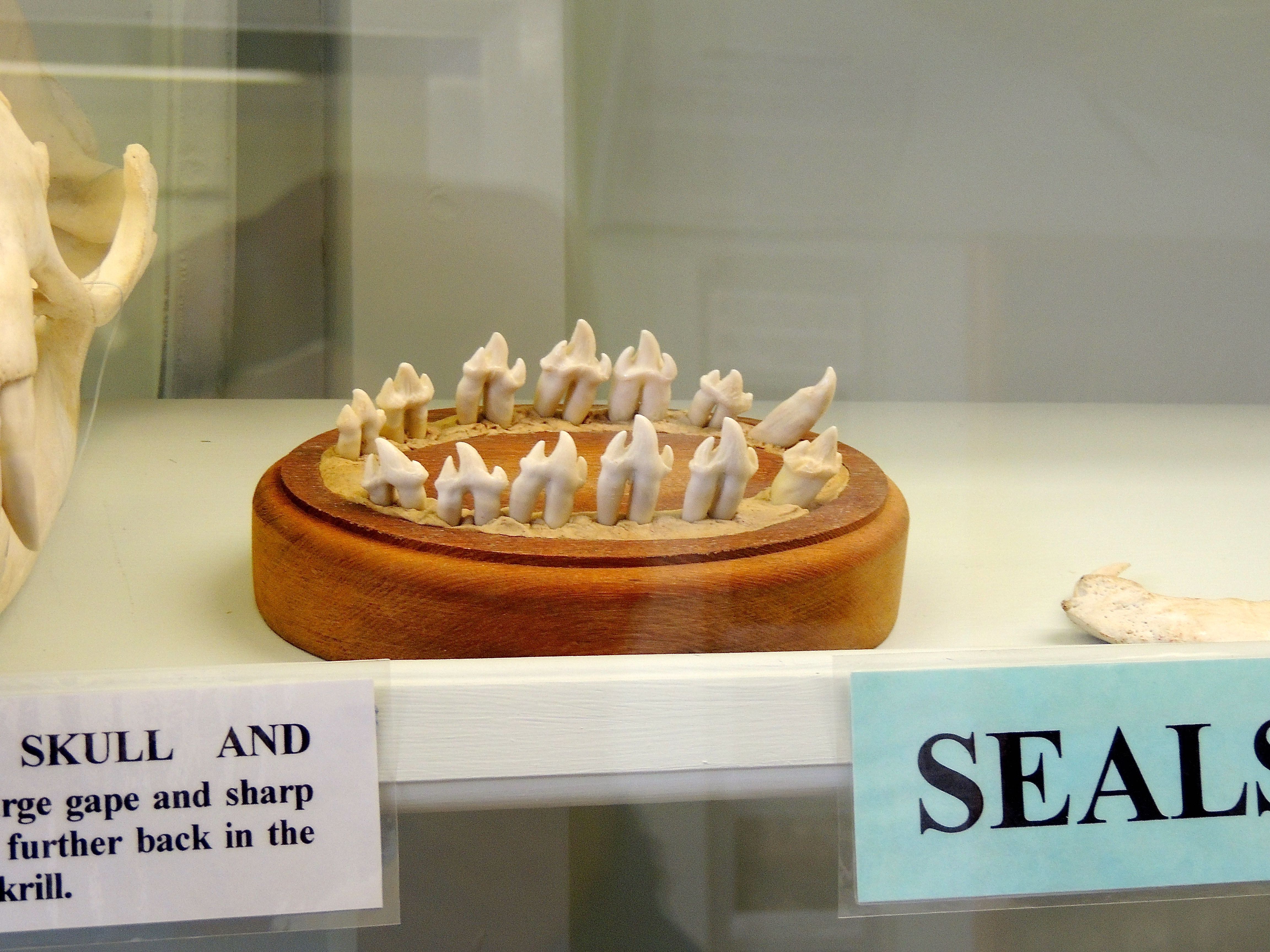 Seal Teeth in Grytviken Museum - Photo by William Young
Seal Teeth in Grytviken Museum - Photo by William YoungWe saw quite a few Weddell Seals. They have a round, friendly face. The best look I had of one was at Hardy Cove where one was sleeping on the beach. It looked a little larger and grayer than the Crabeater Seal. We saw a few Weddell Seals on our zodiac ride in the Weddell Sea. Many times, watching seals is not all that exciting, because the seals typically are stretched out on the ice and not doing much. One also tends to see them from a distance.
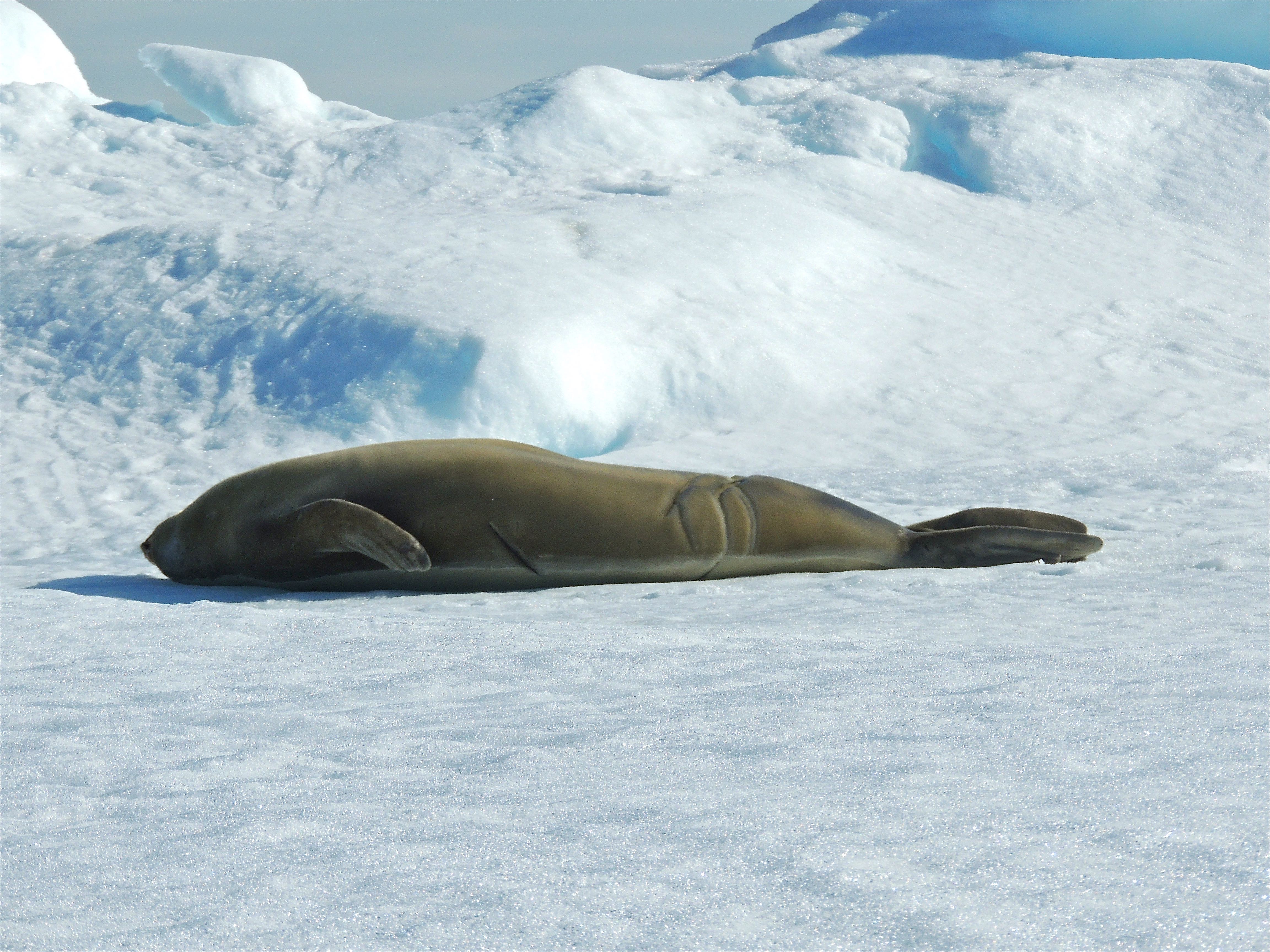 Crabeater Seal - Photo by William Young
Crabeater Seal - Photo by William Young
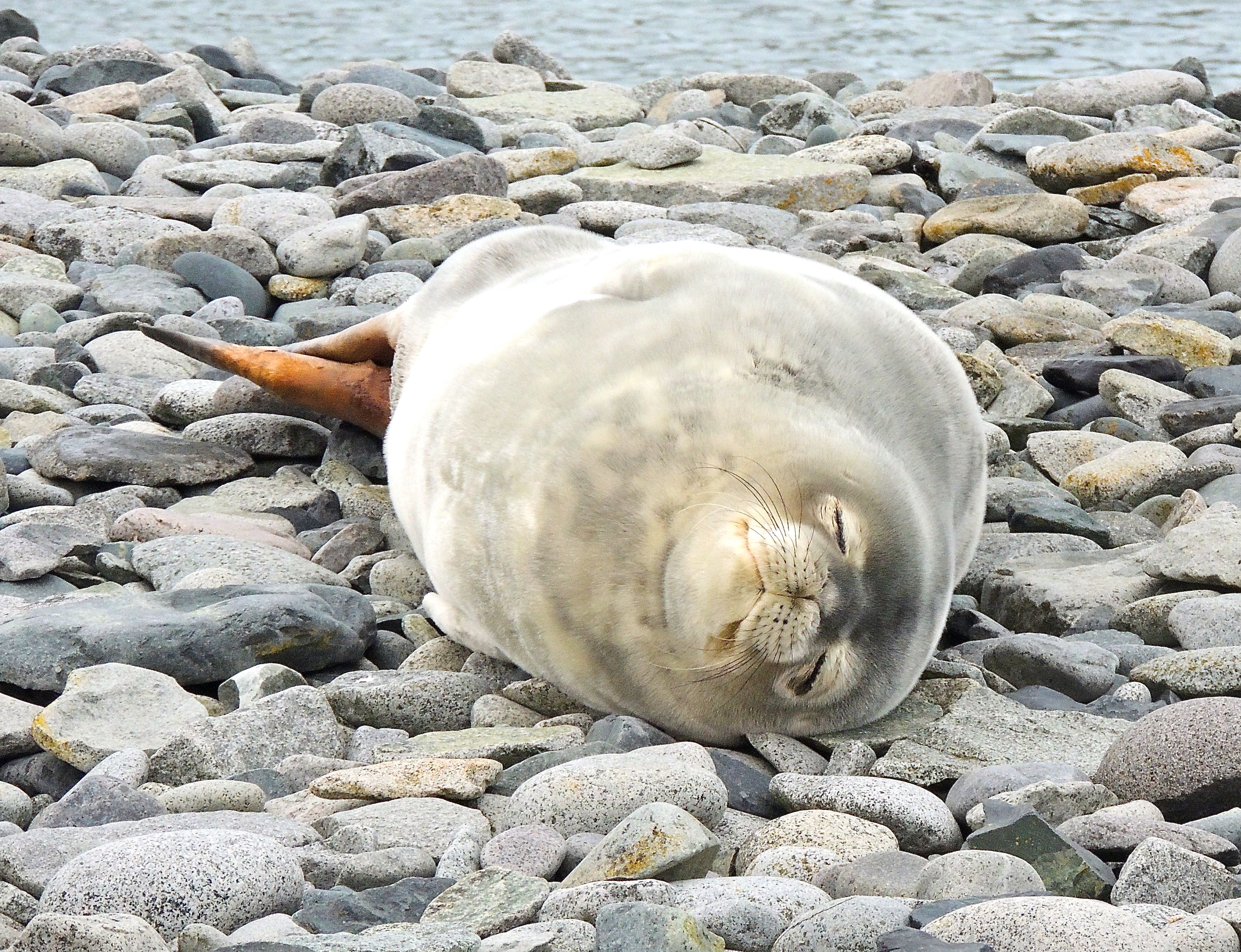 Weddell Seal - Photo by William Young
Weddell Seal - Photo by William Young
Whales and DolphinsOne usually does not see much when watching whales and dolphins. Some moments are spectacular, but they are few. One usually has to watch for blows, which involves the whale coming near the surface of the water and expelling air through its blowhole. That's why whalers used to shout, "Thar she blows". One might see part of the body come out of the water, but you have to really know your whales to to identify one from these sightings of whale parts. Often, one sees only the blow and no whale. Some whales can be identified based on the type of blow. The V-shaped blow of the Southern Right Whale is distinctive. Seeing the tail come out of the water can be exciting, but that also usually means that the whale is diving and you might not see any other sign of it for another five minutes. Seeing the head of a whale is unusual. You are more likely to see the tail. Whales are generally larger than dolphins. The Orca (Killer Whale) is a dolphin. It is more accurate to call this group cetaceans.
We had a few special encounters with cetaceans. When we returned to the ship from Saint Andrews, Humpback Whales were all around us. There were adults and youngsters. Some showed their flukes, and others slapped their pectoral fins on the water, which is a form of communication. Humpbacks are white below, and the underside of the tail is different for each animal. One of the young ones came so close to our ship that I could see its entire body as it swam next to us. They were close enough so that I could hear the blows. I also saw them slapping their pectoral fins on the water. While we were looking, a couple of Snow Petrels flew by. That night at dinner, many of us saw a Humpback Whale breach about 8 times. It was the only time I saw a head of a whale come out of the water. The animal looked very distressed, probably because of the presence of our boat, so I was not enthusiastic or excited while watching the event.
As we approached Antarctica, we saw a pod of Type A Orcas. There are four types of orcas, separated by the way they look and what they eat. Type A Orcas are whale killers. They came out of the water a lot, and as with a previous Humpback Whale, I saw the entire body of one underwater next to the boat. They have a pointy dorsal fin.
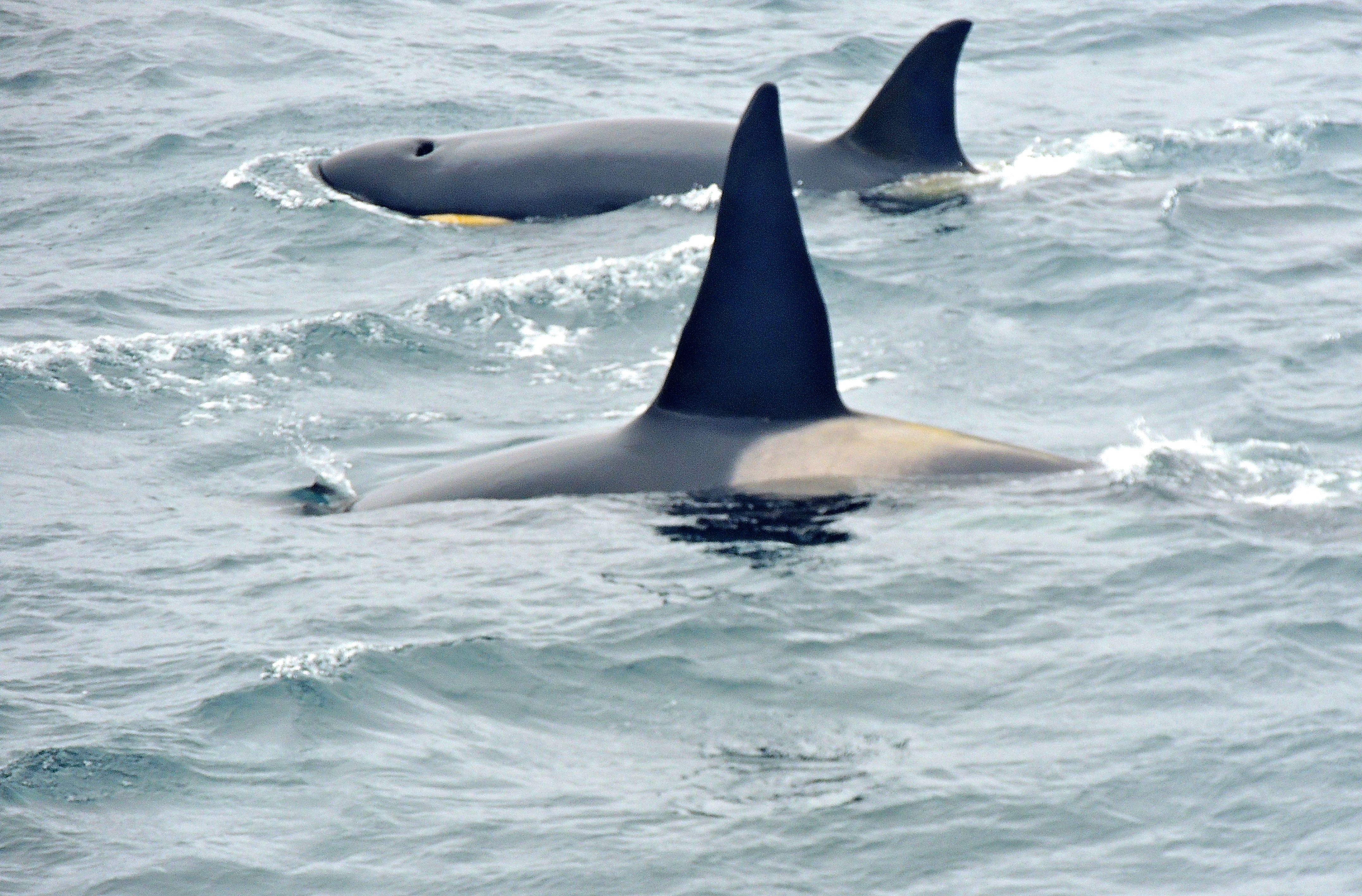 Orcas - Photo by William Young
Orcas - Photo by William Young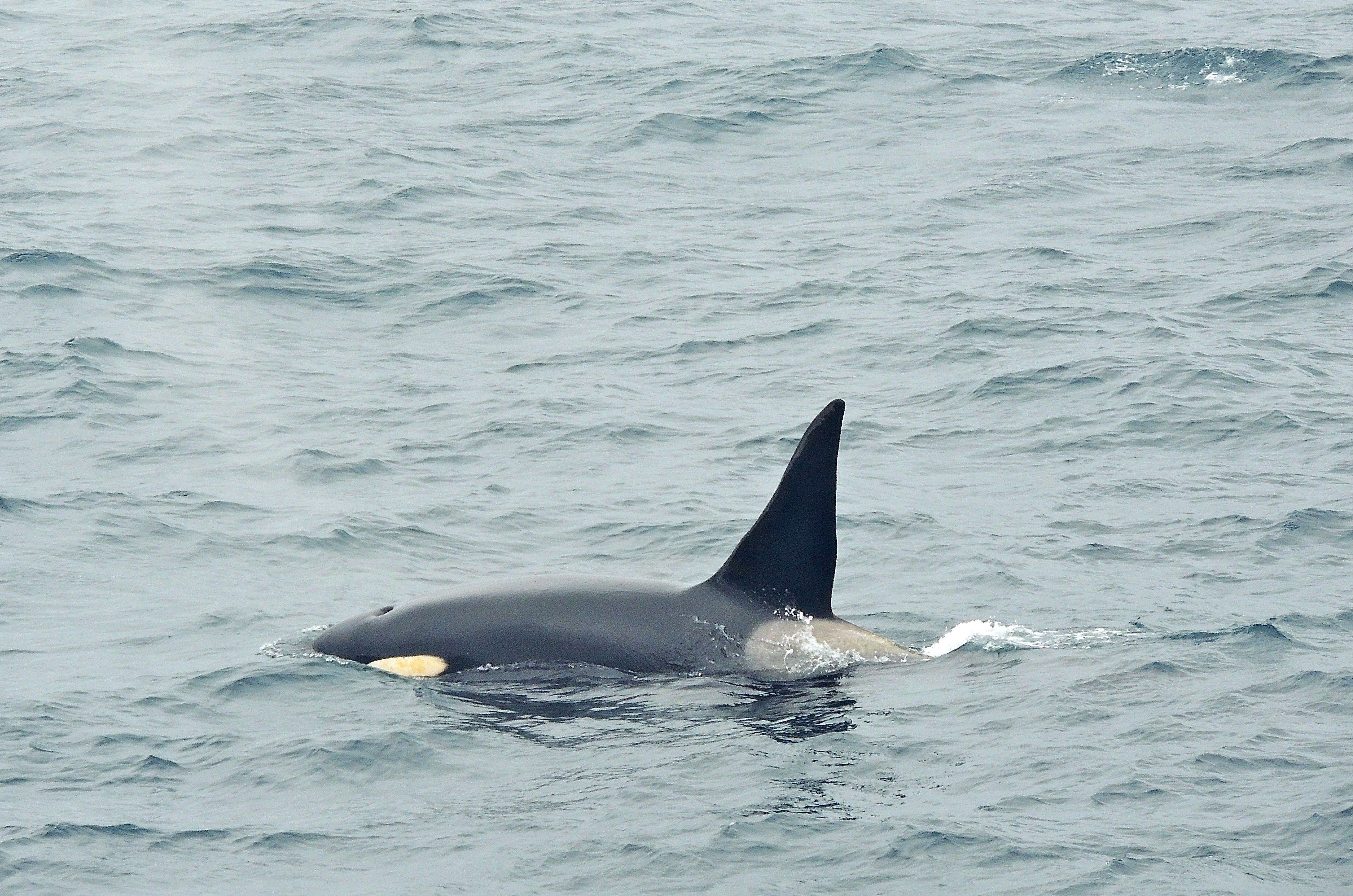 Orca - Photo by William Young
Orca - Photo by William YoungThe best whale watching experience was from a zodiac in the Weddell Sea. We went to within 30 yards of some Humpback Whales. We were close to them when they blew and raised their pectoral fins. One was logging in the water, which means lying near the surface like a log. We also got to within ten yards of a Minke Whale, the smallest whale we saw on the entire trip. It has a very curved dorsal fin. This is the whale the Japanese are coming down to slaughter for "scientific purposes", at least to the extent that a taste for whale meat is scientific. Apparently, the treaty rules say that if you carefully record the details of what you do when you encounter and kill these animals, that satisfies the definition of scientific purposes. The Japanese pursue the Antarctic Minkes, because these whales are free of the toxins that are in the whales in northern waters. Minke Whales get their name from a Norwegian Captain Meincke who exaggerated about the whales he caught, so some people named the smallest whale in the area after him. We also saw some on our trip in the Beagle Channel. In the same waters were Sei Whales, whose dorsal fin is curved like the letter C. A Sei Whale skeleton was on a hill on Saunders Island. Right Whales were named because they were easy to catch and provided a lot of baleen and oil. When you kill one, it floats rather than sinks.
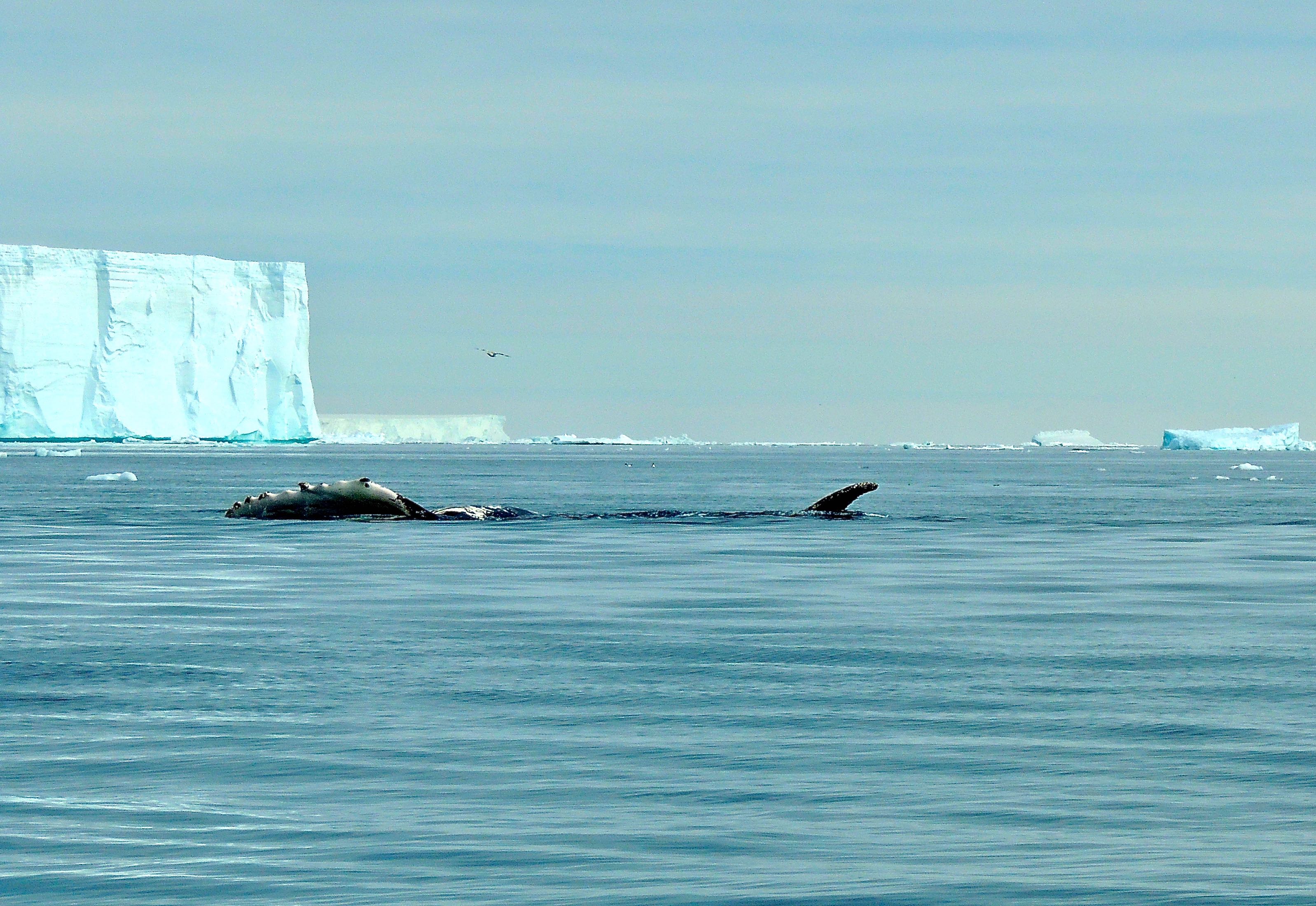 Humpback Whale - Photo by William Young
Humpback Whale - Photo by William Young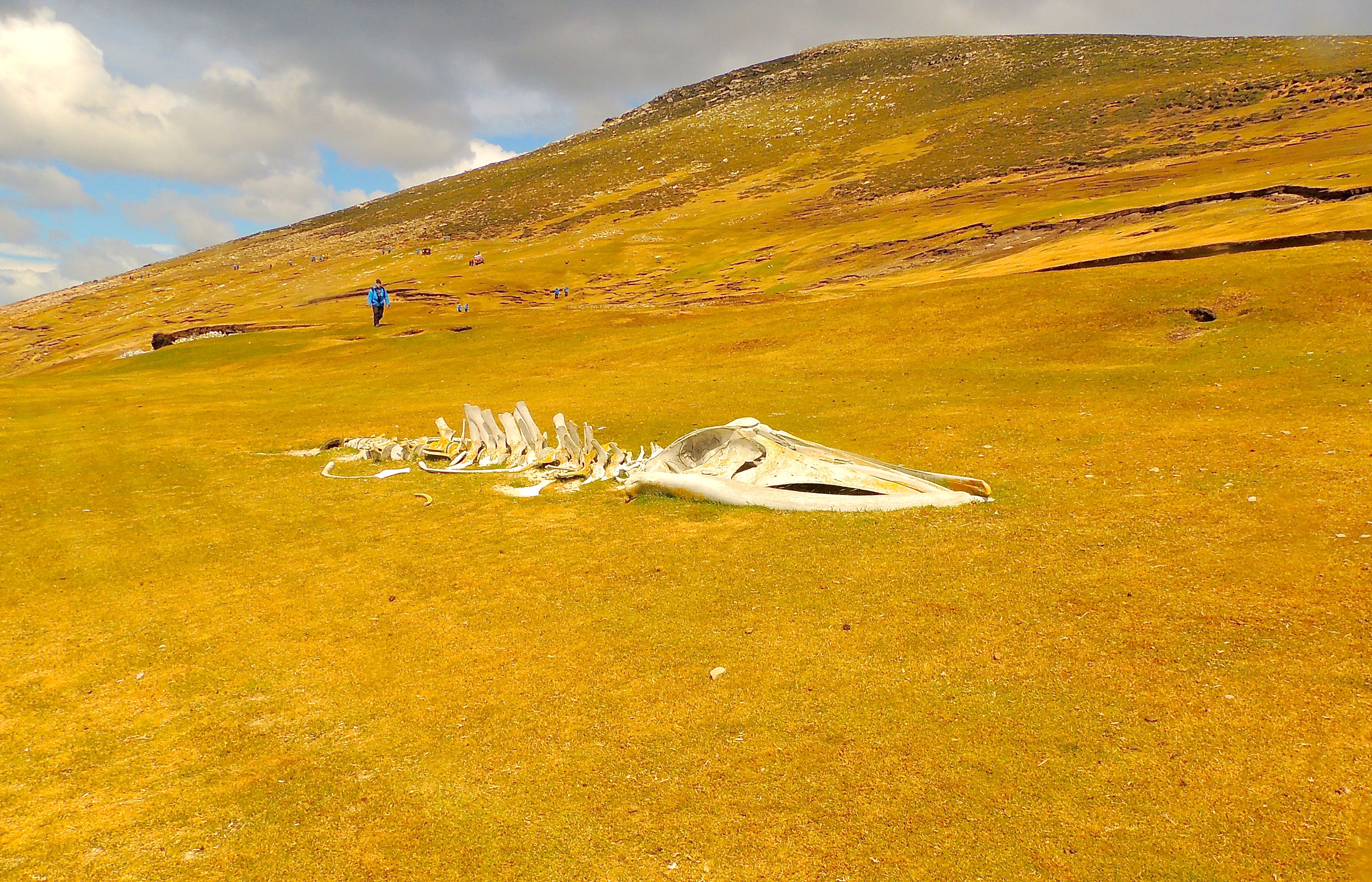 Sei Whale Skeleton - Photo by William Young
Sei Whale Skeleton - Photo by William YoungWe did not see many dolphins. The best look I had at any were some Peale's Dolphins by the side of our boat. I could see the black-and-white pattern on their body as they bow surfed. I expected more dolphins during the trip to bow surf, but not many did.
OTHER FLORA AND FAUNA
The structure of the trip did not allow me to spend much time looking at life forms other than birds and mammals. Most of the time, we were on the ship. When we took a zodiac to land, we generally stayed for two-to-four hours. One had to prioritize what one most wanted to look at, and usually, the flora and fauna other than birds and mammals were pushed to the side.
Perhaps the strangest life form on the trip was a tunicate, which I had never heard of. When we took the zodiac ride in the Weddell Sea, we saw what looked like a 25 foot rope in the water. It was identified by Rick Price, one of the oceanographers on the staff and the driver of a zodiac adjacent to ours. A tunicate is a marine invertebrate that early in its life has a rudimentary nerve cord. Sometimes, the small animals, who filter feed, join into a long colony such as the one we saw. Rick said that he has found smaller sections of these creatures on the beach. The body is slimy, and if you pick one up, you might need a couple of days to get the slime completely off of your hands. (Rick subsequently sent me an email that the species name was Distaplia cylindrica.) Tunicates might be a link between the invertebrates and the vertebrates. The following day, Rick showed us a large marine isopod called a Glyptonotus antarcticus. It looked like a giant cockroach, and the species can grow to be 3.5 inches, which is large for an isopod.
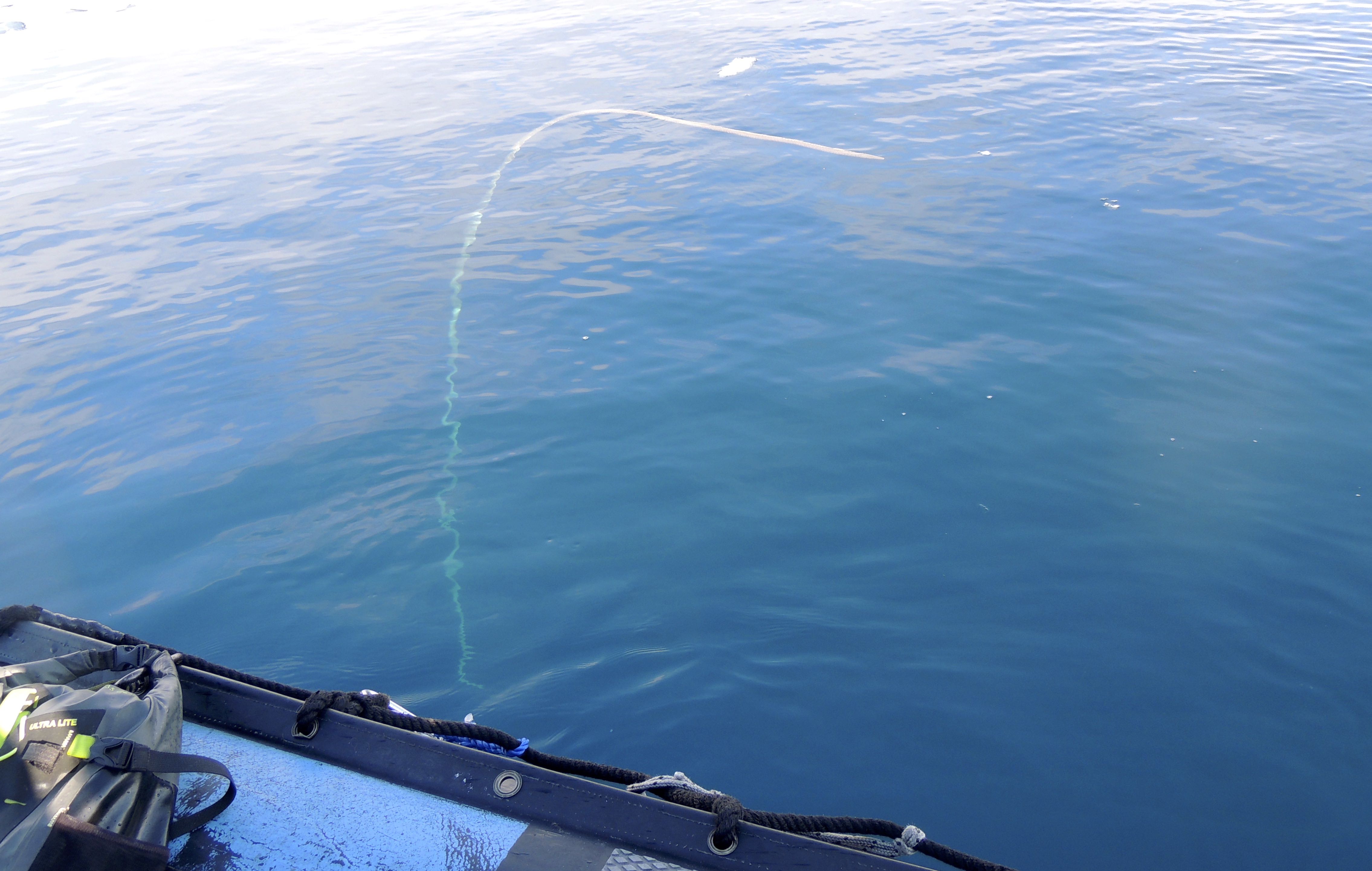 Tunicate - Photo by William Young
Tunicate - Photo by William Young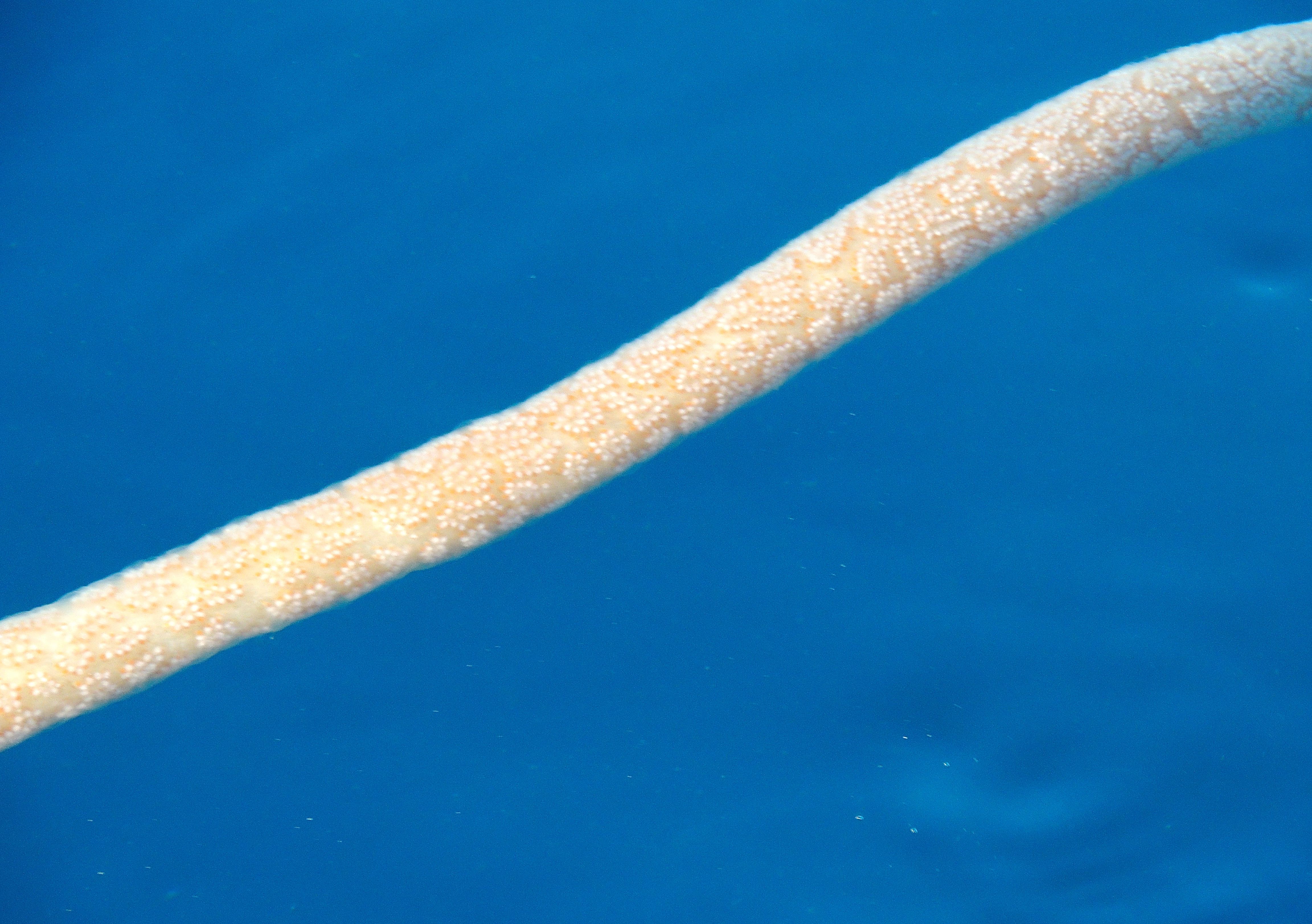 Tunicate - Photo by William Young
Tunicate - Photo by William Young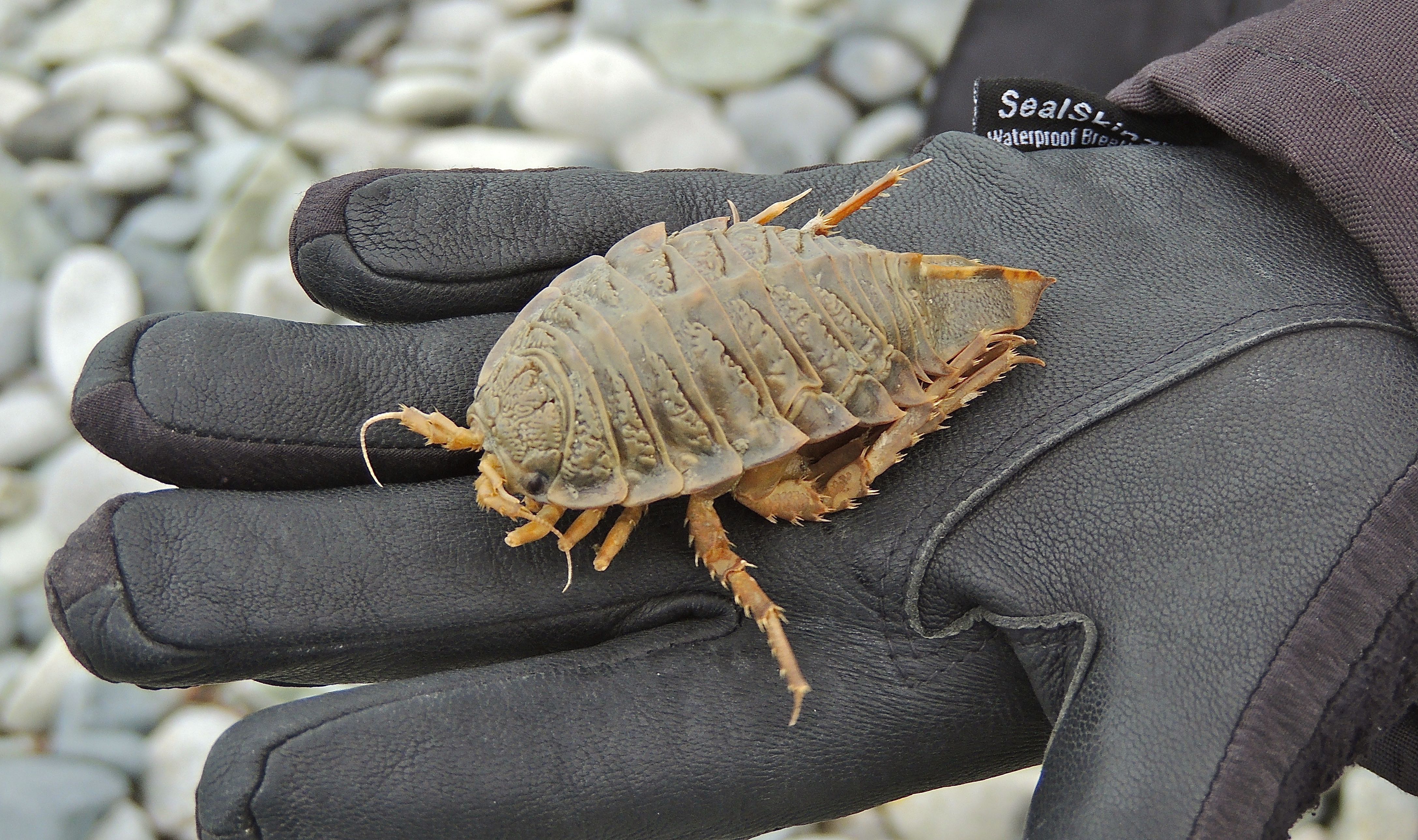 Glyptonotus antarcticus (dorsal) - Photo by William Young
Glyptonotus antarcticus (dorsal) - Photo by William Young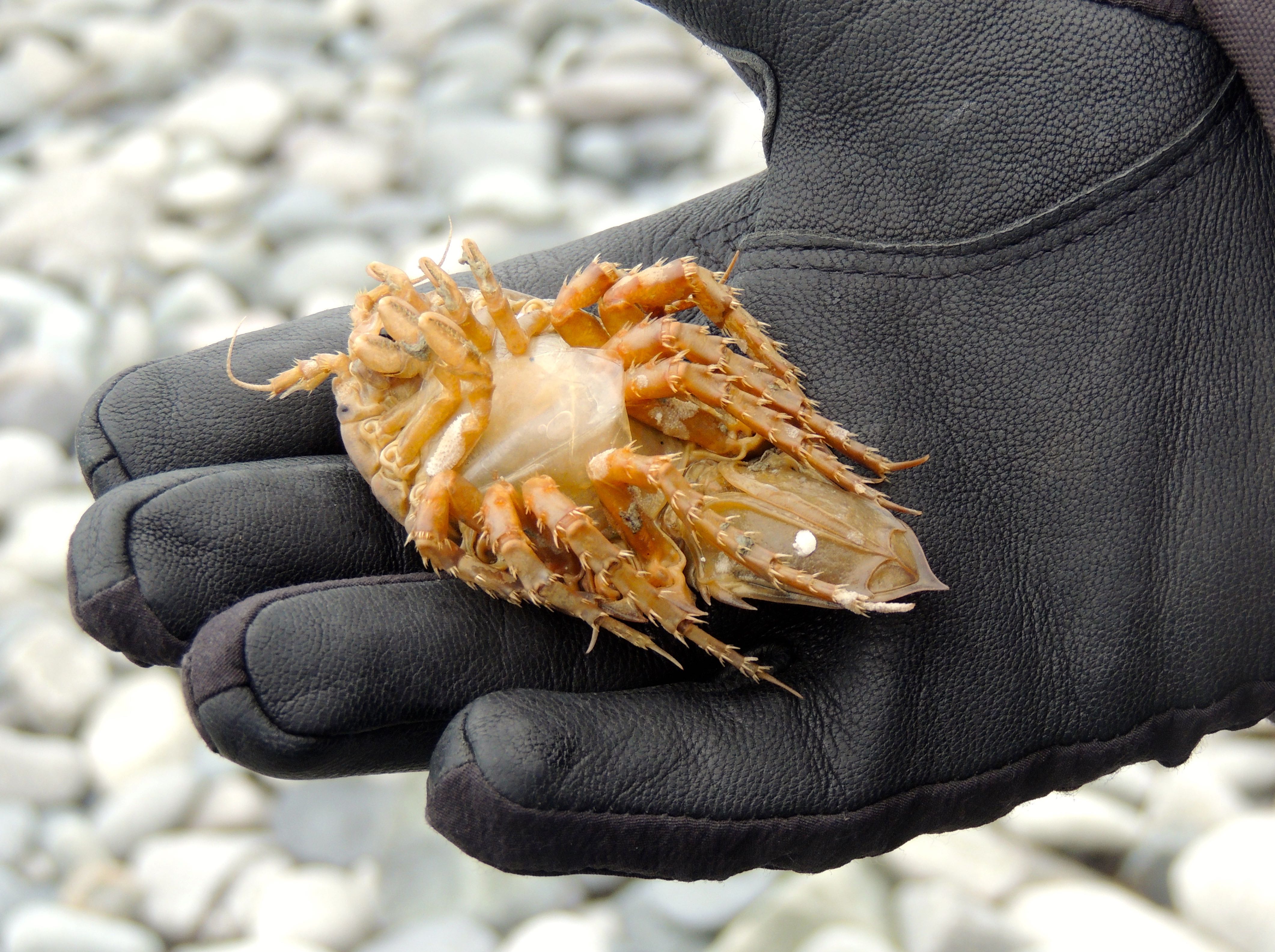 Glyptonotus antarcticus (ventral) - Photo by William Young
Glyptonotus antarcticus (ventral) - Photo by William YoungIn Buenos Aires at South Beach, we saw a Tegu, who is a medium-sized lizard. It looks like a monitor lizard, but it is not closely related to them. From nose to tail, it was about two feet long. It was dark gray with dirty white spotting. In the hot weather of Buenos Aires, we saw quite a few butterflies and dragonflies. Included among the butterflies were Monarchs. Their range is widespread. I saw the same species in Australia, where they are called Wanderers. At Otamendi, there were orange butterflies who appeared to be Gulf Fritillaries. I photographed one on a thistle plant. I did not have a book for identifying dragonflies, but I saw some who looked like the skimmers and others who looked like amberwings.
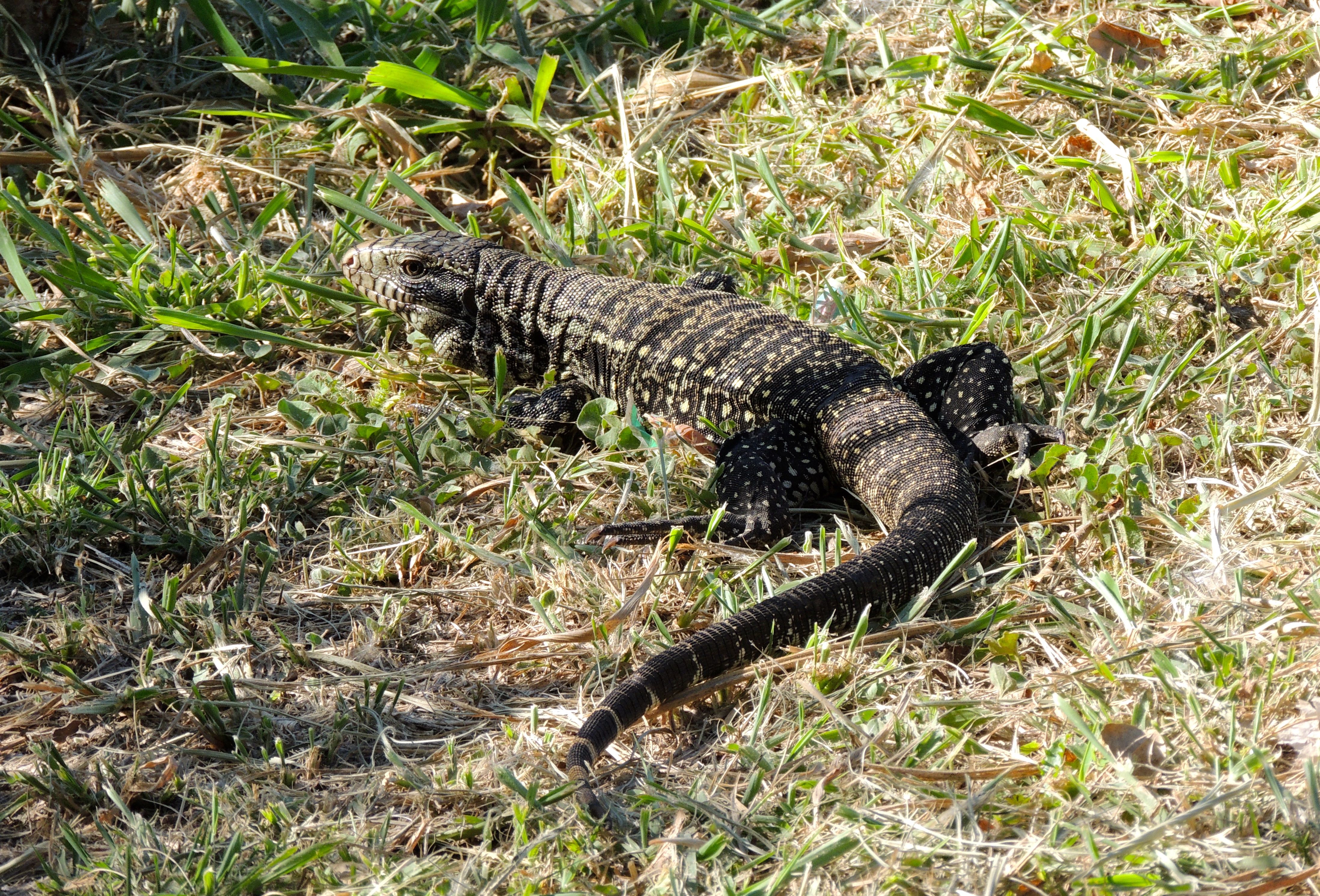 Tegu - Photo by William Young
Tegu - Photo by William Young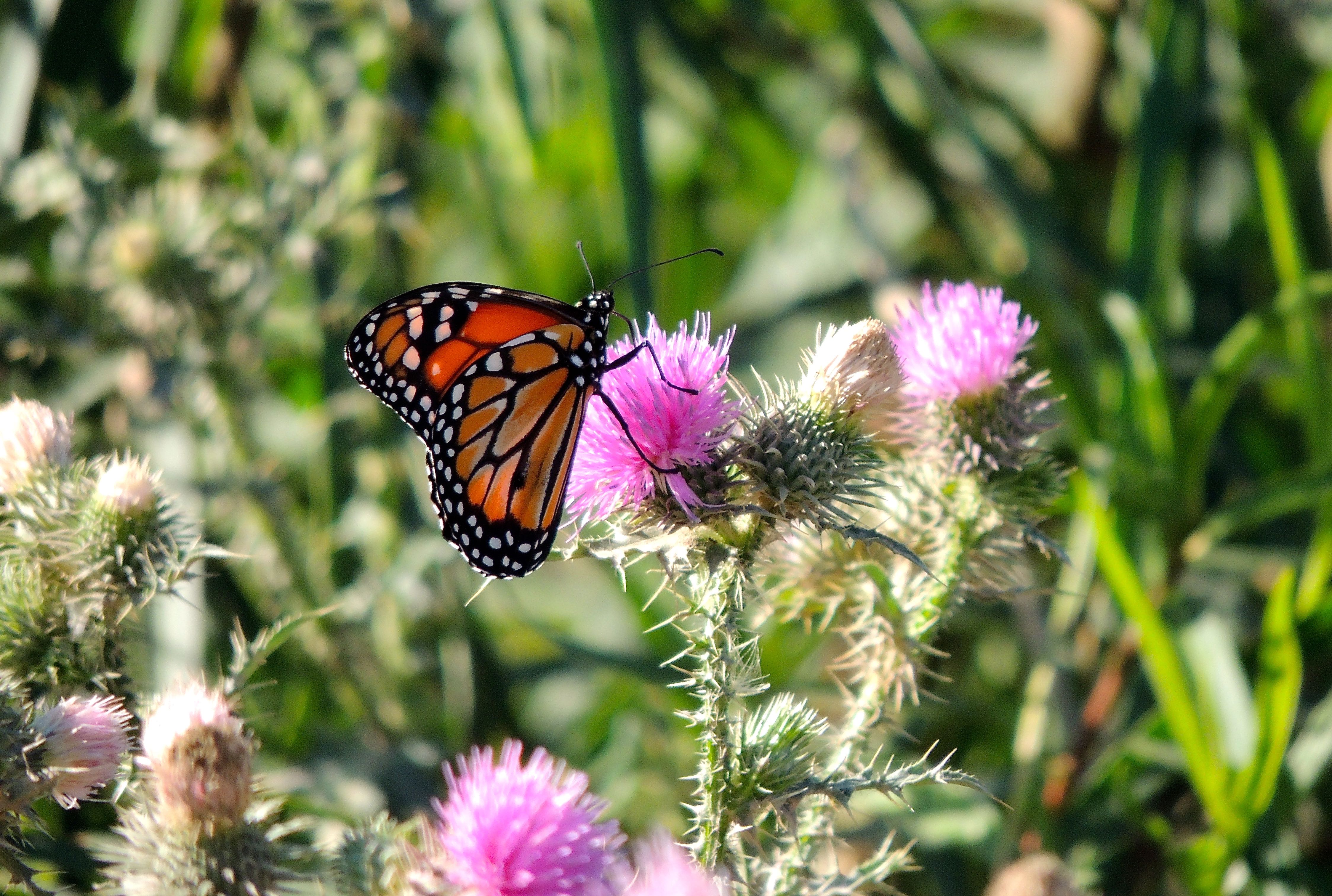 Monarch - Photo by William Young
Monarch - Photo by William Young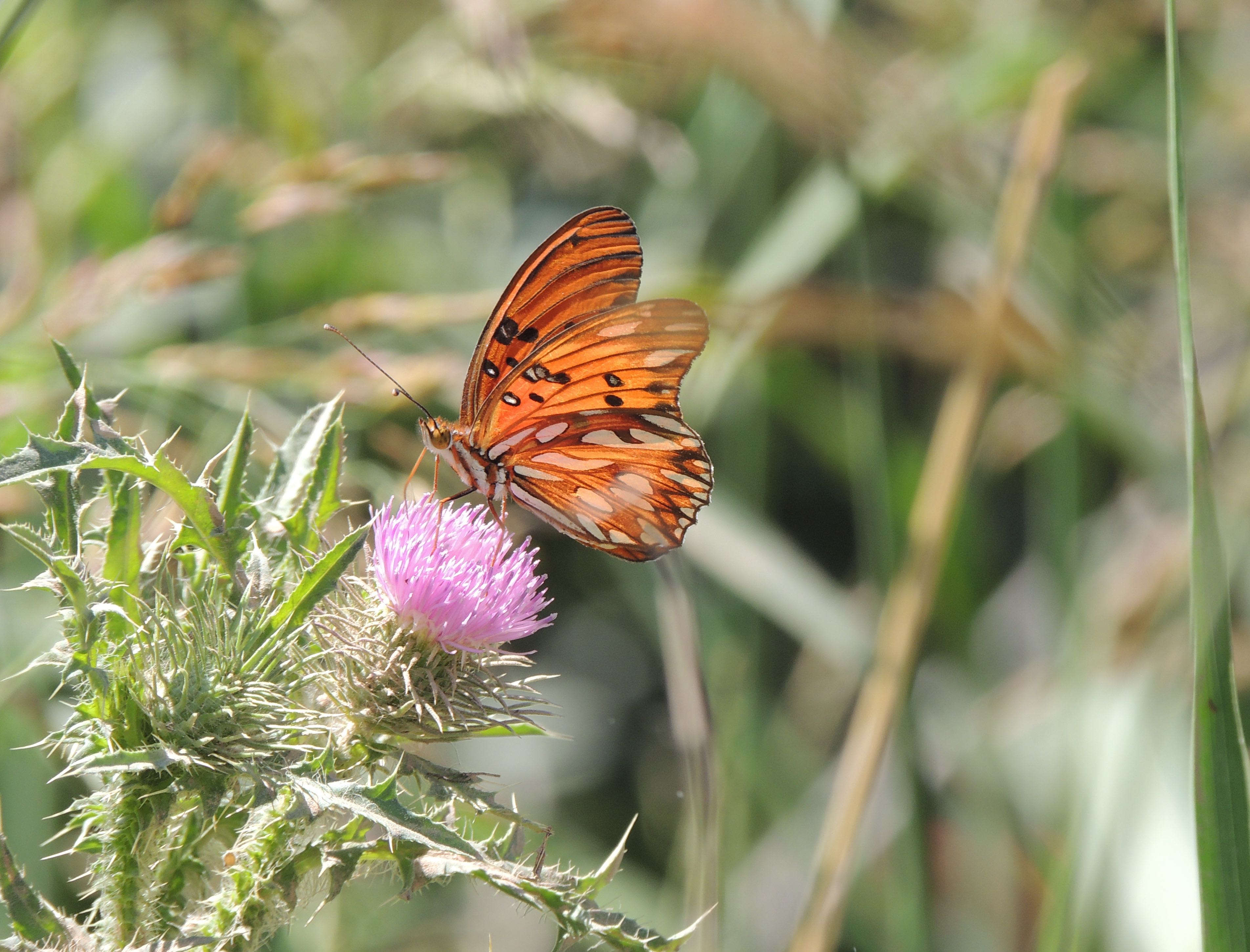 Gulf Fritillary - Photo by William Young
Gulf Fritillary - Photo by William YoungUshuaia is filled with lupines. They are tall upright flowers that come in many colors. In the same family is a yellow plant called Broom, which was in a lot of yards. At the park at South Beach, we saw the plant Parkinsonia aculeata, which is also called the jelly bean tree. It has yellow flowers and is an introduced species. Along the paths near the lodge in Ushuaia, there were a lot of white flowers called dog orchids, which look a little like trilliums. If you looked at one of these flowers from a certain angle, you could see what looked like the face of a dog. In the same general area were yellow orchids that were not yet in bloom. Also, there were a lot of buttercups in the areas next to the path we were on. Dandelions were fairly common. In the town, there were many large red poppies, and one garden had a lot of them, with forget-me-knots sprinkled in.
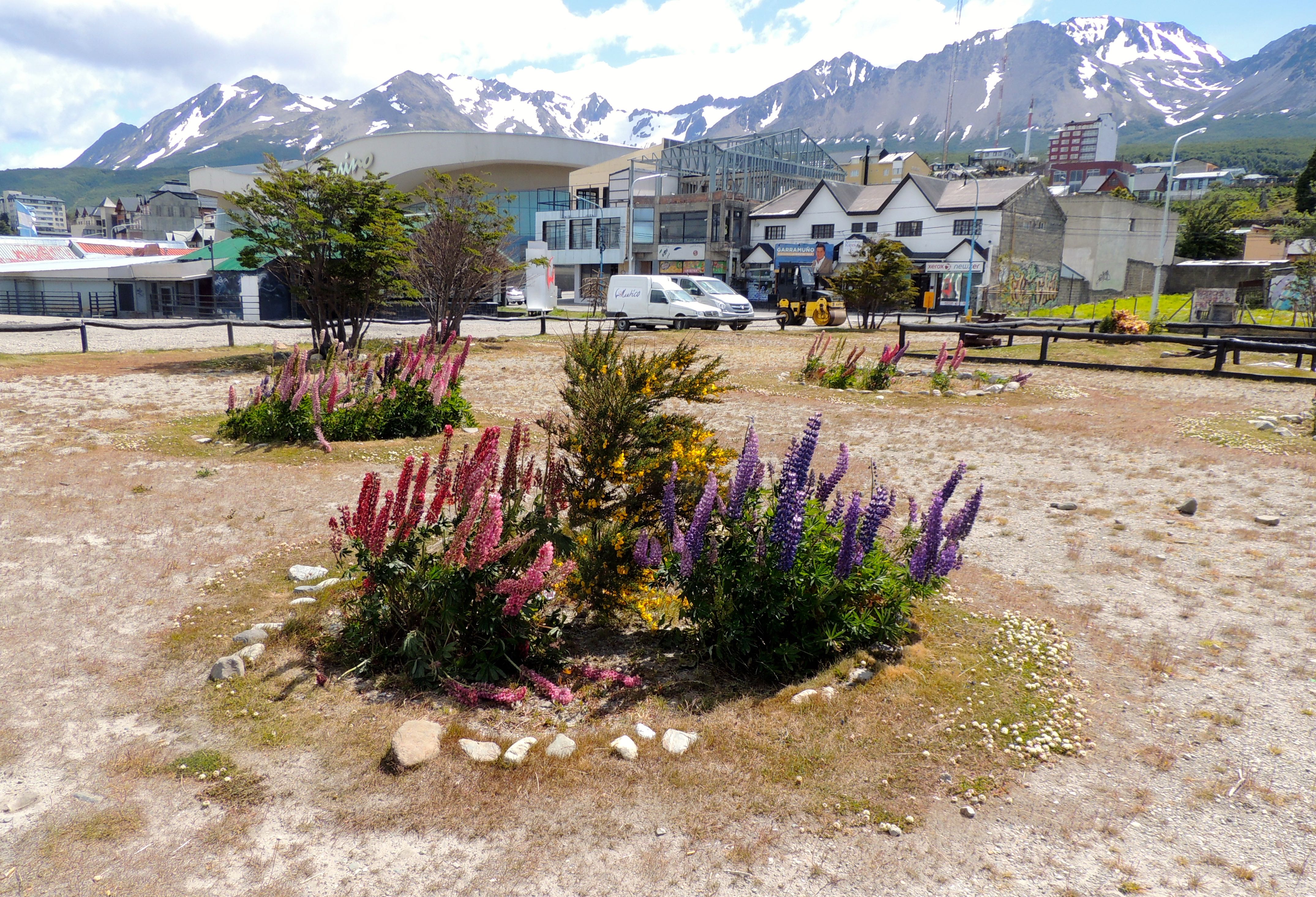 Lupines - Photo by William Young
Lupines - Photo by William Young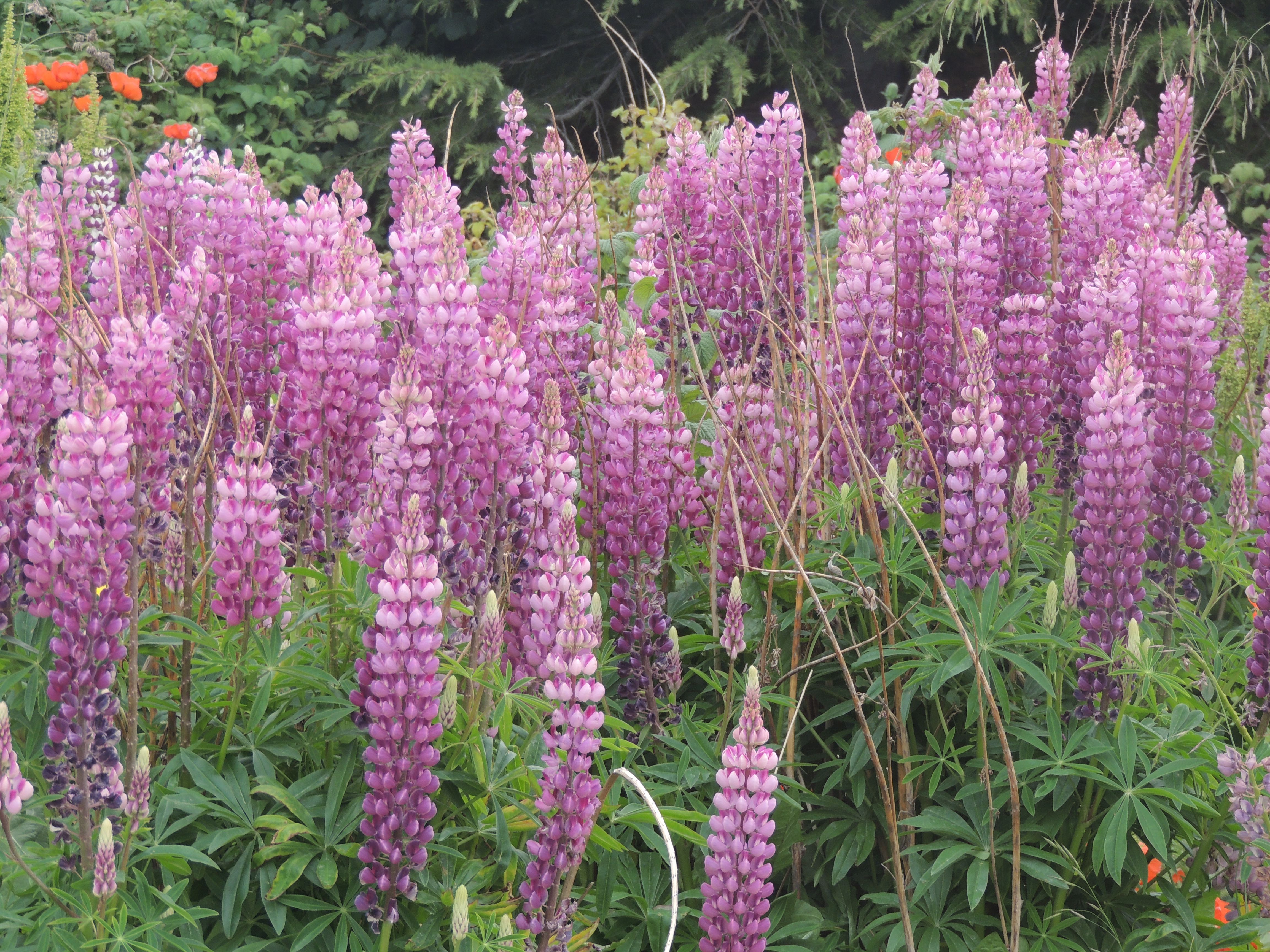 Lupines - Photo by William Young
Lupines - Photo by William Young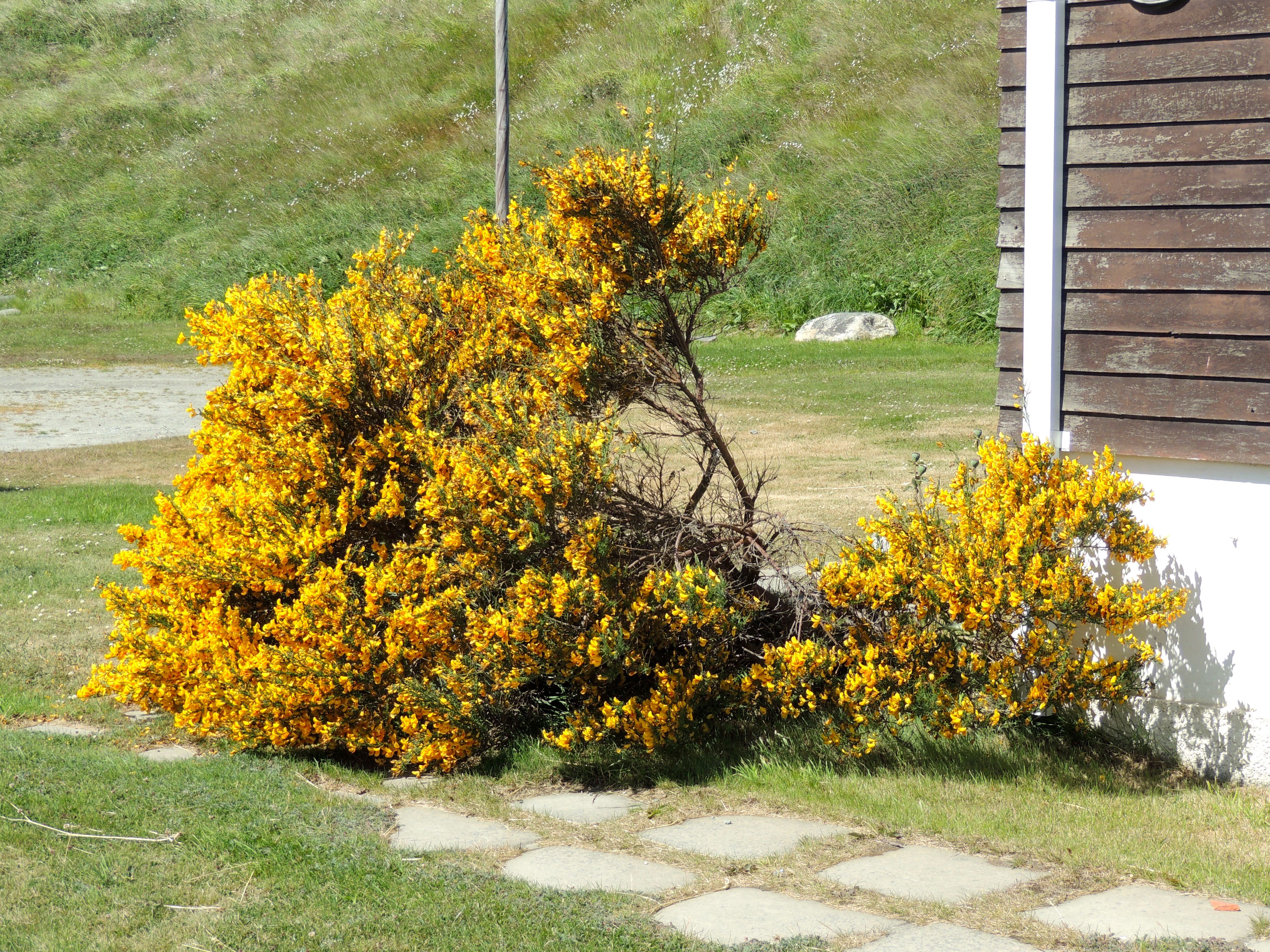 Broom - Photo by William Young
Broom - Photo by William Young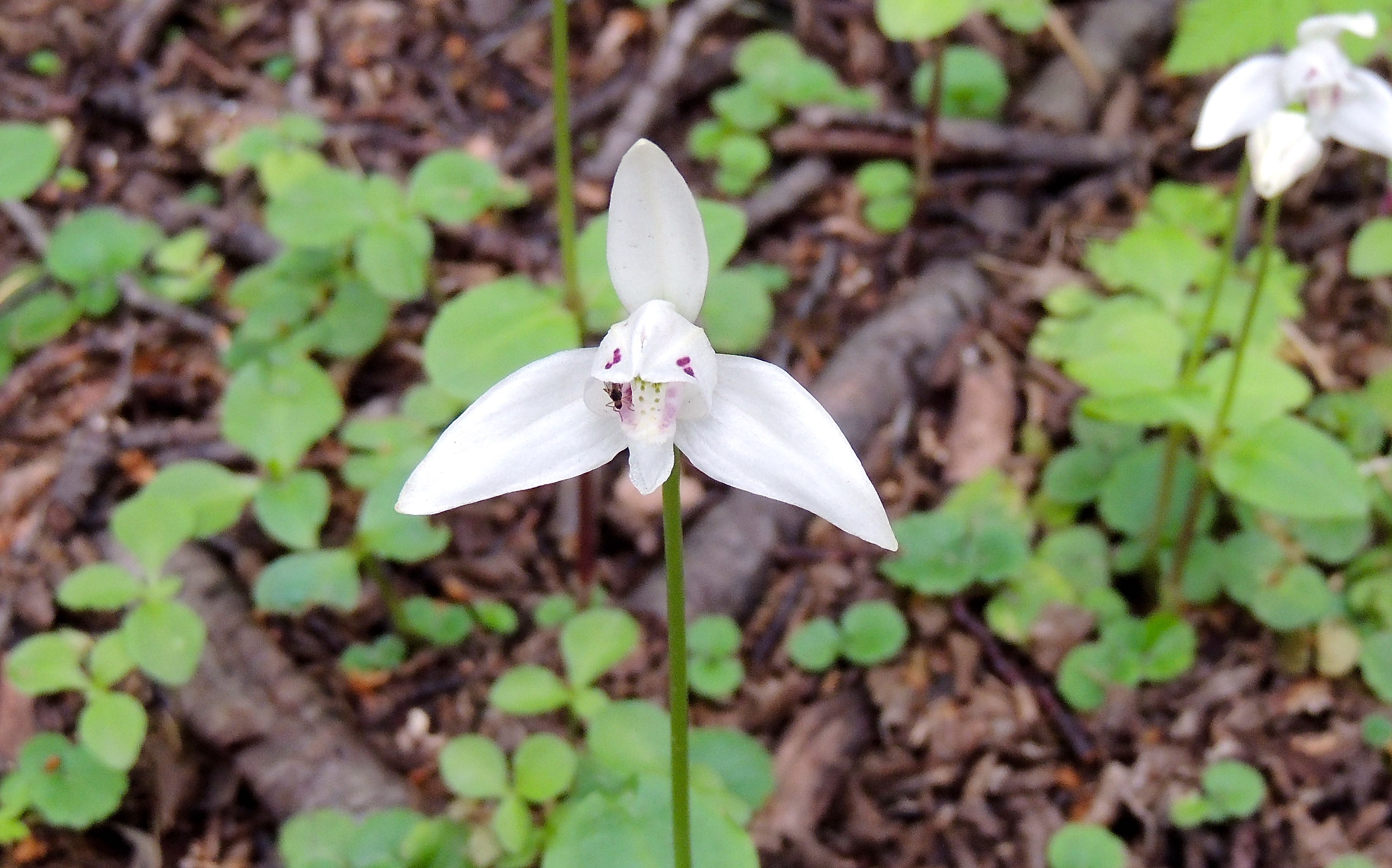 Dog Orchid - Photo by William Young
Dog Orchid - Photo by William Young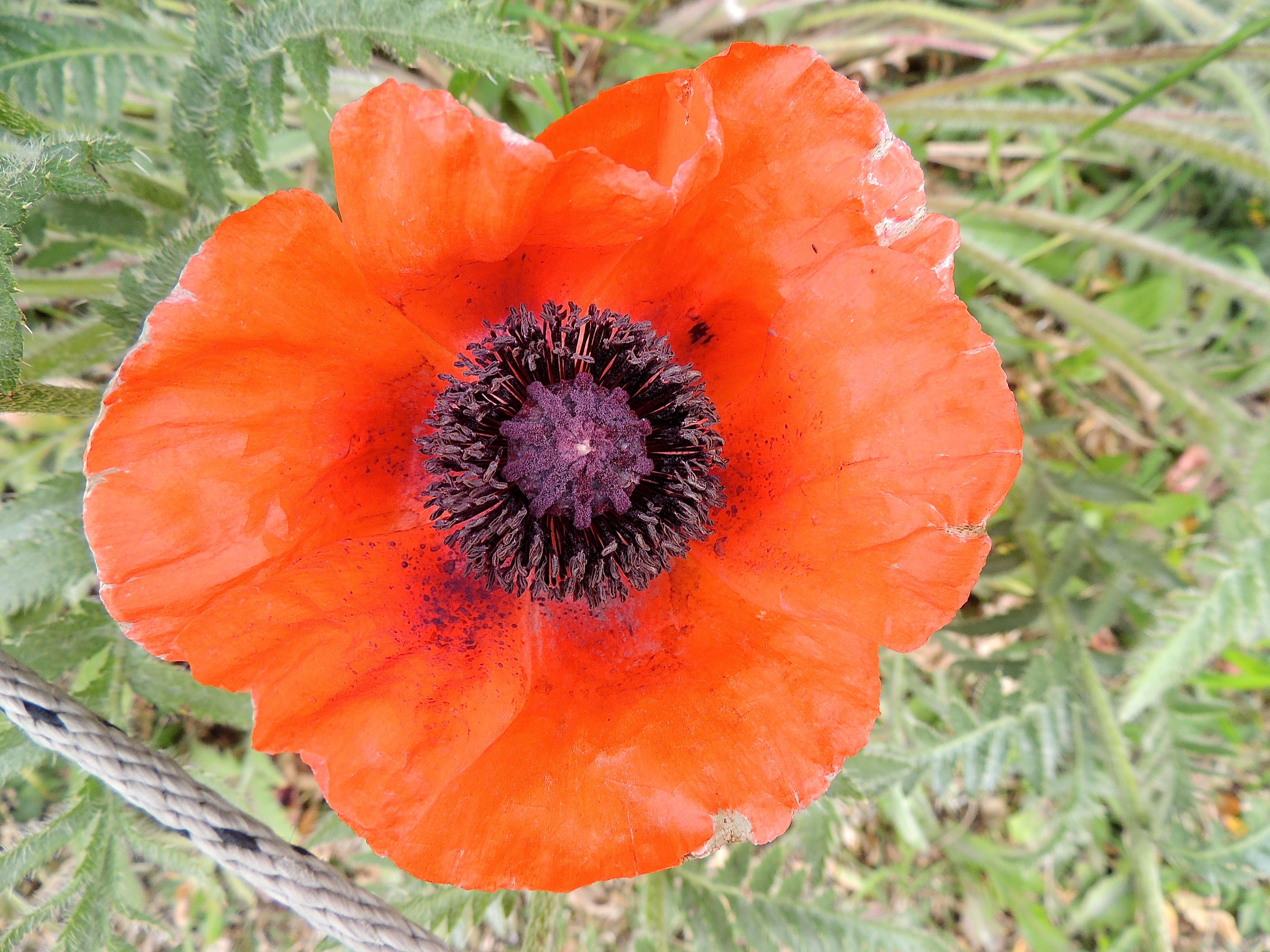 Ushuaia Poppy - Photo by William Young
Ushuaia Poppy - Photo by William YoungAt Tierra del Fuego, Jim Wilson showed us the large roundish burrs on beech trees as well as the fungus that causes them. The fungus is a small yellow ball with holes in it. At Saint Andrews, we saw an herb with small round reddish flowers called Greater Burnet. We also saw a type of green-and-orange moss called Cononstomum pentastichum. The hills were covered with Tussock Grass, which grows in large clumps. In the Falklands, we saw some sea cabbage growing in the sand.
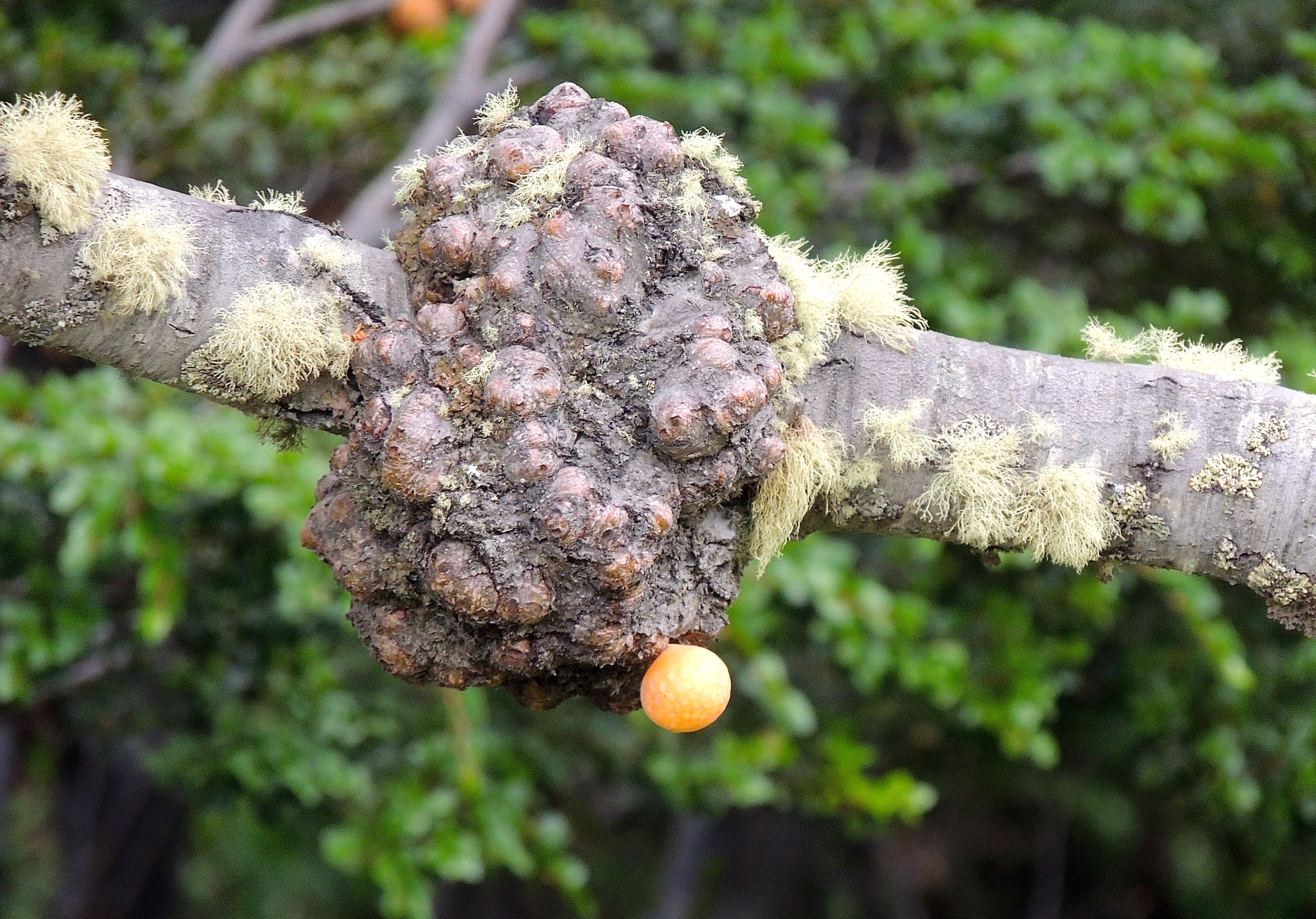 Burr Fungus - Photo by William Young
Burr Fungus - Photo by William Young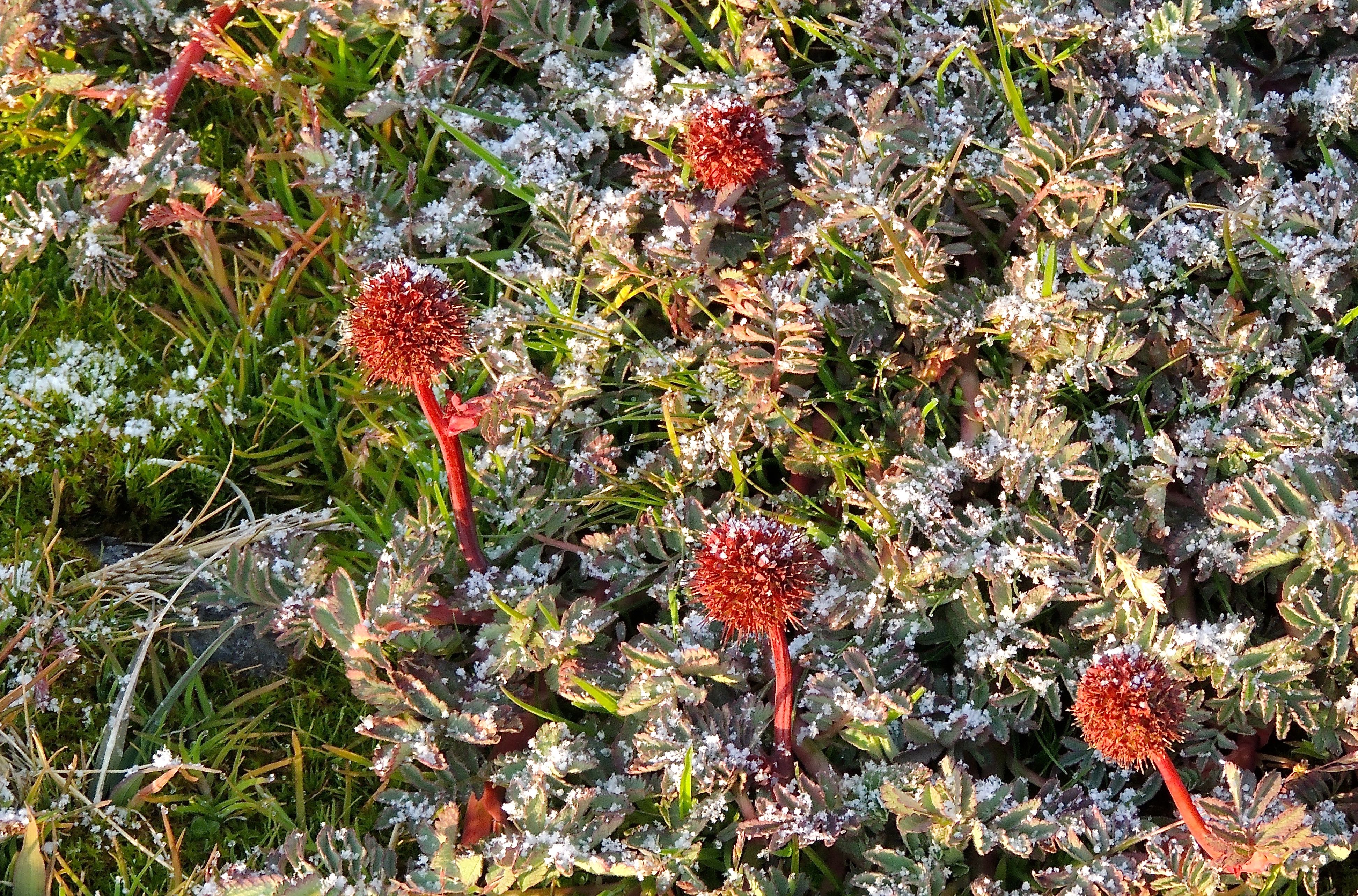 Greater Burnet - Photo by William Young
Greater Burnet - Photo by William Young Cononstomum pentastichum - Photo by William Young
Cononstomum pentastichum - Photo by William Young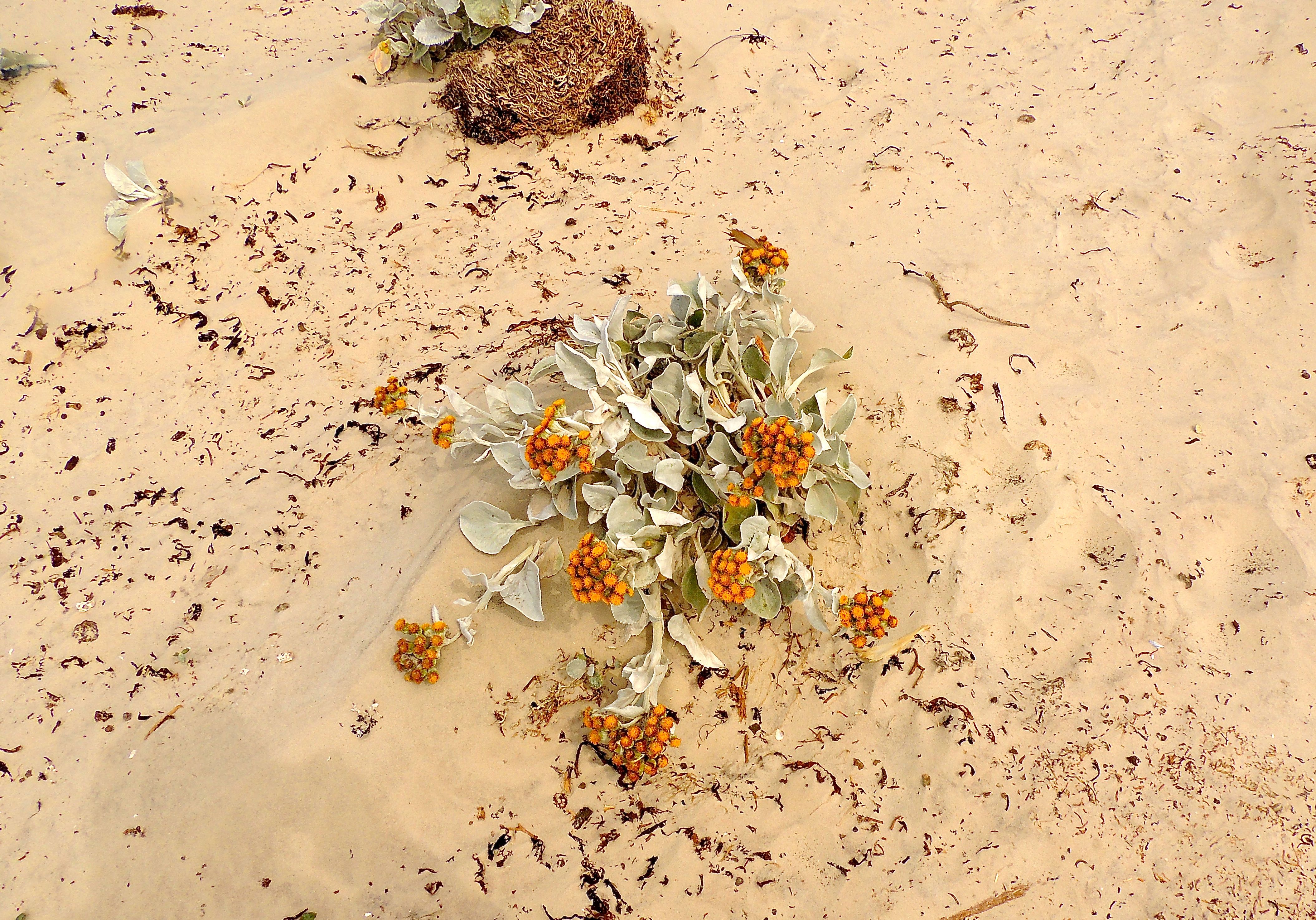
GENERAL COMMENTS
It is difficult to convey an accurate impression of this expedition without making everyone want to go or nobody want to go. People who see the photos of the magnificent wildlife might want to rush out and book a trip as soon as possible. However, there were aspects of the trip that might scare a lot of people away. The seas were choppy a lot more often than they were calm. I do not have problems with seasickness, but many people on the ship got seasick and experienced many days of discomfort. We were at sea for more than 16 days, and if you add up all of the time of our zodiac trips, they probably amounted to about one day. Some people started to get seasick as soon as we left Ushuaia, because the conditions were very windy and choppy. Barf bags were wedged between the railings and the walls in the halls in case someone got sick outside their cabin. Many people on the trip wore anti-seasick patches throughout.
Not everyone managed to safely get through the trip. On our zodiac trip to Saunders Island in the Falklands, which was the first of the expedition, the beach was extremely windy. The wind was not as strong when we walked up a hill that was not very steep or difficult to climb. However, one of the people on our trip went into cardiac arrest. I did not want to look at the efforts to revive him, but when I got a quick glimpse, I could see that the man's eyes were rolled back in his head as the staff administered intensive CPR. Other people who watched more than I did said they thought the man had little chance to survive. But to the enormous credit of the Zegrahm staff, they revived him and stabilized his condition. Saunders Island has no medical facilities. Russ Evans, the expedition leader, is from Saunders Island, and his mother had planned to bring around a vehicle with souvenirs and postage stamps for the people on our expedition to purchase. Because of the emergency, she instead had to drive the vehicle slowly up the hill to pick up the man who was being treated. She drove him to a spot where a helicopter could pick him up and transport him to the capital of Port Stanley, which likewise has few medical facilities. From there, he was airlifted to a hospital in Santiago, Chile, where he was treated before eventually being put on a flight back to his home in California. The way the Zegrahm staff handled this emergency was remarkable. This incident sent a message that the people in charge of the expedition were extremely competent, extremely prepared for all eventualities, and willing to do anything up to and including saving the life of a passenger if necessary.
The ship was the Sea Adventurer, and it held about 200 people, including the passengers and staff. I roomed with Paul, and while our room was not large, it was comfortable and larger than I expected. We had a porthole in our room with a window, but it was bolted shut at the beginning and end of our trip as a precaution while going through the potentially rough seas in the Drake Passage. There have been incidents in the past with windows exploding inward. We had our own bathroom with a shower, and we could drink water from the bathroom tap. There were blue non-skid mats on the bathroom floor. Taking a shower could be a challenge when we were in rough seas. Because there was a hole in the ledge on the floor between the shower and the rest of the bathroom, the water would sometimes slosh into the other section near the sink when the boat was rocking. The air in the cabin was pretty dry. Sometimes, the captain would try to keep the temperature of the boat low to help those who were seasick. The steward for our room was a young man from the Philippines named Mark. He was pleasant, and he called the two people in our room "Sir Bill" and "Sir Paul." That took a little getting used to, but he was doing it out of respect. At times, it made me feel as if I had been knighted.
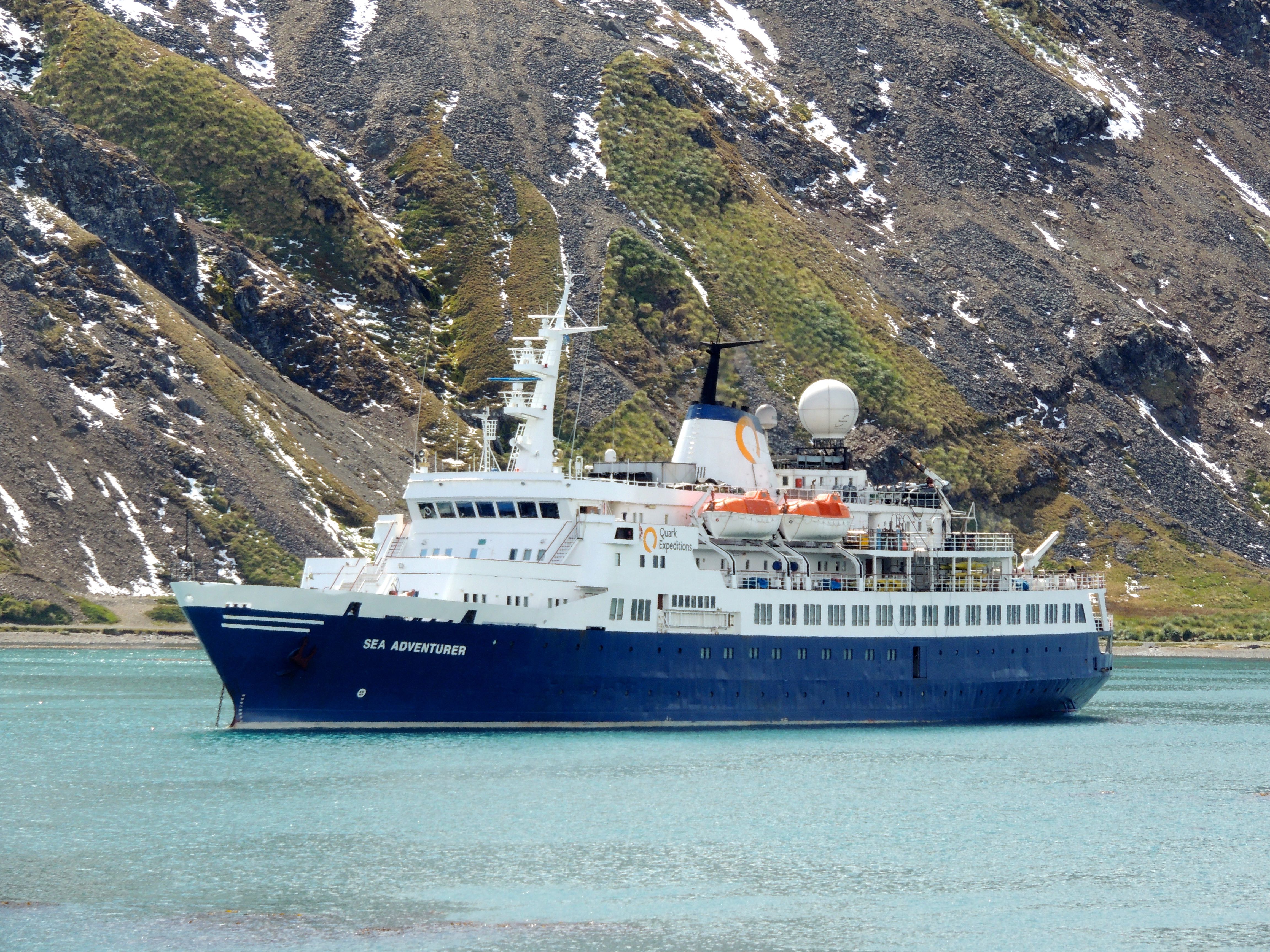 Sea Adventurer - Photo by William Young
Sea Adventurer - Photo by William YoungSimply walking while on the ship took a lot of physical effort and diligence, because on a rocking boat, every step you take is treacherous. I had to hold tightly onto railings in the halls and on stairways. Grabbing a rail takes much more exertion than lightly holding it, because you need to flex your muscles. Going from bed to the bathroom in the middle of the night was even more treacherous, because there were no railings, and the room was dark. One night, I was thrown out of bed by a wave. I asked Fiona, the ship doctor from Wales, if many people had been falling, and she said only a few. Many people did not so much walk down halls as careen. A lot of us began to walk like penguins, with feet spread widely apart, taking short waddling steps to maintain our balance.
Mealtimes could be challenging. The chairs and tables in the dining room were bolted to the floor so they would not slide, and the tables were covered with non-skid rubber mats similar to the ones on the bathroom floor. The mats did not always prevent glasses and plates from flying around. One night at dinner, Paul had a glass of red wine with dinner that flew into his lap. (I suggested that it would have been better had he ordered the white wine.) On certain evenings that were especially choppy, wine was served in tumblers rather than wine glasses with stems to make them less likely to spill. The waiting staff was much more accustomed to walking under these conditions, and they did not have nearly as many problems walking around the dining area as the guests. The food was outstanding throughout the trip, and Zegrahm kept us well fed. For the breakfast buffet, there was hot and cold cereal, fresh fruit, cheese, salmon, yogurt, toast, breakfast meats, baked beans, potatoes, and omelets. You could order eggs from the kitchen, and each morning, there was a special from the kitchen, such as crêpes or waffles. The food was well prepared and presented. Lunch was also buffet style, with a number of entrees and vegetables, a cheese plate, fruit, salad, and dessert. You could also ask for soup. Dinner was not buffet, and there were four entrees from which to choose. You also on any night could have a piece of salmon or a chicken breast. There was a choice of two types of soup and a salad. On any night, you could order a garden salad with a choice of four kinds of dressing. I preferred the buffet lunches to the fixed dinner meals. The lounge always had two plates of cookies — chocolate chip and sugar — 24 hours a day, as well as coffee, tea, and cocoa.
The waiting staff was friendly and efficient. If someone tended to order the same thing on subsequent days, such as a particular type of salad dressing or omelet, the staff would remember. The dining room was in the stern of the ship. I liked to sit at a large table toward the back near a window so that I could look out the back of the boat. That was one of Olga’s tables, so I got to know her quite well. She is from Odessa in the Ukraine. I spent a lot of time talking to her, and one of the things that interested me was the logistics for the trip, which were daunting. The ship needed to have all of the food required for 19 days, because there was no place to buy any. The only exception was when we stopped at Saunders Island and our expedition director picked up some Falklands lamb for one of our dinners. Everything else that passengers ate was on the ship when we left Ushuaia. Somehow, we managed to have fresh lettuce at dinner on the final night. We had bananas until about Day 15.
An outstanding feature of the trip was the lectures, and it was like being back in college for three weeks. The staff had an ornithologist, a geologist, two experts on oceanography, a historian, a story teller, and assorted others to keep us entertained and informed. The talks were given in the lounge and were shown on one of the TV channels that could be seen in each cabin. Sometimes, it was difficult to stay awake during the talks because of the drowsiness induced by the rocking of boat, not because the talks were not stimulating. My favorite tidbit of information came from Tom Sharpe, the geologist who talked to us about the rocks and ice in the places we visited. He said the Falklands at one point in geologic history had broken off from the southeastern part of South Africa and gradually drifted around to where they are now. That means that South Africa probably has a more valid claim to them than either the UK or Argentina. The ornithologist Jim Wilson showed a news article about an attempt to introduce King Penguins in 1936 to the island of Røst in the Lofoten Islands north of the Arctic Circle in Norway. I was especially interested in this, because I once visited Røst. Rick Price, a marine biologist and former BBC underwater cameraman, told a story about someone who had a teddy bear which she photographed in various parts of the world, so she brought it on an Antarctic expedition. When she put it down and turned around to get into position to take the photo, a skua snatched the teddy bear and flew away with it. A year later, someone found the bear, which by then was very dirty and disgusting. Rick recounted the story about how he cleaned it up and eventually returned it to its owner, who lived not far from his home in England. Conrad Field, a knowledgeable biologist and talented artist, told a lot of stories about his field research over the years, especially at meals. When he spoke to the entire group, he enlivened his presentations by imitating the sounds that some of the creatures make. He also said more than once when talking about the destruction of wildlife by many of the explorers that the technology to exploit a species develops faster than the knowledge of its life history.
The lounge was also used for meetings before dinner to present a summary of the events of the day and to preview the upcoming day. One afternoon, there was a contest to see how much information people had absorbed from the lectures. My team won, getting 21 out of the 25 questions correct. The prize was a Zegrahm baseball cap and two tickets for free drinks at the bar. Sometimes, movies would be shown. People could watch the Kenneth Branagh movie about Ernest Shackleton — it was shown in two parts on consecutive nights. Another film was The Big Year, which I had not seen previously. The lounge was also used for presentations about the effort to prevent the introduction of invasive species into the areas we visited. There are guidelines that have been established by a group called the International Association of Antarctica Tour Operators, and one of the requirements is education sessions for visitors. We had our clothing and other gear vacuumed, and then we had to dip it into a disinfectant called Virkon. We dipped our boots in Virkon before and after every landing if we had multiple landings in an area. South Georgia has had serious problems with rats, and a representative from the museum in Grytviken came onto our ship and gave an excellent talk about the eradication program. I later saw her working in the gift shop when I went there.
The air temperature usually was not especially cold. However, the wind was so intense that staying warm was difficult. My body is not well insulated, and so I had to really bundle up. I once calculated how many items of apparel I was wearing, and I came up with 26:
2 Overshoes
2 Hiking Boots
2 Undersocks
2 Wool Socks
1 Pair of Rain Pants
1 Pair of Jeans
2 Pairs of Thermal Underwear
1 Pair of Underwear
1 T-shirt
1 Thermal Shirt
1 Turtleneck
1 Flannel Shirt
1 Fleece Vest
1 Fleece Jacket
1 Parka
1 Scarf
1 Wool hat
2 Gloves
2 Under Gloves
26 Total ItemsOne morning when I was wearing most of this clothing, Russ, the expedition director from the Falklands, came onto the deck — wearing a t-shirt. Conrad, who is from Alaska, often was on the deck wearing only a hoodie over his shirt. People from cold climates are better able to deal with cold weather, but I still found their small amount of clothing rather startling. Part of the cost of the trip was a blue parka supplied by Zegrahm. I bought a medium, but I probably should have bought a large. It had small pockets, and the sleeves were not well insulated. Most people on the trip had these, and it was odd to see everyone in the group looking pretty much the same when we were outside.
I spent a lot of time outside on the deck. For most people on the trip, there were stops at the Falklands, South Georgia, and Antarctica, with long sea journeys in between to get back and forth to these places. For me and some of the other birders, this was a 16-day pelagic trip, with stops at places to see bird colonies. My cabin was on the bottom deck. The best places to watch birds were either two, three, four, or five flights of stairs up. Walking up all those stairs really built up my thighs. When the weather got snowy or foggy, I would stay in an area of the deck that was sheltered. Standing outside could be difficult, because the deck was slippery when it had water or ice on it. I usually would try to position myself so that I was leaning on or holding a pole or railing. The birders usually came out early in the morning and stayed out until the light was fading. I was surprised that there was not as much daylight as I anticipated. We were instructed to change our clocks six times during the trip so that we could make the most of the daylight we had. We moved our clock ahead an hour on three consecutive nights around South Georgia. After that, we set the clocks back an hour on three different nights to get back on Ushuaia time, which is two hours ahead of Eastern Standard Time in the US.
Before we got on the ship, we spent a couple of days in both Buenos Aires and Ushuaia. Argentina has about 40 million people, and about 14 million live in Buenos Aires. While driving into the city from the airport, we passed an endless array of apartment buildings. Argentina seems like a very bureaucratic country. It took us about 80 minutes to get through customs and all of the paperwork after our plane landed. When I wanted to change money, I was asked all sorts of irrelevant questions, including my marital status. The street on which our hotel was located was very narrow, but cars still tried to weave their way around all of the people. The Argentine peso sign is the same as the US dollar sign. We saw a lot of billboards advertising Big Macs for only $33. The peso was devaluated shortly before we arrived, and the exchange rate was about 14 to 1. Still, everything seemed to be expensive. Gasoline cost about $4 per gallon — when I arrived home, I was surprised to see that prices had dropped to $1.69 per gallon near where I live. The food has a lot of meat in it, especially ham. On the second night in Buenos Aires, someone ordered a steak, and when it arrived, it was almost raw — we were not speculating so much on how it was cooked as if it had been cooked. On the back of one of the buses was an ad for Sex Shop Argentina. There was something about the place that did not strike me as being especially warm or friendly. Argentina still has a lot of bad feelings from the Falklands war in the early 1980s, and one sees a number of little acts of spite toward Britain around the city.
Ushuaia also has lingering anger about the Falklands war. While there, I was given a brochure stating the Argentine side of the story. There is a war memorial and a sign that says that the Malvinas, South Georgia, South Sandwich Islands, and the surrounding maritime areas are under the jurisdiction of the Province of Tierra del Fuego, which does not fit with reality. A lot of busts of military figures are along the waterfront. Locals pronounce the name U-swigh-a. It has a surprisingly large population of 70,000, and its major economic activities are tourism (being the gateway to Antarctica in the summer and a ski locale in the winter), assembling mobile phones from parts made in China, and assembling appliances. It seemed a bit more laid back than Buenos Aires. The backdrop of the city is spectacular, with mountains and glaciers all around. You can go into the visitors center and have your passport stamped to show that you were in the southernmost city in the world. The city's motto is "Ushuaia, end of the world, beginning of everything". After our boat left the port in Ushuaia, the largest settlement we encountered was probably the tiny one at Grytviken. We went there a day after Princess Anne from the UK had visited. I asked some people on South Georgia why it has "south" in its name, and nobody knew. Perhaps the "south" was put in because the island was so far south on the globe.
Most of the people on the trip were very nice. The kayakers were a lot of fun and seemed to understand that we were on an expedition to an area with unpredictable and forbidding weather, and that one needed to be flexible and accept things as they came. On our final zodiac landing in Antarctica, the weather changed quickly and dramatically. When the kayakers went out, the water was not very choppy, but it soon became so choppy that they had to cut short their paddling. Before they did, two of them flipped into the icy waters. A couple of days later, I talked to one of the kayakers who got flipped, and he discussed it in very calm tones as if it were no big deal. The other kayakers I talked to on the trip seemed to have similar attitudes.
Antarctica did not have as much wildlife as South Georgia, but it was stunningly beautiful. It seemed like a wonderland filled with ice sculptures and ice architecture. We saw two main types of icebergs. The jagged icebergs come from glaciers, and they are composed of fresh water. They raise sea level when they melt, because they come from ice that was on land. The tabular icebergs are huge and have flat tops. They are composed of saltwater, and they have broken off from ice shelves. Some are more than 100 feet high and have textures that made them look like the walls of ancient Egyptian temples. These icebergs do not raise sea level, because they were already in the water when they broke off. If one looks closely at the tabular icebergs, one can see different layers of ice. Antarctica is a desert and is the driest continent of the seven. (It also has the highest average altitude.) Because the temperatures are so cold, little of the ice melts, and it accumulates in strata on the bergs. On the 23rd, Tom Sharpe, who is a geologist, pointed out the B-15 Y iceberg, part of a huge iceberg that had broken off from the Ross Ice Shelf. The B-15 iceberg was the largest iceberg in the world, measuring 170 miles by 25 miles. Pieces that calved (broke off) were given letters of the alphabet, with the biggest piece being B-15 A. The B-15 Y piece was one of the next largest pieces. On the day when we took the Antarctic zodiac ride in calm seas, we looked at a piece of sea ice, which was filled with bubbles. The ocean water was clear, and when we looked beneath the surface, the water appeared to be carbonated.
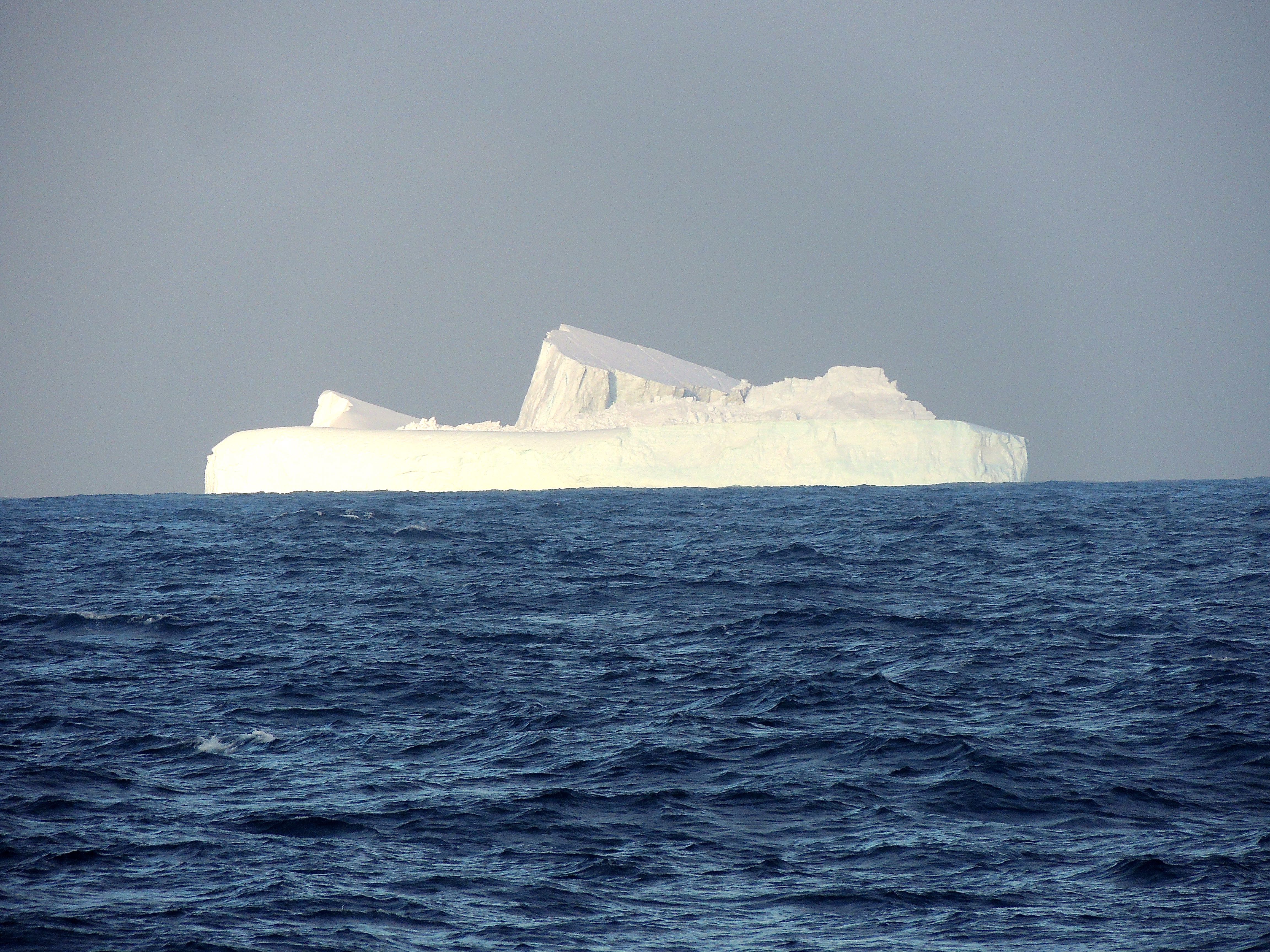 Tabular Iceberg - Photo by William Young
Tabular Iceberg - Photo by William Young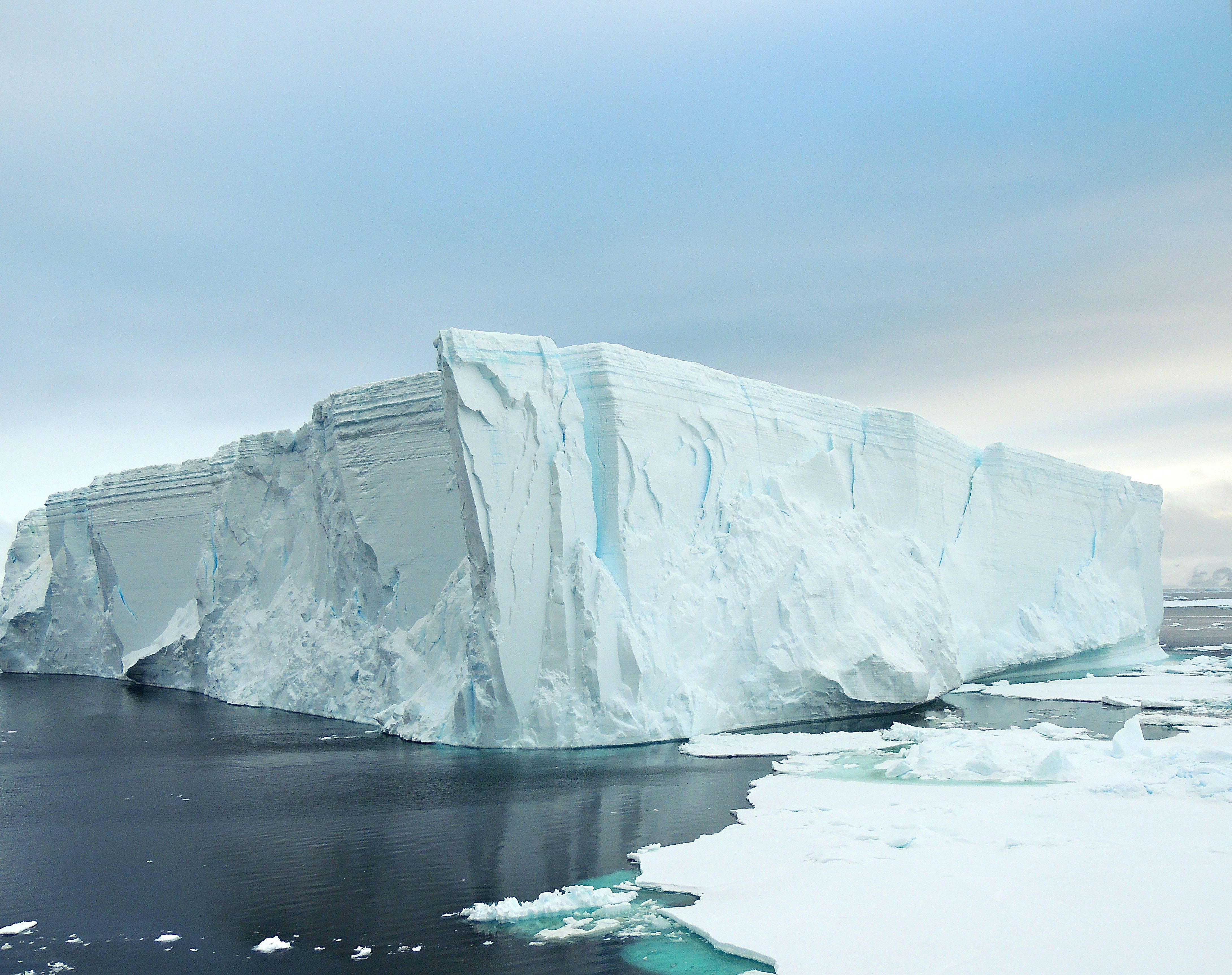 Tabular Iceberg - Photo by William Young
Tabular Iceberg - Photo by William Young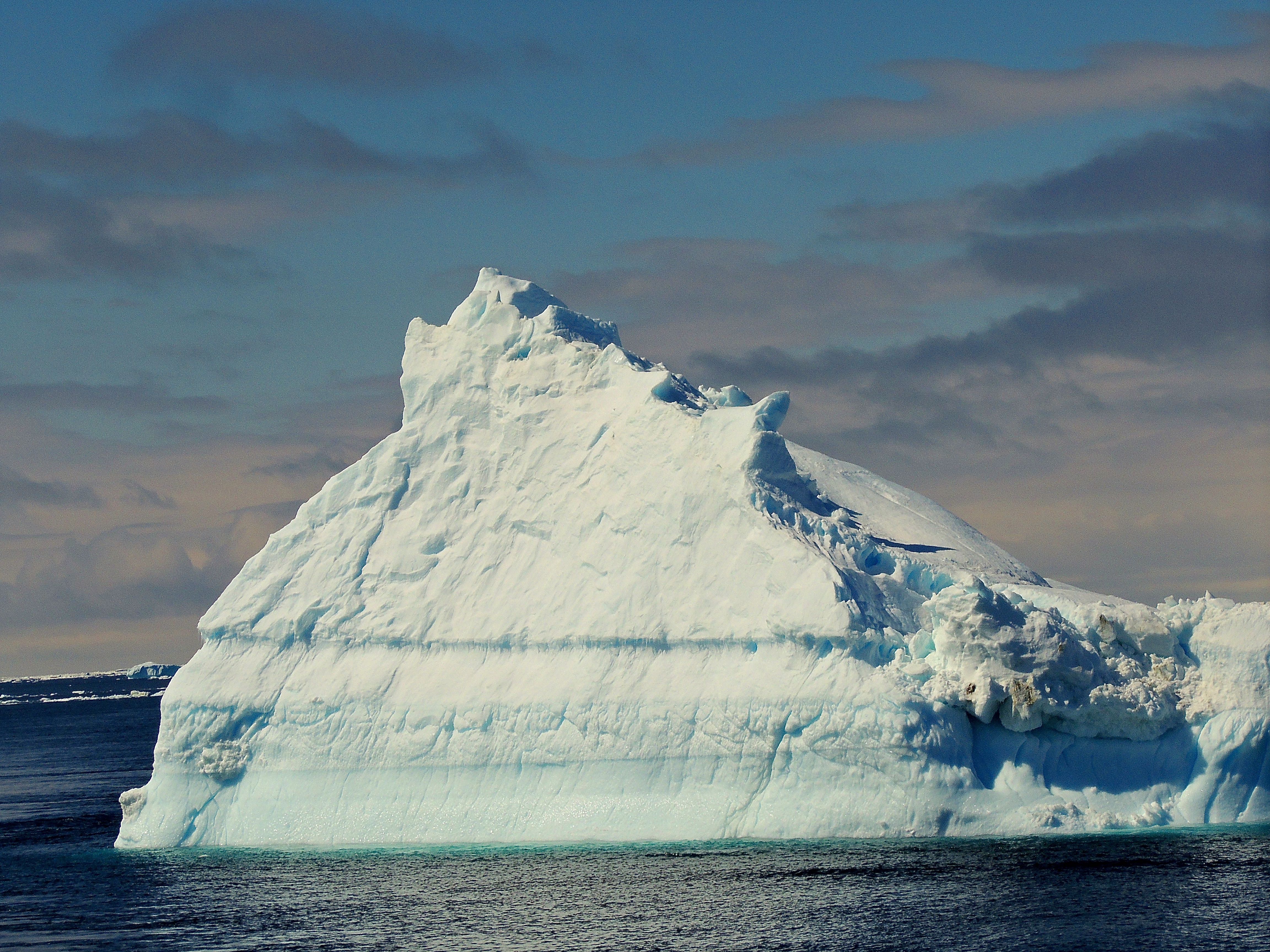 Tabular Iceberg - Photo by William Young
Tabular Iceberg - Photo by William YoungAntarctica is mostly a monochrome world. Most of the birds are combinations of white and black, with very few other colors. Conrad often contributed drawings of birds and mammals to the daily itineraries that were slipped under the doors of our cabins each night and for the menus in the dining room. The birds and mammals he drew looked very realistic in black-and-white. (He wondered if people would eat less the day he drew an elephant seal for the menu.) Standing out in the monochrome environment were the cracks in the icebergs, which ranged from dark blue to aquamarine. White light is composed of all the colors of the spectrum. As light travels through water or ice, the colors at the red end of the spectrum dissipate, making those at the blue end more prominent. The sections of the iceberg just below the surface of the clear water also looked greenish-blue. Some icebergs in the water had flat sections with a pool of blue-green water. Not all of the icebergs were large. There were small chunks of ice floating in the water. The captain of the ship had to steer around these chunks, and once we had to reverse the ship to avoid an area where the ice was too thick to get through. The zodiac drivers also had to avoid floating ice as much as possible. I rarely wore sunglasses during the trip, but on the calm day in the Weddell Sea, the glare off the water and the ice was so intense that I had to put them on.
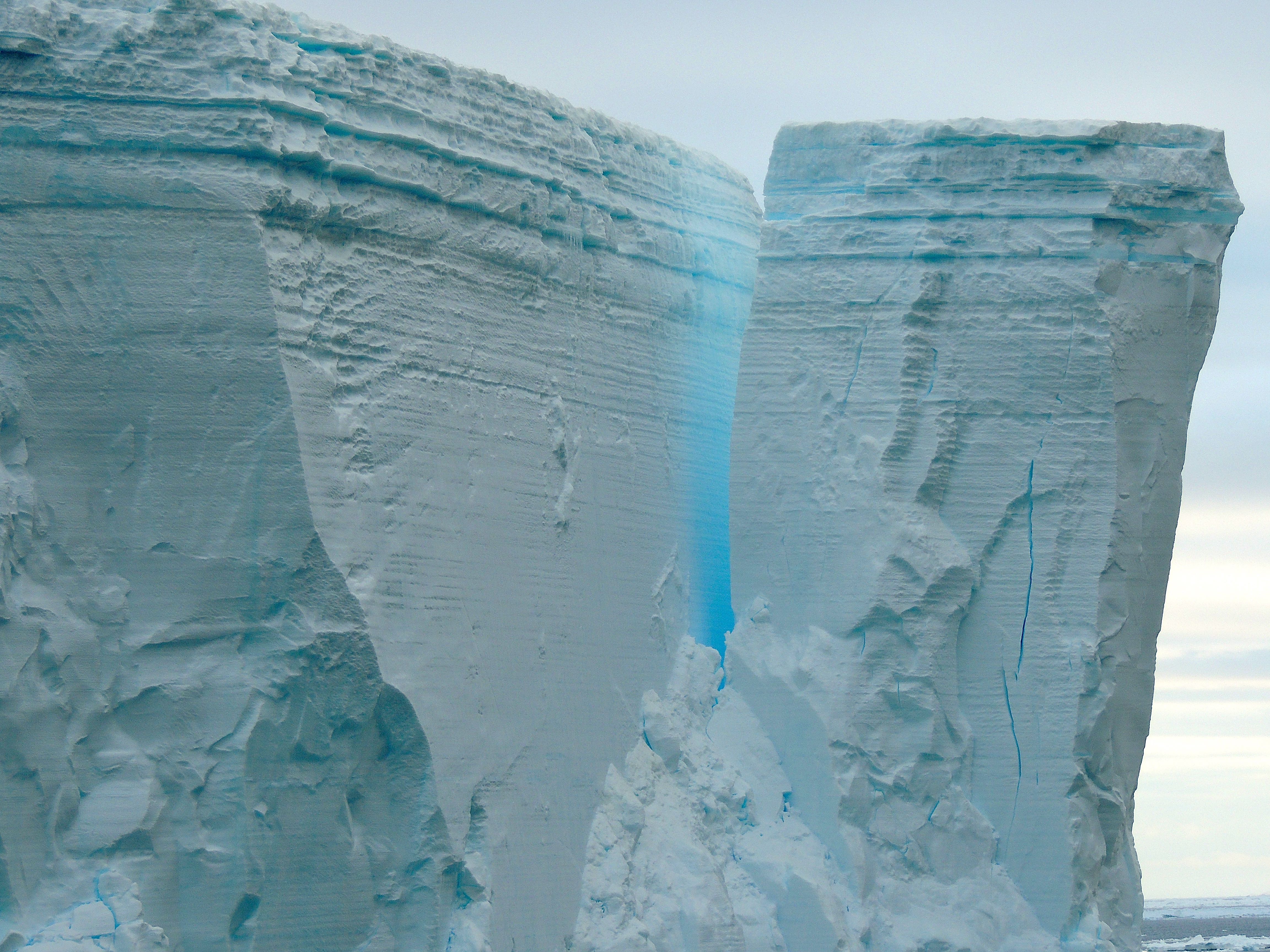 Blue Light in Iceberg - Photo by William Young
Blue Light in Iceberg - Photo by William Young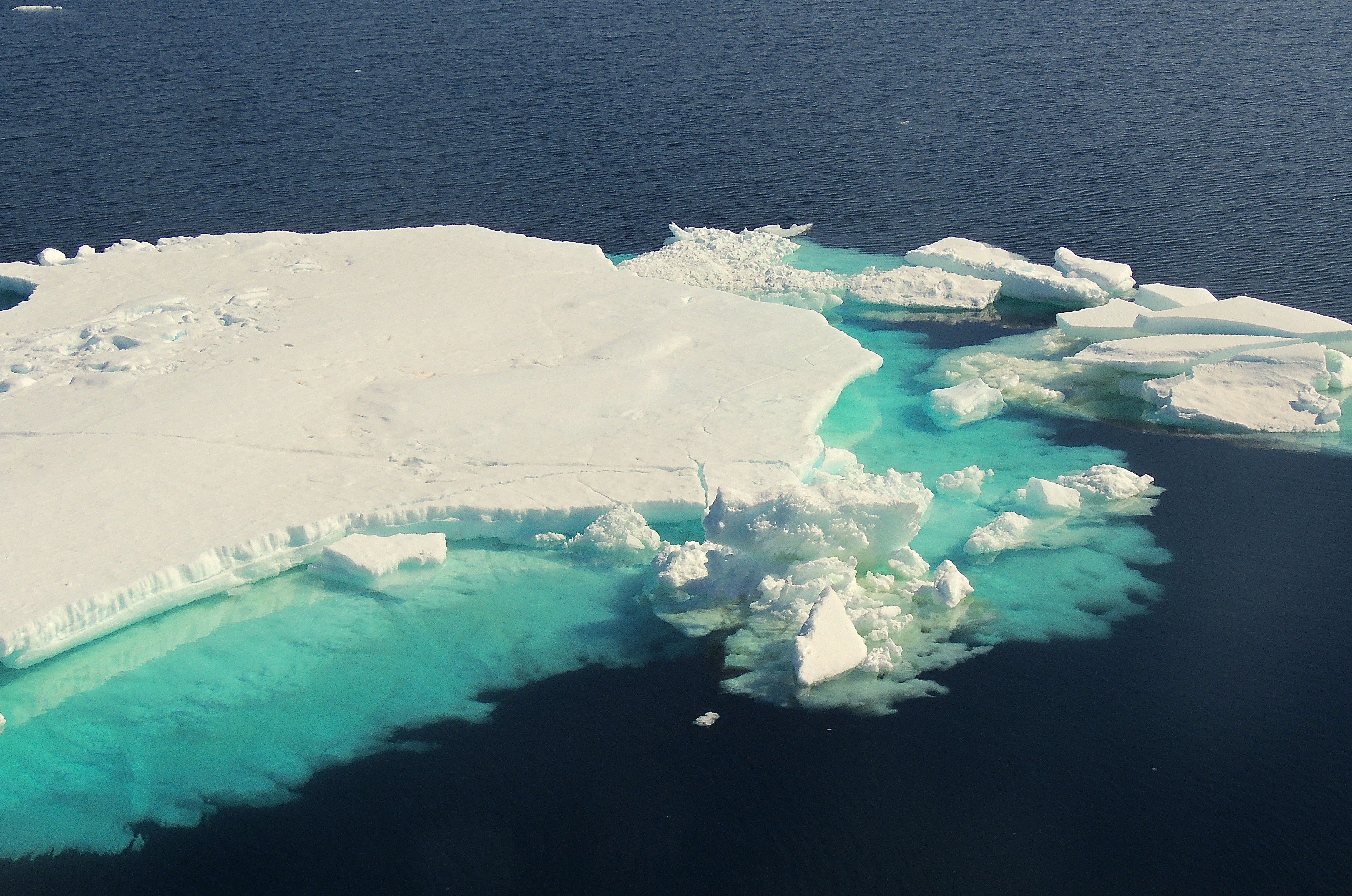 Aquamarine Light in Iceberg - Photo by William Young
Aquamarine Light in Iceberg - Photo by William Young Iceberg - Photo by William Young
Iceberg - Photo by William Young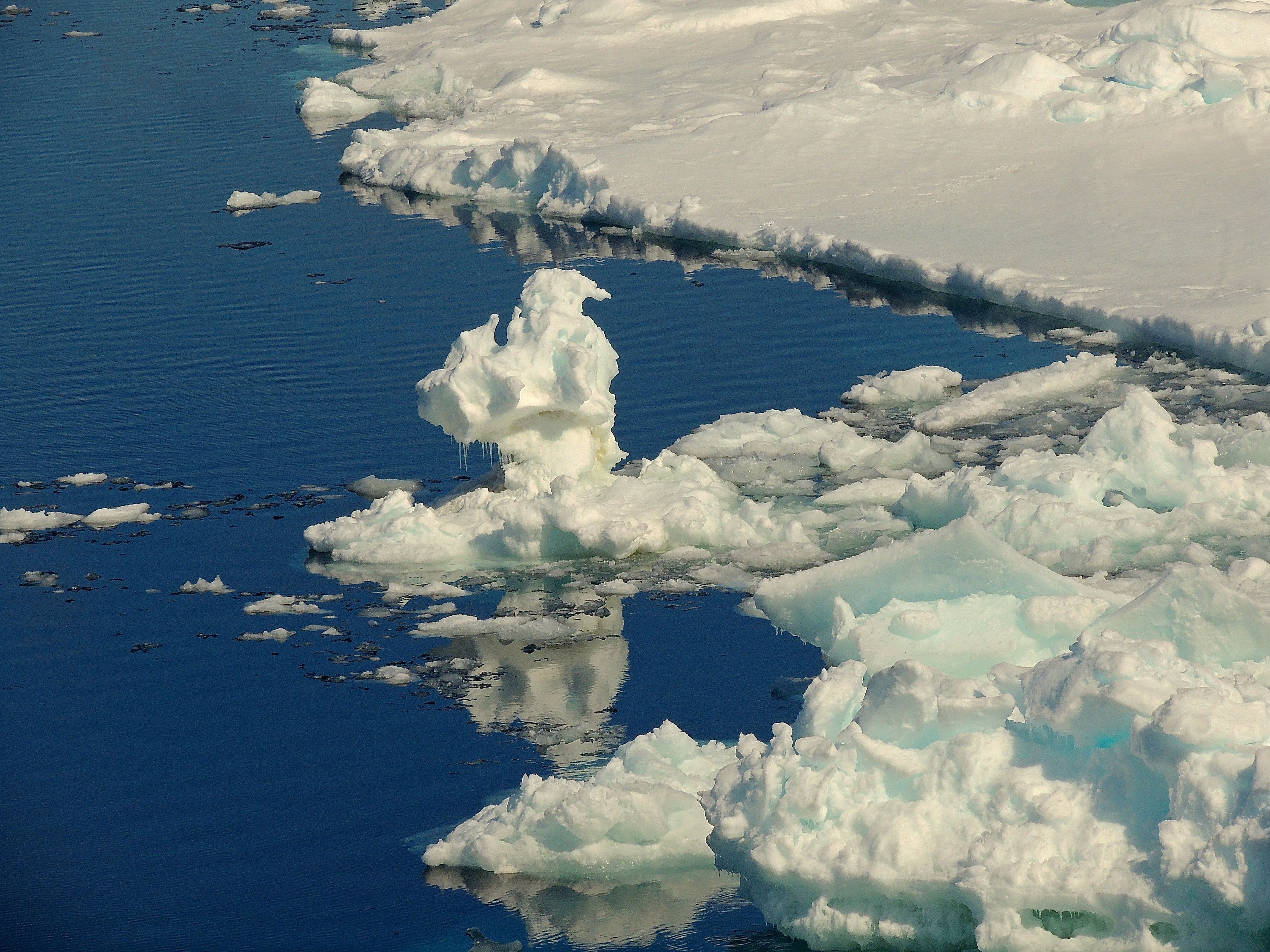 Iceberg - Photo by William Young
Iceberg - Photo by William Young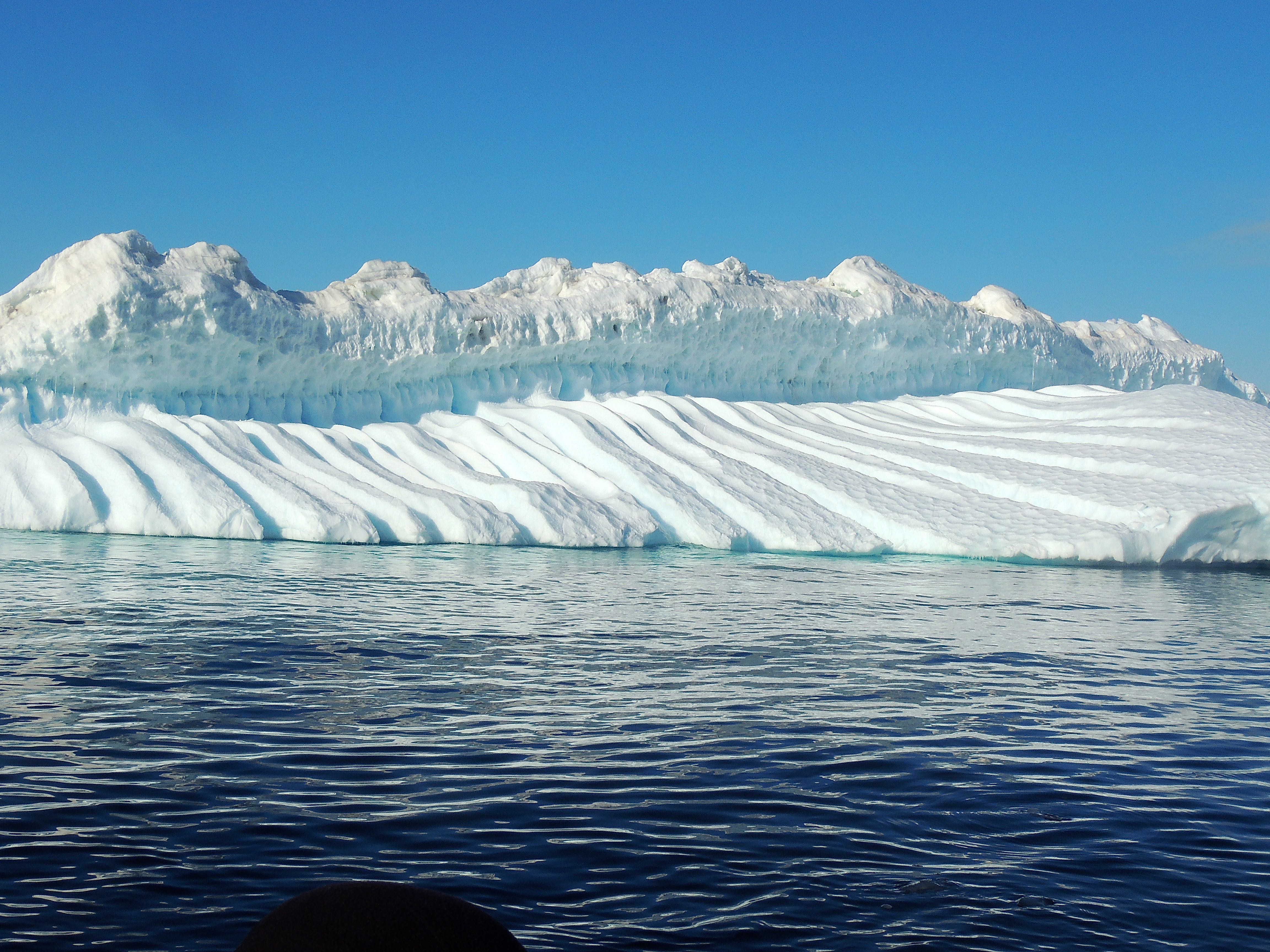 Iceberg - Photo by William Young
Iceberg - Photo by William YoungAntarctica does not have any indigenous people, but if it did, I imagine they would have a wonderful storytelling tradition. The shapes of ice and clouds would have made their imaginations run wild. I saw one cloud that looked like a huge rubber duck in the sky. A piece of ice was shaped like a swan. One iceberg revealed the profile of a human face. They probably also have incredible skies at night during the long Antarctic winter. Had I not been looking for birds while I was on deck, I could have easily kept myself amused by looking at all of the varied shapes and textures. In addition, the changing weather conditions meant that the ice rarely looked the same from day to day, and often, from hour to hour. One night, the light was beautiful toward the back of the ship, while the sky was cloudy and ominous in the direction we were headed. The light was generally best in the early evening, and the icebergs seemed to light up if the sun was low in the sky.
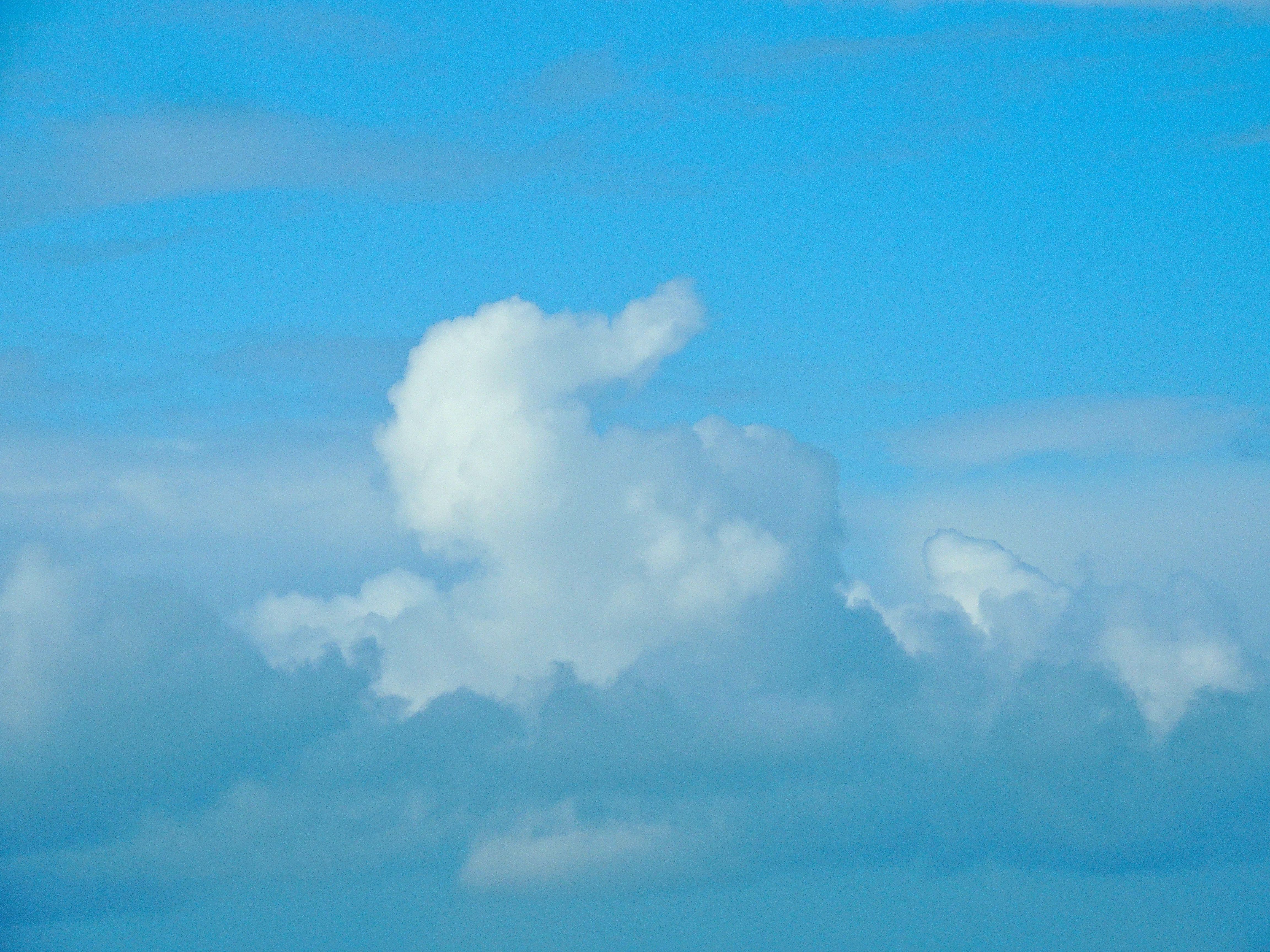 Duck Cloud - Photo by William Young
Duck Cloud - Photo by William Young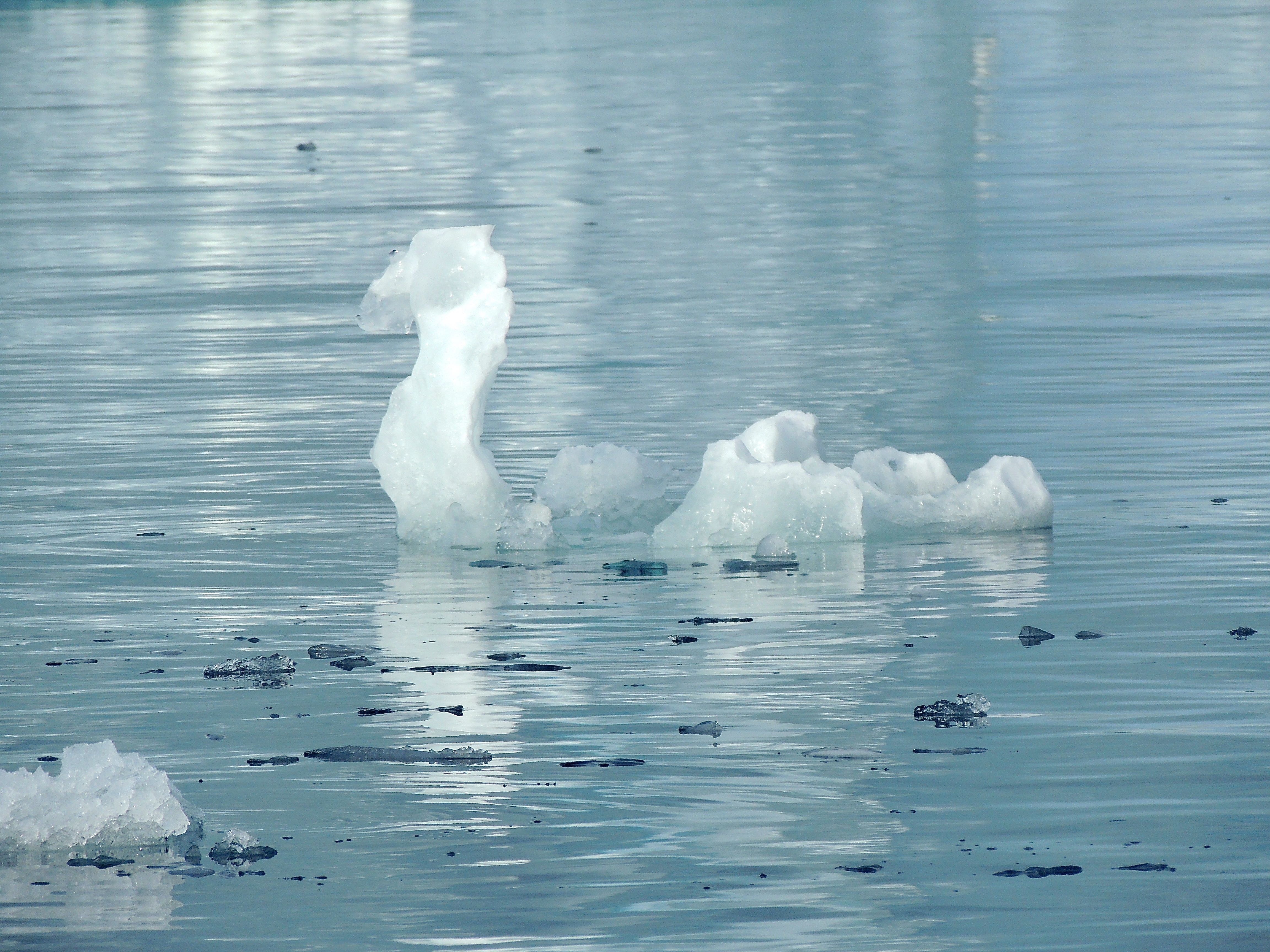 Ice Swan - Photo by William Young
Ice Swan - Photo by William Young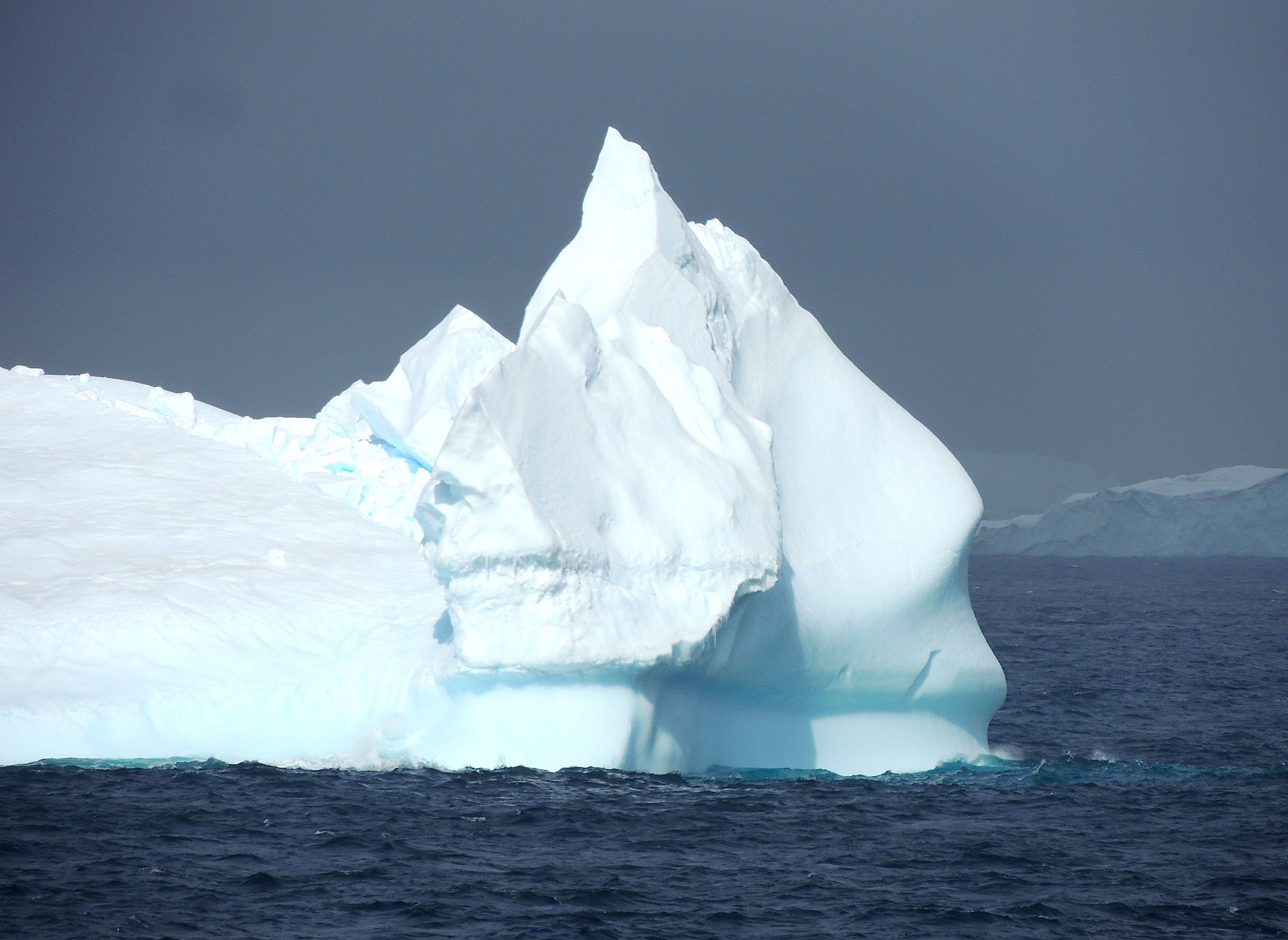 Face in Iceberg - Photo by William Young
Face in Iceberg - Photo by William YoungParticipants who go on trips with tour groups are often asked to rank their favorite bird sightings. The group usually votes for sought-after or special birds that were seen. The King and Adelie Penguins were my favorite birds, even though we saw more of them than any other bird species. The most rewarding aspect of the trip for me was being able to become more acquainted with penguins. I had seen penguins in Australia and the Galapagos, but not in such incredible numbers and at such close range. They are now one of my favorite families of birds. Also, the sheer beauty of the ice in Antarctica was magnificent. There is no way to adequately capture the richness of shapes and textures in words or photographs.
I am not sure if I will ever return to Antarctica. Travelling to the Falklands, South Georgia, and Antarctica is not easy. Even with Zegrahm feeding us well and looking out for our safety and welfare, the area is still difficult and forbidding to visit. This was by no means a pleasure cruise. I was not sure what to expect before the expedition, and parts of it turned out to be much more difficult than I anticipated. The Antarctic is one of the areas that is already being greatly affected by climate change. I wanted to see it while it was still a special place to visit. This trip for me was life changing. and I am deeply grateful that I had the opportunity to spend time with so many wonderful people while having such a remarkable experience.
SIGHTINGS LIST - ANTARCTICA-SOUTH GEORGIA-FALKLANDS-USHUAIA
BIRDS
Anatidae
Black-necked Swan
Coscoroba Swan
Upland Goose
Kelp Goose
Ashy-headed Goose
Flying Steamer-Duck
Flightless Steamer-Duck
Falkland Steamer-Duck (E)
Crested Duck
Red Shoveler
South Georgia Pintail
Yellow-billed Teal
Podicipedidae
Great Grebe
Spheniscidae
King Penguin
Adelie Penguin
Gentoo Penguin
Chinstrap Penguin
Magellanic Penguin
Macaroni Penguin
Southern Rockhopper Penguin
Diomedeidae
Gray-headed Albatross
Black-browed Albatross
Light-mantled Albatross
Southern Royal Albatross
Northern Royal Albatross
Wandering Albatross
Procellariidae
Southern Giant-Petrel
Northern Giant-Petrel
Southern Fulmar
Antarctic Petrel
Cape Petrel
Snow Petrel
Kerguelen Petrel
Soft-plumaged Petrel
Blue Petrel
Fairy Prion
Antarctic (Dove) Prion
Slender-billed Prion
White-chinned Petrel
Great Shearwater
Sooty Shearwater
Pelecanoididae
Common Diving-Petrel
Magellanic Diving-Petrel
Hydrobatidae
Wilson's Storm-Petrel
Gray-backed Storm-Petrel
Black-bellied Storm-Petrel
Phalacrocoracidae
Magellanic (Rock) Cormorant
Imperial Cormorant
South Georgia Shag
Antarctic Shag (E)
Ardeidae
Black-crowned Night-Heron
Cathartidae
Turkey Vulture
Andean Condor
Accipitridae
Black-chested Buzzard-Eagle
Chionidae
Snowy Sheathbill
Haematopodidae
Blackish Oystercatcher
Magellanic Oystercatcher
Charadriidae
Southern Lapwing
Stercorariidae
Chilean Skua
South Polar Skua
Brown Skua
Subantarctic Skua
Laridae
Brown-hooded Gull
Dolphin Gull
Kelp Gull
South American Tern
Antarctic Tern
Columbidae
Rock Pigeon
Eared Dove
Falconidae
White-throated Caracara
Striated Caracara
Southern Caracara
Chimango Caracara
Alcedinidae
Ringed Kingfisher
Psittacidae
Austral Parakeet (H)
Furnariidae
Blackish Cinclodes
Gray-flanked Cinclodes
Dark-bellied Cinclodes
Thorn-tailed Rayadito
Tyrannidae
Tufted Tit-Tyrant (H)
White-crested Elaenia
Austral Negrito
Dark-faced Ground-Tyrant
Fire-eyed Diucon
Hirundinidae
Chilean Swallow
Troglodytidae
House Wren
Turdidae
Austral Thrush
Motacillidae
South Georgia Pipit (E)
Thraupidae
Patagonian Sierra-Finch
Emberizidae
Rufous-collared Sparrow
Icteridae
Long-tailed Meadowlark
Fringillidae
Black-chinned Siskin
Passeridae
House Sparrow
MAMMALS
Otaridae
South American Fur Seal
Antarctic Fur Seal
South American Sea Lion
Phocidae
Leopard Seal
Weddell Seal
Crabeater Seal
Southern Elephant Seal
Balaenidae
Southern Right Whale
Balaenopteridae
Minke Whale
Antarctic Minke Whale
Sei Whale
Fin Whale
Humpback Whale
Right Whale
Marine Dolphins
Peale's Dolphin
Hourglass Dolphin
Orca (Killer Whale)
BIRD SIGHTING LIST - BUENOS AIRES
BIRDS
Anseriformes
Southern Screamer
Anatidae
Black-necked Swan
Coscoroba Swan
Ringed Teal
Brazilian Teal
Silver Teal
Podicipedidae
White-tufted Grebe
Phalacrocoracidae
Neotropic Cormorant
Ciconiidae
Maguari Stork
Wood Stork
Ardeidae
Rufescent Tiger-Heron
Cocoi Heron
Great Egret
Snowy Egret
Cattle Egret
Striated Heron
Whistling Heron
Threskiornithidae
White-faced Ibis
Bare-faced Ibis
Roseate Spoonbill
Cathartidae
Black Vulture
Accipitridae
Snail Kite
Long-winged Harrier
Roadside Hawk
Rallidae
Giant Wood Rail
Gray-necked Wood Rail
Common Gallinule
Red-gartered Coot
Aramidae
Limpkin
Recurvirostridae
Black-necked Stilt
Charadriidae
Southern Lapwing
Jacanidae
Wattled Jacana
Columbidae
Rock Pigeon
Picazuro Pigeon
Picui Ground-Dove
White-tipped Dove
Eared Dove
Cuculidae
Dark-billed Cuckoo
Guira Cuckoo
Caprimulgidae
Scissor-tailed Nightjar
Trochilidae
Glittering-bellied Hummingbird
Gilded Hummingbird
Alcedinidae
Green Kingfisher
Picadae
Checkered Woodpecker
Green-barred Woodpecker
Falconidae
Southern Caracara
Chimango Caracara
Psittacidae
Monk Parakeet
Nanday Parakeet
Thamnophilidae
Rufous-capped Antshrike
Furnariidae
Narrow-billed Woodcreeper
Rufous Hornero
Curve-billed Reedhaunter
Freckle-breasted Thornbird
Straight-billed Reedhaunter (H)
Sooty-fronted Spinetail
Tyrannidae
Small-billed Elaenia
Sooty Tyrannulet
White-crested Tyrannulet
Bran-colored Flycatcher
Blue-billed Black Tyrant
Spectacled Tyrant
Black-backed Water-Tyrant
Cattle Tyrant
Lesser Kiskadee
Great Kiskadee
Streaked Flycatcher
Tropical Kingbird
Fork-tailed Flycatcher
Tityridae
Green-backed Becard
White-winged Becard
Vireonidae
Red-eyed Vireo
Hirundinidae
Blue-and-white Swallow
Gray-breasted Martin
Southern Martin
Brown-chested Martin
White-rumped Swallow
Troglodytidae
House Wren
Polioptilidae
Masked Gnatcatcher
Turdidae
Rufous-bellied Thrush
Creamy-bellied Thrush
Mimidae
Chalk-browed Mockingbird
Sturnidae
European Starling
Parulidae
Masked Yellowthroat
Thraupidae
Red-crested Cardinal
Yellow-billed Cardinal
DIademed Tanager
Sayaca Tanager
Long-tailed Reed Finch
Black-and-rufous Warbling-Finch
Saffron Finch
Great Pampa Finch
Double-collared Seedeater
Golden-billed Saltator
Emberizidae
Rufous-collared Sparrow
Cardinalidae
Hepatic Tanager
Icteridae
Scarlet-headed Blackbird
Yellow-winged Blackbird
Grayish Baywing
Screaming Cowbird
Shiny Cowbird
Solitary Black Cacique
Fringillidae
Hooded Siskin
Passeridae
House Sparrow